banking crisis
description: a situation where a significant number of banks or financial institutions are in danger of failing
411 results
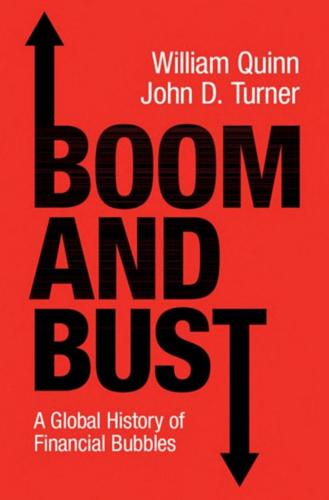
Boom and Bust: A Global History of Financial Bubbles
by
William Quinn
and
John D. Turner
Published 5 Aug 2020
Goldgar, Tulipmania. 41. Garber, ‘Tulipmania’; Garber, Famous First Bubbles. 42. Thompson, ‘The tulipmania’. 43. Mackay, Memoirs of Extraordinary Popular Delusions, 2nd edition. 44. Goldgar, Tulipmania, p. 6. 45. Goldgar, Tulipmania, pp. 6–7. 46. Englund, ‘The Swedish banking crisis’; Moe, Solheim and Vale, ‘The Norwegian banking crisis’; Nyberg, ‘The Finnish banking crisis’; Radlet et al., ‘The East Asian financial crisis’. 226 NOTES TO PAGES 14–23 47. Radlet et al., ‘The East Asian financial crisis’; Mishkin, ‘Lessons from the Asian crisis’. 48. Radlet et al., ‘The East Asian financial crisis’, 38; Aumeboonsuke and Tangjitprom, ‘The performance of newly issued stocks in Thailand’. 49.
…
Notes: The capital ratio equals the sum of capital plus shareholder reserves plus profit and loss reserves divided by the sum of total deposits and note issue. The liquidity ratio equals the sum of bank holdings of coins and bank notes divided by total assets. 58. Hickson and Turner, ‘Free banking gone awry’, 158. 59. Ellis, ‘The Australian banking crisis’; Cork, ‘The late Australian banking crisis’; Cannon, The Land Boomers, p. 109; Boehm, Prosperity and Depression, pp. 219, 252; Wood, The Commercial Bank of Australia, p. 143. 60. Boehm, Prosperity and Depression, pp. 216–17. 61. Butlin, Investment in Australian Economic Development, p. 264. 62. Boehm, Prosperity and Depression, p. 215. 63.
…
LV, 1893, p. 902. Notably, among developed economies 100 years later, gambling expenditure per capita was highest in Australia – see Public Inquiry into the Australian Gambling Industry. 65. Cork, ‘The late Australian banking crisis’, 178. 66. Australasian Insurance and Banking Record, Vol. XIII, 1889, pp. 28–9; Cannon, The Land Boomers, p. 97. 67. Cork, ‘The late Australian banking crisis’, 179. See also Boehm, Prosperity and Depression, p. 224. 68. Australasian Insurance and Banking Record, Vol. XII, 1888, p. 351; Vol. XIII, 1889, pp. 28–9, 314. 69. House of Were, The History of J. B. Were and Son, pp. 125–6. 70.
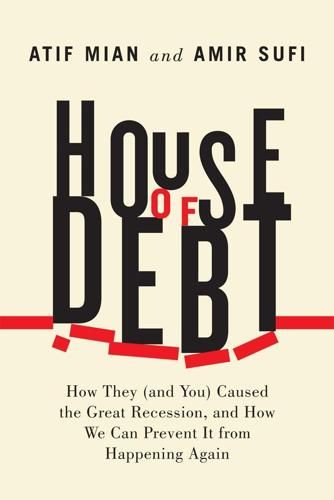
House of Debt: How They (And You) Caused the Great Recession, and How We Can Prevent It From Happening Again
by
Atif Mian
and
Amir Sufi
Published 11 May 2014
Which aspect of a financial crisis is more important in determining the severity of a recession: the run-up in private-debt burdens or the banking crisis? Research by Oscar Jorda, Moritz Schularick, and Alan Taylor helps answer this question.19 They looked at over two hundred recessions in fourteen advanced countries between 1870 and 2008. They begin by confirming the basic Reinhart and Rogoff pattern: Banking-crisis recessions are much more severe than normal recessions. But Jorda, Schularick, and Taylor also find that banking-crisis recessions are preceded by a much larger increase in private debt than other recessions. In fact, the expansion in debt is five times as large before a banking-crisis recession. Also, banking-crisis recessions with low levels of private debt are similar to normal recessions.
…
Also, banking-crisis recessions with low levels of private debt are similar to normal recessions. So, without elevated levels of debt, banking-crisis recessions are unexceptional. They also demonstrate that normal recessions with high private debt are more severe than other normal recessions. Even if there is no banking crisis, elevated levels of private debt make recessions worse. However, they show that the worst recessions include both high private debt and a banking crisis.20 The conclusion drawn by Jorda, Schularick, and Taylor from their analysis of a huge sample of recessions is direct: We document, to our knowledge for the first time, that throughout a century or more of modern economic history in advanced countries a close relationship has existed between the build-up of credit during an expansion and the severity of the subsequent recession. . . .
…
While spending on other durable goods did not fall quite as early as residential investment, it still fell before the heart of the banking crisis. Compared to 2006, furniture purchases in 2007 were down 1.4 percent, and expenditures at home-improvement stores were down 4 percent. Spending on appliances was still up 2 percent in 2007, but the growth was significantly lower than the 7 percent growth in 2005 and 2006. Looking within the year of 2008, however, provides important insights. The heart of the banking crisis began in September 2008, when both Lehman Brothers and AIG collapsed. So by focusing on January through August, we can estimate the pre-banking-crisis spending decline in 2008. As a benchmark, we want to compare spending in January through August 2008 to that in January through August 2007, because retail sales are seasonal.
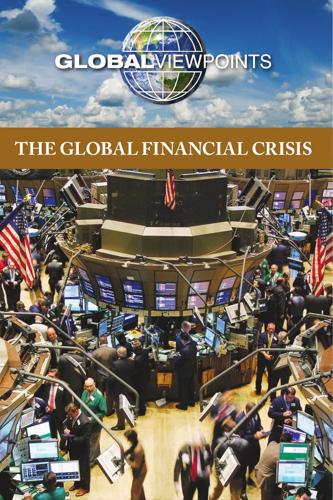
Global Financial Crisis
by
Noah Berlatsky
Published 19 Feb 2010
3. According to Mandel, what are the three unsatisfactory options for solving the financial crisis? Michael Mandel, “A Simple Guide to the Banking Crisis,” Business Week, March 12, 2009. Copyright © 2009 by McGraw-Hill, Inc. Reproduced by permission. 172 Solutions to the Global Financial Crisis I don’t know why I called this a “a simple guide to the banking crisis.” Really, it’s the longest post I’ve written here. But here it is: Why is the banking crisis so hard to solve? We stood and watched while Hank Paulson and Ben Bernanke fumbled with their response in the fall. Now we are being treated to the distressing spectacle of Tim Geithner struggling as well to articulate a clear policy for dealing with zombie banks.
…
Now we are being treated to the distressing spectacle of Tim Geithner struggling as well to articulate a clear policy for dealing with zombie banks. How come these smart and powerful men can’t get a handle on the problem? I want to lay out 5 simple propositions which will help you understand why the banking crisis is so intractable. Then I will explain what happens next. Proposition 1: The boom in the U.S. was funded almost totally by foreign money. This is absolutely the key point for understanding the current banking crisis. Historically, households have been the major source of capital for the U.S. economy. That’s certainly what I was taught in economics graduate school. The boom in the U.S. was funded almost totally by foreign money.
…
Banks Can Survive the Crisis Without Nationalization But this is as far [as] Sweden’s experience of bank nationalization goes. And it is hardly a bed-time story for friends of bank nationalization today in the US or the UK [United Kingdom]. So—what are the lessons from the Swedish banking crisis for crisis responses today? One key element of the response to the banking crisis was to avoid nationalization. First, all the big banks had big credit losses, but they survived without being taken over by the government. Nor did they become zombie banks [banks which are bust, but which continue to operate solely because of government guarantees or support], the profitability of these banks returned to high levels only a few years after the crisis started.
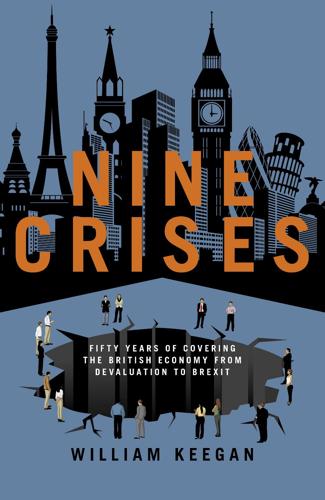
Nine Crises: Fifty Years of Covering the British Economy From Devaluation to Brexit
by
William Keegan
Published 24 Jan 2019
CRISIS 7 2007–09: FINANCIAL CRASH When I was on secondment to the Bank of England in 1976–77, the morale of Bank staff was still recovering from the shock of two events in the financial markets, one of which had occurred only a few weeks before I joined. This latter, in March 1976, was what was widely considered its inept handling of an interest rate reduction that briefly gave rise to an impression that it did not care about a fall in pound. The other was the ‘secondary banking crisis’ of 1973–75. The March 1976 episode figures in the chapter on the IMF crisis of that autumn. The secondary banking crisis, although it preceded the financial crisis of 2007–09 by several decades, nevertheless had a lasting impact on both the Treasury’s and the Bank’s attitudes towards financial supervision. Under a monetary regime known as competition and credit control, the Heath government and the Bank had bowed to the burgeoning movement in favour of giving freer rein to market forces, allowing greater competition for borrowers by banks and building societies – in other words, breaking up what was seen as a cartel.
…
The episode has been extensively covered in some excellent accounts, such as Margaret Reid’s The Secondary Banking Crisis. In a nutshell, the policy encouraged a proliferation of dubious and risky lending institutions, which ended in tears – almost including the collapse of the mighty NatWest bank – and required a major rescue operation by the Bank of England. I found when I worked at the Bank that banking supervision was considered a dangerous career move. The feeling, encouraged by the fallout from the secondary banking crisis, was that banking supervisors were ‘on a hiding to nothing’. This view was reinforced in the 1980s by the failure of Johnson Matthey Bankers (JMB) in 1984 and of the corrupt Bank of Credit and Commerce International (BCCI) in July 1991.
…
But it is an open question whether they were the truest cause of the banking crisis that began in the United States and spread further afield – though not, interestingly, to nearby Canada. I recall the first time I met Mark Carney, who subsequently became Governor of the Bank of England. It was in January 2009. We were the only occupants of a funicular lift, bringing us down to the main street in Davos – from, it has to be admitted, rather a good drinks party hosted by Barclays Bank. ‘Hi!’ said the other occupant. ‘I’m Mark Carney, Governor of the Bank of Canada.’ After I had duly introduced myself, he said, ‘We didn’t have a banking crisis in Canada.’ Canada’s experience was the exception to the rule that, in a globalised financial world, with sub-prime ‘paper’ turning up on bank balance sheets all over Europe, it was difficult to avoid being tainted by the crisis.
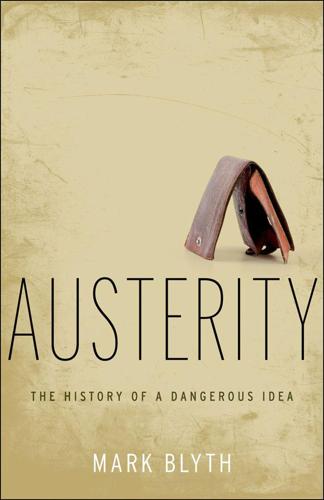
Austerity: The History of a Dangerous Idea
by
Mark Blyth
Published 24 Apr 2013
By the time the book is published this may no longer be the case, but in the meantime, these ideas will have wrought tremendous damage. Part of the reason for this is, as we shall see, ideological. But part of the reason these ideas are so powerful is very material. It has to do with how a “too big too fail” banking crisis in the United States became a “too big to bail” banking crisis in Europe, and how this drives us all down the road to austerity. We are, at best, still saving the banks that we started saving in 2008, especially in Europe. This book allowed me to work out why such bad ideas remain the governing ideas, for both ideological and material reasons.
…
The cost of bailing, recapitalizing, and otherwise saving the global banking system has been, depending on, as we shall see later, how you count it, between 3 and 13 trillion dollars.9 Most of that has ended up on the balance sheets of governments as they absorb the costs of the bust, which is why we mistakenly call this a sovereign debt crisis when in fact it is a transmuted and well-camouflaged banking crisis. As we shall see in chapter 2, the US banking system, the origin of the global banking crisis, was deemed by the US government to be “too big to fail” and therefore wasn’t allowed to fail when it got into trouble in 2007–2008. The price of not allowing it to fail was to turn the Federal Reserve into a “bad bank” (chock-full of bad assets that were swapped for cash to keep lending going) while the federal government blew a hole in its finances as it plugged the gaps caused by lost revenues from the crash with deficit spending and debt issuance.
…
There never was any general risk of the whole world turning into Greece. There is no risk of the United States ever going bust anytime soon. There is no crisis of sovereign debt caused by sovereigns’ spending unless you take account of actual spending and continuing liabilities caused by the rupture of national banking systems. What begins as a banking crisis ends with a banking crisis, even if it goes through the states’ accounts. But there is a politics of making it appear to be the states’ fault such that those who made the bust don’t have to pay for it. Austerity is not just the price of saving the banks. It’s the price that the banks want someone else to pay.
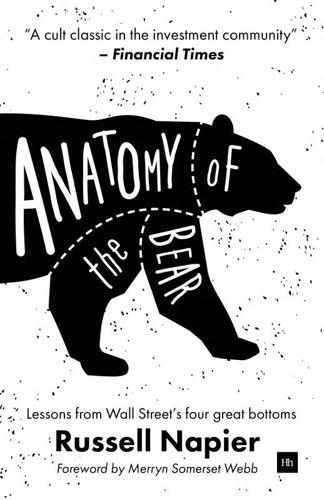
Anatomy of the Bear: Lessons From Wall Street's Four Great Bottoms
by
Russell Napier
Published 18 Jan 2016
The pace of decline was considerably more rapid in factory payrolls, the wholesale price index and department store sales. In the overall economy, the pace accelerated markedly in the second half of 1930, influenced by the first banking crisis, which erupted in October of that year. The first half of 1931 saw the only marginal recovery in the economy during the 1929-32 contraction as GNP and real department-store sales both increased. This recovery was thrown off track by the second banking crisis, apparent domestically in March 1931 and intensified by the banking crisis in Europe, which hit the headlines in early May. In terms of the course of the recession, as measured by GNP in constant dollars, only 35% of what was to be the total contraction had occurred by the end of June 1931.
…
Prices of corporate bonds had been rising slowly since the stock market crash of October 1929. However, with the onset of the banking crisis of October 1930, prices began to decline. While slow at first, this was the beginning of a new price trend that would not run its course until the summer of 1932. It exacerbated problems for bankers going in to 1931 as they were forced to mark these liquid investments to market. There were some signs of economic stability in early 1931, but this resulted in only a modest rally in the equity market. During the banking crisis, the DJIA reached a low of 157.5 on 16 December 1930. By 24 February 1931, it had risen 23% and was just 2.2% below the low of November 1929.
…
Even at this stage, the magnitude of the decline in the index was only marginally in excess of the 1907 and 1919-21 bear markets. It was now that the second bank crisis hit. An investor committing funds to equities on 24 February 1931, almost 16 months after the October 1929 crash, would witness a 79% drop in the DJIA in the next 17 months. It was this period of decline that marked out the bear market as clearly different from anything before. Prior to the first banking crisis, long- and short-term interest rates had been declining, as had yields on Baa-rated bonds. However, a yield spread then began to open, based on the quality of corporate credits.
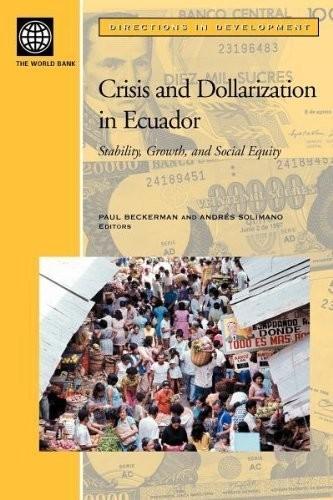
Crisis and Dollarization in Ecuador: Stability, Growth, and Social Equity
by
Paul Ely Beckerman
and
Andrés Solimano
Published 30 Apr 2002
However, as the commercial banking system was in such a fragile condition in Ecuador at the time of dollarization, a special contingency fund for banks in distress was created following official dollarization. From this perspective, this fund can be viewed something like a lender of last resort in the event of a banking crisis. Moreover, as has been the case in history, for example in the United States during episodes of banking crisis before 1913, the year the Federal Reserve System was created, the resolution of banking crisis or liquidity shocks was arranged by private financiers such as J. P. Morgan. In other cases, the resources for performing the functions of lender of last resort can come from the fiscal budget or from foreign borrowing.
…
Most of the ingredients of high inflation and acute monetary instability were present: (a) a flight from national money and de-facto dollarization2 as nationals and foreigners in Ecuador lost all confidence in the capacity of the sucre to serve its store-of-value function, (b) large fiscal deficits, (c) a sharp contraction in real economic activity, and (d) a severe banking crisis.3 The increasingly cornered government, led by President Jamil Mahuad, a highly educated and intellectually sophisticated socialdemocrat, could not gather congressional support for passing crucial tax legislation and other measures to stabilize the economy. This situation, combined with the near paralysis of the international financial institutions based in Washington, helped bring about an economic meltdown manifested in very high inflation, a banking crisis, economic depression, and social disarray during most of 1999.
…
Dollars at 1998 Prices), 1990–2000 ..............................39 2.9 Ecuador: Nonfinancial Public-Sector Overall and Primary Surplus (US$ Million at 1998 Prices and Exchange Rate), 1990–2000. ...............................................................................................42 2.10 Ecuador: Onshore Commercial-Bank Deposits (US$ Million) .......48 2.11 Ecuador: Onshore Commercial-Bank Loans Performing Normally and in Arrears ......................................................................49 2.12 Ecuador: Indicators of Macroeconomic Imbalance, 1988–2000 ......52 2.13 Ecuador: Consumer Prices, 1995–2000 ..............................................55 3.1 Ecuador: Monthly Trade-weighted Exchange-rate Competitiveness, December 1994–December 2001...............................................103 3.2 Ecuador: Monthly Increases in Consumer Prices, January 1999–December 2001............................................................................103 3.3 Ecuador: Consumer Prices and Weighted Trading-partner Prices at the Current Exchange Rate, December 1997–December 2001 ......................................................104 3.4 Ecuador: Quarterly Real GDP (1998 average =100), 1997.4–2001.4.........................................................................................109 CONTENTS 3.5 vii Ecuador: Quarterly Nonfinancial Public-sector Revenue (US$ million), 1998.2–2001.4 ..............................................................110 3.6 Ecuador: Quarterly Nonfinancial Public-sector Expenditure (US$ million), 1998.2–2001.4 ...............................................................111 3.7 Ecuador: Quarterly Performance of the Main Components of the Current Account of the Balance of Payments (US$ million), 1998.1–2001.4 .........................................................................................113 3.8 Ecuador: Monthly Merchandise Trade and Real-effective Exchange Rate (December 1996–October 2001)...............................117 4.1 Ecuador: Real Wage and Urban Poverty Trends (index, 1990 = 100) ..............................................................................134 4.2 Malnutrition Rates in Latin America ...............................................139 4.3 Malnutrition in Ecuador: Stunting (%) by Consumption Quintiles, 1998 and 1999 ....................................................................139 4.4 Malnutrition in Ecuador: Stunting (%) by Area and Region, 1998–2000 ..............................................................................................140 4.5 Ecuador, Jamaica, Honduras: Years of Educational Attainment by Age Cohort .....................................................................................141 4.6 Ecuador: Educational Attainment by Rural and Urban Areas (persons over 24 years old ) ..............................................................143 4.7 Ecuador: Gender Gap in Education .................................................144 4.8 Ecuador: Percentage of 18-Year-Olds Completing School ............145 4.9 Ecuador: Percent of Children Working, 1999 ..................................146 4.10 Ecuador: Social Spending per Capita, 1995–2001 (in US$) ...........148 5.1 Factors Affecting Vulnerability to Exogenous Shocks....................181 This page intentionally left blank Preface Understanding the nature of deep economic crises and social disarray and formulating adequate exchange rate and other policies for stabilization, growth, and social equity are topics of great importance in developing countries and emerging economies in the turbulent world of the early 21st century. The experience of Ecuador in the late 1990s and the early 21st century showcases a country with structural problems of low growth, regional divides, and social and ethnic fragmentation made more acute by a severe currency and banking crisis in the late 1990s. Ecuador’s response to the crisis centered on the adoption of foreign money—dollarization— as a last-resort measure to cope with total distrust in the national currency and domestic institutions after repeated cycles of failed stabilization and crisis. This book assesses several aspects of the Ecuadoran experience, including a historical analysis of the main features of the country’s economic development and the main political economy features that set the background for the most recent cycle of crisis and stabilization.
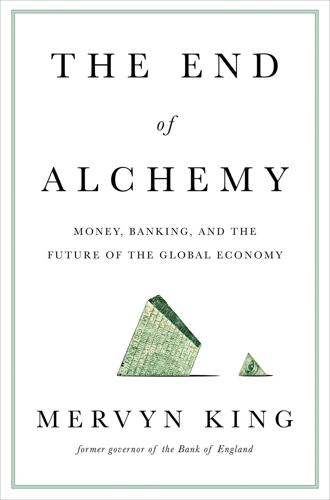
The End of Alchemy: Money, Banking and the Future of the Global Economy
by
Mervyn King
Published 3 Mar 2016
Central banks and governments duly supplied it, and the policy was endorsed by the summit of the Group of Twenty (G20), which included both industrialised and emerging market economies, in London in May 2009. The banking crisis itself could be said to have ended when the US Treasury and Federal Reserve announced on 7 May 2009 the results of the stress tests carried out on US banks to see if they were capable of withstanding the losses incurred under a range of adverse scenarios and the amount of new capital which those banks would be required to raise in the market or accept from the US government – $75 billion in total. By the summer of 2009, emerging market economies were starting to recover. But although the banking crisis had ended, the problems of the global economy remained.
…
Eliot, The Rock, 1934 INTRODUCTION ‘It was the best of times, it was the worst of times, it was the age of wisdom, it was the age of foolishness, it was the epoch of belief, it was the epoch of incredulity …’ Charles Dickens, A Tale of Two Cities The past twenty years in the modern world were indeed the best of times and the worst of times. It was a tale of two epochs – in the first growth and stability, followed in the second by the worst banking crisis the industrialised world has ever witnessed. Within the space of little more than a year, between August 2007 and October 2008, what had been viewed as the age of wisdom was now seen as the age of foolishness, and belief turned into incredulity. The largest banks in the biggest financial centres in the advanced world failed, triggering a worldwide collapse of confidence and bringing about the deepest recession since the 1930s.
…
Their titles are numerous, but they share the same invisible subtitle: ‘how I saved the world’. So although in the interests of transparency I should make clear that I was an actor in the drama – Governor of the Bank of England for ten years between 2003 and 2013, during both the Great Stability, the banking crisis itself, the Great Recession that followed, and the start of the recovery – this is not a memoir of the crisis with revelations about private conversations and behind-the-scenes clashes. Of course, those happened – as in any walk of life. But who said what to whom and when can safely, and properly, be left to dispassionate and disinterested historians who can sift and weigh the evidence available to them after sufficient time has elapsed and all the relevant official and unofficial papers have been made available.
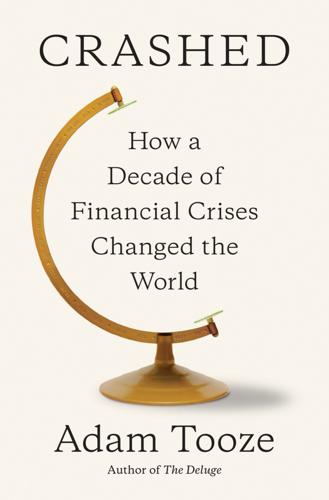
Crashed: How a Decade of Financial Crises Changed the World
by
Adam Tooze
Published 31 Jul 2018
The fact that Europe’s bank stress tests lacked the backing of clear recapitalization facilities is highlighted by T. Santos, “El Diluvio: The Spanish Banking Crisis, 2008–2012,” manuscript (2017), Columbia Business School, Columbia University. 52. L. Thomas Jr., “Greek Bonds Lure Some, Despite Risk,” New York Times, September 28, 2011. 53. Bastasin, Saving Europe, 259. 54. Acharya and Steffen, “The Banking Crisis as a Giant Carry Trade Gone Wrong.” 55. B. H. Cohen, “How Have Banks Adjusted to Higher Capital Requirements?,” BIS Quarterly Review, 2013, 25. 56. Report of the Joint Committee of Inquiry into the Banking Crisis, Houses of the Oireachtas (Inquiries, Privileges and Procedures) Act, 2016. 57.
…
But Europe’s chief problem was not the lack of a fiscal fire code. Its problem was the lack of a financial fire department.46 The failure of state building that mattered most was not fiscal union but the failure to build the capacity to handle a banking crisis. Coping with highly integrated financial capitalism requires a state that is disciplined, has the capacity to act and has the will to do so. Coping with a banking crisis on the scale that was brewing in Europe required a very capable state indeed. How badly such a facility was needed becomes clear only when we put together the local and global activities of Europe’s banks, to get a full view of their spectacularly overinflated growth.
…
Royo, “How Did the Spanish Financial System Survive the First Stage of the Global Crisis?,” Governance 26 (October 2013), 631–656; Santos, “Antes del Diluvio.” 42. A. Cárdenas, “The Spanish Savings Bank Crisis: History, Causes and Responses” (Working Paper 13-003, Universitat Oberta de Catalunya, 2013); and Santos, “Antes del Diluvio.” 43. T. Santos, “El Diluvio: The Spanish Banking Crisis, 2008–2012,” manuscript, Columbia Business School, Columbia University (2017). 44. Santos, “Antes del Diluvio.” 45. I. Jack, “Ireland: The Rise and the Crash,” New York Review of Books, November 11, 2010, reviewing F.
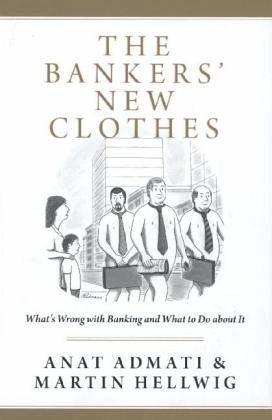
The Bankers' New Clothes: What's Wrong With Banking and What to Do About It
by
Anat Admati
and
Martin Hellwig
Published 15 Feb 2013
Ostensibly designed to force banks to invest safely, these rules have often been used to ensure that local borrowers, including the government, would get ample funding at good terms.25 The crises of the 1980s and 1990s, however, showed that investing at home is not the same as investing safely. For example, in Texas the S&L crisis of the late 1980s came sooner, beginning already in 1986, and was stronger than in most other states because Texan real estate and mortgage markets were uniquely affected by the oil price slump of 1985. In Sweden the banking crisis of 1992 was stronger than other countries’ banking crises in the early 1990s because, in trying to protect the exchange rate, the Swedish central bank pushed interest rates for overnight borrowing to a record 500 percent per year, after which there was a dramatic downturn in real estate markets.26 In the United States, such rules were also meant to prevent banks from becoming too large.27 By now, these rules have mostly been lifted.
…
Does this mean that banks would provide fewer benefits to the economy if they relied less on borrowing and used more equity? The answer is “No.” Banks have always been fragile and prone to trouble. The very word bankruptcy, common to many languages, alludes to banks.2 The history of banking has been full of crashes and crises. The period between 1940 and 1970, when there was hardly a banking crisis and few bank failures, was a remarkable exception.3 The incidence of crashes and crises since 1970 is not much different from past experience of financial instability, for example, in the nineteenth century.4 Banking experts often start from the observation that, with their reliance on deposits, banks have always been susceptible to runs, and they conclude that fragility in banking is inevitable.
…
Many countries have paid dearly for the successes of their banks. Encouraging the banks to fund the government is also not in the public interest if such funding endangers the banks. Such funding may be convenient for politicians who want to hide the costs of their policies, but if a government defaults on its debt and this is accompanied by a banking crisis, the consequences can be disastrous for many people.39 The need for effective regulation is acute. The large scale of bankers’ gambles and the high degree of interconnectedness in the financial system make that system very fragile. If some large and highly connected bank or other financial institution fails, it can destabilize the entire financial system and inflict enormous damage on all of us.
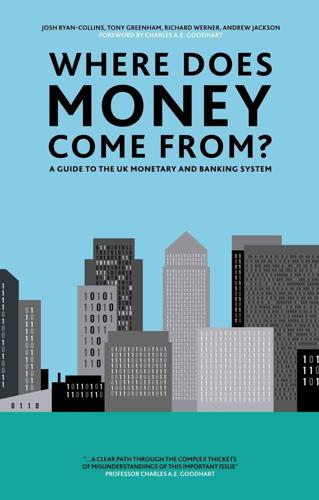
Where Does Money Come From?: A Guide to the UK Monetary & Banking System
by
Josh Ryan-Collins
,
Tony Greenham
,
Richard Werner
and
Andrew Jackson
Published 14 Apr 2012
This also meant that banks could now access central bank money and cash from the money market rather than being dependent on the central bank itself to access central bank reserves and sterling. Most of all, despite its name, the Act marked the abolition of credit controls. A credit boom followed, fuelling a housing boom, which led to the inevitable banking crisis (see Box on the Quantity Theory of Credit in Section 5.6), known as the secondary banking crisis of 1974. Property prices collapsed as bank credit became tight, and banks had to be rescued by the Bank of England. Box 4: Wholesale money markets The term ‘money market’ covers the vast network of deals involving the lending and borrowing of liquid assets in a range of currencies, generally between financial institutions such as banks, as well as non-financial companies and the Government.
…
– in reference to the ‘credit crunch’. How can the Bank of England create £375 billion of new money through ‘quantitative easing’? And why has the injection of such a significant sum of money not helped the economy recover more quickly? Surely there are cheaper and more efficient ways to manage a banking crisis than to burden taxpayers and precipitate cutbacks in public expenditure? These questions are very important. They allude to a bigger question which is the main subject of this book: ‘How is money created and allocated in the UK?’ This seems like a question that should have a simple answer, but clear and easily accessible answers are hard to find in the public domain. 1.2.
…
Following the successful US example, the Government instead issued its own money (Bradbury bills, named after the then Secretary to the Treasury, John Bradbury) to raise finance for the war. This direct government money was not borrowed from any bank or investor through bond issuance and it proved successful in combating the acute banking crisis that followed Britain’s declaration of war on Germany in August 1914 and contributed to the war economy. As Davies observes, The cessation of internal gold circulation, then conceived simply as an urgent temporary expedient, thereafter became permanent. Thus ended without fuss or fanfare nearly 700 years of intermittent gold coinage circulation, including a century of the full gold standard, ousted ignominiously by bits of scrappy paper.93 After the war, countries attempted to reinstate the gold standard, believing this would restore stability to the international financial system.
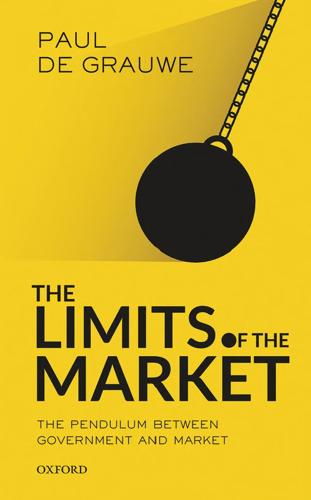
The Limits of the Market: The Pendulum Between Government and Market
by
Paul de Grauwe
and
Anna Asbury
Published 12 Mar 2017
The Second External Limit: The Financial Markets While it is evident that there are externalities when it comes to the environment, this is much less clear in the case of the financial EXTERNAL LIMI TS OF CAPI TALISM markets. Nevertheless, these also exist and cause serious problems for the market system. We were recently forced to face this fact during the banking crisis. The system suddenly reached its limits. It stood on the edge of the precipice. If there had been no government to bail out the banks at the time, we might have no market system at all in many countries by now. Particularly since the s, economists have adhered to an idealized image of financial markets, one similar to Adam Smith’s view of the economy in general.
…
Those who have made the wrong decisions or taken too many risks go under, leaving behind the strong, in a form of social Darwinism. This vision is extremely cynical, yet also naive. It is cynical because there are a great many people among the losers who have not made bad decisions nor run excessive risks, but who are dragged along in the downturn. During the banking crisis of , for example, many good banks were dragged along by the wave of mistrust which arose due to the unprecedented risks taken by a few, including some of the biggest names on the market. They were punished for sins they had not committed. Social Darwinism is in any case a naive vision. After all, the losers, a great many people during a financial crisis, will not just sit idle.
…
These high risks lead to large profits when everything is going well, and when things go badly, governments step in and the taxpayer must cover the losses. Perversely enough, the bank’s profits are privatized and its losses are nationalized. This is an unsustainable system which compels governments to step in. This is what happened after the banking crisis. Governments were forced to help the losers (failing bankers, millions of people who became unemployed as a result of the crisis). In many countries they did this by raising spending, increasing budgetary deficits. They also forced the banking sector to introduce more regulations for risk control.
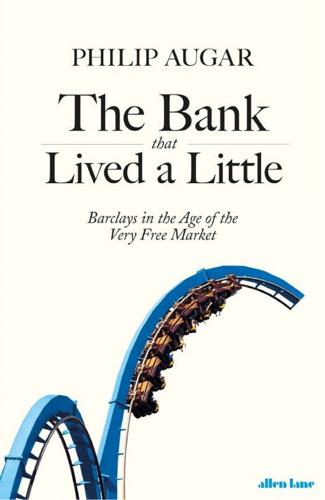
The Bank That Lived a Little: Barclays in the Age of the Very Free Market
by
Philip Augar
Published 4 Jul 2018
Federal Deposit Insurance Corporation, Information for Washington Mutual Bank, fdic.gov 10. Brown, Beyond the Crash, p. 64 11. Hugh Pym, Inside the Banking Crisis: The Untold Story, Bloomsbury Publishing, London, 2014, p. 70 12. Alistair Darling, Back from the Brink: 1000 Days at Number 11, Atlantic Books, London, 2011, p. 145 13. Ibid., p. 146 14. 2005 MOU, http://hm-treasury.gov.uk/6210.htm; Philip Augar, Reckless: The Rise and Fall of the City, Vintage, London, 2010, p. 50 15. Brown, Beyond the Crash, p. 79 16. Ibid., pp. 76–9 17. Pym, Inside the Banking Crisis, p. 97; Darling, Back from the Brink, p. 150 18. Iain Martin, Making it Happen: Fred Goodwin, RBS and the Men Who Blew up the British Economy, Simon & Schuster, London, 2013, p. 30 19.
…
Iain Martin, Making it Happen: Fred Goodwin, RBS and the Men Who Blew up the British Economy, Simon & Schuster, London, 2013, p. 30 19. Damian McBride quoted in Pym, Inside the Banking Crisis, p. 109 20. Darling, Back from the Brink, p. 150; Pym, Inside the Banking Crisis, p. 109 21. Andrew Lorenz, BZW: The First Ten Years, BZW, London, 1996, pp. 47–50 22. Ibid., pp. 176, 182–3. It was initially renamed BZW Barclays Global Investors. 23. Barclays Annual Report 2000, p. 146 24. Barclays Global Investors Equity Ownership Plan, excerpt from Barclays plc Form 20F, filed 24 March 2009 25. Brown, My Life, p. 405 26. Anthony Salz, ‘Salz Review: an independent review of Barclays’ business practices’, Barclays, London, 2013, pp. 215, 216, 223 27.
…
Barclays Annual Report 2009, p. 16 16. Barclays Annual Report 2010, p. 159 17. Barclays Capital Global Financial Services Conference, New York, 15 September 2009, Barclays.com 18. Adair Turner, ‘The Turner review: a regulatory response to the global banking crisis’, Mar 2009, fsa.gov.uk 19. House of Commons Treasury Committee, ‘Banking crisis: reforming corporate governance and pay in the City’, 12 May 2009, p. 3 20. Rachel Sylvester and Katherine Griffiths, ‘Lord Mandelson gets personal over banker’s pay’, The Times, 3 April 2010 21. ‘Lord Mandelson attacks Barclays head’, 3 April 2010, news.bbc.co.uk 22.
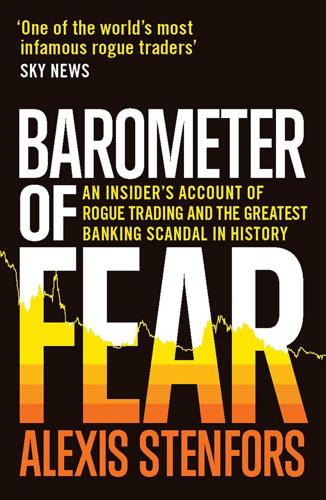
Barometer of Fear: An Insider's Account of Rogue Trading and the Greatest Banking Scandal in History
by
Alexis Stenfors
Published 14 May 2017
They become part of your ‘trading style’ and shape the person you are as a trader. I had several trading styles, certainly, but one of them was that I normally thought that short-term interest rates would go up rather than down. Having been trained in the aftermath of the Scandinavian banking crisis, and then having experienced the Japanese banking crisis, I always had an underlying fear that another banking crisis loomed around the corner. Consequently, I tended to ensure that my long-term trading position took that into account. This view often deviated from the market consensus and was sometimes both irrational and foolish. I did not, of course, predict the global financial crisis.
…
In that sense, trading was undoubtedly a job where I would be able to make use of my skills, while also having the opportunity to analyse international trends and events on a daily basis. However, when I returned to Sweden to finish my master’s degree in December 1992, there were not many jobs around in finance (or at all, to be honest). Sweden was recovering from a devastating banking crisis and the situation in Finland, my home country, was even worse. The Soviet Union, Finland’s biggest trading partner, had collapsed and a long era of austerity had arrived. Everyone, it seemed, had a hiring freeze, not least the banks, which were either bankrupt, had been nationalised, or were afraid of going bankrupt or being nationalised.
…
We, as the tentacle in the Nordic region, would now serve clients not only by quoting prices in bills and bonds, but also in FX and interest rate derivative instruments. Tomas was brought in from Hong Kong to run the dealing room, and extra expertise was flown in from London. A small army of traders and sales people was hired, mostly from Nordbanken, which had been nationalised following the Swedish banking crisis. I became part of the treasury desk, sitting bang in the middle of the trading floor. Surrounded by the bond and FX spot traders and their respective sales forces, our job was to take care of the funding of the operation as well as to trade a range of money market instruments. Uffe and Toby were experienced FX swap traders and took charge of the risk-taking activities, whereas Erik sorted out the funding of the bank.
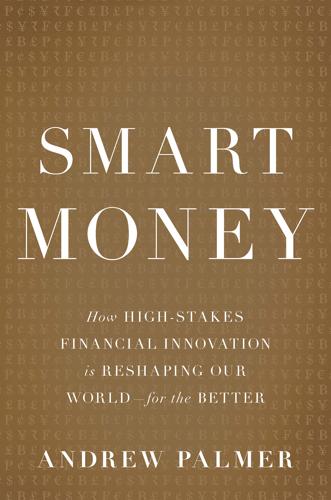
Smart Money: How High-Stakes Financial Innovation Is Reshaping Our WorldÑFor the Better
by
Andrew Palmer
Published 13 Apr 2015
The greatest danger often lurks in the most familiar parts of the financial system. Deposits are seen as a “good” source of funding, even though they can be taken out in an instant and get a giant subsidy in the form of deposit insurance. Property is regarded as a bread-and-butter banking activity but is the cause of banking crisis after banking crisis. Secured lending is seen as prudent, even though it can mean decisions are often made on the basis of the collateral being offered (a house, say) rather than the creditworthiness of the borrower (a borrower with no income and no job, say). If you look at the write-downs recorded during the crisis, where were they found?
…
See Credit-default swap Cecchetti, Stephen, 79 Church-tower principle, 207 Cigarettes, as means of payment, 5 Clark, Geoffrey Wilson, 144 Clearinghouse, 39 ClearStreet, 210 Clinical drug trials, indemnification of, xii–xiii Coates, John, 116 Code, simplification of, 63 Cohen, Ronald, 91–95, 97, 106, 108, 112 Coins, history of, 4 Collateral, xiv, 7, 38, 65, 76, 150, 177, 185, 204–206, 215 Collateralized-debt obligations (CDOs), 43, 234–235 Collective Health, 104 College graduates, earning power of, 170–171 Commenda, 7–8, 19 Commercial paper, 185 Commodity Futures Trading Commission, 54 CommonBond, 182, 184, 197 Confusion de Confusiónes (de la Vega), 24 Congressional Budget Office, 99, 169 Consumer Financial Protection Bureau overdraft fees and prepaid cards, concern about, 203–204 report on reverse mortgages, 141 survey on payday borrowing, 200 CoRI, 132 Corporate debt, in United States, 120 Corporate finance, 237–238 Correlation risk, 165 Cortisol and testosterone, effect of on risk appetite and aversion, 116 Counterparty risk, 22 Credit, industrialization of, 206 Credit Card Accountability, Responsibility, and Disclosure (Credit CARD) Act of 2009, 203 Credit cards, 203 Credit-default swap (CDS), 37, 64–65, 75, 124, 169, 238 Credit ratings, 24, 120–121, 233–236 Credit-reporting firms, 24 Credit risk, 200, 201, 237, 238 Credit scores, 47–49, 201, 216–217 Creditworthiness, xiv, 10, 12, 47, 121, 197, 202, 204, 216 Crowdcube, 152–155, 158–159, 162 Damelin, Errol, 208 Dark Ages, banking in, 11 Dark pools, 60 DCs (defined-contribution schemes), 129, 131 DE Shaw, 163 Debit cards, 204 Debt, 6, 7, 70, 149, 164 Decumulation, 138–139 Defined-benefit schemes, 129, 131 Defined-contribution (DC) schemes, 129, 131 Dependent variable, 201 Deposit insurance, 13, 43–44 Derivatives, 3, 9–10, 29–32, 38, 40 Desai, Samir, 189 Development-impact bonds, 103 Diabetes, cost of in United States, 102 Dimensional Fund Advisors, 129 Direct lending, 184 Discounting, 19 Disposition effect, 25 Diversification, 8, 12, 20, 117–119, 196, 236 Doorways to Dreams (D2D), 213–214 Dot-com boom, 148 Dow Jones Industrial Average, 40 Dow Jones Transportation Average, 40 Drug development, investment in, vii-viii, 114–115 Drug-development megafund adaptive market hypothesis and, 115–117 Alzheimer’s disease, 122 credit rating, importance of, 120–121 diversification and, 117, 119–120, 122 drug research, improvement of economics of, 114–115 financial engineering, need for, 119 guarantors for, 121 orphan diseases and, 118–119, 122 reactions to, 118 securitization and, 117–119, 122 Dumb money, comparison of to smart money, 155–158 Dun and Bradstreet, 24 Durbin Amendment (2010), 204 Dutch East India Company (VOC), 14–15, 38 E-Mini contracts, 54–55 Eaglewood Capital, 183–184 Ebola outbreak (2014), mortality rate of, 230 Ebrahimi, Rod, 210–211 Ecology, finance and, 113 Economist 2013 conference, xv on railways, 25 on worth of residential property, 70 Educational equity adverse selection in, 174, 175, 182 CareerConcept, 166 differences in funding rates, 176 enforceability, 177 in Germany, 166 Gu, Paul, 172, 175–176 income-share legislation, US Senate and, 172 information asymmetry, 174 Lumni, 165, 168, 175 Oregon, interest in income-share agreements, 172, 176 Pave, 166–168, 173, 175, 182 peer-to-peer insurance, 182 problems with, 167–168, 173–174 providers and recipients, contact between, 160, 175 risk-based pricing model, 176 student loans, 169–171 Upstart, 166–168, 173, 175, 182 Yale University and, 165 Efficient-market hypothesis, 115 Endogeneity, 239 Epidemiology, finance and, 113 Eqecat, 222 Equity, 7–8, 149–150, 186–187 Equity-crowdfunding in Britain, 154 Crowdcube, 152–155, 158–159, 162 Friendsurance, 182–183 Equity-crowdfunding in Britain (continued) herding, 159–160 social insurance, 182–183 Equity-derivatives contracts, 29 Equity-sharing, 7–8 Equity-to-assets ratio, 186 Eren, Selcuk, 73 Eroom’s law, 114 Essex County Council, 95 Eurobond market, 32 European Bank for Reconstruction and Development, 169 Exceedance-probability curve, 231–232, 232 figure 3 Exxon, 169 Facebook, 174 Fair, Bill, 47 False substitutes, 44 Fama, Eugene, 115 Fannie Mae, 48, 78, 85, 168 Farmer, Doyne, 60, 63 Farynor, Thomas, 16 FCIC (Financial Crisis Inquiry Commission), 50 Federal Deposit Insurance Corporation (FDIC), 186, 200 Federal Reserve Bank of New York, 170, 204, 205 Feynman, Richard, 115 Fibonacci (Leonardo of Pisa), 19 FICO score, 47–49 Films to rent, study of hyperbolic discounting, 133–134 Finance bailouts, 35–36 banks, purpose of, 11–14 collective-action problem in, 62 computerization of, 31–32 democratization of, 26–28 economic growth and, 33–34 fresh ideas, need for, xviii, 38–39, 80, 85–86 globalization and, 30, 225 heuristics, use of in, 45–50 illiteracy, financial, 134–135 importance of, 10 information, importance of, 10–11 inherent failings in, 241 misconceptions about, xiii–xvi panic, consequences of, 44 regulatory activity, results of, 33 risk assessment, 24, 45, 77–78 risk management, 55, 117–118, 123 as solution to real-world problems, 114 standardization, 39–41, 45, 47, 51 unconfirmed trades, backlog of, 64–65 use of catastrophe risk modeling in, 233–239 See also High-frequency trading (HFT); Internet Finance, history of bank, derivation of word, 12 Book of Calculation (Fibonacci), 19 call options, 10 Code of Hammurabi, 8 coins, 4 commodity forms of exchange, 4–5 credit and debt, 5–7 in Dark Ages, 11 democratization, 26–28 deposits, 6 derivatives, 29–32, 38 Dutch East India Company (VOC), 14–15, 38 early financial contracts, 5 early forms of finance, 3 equity contracts, 7–8 fire insurance, 16–17 first futures market, 29, 39–40 forward contracts, 38 in Greece, 11 industrialization and, 3, 27–28 inflation-protected bonds, 26 insurance, 8–10, 16–17, 20–22 interest, origin of, 5 in Italy, 9, 14 life annuities, 20–22 maritime trade and, 7–8, 14, 17, 23 payment, forms of, 4–5 put options, 9–10 railways, effect of on, 23–25 in Roman Empire, 7, 8, 11, 36 securities markets, 14 stock exchanges, 14, 24–25 Finance, innovation in absence of, xvi–xvii credit and debt, 5–7 derivatives, 9–10, 29–32 diffusion, pattern of, 45 drivers of, 22–26 equity, 7–8 importance of, 66, 242–243 insurance, 8–9, 16–17, 20–22 lessons from, 32–34 mathematical insights, 18–20 payment, forms of, 4–5 risks of, 145 stock exchanges, 14–16 Finance and the Good Society (Shiller), 242 Financial Crisis Inquiry Commission (FCIC), 50 Financial crisis of 2007–2008 causes of, xv, 34, 69 effects of, xx–xi future of finance, effect on, 243 mortgage debt, role of in, 69–70 new regulations since, 185, 187 Financial Times, quote from Chuck Prince in, 62 Fire insurance, early, 16–17 Fitch Ratings, 24 Flash Boys (Lewis), 57 Flash crash, 54–56, 63 Florida, hurricane damage in, 223, 225 Florida, new residents per day in, 225 Foenus nauticum, 8 Forward contracts, 38 Forward transactions, 15 France collapse of Mississippi scheme in, 36 eighteenth century life annuities in, 20–21 government spending in, 99 Freddie Mac, 48, 85 Fresno, California, social-impact bond pilot program in, 103–104 Friedman, Milton, 165 Friendsurance, 182–183 Fundamental sellers, 54–55 Funding Circle, 181–182, 189, 197 Futures, 29, 39–40 Galton Board, 17, 18 figure 1 Gaussian copula, 235 Geithner, Timothy, 64–65 Genentech, xii General Motors, bailout of, xi Geneva, Switzerland, annuity pools in, 21–22 Gennaioli, Nicola, 42, 44 Ginnie Mae, 168 Girouard, Dave, 166 Glaeser, Edward, 74 Globalization, finance and, 30, 225 Goldman Sachs, 61, 98, 156, 235 Google Trends, 218 Gorlin, Marc, 218 Government spending, rise in, 99–100 Governments, support for new financial products by, 168–169 Grameen Bank, 203 Greece, forerunners of banks in, 11 Greenspan, Alan, 236 Greenspan consensus, 236 Grillo, Baliano, 9 Gu, Paul, 162–164, 166, 172, 175–176 Guardian Maritime, 151 Haldane, Andy, 188 Halley, Edmund, 19–20 Hamilton, Alexander, 35–36 Hammurabi, Code of, 5, 8 Health conditions, SIB early detection programs for, 102–104 Health-impact bonds, 103–104 Hedge funds, 123, 158, 183 Hedging, 30–31, 54, 124, 129, 131, 156, 206, 227 Heiland, Frank, 73 Herding, 24, 159–160 Herengracht Canal properties, Amsterdam, real price level for, 74 Heuristics, 45–50 HFRX, 157–158 High-frequency trading (HFT) benefits of, 58 code, simplification of, 63 flash crash, 54–56 latency, attempts to lower, 53 pre-HFT era, 59–61 problems with, 56–58, 62–63 Hinrikus, Taavet, 190–191 HIV infection rates, SIB program for reduction of, 103 Holland, tulipmania in, 33, 36 Home equity, 139–140 Home-ownership rates, in United States, 85, 170 Homeless people, SIB program for, 96–97 Housing boom of mid-2000s, 148–149 Human capital contracts, 165, 167, 173–174, 176, 177 defined, 6 as illiquid asset, 177 Hurricane Andrew, effect of on insurers, 223–224, 225 Hurricane Hugo, 223 Hyperbolic discounting, 133–134, 211 IBM, 169 If You Don’t Let Us Dream, We Won’t Let You Sleep (drama), 111 IMF (International Monetary Fund), 125–126 Impact investing, 92 Implied volatility, 116 Impure altruism, 109–110 Income-share agreements, 167, 172–178 Independent variables, 201 Index funds, 40 India, CDS deals in, 37 India, social-impact bonds (SIBs) in, 103 Industrialization, effect of on finance, 3, 27–28 Inflation-protected Treasury bills, 131 Information asymmetry, 174 Innovator’s dilemma, 189 Instiglio, 103 Insurance, 8–10, 16–17, 142, 223–225 Insurance-linked securities, 222 Interbank markets, x Interest, origin of, 5 Interest-rate swaps, 29 International Maritime Bureau Piracy Reporting Centre, 151 International Monetary Fund (IMF), 125–126 International Swaps and Derivatives Association (ISDA), 40 Internet, role of in finance creditworthiness, determination of, 172–173, 202, 218 direct connection of suppliers and consumers, xviii, 32 equity crowdfunding, 152–155 income-share agreements, 172–173 ROSCAs, 210 small business loans, 216 speed and ease of borrowing, 189 student loans, 166–167 Intertemporal exchange, 6 Intuit, 218 Investment grade securities, 121 Ireland, banking crisis in, xiv–xv, 69 Isaac, Earl, 47 ISDA (International Swaps and Derivatives Association), 40 ISDA master agreement, 40 Israel, SIBs in, 97 Italy discrimination against female borrowers in, 208 financial liberalization and, 34 first securities markets in, 14 maritime trade partnerships in, 7–8 J. C. Flowers, 69, 81 Japan, banking crisis in, 75 Japan, financial innovation in, 27, 29, 39–40 Jha, Saumitra, 27 Jiménez-Martín, Sergi, 73 Job creation, young small firms and, 147–148 Joint-stock firms, 23 JPMorgan, 77, 169 Jump-to-default risk, 238 Käärmann, Kristo, 190 Kabbage, 218 Kahneman, Daniel, 47, 137 Kanjorski, Paul, 145 Kauffman Foundation, 158 Kennedy, John F., 32 Keys, Benjamin, 48 Kharroubi, Enisse, 79 Kickstarter, 172 King, Stephen, 99 Klein, David, 182 Krugman, Paul, xv Lahoud, Sal, 166 Lang, Luke, 153, 161–162 Laplanche, Renaud, 179, 184, 188, 190, 193–194, 196–197 Latency, 53 Law of large numbers, 17 Layering, 57 Left-digit bias, 46 Lehman Brothers, x, 44, 65 Lending direct, 84 marketplace, 184 payday, 200 relationship-based, 11, 151, 206–208 secured, xiv, 76 unsecured, 206 See also Loans; Peer-to-peer lending Lending Club, 172, 179–180, 182–184, 187, 189, 194–195, 197 Leonardo of Pisa (Fibonacci), 19 Lerner, Josh, 59 Lethal pandemic, risk-modeling for demographic profile, 230 exceedance-probability curve, 231–232, 232 figure 3 historical data, 228–229 infectiousness and virulence, 229–230 location of outbreak, 230–231 Leverage, 51, 70–71, 80, 186, 188 Leverage ratio, 76–77 Lewis, Michael, 57 Liber Abaci or Book of Calculation (Fibonacci), 19 LIBOR (London Interbank Offered Rate), 41 Liebman, Jeffrey, 98 Life expectancy government reaction to, 128–129 projections of, 124–127, 126 figure 2 ratio of young to older people, 127–128 Life-insurance policies, 142 Life-settlements industry, 142–143 Life table, 20 Limited liability, 212 Liquidity, 12–14, 39, 185–186 List, John, 109 The Little Book of Behavioral Investing (Montier), 156 Lo, Andrew, 113–115, 117–123 Loans low-documentation, 48–49 secured, 76 small business, 181, 216 student, 164, 166–167, 169–171, 182 syndicated, 41 Victory Loans, 28 See also Lending; Peer-to-Peer lending Logistic regression, 201 London, early fire insurance in, 16–17 London, Great Fire of, 16 London Interbank Offered Rate (LIBOR), 41 Long-Term Capital Management, 123 Longevity, betting on, 143–144 Loss aversion, 136 Lotteries, 212, 213 Low-documentation loans, 48–49 Lumni, 165, 168, 175 Lustgarten, Anders, 111 Lynn, Jeff, 160–161 Mack, John, 180 Mahwah, New Jersey, 52, 53 Marginal borrowers assessment of, 216–217 behavioral finance and, 208–214 industrialization of credit, 206 microfinance and, 203 savings schemes, 209–214 small businesses, 215–219 unsecured lending to, 206 Wonga, 203, 205, 208 Marginal borrowers (continued) ZestFinance, 199, 202, 205–206 Maritime piracy, solutions to, 151–152 Maritime trade, role of in history of finance, 3, 7–8, 14, 17, 23 Market makers, 15–16, 55 MarketInvoice, 195, 207, 217–218 Marketplace lending, 184 Markowitz, Harry, 118 Massachusetts, use of inflation-protected bonds in, 26 Massachusetts, use of social-impact bonds in, 98 Matching engine, 52 Maturity transformation, 12–13, 187–188, 193 McKinsey & Company, ix, 42 Mercator Advisory Group, 203 Merrill, Charles, 28 Merrill, Douglas, 199, 201 Merrill Lynch, 28 Merton, Robert, 31, 113–114, 123–124, 129–132, 142, 145 Mian, Atif, 204 Michigan, University of, financial survey by, 134–135 Microfinance, 203 Micropayment model, 217 Microwave technology, 53 The Million Adventure, 213–214 Minsky, Hyman, 42 Minsky moment, 42 Mississippi scheme, 36 Mitchell, Justin, 166–167 Momentum Ignition, 57 Monaco, modeling risk of earthquake in, 227 Money, history of, 4–5 Money illusion, 73–74 Money laundering, 192 Money-market funds, 43, 44 Monkeys, Yale University study of loss aversion with, 136 Montier, James, 156–157 Moody, John, 24 Moody’s, 24, 235 Moore’s law, 114 Morgan Stanley, 188 Mortgage-backed securities, 49, 233 Mortgage credit by ZIP code, study of, 204 Mortgage debt, role of in 2007–2008 crisis, 69–70 Mortgage products, unsound, 36–37 Mortgage securitization, 47 Multisystemic therapy, 96 Munnell, Alicia, 129 Naked credit-default swaps, 143 Nature Biotechnology, on drug-development megafunds, 118 “Neglected Risks, Financial Innovation and Financial Fragility” (Gennaioli, Shleifer, and Vishny), 42 Network effects, 181 New York, skyscraper craze in, 74–75 New York City, prisoner-rehabilitation program in, 108 New York Stock Exchange (NYSE), 31, 52, 53, 61, 64 New York Times, Merrill Lynch ad in, 28 Noncorrelated assets, 122 Nonprofits, growth of in United States, 105–106 Northern Rock, x NYMEX, 60 NYSE Euronext, 52 NYSE (New York Stock Exchange), 31, 52, 53, 61, 64 OECD (Organization for Economic Co-operation and Development), 128, 147 Oldfield, Sean, 67–68, 80–84 OnDeck, 216–218 One Service, 94–95, 105, 112 Operating expense ratio, 188–189 Options, 15, 124 Order-to-trade ratios, 63 Oregon, interest in income-share agreements, 172, 176 Organization for Economic Co-operation and Development (OECD), 128, 147 Overtrading, 24 Packard, Norman, 60 Pandit, Vikram, 184 Park, Sun Young, 233 Partnership mortgage, 81 Pasion, 11 Pave, 166–168, 173, 175, 182 Payday lending Consumer Financial Protection Bureau, survey on, 200 information on applicants, acquisition of, 202 underwriting of, 201 PayPal, 219 Peak child, 127 Peak risk, 228 Peer-to-peer lending advantages of, 187–189 auction system, 195 big investors in, 183 borrowers, assessment of, 197 in Britain, 181 commercial mortgages, 181 CommonBond, 182, 184, 197 consumer credit, 181 diversification, 196 explained, 180 Funding Circle, 181–182, 189, 197 investors in, 195 Lending Club, 179–180, 182–184, 187, 189, 194–195, 197 network effects, 181 ordinary savers and, 184 Prosper, 181, 187, 195 RateSetter, 181, 187, 196 Relendex, 181 risk management, 195–197 securitization, 183–184, 196 Peer-to-peer lending (continued) small business loans, 181 SoFi, 184 student loans, 182 Zopa, 181, 187, 188, 195 Pensions, cost of, 125–126 Perry, Rick, 142–143 Peterborough, England, social-impact bond pilot in, 90–92, 94–95, 104–105, 112 Petri, Tom, 172 Pharmaceuticals, decline of investment in, 114–115 Piracy Reporting Centre, International Maritime Bureau, 151 Polese, Kim, 210 Poor, Henry Varnum, 24 “Portfolio Selection” (Markowitz), 118 Prediction Company, 60–61 Preferred shares, 25 Prepaid cards, 203 Present value of cash flows, 19 Prime borrowers, 197 Prince, Chuck, 50–51, 62 Principal-agent problem, 8 Prisoner rehabilitation programs, 90–91, 94–95, 98, 108, 112 Private-equity firms, 69, 85, 91, 105, 107 Projection bias, 72–73 Property banking crises and, xiv, 69 banking mistakes involving, 75–80 behavioral biases and, 72–75 dangerous characteristics of, 70–72 fresh thinking, need for, xvii, 80 investors’ systematic errors in, 74–75 perception of as safe investment, 76, 80 Prosper, 181, 187, 195 Provisioning funds, 187 Put options, 9, 82 Quants, 19, 63, 113 QuickBooks, 218 Quote stuffing, 57 Raffray, André-François, 144 Railways, affect of on finance, 23–25 Randomized control trials (RCTs), 101 Raphoen, Christoffel, 15–16 Raphoen, Jan, 15–16 RateSetter, 181, 187, 196 RCTs (randomized control trials), 101 Ready for Zero, 210–211 Rectangularization, 125, 126 figure 2 Regulation NMS, 61 Reinhart, Carmen, 35 Reinsurance, 224 Relendex, 181 Rentes viagères, 20 Repurchase “repo” transactions, 15, 185 Research-backed obligations, 119 Reserve Primary Fund, 44 Retirement, funding for anchoring effect, 137–138 annuities, 139 auto-enrollment in pension schemes, 135 auto-escalation, 135–136 conventional funding, 127–128 decumulation, 138–139 government reaction to increased longevity, 128–129 home equity, 139–140 life expectancy, projections of, 124–127, 126 figure 2 life insurance policies, cash-surrender value of, 142 personal retirement savings, 128–129, 132–133 replacement rate, 125 reverse mortgage, 140–142 savings cues, experiment with, 137 SmartNest, 129–131 Reverse mortgages, 140–142 Risk-adjusted returns, 118 Risk appetite, 116 Risk assessment, 24, 45, 77–78, 208 Risk aversion, 116, 215 Risk-based capital, 77 Risk-based pricing model, 176 Risk management, 55, 117–118, 123, 195–197 Risk Management Solutions, 222 Risk sharing, 8, 82 Risk-transfer instrument, 226 Risk weights, 77–78 Rogoff, Kenneth, 35 “The Role of Government in Education” (Friedman), 165 Roman Empire business corporation in, 7 financial crisis in, 36 forerunners of banks in, 11 maritime insurance in, 8 Rotating Savings and Credit Associations (ROSCAs), 209–210 Roulette wheel, use of in experiment on anchoring, 138 Royal Bank of Scotland, 186 Rubio, Marco, 172 Russia, mortgage market in, 67 S-curve, in diffusion of innovations, 45 Salmon, Felix, 155 Samurai bonds, 27 Satsuma Rebellion (1877), 27 Sauter, George, 58 Save to Win, 214 Savings-and-loan crisis in US (1990s), 30 Savings cues, experiment with, 137 Scared Straight social program, 101 Scholes, Myron, 31, 123–124 Science, Technology, and Industry Scoreboard of OECD, 147 Securities and Exchange Commission (SEC), 54, 56, 57, 58, 64 Securities markets, 14 Securitization, xi, 20, 37–38, 117–122, 183–184, 196, 236 Seedrs, 160–161 Sellaband, 159 Shared equity, 80–84 Shared-equity mortgage, 84 Shepard, Chris, xii–xiii Shiller, Robert, xv–xvi, 242 Shleifer, Andrei, 42, 44 Short termism, 58 SIBs.
…
In This Time Is Different, their excellent survey of debt crises across the centuries, Carmen Reinhart and Kenneth Rogoff analyze episodes of banking crises. Such meltdowns are depressingly common in both developed and emerging economies: Britain, America, and France have experienced twelve, thirteen, and fifteen episodes of banking crisis, respectively, since 1800, for example.1 The first bailout in the United States happened way back in 1792, when a bubble and then a slump in the price of the country’s federal debt helped spark widespread panic. Alexander Hamilton, America’s first treasury secretary, was desperate to prevent severe damage to the country’s nascent financial system.
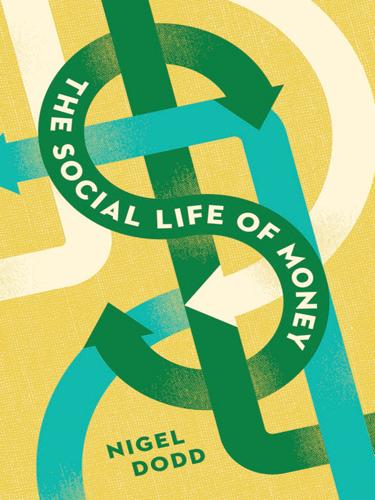
The Social Life of Money
by
Nigel Dodd
Published 14 May 2014
Private borrowing is affected too: Krugman envisages a crisis emerging specifically because firms have a high proportion of their debt in foreign currency (Krugman 2002), and Robert Wade’s analysis of the Icelandic crisis suggests that large borrowings by households and firms in foreign currency were crucial (Wade 2009). It is simply less risky for a government to borrow in its own currency. In the aftermath of the 2007–8 banking crisis, many states ran into debt problems, not just because of the costs of bailout but also (and mainly) because of the recession that was triggered by the credit squeeze the banking crisis caused. States fund their debt through taxation (but revenues are in decline) and bonds (which have been downgraded in many cases), and central banks (especially in the United States and the United Kingdom) have been purchasing bonds to sustain the market.
…
Faced with these realities, it is little wonder that a war has been declared on the banking system through political protests that have embraced as wide a spectrum of society as the original crisis itself. The political rhetoric is not simply about unequal wealth and income distribution. At a more fundamental level, and in a more precise way, it attacks the financial system that is responsible for perpetuating it. Of course, just calling this a banking crisis is too narrow a description. And to speak of banks as if they were all the same—to wit, part of an overarching Wall Street system—glosses over the complexity of financial institutions that do not operate in unison and are fragmented within themselves. Indeed, one could argue that divisions within banks, and their fragmented epistemic cultures, played a significant role in bringing the crisis about (MacKenzie 2011).
…
Since the early 1990s, however—and especially since the crisis—there has been a genuine surge of interest in the changing nature of money, partly because of the emergence of new forms such as local currencies and digital monies. Whereas the financial crisis appears to have fueled the enthusiasm of wider publics for new forms of money and credit, it has also underlined the argument that the role of states and banks in money’s social production may be undergoing a fundamental transformation. As the Cypriot banking crisis erupted during the early months of 2013, the value of Bitcoins (a currency that severs links with both the state and the banking system) rose sharply against both the euro and the U.S. dollar. There are many possible explanations for this, not least that we were simply witnessing a bubble. But the debates that have sprung up around the Bitcoin phenomenon are revealing because most of them are focused on the possibilities of developing a serious rival to state currency.
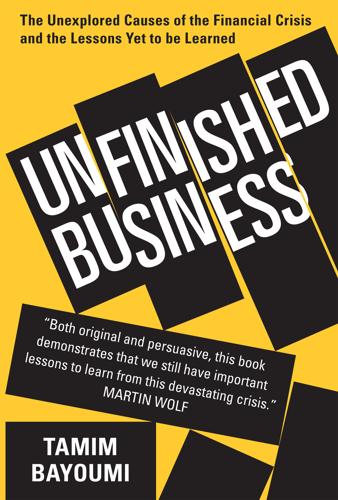
Unfinished Business
by
Tamim Bayoumi
The mega-banks in the Euro area core continued to expand, providing much of the funding for the housing price bubbles in the United States and financial bubbles in the Euro area periphery. When the bubbles burst the losses whipsawed back onto the core of the Euro area, widening the banking crisis across the North Atlantic. Indeed, every banking system in the Euro area experienced a crisis in 2008 except for Finland.1 The northern European mega-banks were thus major protagonists that helped drive the North Atlantic banking crisis rather than hapless victims, as they are often portrayed. How the northern European banks were allowed to expand so far, so fast, is a cautionary tale of unanticipated spillovers from financial regulations.
…
In many ways, IKB was the more important financial shock. Jochen Sanio, the lead German bank regulator, is reported to have said that the hurried weekend rescue involving a wide swathe of the German banking industry (an arrangement designed to circumvent EU rules on state subsidies) was needed to avoid the worst banking crisis since 1931.1 However, the symbolism of having part of the business of the largest French bank felled by turmoil in US markets has remained the more potent talisman of the wider impact of the North Atlantic crisis, a somewhat ironic outcome as BNP Paribas actually weathered the crisis relatively successfully.
…
In 2007, on the eve of the US subprime problems, the northern European banks (Euro area core plus UK) owned US assets worth over one-quarter of US output, three times the ratio of 2000. By this time, they also owned assets in the Euro area periphery of around half of the periphery output, double the 2000 value. The result was that when the bubble burst the Euro area suffered a generalized banking crisis. The twelve mega-banks identified in Chapter 1 (see Figure 3) drove these shifts in the Euro area banking system.32 Indeed, they accounted for the entire increase in bank assets over the 2000s as they expanded from one-third to one-half of the assets of the overall system through a combination of internal expansion, and mergers and acquisitions (Figure 23).
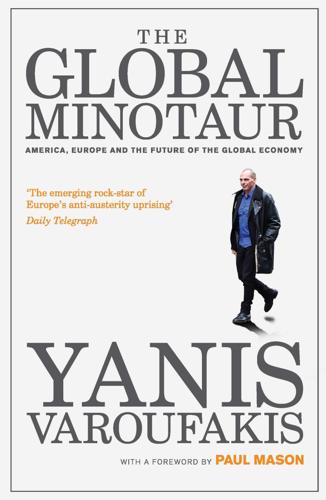
The Global Minotaur
by
Yanis Varoufakis
and
Paul Mason
Published 4 Jul 2015
When customers suspect this, they try to withdraw their money, at which point the bank collapses, before being brought back to ‘life’ by the Bank of England at a cost in excess of £15 billion. Rocked by this development, Bernanke drops US interest rates by another small amount, to 4.75 per cent, while the Bank of England pumps £10 billion worth of liquidity into the City of London. October – The banking crisis extends to the most esteemed Swiss financial institution, UBS, and the world takes notice. UBS announces the resignation of its chairman and CEO, who takes the blame for a loss of $3.4 billion from CDOs containing US sub-prime mortgages. Meanwhile, in the United States, Citigroup at first reveals a loss of $3.1 billion (again on mortgage-backed CDOs) – a figure that rises by another $5.9 billion within a few days.
…
To put it simply, imagine what would have happened in 2008 if, in the ‘dollar-zone’, each state (e.g. California or Nevada) had to bail out the banks registered on its soil and there was no way of financing public deficits from Washington! Within this institutionally problematic framework, the ECB and the European Commission struggled to contain the banking crisis. Between 2008 and 2009, they ‘socialized’ the banks’ losses and turned them into public debt. Meanwhile, the economy of Europe went into recession, as expected. In one year (2008–09) Germany’s GDP fell by 5 per cent, France’s by 2.6 per cent, Holland’s by 4 per cent, Sweden’s by 5.2 per cent, Ireland’s by 7.1 per cent, Finland’s by 7.8 per cent, Denmark’s by 4.9 per cent and Spain’s by 3.5 per cent.
…
The reason was, of course, that expensive new loans do not address the deficit states’ descent into bankruptcy, and they certainly do nothing for the faulty architecture, the noxious simulacrum, whose destructive potential was released the moment the Global Minotaur was wiped out by the Crash of 2008. If I am right, and the euro crisis is a systemic failure that began as a banking crisis, then Europe’s medicine is worse than the disease. It is like sending a weak swimmer out to sea to save a drowning bather: all you can expect is the sad sight of the two weak swimmers hanging onto one another for dear life, both sinking fast to the bottom of the sea. The two swimmers are, of course, the eurozone’s deficit states and Europe’s banking system.
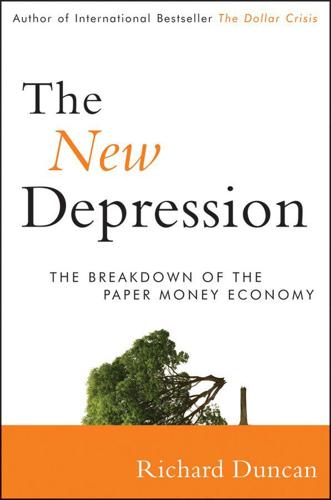
The New Depression: The Breakdown of the Paper Money Economy
by
Richard Duncan
Published 2 Apr 2012
Global Imbalances: Still Unresolved Vision and Leadership Are Still Lacking Notes Chapter 7: How It Plays Out The Business Cycle Debt: Public and Private 2011: The Starting Point 2012: Expect QE3 Impact on Asset Prices 2013–2014: Three Scenarios Impact on Asset Prices Conclusion Notes Chapter 8: Disaster Scenarios The Last Great Depression And This Time? Banking Crisis Protectionism Geopolitical Consequences Conclusion Note Chapter 9: The Policy Options Capitalism and the Laissez-Faire Method The State of Government Finances The Government’s Options American Solar Conclusion Notes Chapter 10: Fire and Ice, Inflation and Deflation Fire Ice Fisher’s Theory of Debt-Deflation Winners and Losers Ice Storm Fire Storm Wealth Preservation through Diversification Other Observations Concerning Asset Prices in the Age of Paper Money Protectionism and Inflation Consequences of Regulating Derivatives Conclusion Notes Conclusion About the Author Index Copyright © 2012 Richard Duncan.
…
Asset price bubbles formed and reshaped the structure of the economy. The NASDAQ bubble misallocated credit into the telecommunications and Internet sectors. When it popped, the Fed orchestrated the property bubble, which misallocated even more credit into housing. When the subprime loans could not be repaid, the losses produced a systemic banking crisis and forced the effective nationalization of Fannie Mae and Freddie Mac. Next, Bernanke cut interest rates to zero (see Exhibit 5.2), but that was not enough. It was no longer just a matter of ensuring that credit continued to expand. The credit market was imploding under the losses on defaulting and non-performing assets.
…
That ratio peaked at nearly 140 percent in 2007, just as Greenspan was expounding on the role of rising debt and the facts of life. Unfortunately, American households were incapable of repaying so much debt. They began defaulting on their mortgages in record numbers. The result was a systemic banking crisis and a severe global economic crisis that remains far from over. One of the facts of life that the chairman seems to have been unaware of is that debt has to be repaid. That means people must earn enough money to repay their debts. Between the time Greenspan became chairman until 2007, median income in the United States doubled (not adjusted for inflation), but the level of household sector debt increased five and a half times.
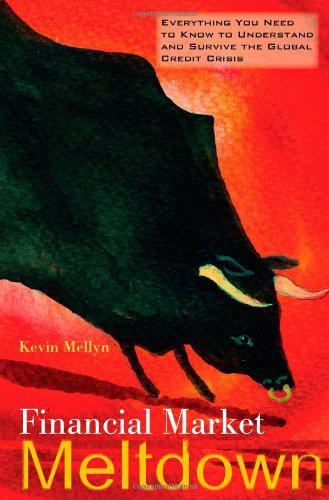
Financial Market Meltdown: Everything You Need to Know to Understand and Survive the Global Credit Crisis
by
Kevin Mellyn
Published 30 Sep 2009
Real history shows that real estate lending is in fact about as risky a thing as you can do with other people’s money. It has been the largest single cause of financial crises over the last forty years, from the U.S. banking crisis of 1974, triggered by collapsing real estate investment trusts, the collapse of the U.S. savings and loan industry in the 1980s, the collapse of the Japanese bubble economy in 1990, the Swedish and Finnish banking crises of the same period, and the Asian banking crisis of 1997. The only response to this inconvenient fact that the U.S. Congress seems capable of is to throw money at the collapsing U.S. housing market instead of simply letting the market clear at prices that attract buyers who can actually afford a house.
…
Japan’s world-beating companies were still selling their products to Europeans and Americans. Japan remained basically a rich country. The problem was there was no Dr. House at the MOF, at least not one to whom anyone would listen. Japan spent the years after the bubble burst in 1990 making a banking crisis into an economic catastrophe. At the time, American bankers, government officials, academics, and other experts told the Japanese they were doing all the wrong things and offered them alternatives. These mainly involved free market solutions for clearing the markets. Today, we appear hell bent on replicating Japan’s mistakes on a vastly larger scale.
…
If there was a general collapse of the banking system, something that has happened before in other countries like Mexico and Russia and partially happened here in 1930 to 1933, we the taxpayers would be on the hook for at least $4 trillion to give us back our own deposit money. This wouldn’t happen. Four trillion dollars is larger than the What Should Be Done? federal blow-out budget for 2009 and nearly a third of U.S. national income. The government simply doesn’t have and probably couldn’t get its hands on that kind of money should the current banking crisis go into free fall. The collapse of the payments system based on deposit money would mean no company could pay its bills or its meet payroll. Investors would be wiped out. All our paper wealth and savings would simply evaporate. We would revert to the cash, barter, and private bill of exchange economy that preceded all the real history in Chapter Four.
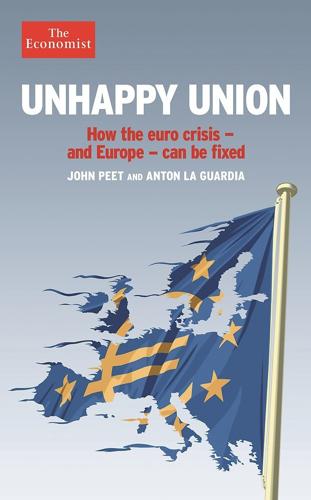
Unhappy Union: How the Euro Crisis - and Europe - Can Be Fixed
by
John Peet
,
Anton La Guardia
and
The Economist
Published 15 Feb 2014
, Centre for European Policy Studies, 2006, available at: www.ceps.be/ceps/dld/3059/pdf 3Tilford, S., Will the Eurozone Crack?, Centre for European Reform, September 2006, available at: www.cer.org.uk/sites/default/files/publications/attachments/pdf/2011/p_688_eurozone_crack_42-892.pdf 4Veron, N., Is Europe Ready for a Major Banking Crisis?, Bruegel, August 2007, available at: www.bruegel.org/download/parent/234-is-europe-ready-for-a-major-banking-crisis/file/659-is-europe-ready-for-a-major-banking-crisis-english/ 5EMU@10: Successes and challenges after ten years of Economic and Monetary Union, European Commission, available at: ec.europa.eu/economy_finance/publications/publication12682_en.pdf 6Delors, J., Report on economic and monetary union in the European Community, April 1989, available at: ec.europa.eu/economy_finance/publications/publication6161_en.pdf 5 Trichet’s test 1Article 125: “A Member State shall not be liable for or assume the commitments of central governments, regional, local or other public authorities, other bodies governed by public law, or public undertakings of another Member State, without prejudice to mutual financial guarantees for the joint execution of a specific project.” 2Article 122.2: “Where a Member State is in difficulties or is seriously threatened with severe difficulties caused by natural disasters or exceptional occurrences beyond its control, the Council, on a proposal from the Commission, may grant, under certain conditions, Union financial assistance to the Member State concerned.
…
Among members of “old” Europe it remained for the most part tiny. But by late 2007, partly as a result of the Commission’s efforts to chip away at internal barriers, there was enough cross-border expansion to prompt at least one economist, Nicolas Véron, to publish a paper for the Bruegel think-tank in Brussels titled: Is Europe Ready for a Major Banking Crisis?4 He noted that banks had become too large and diversified for national supervisors, even if they met in the then Committee of European Banking Supervisors (CEBS), to oversee properly. He said: The prudential framework for pan-European banks has become a maze of national authorities (51 are members of CEBS alone), EU-level committees (no fewer than nine) and bilateral arrangements (some 80 recently mentioned by European Commissioner Charlie McCreevy).
…
The deal would prompt ratings agencies to declare a temporary “selective default” (the EFSF would have to offer the ECB alternative collateral), but its voluntary nature ensured it would not count as a “credit event” that triggered payments of credit-default swaps, a form of insurance against sovereign defaults. However, the deal proved to be the worst of both worlds: the haircut was too small to turn around Greece’s public finances, but big enough to spread fear that other bonds were at risk. Markets had other reasons to worry. The original banking crisis had never been satisfactorily resolved; it had only been masked by the Greek turmoil and, to a great extent, worsened by the sovereign-debt crisis. The second round of bank stress tests in July turned out to be another half-baked job. Plainly, sovereign bonds could no longer be treated as risk-free.

Broke: How to Survive the Middle Class Crisis
by
David Boyle
Published 15 Jan 2014
We do get to do some of the nice things, but not without some kind of anguish. I have to get my loyalty schemes and it goes down each time. We can no longer afford to go away. Our main summer holiday is five days in Majorca in the half-term, when the prices are lower [than in summer itself].’ Of course, a great deal of Deborah’s angst is bound up with the banking crisis and the recession that has followed. She agrees that she still leads a ‘privileged life’. But there is something about her predicament which is recognizable to the nation’s supposedly affluent classes, and exactly the same mixture of frustrated aspirations and threatened values is shared a good deal more widely.
…
‘At the end of the month, what with rent and extortionate costs of travel, we have nothing left. In fact, less than nothing, which is a bit of a shocker.’[6] Shona Sibary used the same word describing the plight of her family when they had their home repossessed. As Deborah Lane implied, this feeling of being ‘stuck’ emerged before the banking crisis and the downturn. When the Department of Work and Pensions began investigating the so-called ‘squeezed middle’ in 2006, it found that — even then — a quarter of middle-income earners could not afford a week’s family holiday. Six per cent of them couldn’t afford to send children swimming once a month.
…
‘The legal system let us down badly,’ says Stockwell now. ‘I understand why. I understand their need for the legal system to give some kind of finality. I understand the need to protect the Lloyd’s market so that it could get back on its feet. But nevertheless, allowing the establishment to cover up was what made the banking crisis possible.’ Here is the conundrum of the story, and the paradox for the middle classes today. They believe the great financial institutions are on their side, believe they understand the way the world works, pride themselves even on their ability to navigate through it — they had welcomed the deregulation of financial services and all the other changes since the 1980s.
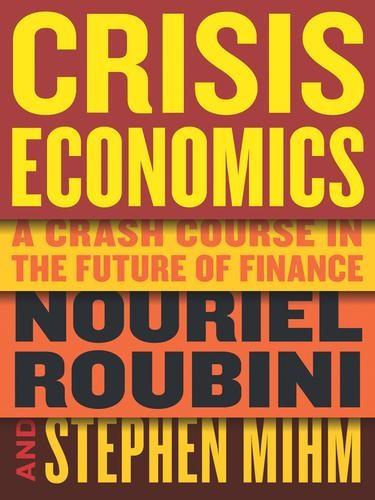
Crisis Economics: A Crash Course in the Future of Finance
by
Nouriel Roubini
and
Stephen Mihm
Published 10 May 2010
This account is but a sampling of the crises that plagued the nineteenth century; there were many, many more: the panics of 1819, 1837, 1866, and 1893, to name a few. All had their unique qualities, but many shared a common set of features. Typically they began in more developed economies after excessive speculative lending and investments went bust, triggering a banking crisis. As the global economy sputtered and slowed, countries on the periphery that depended on exporting commodities saw their economies wither. Government revenue collapsed, leading some countries to default on their domestic debt, if not loans from overseas. In some cases, these defaults spurred additional meltdowns at the economic core, as investors in these emerging markets lost their shirts.
…
But during the catastrophic crash of 1929, as the crisis spun out of control, the Fed stood idly by. Rather than pursuing an expansionary monetary policy, it tightened the reins, making a bad situation even worse. As a consequence, the money supply sharply contracted between 1929 and 1933, leading to a severe liquidity and credit crunch that turned a stock market bust into a banking crisis and eventually into a severe economic depression. The reaction of the rest of the federal government wasn’t much better. Andrew Mellon, Herbert Hoover’s Treasury secretary, believed a purge was necessary. Hoover described Mellon as a “leave-it-alone liquidationist” who had no pity for those caught in the crisis.
…
In fact, a financial crisis engulfed Norway in the late 1980s and persisted into the early 1990s, when much of the banking system in both Finland and Sweden collapsed, a casualty of the collapse in Russian demand for Scandinavian goods after the fall of the Berlin Wall. In the United States in the late 1980s and early 1990s, savings and loan associations saw their loans go bad as the real estate bubble popped. Upwards of 1,600 banks eventually went under, and although this banking crisis was not as severe as the recent global financial meltdown, it nonetheless led to a credit crunch, a painful recession in 1990-91, and significant fiscal costs of nearly $200 billion (in 2009 dollars). While the United States did see volatility subside in the 1990s, countries in Latin America and Asia endured a number of crippling crises that centered on speculative booms and excessive debt in different sectors of the economy.
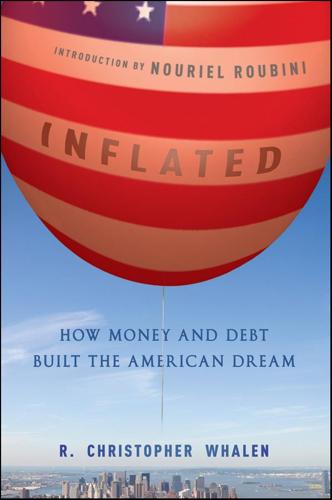
Inflated: How Money and Debt Built the American Dream
by
R. Christopher Whalen
Published 7 Dec 2010
As the historians of the era have documented, more value was destroyed in the early 1930s than in the 1929 market crash. On March 4, 1933 President Franklin Roosevelt took office. Most of the nation’s banks were closed and panic ruled the streets of American cities and towns. New York, which held out almost a month after the bank crisis began in Michigan, declared a bank holiday on the morning of Inauguration Day. Terrified citizens were lined up outside New York banks as the new president took his oath of office. Ten days after FDR’s inauguration, he ordered an extended bank holiday. Even as the stronger banks in the nation gradually were allowed to re-open, the banks in Detroit remained closed.
…
Almost a million individuals and businesses in Michigan were cut off from their funds for over a month and the larger depositors of the banks—including Henry Ford—were compelled to wait for the liquidation of the insolvent banks. Jesse Jones, the legendary chairman of the Reconstruction Finance Corporation under FDR, laid the blame for exacerbating the Banking Crisis of 1933 at the feet of Ford and Couzens: Detroit’s banking collapse may have been inevitable, the situation in the sorely stricken automobile industry being what it was, and the laws being what there were at the time; but the circumstances would have been less painful, the personal tragedies fewer, had not insurmountable difficulties been created by personal, industrial, and political hostilities at almost every step of our approach to the problem in February 1933.56 Malcolm Bingay, editor of the Detroit Free Press, interviewed Couzens several times following the crisis of 1933.
…
The truth is that neither governing party really understood nor controlled the path of the economy during the Depression. The Democrats actually controlled Congress during Hoover’s presidency, so they cannot escape a fair share of responsibility for not foreseeing the catastrophe. FDR and the Democrats clearly worsened the banking crisis in 1932 by refusing to cooperate with the incumbent Hoover during the long transition period from November to March. The handoff of power between Hoover and FDR in March 1933 was painful, culminating with the oath of office as most of the nation’s banks stood closed. The transition in 1933 provided an especially fateful example of why the period of time from the election of a president to inauguration had to be shortened by the Twentieth Amendment to the Constitution that same year.
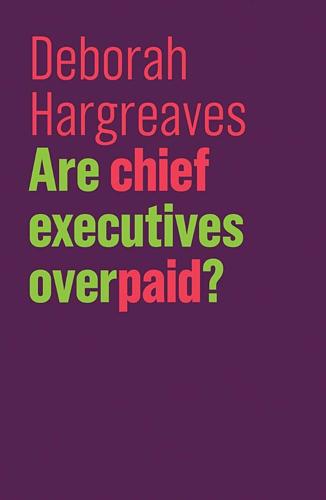
Are Chief Executives Overpaid?
by
Deborah Hargreaves
Published 29 Nov 2018
However, when the stock market fall came, it turned out that this so-called portfolio insurance not only did not protect their investments from losses, but actually exacerbated the decline. I was to witness this exuberance and neglect of the dangers in the build-up to many more market downfalls – right up to the banking crisis of 2008. Greed has become one of the driving forces for many in our executive class, trumping long-term considerations about the future of their companies and the workforce, even overcoming fears about the fragility of capitalism itself. When there is the opportunity of enriching yourself to the extent that you and your family need never work again, who would not avail themselves of the option?
…
So, for example, when business warned about the dangers of Brexit, they were ignored. And tellingly, when government called on retailers to warn about rising prices as a result of Scottish independence during the referendum in 2015, they were actively ridiculed. Trust in business plumbs the depths Trust in business has imploded since the banking crisis of 2008, according to Edelman, the public relations company, which has been mapping it for 18 years with its Trust Barometer.14 In recent years it has reported a crisis of trust around the world in business leaders, as well as politicians, media and non-governmental organizations. The Barometer has picked up unease among people all over the world who feel the system is biased against them and in favour of the rich and powerful.
…
In the US, the top 1 per cent have seen their income grow twenty-five times more than the rest of the population since 2008 – taking some 85 per cent of the increase in income during that decade. In the UK, those households with income of £275,000 or more had quickly recovered from the slump brought on by the banking crisis, and their share of national income had returned to the level of pre-2007, according to research by the Resolution Foundation. But the other 99 per cent of UK households have not fared so well, with low- to middle-income households seeing their income fall. Another part of the debate on taxes is the need to close loopholes that enable the wealthy and big corporations to shelter their income in offshore jurisdictions.

The Price of Time: The Real Story of Interest
by
Edward Chancellor
Published 15 Aug 2022
After Alexander the Great seized and distributed large stocks of Persian gold and silver, prices are said to have risen and interest rates declined.53 Suetonius, in The Twelve Caesars, describes how, when the Emperor Augustus brought the treasure belonging to the kings of Egypt back to Rome, money became plentiful and interest rates fell from 6 to 4 per cent.54 After Augustus’ death, the Emperor Tiberius hoarded money, with the result that interest rates rose above the legal limit and a banking crisis erupted in AD 33. Tiberius then decided to lend out the imperial treasure free of interest to patrician families, which brought about an immediate decline in interest rates and an end to the crisis.55 His actions constituted the world’s first experience of quantitative easing.fn9 In short, the ancient history of interest provides no strong support for any particular view as to how the rate of interest is formed.
…
It is no surprise, therefore, to discover that canal-projecting was most intense when interest rates reached a low point.26 The economist and statistician Thomas Tooke considered the fall in interest rates, which dipped below 3 per cent in the 1790s, as ‘both a cause and an effect of the great extension of the country bank system which about that time took place’.27 The canal mania ended with a banking crisis in 1793 after war broke out with Revolutionary France. In February 1797, a small French force landed near Fishgard in Pembrokeshire, Wales, and immediately surrendered to British troops. The main consequence of this invasion of British soil was to trigger a financial panic, followed by an Order in Council permitting the Bank of England to suspend gold payments.
…
Until such a doctrine is repudiated by the banking interest, the difficulty of pursuing any sound principle of banking in London will be always very great.61 A sympathetic reviewer of Hankey’s Principles of Banking in The Times warned against suspending the Bank Act: ‘whenever it [suspension] has taken place houses which were insolvent and ought to have fallen beneath the attacks of their distrustful creditors have been enabled to weather the storm only to fall at length into greater ruin.’62 The reviewer didn’t say as much, but had the Bank Charter Act not been suspended during the earlier banking crisis of 1857, Overend Gurney would probably have failed at that date, thus sparing the City from the ‘reign of terror’ nearly a decade later.63 It is no coincidence that the chief proselytizers for central bank accommodation came from banking families. The family fortunes of both Baring and Bagehot were endangered by uncontrolled panics.
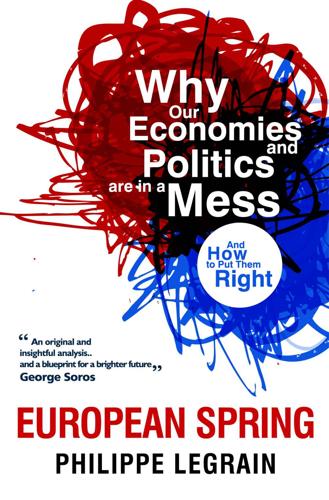
European Spring: Why Our Economies and Politics Are in a Mess - and How to Put Them Right
by
Philippe Legrain
Published 22 Apr 2014
Unsurprisingly, both the firm and bank soon went out of business, the latter by merging with a large commercial bank that was rescued by the government in 1991. See Erling Steigum, "Financial Deregulation with a Fixed Exchange Rate: Lessons from Norway’s Boom-Bust Cycle and Banking Crisis", 2003. http://www.norges-bank.no/Upload/import/publikasjoner/skriftserie/33/chapter2.pdf 389 The banking crisis started in the late 1980s in Norway and in the early 1990s in Finland and Sweden. 390 They extended loans worth 20 per cent of Swedish GDP, pumping up local housing bubbles, with Swedbank and SEB in particular taking big risks. http://www.economonitor.com/analysts/2009/06/24/swedish-banks-could-they-get-burned-by-heavy-baltic-exposure/ 391 Personal calculations from Office for National Statistics, net financial liabilities of households and non-profit institutions serving households (code: AF.L) divided by four-quarter moving sum of their gross disposable income (code: RPHQ).
…
The lesson from Lehman was not that governments must save all banks, but rather that failed banks should be restructured or killed off in an orderly way rather than a chaotic one. In the absence of legal mechanisms for winding down banks in an orderly fashion, insolvent banks should either have been nationalised, restructured and recapitalised before being sold off again (as Norway did during its banking crisis in the early 1990s) or new “good banks” created and the old “bad banks” wound down, as I argued in Aftershock.68 Either option – nationalisation or the creation of new good banks – would have been infinitely preferable to the current mess. It would have boosted the economy, because the freshly capitalised good banks, unburdened by the old bad loans and securities, could have quickly resumed their proper function of lending to sound companies.
…
In short, the euro itself did not cause the financial excesses in the pre-crisis years, which occurred across the Western financial system. Indeed, in Act One of the crisis, after the bubble burst, it acted as a shock absorber. Nor has the euro prevented its member economies from adjusting. While it might fail, it is not destined to. Last but not least, the vicious interaction between a banking crisis and a bond-market panic that tore the eurozone apart between 2010 and 2012 was largely due to avoidable policy mistakes in Frankfurt, Brussels and Berlin, as we shall see. What really went wrong It was only in Act Two of the crisis after the bailout of Greece’s creditors in 2010 and even more so in Act Three after the summer of 2011 that the euro became an unstable system that amplified shocks rather than damping them.
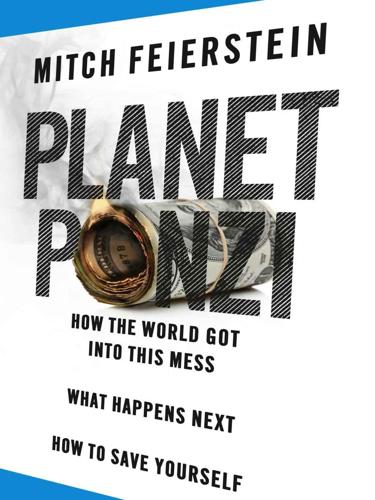
Planet Ponzi
by
Mitch Feierstein
Published 2 Feb 2012
(It managed to lose £10 billion in a single year.24) There may well, in other words, be a large European bank, or several large European banks, that are even now sliding toward the waterfall, utterly oblivious of what’s about to happen. And if one large bank goes over the edge, there are countless more in danger of following. When and if the banks start to collapse, the fiscal consequences for governments will be horrendous, no matter how prudent they seek to be. A European banking crisis will therefore also be a European sovereign debt crisis—which in turn will make the banking crisis even worse. * This survey won’t have cheered up too many readers. It’s also raised countless questions. What about Germany? What about the current European bailout fund, the EFSF? What about the euro—can the European currency even survive?
…
The origins of that scheme go way back—at least three decades, if you think only of Wall Street, but arguably as much as sixty years if you think of the federal government. Naturally, I’m aware that my claim sounds implausible, but I hope it doesn’t strike readers as entirely implausible. After all, just a few years ago in 2008–9, part of the Ponzi scheme was laid bare for all to see in the shape of the subprime mortgage bust and the consequent banking crisis. That crisis was already the largest Ponzi scheme in history, so the track record is there. As for what’s happening today, this book will attempt a patient accounting of the scheme, its debts, its losses, its strategies of concealment. In particular, we’ll find ourselves, again and again, running across the following ingredients, key to any Ponzi scheme: exponentially increasing liabilities—or, in plain English, rapidly mounting debt; crappy, nonexistent, or inadequate assets; deceitful or nonexistent accounting; feeble, inert, or toothless regulators; a get-rich-quick culture, for preference salted with a whole array of inappropriate incentives; stupid, ignorant, lazy investors—the greedier, the better; and an astonishing capacity for self-delusion.
…
For many companies, the answer will be obvious. And there’s part of the explanation for the US’s current high levels of joblessness and underemployment. That was the background in 2008 when President Obama swept into power with a mandate for change. He had the inbox from hell already—Iraq, Afghanistan, banking crisis, recession—but the pressing need for healthcare reform dumped another huge problem on to the To Do list. Right at the top of the reform agenda should have been the topic of cost. There was no other sane priority. In case you should doubt that, take a look at the projected costs of Medicare and Medicaid over the next seventy years in figure 3.5.28 The data are drawn from a 2011 study conducted by the nonpartisan Congressional Budget Office.
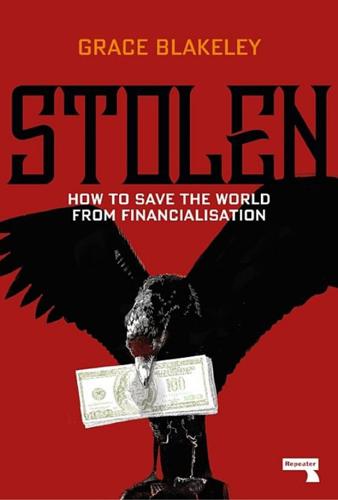
Stolen: How to Save the World From Financialisation
by
Grace Blakeley
Published 9 Sep 2019
In fact, the way the bailouts were conducted reinforced the logic of finance-led growth: the state would use its power to give the markets what they wanted, and working people would be forced to pick up the tab. Transatlantic Banking Crisis or Structural Crisis of Financial Capitalism? Reading this account on its own could lead one to conclude that what happened in 2007 was simply a transatlantic banking crisis with its origins in the US. It then spread around the world due to a combination of financial globalisation and financial innovations like securitisation. In the aftermath of the crash, this is the view that dominated.
…
The Rise of Global Finance The Political Consequences of Social Democracy Never Let a Serious Crisis Go to Waste Chapter Two Vulture Capitalism: The Financialisation of the Corporation The Big Bang Corporate Raiders, Hostile Takeovers and Activist Investors From Downsize and Distribute to Merge and Monopolise Chapter Three Let Them Eat Houses: The Financialisation of the Household The Enemy Within Privatised Keynesianism Blowing Bubbles Financialisation and Politics Chapter Four Thatcher’s Greatest Achievement: The Financialisation of the State Thatcher’s Greatest Achievement PFI: Profits for Investors The Bond Vigilantes Illiberal Technocracy Chapter Five The Crash Bubble Economics Financial Globalisation Securitisation, Shadow Banking and Inter-Bank Lending Bailout Britain Transatlantic Banking Crisis or Structural Crisis of Financial Capitalism? Chapter Six The Post-Crisis World The Long Recovery Secular Stagnation or Crisis of Capitalism? Austerity Economics Property-Owning Oligarchy The Coming Crisis Chapter Seven The Way Forward Capital Democratic Socialism Socialising Finance Finance for the People Conclusion Beyond Capitalism Notes Acknowledgements For my grandad, who taught me what it means to be a socialist, and my grandma, who taught me that only strong, intelligent, stubborn women have ever changed the world.
…
The Anglo-American model was premised upon the kind of debt-fuelled asset price inflation that has always resulted in bubbles. The one that burst in 2008 just happened to be the largest, most global, and most complex bubble that has ever been witnessed in economic history. In this sense, 2008 wasn’t simply a transatlantic banking crisis, it was the structural crisis of financial capitalism, emerging from the inherent contradictions of finance-led growth itself. The political regime of privatised Keynesianism, necessary to mitigate the fall in demand associated with low-wage, rentier capitalism, was always inherently unstable.
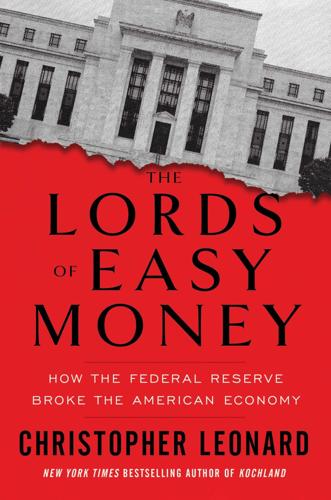
The Lords of Easy Money: How the Federal Reserve Broke the American Economy
by
Christopher Leonard
Published 11 Jan 2022
Bernanke had suggested that the central bank of Japan could end that nation’s slump by depreciating the value of its currency to stimulate exports, even though inflation would jump to a very high 3 or 4 percent. Bernanke had backed off most of this by the time he became Fed chairman, but he had never lost his interest in experiments. The stagnant economy of 2010 encouraged such experiments. Economists knew that it would take years to recover from the banking crisis, but the reality of high unemployment so long after the crash was still shocking. The unemployment rate was still above 9 percent and economic growth remained weak. There was a crisis gathering strength in Europe thanks to deeply indebted nations like Greece and Spain. These problems, if left unaddressed, could create a cascading effect across the world.
…
As a kid, he’d helped his dad tally the family store’s inventory. As a soldier, he’d helped calculate the trajectory of artillery shells. At the Fed, Hoenig helped analyze the constant inflow of data about banks inside the Kansas City Fed’s large district. This is how Hoenig got a front-row seat to observe the biggest banking crisis since the Great Depression. * * * Hoenig’s job involved a lot of arguments with local bankers. The substance of the disputes usually centered on a topic of paramount importance: the value of assets. The bankers often thought that their assets were worth more than the bank examiners thought they were worth.
…
He got to see what happens when a long period of inflation comes to a sudden, unexpected stop. “You have this enormous collapse,” Hoenig said. “Failure upon failure, loss upon loss, crisis upon crisis.” CHAPTER 3 THE GREAT INFLATION(S) (1980–1991) Hoenig was thirty-three years old when the banking crisis started. But the forces that combusted in 1980 had been building for many years. Hoenig’s team of examiners in Kansas City could see for themselves that banks had been making riskier and riskier loans for years. But the bankers could always justify what they were doing. They were using a certain logic that was made possible only by the wild distortions of the Great Inflation of the 1970s.
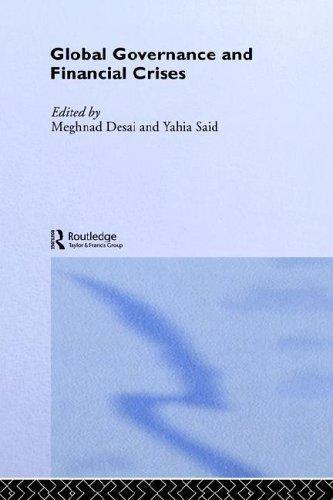
Global Governance and Financial Crises
by
Meghnad Desai
and
Yahia Said
Published 12 Nov 2003
Another possibility is that the central bank is forced to restrict credit because of fears of “overheating” and inflation. The result of one or both of these events is that the prices of real estate and stocks collapse. A banking crisis results because assets valued at “bubble” prices were used as collateral. There may be a foreign exchange crisis as investors pull out their funds and the central bank chooses between trying to ease the banking crisis or protect the exchange rate. The crises spill over to the real economy and there is a recession. 22 Franklin Allen and Douglas Gale In the popular press and academic papers, these bubbles and crises are often related to the particular features of the country involved.
…
Similar events occurred in Norway, Finland and Sweden in the 1980s (see Heiskanen 1993; Drees and Pazarbasioglu 1995). In Norway, the ratio of bank loans to nominal GDP went from 40 percent in 1984 to 68 percent in 1988. Asset prices soared while investment and consumption also increased significantly. The collapse in oil prices helped burst the bubble and caused the most severe banking crisis and recession since the war. In Finland, an expansionary budget in 1987 resulted in massive credit expansion. The ratio of bank loans to nominal GDP 20 Franklin Allen and Douglas Gale increased from 55 percent in 1984 to 90 percent in 1990. Housing prices rose by a total of 68 percent in 1987 and 1988.
…
In recent years many countries have had banking crises. These include the cases of Japan, Norway, Finland, Sweden and Mexico considered in the introduction. Many emerging countries have also had severe banking crises. Lindgren et al. (1996) find that 73 percent of the IMF’s member countries suffered some form of banking crisis between 1980 and 1996. There are two traditional views of banking panics. One is that they are random events, unrelated to changes in the real economy. The classical form of this view suggests that panics are the result of “mob psychology” or “mass hysteria” (see, for example, Kindleberger 1978).
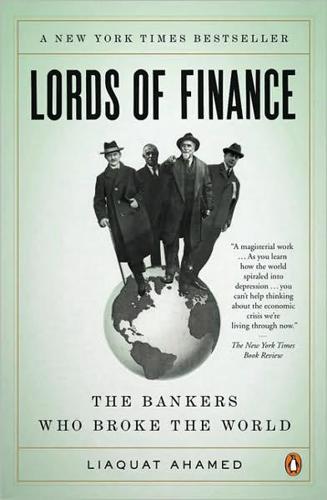
Lords of Finance: The Bankers Who Broke the World
by
Liaquat Ahamed
Published 22 Jan 2009
That same afternoon it was reported that Austria had declared war on Serbia and was already bombarding Belgrade. Despite this news, Norman, “feeling far from well” under the strain of the painful negotiations, decided to return to the country. Neither he nor almost anyone else in Britain imagined that over the next few days the country would face the most severe banking crisis in its history; that the international financial system, which had brought so much prosperity to the world, would completely unravel; and that, within less than a week, most of Europe, Britain included, would have stumbled blindly into war. Norman, indeed most of his countrymen, had paid only cursory attention to the brewing European crisis over the previous month.
…
He even turned on his erstwhile patron Stresemann, whom he accused of having undercut him by caving in to the Allies behind his back even before the conference had started and of now making him the scapegoat for the political fallout at home. While Schacht, even at this stage, would have been willing to go for broke and risk a global banking crisis, his government was not. Fearing that Germany would once again become a pariah nation, the cabinet disavowed his position, forced him to recant, and insisted that he return to Paris and resume negotiations on the basis of the last Allied proposal. He reluctantly agreed, provided the cabinet gave him political cover by publicly accepting final responsibility for any settlement.
…
Over the next few days, as the Fed did just that, New York City banks took over $1 billion in brokers’ loan portfolios. It was an operation that did not receive the publicity of the Morgan consortium, but there is little doubt that by acting quickly and without hesitation, Harrison prevented not only an even worse stock collapse but most certainly forestalled a banking crisis. Though the crash of October 1929 was by one count the eleventh panic to grip the stock market since the Black Friday of 1869 and was by almost any measure the most severe, it was the first to occur without a major bank or business failure. The market traded up for the last couple of days of October.
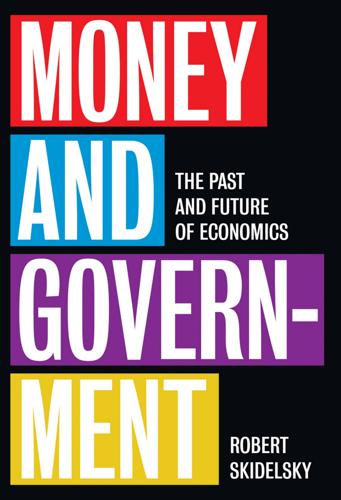
Money and Government: The Past and Future of Economics
by
Robert Skidelsky
Published 13 Nov 2018
Financial flows multiplied relative to trade flows: in 2011, the total exports of merchandise and commercial services increased by $21.3 trillion, while the volume of foreign exchange transactions reached $4 trillion 332 g l ob a l i m b a l a n c e s g 62. Capital p g crises2 Figure mobilityy and banking 1.0 Capital mobility 0.9 index Percentage of countries in banking crisis, 3-year sum 0.8 capital mobility percentage of countries in banking crisis 0.7 0.6 40 35 30 25 0.5 20 0.4 15 0.3 10 0.2 5 0.1 0.0 1900 1910 1920 1930 1940 1950 1960 1970 1980 1990 2000 0 2010 a day. Trading in liquid assets – bank loans and equities – dwarfed direct foreign investment. An uncontrolled banking system was left free to place its bets anywhere.
…
Widely resisted at the time on the high ground of ‘moral hazard’, it led to the Bank organizing the rescue of Barings in 1890. This was the doctrine that the US Federal Reserve signally failed to apply in the Lehman Brothers crisis of September 2008, and which the European Central Bank was debarred by law from applying in the European banking crisis that followed. V. Bi m e ta l l ism Until the early 1870s, the international monetary system was bimetallic: some countries, like Britain, were on a gold standard, and other countries, like France, were on both gold and silver standards. The customary ratio of exchange between gold and silver was 1:15.
…
There can be a period of ‘crawling along the bottom’, or anaemic growth, or very strong (above-trend) recovery. A stylized representation of recovery from 2008–9 would look like this: Asia V-shaped; US U-shaped; Europe a combination of L-shaped (flat-lining) and W (double-dip). 5. Once the corner had been turned, the narrative of the Great Recession changed drastically. The banking crisis turned into a fiscal crisis, and the public debt problem took centre stage. It was at this point that the arguments for austerity began to gain traction. Austerity policies aimed to restore fiscal balances. The restoration of fiscal balance was seen as the necessary condition for recovery of private sector confidence, and hence investment and economic growth.
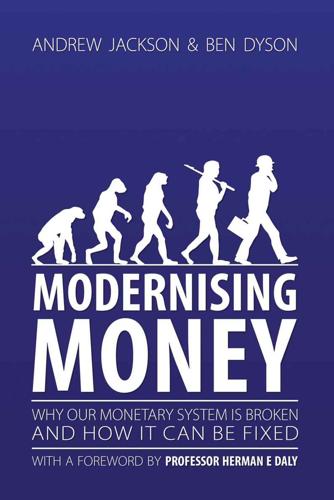
Modernising Money: Why Our Monetary System Is Broken and How It Can Be Fixed
by
Andrew Jackson (economist)
and
Ben Dyson (economist)
Published 15 Nov 2012
While the increases in asset prices and the money supply may create the impression of a healthy, growing economy, this ‘boom’ is in fact fuelled by an increasing build-up of debt (since all increases in the money supply are a result of increases in borrowing). The current monetary system therefore sows the seeds of its own destruction – households and businesses cannot take on ever-increasing levels of debt, and when either start to default on loans, it can cause a chain reaction that leads to a banking crisis, a wider financial crisis, and an economy-wide recession. Financial crises therefore come about as a result of banks’ lending activities. As Adair Turner, head of the UK’s Financial Services Authority, puts it: “The financial crisis of 2007/08 occurred because we failed to constrain the private financial system’s creation of private credit and money.” (2012) The boom-bust cycle is also caused by banks’ credit creation activities.
…
In economic terms the permanent loss to the world economy has been estimated at a staggering $60 - $200 trillion, between one and three years of global production. For the UK the figures are between £1.8 and £7.4 trillion (Haldane, 2010). Yet while the 2007/08 crisis was undoubtedly a surprise to many, it would be wrong to think that banking crises are somehow rare events. In the UK there has been a banking crisis on average once every 15 years since 1945 (Reinhart and Rogoff, 2009), whilst worldwide there have been 147 banking crises between 1970 and 2011 (Laeven and Valencia, 2012). It seems clear that our banking system is fundamentally dysfunctional, yet for all the millions of words of analysis in the press and financial papers, very little has been written about the real reasons for why this is the case.
…
These results point to a serious problem with the current monetary system – the financial sector is perfectly capable of destroying itself and the rest of the economy with it on a periodic basis. Worryingly these crises tend to occur with some regularity – in the UK there has been 12 banking crises since 1800, with 4 of those coming since 1945 (Reinhart & Rogoff, 2009). Globally the situation is similar – Figure 4.4 shows the percentage of countries in a banking crisis between 1800 and 2007 (so excluding the most recent financial crisis) fig. 4.4 - Percentage of Countries affected by Banking Crises Source: Reinhart and Rogoff, 2008 Box 4.F - The house price bubble In the years preceding the most recent financial crisis, bank lending created a bubble in the property market in several countries.
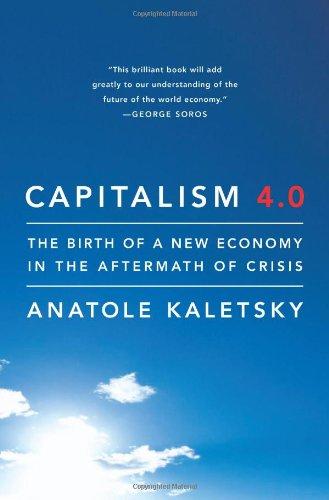
Capitalism 4.0: The Birth of a New Economy in the Aftermath of Crisis
by
Anatole Kaletsky
Published 22 Jun 2010
Thus, the first inference usually drawn from this experience is that deep recessions are inevitable after banking crises, even when these crises are vigorously managed. The second inference is that a banking crisis that is managed less skillfully than Sweden’s will surely produce a much worse recession, as it did in Japan. Luckily for the world, neither of these commonly accepted conclusions stands up to scrutiny. In the Swedish case, the recession actually began in 1990, almost two years before the banking crisis, and was caused by an extreme policy of high interest rates, which were raised at one point to above 100 percent in a desperate attempt to defend the Swedish kronor’s exchange rate against the deutsche mark.
…
Moreover, examining the causal connections the other way round, several extreme financial crises in recent history were not associated with broader economic downturns at all. The clearest such example is also one that refutes the conventional view that Japanese-style economic and financial paralysis must follow if zombie banks are kept on government life support and their losses hidden or disguised. By far the biggest banking crisis in postwar history prior to 2007-08 occurred from 1982 to 1989, when Mexico, Brazil, Argentina, the Philippines, and many other developing countries defaulted on bank loans worth several times more than the capital of the global banks. As a result, almost every major bank in the United States and Europe was technically insolvent throughout this five-year period.
…
Capitalism 4 will differ from Capitalism 3 by recognizing that these two desirable objectives are in conflict, but it cannot resolve this tension by sacrificing all financial innovation and creating a static financial system or by resorting to the overweening government intervention of Capitalism 2. Advanced capitalist countries, especially those with large and dynamic financial sectors such as the United States, Britain, and Switzerland, must resist populist demands to strangle nonbank financial institutions with punitive regulations inspired by the banking crisis. These countries have a clear comparative advantage in international finance. In a world of free trade, where prosperity generally progresses when nations specialize in their areas of comparative advantage, it is natural for Anglo-Saxon countries to have larger financial sectors and smaller manufacturing sectors than other countries.

When the Money Runs Out: The End of Western Affluence
by
Stephen D. King
Published 17 Jun 2013
Location decisions are unlikely immediately to change as a consequence of a sudden shift in the exchange rate, particularly now that corporate treasury departments use hedging strategies to insure against unanticipated movements in the currency markets. And there is another big difference. The US may have had a huge banking crisis in the 1930s but the UK did not. Monetary policy therefore could feed through to the broader economy relatively easily. That no longer applies: in the UK, thanks to an enormous banking crisis, the monetary drugs no longer appear to have the power of old. Despite these objections, there are plenty of people who argue that what the world needs now is a bigger dose of 1930s medicine, another New Deal, another period of economic stimulus to match the policies of the Depression era that reversed the earlier attachment to austerity and liquidation.
…
Even financially conservative countries succumbed to ongoing disappointment. Although Germany's decline in 2008 and early 2009 was followed by a strong trade-led recovery, the momentum didn't last: by 2012, German exporters were being hit by a collapse in demand in southern Europe as a global banking crisis evolved into a eurozone sovereign crisis. Absent a decent recovery, the process of repaying debt – of deleveraging – has been made all the more difficult. Having thought they could grow their way out of their debt difficulties, Western policy-makers have been forced to rethink their plans. Worse, persistently low levels of economic activity have made it much more difficult to deliver on the promises made before the onset of the financial crisis.
…
The standard cyclical argument is simply that a country faced with deficient demand will have plenty of spare capacity and, hence, is unlikely to be able to generate conditions that might put upward pressure on prices. Even if the economy has entered into an extended period of stagnation, inflation will still be unlikely, particularly if the stagnation partly results from a banking crisis that chokes off the effect of the central bank's printing press on the broader economy: Japan's two lost decades provide the perfect example of such conditions. Yet, even in the most extreme recessionary circumstances, it is still possible to generate higher inflation. Roosevelt, after all, managed to do so between 1933 and 1936, fulfilling the pledge made in his May 1933 fireside chat, even though the US economy was, by then, but a shadow of its former self.

The Economics of Enough: How to Run the Economy as if the Future Matters
by
Diane Coyle
Published 21 Feb 2011
Indeed the financial crisis might have further to go, depending for instance on whether European governments such as Greece can repay their debts, or how high unemployment stays and for how long. To say the economy is in a mess is an understatement. Any recession is unwelcome because people lose their jobs, and this has been no ordinary recession. The banking crisis made it the deepest since the Great Depression. The recovery will be a long, slow haul, and there will be a legacy of spending cuts, tax increases, and a huge government debt burden in many countries. The debate about public spending is not whether it will have to be cut, but rather how much and how quickly.
…
The institutions, the rules for governing how we organize the large and complicated societies of the modern world, lag behind people’s behavior as they go about their day-to-day activities—working, spending, investing, saving. The sense of crisis will come to a head due to some trigger—in the mid-1970s it was the OPEC oil price rise, in 2008 the near-collapse of the global financial system. The current structural fragility revealed by the banking crisis has deeper causes. These lie in a dramatic series of technological innovations since the late 1970s, the information and communication technology (ICT) revolution. The financial sector is the most dramatic example of the way ICTs have revolutionized ways of organizing business and relationships in the economy.
…
But some people have started to challenge this presumption. In the richest countries the relevance of growth as the central aim of policy has increasingly come to be questioned. The consumerism of the boom era has generated something of a sense of revulsion; as the economic and financial dust settles after the banking crisis, a sort of existential introspection questioning the moral basis of the economic order has set in. Don’t Western consumers have enough? And even though growth is agreed to be vital still for poor countries, it is often thought to come at a high cost—for example, in terms of its effects on traditional culture or urban squalor.
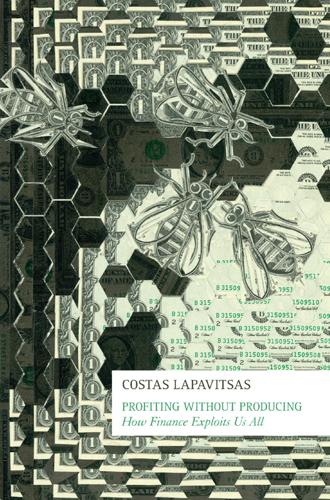
Profiting Without Producing: How Finance Exploits Us All
by
Costas Lapavitsas
Published 14 Aug 2013
As a result tradable securities created by the financial system on the back of household mortgages became gradually illiquid; consequently, banks began to face difficulties in accessing fresh funds in the money market; hence holders of financial liabilities associated with banks started to withdraw from the markets. A systemic banking crisis of liquidity and solvency gradually emerged. The immediate causes of the banking crisis in the US have been extensively discussed in the economic literature, attention being paid to the emergence of the ‘shadow’ banking system associated with money market funds and derivatives markets.31 Briefly put, money market mutual funds (MMMF) operating in the money markets diverted retail deposits away from ‘traditional’ banks; commercial banks securitized assets and moved them off the balance sheet; repurchase agreements (repos) were widely deployed to give liquidity to securitized bonds.
…
While a traditional bank run amounts to the mass withdrawal of deposits, a securitized bank run amounts to the mass withdrawal of repurchase agreements (repos). The cause of the run was concern about the liquidity of the bonds used as collateral for repos, particularly when these bonds were related to the subprime market. The result was that the US financial system became insolvent since it could not service its debts. The causes of the US banking crisis have also been attributed to the emergence of banks that are ‘too big to fail’. This issue is directly related to the regulation of the financial system – and is thus discussed in Chapter 10 – but it also has a bearing on the unfolding of the crisis. Lisa DeFerrari and David Palmer recognized the dominant role of a few financial institutions already in the early 2000s, coining the term ‘large complex banking organizations’.
…
Constriction of the supply of credit by banks and markets forced enterprises to cut back on output and employment; consumption declined as worried and over-indebted households rearranged expenditure; export markets collapsed, particularly for automobiles and consumer electronics. Developing countries also suffered as capital flows became problematic, necessitating emergency borrowing. The global turmoil that broke out in 2008 was thus spurred by a banking crisis and the ensuing tightening of credit. Pools of credit completely disappeared as financial institutions abandoned securitization; banks tightened credit provision in an attempt to improve liquidity and solvency; laden with debt and confronted with falling housing markets, households drastically reduced borrowing; aggregate demand declined, impacting on firm inventories, output and employment; investment collapsed across mature capitalist countries; international trade fell, contributing to a general recession.
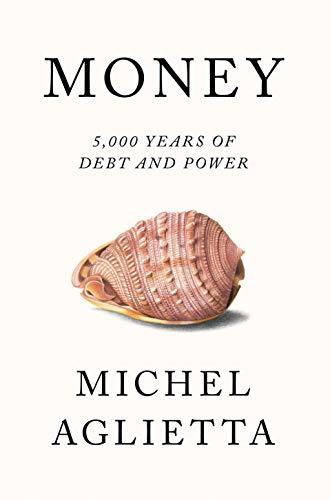
Money: 5,000 Years of Debt and Power
by
Michel Aglietta
Published 23 Oct 2018
By granting overdrafts to the banks that accepted its supervision, the Suffolk Bank created interbank liquidity ex nihilo, which safeguarded the convertibility of notes even during banking crises. The other famous system was the New York Clearing House Association (NYCHA) created in 1853. This dealt with banking panics by issuing Clearing House Loan Certificates, which were successfully used during the terrible banking crisis of 1857.52 Exacerbating tensions between the economic interests of the Northeastern industrial and financial states and those of the Southern and Western states, the 1857 crisis sowed the seeds of the Civil War. THE NEED FOR A HIERARCHICALLY ORGANISED BANKING SYSTEM, AND THE ADVENT OF CENTRAL BANKS A clearing house is, then, a centralised organisation which introduces collective rationality into payment systems.
…
On the recommendation of a House commission, an 1878 law authorised the issuance of legal-tender certificates in silver, in order to mitigate the insufficiency of metal reserves in times of crisis.12 But this did not re-establish bimetallism. The quarrel over silver resumed in 1892 and reached its climax in the 1896 election campaign.13 Concerned by the erosion of metal reserves, foreign investors sought to withdraw their gold assets. Gold reserves contracted by some $45 million, with the result that, in June 1893, a banking crisis broke out in New York. John P. Morgan, pope of the city’s bankers, had to go to London to negotiate a gold loan, so that he would in turn be able to loan $65 million to the Treasury. This would allow the value of reserves to be pushed above the minimum level of $100 million. Due to his success, the United States overcame the monetary crisis.
…
Errors in appreciating asset price movements translated into massive undervaluations of credit risk, insufficient reserves, inadequate own funds, and distorted maturities. This resulted in improper exposure to the variations in short-term rates. In sum, the management of the bankers was calamitous. It was through such practices that dodgy credit accumulated during the US real estate boom from 1987 onwards. The rise in short-term rates in 1989 triggered the banking crisis. Restructuring took a long time, and required a new law, the FDICIA (Federal Deposit Insurance Corporation Improvement Act), adopted in 1991. The Act’s objective was to strengthen the legitimacy of the banks’ supervisory body in forcing the banks to manage their risks properly. The essential idea was the obligation placed on the supervisory body to take pre-emptive corrective action, and thus to detect which banks were fragile and force them to increase their own funds, or else restructure them before they fell into bankruptcy.
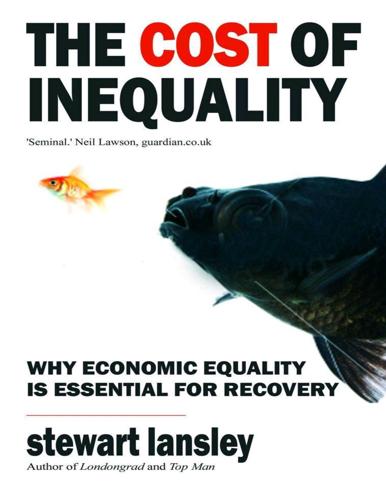
The Cost of Inequality: Why Economic Equality Is Essential for Recovery
by
Stewart Lansley
Published 19 Jan 2012
In the United States the most powerful businessman of the time was the banker JP Morgan. He was not just one of the world’s richest men at the turn of the nineteenth century, he controlled assets equivalent to some two-thirds of the nation’s output, giving him a stranglehold over American business. The banking crisis of 1907 was solved not by the intervention of government, but by a handful of private bankers led by Morgan. In the UK, the nineteenth century was the golden age of financial imperialism. Although the banks funded, through credit, the building of the nation’s infrastructure— notably the canals and railways—the lion’s share of financial investment went into overseas markets and a mix of speculative activity.
…
, op. cit. p 12-13. 142 C Toulouse, ‘Thatcherism, Class Politics and Urban Development in London’, Critical Sociology, Volume 18, 1992, p 62. 143 D Kynaston, The City of London, Volume IV, Pimlico, 2001, chapter 22. 144 Z/Yen, The Global Financial Centre Index, City of London Corporation, March 2007. 145 http://www.ifsl.org.uk/media/2333/Eco_con_of_UK_fin_ser_2007.pdf. 146 Centre for Research on Socio-Cultural Change (CRESC), An Alternative report on UK Banking Reform, University of Manchester, 2009, p 41. 147 Robin Blackburn,’ Finance and the Fourth Dimension’, New Left Review, 39, May/June, 2006. 148 Boston Consulting Group, Investment Banking and Capital Markets, Annual Reports. 149 Glyn, Capitalism Unleashed, op. cit. p 52. Elsewhere, the rise of finance proceeded somewhat less smoothly. In the 1990s, the growth slowdown in Germany and the Japanese banking crisis both led to slumps in the valuation of finance companies in those countries. 150 Merrill Lynch and Capgemini, World Wealth Report, 2010, figure 8. 151 José Gabriel Palma, ‘The revenge of the market on the rentiers. Why neo-liberal reports of the end of history turned out to be premature’, Cambridge Journal of economics, vol 33, issue 4, 2009. 152 IMF, Global Financial Stability Report, April 2009, Appendix Tables 3 and 4. 153 CRESC, op. cit. p 42. 154 Anthony Sampson, The Midas Touch, Hodder & Stoughton, 1989, p 13. 155 Quoted in R Roberts and D Kynaston, City State, Profile, 2002, p 116. 156 Bank for International Settlements, Triennial Central Bank Survey, Foreign Exchange and Derivatives Market Activity, September, 2010. 157 Harvey, Neoliberalism, op. cit. p 161; P Dicken, Global Shift, Guilford Press, 2003, ch 13. 158 N Shaxson, Treasure Islands, Bodley Head, 2011, p 74. 159 Ibid. p 78. 160 The Observer, 24 December, 2006. 161 M Hollingsworth and S Lansley, Londongrad, Fourth Estate, 2009, ch 4. 162 Ibid. 163 Michael Freedman, ‘Welcome to Londongrad’, Forbes Global, 23 May 2005; R.
…
From the beginning of the 1980s, the number of banking failures in the US started rising sharply, a problem exacerbated by the impact of bank deregulation. 231 In 1989, the bursting of a serious property bubble in Japan, triggered by a series of bank liquidity crises, led to a decade-long period of deflation and a sustained collapse in Japanese shares prices. It had been preceded by a decade of rising profits (which rose to 40 per cent of output) and soaring assert prices.232 Between 1990 and 1992, Norway, Sweden and Finland all suffered a banking crisis sparked by a similar property boom, the deregulation of financial services, and excessive lending by the banks. The economies of Sweden and Finland shrank for three years in succession. Finland’s unemployment rate hit 20 per cent in 1994. Again, only decisive action by the national governments prevented a more prolonged fall-out.
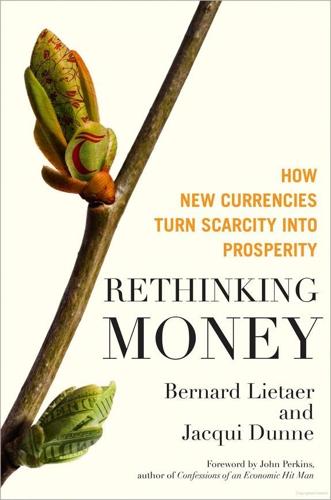
Rethinking Money: How New Currencies Turn Scarcity Into Prosperity
by
Bernard Lietaer
and
Jacqui Dunne
Published 4 Feb 2013
Perhaps the most surprising finding is that 28 percent work full-time, year round. These estimates defy the stereotypes of lowincome families.”5 The squeeze for cash has gotten more acute recently. Today, 80 percent of Americans report that they are living paycheck to paycheck. This is nearly double the figure in 2007, just before the banking crisis. One in five individuals earning over $100,000 per year report that they, too, are living from month to month.6 Savings are at an all-time low.7 Consequently, the need for credit is on an upswing while banks are not lending. The Failure of Money 13 The money system really isn’t serving humanity.
…
“Of those switchers, 610,000 U.S. adults (or 11 percent of the 5.6 million) cited Bank Transfer Day as their reason and actually moved their accounts from a large to a small institution.”2 Community Bankers of America said a poll of its 5,000 members found that nearly 60 percent of community banks are gaining customers who “are sick and tired” of the big financial institutions.3 95 96 PROSPERITY As described in Chapter 4, in functioning systems, nature leans more to resilience than efficiency. Ironically, whenever a banking crisis unfolds, governments invariably help the larger banks absorb the smaller ones, believing that the efficiency of the system is thereby increased. Instead, when a bank has proven to be “too big to fail,” why not consider the option of breaking it up into smaller units that compete with each other?
…
“The direct use of means-of-payment money (bank deposits) was removed from the transaction process. In the absence of this money, exchange activity remained relatively unaffected because the public was prepared to use undated trade credit as the instrument of exchange.”7 Another variation of the mutual credit system was used to address a different banking crisis in another decade in another country. In this case, the banks threatened to suspend lines of credit, the lifelines of many businesses. The solution that arose is still in existence today. It is actually a major contributor to that country’s ongoing monetary stability and robustness. It is perhaps surprising to learn that the country where this happened is Switzerland, one of the world’s most economically conservative and stable countries.
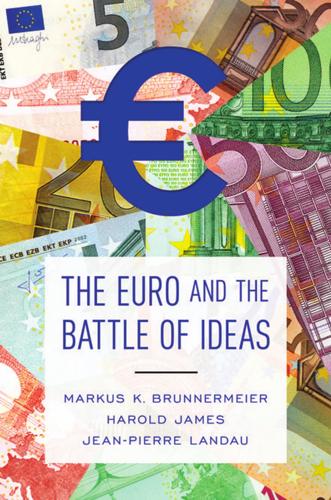
The Euro and the Battle of Ideas
by
Markus K. Brunnermeier
,
Harold James
and
Jean-Pierre Landau
Published 3 Aug 2016
This initiative met fierce resistance from France and south European central banks, who argued that at the height of the crisis only domestic banks were “willing” to buy government debt from vulnerable countries. In their view, domestic banks acted as a stabilizer for government bond markets. Forcing domestic banks to hold domestic government debt also serves as a commitment device for the government not to default on its debt since any subsequent default would trigger a widespread banking crisis and send the economy into a tailspin. Taking the domestic banks “hostage” however constitutes a “straitjacket commitment” that it is too strong as it rules out any debt restructuring even in extreme circumstances and might stifle growth in the long run. Crisis Management: Monetary Policy As we have seen, a financial economy is, by its very nature, not robust to adverse economic shocks.
…
The investment banking part of the new bank was eventually sold off to a Chinese investor, Haitong Securities, for €379 million.20 Senior bondholders in Novo Banco obtained, in effect, a guarantee through a €4.5 billion loan—an operation that provided a signal to the rest of the European banking sector. That loan may have limited possible spillover and contagion effects on the rest of the European banking sector, and fears that a new banking crisis would undermine the stabilization of the euro area receded.21 The fact that senior bondholders were still partially bailed out showed that the application of the not yet implemented rules would become very difficult. The next test of the new arrangements, which gave the ECB a great deal of power through its new supervisory powers, came with the announcement of the results of the comprehensive assessment consisting of an asset quality review (AQR) conducted by the ECB and the third EU-wide stress test, conducted by the EBA, on October 26, 2014 (a Sunday, when the markets were closed).
…
And these calls for crisis interventionism are yet another source of conflict: in the French tradition, emergency measures are part of the standard crisis-fighting toolkit, but German philosophy interprets every intervention as setting a precedent and so creating a new, permanent rules-based environment for the euro area. 11 Banking Union, European Safe Bonds, and Exit Risk Up to this point, our discussion of banking crisis mechanisms and crisis management could just as well apply to individual countries rather than entire currency blocs. We now instead turn to considerations that are special to currency unions, in particular, to one in which a deeply integrated political and fiscal union is, at least in the short and intermediate perspective, more utopia than a political feasibility.
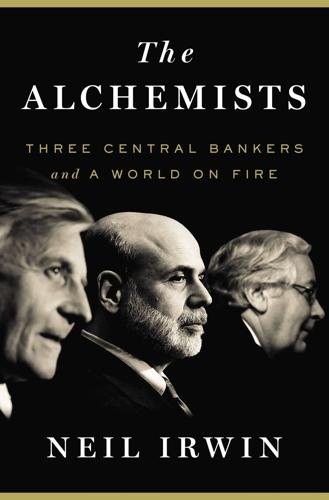
The Alchemists: Three Central Bankers and a World on Fire
by
Neil Irwin
Published 4 Apr 2013
May 11, 1931—Credit-Anstalt, a leading Austrian bank, fails, prompting a ripple effect of withdrawals and more bank failures in Germany and elsewhere in Europe. July 9, 1931—Hans Luther, head of the German Reichsbank, travels to European capitals and then to meet fellow central bankers in Basel, looking in vain for international relief from the growing banking crisis. September 21, 1931—Britain leaves the gold standard, facing economic collapse should it try to maintain the peg of the pound to the price of gold. July 22, 1944—Global economic leaders finish a conference in Bretton Woods, New Hampshire, where they agree to a world economic order for the post–World War II globe.
…
History has taught again and again that when banks shut down and hoard their money, so too do the economies they serve. A banker who’s unwilling to lend to other bankers is likely also to be unwilling to lend to the businesses and households that need money to build a factory or buy a house. If unchecked, the banking crisis in Europe could inflict untold damage on the world economy. Suddenly, the European habit of taking a lengthy late summer vacation had become very inconvenient. Gather the Executive Board, Trichet instructed Papadia. He needed to talk to the six officials from across Europe who share the collective authority to deploy the resources of the central bank—including the ability to create euros from thin air.
…
In December, it was 352 more, including the gigantic Bank of the United States. As the banking system collapsed, millions of Americans lost their savings and the supply of money in the economy shrank. The Fed and President Herbert Hoover stood by and watched and hoped. In 1931, the unemployment rate climbed to 16 percent. In 1933, it reached 25 percent. The banking crisis spread to Europe when Credit-Anstalt, one of Vienna’s largest and most important banks, failed spectacularly in May 1931, as years of lending for questionable projects caught up with it. The Austrian government guaranteed the bank’s deposits—and suddenly found its own creditworthiness in question.
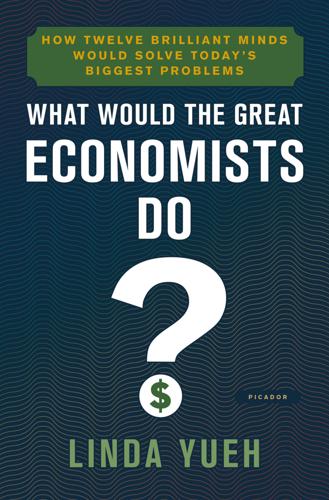
What Would the Great Economists Do?: How Twelve Brilliant Minds Would Solve Today's Biggest Problems
by
Linda Yueh
Published 4 Jun 2018
Unlike other recessions that saw a V-shaped output drop and quick recovery, the 2008 crisis has seen a sharp fall in national output or GDP (gross domestic product) but a sluggish recovery. Economists have become worried that this is our collective future. There’s even a term revived by Harvard economist Lawrence Summers to describe a slow-growth world: ‘secular stagnation’. This was a term used by Alvin Hansen in the 1930s after the last systemic banking crisis to describe the resultant slow growth due in part to ageing societies, among other issues.2 Japan is the forerunner here, as the most aged economy. How would Solow judge the slow post-crisis recovery, and would he agree that we face a slow-growth future? This question is a pervasive one in the coming years for all developed economies.
…
Yields on ten-year government debt, known as gilts, fell to record lows of around just 1 per cent after the Brexit vote. Record lows had also been reached for twenty- and thirty-year debt. It meant that, for the first time, the British government could sell debt by paying around 1 per cent interest for a decade. Even with interest rates being raised in 2017 for the first time since the banking crisis, borrowing costs remain fairly low. So, do low interest rates affect the question of whether governments should borrow to invest now? Keynes pointed out that there is no ‘crowding out’ of private investment when the economy is operating below its potential. ‘Crowding out’ refers to how governments borrowing to invest would make it harder for private firms to do so because their demand for loans would push up the interest rate and make it more expensive for others to borrow.
…
In the year following the crash, the US money supply fell by a relatively small 2.6 per cent as the Federal Reserve cut interest rates and lent heavily to the banking sector. Injecting a great deal of cash into banks gave them some much-needed liquidity and prevented the stock market collapse from precipitating an immediate banking crisis. However, the Fed believed that further loosening of monetary policy might pump up the stock market bubble and lead to inflation. Between 1930 and 1933 the US money supply contracted by over a third, coinciding with a raft of bank failures. Between October 1930 and March 1933 there were four major bank runs.
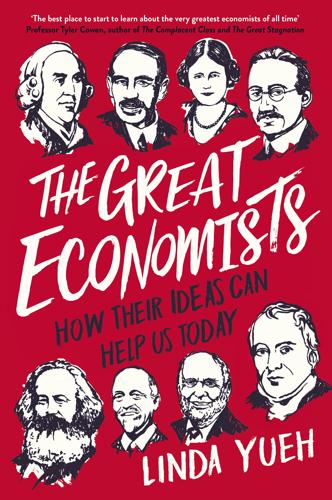
The Great Economists: How Their Ideas Can Help Us Today
by
Linda Yueh
Published 15 Mar 2018
Unlike other recessions that saw a V-shaped output drop and quick recovery, the 2008 crisis has seen a sharp fall in national output or GDP (gross domestic product) but a sluggish recovery. Economists have become worried that this is our collective future. There’s even a term revived by Harvard economist Lawrence Summers to describe a slow-growth world: ‘secular stagnation’. This was a term used by Alvin Hansen in the 1930s after the last systemic banking crisis to describe the resultant slow growth due in part to ageing societies, among other issues.2 Japan is the forerunner here, as the most aged economy. How would Solow judge the slow post-crisis recovery, and would he agree that we face a slow-growth future? This question is a pervasive one in the coming years for all developed economies.
…
Yields on ten-year government debt, known as gilts, fell to record lows of around just 1 per cent after the Brexit vote. Record lows had also been reached for twenty-and thirty-year debt. It meant that, for the first time, the British government could sell debt by paying around 1 per cent interest for a decade. Even with interest rates being raised in 2017 for the first time since the banking crisis, borrowing costs remain fairly low. So, do low interest rates affect the question of whether governments should borrow to invest now? Keynes pointed out that there is no ‘crowding out’ of private investment when the economy is operating below its potential. ‘Crowding out’ refers to how governments borrowing to invest would make it harder for private firms to do so because their demand for loans would push up the interest rate and make it more expensive for others to borrow.
…
In the year following the crash, the US money supply fell by a relatively small 2.6 per cent as the Federal Reserve cut interest rates and lent heavily to the banking sector. Injecting a great deal of cash into banks gave them some much-needed liquidity and prevented the stock market collapse from precipitating an immediate banking crisis. However, the Fed believed that further loosening of monetary policy might pump up the stock market bubble and lead to inflation. Between 1930 and 1933 the US money supply contracted by over a third, coinciding with a raft of bank failures. Between October 1930 and March 1933 there were four major bank runs.

The Making of Global Capitalism
by
Leo Panitch
and
Sam Gindin
Published 8 Oct 2012
Much of the Fed’s intervention involved purchasing foreign currencies on Franklin’s behalf, assuring foreign creditors they would be paid—and even extending its lender-of-last-resort function to Franklin’s London office, on the grounds that “the failure of Franklin to perform on such a volume of international commitments would lead to a crisis of confidence in foreign exchange markets and possibly to an international banking crisis.”85 The grounds for such fears were real enough. The UK’s 1973 “secondary banking” crisis, which was also due to the collapse of a real-estate bubble, “threatened some of the biggest financial institutions with the real risk of collapse.”86 Moreover, a broad range of European banks were revealing major losses amid the volatility in short-term capital flows that were initially triggered by both floating currencies and the recycling of petrodollars.
…
Chapter 7. 11 As Ryner explained: “The rise of a grey capital market in the wake of sustained inflation, and currency swaps by Swedish multinationals, made it impossible to maintain regulations.” J. Magnus Ryner, Capitalist Restructuring, Globalization and the Third Way: Lessons from the Swedish Model, New York: Routledge, 2002, p. 161. See also Peter Englund, “The Swedish Banking Crisis: Roots and Consequences,” Oxford Review of Economic Policy, 15: 3 (1999), pp. 80–97. This is not to say the Swedish state suddenly became “weak”; in fact, its quick response to Sweden’s massive banking crisis of the early 1990s—including socializing the banks’ bad debts, and then developing a new pension system to provide them with a steady flow of workers’ savings—showed how a “strong state” was able to harness both social benefits and strong unions to the liberalization project in the course of coping with its inherent economic instabilities. 12 Singer, Is Socialism Doomed?
…
One of his first moves was the suspension of the dollar’s convertibility into gold—thereby breaking with the Federal Reserve’s stubborn clinging to the gold standard under Hoover. So frightened were the bankers themselves by the domestic situation at the time of Roosevelt’s inauguration that they made no objection to the sweeping emergency authority he immediately secured from Congress to deal with the banking crisis, granting the Treasury extensive powers, including the power to buy up all private gold bullion and certificates as well as to provide liquidity to the banks. As Charles and Mary Beard noted, “With an alacrity suggesting spontaneous combustion, excited Representatives and Senators rushed the draft through the two houses and placed it on the President’s desk before the end of the day.
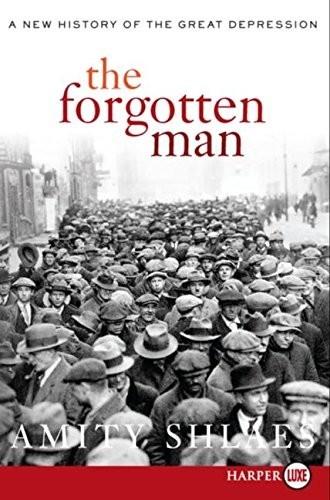
The Forgotten Man
by
Amity Shlaes
Published 25 Jun 2007
Hoover, meanwhile, was still trying to absorb what had happened to him. He paid a surprise visit to the Hoover Dam—“I never in my life saw a man look so worn out,” recalled an observer at Boulder City. Recognizing, better perhaps than any man, that something had to be done over the course of the winter to slow an alarming spread of the bank crisis, he made a point of showing himself to be a good soldier. He wrote memos. He telegraphed Roosevelt to ask for a meeting on the international debt problem—but also, really, in the hopes the two could be partners over the coming months. His moratorium was coming to an end and Britain and France were begging for reconsideration.
…
He became president of Commonwealth and Southern. He was also doubtless concerned about what was going on at home: farmers from Indiana, like those from six other states, were striking at the state capitals to win moratoria on their crushing debt and tax burdens. The uncertainty of the interregnum took its toll. When the banking crisis grew yet worse, Hoover tried contacting Roosevelt, even sending at one point a lengthy personal letter. Historians would later note that Hoover’s sense of urgency even showed up in the way he addressed the letter, misspelling Roosevelt’s name “Roosvelt.” Roosevelt was cruising the coast of Florida; Hoover expected to meet on his return.
…
He would present it all in what came to be known as the Hundred Days, that first frenzied period of legislative activity. Some of the projects were mere extensions of Hoover’s efforts, no matter what Hoover said. Roosevelt asked for war powers to handle the emergency, just as Hoover had suggested in a note during the interregnum. Hoover had called for a bank holiday to end the banking crisis; Roosevelt’s first act was to declare a bank holiday to sort out the banks and build confidence. Now Roosevelt’s team worked with Republicans to write the first emergency legislation to stop the bank runs. Hoover had had Ogden Mills; Roosevelt had another respectable man as treasury secretary, Will Woodin.

The Shifts and the Shocks: What We've Learned--And Have Still to Learn--From the Financial Crisis
by
Martin Wolf
Published 24 Nov 2015
Indeed, in one of the best-informed analyses of the crisis, Perry Mehrling of Columbia University argues that ‘it is not just the shadow banks but, more important, the larger capital-market based credit system that failed, and it is that failure that we must understand if we are to put the system back together again, and on more solid foundations this time. This financial crisis is not merely a subprime mortgage crisis or even a shadow-banking crisis; it is a crisis of the entire market-based credit system that we have constructed since 1970.’40 From the point of view of vulnerability to runs, a vital feature was that a new form of credit-backed money emerged. A working paper from the International Monetary Fund in 2012 summarized what happened: in recent decades, with the advent of securitization and electronic means of trading and settlement, it became possible to expand greatly the scope of assets that could be transformed directly, through their use as collateral, into liquid or money-like assets.
…
Given the inability to create and sustain a Eurozone-wide financial system with a Eurozone-wide fiscal backstop, a logical alternative would be to segment the financial system and so permit national governments and/or national central banks to impose controls on capital flows. By accident more than design, the exchange controls adopted by Cyprus after its banking crisis would show the way. It is particularly important to curb cross-border funding of banks as part of country-oriented macroprudential regulation. Of course, this would be a violation of the explicit goals of the Eurozone. But attempting to achieve this has not worked too well. It might be more sensible to accept that even inside a currency union, finance should be domestically focused and managed.
…
Paul Davies and Michael Mackenzie, ‘Money Fund Sector Shocked as Reserve Breaks the Buck’, Financial Times, 18 September 2012. 20. On the administration in the UK, see http://www.pwc.co.uk/business-recovery/administrations/lehman/lehman-faq.jhtml. 21. House of Commons Treasury Committee, ‘Evidence on 24th June 2009’, Banking Crisis: Regulation and Supervision, 14th Report of Session 2008–09 (London: The Stationery Office, 31 July 2009), Ev32. 22. Ibid., p. 230. 23. Francesco Guerrera, Henny Sender, Michael Mackenzie, Krishna Guha, James Politi and Daniel Dombey, ‘Fears Emerge over $700bn Rescue’, Financial Times, 22 September 2008. 24.
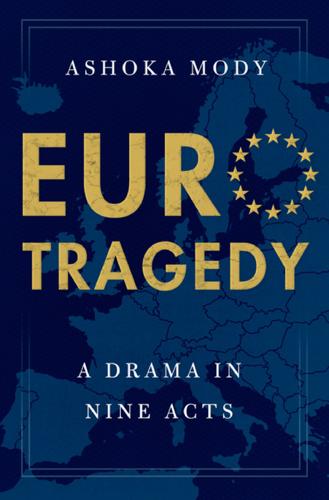
EuroTragedy: A Drama in Nine Acts
by
Ashoka Mody
Published 7 May 2018
Germany, he wrote was responding in a “rational, if not optimal” manner to the economic realities it faced.170 To most European officials, however, the brief German rebellion was— and remains—an instance of blatant and willful abuse of the rules. Indeed, in 2011, in the frenzied phase of the eurozone’s sovereign debt and banking crisis, Schröder himself did an about-face on this matter. Although he continued to mumble that Germany deserved special treatment in 2002 and 2003, he expressed regret at having shown disrespect for the SGP.171 Meanwhile, the ECB quickly established itself as a practitioner of monetary policy dominantly focused on controlling inflation.
…
Meanwhile, panic in the ABCP market spread fear to all short-term funding markets, “even those that were not exposed to risky mortgages.”7 The largely unknown IKB thus became the symbol of a major fault line in the global financial system. Other German banks— including Commerzbank, Germany’s second- largest bank—acknowledged that they had also incurred losses on their US subprime assets.8 Jochen Sanio, president of the German financial supervisory authority, dramatically declared that Germany faced its “worst banking crisis since 1931.”9 On Thursday, August 9, BNP Paribas, the largest French bank, notified investors that they could not withdraw their money from three of their funds that had purchased US subprime mortgages.10 The market value of the mortgages was declining, and BNP did not want to be left holding worthless assets while investors took their money and walked away.
…
Moody’s had lowered the credit ratings of many banks to below the minimum credit quality level required by the internal rules of some investors.114 In addition, investors were concerned that, with the yields on Spanish and Italian governments bonds soaring to “potentially unsustainable levels,” the two governments would not be able to rescue their banks. In fact, even eurozone authorities would find it difficult to mobilize sufficient resources to rescue Spain and Italy if they began tipping into a full- blown sovereign-banking crisis. The Spanish government’s debt far exceeded the sum of Greek, Irish, and Portuguese debt. The Italian government’s debt 308 e u r o t r a g e d y was even larger. As the risks mounted, financial shock waves from Spain and Italy rumbled across Europe and the world. On July 23, Moody’s placed a “negative outlook” on the debt of the German, Dutch, and Luxembourg governments, threatening to take away their prized triple-A rating.

Fool's Gold: How the Bold Dream of a Small Tribe at J.P. Morgan Was Corrupted by Wall Street Greed and Unleashed a Catastrophe
by
Gillian Tett
Published 11 May 2009
It was a powerful role, including the oversight of New York commercial banks, and Corrigan, a forceful, burly character with a gravelly voice, was not afraid to express his views bluntly. By 1991, he had already worked at the Fed for a couple of decades, serving as special assistant for a period to the legendary Paul Volcker, and he had seen the financial system suffer through several business cycles and bouts of panic. He had cut his teeth handling the Herstatt Bank crisis of 1974, when the failure of a small German group had rocked the Euromarket, and had confronted the Latin American debt crisis, the collapse of Continental Illinois National Bank, and the failure of Drexel Burnham Lambert. “I have seen it all before,” Corrigan was fond of growling. All that experience had left him uneasy about the tendency of bankers to sow havoc when left to their own devices.
…
In early 1998, the J.P. Morgan swaps team conducted a second $10 billion deal, “insuring” another huge chunk of the bank’s loans and bonds. That success led the team to start marketing the service to others. Japanese banks were among the first to bite. By 1998, Japan was in the throes of a full-blown banking crisis that had left the largest banks desperate to find a way to reduce their risk. In the summer, the team cut a series of billion-dollar deals with lending institutions including Fuji, IKB, Daiwa, and Sanwa. Soon after, Masters arranged a BISTRO structure for Pittsburgh-based bank PNC. Demchak already knew that group well, since PNC was his hometown bank, and he had helped to restructure some troubled interest-rate derivatives deals that PNC had made in the early 1990s.
…
“If Alan Schwartz [the Bear CEO] is worried, he had better call me,” Geithner told Bear’s lawyers. The next day Schwartz duly called Geithner. “So which institutions are you talking to?” Geithner asked. He badly hoped that Bear might be able to sell itself. A decade earlier, Geithner had worked in Tokyo, as financial attaché to the US Embassy, just as the Japanese banking crisis was getting under way. The Japanese had dealt with failing banks by persuading a stronger institution to step in, and Geithner hoped that such a shotgun marriage could save Bear. Schwartz told Geithner that there were two possible suitors, JPMorgan Chase and Barclays Capital. “Better go back and get talking again!”
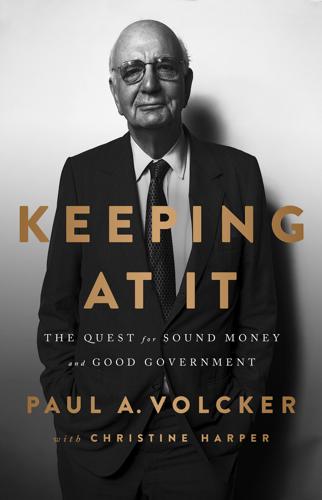
Keeping at It: The Quest for Sound Money and Good Government
by
Paul Volcker
and
Christine Harper
Published 30 Oct 2018
Speculation and excessive risk taking, à la the late 1920s, would reappear. He warned that the inevitable crises would be easier to deal with if they were concentrated inside the regulated banking system rather than outside, without official oversight. I later recalled that warning while distinguishing between the manageable Latin American banking crisis in the 1980s, in which United States and foreign banks found themselves with huge portfolios of loans to countries in Latin America and other emerging markets that couldn’t repay them, and the subsequent highly damaging Asian monetary crisis little more than a decade later, complicated by contagious currency speculation and international capital flows.
…
The New York Federal Reserve Bank, with its operating responsibilities and a widely respected leader in Benjamin Strong, emerged as the focal point for monetary policy, both domestic and international. That pattern continued for a time after Strong died in 1928 but without the same degree of respect for the leadership. The following year’s stock market crash, the severe banking crisis, and the ensuing Great Depression inevitably raised questions about the effectiveness of Federal Reserve policy. A strong new chairman of the Washington-based board, Marriner Eccles, eventually succeeded with President Roosevelt’s support in convincing Congress to rewrite key sections of the Federal Reserve Act in 1935.
…
(As the Watergate break-in and cover-up later proved, those electoral priorities also overrode other important considerations.) With the loss of international discipline and strong fiscal and monetary policies, an inflationary process took hold. By the accidents of fortune, I was destined a few years later to lead the effort to deal with the Great Inflation and the related Latin American banking crisis. A Useful Treasury Legacy Before leaving the Treasury, I did have the opportunity to put in place some useful reforms in how the US government borrows money. In this area, we could make most of the changes on our own, without legislation or international agreement. For decades, the Treasury Department’s standard practice in selling notes and bonds (debt securities maturing in more than a year) was to announce to potential buyers an offering date for a certain dollar amount at a stated maturity and a fixed interest rate.
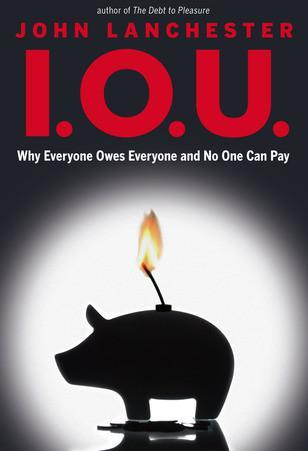
I.O.U.: Why Everyone Owes Everyone and No One Can Pay
by
John Lanchester
Published 14 Dec 2009
That’s how fast, and how completely, things can go wrong for a society if its banks go bad. This is because banks are central to the operation of a developed economy; in particular, they are central to the creation of credit, and credit is as important to the modern economy as oxygen is to human beings. When the banks go wrong, everything goes wrong: a bank crisis gives you that slamming-the-car-into-reverse feeling. This is how it’s supposed to work. A well-run bank is a machine for making money. The basic principle of banking is to pay a low rate of interest to the people who lend money and charge a higher rate to the people who borrow it. The bank borrows at 3 percent (say), and lends at 6 percent, and as long as it keeps the two amounts in line and makes sure that it lends money only to people who will be able to pay it back, it will reliably make money forever.
…
This might especially be the case in Europe, where banks and governments have delayed the reckoning with bad assets and bank insolvency for as long as they can. If the global economic crisis can be reduced to one single phenomenon, it is this: the fact that nobody knows which banks are solvent. Because banks are crucial to the creation and operation of credit, a bank crisis leads directly to a credit crunch. It’s also why the huge amounts of money being pumped into the banking sector by governments are tending not to do the thing they were supposed to do, that is, restart lending to businesses and consumers. That’s because—and here we can have that very rare thing, a brief moment of sympathy for the banksters—the banks are being given two totally incompatible goals.
…
There is a sour joke among financial types, referring to the chronic pessimism and down-speak of economics, “the dismal science”: they say that “economists have predicted seven of the last three downturns.” Ho ho. But they sure didn’t predict this one. Just to repeat the basic point: a 20 percent drop in U.S. home prices, not on the face of it an extraordinarily unlikely thing, was enough to cause a global banking crisis that nearly destroyed the entire system, followed by a global recession verging on depression. So why didn’t more economists seem aware of that possibility? Has the profession really drifted that far away from the real world? The short answer is that with some stellar exceptions—Robert Shiller, Nouriel Roubini, Paul Krugman, and John Kay conspicuous among them—yes, it has.
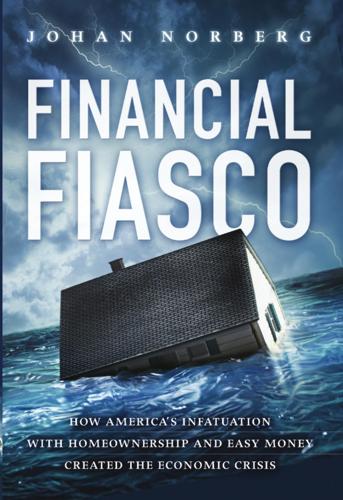
Financial Fiasco: How America's Infatuation With Homeownership and Easy Money Created the Economic Crisis
by
Johan Norberg
Published 14 Sep 2009
Iceland's government and central bank did all they could to get hold of liquidity and even asked the central banks of other countries where the banks had operations for loans, but to no avail. The Icelanders had nowhere left to go. On October 6, Prime Minister Geir Haarde asked for broad powers to handle the banking crisis, concluding his speech with the words Gud blessi island-"God help Iceland." The next day, the government used its new powers to nationalize Landsbanki. It promised that it would guarantee the money of Icelandic savers while foreign savers would be given compensation, if possible, up to 20,000 euros ($27,000), in line with European guarantee agreements.
…
Duhigg, "At Freddie Mac, Chief Discarded Warning Signs." 23. Paulson, oral statement on regulatory reform; Kopecki, "Fannie, Freddie 'Insolvent' after Losses"; CNBC, "Fannie & Freddie Takeover." 24. Duhigg, "At Freddie Mac, Chief Discarded Warning Signs." 25. Stiglitz, "Fannie's and Freddie's Free Lunch." 26. Bartiromo, "Bill Clinton on the Banking Crisis." 27. Gillespie and Welch, "`I Think the SEC Was Distracted."' 28. Kelly, "Where in the World Is Bear's Jimmy Cayne?" 29. CNBC's Jim Cramer, who had warned of "Armageddon" as far back as August 2007, gave less impressive advice this time. On the March 11, 2008, edition of Mad Money he shouted, "No!
…
Onaran and Helyar, "Fuld Sought Buffett Offer." 32. Dan Duyn, Brewster, and Tett, "The Lehman Legacy"; Onaran Helyar; Ohlsson, "Bushs nej blev starten pa den globala finanskrisen." 33. Poor, "Knock Out." 34. Gullapalli and Anand, "Bailout of Money Funds." 35. Bartiromo, "Bill Clinton on the Banking Crisis." 36. Tett, "The Dream Machine." 37. Morgenson, "Behind Insurer's Crisis." 38. The Economist, "The Great Untangling." 39. Morgenson, "Behind Insurer's Crisis." 40. Mollenkamp and others, "Behind AIG's Fall." 41. Gerth, "Was AIG Watchdog Not Up to the Job?" 42. Taub, "FAS 157 Could Cause Huge Write-Offs." 43.

Broken Markets: A User's Guide to the Post-Finance Economy
by
Kevin Mellyn
Published 18 Jun 2012
Second, they became too large to manage effectively—something called “diseconomies of scale”—so bureaucracies and overheads multiplied, with bouts of reorganizations and head-count reductions as a periodic corrective. Innovation, customer service, and the ability to react to new competitors (except to buy them and kill them) all suffered from gigantism. Given where the industry had arrived by 2007, the remarkable thing is not that there was a banking crisis on the scale we experienced, but that one didn’t occur earlier. How Government Policy and Central Banks Shaped the Market Meltdown As mentioned at the beginning of this chapter, the dominant narrative has it that the greedy banks on Wall Street somehow caused the crisis in the financial markets by taking reckless risks in pursuit of outsized bonuses.
…
It is easy with 20/20 hindsight to be critical of men and women scrambling to keep financial Armageddon at bay. What did emerge from all the skin-of-ourteeth crisis management, however, were three key facts. First, the too-big-to-fail institutions ended up even bigger and became almost impossible to manage. The Japanese banking crisis had resulted in something similar. Second, vast amounts of public money spent on the bank bailouts and driving interest rates to record lows left the authorities with little ammunition in case the crisis took a turn for the worse—indeed, countries such as Ireland were driven to the brink by guarantees of banking system deposits.
…
The Maastricht Treaty—the treaty that launched the European Union—left no line of retreat; joining the euro was specifically intended to be an irreversible decision with no escape hatches allowed. That said, major banks and corporations around the world are beginning to think the unthinkable and plan for the collapse of the euro under different scenarios. Why a European Banking Crisis Threatens America The 1990s saw the substantial concentration of deposits in the largest institutions within the US banking system, and the 2008 panic triggered shotgun weddings that put a capstone on the progress. Today, the majority of the US banking and payments system operates within and between seven or eight banks.These same banks provide much of the short-term funding and liquidity needed by an even more concentrated investment-banking industry, as well as the clearing and settlement of trades on the stock exchanges.
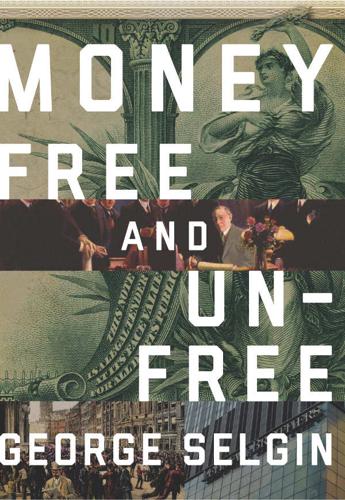
Money Free and Unfree
by
George A. Selgin
Published 14 Jun 2017
At last, to protect the thrifts, the Fed in 1966 refused to lift bank deposit-rate ceilings again, while simultaneously putting the brakes on monetary expansion. The result was an even more severe bank “credit crunch.” Finally, in August 1966, the Fed reversed its monetary policy again, this time to “rescue” the banks from its own misguided policies. The banking crisis of 1966—the first “financial crisis” (to adopt the conventional, hyperbolic vernacular) in the United States since the Great Depression—was a direct consequence of Regulation Q restrictions combined with erratic Fed monetary policy. This was also true of later disintermediation crises, including the thrift crisis of 1969.
…
“The country banks could hardly do other than follow these changes in the credit situation” by expanding their own issues (Nevin and Davis 1970: 43). For some later episodes (when the “division of labor” should have been even more firmly established) the evidence against the Bank is still more conclusive. A recent case in point was the “fringe bank” crisis of 1973–74. According to Margaret Reid (1982), that crisis was based on a boom willfully engineered (with the Bank of England’s help) by the Heath government in its “dash for growth.” Nor has the Bank of England been the only central bank to be guilty of errors of commission (and not merely of omission) in modern times.
…
But from early 1924 to the spring of 1928 it was used to finance a boom and to finance a stock market boom.” The Fed’s efforts nevertheless proved inadequate to save the pound. That currency’s convertibility, already jeopardized by France’s actions, was dealt a further, fatal blow by the Austrian banking crisis, which in turn triggered a general abandonment of sterling and, hence, of the exchange standard. As Gregory (1935: 57) explains, the attacks on sterling were understandable, if not justified, for under the gold exchange set-up, “any failure of London to meet demands in gold meant that the security behind, e.g., the Dutch currency, was in effect reduced in value.
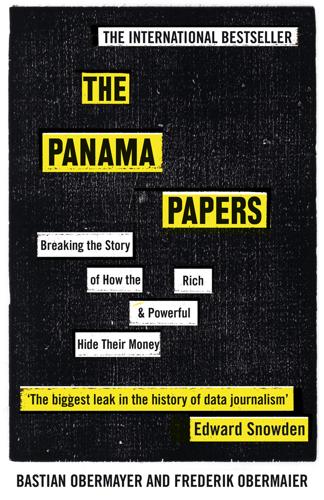
The Panama Papers: Breaking the Story of How the Rich and Powerful Hide Their Money
by
Frederik Obermaier
Published 17 Jun 2016
[ ] In Reykjavik we meet our colleague Jóhannes Kristjánsson, arguably Iceland’s best-known investigative journalist, with the most accolades to his name. He used to work in public radio in Iceland, and produced remarkable material on the causes of the banking crisis in his country. He has also conducted undercover research into drug abuse and exposed sex offenders. He is currently working as a freelance journalist, focusing entirely on the Prometheus project. His story is bound to capture the attention of the masses in this country, whose political landscape was shattered by the banking crisis of 2008. Prime Minister Sigmundur Gunnlaugsson, you will recall, cropped up early on in our investigations. If you remember, he and his wife, through the intermediary of the Luxembourg branch of Landsbanki, set up a company with Mossfon in the British Virgin Islands: Wintris Inc.
…
In his bestseller The Unwinding, US author George Packer describes, precisely and without getting worked up, how the financial elite have dominated the US economy, the absurd repercussions this has for the rest of the country and why citizens who weren’t previously especially politically engaged suddenly got involved in the Occupy Wall Street movement: because they felt betrayed by ‘them up there’. By men like Sanford I. Weill, the founder of what was once the biggest bank in the world, Citibank. The banker, with his aristocratic appearance, is considered to be one of the figures who was jointly responsible for the banking crisis of 2008 that was caused by irresponsible deals. Sanford I. Weill is a hate figure of the Occupy Wall Street movement and was, of course, a Mossack Fonseca client. He held a shell company called April Fool with the Panamanian law firm. He gave the same name to his sixty-metre yacht, because Sandy, as he’s known to his friends, met his wife Joan on 1 April 1954.3 That’s the world of the 1 per cent
…
This may also be the case for Ólöf Nordal, the serving interior minister, who according to Jóhannes had power of attorney for a company named Dooley Securities S.A.8 [ ] The Panama Papers will place the government under extreme pressure to explain itself. ‘The people of Iceland have gone through so much since the bank crisis that now they will have zero sympathy with an extremely rich prime minister and his extremely rich wife, who used an offshore company to secretly buy bank bonds,’ Jóhannes explains. He is in an absurd situation: he has the material that may force the prime minister of his country to step down, he has the story of the year ready and waiting, and has had since spring 2015 – yet he still has to wait, and keep on waiting, until we are all ready to publish in spring 2016.
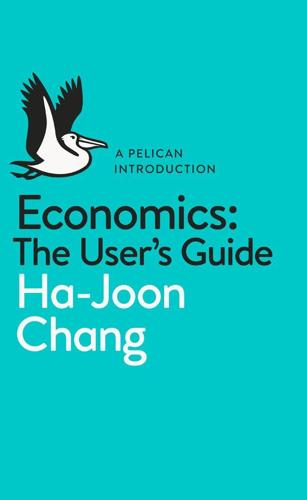
A Pelican Introduction Economics: A User's Guide
by
Ha-Joon Chang
Published 26 May 2014
Outputs fluctuated much less than in the previous periods, not least thanks to Keynesian fiscal policy, which increased government spending during downturns and reduced it during booms.20 The rate of inflation, that is, the rate at which the general price level rises, was relatively low.21 And there was a very high degree of financial stability. During the Golden Age, virtually no country was in banking crisis. In contrast, since 1975, anything between 5 and 35 per cent of countries in any given year have been in banking crisis, except for a few years in the mid-2000s.22 So in every measure the Golden Age was a remarkable period. When Harold Macmillan, the British prime minister, said, ‘You’ve never had it so good,’ he wasn’t exaggerating. Exactly what lay behind this sterling economic performance, which was unprecedented and has since been unparalleled, is a matter of an ongoing dispute.
…
The Brazilian crisis followed in 1999 and the Argentinian one in 2002, both in large part the results of financial deregulation. These are only the prominent ones, but the world has seen so many more financial crises since the mid-1970s. According to a widely cited study,17 virtually no country was in banking crisis between the end of the Second World War and the mid-1970s, when the financial sector was heavily regulated. Between the mid-1970s and the late 1980s, the proportion of countries with banking crisis rose to 5–10 per cent, weighted by their share of world income. The proportion then shot up to around 20 per cent in the mid-1990s. The ratio then briefly fell to zero for a few years in the mid-2000s, but went up again to 35 per cent following the 2008 global financial crisis.
…
REAL-LIFE NUMBERS There has been a vast increase in the frequency of financial crises For most people, the 2008 global financial crisis is probably proof enough that the new financial system has failed to deliver on its promises for greater efficiency and stability. But it is important to note that the 2008 crisis was presaged by many earlier, smaller crises in the last three decades. The list, even counting only the major ones, is impressive. In 1982, Chile got into a major banking crisis, following the radical financial market liberalization in the mid-1970s under the Pinochet dictatorship. In the late 1980s, the Savings and Loan (S&L) companies in the US – also known as ‘thrifts’ – got into massive trouble, having been allowed by the government to move into more risky, but potentially higher-yielding, activities, such as commercial real estate and consumer loans.

Buying Time: The Delayed Crisis of Democratic Capitalism
by
Wolfgang Streeck
Published 1 Jan 2013
More critical could be the question of whether, if monetary doping with its potentially dangerous side effects has to be abandoned at some point, other growth drugs will be available to keep capital accumulation under way in the rich countries of the world. On this we can only speculate – as I do in the concluding remarks of this book. A NEW TYPE OF CRISIS Capitalism in the rich democratic countries has for several years now been in the throes of a threefold crisis, with no end in sight: a banking crisis, a crisis of public finances, and a crisis of the ‘real economy’. No one foresaw this unprecedented coincidence – not in the 1970s, but also not in the 1990s. In Germany, because of special conditions13 that had arisen more or less by chance and seem rather exotic to the outside world, the crisis hardly registered with people for years, and there was a tendency to warn against ‘hysteria’.
…
In Germany, because of special conditions13 that had arisen more or less by chance and seem rather exotic to the outside world, the crisis hardly registered with people for years, and there was a tendency to warn against ‘hysteria’. In most of the other rich democracies, however, including the United States, the crisis cut deep into the lives of whole generations and by 2012 was in the process of turning the conditions of social existence upside down. 1) The banking crisis stems from the fact that, in the financialized capitalism of the Western world, too many banks had extended too much credit, both public and private, and that an unexpectedly large part of this suddenly turned bad. Since no bank can be sure that the bank with which it does business will not collapse overnight, banks are no longer willing to lend to one another.14 There also is the possibility that customers may feel compelled at any moment to start a run on banks and withdraw their deposits for fear they may otherwise lose them.
…
The increased risk of government insolvency in a number of countries is reflected in the higher costs of old and new debt. To regain the ‘confidence’ of ‘the markets’, governments impose harsh austerity measures on themselves and their citizens, with mutual supervision within the European Union, going as far as a general ban on new borrowing. That does not help to alleviate the banking crisis, or a fortiori the recession in the real economy. It is even debatable whether austerity reduces the debt burden, since it not only fails to promote growth but probably has a negative impact on it. And growth is at least as important as balanced budgets in lowering the national debt. FIGURE 1.1 Public debt as percentage of national product: OECD average Countries in unweighted average: Austria, Belgium, Canada, France, Germany, Italy, Netherlands, Norway, Sweden, UK, USA Public debt as percentage of national product: seven countries Source: OECD Economic Outlook: Statistics and Projections 3) Finally, the crisis of the real economy manifest in high unemployment and stagnation (Fig. 1.2)16 partly stems from the fact that firms and consumers have difficulty in obtaining bank loans – because many of them are already deep in debt and the banks are risk-averse and short of capital – while governments have to curb their expenditure or, if it can no longer be avoided, raise taxes.
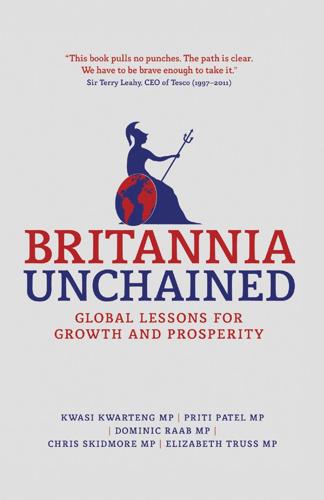
Britannia Unchained: Global Lessons for Growth and Prosperity
by
Kwasi Kwarteng
,
Priti Patel
,
Dominic Raab
,
Chris Skidmore
and
Elizabeth Truss
Published 12 Sep 2012
But while the story that Canada’s success is down to better regulation is intuitively appealing, the reality is more complicated. In many ways, Canada has less regulation than the US. Canadian banks were never banned from interstate banking, or the union of retail and investment banking. The stability of Canadian banking is also old. Canada not only escaped a banking crisis in 2008, it also avoided a A Tale of Two Nations 35 crisis in 1930 in the wake of the Wall Street crash. Earlier still, Canada was unaffected by the US banking panics of 1893 or 1930.88 There are five major Canadian banks: the Royal Bank of Canada, the Toronto Dominion Bank, the Bank of Nova Scotia, the Bank of Montreal and the Canadian Imperial Bank of Commerce.
…
McKinsey Global Institute, Debt and Deleveraging: Uneven Progress on the Path to Growth (2012). 77. http://www.guardian.co.uk/politics/2003/may/07/labour.politicalcolumnists 78. http://www.guardian.co.uk/media/1999/dec/22/bbc.futureofthenhs 79. http://www.guardian.co.uk/politics/2000/mar/17/comment.pollytoynbee 80. http://www.guardian.co.uk/society/2001/mar/08/3 81. http://www.guardian.co.uk/society/2001/nov/23/comment 82. http://blogs.ft.com/money-supply/2011/11/30/the-uk-hangover-getsworse/#axzz1h5FjxNF3 83. http://www.economist.com/node/18719530 84. International Monetary Fund, World Economic Outlook Database (April 2011). 85. http://www.economist.com/node/18719530 86. http://www.imf.org/external/np/ms/2009/030909a.htm 87. http://www.economist.com/node/16060113 88. Michael Bordo, Angela Redish and Hugh Rockoff, Why Didn’t Canada Have a Banking Crisis in 2008 (or in 1930, or in 1907, or in 1983) (2010). 89. http://www.economist.com/node/16060113 90. http://www.ft.com/cms/s/0/db2b340a-0a1b-11df-8b23-00144feabdc0. html#axzz1oEUdacsd 91. http://www.ft.com/cms/s/0/75b43310-ebee-11de-930c-00144feab49a. html#axzz1nrHw5tUL 92. Heritage Foundation, Index of Economic Freedom (2011).
…
Balls, Edward, Euro-Monetarism: How Britain was Ensnared and How it Should Escape (Fabian Society, 1992). Blanden, Jo, and Stephen Machin, Recent Changes in Intergenerational Mobility in Britain (Centre for Economic Performance, 2007). Bordo, Michael D., Angela Redish and Hugh Rockoff, Why Didn’t Canada have a Banking Crisis in 2008 (or in 1930, or in 1907, or in 1983) (2010). Bourgon, Jocelyn, Program Review: The Government of Canada’s Experience Eliminating the Deficit, 1994–99: A Canadian Case Study (Institute for Government, 2009). Bradshaw, Jenny, et al., PISA 2009: Achievement of 15-Year-Olds in England (NFER, 2010).

The Liberal Moment
by
Nick Clegg
and
Demos (organization : London, England)
Published 12 Nov 2009
And however long this recession may last one thing is already certain: we will be left with a legacy of massive public debt and the enormous challenge of eradicating a structural deficit that could be as high as 10 per cent of GDP. Britain is, of course, not alone. The whole world’s economy has suffered an enormous shock stemming from the credit crunch and banking crisis. It would be wrong to pretend that Britain is not suffering, in part, as a consequence of this global recession. However much political opponents may like to blame problems on the government of the day, it is only fair to acknowledge that Britain’s problems are not all home-grown. The British Treasury could not have prevented the collapse of the US housing market, the collapse of the Icelandic financial system or the failure of Lehman Brothers.
…
But those who invest in these high-risk products should not expect any more protection than punters in betting shops and casinos. 41 Banking should be the servant of the economy, not its master. Liberal Democrats have long argued that politicians should not be in thrall to the money centre of the City, but support diverse, local banking infrastructure instead. In the aftermath of the banking crisis, now is the time to make this change – something Liberal Democrat and other councils are already doing by establishing or supporting credit unions. But we can go further. We should be using the taxpayer’s stake to break up the big banks so that we can rebuild the kind of local banking and lending infrastructure that is effective in Germany and the USA, but which has been allowed to dwindle here.
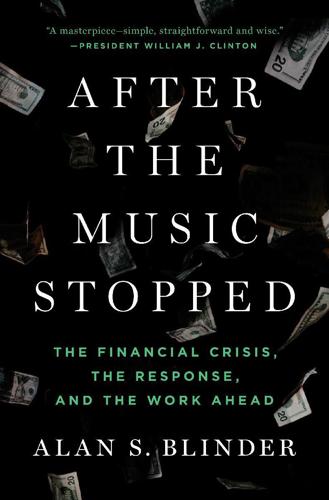
After the Music Stopped: The Financial Crisis, the Response, and the Work Ahead
by
Alan S. Blinder
Published 24 Jan 2013
Here Bernanke and Paulson disagreed, perhaps reflecting the differing mind-sets of a nonpolitical former economics professor and a Wall Street deal maker thrust into a political world. Their disagreement turned out to be incredibly ironic. The intellectual Federal Reserve chairman favored injecting capital directly into banks. An expert on economic history, Bernanke knew that publicly provided capital almost inevitably follows in the wake of a banking crisis. Besides, providing banks with new capital should leverage the government’s money. At least in theory, each $1 of additional bank capital should support $10 or so of renewed lending. (We’ll come back to that fallacious reasoning shortly.) Many financial market experts such as the famed investor George Soros and noted economists Paul Krugman and Joseph Stiglitz also urged that alternative.
…
By guaranteeing essentially all bank liabilities in September 2008, and subsequently assuming those debts as its own, the Irish government added about 40 points to its debt-to-GDP ratio. In theory, the Irish government was a highly creditworthy borrower that could obtain credit on favorable terms and shoulder the debt burden while Irish banks recovered. In practice, Ireland’s rash actions turned a banking crisis into a sovereign debt crisis. Ireland’s annual government budget deficit in 2010 was a shocking 32 percent of GDP, likely setting a modern-day world record. CRISES HERE AND THERE: DIFFERENCES So much for similarities. There are also numerous differences, most of them stemming from the fact that the seventeen countries of the eurozone share a common currency and a common central bank—but not a common government.
…
It began to look like the famous old cliché applied to the euro: You can’t live with it, and you can’t live without it. DON’T BANK ON IT So far, I have followed common usage by referring to the mess in Europe as the sovereign debt crisis. Investors are worried about the ability of several European governments to pay their bills. But it is also a European banking crisis: Investors are worried about the solvency of many of Europe’s largest banks. Indeed, the two crises are inextricably linked. Part of the governments’ debt problems derive from the expense of bailing out their banks. Europe’s major banks also own a great deal of government debt, on which they can ill afford to take losses.
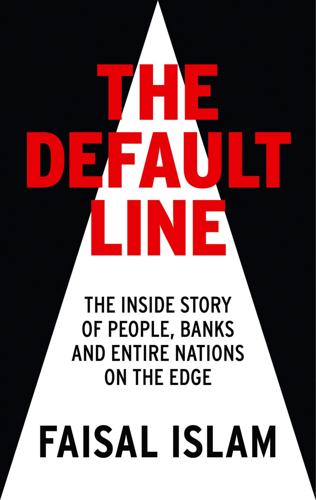
The Default Line: The Inside Story of People, Banks and Entire Nations on the Edge
by
Faisal Islam
Published 28 Aug 2013
German tourists pulled their holiday bookings. In London, the Eurozone Contingency Committee sat at the Treasury, featuring Mervyn King, Adair Turner and cabinet ministers William Hague and Vince Cable, chaired by Chancellor George Osborne. ‘Throughout 2011–12 we were very worried about the Eurozone precipitating a UK financial banking crisis again: we created an emergency committee on Eurozone contingency planning, which for a while was meeting every other week, even every week.’ Strikingly, German politicians and leading members of the ECB popped up in the days after the inconclusive May election to say that a Grexit would be ‘manageable’, as it would ‘do more harm to Greeks than the Eurozone’.
…
‘The fall in GDP according to the Office for National Statistics was caused by the very bad weather,’ Osborne insisted. ‘But David Cameron and I would like the GDP figure to be stronger, even without the snow. The truth is that we always said it would be a challenging recovery. We’ve had the deepest recession of our lifetime, the biggest banking crisis since the 1930s. There is a new government trying to sort out this mess. It was always going to be choppy.’ I asked him whether he would alter his plan if the negative trend continued. ‘I’m not in the business of speculation,’ he replied. ‘I look at the central forecast for the British economy, which is for sustained growth and for rising employment.
…
Another case, still to be heard, questions Kaupthing’s emergency pre-collapse cash call from the Gulf in September 2008. The money for the purchase by a Qatari sheikh of a large stake in Kaupthing ultimately came from a bank in Iceland called… Kaupthing. The charge is that the bank lent the money to instil confidence in itself just ahead of the massive bank crisis. It is certainly documented that the companies connected to Qatari investors were granted large loans by Kaupthing around the same time as buying a 5 per cent stake in the bank. The defendants in the case deny the charges. But whatever happens to Hauksson’s cases, the process has been instructive.
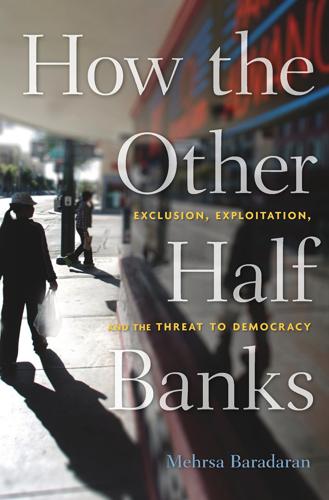
How the Other Half Banks: Exclusion, Exploitation, and the Threat to Democracy
by
Mehrsa Baradaran
Published 5 Oct 2015
These lenders skillfully avert new rules by creating new products, crossing state lines, or escaping to do business from Native American reservations. They cannot be regulated away because the payday lending industry is doing what any successful business does: filling a market need. One solution to our present-day banking crisis is to reinvigorate or replicate local banks and cooperatives so that they can again do what they did successfully for many years—overcome the costs of lending to the poor through a tight-knit membership with mutual ownership. Over the past several decades, nearly all of the government and industry initiatives aimed at financial inclusion have focused on community efforts to bank the poor—Jefferson’s localism still runs deep in banking politics.
…
Unfazed by the largest banks’ opposition to his proposed reforms, Roosevelt used the public’s anger at the banks and the unit bankers’ support to catalyze the legislature to pass these measures.80 In President Roosevelt’s famous inauguration speech, he justified this broad-reaching legislation. When he told the public that “the only thing we have to fear is fear itself,” he was addressing the irrational bank runs that turned the tough economic times into an unprecedented banking crisis. He acknowledged the people’s suffering and placed blame directly at the foot of the bankers: The rulers of the exchange of mankind’s goods have failed, through their own stubbornness and their own incompetence, have admitted their failure, and abdicated. Practices of the unscrupulous money changers stand indicted in the court of public opinion, rejected by the hearts and minds of men.… Stripped of the lure of profit by which to induce our people to follow their false leadership, they have resorted to exhortations, pleading tearfully for restored confidence.
…
The Glass-Steagall Act, the pillar of the New Deal banking reforms, thus entrenched the doctrine of “separation of banking and commerce” in U.S. banking regulation.82 The act also contained interest rate limits—the amount a bank could offer for deposits—intended to deter competition among banks. Reduced competition, it was believed, would lead to a more dispersed banking sector and more credit availability. These reforms were a response to the recent banking crisis, but they also revealed a Jeffersonian and Brandeisian disdain for concentrated bank power. Although they were intended to make banks safer, they were also meant to limit banks’ market reach and power. A few policymakers were convinced that too much bank power and concentration caused the Great Depression, although the conclusion has since been contested.83 Brandeis, Roosevelt, and Carter Glass—much like their Populist predecessors—saw bank power as one of the great social problems of the day.
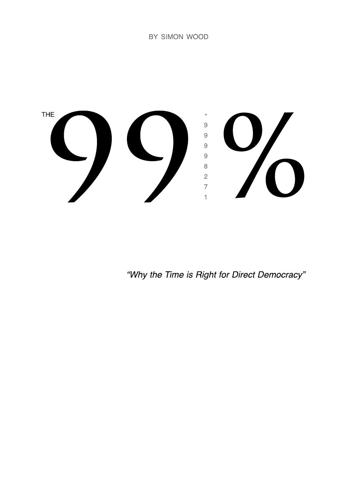
The 99.998271%
by
Simon Wood
Published 23 Apr 2012
If a true Democrat, someone who is not a Wall Street pawn, someone who is popular and has no skeletons in the closet, were to challenge Obama for the Democratic nomination, and if that person ran on a platform (with cast-iron promises) of ending the wars, cutting military spending, taking money out of politics, closing down the NSA database, ending the drone program, bringing the CIA and the Pentagon under control, restoring all guarantees of human rights (including the abolition of indefinite detention), social justice, transparency of government, reversing deregulation of the financial industries, retroactive justice for everyone responsible for bringing about the Iraq War and the 2008 banking crisis, electoral reform, and all the other things peace-loving people actually want, Obama and any Republican candidate would have a serious problem on their hands. In the next election, as the current Republican candidates are one and all almost unelectable, even such a true 42 Democrat could win.
…
Cost The deep reach of the internet into almost every home in developed countries around the world has removed the problem of cost, always the main obstacle to direct democracy in the past. Past Attempts It is true that past experiments with direct democracy have failed, but there could be many reasons for this. The Direct Democracy Party of New Zealand existed from 2005 to 2009, partly as a reaction to the banking crisis and mounting national debt. Thirty-two party members stood as candidates in the 2005 elections but only pulled in 782 votes, 0.03% of the electorate. This failure could be due to a lack of public recognition of (and media 57 disinterest in) the candidates and the party itself, as well as distrust of such a new and radical political entity.

The Rise and Fall of Nations: Forces of Change in the Post-Crisis World
by
Ruchir Sharma
Published 5 Jun 2016
Between 2011 and 2015 Russia witnessed strong positive net migration due to an influx of hundreds of thousands of job seekers from former Soviet Satellite states, led by Ukraine. But the increasing numbers of talented Russians leaving the country outstripped this influx. More than 180,000 Russians left in 2013, five times more than those who departed in 2009 and close to peaks reached during the banking crisis in 1998. Those leaving were entrepreneurs, writers, scientists, and the sons and daughters of families that could afford to send their children abroad to study, in the hope that they could eventually settle outside Russia. Dinner table conversation among the Russian elite dwelled on how to secure a visa to a desirable foreign country and how to get one’s money out with the family.
…
In short, the bulls argued, China was well positioned to pay off or forgive its own debts. The historical record casts doubt on the strength of these defenses, not only for China but for any country. Many other nations on the list of the thirty most extreme credit binges enjoyed some of the same advantages, but this did them no good. Taiwan suffered a banking crisis in 1995 despite having foreign exchange reserves that totaled 45 per cent of GDP, a slightly higher level than China had accumulated by 2014. Taiwan’s banks also appeared to hold more than ample deposits to back their loans, but that did not avert a crunch. Banking crises hit Japan in the 1970s and Malaysia in the 1990s, even though these countries had high domestic savings rates of around 40 percent of GDP, also well above the global average.
…
† By 2015, I should note, some private financial industry researchers were publishing pieces on the connection between credit binges and slower economic growth, including “Untangling China’s Credit Conundrum” from Goldman Sachs that January and “Keeping a Wary Eye on the EM Credit Cycle” by JP Morgan that November. ‡ In most of these cases, GDP growth was strong during the five-year period when credit was growing dangerously fast, so credit growth was the main reason the credit/GDP ratio was rising § Here I use financial crisis to mean a banking crisis as defined by Carmen Reinhart and Kenneth Rogoff in This Time Is Different (2009), which captures bank runs that force a government to close, merge, bail out, or take over one or more financial institutions. ¶ In twenty-six of the thirty cases, the average annual rate of growth fell over the next five years.
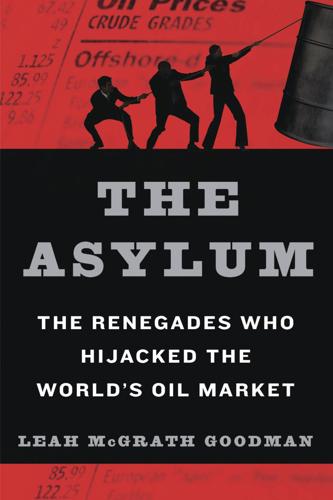
The Asylum: The Renegades Who Hijacked the World's Oil Market
by
Leah McGrath Goodman
Published 15 Feb 2011
Wendy Gramm as head of the Commodity Futures Trading Commission under Reagan and Phil Gramm as a prominent senator from Texas. Brooksley Born—The Stanford-educated lawyer and head of the Commodity Futures Trading Commission under Clinton in 1996 who was credited with foreseeing the global banking crisis that would tear Wall Street asunder. Played a major role in ousting Guttman from his position as Nymex chairman. Dr. James Newsome—Former strawberry and cattle farmer who, in 2001, was named head of the Commodity Futures Trading Commission, only to resign three years later to become Nymex president, CEO, and Schaeffer’s right-hand man.
…
Magid’s dad came in from Long Island to make sure he didn’t crack up. I was scared. I kept asking him every day, ‘Are you still liquidating?’ We met with Phibro to see if they would take it. They said no. I didn’t know how to trade myself out of this stuff. It was like dealing with the toxic assets of the banking crisis. It takes the asshole who got you into the mess to get you out of it.” It took Magid three months to sell off the options contracts. He finally exited the positions at a loss of $500,000, a testament to his trading skills. Losing hundreds of thousands of dollars hurt, but it was a pain Guttman could live with.
…
They were still allowed to place massive bets on a disappearing commodity with almost no money down, a circumstance that could have been prevented by Congress when it had the chance to vote on it in July 2008, just a few days after oil prices topped out. But instead it scuttled the measure. In the end, lawmakers were content to chastise Big Oil on TV. The truth of the matter was, when the power was in their hands, they could do nothing but waffle. On Wall Street, the devastation of the banking crisis had not chastened anyone who hadn’t lost their job. Traders, bankers, and lawyers were already walking around saying that nothing, in fact, had really happened. The meltdown, apparently, was only pro forma, a figment of everyone’s imagination. And they were even starting to believe it. After all, appearance was truth.
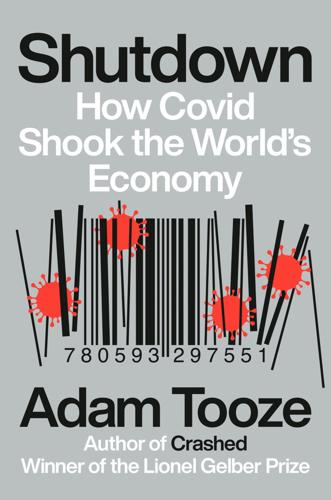
Shutdown: How COVID Shook the World's Economy
by
Adam Tooze
Published 15 Nov 2021
A credit collapse would have been debilitating for business. A eurozone sovereign debt crisis would have hobbled the ability of the governments of Italy, Spain, and France to respond to the epidemic. An inversion of the U.S. Treasury market, however, was a problem of a different order. Its implications went further even than the North Atlantic banking crisis of 2008. American government debts are the safe assets on which the entire structure of private finance rests. They are the foundation of America’s financial might and thus of the world order as we know it. Chapter 6 “WHATEVER IT TAKES,” AGAIN On Thursday, March 12, the news from the financial markets was grim.
…
This was a state of financial panic, which if it had been allowed to develop, would have been more destabilizing even than the failure of Lehman Brothers in September 2008. * * * — In 2008 it had been mortgage-backed securities that almost brought the house down.7 The risks were concentrated on bank balance sheets on both sides of the Atlantic. A downturn in real estate, which triggered mortgage defaults, turned into a banking crisis. The prospect of bank failures forced interventions by central banks and treasuries in the form of asset purchases, to prop up markets for mortgage-backed securities, a desperate effort to supply liquidity to the ailing banks, and bailouts in the strict sense of the word, in the form of government stakes in the weakest banks.
…
Low interest rates would be bad for their profit margins on lending. So their shares sold off hard. The setback to the banks was so severe that it caused a ripple of anxiety among the regulators.9 If the banks had been as weak in 2020 as they had been in 2008, the situation might well have been catastrophic. How catastrophic a coronavirus banking crisis might have been can be gauged by applying, hypothetically, the losses expected in the spring of 2020 to the balance sheets of the major U.S. banks as they were in 2008 at the time of the mortgage crisis. The result is horrifying. If the banks had been as weak in 2020 as they were in 2008, core loss-absorbing capital across the entire system would have been slashed to a low of 1.5 percent of assets, less than a sixth of what is considered safe.
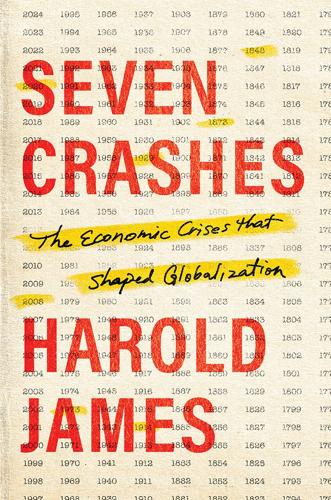
Seven Crashes: The Economic Crises That Shaped Globalization
by
Harold James
Published 15 Jan 2023
The only realistic alternative in the middle of the German banking crisis was that France might put up money to help out, but this was a pretty slender straw to grasp. The highest official in the German Finance Ministry was pushing for this solution, and had some informal contacts through intermediaries in the financial and journalistic worlds with Pierre Laval, the strongman of the French right; but such assistance was probably as much a realistic prospect as the idea in 2008 that China’s sovereign wealth fund could bail out American financial institutions. Even before the outbreak of the German banking crisis, as nervousness was increasing, the new international bank, the Basel-based Bank for International Settlements (BIS), contemplated a plan involving Kreuger to involve private bankers in an internationally coordinated rescue mechanism, in what became known as the Kindersley Plan.
…
The historian Hans-Ulrich Wehler called it the “last agrarian crisis of the old type” for Germany or Central Europe, although there have been plenty of twentieth-century famines outside western Europe.1 But the crisis of the 1840s was also a modern business cycle downturn coupled with a financial and banking crisis. It began with an exceptionally vigorous boom that pushed prices up and seemed to contribute to the creation of scarcities. Prices rose dramatically in Britain, as well as in central Europe. It was in a sense, then, an eighteenth-century crisis, but also a twentieth- or twenty-first-century crisis.
…
Although it was a neighbor of Austria, there was little direct German participation in Austrian finance. Indeed German banks held less than 4 percent of the Creditanstalt deposits. But German banks looked like the Austrian banks in that their capital basis had been eroded by inflation and hyperinflation in the early 1920s; and there was in addition to the incipient banking crisis a currency crisis that was prompted by the government’s attempt to negotiate a customs union with Austria, and by its insistence that the postwar reparations settlement be renegotiated. Until the beginning of July 1931, the German authorities and the German central bank, the Reichsbank, had more or less explicitly announced that they would never allow a major German bank to collapse.54 Within a few days, after it became clear that the Reichsbank could not find support from the British and American central banks, it took precisely the opposite stance: it was compelled to stand by and let the German credit system collapse like a house of cards.

MegaThreats: Ten Dangerous Trends That Imperil Our Future, and How to Survive Them
by
Nouriel Roubini
Published 17 Oct 2022
The gold-exchange standard had been designed after World War II to safeguard global monetary stability. Nixon’s decision had short-term benefits, but longer-term risks. The five decades since then have seen paralyzing vicissitudes in advanced economies (let alone emerging markets): stagflation in the seventies; a US real estate bust leading to a savings and loan banking crisis in the eighties; a Scandinavian banking crisis in the early nineties; a European Exchange-Rate Mechanism currency crisis in 1992; the Japanese great stagnation and deflation since the nineties after the collapse of its real estate bubble; the collapse of Long-Term Capital Management (LTCM) despite two Nobel laureates at its helm in 1998; the internet boom and subsequent bust and corporate defaults of the early 2000s; the housing and credit boom-and-bust leading to the Global Financial Crisis beginning in 2007; the eurozone crisis of the early 2010s; and of course the COVID-19 crisis of 2020.
…
Following vigorous deregulation of its banks, Sweden and other Scandinavian economies experienced turmoil that foreshadowed the global financial crisis. “Banks, mortgage institutions, finance companies, and others now entered a new environment where they were free to compete on the domestic credit market,” according to author Peter Englund in a report on the Swedish banking crisis: The impact of the deregulation was immediately apparent. The rate of increase of new lending from financial institutions, which varied between 11 and 17 percent per year during the first half of the 1980s, jumped to 20 percent in 1986. Over the 5 year period, 1986-1990, lending increased by 136 percent (73 percent in real terms).15 As in the United States, Swedish legislators and policy makers stood aside despite record low unemployment and prices rising faster than in other countries.
…
Los Angeles Times, March 21, 1999, https://www.latimes.com/archives/la-xpm-1999-mar-21-fi-19380-story.html. 14. Leonard Silk, “Climbing Interest Rates,” New York Times, July 10, 1974, https://www.nytimes.com/1974/07/10/archives/climbing-interest-rates-fed-maintains-tight-antiinflationary-policy.html. 15. Peter Englund, “The Swedish Banking Crisis, Roots and Consequences,” Oxford Review of Economic Policy 15, no. 3 (Autumn 1999): 84, https://www.jstor.org/stable/23606686. 16. W. H. Buiter, G. Corsetti, and P. A. Pesenti, Financial Markets and European Monetary Cooperation (Cambridge: Cambridge University Press, 1998), https://books.google.com/books?
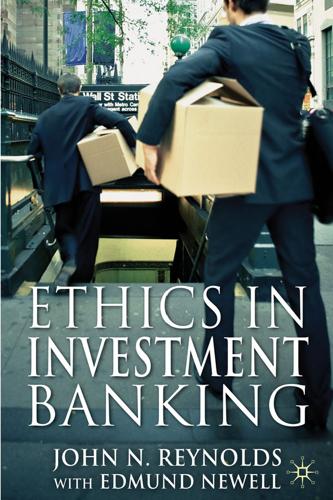
Ethics in Investment Banking
by
John N. Reynolds
and
Edmund Newell
Published 8 Nov 2011
The US Financial Crisis Inquiry Commission blamed failures in regulation; breakdowns in corporate governance, including financial firms acting recklessly; excessive borrowing and risk by households and Wall Street; policymakers ill-prepared for the crisis; and systematic breakdown in accountability and ethics.1 The UK’s Independent Commission on Banking cited factors including “global imbalances, loose monetary policy, light-touch regulation, declining under-writing standards, widespread mis-pricing of risk, a vast expansion of banks’ balance sheets, rapid growth in securitized assets”.2 The UK economist Roger Bootle diagnosed the crisis in a more straightforward way in his 2009 book The Trouble with Markets: “greedy bankers and naive borrowers, mistaken central banks and inept regulators, insatiable Western consumers and over-thrifty Chinese savers”.3 Others have also directly cited bankers’ greed. Gordon Brown, the UK Prime Minister at the time the financial crisis developed, in his book examining the financial crisis, Beyond the Crash, has blamed “excessive remuneration at the expense of adequate capitalisation” for the UK banking crisis.4 It is clear that incentives in the form of the high levels of pay received by investment bankers creating and trading seriously flawed products was a contributing factor to the financial crisis. The asymmetry of risk and reward in investment bankers’ remuneration can incentivise risk-taking: there is an opportunity to be paid very well if a trade is profitable, but the investment banker does not actually lose money (in the form of cash – the value of any equity owned in the investment bank can reduce) if a trade is lossmaking.
…
Governments failed to appropriately increase the effectiveness of oversight of credit rating agencies in the wake of the failures of Enron, WorldCom and so on. • Sovereign debt crises and defaults are nothing new. Looking back to Latin America in the 1980s and early 1990s, and also at the impact of financial crises in major economies, such as the Russian banking crisis in 1997 or the UK in the 1970s, sovereign debt even in relatively stable countries has periodically exhibited relatively high levels of risk. Given the nature of a sovereign country, and its responsibilities (providing services such as health care, defence, education) for and from (e.g., tax raising) its citizens, the ethical position of trading in sovereign debt may have different characteristics than trading in corporate debt. • Strategies involving short-selling are not novel.
…
Remuneration can be considered an ethical issue from a number of perspectives, notably relating to fairness (i.e., equity and distributive justice), and also relating to the issue discussed on p. 24 of investment banks receiving Ethical Issues – Internal 135 a “free-ride”. There is an argument that the banking crisis was caused by greed. This has been advanced by, among others, former UK Prime Minister Gordon Brown. It can be argued that the cause of the financial crisis (in the UK) was excess bank bonuses resulting in a deficiency in bank capital. This argument contends that the payment of bonuses left the banking sector short of capital, and therefore the financial crisis was (at least in part) the result of greed.
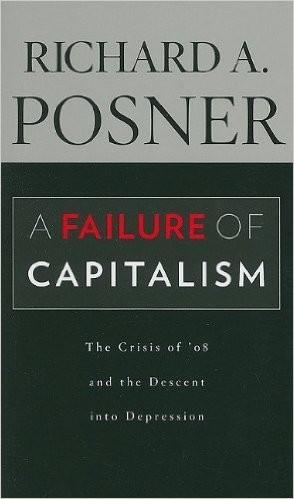
A Failure of Capitalism: The Crisis of '08 and the Descent Into Depression
by
Richard A. Posner
Published 30 Apr 2009
Since, moreover, the Federal Reserve's efforts to expand or contract the money supply and so lower or raise interest rates are mediated by the banks, a breakdown in the banking system can loosen the Federal Reserve's control over the money supply, opening the way to deflation. That is why the kind of shock to the economy that comes from a banking crisis is potentially more serious than a shock created by a technological change. Increasing the money supply reduces the value of money, and so creates a threat of inflation, because, initially at least, more money is buying the same amount of goods and services. But in a depression the threat of inflation lies in the future.
…
The profession's failure to foresee the depression, and its unpreparedness to suggest timely, effective responses to it, will stimulate fresh thinking in macroeconomics and financial economics. It may even lead to a merger between depression economics, a branch of macroeconomics, and finance viewed as a distinct field of economics (much as statistics is a distinct field of mathematics). Recessions precipitated by a banking crisis are more likely than other recessions to turn into depressions because of the severe negative effect of a breakdown in the credit system on personal consumption expenditures, an effect that sets the stage for deflation. Maeroeconomists are the experts on recessions and depressions, finance theorists on the operation of the financial system.
…
They did this by eliminating the limits on federal deposit insurance of bank deposits and by extending that insurance to checkable accounts in money market funds, but more important by bailing out failing firms deemed "too big to fail"—an incentive for corporate giantism and financial irresponsibility (which go hand in hand because the difficulty of controlling subordinates grows with the size of an organization). The government gratuitously disrupted the operations of hedge funds by limiting short selling—at the height of the banking crisis the Securities and Exchange Commission forbade short selling of financial stocks. And by substantially increasing the federal deficit, the government's responses to the crisis are sowing the seeds of a future inflation. But of these criticisms, the main ones — the creation of moral hazard and the planting of the seeds of a future inflation—concern the unavoidable side effects of any effective measures to limit a depression.
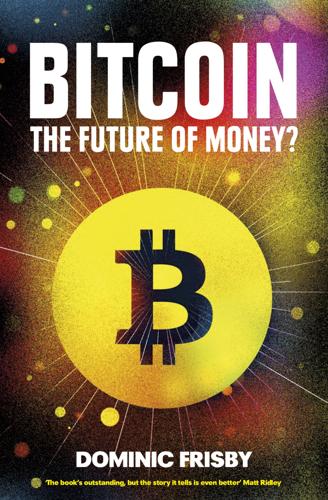
Bitcoin: The Future of Money?
by
Dominic Frisby
Published 1 Nov 2014
China, for example, is the world’s second-largest economy, yet individuals may not withdraw more than $50,000 per annum from the country. The banking crisis in Cyprus in 2013 saw capital controls introduced there. Currently, cash withdrawals are limited to €300 a day, the cashing of cheques is banned and large cash transfers are vetted. Accounts with over €100,000 saw funds confiscated. Capital controls now seem to be being imposed in the Ukraine due to its current instability. Reports suggest nationals are finding it harder and harder to get their money out of Spain and other parts of impoverished Southern Europe, and the insolvency of Spain’s banks makes another banking crisis in the region look probable.
…
Bitcoin has been dubbed ‘money without government’ and ‘money without borders’. You can send money to another country as easily as you can an email, and nearly as instantly. There is no need to smuggle 60 Krugerrands in your pocket if you’re fleeing an oppressive regime. People are already starting to use Bitcoin in this way. When the Cypriot banking crisis hit during the spring of 2013 and fear of capital controls loomed across Southern Europe, the bitcoin price rose from about $15 to north of $200. In the latter part of 2013, the price ballooned again, rising from about $130 to over $1,000 due to Chinese interest. Much of that interest was speculative, but some of it was also money fleeing the country.
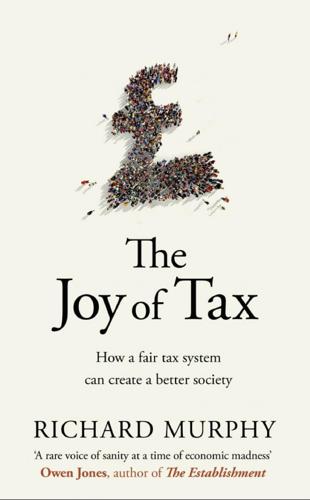
The Joy of Tax
by
Richard Murphy
Published 30 Sep 2015
So, for example, taxes on carbon and other forms of pollution are charged because the emission of noxious substances imposes costs, both now and, through climate change, in the future. A similar externality that has potential impact upon the collective wealth of others is created when trading takes place through limited liability companies. If these fail the cost of their doing so falls in part on their creditors and sometimes more widely onto society at large, as the banking crisis of 2008 proved. Income recorded in a limited liability company should, as a result, be subject to higher rates of tax than are charged on income recorded in other ways. This logic of taxing generic externalities to correct market failures is not, however, the rationale for all charges of this type: taxes on tobacco, alcohol and road use do not fit within this framework.
…
accountability 179, 237 see also under HMRC accountants 69, 101–2, 114, 116, 217 accounting rules 88 Adam Smith Institute 70, 71, 134+n advisers 44, 101–2, 114–15, 153, 226 air travel 29, 176, 237 alcohol 64, 74, 191 alienation 31, 42, 65 allowances 16, 196, 199, 224 see also personal allowances Amazon 135 anarchism 156 anarchy 41 anonymity 100, 222 see also secrecy anti-avoidance principle see under tax avoidance appeals systems 118, 220 ARC (Association of Revenue and Customs) 203 Audit Office, National 205 austerity 68, 84, 90, 94–5, 102 Australia 189 Austria 146 Babylon 14–15, 22 balance 88 see also under government(s) balance of trade data 93 bank data 149, 232, 233 Bank of England 46+n, 49–52+n on banking 209, 231 on money and monetary policy 47+n, 48+n, 85–6, 208 ownership and control of 46+n, 49, 50, 51, 209 on savings and investment 48+n, 230–1 bank transactions, proposed tax on 188, 190, 194, 232–3, 236, 237 see also financial transactions tax bankers 69, 102, 217 banking crisis and crash (2008) 78, 79–80, 191 banks and banking 48–9, 50, 174, 181–2, 187, 209 and money creation 47–8, 208, 214 base rate (bank rate) 52n, 58 bedroom tax 235 Belgium 32 beliefs 39–40, 46n, 53 benefits systems 191–2 see also welfare benefits Bermuda 124, 135 Bible, references to taxation in 15, 16 Boston Tea Party 22, 64 Brazil 188–9 Budget Responsibility, Office for 205 Buffett, Warren 225 Buiter, Willem 78 burden of proof 196, 217, 224 burglary 36, 44 businesses assets 184 investment by 89, 92–3, 199 and tax on transactions 190 see also companies Butler, Eamonn 71 Cairns, Lord 111–12 Cameron, David 82 capital gains 182, 184, 224–6 capital gains tax 29, 31, 73, 224–6, 227, 228 capping council tax 30, 227 flat taxes and 75, 76, 78–9 carbon usage 190, 191, 233 Carney, Mark 83n Carville, James 23 case law 111–12 Cayman Islands 124 Center for Freedom and Prosperity 134 central banks 49, 53 see also Bank of England certainty 130–1 charities 42 Charter of Liberties 17, 22 child credits 235 children 192–3 CIA Factbook 34 citizen’s income 192–5 City of London 18–19, 187 climate change 63, 191, 233 climate change levy 237 Clinton, Bill 23 common law 153 Community Charge 33, 37, 186 see also poll taxes companies 138, 150, 184, 191 accounts, and taxation 198–9 beneficial ownership of 124, 149, 221–2 close 233–4 country-by-country reporting 124–7, 151, 201, 222 excess profits tax 200–1, 234 flat tax proposals and 73 and information exchange 184 large 100, 200, 204, 234 location and taxation 163, 197–8 multinational 124–7, 150–2, 198, 201, 222 real existence 40, 42 self-employment and 167, 168, 173 small 173, 198, 234 submission of accounts and tax returns 98–9, 221–2, 223 and UK residence rules 222–3 compliance 33–4, 35, 37, 146, 148 compulsion 31, 32, 35–8 conflict 16, 17, 19–21, 25, 37 consent 25–6, 32–8 Conservative Party 94 consultation 114–15, 218, 237 consumption, excessive, tax and 139, 176, 189–90, 233, 238 convenience 130–1 corporation tax 29, 109, 161, 233, 234 corruption 148–9, 204 council tax 29, 30, 31, 186, 227 country-by-country reporting see under companies courts 33, 39, 112, 153, 154 crash and banking crisis (2008) 78, 79–80, 83, 191 credit 57, 231 credits and debits 47, 88, 208 cross-subsidization 166 currency/currencies 55–6 see also money customs duties 14, 16, 119–20 CUT (carbon usage tax), proposed 190, 233 Daily Telegraph 28, 30, 36 Darling, Alistair 76 data access to for tax authorities 149–50, 201–2 automatic information exchange of 123–4, 127, 184 death, taxation and 13, 15, 226, 227 see also inheritance taxes debits and credits 47, 88, 208 debt 50–2, 213 trading 46+n, 50 see also loans decision-making 38, 106, 108, 115–16, 121, 128–9 default 196, 217 deficit spending 58, 215 see also government spending democracy 26, 27, 31, 32, 37, 38 and accountability 118 and consensus 44 influencing 31, 37 opposition to 41–2, 70–1, 78–9, 80, 84, 102–3 see also representation Department for International Development 110 Department of Taxation, proposed 219–21, 227 Devereux, Michael 109 devolution 115, 162–6 Dickens, Charles 86n disability benefits 192, 194 dividends 138, 168, 223, 231 Domesday Book 17 domicile, taxation and 197, 222 double-entry accounting 88 drugs trade 56 economics textbooks 48+n, 85–6 economy 58, 167–8, 210 effects of unemployment on 83 intervention following 2008 crash 79–80, 83 relationship to money and tax 88 reorganizing, taxation and 57–62, 66 sectors 87–8 sustainability 57 see also government(s) and growth education 102, 106–8, 158 efficiency 54–5, 130–1, 160–1 employment full 57, 158, 171, 215 issues concerning 83, 89, 167, 168, 172, 173 energy sources 63, 237 enterprise 136–7, 173, 225, 234 environmental issues 31, 63, 143, 176, 190–1, 233, 237 equity/equality 129–31, 137–45, 211, 212, 215 see also flat taxes and inequality equivalence 144 European Commission 151–2 European Parliament 65, 151 European Union 124, 126, 223, 237 expenses 196 exports 88 externalities 63–4, 190–1 feedback on effectiveness of tax decisions 108, 112 financial services 143, 174 see also banks and banking Financial Times 109 financial transactions information on 197, 201 volume destabilizing economy 188 financial transactions tax, proposed 187–9, 236 fiscal policy 58–60, 82–3, 104–5 flat taxes 68–80, 161 Franklin, Benjamin 13, 14 French revolution 23–4 fuel duties 30, 74 future generations, tax and 143, 176 Galbraith, J.
…
accountability 179, 237 see also under HMRC accountants 69, 101–2, 114, 116, 217 accounting rules 88 Adam Smith Institute 70, 71, 134+n advisers 44, 101–2, 114–15, 153, 226 air travel 29, 176, 237 alcohol 64, 74, 191 alienation 31, 42, 65 allowances 16, 196, 199, 224 see also personal allowances Amazon 135 anarchism 156 anarchy 41 anonymity 100, 222 see also secrecy anti-avoidance principle see under tax avoidance appeals systems 118, 220 ARC (Association of Revenue and Customs) 203 Audit Office, National 205 austerity 68, 84, 90, 94–5, 102 Australia 189 Austria 146 Babylon 14–15, 22 balance 88 see also under government(s) balance of trade data 93 bank data 149, 232, 233 Bank of England 46+n, 49–52+n on banking 209, 231 on money and monetary policy 47+n, 48+n, 85–6, 208 ownership and control of 46+n, 49, 50, 51, 209 on savings and investment 48+n, 230–1 bank transactions, proposed tax on 188, 190, 194, 232–3, 236, 237 see also financial transactions tax bankers 69, 102, 217 banking crisis and crash (2008) 78, 79–80, 191 banks and banking 48–9, 50, 174, 181–2, 187, 209 and money creation 47–8, 208, 214 base rate (bank rate) 52n, 58 bedroom tax 235 Belgium 32 beliefs 39–40, 46n, 53 benefits systems 191–2 see also welfare benefits Bermuda 124, 135 Bible, references to taxation in 15, 16 Boston Tea Party 22, 64 Brazil 188–9 Budget Responsibility, Office for 205 Buffett, Warren 225 Buiter, Willem 78 burden of proof 196, 217, 224 burglary 36, 44 businesses assets 184 investment by 89, 92–3, 199 and tax on transactions 190 see also companies Butler, Eamonn 71 Cairns, Lord 111–12 Cameron, David 82 capital gains 182, 184, 224–6 capital gains tax 29, 31, 73, 224–6, 227, 228 capping council tax 30, 227 flat taxes and 75, 76, 78–9 carbon usage 190, 191, 233 Carney, Mark 83n Carville, James 23 case law 111–12 Cayman Islands 124 Center for Freedom and Prosperity 134 central banks 49, 53 see also Bank of England certainty 130–1 charities 42 Charter of Liberties 17, 22 child credits 235 children 192–3 CIA Factbook 34 citizen’s income 192–5 City of London 18–19, 187 climate change 63, 191, 233 climate change levy 237 Clinton, Bill 23 common law 153 Community Charge 33, 37, 186 see also poll taxes companies 138, 150, 184, 191 accounts, and taxation 198–9 beneficial ownership of 124, 149, 221–2 close 233–4 country-by-country reporting 124–7, 151, 201, 222 excess profits tax 200–1, 234 flat tax proposals and 73 and information exchange 184 large 100, 200, 204, 234 location and taxation 163, 197–8 multinational 124–7, 150–2, 198, 201, 222 real existence 40, 42 self-employment and 167, 168, 173 small 173, 198, 234 submission of accounts and tax returns 98–9, 221–2, 223 and UK residence rules 222–3 compliance 33–4, 35, 37, 146, 148 compulsion 31, 32, 35–8 conflict 16, 17, 19–21, 25, 37 consent 25–6, 32–8 Conservative Party 94 consultation 114–15, 218, 237 consumption, excessive, tax and 139, 176, 189–90, 233, 238 convenience 130–1 corporation tax 29, 109, 161, 233, 234 corruption 148–9, 204 council tax 29, 30, 31, 186, 227 country-by-country reporting see under companies courts 33, 39, 112, 153, 154 crash and banking crisis (2008) 78, 79–80, 83, 191 credit 57, 231 credits and debits 47, 88, 208 cross-subsidization 166 currency/currencies 55–6 see also money customs duties 14, 16, 119–20 CUT (carbon usage tax), proposed 190, 233 Daily Telegraph 28, 30, 36 Darling, Alistair 76 data access to for tax authorities 149–50, 201–2 automatic information exchange of 123–4, 127, 184 death, taxation and 13, 15, 226, 227 see also inheritance taxes debits and credits 47, 88, 208 debt 50–2, 213 trading 46+n, 50 see also loans decision-making 38, 106, 108, 115–16, 121, 128–9 default 196, 217 deficit spending 58, 215 see also government spending democracy 26, 27, 31, 32, 37, 38 and accountability 118 and consensus 44 influencing 31, 37 opposition to 41–2, 70–1, 78–9, 80, 84, 102–3 see also representation Department for International Development 110 Department of Taxation, proposed 219–21, 227 Devereux, Michael 109 devolution 115, 162–6 Dickens, Charles 86n disability benefits 192, 194 dividends 138, 168, 223, 231 Domesday Book 17 domicile, taxation and 197, 222 double-entry accounting 88 drugs trade 56 economics textbooks 48+n, 85–6 economy 58, 167–8, 210 effects of unemployment on 83 intervention following 2008 crash 79–80, 83 relationship to money and tax 88 reorganizing, taxation and 57–62, 66 sectors 87–8 sustainability 57 see also government(s) and growth education 102, 106–8, 158 efficiency 54–5, 130–1, 160–1 employment full 57, 158, 171, 215 issues concerning 83, 89, 167, 168, 172, 173 energy sources 63, 237 enterprise 136–7, 173, 225, 234 environmental issues 31, 63, 143, 176, 190–1, 233, 237 equity/equality 129–31, 137–45, 211, 212, 215 see also flat taxes and inequality equivalence 144 European Commission 151–2 European Parliament 65, 151 European Union 124, 126, 223, 237 expenses 196 exports 88 externalities 63–4, 190–1 feedback on effectiveness of tax decisions 108, 112 financial services 143, 174 see also banks and banking Financial Times 109 financial transactions information on 197, 201 volume destabilizing economy 188 financial transactions tax, proposed 187–9, 236 fiscal policy 58–60, 82–3, 104–5 flat taxes 68–80, 161 Franklin, Benjamin 13, 14 French revolution 23–4 fuel duties 30, 74 future generations, tax and 143, 176 Galbraith, J.

Tribe: On Homecoming and Belonging
by
Sebastian Junger
Published 23 May 2016
Business Insider, January 23, 2013. http://www.businessinsider.com/why-wall-street-execs-werent-prosecuted-2013-1. Grinnell, G. B. “The Cheyenne Medicine Lodge.” American Anthropologist, New Series, 16, no. 2 (1914): 245–56. Holland, Joshua. “Hundreds of Wall Street Execs Went to Prison During the Last Fraud-Fueled Bank Crisis.” Moyers & Company, September 17, 2013. http://billmoyers.com/2013/09/17/hundreds-of-wall-street-execs-went-to-prison-during-the-last-fraud-fueled-bank-crisis/. “Home Foreclosure Rates Are Comparable to the Great Depression.” Washington’s Blog, May 7, 2013. http://www.washingtonsblog.com/2013/05/have-more-people-lost-their-homes-than-during-the-great-depression.html. Kiel, Paul, and Dan Nguyen.

In FED We Trust: Ben Bernanke's War on the Great Panic
by
David Wessel
Published 3 Aug 2009
“But the next minute a democratic nation was really quite horrified at the idea that one man had this much power.” Republican senator Nelson Aldrich of Rhode Island, who was among Wall Street’s best friends in Washington, put the matter more practically: “Something has got to be done. We may not always have Pierpont Morgan with us to meet a banking crisis.” The idea of a centralized monetary authority was hardly novel. The Bank of England had been around since 1694, and as early as the mid-nineteenth century had developed the practice of printing cash and lending it to smaller banks at times of crisis. This “lender of last resort” role for central banks was codified by British journalist and economist Walter Bagehot in his 1873 book, Lombard Street.
…
He and the Richmond Fed’s Jeff Lacker had gone to the same New Jersey high school, although they didn’t know each other then, and were graduate students in economics at the same time at the University of Wisconsin. Rosengren began his Fed career in the Boston Fed’s research department, focusing for a time on the credit crunch and banking woes of New England in the 1990s as well as Japan’s banking crisis. In 2000, he moved into the nitty-gritty of bank supervision and regulation, an unusual move for a Ph.D. economist but one that gave him highly relevant expertise during the Great Panic and a clear view that some fellow bank presidents lacked. Where others saw signs of hope, Rosengren saw “a deteriorating housing sector, slowing consumer and business spending, high energy prices, and ill-functioning financial markets.”
…
Based on his years of studying previous financial collapses and telephone conversations with his Swedish and Japanese counterparts who had coped with recent banking crises, Bernanke had suspected for months that he and Paulson would eventually end up asking Congress to spend substantial sums of taxpayer money to rescue the banks. In every major banking crisis he had studied, the government had had to put capital into the banks, take bad loans off the banks’ books, and guarantee the banks’ debts. So far, Bernanke had deferred to Paulson on the timing of going to Congress, while Paulson had been reluctant to propose anything that Congress might, in an election year, reject.
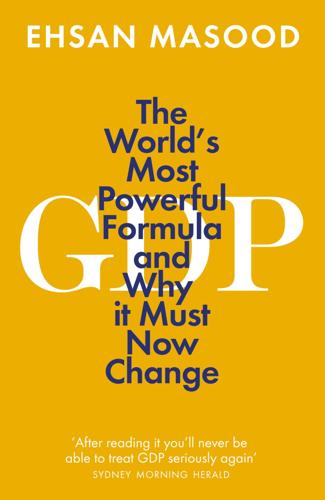
GDP: The World’s Most Powerful Formula and Why It Must Now Change
by
Ehsan Masood
Published 4 Mar 2021
Our strength lies in an ability to improvise. Yet an open mind to untried ideas is also necessary. —John Maynard Keynes, How to Pay for the War (1940) The crash of 2008 and the recession that followed it are often talked of as a second Great Depression. But there’s no comparing our most recent banking crisis with the misery that incinerated lives in the 1930s. Life for many today is difficult, certainly. But the Great Depression was a disaster. In America at the height of the economic slump between 1932 and 1933, somewhere between one in three and one in four men of working age was out of work. One million families lost their farms and two million people became homeless.
…
Wilson, “Great Scientist ≠ Good at Math,” Wall Street Journal, April 5, 2013, accessed October 4, 2013, http://www.wsj.com/articles/SB10001424127887323611604578398943650327184. Yuri Zhukov, “Snipes on a Bog,” Pravda, October 19, 1959. INDEX A adult literacy, 1 air pollution, 1, 2 Åström, Sverker, 1 B Baily, Martin, 1 banking crisis, 1, 2, 3 See also financial crisis Ben Ali, Zine El Abidine, 1 Bevins, Vincent, 1 Bhavan, Anand, 1 Bhutan, 1, 2 biodiversity, 1, 2, 3 Blair, Tony, 1, 2, 3, 4 Bono, 1 Bouazizi, Mohamed, 1, 2 Brown, Andrew, 1 Brown, Gordon, 1, 2, 3, 4 Buddhism, 1 Building a Knowledge Society, 1 Burki, Shahid Javed, 1 Bush, George H.
…
See also financial crisis debt, household, 1 debt, national, 1 demand, 1 democracy in Bhutan, 1 policy making and, 1 survival of, 1 in Tunisia, 1 depressions future depressions, 1 Great Depression, 1, 2, 3, 4, 5, 6, 7 job creation during, 1 recessions and, 1, 2, 3 spending during, 1, 2 unemployment during, 1 Desai, Meghnad, 1, 2, 3 Development Programme, 1, 2, 3 Dewhurst, Frederick, 1 Doomsday Syndrome, The, 1 Draper, William H., III, 1, 2, 3 Drexler, Madeline, 1, 2 Dynamics of Soviet Society, The, 1 E economic growth boosting, 1, 2, 3 concerns about, 1 examples of, 1 measurement of, 1, 2, 3 economic indicators dashboard of, 1, 2, 3, 4, 5 GDP as, 1, 2, 3 public spending as, 1, 2, 3, 4 economics, laws of, 1, 2 ecosystem services, 1, 2, 3, 4 Ehrenfeld, David, 1 eight-point plan, 1 Eisenhower, Dwight D., 1, 2, 3, 4 emissions, 1, 2, 3, 4 See also environmental concerns Environment Programme, 1, 2 environmental concerns climate change, 1, 2, 3, 4, 5, 6, 7 conservation, 1 emissions, 1, 2, 3, 4 global warming, 1, 2, 3 greenhouse gases, 1, 2 insecticides, 1 pollution, 1, 2 protecting environment, 1, 2, 3, 4, 5 resource scarcity, 1, 2, 3 species extinction, 1, 2, 3, 4, 5 environmental indicators, 1, 2, 3 environmental protection, 1, 2, 3, 4, 5 environmental services, 1, 2, 3 European Organization for Nuclear Research, 1 European Union (EU), 1, 2 F Federal Bureau of Investigation (FBI), 1, 2 Federal Reserve Board, 1, 2 financial crisis banking crisis, 1, 2, 3 debt crisis, 1 GDP and, 1 Great Depression and, 1, 2 predicting, 1 stock market crash, 1 Fishing in Utopia, 1 Fitoussi, Jean-Paul, 1 Ford Foundation, 1, 2 Frascati Manual, 1 Freeman, Christopher, 1, 2, 3 funding schemes, 1 G Gandhi, Indira, 1, 2 Gaussian copula, 1 Gautama, Siddharta, 1 GDP (Gross Domestic Product) alternatives to, 1, 2, 3, 4, 5, 6, 7, 8, 9, 10 calculating, 1 changing, 1 description of, 1, 2, 3 as economic indicator, 1, 2, 3 financial crisis and, 1 flaws in, 1 formula for, 1 healthy GDP, 1 maximizing, 1, 2 monitoring, 1, 2 rankings of, 1, 2, 3 rising GDP, 1, 2, 3, 4 size of, 1, 2 symbols for, 1, 2 valuing important issues, 1, 2, 3, 4, 5, 6 Geldof, Bob, 1 General Theory of Employment, Interest and Money, 1, 2 global organization, 1 global problems, 1 global “race,” 1 global warming, 1, 2, 3 See also environmental concerns GNH (Gross National Happiness), 1, 2, 3, 4, 5, 6 GNP (Gross National Product), 1, 2, 3 government spending, 1, 2, 3, 4 Great Depression, 1, 2, 3, 4, 5, 6, 7 Green GDP, 1, 2 Green, Stephen, 1 greenhouse gases, 1, 2 See also emissions Greenspan, Alan, 1, 2 Group of Eight (G8), 1 “growth philosophy,” 1 H Halberstam, David, 1, 2, 3 Haq, Khadija, 1 Haq, Mahbub ul, 1, 2, 3, 4, 5, 6, 7, 8, 9, 10, 11, 12, 13 Harrod, Roy, 1 Harvard University, 1, 2, 3, 4, 5, 6, 7, 8 Harvard Development Advisory Service, 1, 2 health care, 1, 2, 3 Heath, Edward, 1 Hitler, Adolf, 1, 2 Hoffmann, Walther, 1 Holdgate, Martin, 1 Hollande, François, 1 household debt, 1 household incomes, 1, 2, 3, 4 household spending, 1, 2, 3 How to Pay for the War, 1, 2, 3 Human Development Index (HDI) as alternative to GDP, 1, 2, 3, 4, 5, 6 calculating, 1 components of, 1 creation of, 1, 2, 3, 4, 5, 6, 7 measurement of, 1, 2 mistakes with, 1, 2 report on, 1, 2 scoring process, 1 success of, 1, 2 Human Development Report, 1, 2 Human Environment: The British View, 1 Hussain, Zahid, 1, 2, 3 I incomes household incomes, 1, 2, 3, 4 measure of, 1 national income, 1, 2, 3, 4, 5, 6, 7 per capita income, 1, 2 indicator dashboards, 1, 2, 3, 4, 5 Indonesia, 1, 2, 3, 4 industrial pollution, 1 industrial spending, 1 industrialization, 1, 2, 3, 4, 5 inflation, 1, 2 insecticides, 1 International Monetary Fund, 1, 2, 3 investment business investment, 1, 2 consumption and, 1, 2 defining, 1, 2 funding and, 1 increase in, 1 requirement for, 1 spending and, 1, 2, 3 J Jindal, Bobby, 1 job creation, 1, 2, 3, 4, 5 job satisfaction, 1, 2, 3 Jolly, Richard, 1, 2, 3, 4, 5, 6 K Kahn, Richard, 1 Karachi, 1 Karma Ura, Dasho, 1, 2, 3 Kennedy, John F., 1, 2, 3, 4, 5, 6 Keynes, John Maynard, 1, 2, 3, 4, 5, 6, 7, 8, 9 Keynesian economists, 1 Keynesian proposal, 1 Keynesian stimulus, 1 Khan, Ayub, 1 Khruschev, Nikita, 1 King, Alexander, 1, 2 Krugman, Paul, 1 Kuznets, Simon, 1, 2, 3, 4, 5, 6, 7, 8 L La Follette, Robert, Jr., 1, 2 Lancet, 1 Lash, Jonathan, 1 laws of economics, 1, 2 Lawson, Nigel, 1 life expectancy, 1, 2, 3, 4 life, quality of, 1, 2, 3, 4, 5, 6, 7 life satisfaction, 1, 2, 3 Limits to Growth, The, 1, 2, 3, 4, 5, 6, 7, 8 literacy, 1 “living voice,” 1 M Maddox, John, 1 Marshall Plan, 1, 2, 3 Marx, Karl, 1, 2, 3 Massachusetts Institute of Technology (MIT), 1, 2, 3, 4, 5, 6, 7, 8 mathematical notation, 1 Mazzucato, Mariana, 1 McCarthy, Joseph, 1 McNamara, Robert, 1, 2 Meacher, Michael, 1 Meade, James, 1 military spending, 1, 2, 3 Mill, John Stuart, 1 Millikan, Max, 1, 2 Milne, David, 1 Mismeasuring Our Lives, 1 Models of Doom, 1, 2 Museveni, Yoweri, 1 N Napoli, Lisa, 1, 2 national debt, 1 national income, 1, 2, 3, 4, 5, 6, 7 National Income, 1929–32, 1 National Plan, 1, 2 “natural capital,” 1, 2, 3 Nature, 1, 2, 3 Nehru, Jawaharlal, 1 New Deal, 1, 2 Newton, Isaac, 1, 2 Nixon, Richard, 1, 2 Nobel Prize, 1, 2, 3, 4, 5, 6, 7, 8, 9, 10 nuclear weapons, 1, 2, 3, 4, 5 O Obama, Barack, 1 O’Donnell, Gus, 1 Office of Price Administration and Civilian Supply (OPACS), 1 Only One Earth: The Care and Maintenance of a Small Planet, 1, 2 Organization for Economic Cooperation and Development (OECD), 1, 2, 3, 4, 5, 6, 7 Organization for European Economic Cooperation (OEEC), 1 Osborne, George, 1 P Palme, Olof, 1, 2, 3 Papanek, Gustav, 1, 2, 3, 4 Papanek, Hanna, 1 Pearce, David, 1, 2 Peccei, Aurelio, 1, 2, 3, 4, 5, 6, 7 Peccei, Roberto, 1 per capita income, 1, 2.
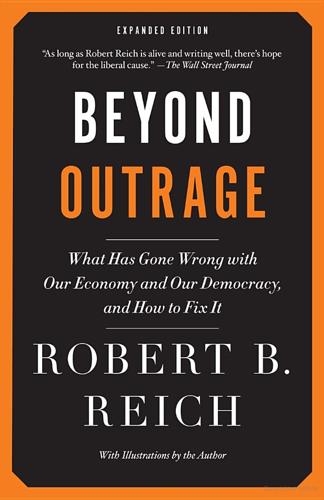
Beyond Outrage: Expanded Edition: What Has Gone Wrong With Our Economy and Our Democracy, and How to Fix It
by
Robert B. Reich
Published 3 Sep 2012
In May 2012, Jamie Dimon, chairman and CEO of JPMorgan Chase, the nation’s largest bank by assets, announced the bank had lost $2 billion to $3 billion in trades because of excessively risky bets that were “poorly executed” and “poorly monitored,” the result of “many errors,” “sloppiness,” and “bad judgment.” But not to worry, said Dimon. “We will admit it, we will fix it and move on.” Ever since the start of the banking crisis in 2008, Dimon had been arguing that more government regulation of Wall Street was unnecessary. In 2011 he vehemently and loudly opposed the so-called Volcker Rule, itself a watered-down version of the old Glass-Steagall Act—the Depression-era law that had separated investment banking (betting in the financial casino) from commercial banking (taking in deposits and lending them out).
…
By the time of Dimon’s announcement of JPMorgan’s trading losses, the rule had morphed into almost three hundred pages of regulatory mumbo jumbo and still hadn’t been finalized. In light of all this, Dimon’s promise in May 2012, after revealing billions of dollars of losses from risky trades, that JPMorgan would “fix it and move on” was not reassuring. Here we were—less than four years after a banking crisis had forced American taxpayers to bail out the Street, caused home values to plunge by more than 30 percent and pushed millions of homeowners underwater, threatened or diminished the savings of millions more, and sent the entire American economy hurtling into the worst downturn since the Great Depression—and JPMorgan recapitulated the whole debacle with the same kinds of errors, sloppiness, and bad judgment, and the same excessively risky, poorly executed, and poorly monitored trades, that had caused the crisis in the first place.
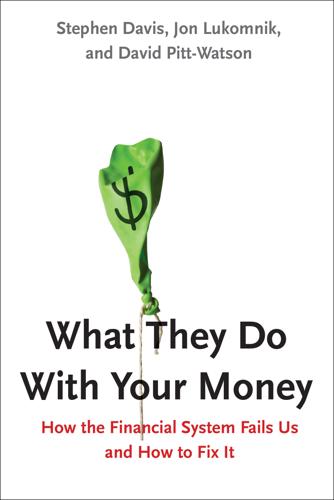
What They Do With Your Money: How the Financial System Fails Us, and How to Fix It
by
Stephen Davis
,
Jon Lukomnik
and
David Pitt-Watson
Published 30 Apr 2016
In fact, the elements of that day are not likely to be present in the sample of any of the previous 3,652 days.28 So how could the computer possibly calculate the likelihood of their recurring tomorrow, or next week? Similarly, in the financial world, if you feed a statistical model data that have come from a period where there has been no banking crisis, the model will predict that it is very unlikely you will have a banking crisis. When statisticians worked out that a financial crisis of the sort we witnessed in 2008 would occur once in billions of years, their judgment was based on years of data when there had not been such a crisis.29 It compounds the problem that people tend to simplify the outcome of risk models.
…
Are you comfortable that all these giant buildings are the result of the success of the industry, and not perhaps the result of someone taking some of your money for their own advantage? Are you sure that this very complicated industry is the best way to create those services you say are so important? What about that banking crisis you mentioned, where it looked as though the whole system would collapse? How did that come about?” He’s not done. Walking past one of the many churches in the City of London, our friend reminds us that in his day, churches were deeply respected. But they brought themselves into great disrepute by selling “indulgences,” which allowed those who were wealthy enough to be forgiven their sins.8 The indulgences, he reminds us, paid for a lot of beautiful religious architecture and a comfortable life for those members of the clergy willing to abuse the system.
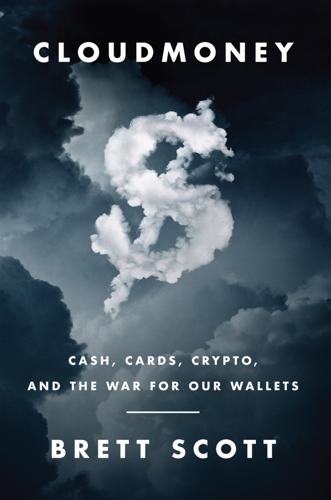
Cloudmoney: Cash, Cards, Crypto, and the War for Our Wallets
by
Brett Scott
Published 4 Jul 2022
The most recent example of the dual character of cash usage has been the Covid-19 response: central banks recorded a large increase in cash withdrawn from ATMs – because in the midst of a crisis people are scared that the banking sector will collapse – but also recorded a further reduction in transactional usage of cash. Anti-cash crusaders may try to claim that cash hoarders are likely to be criminals but – according to the central bank researchers – a cash hoarder may be a person who does not trust the banking sector, including those who don’t want their wealth locked up in banks during a banking crisis. The Federal Reserve sees huge increases in cash demand prior to hurricanes, because people do not want digital money when the power goes down. They want offline money. As the saying goes, ‘Cash doesn’t crash’, and that refers both to the failure of electrical or communication systems, and the failure of banking systems.
…
States find themselves getting edgy in their alliance with the digital payments industry as security advisers raise growing concerns about cyber attacks, payments infrastructure failures or even terrorist attacks on digital payments systems that could bring economies to a halt. Then there are questions of financial stability. What if there is a banking crisis in the context of cashlessness – how will people exit the banking system if there are no ATMs? After years of letting cash get trampled in their economies, it is now the Swedish and Dutch central banks voicing reservations about its disappearance. In 2018 the Swedish authorities went so far as to release a pamphlet called ‘If Crisis or War Comes’, in which they suggest citizens may wish to keep some cash on hand for emergencies, such as a showdown with Russia.
…
The War on Cash 5.2 million payments attempts were blocked: These details can be found in Visa UK’s explanatory letter to the UK Parliament on 15 June 2018, accessible at https://www.parliament.uk/globalassets/documents/commons-committees/treasury/Correspondence/2017-19/visa-response-150618.pdf the Bangladeshi Central Bank’s account at the US Federal Reserve: An overview of this heist can be found at https://en.wikipedia.org/wiki/Bangladesh_Bank_robbery central bank research showed that the PIN pads associated with digital payment pose a greater risk: Bank of England, ‘Cash in the time of Covid’, Quarterly Bulletin 2020 Q4, 24 Nov. 2020, https://www.bankofengland.co.uk/quarterly-bulletin/2020/2020-q4/cash-in-the-time-of-covid ‘Reports on the End of Cash are Greatly Exaggerated’: Federal Reserve Bank of San Francisco, 20 Nov. 2017, https://www.frbsf.org/our-district/about/sf-fed-blog/reports-death-of-cash-greatly-exaggerated/ central banks recorded a large increase in cash withdrawn from ATMs: See for example, ‘Cash still king in times of COVID-19’ by the ECB’s Fabio Panetta https://www.ecb.europa.eu/press/key/date/2021/html/ecb.sp210615~05b32c4e55.en.html, the Bank of England’s ‘Cash in the time of Covid’, https://www.bankofengland.co.uk/quarterly-bulletin/2020/2020-q4/cash-in-the-time-of-covid and the Federal Reserve’s ‘2021 findings from the Diary of Consumer Payment Choice’ https://www.frbsf.org/cash/publications/fed-notes/2021/may/2021-findings-from-the-diary-of-consumer-payment-choice/ including those who don’t want their wealth locked up in banks during a banking crisis: Morten Bech, Umar Faruqui, Frederik Ougaard & Cristina Picillo, ‘Payments are a-changin’ but cash still rules’, BIS Quarterly Review, March 2018, https://www.bis.org/publ/qtrpdf/r_qt1803g.pdf The Federal Reserve sees huge increases in cash demand prior to hurricanes: This was communicated during a private presentation by Alex Bau of the Federal Reserve’s Cash Product Office, titled ‘Understanding Cash Usage: Rethinking Volume Forecasting’, Feb. 2019 it accounted for over 50 per cent of transactions under $10 and 30 per cent of overall payments volume: See Federal Reserve Bank of San Francisco, ‘2018 Findings from the Diary of Consumer Payment Choice’ 15 Nov. 2018, https://www.frbsf.org/cash/files/federal-reserve-cpo-2018-diary-of-consumer-payment-choice-110118.pdf ‘we want a cashless society’: Javier E.

The End of Wall Street
by
Roger Lowenstein
Published 15 Jan 2010
Eschewing risk, lenders were pulling funds from private borrowers and parking them with the government for safety. After a day’s reflection, traders were unsettled by the loss of Fannie’s and Freddie’s preferred stock, and by the larger truth that removing the twins from danger had not resolved the banking crisis. In a telltale reminder that the country’s subprime problems were far from over, WaMu’s board sacked its CEO, Kerry Killinger, the banker who once had presumed that mortgages were just like retail. These assorted blows, striking on a single day as if from the fury of an angry god, weighed deeply on other troubled institutions, especially AIG.
…
Fully 20 percent of subprime borrowers were seriously delinquent—an extraordinary credit market bust. Even 5 percent of conventional mortgagors were delinquent, evidence that the disease of overleverage had penetrated the middle class.12 Despite these doleful augurs, the administration was still having trouble persuading the public that it had a stake in the banking crisis. The crisis was still widely seen as a Wall Street problem, and mail on the TARP was running solidly against. Senator Jon Kyl, Republican of Arizona, quipped that his mail was split: 50 percent “No” and 50 percent “Hell, no.”13 Trying to rally votes, President Bush gave a prime-time address on the economy—his first in eight years.
…
Those downgraded and defaulted bonds were on the books of banks, and others, and there was no painless way to unload them.11 In a perceptive essay published in Time, the British historian Niall Ferguson calculated that bank losses during the crisis amounted to $100 billion more than the total of new capital raised, implying (since each dollar of capital supported $10 or more on the balance sheet) that banks would have to reduce their assets by at least a trillion dollars.12 This guaranteed further price plunges, further bank losses. The devastation of banks implied an ever-stronger case for using the TARP for a capital injection. A group of professors with whom Bernanke periodically consulted were at the Fed that Friday, and strongly recommended capital investment, noting that it had worked in Sweden during its banking crisis in the 1990s. Bernanke surely mentioned this to Paulson, as the secretary told his staff he wanted them to work on a “capital program.”13 Then, Paulson took his family to an island off the coast of Georgia for a weekend of fishing and a respite from stress. The Monday he returned, stock markets around the world crashed. 18 RELUCTANT SOCIALIST The holders of the cash reserve [the central bank] must be ready not only to keep it for their own liabilities, but to advance it most freely for the liabilities of others.
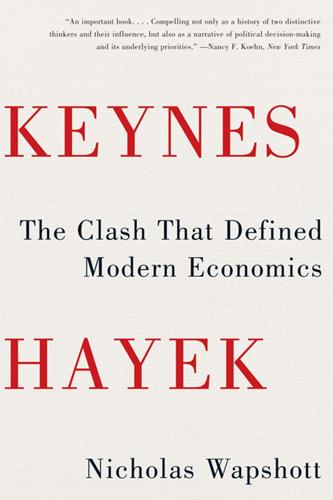
Keynes Hayek: The Clash That Defined Modern Economics
by
Nicholas Wapshott
Published 10 Oct 2011
Meyer immediately suggested to Hoover that the reparations be cut in half; three days later Hoover went a step further, declaring a moratorium on all debt payments for a year. Keynes declared the decision “a first step of the greatest possible value.”10 Keynes reported back to his friend O. T. Falk11 in London a parlous state of affairs in America that uncannily presaged the symptoms of the banking crisis that would overtake America half a century later, in September 2008. “[The banks] have purchased great quantities of second-grade bonds which have depreciated in value and their advances to farmers and against real estate are inadequately secured,”12 Falk recorded. In a lecture to the New School in New York Keynes rejected the free-market prescriptions “of the so-called ‘economists’ attached to leading New York banks,”13 and advocated a rise in prices and a loosening of credit to put the economy back on track.
…
The German elections of 1930, which left Adolf Hitler’s extreme Nazi Party victorious, prompted visions of a civil war in Germany, leading to a flight of capital from the country and heavy withdrawals of gold and foreign exchange. In early 1931, the German Reichsbank was unable to honor its commitments, setting off a banking crisis that led in turn to an intense round of speculation against the pound sterling, causing the British Treasury to seek an American loan. To meet the terms of the loan, Snowden, the Labour chancellor, proposed a package of severe public-expenditure cuts drawn up by a former official of Prudential Assurance, Sir George May.
…
It was Sraffa’s reputation as an economist with an original cast of mind that led Keynes to commission him to write an article for the “Reconstruction in Europe” series, a piece that was sharply critical of the three largest Italian banks. The piece was so damning of Italian banking practices that it drew the attention of Mussolini himself, who was, coincidentally, in the midst of trying to solve a banking crisis by using state funds to rescue the ailing Banco di Roma. Sraffa’s piece was perfectly timed to cause the maximum mischief, and Keynes was delighted. Mussolini, however, was not. He decried Sraffa’s article as a “slander against Italy,”14 the unpatriotic act of a radical agent paid by foreigners.
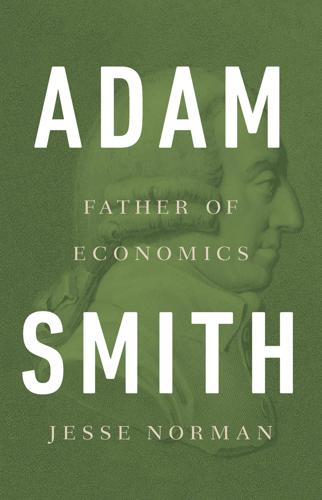
Adam Smith: Father of Economics
by
Jesse Norman
Published 30 Jun 2018
See standing army Arrow, Kenneth, 193–195, 205–206, 213, 222, 244 Arrow securities, 244 Asia, 274–275, 330 Asquith, Herbert, 23 asset markets, 247–249, 252 assets, of moral identity, 303 asymmetries, of power, 282–283, 285 Austria, 69 Ayr Bank crisis, 89, 91–93, 99–100, 174, 253 Bacon, Francis, 163 The Masculine Birth of Time by, 214 natural philosophy of, 164–165 The New Atlantis by, 164 on science, 166 Bagehot, Walter, 277 Balliol, 23–26 Bank of England, 92 banking system international, 259–260 loans in, 249–250 regulation of, 254 in Scotland, 88–89, 91–92 banks capital and, 108 financial products of, 250 lobbying by, 261 regulation of, 254, 259 rent-extraction by, 260–261 See also Ayr Bank crisis Becker, Gary, 215 behaviour, 169–170, 196, 209, 222 human, 29, 197 in markets, 236–237 The Theory of Moral Sentiments on, 201 The Wealth of Nations on, 221 benevolence, 56–57 bent markets, 283–284 Bentham, Jeremy, 21, 198, 201 Berkeley, Bishop, 25 big data, 281–282 bills of exchange, 92–93 birth, of Smith, A., 4 Black, Joseph, 126–127, 136–137, 152, 169 Blackstone, William, 100 Blair, Hugh, 124 Boston Tea Party, 103 Boswell, James, 6, 51–52, 127–128, 132, 154–155 Bradstreet, Dudley, 35 Bretton Woods Agreement, 252 Breyer, Stephen, 258 Britain.
…
But it meant that the easy-lending Ayr Bank had quickly been swamped by demand, including from speculators, and it over-expanded. There was a sharp recession in Scotland in 1771, causing many of its loans to turn sour; and lacking access to liquidity and capital, the whole structure came crashing down in the classic pattern of banking failures ever since. This then resulted in a secondary banking crisis which only four private banks in Edinburgh survived, and which inflicted enormous losses on the Ayr Bank’s original partners, who, unlike the investors in today’s incorporated limited-liability banks, were exposed to the full extent of their wealth. Their creditors were ultimately paid in full, but at the horrendous total cost to the partners of £663,397.
…
As the economy grew, so it further benefited from a happy combination of natural and human factors—copious coal reserves, the proximity of major ports, a land frontier with England, expanding export trade, a vibrant (sometimes too vibrant) banking system, low labour costs and a dynamic spirit of entrepreneurship among them. Such growth required capital, and Scotland’s shortage of capital meant that the country was ill equipped to ride out periodic recessions resulting from over-expansion, shifts in demand or bad harvests, all of which played a role in the Ayr Bank crisis of 1772. It seems very likely that Smith worked to assist his patron Buccleuch in dealing with the consequences of that crisis; but even if he did not he had a ringside seat in Dalkeith from which to watch the ramp-up in the bank’s loans, its rapid collapse and the aftermath. Part of Smith’s genius is to take his personal experience and to draw out both telling anecdotes and general lessons from it in his writings.
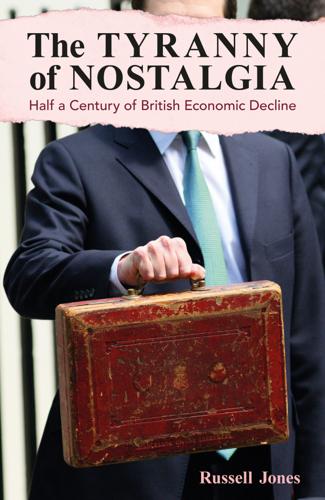
The Tyranny of Nostalgia: Half a Century of British Economic Decline
by
Russell Jones
Published 15 Jan 2023
In contrast to the early 1980s, however, the fallout from this downturn was focused more on white-collar workers than on those employed in manufacturing. The people who had benefitted most during the previous boom were frequently the biggest casualties of the bust. As recession made it harder for individuals and companies to repay their debts, housing repossessions reached a record high. There was also what was termed ‘a small banks crisis’. At one stage, the Bank of England had forty small banks under surveillance, and it was forced to help some of them secure long-term funding and others to wind down their activities. In the end, twenty-five banks failed in the early 1990s. Burgeoning excess capacity at the onset of the new decade encouraged inflation to fall steeply.
…
Business Economist 3(1), 31–44. 7 Quoted by Paul Krugman in the International Herald Tribune, 5 November 2003. Others remember Stein slightly differently, but the point remains the same. See, for example, Greenspan on Stein at www.nabe.com/am2000/grnspnvid.htm. 8 A. Turner. 2009. The Turner Review: A Regulatory Response to the Global Banking Crisis. FSA, London. 9 ABSs are securities backed by a pool of illiquid assets such as car loans, student loans, credit card debt, mortgages and so on. They are all associated with a cash flow. 10 MBSs are a form of ABS secured by a pool of mortgages. The pooling of mortgages was designed to decrease the default risk of an entire portfolio.
…
If a bank’s assets exceed its liabilities but it is unable to borrow enough cash or sell enough assets in time to meet its payment obligations, then it is illiquid but solvent. 15 Just as the Japanese authorities dithered, covered things up and sought relief in forbearance, the Scandinavians took quick and effective action, and could subsequently move on from their financial crisis much faster. Japan’s banking crisis was still causing major problems for its economy more than a decade on from its eruption. 16 The Emergency Economic Stabilization Act of 2008. 17 The ELA’s existence was not acknowledged in the Bank’s 2009 Annual Report and was only finally publicly disclosed a year after its inception. 18 In reality, the plan amounted to £400 billion, as the SLS was already in place up to a total of £100 billion. 19 Use of the SLS was to continue to run at around £180 billion throughout 2009, before gradually tapering off in 2010 and then falling more sharply thereafter. 20 The three main Irish banks, with combined balance sheets equivalent to 700% of Ireland’s GDP, were all on the brink of collapse.
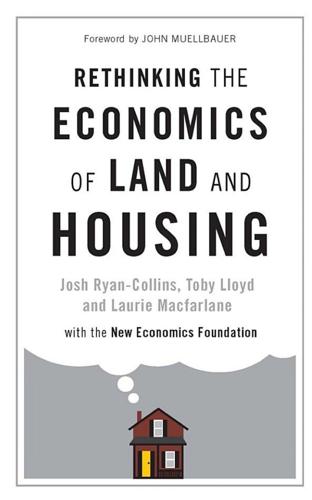
Rethinking the Economics of Land and Housing
by
Josh Ryan-Collins
,
Toby Lloyd
and
Laurie Macfarlane
Published 28 Feb 2017
During the 1960s and 1970s, so-called ‘secondary banks’, including US banks, began to enter the London banking sector and lend heavily to commercial property companies, encouraged by rapidly rising land prices in the capital. Excessive commercial property lending was the most significant contributor to the ‘secondary banking’ crisis of 1973–74 (Reid, 1982). In response to competition from these secondary banks and other financial institutions outside the Bank of England’s regulatory remit, the 1971 Competition, Credit and Control (CCC) Act was designed to level the playing field, bringing a wide range of new financial institutions under the Bank’s remit (although not building societies) but also allowing the large UK clearing banks to borrow from the fast growing wholesale markets sector (see Box 5.3).8 Box 5.3 How banks and building societies ‘fund’ mortgages Banks must ensure that their assets (the loans they make) match the sum of their liabilities (money they owe to customers) and their equity (money owed to the bank’s owners).
…
Chicago: University of Chicago Press. Mian, Atif, Amir Sufi, and Emil Verner. 2015. ‘Household Debt and Business Cycles Worldwide’. National Bureau of Economic Research. Mill, John Stuart. 1884. Principles of Political Economy. D. Appleton. Milne, Alistair, and Justine A. Wood. 2014. ‘An Old Fashioned Banking Crisis: Credit Growth and Loan Losses in the UK 1997–2012’. In The Causes and Consequences of the Long UK Expansion, ed. J. S. Chadha, A. Chrystal, J. Pearlman, P. Smith, and S. Wright. Cambridge: Cambridge University Press. Minsky, Hyman. 1986. Stabilizing and Unstable Economy. New Haven, CT: Yale University Press.
…
Compass Thinkpiece no. 4. http://www.compassonline.org.uk/publications/a-citizens-income-a-recipe-for-change. Reed, Howard, and Jacob Mohun Himmelweit. 2012. Where Have All the Wages Gone? Lost Pay and Profits Outside Financial Services, Touchstone Extras. London: Trades Union Congress. Reid, Margaret. 1982. Secondary Banking Crisis in the UK. Macmillan. Ricardo, David. 1817. Principles of Political Economy and Taxation. Batoche Books. Ricardo, David. 1973. The Works and Correspondence of David Ricardo: Volume 11, General Index, ed. Piero Sraffa. Vol. 11. Cambridge: Cambridge University Press. Riley, Don. 2001. Taken for a Ride: Trains, Taxpayers and the Treasury.

The Age of Stagnation: Why Perpetual Growth Is Unattainable and the Global Economy Is in Peril
by
Satyajit Das
Published 9 Feb 2016
Higher commodity prices in combination with large flows of capital create inflationary pressures, forcing emerging countries to increase interest rates, thus slowing economic growth. These developments threaten to reverse progress in reducing poverty. Regulations are increasingly a weapon in the battle between nations. After the 2008 banking crisis, new rules for financial institutions were developed to ensure more rigorous regulatory oversight. They were intended to be adopted globally, to ensure international consistency. Emerging countries argue that stringent regulations intended for complex multinational financial institutions in developed countries are inappropriate for their simpler financial systems, and that adoption of them would impede the ability of local banks to provide the credit necessary to support the local economy.
…
Large increases in wages would reduce export competitiveness. Large-scale social programs would strain public finances, necessitating higher tax rates. Greater consumption would reduce the high saving levels, which provide state-owned banks with deposits that can be used, as required, by the central government to drive economic growth and avoid a banking crisis. The low interest rate paid on deposits, set well below inflation, allows banks to earn substantial profits from the large margin between the rate at which they borrow and lend. The resulting high profits are then available to absorb losses on poor quality loans that cannot be serviced or paid back.
…
There was no willingness to deal with high debt levels that were incapable of being repaid, the lack of competitiveness of some Eurozone members, or the inflexible single currency and uniform interest rates across disparate economies. Creditors like Germany were unwilling to write off debt which would trigger a banking crisis. No one was willing to countenance a restructuring of the Eurozone or the euro, which had been designed without an exit mechanism. Lorenzo Bini Smaghi, an Italian European Central Bank executive board member, confessed that the euro project assumed there would be no crises. Slow, tortuous processes yielded inadequate policy responses.
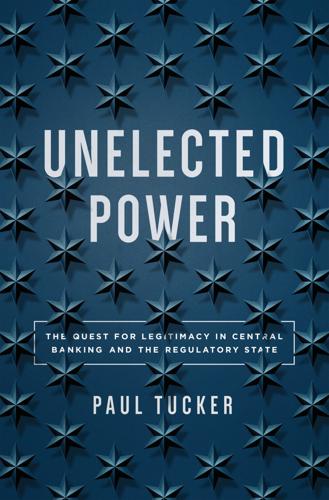
Unelected Power: The Quest for Legitimacy in Central Banking and the Regulatory State
by
Paul Tucker
Published 21 Apr 2018
The response was that the central bank was not formally responsible or accountable, so banking problems would not infect the Bundesbank’s reputation and standing as a monetary authority.20 In my own country, and I would guess the United States, the central bank could not escape censure over a banking crisis by saying that it was only one of a number of de facto supervisors, not the de jure regulator. (As reported above, the Bank of England could not escape responsibility for a banking crisis even when it had no role in supervising banks and markets.) To be clear, the position of this book is that if central banks are to be involved materially in supervision, whether alongside other agencies or not, our democratic values demand that their role should be formalized for all the reasons explored in part II.
…
But, as though revisiting their past, the Great Moderation they presided over turned nasty, twisting itself into the Great Financial Crisis and years—not yet behind us—of below-par growth. From Impotence to the Only Game in Town For the central bankers themselves, however, history has not repeated itself. Indeed, the contrast with the aftermath of the banking crisis, monetary disorder, and economic slump of the 1920s and 1930s could hardly be greater. Then, governments quickly turned away from globalization and central bank–centered macroeconomic policies. Nationalism was the order of the day—autarky, propped up by barriers to trade, controls on capital flows, and financial repression.7 When at the end of World War II the international economic order was reconstructed at Bretton Woods, New Hampshire, central banks were largely bystanders.
…
While largely about private sector organizations, some of its points carry across to the state. 17 Norman was described as mesmeric by Sir Jasper Hollam, who started his career as a clerk in Norman’s time and retired in the late 1970s as deputy governor (source: transcripts of interviews for Forrest Capie’s history of the Bank of England). Hollam, who was central to the Bank’s efforts to contain the UK’s Secondary Banking Crisis in the mid-1970s, passed away while I was beginning this project. 18 Bicchieri, Norms. 19 Beetham, Legitimation of Power, p. 11. 20 In the second edition (pp. 266–268), Beetham argues for avoiding the term consent for the third condition, preferring something like the formula I have used in the main text, on the grounds that “consent” would cover the second criterion’s test of beliefs-cum-values whereas, for a society as a whole, beliefs can be inferred but not directly observed.
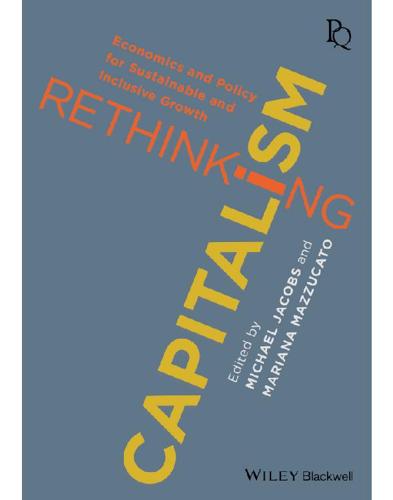
Rethinking Capitalism: Economics and Policy for Sustainable and Inclusive Growth
by
Michael Jacobs
and
Mariana Mazzucato
Published 31 Jul 2016
Investment-led Growth: A Solution to the European Crisis Table 1: Private investment as % of GDP Table 2: Projected average GDP growth (%) Table 3: Unemployed workers (millions of people) Table 4: Debt-to-GDP ratio, south euro zone Table 5: Net government lending as % of GDP List of Illustrations 1. Rethinking Capitalism: An Introduction Figure 1: Percentage of countries experiencing a banking crisis (1945–2008) (weighted by their share of world income) Figure 2: Outstanding private debt (% of GDP) Figure 3: Comparing profiles of UK recessions and recoveries Figure 4: Unemployment rates, selected countries, 2007, 2010 and 2014 Figure 5: Average real wage index for selected developed countries, 2007–2013 Figure 6: Investment (gross non-residential fixed capital formation) as a percentage of GDP Figure 7: Trends in growth in average wages and labour productivity in thirty-six developed economies, 1999–2013 Figure 8: Growth in real after-tax income from 1979 to 2007, US Figure 9: Global greenhouse gas emissions 1990–2050 2.
…
Low interest rates and lax lending practices, particularly for land and property, had fuelled an asset price bubble which would inevitably burst. In this sense the pre-crisis growth of output can be judged only alongside its post-crisis collapse. Figure 1: Percentage of countries experiencing a banking crisis (1945–2008) (weighted by their share of world income) Note: Sample size includes all countries that were independent states in the given year. Source: C. M. Reinhart and K. S. Rogoff, This Time is Different: Eight Centuries of Financial Folly, Princeton, NJ, Princeton University Press, 2009.
…
New York, Harper Business, 2002. 44 See Rodrik, Industrial Policy. Index A Acts of Parliament Transparency of Lobbying, Non-Party Campaigning and Trade Union Administration Act 2014 AIG Apple ARPA-E austerity policies Australia top earners B balanced budgets Bank of England banks bailouts banking crisis central emergency loans to investment loans by regulation rents reserves ‘shadow’ state investment banks Barro, Robert BBC Bear Stearns Bernanke, Ben biotechnology venture capitalists BNDES Bretton Woods agreements Brown, Gordon Buffett, Warren Bush, George, Jr C Canada average real wage index top earners unemployment capital, patient Capita Carney, Mark Cave, Tamsin Cheung, Steven N.
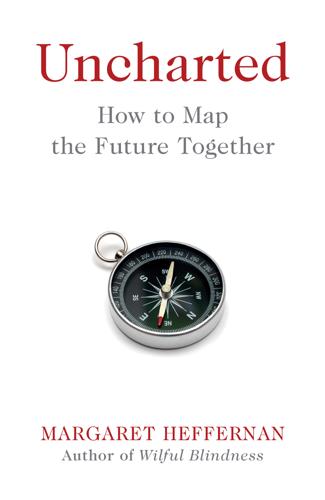
Uncharted: How to Map the Future
by
Margaret Heffernan
Published 20 Feb 2020
However much the early forecasters believed themselves to be men of pure, scientific enquiry, they all held cherished, implicit beliefs about how the world worked, about what mattered and what did not. Alan Greenspan later called these beliefs ideologies. Testifying before Congress following his failure to foresee the banking crisis of 2008, he said, ‘Ideology is a conceptual framework with the way people deal with reality, everyone has one. You have to.’8 Between 1994 and 2008, his own belief – that deregulated markets are safe – had caused him to ignore a whole series of failures in the unregulated derivatives market, right up to the crash in 2008.
…
Even in the context of the global economic crisis, failure in Ireland was extreme, as all of its major institutions had failed at once. Bank failures brought the economy close to collapse and, when the most unpopular government in the country’s history signed a punitive bailout agreement, democracy seemed moribund too. Those who had caused the banking crisis went largely unscathed while the rest of the bewildered populace were left to pay for their recklessness. At the same time, the Catholic Church, which underpinned all of civil society in its running of churches, schools and hospitals, was revealed as an abject moral failure, guilty of perpetrating and covering up the abuse of children, the historic illegal sale and burial of babies and the exploitation of young women.
…
When people have worked with you for a long time, they know you and trust you – and when you’re in a crisis, you’ve got that!’ It was, he added, ‘pretty much the opposite of the gig economy . . .’ Forced to be creative, the company found a way to sell insurance without commission via financial advisors who charged for their work, just as any lawyer, dentist or accountant would. When, in 2008, the banking crisis revealed just how corrupt and perverse commission structures had become, financial regulators insisted that the entire industry move to this new way of working. Standard Life was already there, poised and ready. Everyone I’ve spoken to about this period – from junior salespeople to the CEO – describes it with amazing energy.
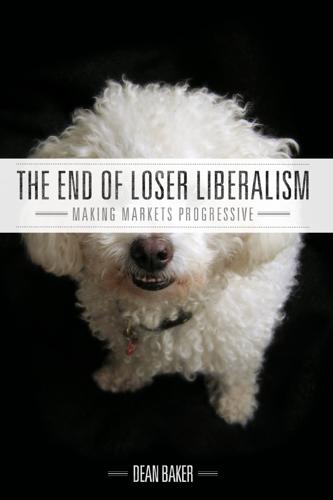
The End of Loser Liberalism: Making Markets Progressive
by
Dean Baker
Published 1 Jan 2011
While these measures deserve credit for preventing a financial collapse, there is no reason to believe that a financial collapse would have led to a second Great Depression, defined as a decade of double-digit unemployment. The first Great Depression was not just the result of mismanagement of a banking crisis in its early days. The failure of the Fed and the Treasury to take steps to backstop the banking system undoubtedly led to a more severe downturn for the economy and to financial disasters for millions of families who lost their life’s savings in failed banks. However, nothing about this initial failure to act decisively doomed the economy to a decade of double-digit unemployment.
…
The economy returned to recession in July 1981, with unemployment peaking at just under 11 percent. Volcker was clearly serious about fighting inflation, and he retains a legacy as “a giant of the financial industry” who “restored credibility to the Federal Reserve.”[43] In a similar vein, Ben Bernanke was chairman of the Fed when the housing bubble collapsed and the banking crisis threatened to bring down the financial system. Even though the resulting fallout has given the country the worst downturn since the Great Depression, almost no one in a position of authority has suggested that Bernanke be fired for this policy failure. While it is true that Bernanke only took over as Fed chair in January 2006, after the housing bubble had already expanded to a level where it would have been almost impossible to deflate without causing serious damage, Bernanke had been in top policy positions since the summer of 2002.
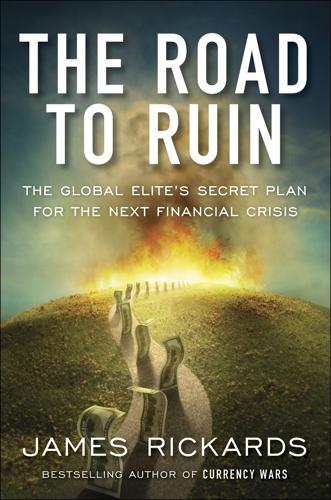
The Road to Ruin: The Global Elites' Secret Plan for the Next Financial Crisis
by
James Rickards
Published 15 Nov 2016
Ice-nine went beyond banks to include insurance companies, industrial companies, and asset managers. It went beyond orderly liquidation to include a freeze on transactions. Ice-nine would be global rather than case-by-case. The best-known cases of elites’ freezing customer funds in recent years were the Cyprus banking crisis in 2012 and the Greek sovereign debt crisis in 2015. These crises had longer-term antecedents, but Cyprus and Greece were where matters came to a head and banks blocked depositors from their own money. Cyprus was known as a conduit for Russian flight capital, some illegally obtained by Russian oligarchs.
…
Goldman also tried to wreck the LTCM bailout deal at the eleventh hour by front-running the Federal Reserve with a competing offer signed by Corzine, Warren Buffett, and AIG head Hank Greenberg. AIG met its own demise in a government bailout in 2008. Cayne and Corzine were among the heads of the “fourteen families,” the fourteen Wall Street banks that participated in the LTCM bailout. The LTCM rescue would not have succeeded without discreet intervention by legendary bank crisis maestro Bill Rhodes, who finessed foreign bankers and finance ministers for loan waivers while the fourteen families squabbled among themselves. Unknown to outsiders, LTCM had arranged almost $1 billion of credit on an unsecured basis from a nineteen-bank international syndicate. To complete the rescue, waivers were needed from those banks in addition to getting the fourteen families to infuse new cash.
…
Separation worked well for sixty-six years and saved the United States from major banking crises. Individual banks such as Continental Illinois in 1984 might fail, and there were still conflicts and loan losses such as the 1980s savings and loan crisis. Still, after Glass-Steagall there was no general banking crisis of the kind seen from 1929 to 1933. Glass-Steagall worked for exactly the reason complexity theory suggests. By breaking the banking system into two parts, Glass-Steagall made each part stronger by shrinking systemic scale, diminishing dense connections, and truncating channels through which failure of one institution jeopardizes all.
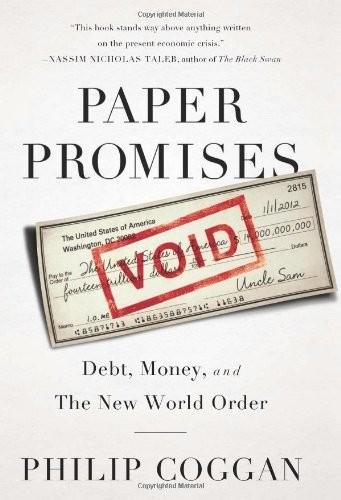
Paper Promises
by
Philip Coggan
Published 1 Dec 2011
The bigger the debt pile, the more earth-shaking these crises of confidence will be. In essence, that is why the debt crisis of 2007 – 08 was so alarming. Pumped up by debt, the banks had become so large relative to the rest of the economy that they simply had to be rescued, at a huge cost. The resulting recession delivered such a blow to government finances that the bank crisis was followed by a sovereign-debt crisis. The finances of banks are highly counter-intuitive. Customer deposits are a liability, not an asset, since they may have to be repaid at any time; the assets of a bank consist largely of the loans made to companies and individuals since they too will eventually be repaid.
…
For the Greeks, these ‘rescue packages’ simply mean further debt that still has to be paid back, and an abrupt decline in their standard of living. Other EU nations were desperate to avoid a formal Greek default. First, much Greek debt was in the hands of the wider international banking system; a default might thus precipitate a further banking crisis. Secondly, the EU feared that the failure of Greece would simply prompt the markets to switch their attentions to Portugal, Ireland, or (far worse) the much-larger Spain and Italy. Once the principle of default was applied in one nation, why not the others? By delaying any Greek default, the EU hoped to give the banks (and governments in other countries) the chance to repair their finances.
…
Debtors, from speculative homebuyers to leading governments, have made promises to pay that they are unlikely to meet in full. Creditors who are counting on those debts to be repaid will be disappointed. Clearing up the mess will be a long, slow process. It will involve many false starts, as occurred during the banking crisis of 2008 and as we have already seen in the European sovereign debt crisis. The debts may be repaid in inflated money, or devalued currency; they may be passed on to other governments with a greater capacity to repay; or they may result in outright default. Breaking those paper promises will result in economic turmoil, as both debtors and creditors suffer.
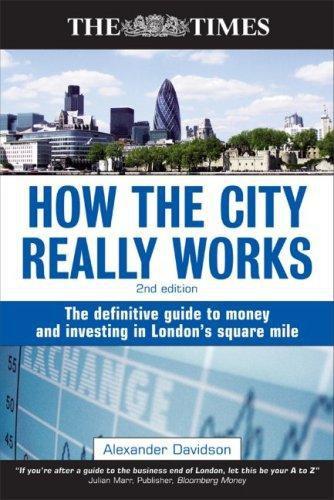
How the City Really Works: The Definitive Guide to Money and Investing in London's Square Mile
by
Alexander Davidson
Published 1 Apr 2008
As a result of the 1844 Act, the Bank of England gained the right to the sole issue of banknotes in England and Wales. It remained a privately owned bank until nationalisation in 1946. Until 1997, the Bank of England was both the supervisor of banks and adviser to the government on monetary policy, tasks conducted from different departments. The banking crisis of 1973–75 revealed weaknesses in the informal supervisory approach, which led to the Banking Act 1979, and subsequently the Banking Act 1987, under which the Bank would authorise and, in a flexible way, supervise the banking sector. The Bank of England’s continued role as supervisor came under increasing scrutiny, particularly after the July 1991 collapse of Bank of Credit and Commerce International (BCCI).
…
In 1995, the Bank of England decided not to intervene to save Barings from going bust, taking the view that the event would pose no systemic threat to the UK banking system, and that a wholly market-driven solution was more suitable to address the bank’s insolvency. In other cases, the Bank of England has intervened. In 1890, the Bank, along with various commercial banks, rescued Barings after its bad debts in Argentina were three times its capital and threatened its solvency. In 1975, the Bank arranged a banking consortium to act as a lifeboat in a banking crisis precipitated by large exposures to the property sector. In 1984, the Bank helped Johnson Matthey Bankers Limited, a London market maker in gold bullion, which had got into financial difficulties from its 16 HOW THE CITY REALLY WORKS __________________________________ commercial lending exposures.
…
84 HOW THE CITY REALLY WORKS __________________________________ Repos The repo (see also Chapter 2) means a sale and repurchase agreement and is effectively a short-term secured loan in the money markets, sometimes between banks and the Bank of England, and sometimes between financial institutions without involving the Bank directly. The popularity of the repo reflects the overwhelming shift in the money markets from unsecured towards secured lending, where bigger sums may be borrowed. The trend has been driven by the 1990s banking crisis in Japan, and recent banking problems in Germany, according to brokers. Let us look at how the classic repo works in the UK. Sometimes a bank borrows money from the Bank of England for a stated period, perhaps 7, 14 or 28 days, and provides collateral, usually in the form of government bonds.
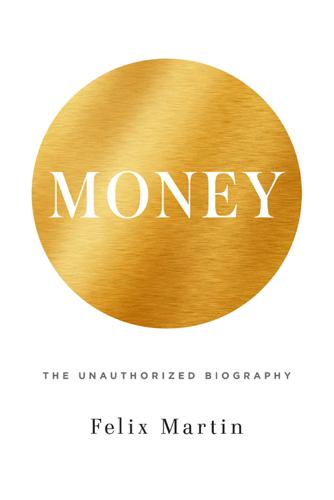
Money: The Unauthorized Biography
by
Felix Martin
Published 5 Jun 2013
Their ingenious evasions, the historian Tacitus reported, “though continually put down by new regulations, still, through strange artifices, reappeared.”10 Now the emperor decreed the game was up: the letter of the old dictator’s law would be enforced. The consequences were chaotic. As soon as the first ruling was made, it was realised with some embarrassment that most of the Senate was in breach of it. All the familiar features of a modern banking crisis followed. There was a mad scramble to call in loans in order to comply. Seeing the danger, the authorities attempted to soften the edict by relaxing its terms and announcing a generous transitional period. But the measure came too late. The property market collapsed as mortgaged land was fire-sold to fund repayments.
…
What was in short supply in a crisis was not gold, but trust and confidence—which the central bank had a unique ability to restore by standing ready to swap the discredited bills of private issuers for its own sovereign money. Such was the solution to which the Bank Directors always in the end groped their way reactively in any case. Grasp once that money is not a commodity but credit, and the rationale for making it explicit policy was clear. These diverging views of appropriate policy in a banking crisis were put in the shade, however, by a broader disagreement over the need for government policy, and especially monetary policy, to manage the macroeconomy more generally. The conventional view of money as a commodity medium of exchange was one of the pivotal assumptions behind perhaps the single most famous proposition associated with the classical school—an alleged economic law of nature as practically important as it was counter-intuitive, articulated by Jean-Baptiste Say in his Treatise on Political Economy in 1803.
…
Mandeville, B. (1705), The Grumbling Hive, or, Knaves Turn’d Honest. London. —(1988) [1732], The Fable of the Bees, or, Private Vices, Publick Benefits, 2 Volumes. Indianapolis: Liberty Classics. Markowitz, H. (1952), “Portfolio selection.” Journal of Finance 7(1), 77–91. Martin, F. (2011), “Global High Yield: The Big Winner from the Banking Crisis.” Thames River Capital Monthly Newsletter. London: Thames River Capital. Marx, K. and Engels, F. (1985) [1848], The Communist Manifesto. London: Penguin. Mauss, M. (1954), The Gift: Forms and Functions of Exchange in Archaic Societies (tr. Cunnison, I.). London: Cohen & West. Mayhew, N. (1999), Sterling: The Rise and Fall of a Currency.
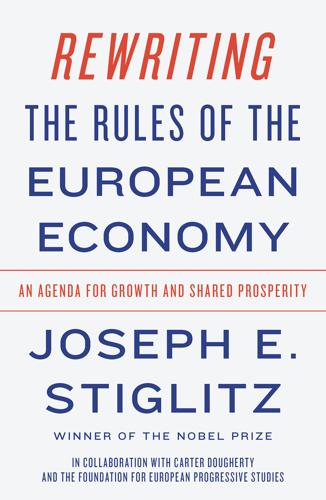
Rewriting the Rules of the European Economy: An Agenda for Growth and Shared Prosperity
by
Joseph E. Stiglitz
Published 28 Jan 2020
Under the extreme pressure of the sovereign debt crisis, the European Stability Mechanism (ESM) was created in 2012 as a €500 million fund to provide fiscal support to members of the Eurozone that are facing financial difficulties. It was a start: big enough to handle a crisis in a small country, but far short of what would be needed were there a banking crisis in a large one. Europe also realized that the lack of a common deposit insurance played a big role in exacerbating the euro crisis, as money fled the crisis countries. Creating a system of common deposit insurance is part of a broader agenda of creating a banking union in which all banks in the Eurozone would also have a common supervisor, and in which there would be a common procedure for bank resolution (for dealing with insolvent banks).
…
By 2013, a point in which most bailout costs had already been incurred, the European Union had plowed billions and billions into its banking sector, which served mainly to avert disaster; bailed-out banks did not generally improve performance in the coming years.3 All this aid came in addition to the hidden subsidies that were provided by the ECB, as it lent money to the banks at essentially zero or negative (real) interest rates. By mid-2017, banks in the Eurozone had about €760 billion in cheap liquidity thanks to the ECB.4 By way of comparison, in 2013 the EU sprinkled only €2 billion into a new effort to fight youth unemployment, a crucial problem exacerbated by the banking crisis and the austerity-minded response to the recession. But these financial costs are dwarfed by the costs that the financial crisis imposed on the rest of the economy. If one compares what GDP might have been without the crisis (based on historical growth) and what GDP actually was, Europe’s cumulative losses were in the trillions of euros.
…
Germany’s Deutsche Bank, once a relationship lender with a focus on Germany, came to be dominated by London-oriented investment bankers, a mistake the bank has only recently begun to remedy. Sensible calls for European oversight were lost in the din of praise for these behemoths. By 2010, as the worst of the banking crisis had passed, the top ten EU banks had about €15 trillion in assets, equivalent to 122 percent of GDP.6 And Europe remains home to ten globally systemically important banks (G-SIBs), the designation that the international Financial Stability Board set up in response to the crisis, which highlights banks whose failure would have a significant effect on the world’s economy.

The Permanent Portfolio
by
Craig Rowland
and
J. M. Lawson
Published 27 Aug 2012
The most successful investors on the planet have no shame in admitting they avoided an investment that they didn't understand. So don't let anyone make you feel guilty for staying away from something that doesn't make sense to you. Rule #10: Don't Depend on Any One Investment, Institution, or Person for Your Safety In the 2008 banking crisis, some institutions that existed for over a century went bankrupt almost overnight inflicting large losses on investors. In the same year Bernie Madoff, one of the founders of the NASDAQ stock exchange, was revealed to have been running a multibillion-dollar Ponzi scheme that caused tremendous losses to investors, many of whom had entrusted him with their life savings.
…
The government has attempted to ease the fear of this sort of event through the Federal Deposit Insurance Corporation (FDIC), which was created in the 1930s and insures all deposits up to a certain amount. Although FDIC deposit insurance has worked to date, the reality is that the FDIC actually has very few assets in relation to its liabilities. That means a wide-scale bank failure could quickly wipe out all of the FDIC's reserves. During the 2008 to 2009 banking crisis, the FDIC did actually run low on reserves and had to go to Congress and the Treasury to obtain a line of credit to deal with the failures—to the tune of around $500 billion. So this threat is not theoretical.11 The FDIC stated in a February 2009 disclosure12: Even though the FDIC has significant authority to borrow from the Treasury to cover losses, a fund balance and reserve ratio that are near zero or negative could create public confusion about the FDIC's ability to move quickly to resolve problem institutions and protect insured depositors.
…
Cash Risk Matrix Table 8.11 is similar to the one shown in Chapter 7. This is because the same risks that affect other types of bonds also affect different types of cash (which are just a shorter maturity version of these investments). The only difference here is the addition of bank CDs, which although FDIC insured, do have a risk that during a very large bank crisis the FDIC could have problems paying back depositors. Note also that using a T-Bill fund does have counterparty risk if the managers do their job incorrectly. For most investors however, the ability to setup your own T-Bill ladder is not a convenient option so a fund is your best choice even with this small risk.
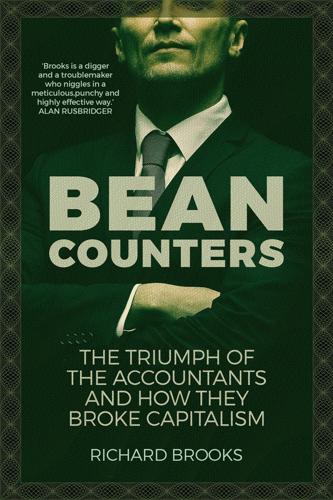
Bean Counters: The Triumph of the Accountants and How They Broke Capitalism
by
Richard Brooks
Published 23 Apr 2018
It was owed money, however, in a mixture of relatively weakening currencies. The combination eroded its margins significantly. At the same time, after being milked of profits to fund Cosimo’s and later Lorenzo’s extravagance, its branches were highly leveraged. The effect of any losses on the Medici would be magnified, just as in the twenty-first-century banking crisis. But to the extent that it could still be considered one bank, it remained the largest in Europe and as a matter of pride rarely refused deposits. Nor would it reduce the generous discrezione interest rates it paid on them. Most of its branches were consequently on the lookout for ever higher returns from lending this money out.
…
Among them was William Barclay Peat, a landowner’s son from Fife, who headed to London as a 17-year-old in 1870 to join the office of an accountancy firm that itself had relocated from Aberdeen. Within seven years he was running the firm, renamed W. B. Peat & Co. Another Glaswegian, James Marwick, was sent in 1891 to Melbourne by investors worried about money at risk in an Australian banking crisis. He set off home via North America but didn’t make it back. Instead, spotting the potential in a United States booming on the back of rail, steel and oil, he set up a new firm in New York. There the six-foot-six Glaswegian – described by a biographer as ‘a big man in every way, his personality, his stature, and his role as a mover and shaker’11 – established his reputation by identifying the overvaluation of securities at a mortgage finance company.
…
But KPMG had taken the HBOS board’s word that funding would continue to be forthcoming. That, decided the regulator, got the firm over the depressingly low bar required to escape any censure. Regulatory indifference had already been apparent some years earlier. When the House of Lords committee looking at the banking crisis had questioned FRC chief executive, former civil servant Stephen Haddrill, one peer had asked: ‘As a matter of interest, who were the auditors of Northern Rock?’ That was in November 2010, just three years after the Rock had been bailed out with £20bn of public money. It might have been hoped that the accountancy regulator would have been deep into an examination of the part that accountancy had played in the crisis, including this key episode.
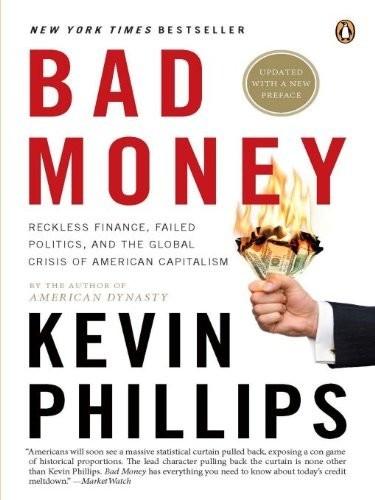
Bad Money: Reckless Finance, Failed Politics, and the Global Crisis of American Capitalism
by
Kevin Phillips
Published 31 Mar 2008
Unfortunately, this included Federal Reserve chairman Alan Greenspan, who smiled permissively at hedge funds, asset bubbles, and the new mortgage gambits, while shunning closer attention to the abuses of mortgage lenders.16 This may be why it took a European, Axel Weber, president of the German Bundesbank, to become the first central banker to explain that the August crisis was just like a classic banking crisis or run, save that it was taking place in the nonbank financial system.17 Washington seems to have ignored a profound and trouble-making transformation. In the meantime, the new nonbank financial sector, or shadow banking system, had also taken over some of the prerogatives formerly reserved to banks of creating money.
…
For some of the big banks, potential loan losses would force them to either set aside more capital in reserves or substantially retrench. Having to take huge losses from SIVs and CDOs onto their books was bad enough, but by year’s end, attention was also turning to potential corporate loan defaults. The Financial Times, comparing possible dimensions of the U.S. banking crisis to those of Japanese banks in the 1990s, calculated the earlier losses of the Japanese banks at $700 billion and speculated that if this decade’s losses rose to $600 billion, that “might represent as much as one-third of the core (tier one) banking capital for U.S. and European banks.”35 What could even make things worse would be if defaults on sub-investment-grade corporate debt surged in 2008 because of a recession.
…
A lot of the alternatives deemed plausible may be unrealistic. 33 Karl Polanyi, The Great Transformation: The Political and Economic Origins of Our Time (Boston: Beacon Press, 2001). 34 “Three Ways to Avoid Wall Street,” Money Morning, November 9, 2007. 35 Gillian Tett, “Japan Offers a Salutary Tale in Banking Crisis,” Financial Times, January 1, 2008. 36 Bill Gross, “Pyramids Crumbling,” Pimco Investment Outlook, January 2008. 37 “The Race Is On to Be Asia’s Number One for Finance,” Financial Times, July 5, 2007. 38 Noriel Roubini and Brad Setser, “Will Bretton Woods 2 Regime Unravel Soon?” www.rge.monitor.com, February 2005. 39 Chris P.
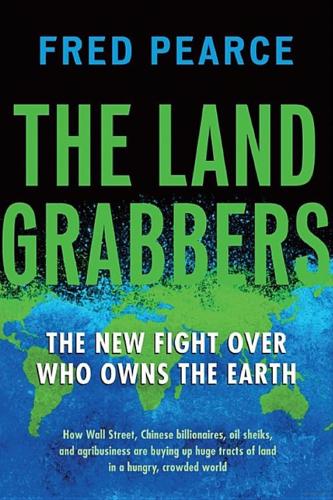
The Land Grabbers: The New Fight Over Who Owns the Earth
by
Fred Pearce
Published 28 May 2012
It said that food futures—previously a rather humdrum business that helped fund farmers and keep prices stable—had been taken over by speculators in the finance markets, and in the process it had turned into a dangerous beast that bankrupted farmers and caused worsening price volatility. It said that the same kinds of forces that had overwhelmed the world’s banks in 2008 were disrupting food markets too. And there was an extra wrinkle. It appeared that, as the banking crisis escalated, investors seeking a safe haven were buying into commodities and, by 2010, were driving up food prices once more. The argument, in essence, is this. Until the 1980s, there was a mutually supportive relationship between farmers and market traders—a relationship that had existed since the mid-nineteenth century, thanks to the futures contracts system invented at the Chicago Board of Trade.
…
But the deregulation of financial institutions in the 1980s undermined that relationship, by creating new forms of financial products that allowed speculators who knew nothing about farming or food trade to muscle in on the food futures business. New kinds of financial derivatives were created, somewhat analogous to those behind the subprime mortgage business, whose collapse triggered the 2008 banking crisis. Traditional futures are themselves a form of derivative, of course. But the new forms began in 1991, when Goldman Sachs packaged up commodities futures of all sorts (from coffee and corn to oil and copper) into the Goldman Sachs Commodity Index. It then sold stakes in index funds. By buying them, investors were betting on the future price of a basket of commodities.
…
See also Illovo; Western family Asuncion, Paraguay, 129, 132, 135, 138 Atama Plantation, 88 Australia, 23, 157–61, 178, 182, 192, 238, 266, 267, 272, 289; land grabbed in, 36, 37, 100, 157–61 Australian Agricultural Company, 157 Awash National Park, Ethiopia, 286 Ayoreo Indians, 131, 134–35 Badia, 283–84, 285, 289 Bahia, Brazil, 97, 115, 118–27, 202 Bahrain, 37, 38, 160 Ballve, Teo, 146–47 Bambara, 272, 281 bananas, 33, 56, 95, 188, 189, 192, 235, 272, 280; banana republics, 141–42, 147 Bangladesh, 21 banking crisis of 2008. See also credit crunch Baro River, Ethiopia, 7, 8, 14, 15 Barreiras, Brazil, 119, 120–21, 123, 125, 127 Batwa “pygmies,” 224–25 Bayliss, Peter, 81–85, 88, 90 Beddington, John, 291, 292–95, 301 Bedford Biofuels, 248–49 Bedouin, 35, 283–84 beef, 27, 116, 118, 138, 141, 157–59, 247 Beidahuang Land Cultivation Group, 202 Beigbeder, Charles, 109 Belarus, 110 Benetton family, 149, 151–52, 154 Benin, 88, 202 Bernhard, Prince, 223, 224, 225, 226–67, 230 Bin Laden Group, 33 biodiesel.
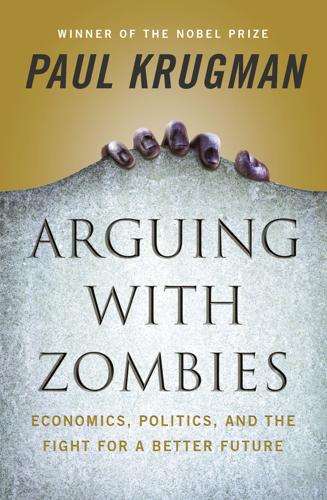
Arguing With Zombies: Economics, Politics, and the Fight for a Better Future
by
Paul Krugman
Published 28 Jan 2020
Should Spain try to break out of this trap by leaving the euro, and re-establishing its own currency? Will it? The answer to both questions is, probably not. Spain would be better off now if it had never adopted the euro—but trying to leave would create a huge banking crisis, as depositors raced to move their money elsewhere. Unless there’s a catastrophic bank crisis anyway—which seems plausible for Greece and increasingly possible in Ireland, but unlikely though not impossible for Spain—it’s hard to see any Spanish government taking the risk of “de-euroizing.” So Spain is in effect a prisoner of the euro, leaving it with no good options.
…
If you have your own currency, that’s usually easy: wages are normally set in that currency, so just letting the currency drop on world markets produces an immediate improvement in competitiveness. In fact, that’s what happened in Finland in the early 1990s, when the fall of the Soviet Union and a local banking crisis combined to produce a nasty economic slump. But when things got problematic for Finland after 2008, the country no longer had its own currency. Neither did, for example, Spain, discussed in the first article in this section. So their only way out was a long, painful slog of reducing wages in the face of high unemployment.
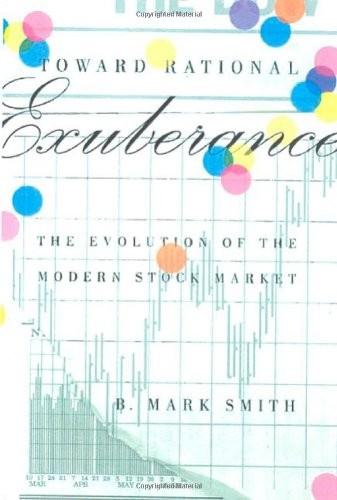
Toward Rational Exuberance: The Evolution of the Modern Stock Market
by
B. Mark Smith
Published 1 Jan 2001
By 1837 the United States had more miles of completed railroads than any other country. But in that year the nation experienced a very unpleasant shock—a severe stock market crash. The nation’s unstable banking system, consisting of poorly regulated state-chartered banks, collapsed under the burden of rampant speculation in western lands and in the new railroads. The banking crisis pulled down the stock market and left a bitter hangover in the form of a depression that would last six years. The rapid stock price fluctuations of the period also brought to the fore a new type of professional market participant, more interested in exploiting short-term moves in share prices than in executing orders for outside investors.
…
The 1907 panic, like those that had preceded it, exposed dangerous defects in the financial system. More and more, voices began to be heard urging some sort of governmental response to avoid a repetition of the crisis. Prominent Republican Senator Nelson W. Aldrich said, “Something has got to be done. We may not always have Pierpont Morgan with us to meet [another] banking crisis.”13 Morgan himself did not disagree. His aide and son-in-law Herbert Satterlee summed up Morgan’s attitude: “It was not a good pattern—no one knew that as well as he—but it was the pattern in which he had found it. From that moment he worked to make it better and less vulnerable in bad times or periods of overspeculation.
…
The First National Bank of Chicago already had serious problems, created by bad investments and the extremely high interest rates that then prevailed. It also had large loans outstanding to the Hunts. Rumors began to circulate that the bank might be in trouble. Heimann knew that he faced a potential crisis. In 1907, J. P. Morgan had worked frantically to stem a banking crisis precipitated by panicky withdrawals from banks and trust companies by small depositors. By 1980 small depositors were protected by Federal Deposit Insurance up to $50,000 and were thus unlikely to panic. But all major banks held deposits that were significantly greater than $50,000, and many of these deposits were controlled by relatively sophisticated managers who made it their business to be aware of the financial condition of the institutions in which they had placed their funds.

The House of Morgan: An American Banking Dynasty and the Rise of Modern Finance
by
Ron Chernow
Published 1 Jan 1990
Morgan’s friend Bishop William Lawrence noted in his diary how Morgan would study the telegrams, place his palms on the table, then stare fixedly ahead. Though Pierpont was needed on Wall Street, his partners feared a premature return might itself touch off a panic. By Saturday, October 19, he decided to rush back by private railroad car to deal with a spreading bank crisis. “They are in trouble in New York,” he told Bishop Lawrence. “They do not know what to do, and I don’t know what to do, but I am going back.”3 The 1907 panic was Pierpont’s last hurrah. Although semiretired, reporting to work periodically for only an hour or two, he suddenly functioned as America’s central bank.
…
The country needed an elastic currency and a permanent lender of last resort. From the ashes of 1907 arose the Federal Reserve System: everybody saw that thrilling rescues by corpulent old tycoons were a tenuous prop for the banking system. Senator Nelson W. Aldrich declared, “Something has got to be done. We may not always have Pierpont Morgan with us to meet a banking crisis.”18 By confirming his storied powers, Pierpont also inadvertently fostered talk of an omnipotent Wall Street money trust. President Roosevelt now recommended federal regulation of the stock exchanges, while New York governor Charles Evans Hughes wanted margin requirements raised from 10 to 20 percent.
…
They would finally take their name from a new subcommittee counsel, Ferdinand Pecora, appointed in January 1933. The Pecora hearings would lead straight to Glass-Steagall and the dismemberment of the House of Morgan. IN the autumn of 1932, Hoover presided over one last humiliation—a nationwide banking crisis. Three years of deflation had eroded the collateral behind many loans. As banks called them in, the business slump worsened and produced more bank runs and failures. Before 1932, the thousands of bank closings were mostly confined to small rural banks. Then, that October, Nevada’s governor shut the state’s banks.
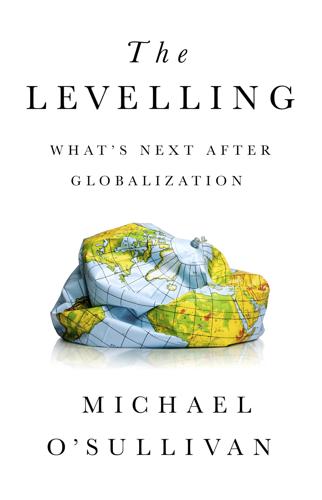
The Levelling: What’s Next After Globalization
by
Michael O’sullivan
Published 28 May 2019
Independently, three German social scientists have also examined how politics changes after financial crisis.2 Using data going back 140 years, they chart a sharp rise in support for (usually new) politically radical (usually far-right) parties in the aftermath of financial crises, finding that on average far-right parties tend to see a 30 percent rise in their vote following a financial crisis (though apparently this effect fades five years after the crisis). The rise of Sweden’s New Democracy Party after the 1990 banking crisis and the popularity of Italy’s Northern League during the same period are examples, as are the rises of the alt-right in the United States, the Five Star Movement in Italy, the Podemos and Ciudadanos Parties in Spain, and the True Finns in Finland. They also find that incidents of unrest (riots, street protests) tend to be higher after a financial crisis.
…
Policy makers in China have doubtless been absorbing lessons from what developed world central banks have done over the past ten years in respect of the extraordinary measures taken to combat debt crises. In particular, if China has learned from Europe’s crisis, it will know, first, that it must not end a debt and banking crisis with large amounts of debt on the government balance sheet, and, second, that it must not allow the burden of economic pain to fall on the ordinary man and woman lest that provoke social unrest. Looking ahead, there are two components to the political impetus in China. The first, overriding one is the goal of advancing China and increasing its prestige, or its dream, to be consistent.
…
The second issue is that Ireland still regularly suffers from imbalances in its economy, the most obvious one today being that house prices and rental charges are higher than during its bubble period, and that there is a resulting housing crisis. Ireland’s overheated property market is one area where it can learn from other small countries. In the past it has found it too easy to copy the policy model of the United Kingdom and has ignored the lessons of other small open countries (notably, the Scandinavian banking crisis of the 1990s came to the notice of Irish policy makers only after the collapse of the Celtic Tiger). Brexit will, naturally, change this. As regards housing, Ireland as a country still needs to decide that “houses are for living in, not for speculation,” to quote a recent remark from China’s president.8 It must then act accordingly from a fiscal and regulatory point of view.
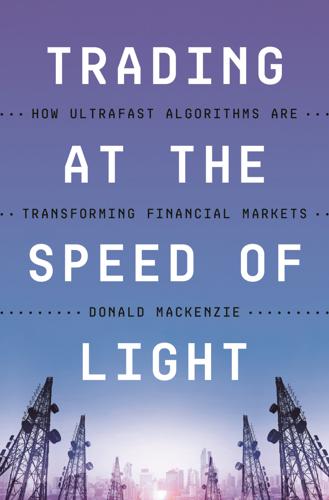
Trading at the Speed of Light: How Ultrafast Algorithms Are Transforming Financial Markets
by
Donald MacKenzie
Published 24 May 2021
Banks are still engaged in market-making in some classes of financial instrument (such as those discussed in chapter 4: foreign exchange and governments’ sovereign bonds), albeit often using systems that are slow by HFT standards, but large-scale use of other HFT strategies by banks was effectively ended by the curbs on banks’ proprietary trading that followed the 2008 banking crisis. The HFT firms I have visited differ widely. Some had offices in unremarkable or even scruffy buildings; others had spectacular views over Lake Michigan, Manhattan, or Greater London. The décor is generally bland, although as I sat waiting for an interviewee in one HFT firm’s new offices, some of the owner’s art collection was ready to be hung.
…
Leo Melamed in the Chicago Mercantile Exchange’s datacenter, 2012. Photograph courtesy of Melamed & Associates, Inc. “You never want a serious crisis to go to waste,” as Rahm Emanuel, a Chicago politician of a later generation, famously said at a Wall Street Journal conference during 2008’s global banking crisis. “What I mean by that is an opportunity to do things that you think that you could not do before.”2 It would have been easy for the Chicago futures exchanges to see the eruption of interest on Capitol Hill in the early 1970s in regulating them simply as a threat, but the CME’s Leo Melamed seems to have glimpsed “an opportunity to do things.”
…
The episode of this kind that had the deepest effects on the evolution of algorithmic trading was the late-1960s’ “paperwork crisis” and resultant bankruptcies of stockbrokers, the accompanying threat that large numbers of the general public would lose substantial amounts of money, and the resultant congressional reform efforts, culminating in the 1975 Securities Acts Amendments, which still form a major part of the legislative framework that gives the SEC its legal powers. The near-catastrophic 2008 banking crisis prompted another phase of intense congressional involvement in reform efforts, but those efforts have not played a major part in the events described in this book, because their greatest effects were on one of the markets that I researched but (to prevent this book from becoming overcomplicated) I have not discussed: interest-rate swaps, in which efforts to practice HFT have to date largely been unsuccessful.16 The legal crackdown on spoofing, touched on above, was, however, largely made possible by this post-2008 congressional reform effort.
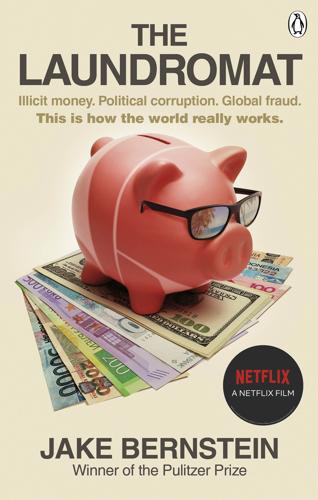
The Laundromat : Inside the Panama Papers, Illicit Money Networks, and the Global Elite
by
Jake Bernstein
Published 14 Oct 2019
Always eager to please, Owens agreed. Now, back in his office, post-publication, Owens found Obermaier’s business card. On it he scrawled in Spanish, “Avoid this person. He is the dev il.” The day after Kristjánsson’s report shook Iceland, Ólafur Hauksson, the special prosecutor investigating the banking crisis, was in his office when he noticed the cars. Reykjavík is not a bustling metropolis. Yet Hauksson watched as a line of vehicles as far as the eye could see made their way into the city. The call had gone out on Facebook. It was the last day of the Althingi, the Icelandic parliament, and organizers had urged Icelanders to congregate in the square in front of the parliament building.
…
Daphne’s disgust soon encompassed the new leader of the Nationalist Party, whom she accused of being implicated in a sex-trafficking and money-laundering scandal.3 Malta demonstrates how the secrecy world is a living, evolving organism. When one avenue for hiding cash closes, a new one opens. The Labour government and its lawyer-accountant enablers turned the country into a European doorway for dirty money, just as a banking crisis in Cyprus diminished that island’s allure as a money-laundering destination within the European Union. Malta’s emergence as an outpost of the secrecy world underscored the resilience of the offshore system and then became a call to action for the journalists seeking to expose its abuses. In its first seven months, the Labour government legalized the sale of the country’s passports.
…
See Paradise Papers Australia, 43, 127, 147, 154, 161 Austria, 94 Aviva Holdings Limited, 111 Azerbaijan, 261–65, 277–78 Azerbaijan America Alliance, 264–65 Backslash Distributors, 36–38 Báez, Lázaro, 192–94, 217, 269 Bahamas, 29–30, 34, 35–38, 55, 76, 86, 256, 266, 280 mafia in, 29–30 Mossfon operations, 29–30, 35–38, 121, 133 tax havens, 24, 29–30, 35–38, 55, 64, 70, 121, 133 Bahamas Software, 36–38, 77 Baku, 263–65 Bale, Peter, 226–27, 273–74 banking, 47–60, 79 Bank Rossiya network, 90–102 Commerzbank raid, 5–10 Germany, 205–10 HSBC, 47–60, 79, 137–44, 177–81, 186–90, 195–99 Iceland, 118–24, 214–16, 223, 229 offshore credit cards, 70–74 offshore system, 47–60, 68–74, 79, 130–44 Russia and, 88–102, 252, 256 sexism in, 52–53 Swiss Leaks HSBC investigation, 177–81, 186–90, 195–99, 202–4, 216, 224–25 2008 crisis, 116–17, 123–24, 128–29, 184, 197, 214, 215, 229, 239, 257, 258, 261 UBS, 130–32, 135–37 See also specific banks Bank of Credit and Commerce International (BCCI), 66–67 Bank Rossiya, 90–102 Barmanbek, Imre, 266 Bayrock Group, 256–61 Bay Street Boys, 30 BBC, 186, 217 bearer shares, 26, 35–36, 115, 132–35, 140, 168, 181, 210 Beijing, 104, 165, 166, 167 Belgium, 53, 198–99, 258 Belize, 24 Belongers, 20–23, 25, 32–33 Bergman, Sven, 216, 228–30, 239 Berke, Richard, 152 Bermuda, 24, 84, 280–81, 283 Bethancourt, Rómulo, 270 Bharara, Preet, 245, 252 Big Tobacco, 149, 164 Birkenfeld, Bradley, 130–31, 249 Bitcoin, 284 Björgólfur family, 119, 122 Blackwater, 202 Blairmore Holdings, 133, 240 Bloomberg News, 164, 245 bluefin tuna industry, 149–51, 157 Blue Ocean Finance Limited, 140–41 Blum, Jack, 66, 67, 70, 72 Bobrov, Vladimir, 102 Boehner, John, 265 Boncamper, Malchus Irvin, 183–84 Bonny Island National Liquefied Gas Project, 55 bootlegging, 29–30 Bordachenko, Edward, 101 Borodin, Pavel, 92–93 Botín, Emilio, 197–98 Bourdon, William, 180, 181 Bo Xilai, 171–73 Bransten, Eileen, 109–10 Brazil, 185 Lava Jato scandal, 284 Mossfon operations, 231–32, 270–71 Brezhnev, Leonid, 262 British Virgin Islands (BVI), 19–33, 34, 35, 50, 54, 55, 90, 95, 99, 166, 233, 268 anti-money-laundering laws, 132–35, 182 bearer shares and, 132–34 Belongers, 20–23, 25, 32–33 double tax treaty, 21–22 drug trade, 27–28 Mossfon operations, 19–33, 41, 42, 56, 80–87, 121–23, 129, 132–45, 161, 169, 182–84, 268, 285 origins as a tax haven, 21–24 Panama Papers and, 268–70 population, 23 public registries law and, 283–84 tax havens and offshore system, 19–33, 41, 42, 56, 72, 80–87, 99, 121–23, 129, 132–45, 161, 169, 182–84, 268 Broadhurst, Nancy, 30–31, 193 Bronstein, Scott, 233 Brooks, Richard, 185, 186, 188 Brooks Trading, 122 Brothelgate, 279 Brothers Circle, 92 Brown & Root, 55 BTA Bank, 260 Buchholz, Dieter, 135–36 Burson-Marsteller, 201–2 Burton, Dan, 264 Bush, George W., 73, 75, 137 Butler, Paul, 21–22 Buzenberg, Bill, 149, 150, 161, 273 BVI Financial Services, 61 Cabra, Mar, 157, 160–65, 173, 177, 179–81, 187, 189, 195–99, 209–10, 213, 217–25, 243, 246–47, 274 Caicos, 24 Caijing, 164–65, 173–75 Camarena, Enrique “Kiki,” 44, 45 Cameron, David, 133, 240 Cameron, Ian, 133, 240 Campagnoli, José María, 192–93 Campbell, Duncan, 149, 152, 158 Canada, 154, 252 Caraballo, Javier, 244, 246, 269–70 Cardona, Christian, 278–79, 282–83 Caro Quintero, Rafael, 44–46 Caruana Galizia, Daphne, 237, 275–79 assassination of, 275, 278–80, 282–83 Caruana Galizia, Matthew, 188, 222, 237, 275, 278–80 Caruana Galizia, Paul, 278 Carvajal, Rigoberto, 157–58, 180–81, 188, 196, 209, 213, 218, 223, 248 Casey, William, 60 Casper, Norman, 63 Castle Bank and Trust Company, 63 Castro, Fidel, 30 Catholic Church, 12, 20 Cavendish International, 54 Cayman Islands, 4, 23, 66, 98, 115, 140 Center for Public Integrity (CPI), 148–52, 161, 187, 225–27 ICIJ independence from, 273–74 Central Bank of Cyprus, 61 Chagall, Marc, 113 Chan, Yuen-Ying, 164–66, 175, 244 Channel Islands, 24, 259 charities, as fake beneficiaries, 44 Charlie Hebdo massacre, 202 Chase Manhattan, 69 Chavarria de Estribi, Adelina Mercedes, 26 Chávez, Hugo, 137 Cheney, Dick, 55–57 Cheney, Lynne, 55 Cherry Group USA LLC, 2–3 China, 29, 31, 48, 50, 68, 104, 162–75, 203 banking, 50, 68, 162–75 China Leaks, 169–75 economy, 163–64, 167 government censorship, 164, 165, 175, 244 Internet, 164, 165, 175 journalism and, 162–75, 244 Mossfon and, 163, 166–75 Offshore Leaks and, 162–75 Opium Wars, 50 Panama Papers and, 244 politics, 170–73 princelings, 164–75 role in secrecy world, 162–75 tax havens and offshore system, 162–75 China Leaks, 169–75 Chittum, Ryan, 228 Chodiev, Patokh, 258 Chowaiki, Ezra, 112–14 Christensen, John, 24, 25, 124–25, 184–85 Christie’s, 105, 108, 110–15 CIA, 9, 58–60, 66, 67, 241 secret bank accounts, 59 tax havens and, 58–60 Citibank, 107 Citicorp Overseas Finance Corporation, 21–22 Clinton, Bill, 154, 165 Clinton, Hillary, 250, 251, 254 CNN, 19 CNN Türk, 266, 267 cobalt mining, 281 cocaine, 17–18 Cohen, Leon, 140–41 Cohen, Mauricio, 140–41 Cohen, Michael, 283 Cold War, 7, 60, 89, 93 Cologne, 7, 20 Colombia, 11, 137, 281 drug trade, 17, 44, 46 Columbia University, 150, 157, 180, 225 Comey, James, 250 Commerzbank, 205–10 commodities trades, 17 Commonwealth, 165, 174, 244 Commonwealth Trust Limited, 145, 155 Communism, 91, 163, 170, 171, 262 Community Action, 11 Congo, 53, 259, 281 Congress, U.S., 17, 29, 69, 75–76, 91, 265 HSBC investigation, 139–44 offshore tax evasion investigations, 65–66, 72–73, 139–44, 245–46, 254 tax cuts of 2017, 283 Trump and, 254–55 Constable, John, The Lock, 115 Contadora, 35 Convention on Combating Bribery of Foreign Public Officials in International Business Transactions, 57 Cook, Captain James, 31 Cook Islands, 115, 154, 280 copper mining, 281 Cornejo, Sandra de, 77–78, 83, 184, 284 Cornelia Company, 115 Coronel, Sheila, 157, 225, 227 Correa, Rafael, 242–43 Costa Rica, 10, 41, 45, 46, 157, 158, 180 counterfeiting, 36 Microsoft software, 36–38 credit cards, 70–74 Crédit Commercial de France, 52 Crédit Lyonnais, 81–82 Credit Suisse, 137, 170, 182–83 Cross Trading, 32 Crusades, 28 cryptocurrencies, 284 Cuba, 9, 137 communism, 9 mafia, 30 Curatola, Eugenio, 84–85 currency trades, 68 Customs, U.S., 127, 187 Cyprus, 24, 52, 61, 62, 86, 90 banking crisis, 276 Manafort and, 283 tax havens, 24, 92–93, 99–100, 123 Damelo Group, 101 Damiano, Juan Pedro, 240 Daniels, Stormy, 283 Daphne Project, 283 Darfur, 87 Darvishi, Kamal, 264 Davet, Gérard, 181, 187 DEA, 44–46 Degas, Edgar, Danseuses, 107 Degiorgio, Alfred, 279, 282–83 Degiorgio, George, 279, 282 Delaware, 2, 4, 15, 65, 254, 256 tax havens, 15, 20, 22, 31, 35, 68, 104, 125, 285 Deloitte & Touche, 170, 200 Delta State, 32 del Tiempo, Arturo, 199 Deltour, Antoine, 184, 202, 249 Democratic Party, 282 Deng Jiagui, 171 Deng Xiaoping, 170, 171 Denmark, 79, 232 Deripaska, Oleg, 252 Dex, Anabella, 118–24, 201 Dex, Jost, 118–24, 201 diamond trade, 48, 53–54, 143, 198–99 Díaz-Struck, Emilia, 217–18 Disney Company, 200 Doe, Samuel, 166 Doğan, Aydın, 265–67 Doğan Holding, 253, 265–67 Dominican Republic, 199 double tax treaties, 21–22 Doyen Group, 257 drug trafficking, 17–18, 19, 27–28, 44–46, 66, 76, 138, 198–99, 215, 217, 270 Dubai, 274 due diligence procedures, 58, 72, 77–78, 81–83, 120, 128, 182–84, 213, 231, 262, 263 Dunbar, John, 274 Eastern Europe, 29, 94, 256 Economist, 35 Ecuador, 32, 242–43 Panama Papers and, 242–43 Egrant, 277 Egypt, 182, 221 Elf oil company, 116 Elizabeth, Queen of England, 21 Elliott Management, 191–95, 269 Ellsberg, Daniel, 230 Elmaleh, Judah, 53, 138–39, 143 Elmaleh, Mardoche, 138–39, 143 Elmaleh, Meyer, 138–39, 143 El Salvador, 245 Endeavour Resources, 86–87 Erdoğan, Recep Tayyip, 252–53, 256, 265–67 Ernst & Young, 200 Escobar, Ana, 77, 80, 81, 83 Escobar, Pablo, 46 Essential Consultants, LLC, 283 Estera, 281 Ethan Allen, 183–84 Eurasian Natural Resources Corporation (ENRC), 258–60 Europe, 7–8, 49, 21, 200 European Commission, 189 European Community, 81 European Savings Directive, 79 European Union (EU), 75, 79, 99, 189–90, 199, 200, 272, 276–77 Europol, 272 Excellence Effort Property Development, 171 Facebook, 238, 239 Faisal, King of Saudi Arabia, 66, 223 Falciani, Hervé, 177–81, 186–90, 196, 197, 203 Federal Reserve, U.S., 49 Federal Reserve Bank of New York, 66 FedEx, 185 Fiandor, Miguel, 210 Fidentia, 39, 42–44, 133 FIFA, 224, 240 Finland, 232, 236 Firepower, 147 Firtash, Dmitry, 252 Fischer, David, 59–60 Fitch, 121 Fitzgibbon, Will, 225 Fitz Patrick, Mariel, 218, 242 FKK Acapulco sex club, 278–79 Flax, Keith, 24, 25, 269 Flax, Rosemarie, 25, 80, 269 Fleg Trading, 241 FL Group, 257–58 Florida, 4, 63, 72, 140, 141, 256 real estate, 4, 260–61 Fonseca, Ramón, 6, 10–13, 34, 48, 76, 80, 118, 130, 166, 201, 211, 220, 232, 284 arrest of, 271–72 background, 10–16 law firm beginnings, 5–7, 10, 14–18 meets Mossack, 10, 17 as nominee director, 26 Panama Papers and, 235–39, 244–48, 268–72, 274 retirement of, 211–13 UN career, 14–16 Forbes, 100, 109 Forbidden Stories, 282–83 Ford, F.
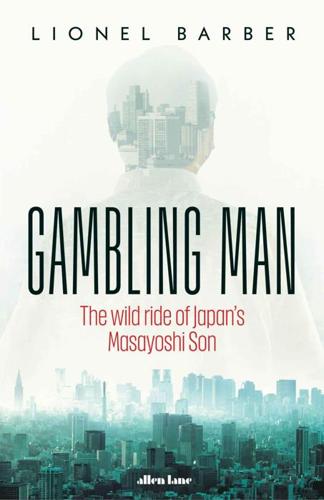
Gambling Man
by
Lionel Barber
Published 3 Oct 2024
On this occasion, the gathering was held at Velfarre disco in Roppongi, ‘the district that never sleeps’.2 These were the wildest times, reminiscent of Japan’s real-estate bubble during the late 1980s when stock-market prices defied gravity and irrational exuberance swept through the business and financial communities. Then came the inevitable crash, a banking crisis and years of economic stagnation known as the Lost Decade. The dot-com boom promised a return to the good times, and that night word spread rapidly that the guest of honour was indeed Masayoshi Son. The presence of the man known to friends and rivals alike as ‘Masa’ was by no means a foregone conclusion.
…
‘I’m still young. I just turned 40. So five years, 10 years – I can just prove it over time. I don’t have to prove it in six months or 12 months … Our industry is young. That’s the key.’ In the circumstances, when pure tech companies were thin on the ground and Japan’s economy was mired in a banking crisis, Masa’s plea for greater understanding was reasonable. But SoftBank’s turbocharged growth, whereby the company leveraged itself by loading debt upon debt, raised awkward questions about whether the level of borrowing was sustainable. After going public in 1994, SoftBank over the next three years spent $4.7bn, including investments in more than 50 US technology start-ups, many of them loss-making internet-related companies in Silicon Valley.
…
He’d lost more than a vast chunk of his personal fortune. His reputation was shot. The man of the future looked like a man whose time had come and gone. Part Three * * * THE OPERATOR 15. Broadband Revolution At the turn of the millennium, Japan was a country in search of a saviour. The banking crisis remained unresolved, the post-bubble economy stuck in a period of prolonged deflation. A succession of corruption scandals involving corporate Japan and members of the ruling conservative Liberal Democratic Party (LDP) contributed to a pervasive sense of gloom. Amid political stasis, the public mood began to shift.
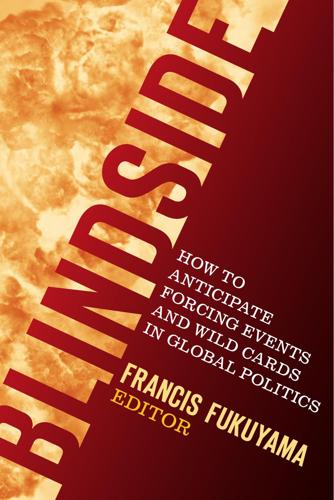
Blindside: How to Anticipate Forcing Events and Wild Cards in Global Politics
by
Francis Fukuyama
Published 27 Aug 2007
The East Asian recession during 1998 was the most severe in modern history. Real GDP fell by 13.1 percent in Indonesia, 10.5 percent in Thailand, 7.4 percent in Malaysia, and 0.6 percent in Philippines. Singapore also suffered a contraction of 0.9 percent of GDP even though it did not experience a banking crisis. Investment fell by 44.3 percent in Thailand, 44.0 percent in Malaysia, 33.0 percent in Indonesia, and 11.2 percent in the Philippines. Consumption also declined because of job losses and the collapse in credit availability—by 11.5 percent in Thailand, 10.2 percent in Malaysia, 6.2 percent in Indonesia, and 3.4 percent in Singapore.
…
On the contrary, the IMF 2990-7 ch05 hale 7/23/07 12:09 PM Page 49 econoshocks: the east asian crisis case 49 programs forced countries to pursue microeconomic reforms that opened the door to more engagement with the global economy, including reduced trade protection and expanded opportunities for foreign direct investment. As a result, East Asia enjoyed a sustained recovery after 1999 and was able to restore the health of its domestic financial system. The country that experienced the largest devaluation and the greatest banking crisis, Indonesia, has been able to reduce its government debt from 92 percent of GDP in 2000 to 46 percent currently. The crisis had produced other significant side effects, some, as suggested earlier, with profound consequences for the current balance-of-payments equilibrium of the world economy. After the crisis, the investment ratios of East Asia never fully recovered.
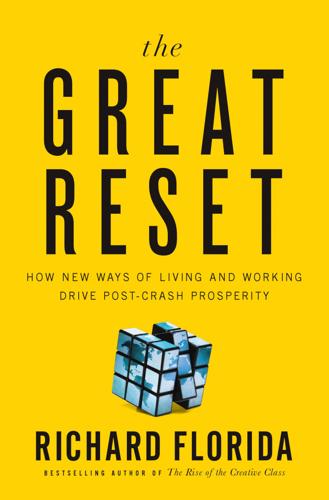
The Great Reset: How the Post-Crash Economy Will Change the Way We Live and Work
by
Richard Florida
Published 22 Apr 2010
Chapter Two The Crisis Most Like Our Own The historian Scott Reynolds Nelson writes that today’s crisis most closely resembles the Long Depression of 1873.1 Our “current economic woes look a lot like what my 96-year-old grandmother still calls ‘the real Great Depression,’” he says. “She pinched pennies in the 1930s, but she says that times were not nearly as bad as the depression her grandparents went through…. It looks much more like our current crisis.” That nineteenth-century downturn began as a banking crisis brought on by insolvent mortgages and complex financial instruments (sound familiar?) quickly spread to the entire economy, leading to widespread and prolonged unemployment. As long and as painful as it was, that crisis spurred a period of incredible inventiveness. When one economist mapped patented U.S. inventions back through the early nineteenth century, he found a huge spike in the 1870s.
…
While this was a blow to real estate rental prices in the handful of towers downtown, it meant many more people have kept their steady jobs than anyone initially thought.” While job losses of as much as 80 percent were anticipated, they ultimately came in at less than 20 percent, Strumsky points out. Bank of America took “to the banking crisis like a shopaholic with a new credit card—bargain hunting and cutting some astonishing deals,” Strumsky adds. It was also slow to cut jobs, because North Carolina law mandates that so-called mass layoffs must be publicly announced, which created worry about the effects of job cuts on the company’s already troubled stock price, she said.
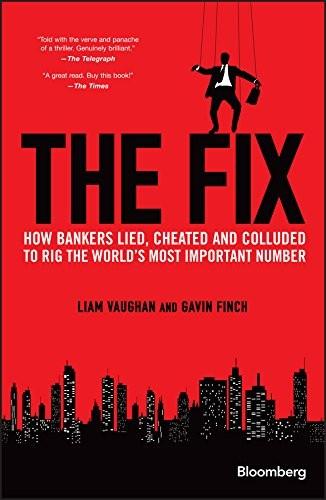
The Fix: How Bankers Lied, Cheated and Colluded to Rig the World's Most Important Number (Bloomberg)
by
Liam Vaughan
and
Gavin Finch
Published 22 Nov 2016
Privately, at least one director at the Bank of England felt Tucker was justified in issuing the order if it meant buying Barclays more time to avoid nationalization, potentially saving U.K. taxpayers billions of pounds. In other words, the end justified the means. It would not be the first time the Bank of England had cast aside normal standards of propriety in the interest of what it perceived to be the greater good. When property prices crashed in the so-called secondary banking crisis of the mid-1970s, then-Governor Gordon Richardson propped up ailing banks with a raft of loans that were kept secret from the public in an attempt to contain the problem until markets recovered. It worked, and, when his career came to an end two decades later, Richardson described it privately as his crowning achievement.
…
It wasn’t necessarily that Hayes’s two most trusted brokers were unwilling to help him out, but rather that conditions had fundamentally changed. Banks were awash with cheap central bank money, interest rates were back at close to zero, and the cash markets were stable. The turmoil that had been such a feature of the market since the onset of the banking crisis in 2007 had dissipated. The rate-setters no longer needed Goodman or Farr to tell them where cash was trading since yen Libor barely moved at all anymore. News of the CFTC’s investigation was also starting to filter down, making everybody nervous. Even Adolph, the Deutsche Bank trader who’d been so helpful in the past, would soon start rebuffing him.
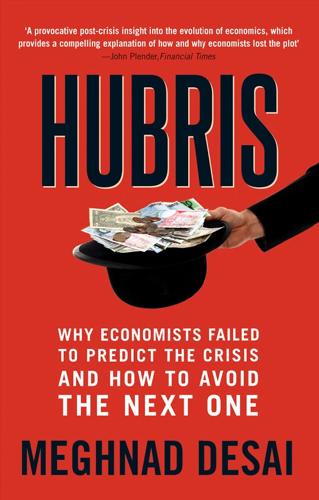
Hubris: Why Economists Failed to Predict the Crisis and How to Avoid the Next One
by
Meghnad Desai
Published 15 Feb 2015
See Andrew Ross Sorkin, Too Big to Fail (Viking, New York, 2009); Raghuram Rajan, Fault Lines: How Hidden Fractures Still Threaten the World Economy (Princeton University Press, Princeton, NJ, 2010). 6.Alan Greenspan’s testimony to the Senate Committee on Oversight and Government Reform, US House of Representatives, October 23, 2008. See also Alan Greenspan, The Age of Turbulence, with a new epilogue (Penguin, New York, 2008). 7.Financial Services Authority, The Turner Review: A Regulatory Response to the Global Banking Crisis (Financial Services Authority, London, 2009), p. 39. 8.The case for the Keynesians is argued by Robert Skidelsky, Keynes: The Return of the Master (Penguin, London, 2009). 9.Milton Friedman and Anna Schwartz, A Monetary History of the United States 1867–1960 (Princeton University Press, Princeton, NJ, 1963). 10.For the background to the euro, see David Marsh, The Euro: The Battle for the New Global Currency (Yale University Press, New Haven, CT, 2009). 7 The Search for an Answer 1.Thomas Piketty, Capital in the Twenty-First Century (Belknap Press, Cambridge, MA, 2014), see figure 6.1, p. 200; figure 6.2, p. 201; figure 8.5, p. 291. 2.Meghnad Desai, “An Econometric Model of the Share of Wages in National Income: UK 1855–1965” (1984), republished in The Selected Essays of Meghnad Desai, vol. 1: Macroeconomics and Monetary Theory (Edward Elgar, Cheltenham, 1995). 3.Andrew Glyn and Robert Sutcliffe, “The Collapse of UK Profits,” New Left Review, 66 (Mar.
…
Vertova, eds, The Great Recession and the Contradictions of Contemporary Capitalism, pp. 26–49. Edward Elgar, Cheltenham, 2014. Eatwell, J., M. Millgate, and P. Newman, eds, The New Palgrave Dictionary of Economics. Macmillan, London, 1987. Financial Services Authority, The Turner Review: A Regulatory Response to the Global Banking Crisis. Financial Services Authority, London, 2009. Floud, R. and D. McCloskey, eds, The Economic History of Modern Britain since 1700. 2nd edn. 3 vols. Cambridge University Press, Cambridge, 1994. Friedman M., “The Role of Monetary Policy,” American Economic Review, 58.1 (Mar. 1968): 1–17. Friedman, M., A Theory of the Consumption Function.

Cogs and Monsters: What Economics Is, and What It Should Be
by
Diane Coyle
Published 11 Oct 2021
So a number of economists have objected to my suggestion that the excesses of the financial markets have anything to do with economics at all. After all, many economists were in fact warning of unsustainable asset bubbles in the run-up to the crash (albeit that few specifically predicted a major banking crisis). Robert Shiller’s Irrational Exuberance (2000) was a bestseller, and its warning featured widely in the media around the world. It is correct therefore to argue that political philosophy, the power of financial institutions, their lobbying of government, the incentives of credit rating agencies, and sheer greed and dishonesty all bear much greater responsibility than economics, or even than options markets.
…
This debate between competing anti- and pro-austerity schools in the 2010s was eerily similar to the Keynesian versus monetarist arguments of the equally crisis-ridden late 1970s, when I started my career in economics. Should western governments be engaging in budget austerity or in Keynesian stimulus? Is the current recession different in kind from one that does not result from a banking crisis? Should there be more quantitative easing or not? One can find more than one answer to each of these questions in the macro literature. When macroeconomists have such directly opposing views, held so strongly and expressed so bitterly on social media and blogs, we are far from the realm of hard science and evidently do not know the answers.
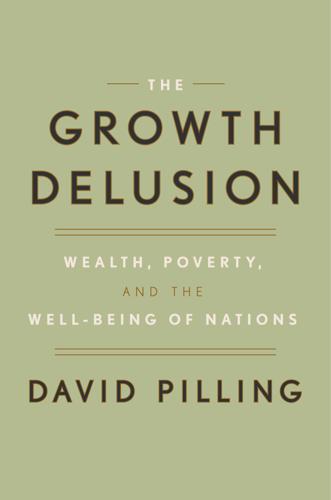
The Growth Delusion: Wealth, Poverty, and the Well-Being of Nations
by
David Pilling
Published 30 Jan 2018
“It would take someone with more expertise than me,” he said. “This is a complicated issue.” Then he added, as if it might be of some comfort, “I think we have limited possibility of the same crisis. Probably the next financial crisis will be a little bit different.” * * * — Just to be absolutely clear: the 2008 banking crisis, whose effects were still rippling through the world nearly a decade later, cannot be blamed on the way we account for financial services in our national accounts. The crisis had its roots in race-to-the-bottom deregulation, naive faith in the capacity of markets to self-correct, and a perverse “shareholder-value” ideology that allowed a few thousand masters-of-the-universe bankers to ransack their own institutions while simultaneously feeling good about themselves.
…
This was the practice of dicing and slicing different revenue streams and smushing them together into a tradable asset, a practice that severed the traditional link between lender and borrower. After a while people were happily trading bits of paper—all triple-A rated, naturally—blissfully unaware of what the underlying assets actually contained. As we now know, much of it was mortgage debt taken out on homes by people who could not afford to make their payments. Yet the banking crisis was linked to national accounting in two important ways. The first is as much psychological as anything else. This is what you might call the danger of the circular argument, one that goes like this: “We all know growth is good. Growth is measured by GDP. So when GDP is going up that must be good.

Reinventing Capitalism in the Age of Big Data
by
Viktor Mayer-Schönberger
and
Thomas Ramge
Published 27 Feb 2018
Like the confluence of the three distinct phenomena that led to the 1991 weather event, three distinct but reinforcing threats may turn banking on its head. Each one alone is a challenge, but taken together, they may wipe out a significant portion of the industry. The first is the structural weakness of the banking sector, which was exposed by the subprime mortgage crisis beginning in 2007. This banking crisis was caused at least in part by information that was either incorrect and incomplete or wrongly interpreted. According to one estimate, more than $8 trillion was lost, and there were extensive bank bailouts in a number of advanced economies. In the United States, the Emergency Economic Stabilization Act of 2008 led to the federal government’s earmarking more than $700 billion in loans to help ailing banks.
…
See Cybersyn Systemized Intelligence Lab, 115 Taj Mahal, 21 talent management, internal, 126–129 tax credits, 200–202, 218 taxes, 197–202 capital gains, 187 data, 199–200, 203, 218 negative income, 190 nominal rate, 198 progressive consumption, 198 robo, 186–187 wealth, 187 Taylor, Frederick Winslow, 89, 95–96 Taylorism, 89, 95–96, 112 telecommunications industry, 162–163 Tesla, 78, 110, 120, 169, 189 thalidomide, 42 thick markets, 2, 82–83, 164, 213 Thiel, Peter, 203 time firm reorganization and, 112–113 meaningful use of, 221–222 Tinder, 83, 163 µ Torrent, 122 TransferWise, 135 transparency, 172, 173, 178 Trump, Donald, 186, 203 Trunk Club, 211 T-shaped skill set, 118 Tversky, Amos, 102 Twitter, 163 Uber, 163, 182 UBI. See universal basic income UniCredit bank, 136 Unilever, 75 United Kingdom, 134, 147, 164 United States banking crisis in, 134, 135 capital share of, 185 corporate taxes in, 197–198 health care sector in, 213 labor market of, 184, 185, 186, 195 market concentration in, 164 stock market investment options in, 143 subprime mortgage crisis in (see subprime mortgage crisis) universal basic income proposed in, 190, 191 universal basic income (UBI), 189–193, 205–206 University of Pennsylvania’s Wharton School, 36 Upstart, 151 Upwork, 3 used car market, 40 venture capital (VC) firms, 141, 142–143, 216 Vocatus, 55 Volkswagen, 182 Volvo, 182 Wall Street Journal, 203 Walmart, 28, 52 Walt Disney Company, 69 Watson (machine learning system), 109, 111, 113–114, 115, 117, 163, 183 Watt, James, 111, 113 wealth tax, 187 Webvan, 112 WeChat, 147, 163 Wedgwood, Josiah, 94 welfare reducing transactions, 73 Wenger, Albert, 156, 189 Wenig, Devin, 1–2, 209 Wharton School, 36 Which?

Fully Automated Luxury Communism
by
Aaron Bastani
Published 10 Jun 2019
This entrenches the tendencies of globalisation as previous, if imperfect, repositories of accountability – national governments – lose the consent of those they represent. In the supposedly good times something had gone badly wrong – but it remained an undercurrent. 2008: Return of History Almost two decades after Fukuyama’s false prophecy, that decisively changed: a banking crisis, a debt crisis, a deficit crisis – all culminating in the imposition of austerity, from Greece to California. Alongside that was war in Georgia, the flowering of the Arab Spring, uprising in the Ukraine, insurrection – and then the most bloody of civil wars – in Syria. Elsewhere previously low-intensity conflict in Iraq and Afghanistan deteriorated further, soon joined by similarly hazy struggles in Libya and Yemen.
…
So our world is one increasingly defined by low growth, low productivity and low wages. Before the crisis, most policy-makers would have thought such events impossible, let alone speculated about an appropriate response. Alan Greenspan’s 2008 remarks to the US House of Representatives are illustrative: the banking crisis having left this former chairman of the Federal Reserve in a state of ‘shocked disbelief’ and ‘distressed’ by events he previously viewed as impossible. While neoliberalism, which emerged with the Thatcher and Reagan governments, led to higher unemployment and lower wage growth, for more than a generation this was mitigated by access to cheaper goods and services – by relocating production to countries with lower wages – as well as inflated asset prices, particularly housing, and access to cheap mortgage and consumer debt.

Scotland’s Jesus: The Only Officially Non-Racist Comedian
by
Frankie Boyle
Published 23 Oct 2013
Boris Johnson’s warned the government that new bank regulations could risk ‘killing the goose’. I’m guessing that’s from the expression ‘Don’t kill the goose that lays the golden eggs made from all that money we’ve all already fed the goose anyway.’ The deadline for the banks to make the changes is 2019, giving us the structure that’s needed to avoid a second banking crisis, just after a second banking crisis has already taken place. I’m not worried about the banking problems as I keep all my money in Jersey. Not in a bank but buried in the garden of a children’s care home. They won’t look there. The recession has led to an increase in lending and there are new laws to clamp down on loan sharks.
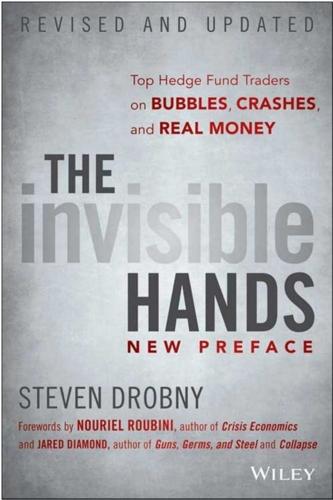
The Invisible Hands: Top Hedge Fund Traders on Bubbles, Crashes, and Real Money
by
Steven Drobny
Published 18 Mar 2010
Their stimulus was largely fiscal; monetary policy was relatively passive through all this. China did not cut rates aggressively, nor did they have to bail out the banking system all at once. They never faced a potential domino effect of failing banks. The same is true for much of non-Japan Asia. Countries that did not face a banking crisis did not have the same type of monetary policy response. Aggressive monetary stimulus generally occurred in the debtor countries, such as the U.S. and UK. In the euro region, monetary policy stimulus occurred mainly because Spain, Ireland, and several Eastern European debtor countries were in deep trouble.
…
There are many trades that others deem great opportunities—but I will not engage in them because they have negative skew risk, meaning they can become illiquid very quickly. For example, the potential for a liquidity crisis in 2008 was well flagged. In August 2007, when LIBOR spiked, it was clear that we were in a systemic banking crisis. It was also obvious that the leverage would have to unwind, which would trigger a liquidity problem causing more unwinding. A full year later, however, people were still in denial that balance sheets were overleveraged and that banks were in trouble. (See Figure 5.4.) Figure 5.4 Three-Month LIBOR—Overnight Indexed Swap (OIS) Spreads, 2006-2008 SOURCE: Bloomberg.
…
See Risk premia payment Price/earnings (P/E) multiples, exchange rate valuation (relationship) Primary Dealer Credit Facility, placement Prime broker risk Princeton University (endowment) Private equity cash flow production tax shield/operational efficiency arguments Private sector debt, presence Private-to-public sector risk Probability, Bayesian interpretation Professor, The bubble predication capital loss, avoidance capital management cataclysms, analysis crowding factor process diversification efficient markets, disbelief fiat money, cessation global macro fund manager hedge fund space historical events, examination idea generation inflation/deflation debate interview investment process lessons LIBOR futures ownership liquidity conditions, change importance market entry money management, quality opportunities personal background, importance portfolio construction management positioning process real macro success, personality traits/characteristics (usage) returns, generation risk aversion rules risk management process setback stocks, purchase stop losses time horizon Titanic scenario threshold trades attractiveness, measurement process expression, options (usage) personal capital, usage quality unlevered portfolio Property/asset boom Prop shop trading, preference Prop trader, hedge fund manager (contrast) Protectionism danger hedge process Public college football coach salary, public pension manager salary (contrast) Public debt, problems Public pensions average wages to returns endowments impact Q ratio (Tobin) Qualitative screening, importance Quantitative easing (QE) impact usage Quantitative filtering Random walk, investment Real annual return Real assets Commodity Hedger perspective equity-like exposure Real estate, spread trade Real interest rates, increase (1931) Real macro involvement success, personality traits/characteristics (usage) Real money beta-plus domination denotation evolution flaws hedge funds, differentiation impacts, protection importance investors commodity exposure diversification, impact macro principles management, change weaknesses Real money accounts importance long-only investment focus losses (2008) Real money funds Commodity Hedger operation Equity Trader management flexibility frontier, efficiency illiquid asset avoidance importance leverage example usage management managerial reserve optimal portfolio construction failure portfolio management problems size Real money managers Commodity Investor scenario liquidity, importance long-term investor misguidance poor performance, usage (excuse) portfolio construction valuation approach, usage Real money portfolios downside volatility, mitigation leverage, amount management flaws Rear view mirror investment process Redemptions absence problems Reflexivity Rehypothecation Reichsmarks, foreign holders (1922-1923) Relative performance, inadequacy Reminiscences of a Stock Operator (Lefèvre) Renminbi (2005-2009) Repossession property levels Republic of Turkey examination investment rates+equities (1999-2000) Reserve currency, question Resource nationalism Returns forecast generation maximization momentum models targets, replacement Return-to-worst-drawdown, ratios (improvement) Reward-to-variability ratio Riksbank (Sweden) Risk amount, decision aversion rules capital, reduction collars function positive convexity framework, transition function global macro manager approach increase, leverage (usage) measurement techniques, importance parameters Pensioner management pricing reduction system, necessity Risk-adjusted return targets, usage Risk assets, decrease Risk-free arbitrage opportunities Risk management Commodity Hedger process example game importance learning lessons portfolio level process P&L, impact tactic techniques, importance Risk premia annualization earning level, decrease specification Risk/reward trades Risk-versus-return, Pensioner approach Risk-versus-reward characteristics opportunities Roll yield R-squared (correlation) Russia crisis Russia Index (RTSI$) (1995-2002) Russia problems Savings ratio, increase Scholes, Myron Sector risk, limits Securities, legal lists Self-reinforcing cycles (Soros) Sentiment prediction swings Seven Sisters Sharpe ratio increase return/risk Short-dated assets Short selling, ban Siegel’s Paradox example Single point volatility 60-40 equity-bond policy portfolio 60-40 model 60-40 portfolio standardization Smither, Andrew Socialism, Equity Trader concern Society, functioning public funds, impact real money funds, impact Softbank (2006) Soros, George self-reinforcing cycles success Sovereign wealth fund Equity Trader operation operation Soybeans (1970-2009) Special drawing rights (SDR) Spot price, forward price (contrast) Spot shortages/outages, impact Standard deviation (volatility) Standard & Poor’s 500 (S&P500) (2009) decrease Index (1986-1995) Index (2000-2009) Index (2008) shorting U.S. government bonds, performance (contrast) Standard & Poor’s (S&P) shorts, coverage Stanford University (endowment) State pension fund Equity Trader operation operation Stochastic volatility Stock index total returns (1974-2009) Stock market increase, Predator nervousness Stocks hedge funds, contrast holders, understanding pickers, equity index futures usage shorting/ownership, contrast Stops, setting Stress tests, conducting Subprime Index (2007-2009) Sunnies, bidding Super Major Survivorship bias Sweden AP pension funds government bond market Swensen, David equity-centric portfolio Swiss National Bank (SNB) independence Systemic banking crisis Tactical asset allocation function models, usage Tactical expertise Tail hedging, impact Tail risk Take-private LBO Taleb, Nassim Tax cut sunset provisions Taxes, hedge Ten-year U.S. government bonds (2008-2009) Theta, limits Thundering Herd (Merrill Lynch) Time horizons decrease defining determination shortening Titanic funnel, usage Titanic loss number Titanic scenario threshold Topix Index (1969-2000) Top-line inflation Total credit market, GDP percentage Total dependency ratio Trade ideas experience/awareness, impact generation process importance origination Traders ability Bond Trader hiring characteristics success, personality characteristics Trades attractiveness, measurement process hurdle money makers, percentage one-year time horizon selection, Commodity Super Cycle (impact) time horizon, defining Trading decisions, policy makers (impact) floor knowledge noise level ideas, origination Tragedy of the commons Transparency International, Corruption Perceptions Index Treasury Inflation-Protected Securities (TIPS) trade Triangulated conviction Troubled Asset Relief Program (TARP) Turkey economy inflation/equities (1990-2009) investment rates+equities (1999-2000) stock market index (ISE 100) Unconventional Success (Swensen) Underperformance, impact Undervaluation zones, examination United Kingdom (UK), two-year UK swap rates (2008) United States bonds pricing debt (1991-2008) debt (2000-2008) home prices (2000-2009) hyperinflation listed equities, asset investment long bonds, market pricing savings, increase stocks tax policy (1922-1936) trade deficit, narrowing yield curves (2004-2006) University endowments losses impact unlevered portfolio U.S.
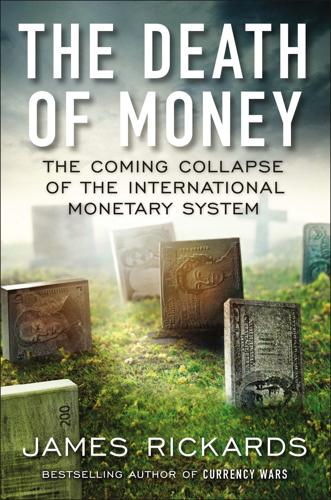
The Death of Money: The Coming Collapse of the International Monetary System
by
James Rickards
Published 7 Apr 2014
This tends to increase the debt-to-GDP ratio, placing the United States on the same path as Greece and making a sovereign debt crisis more likely. Deflation also increases the real value of private debt, creating a wave of defaults and bankruptcies. These losses then fall on the banks, causing a banking crisis. Since the primary mandate of the Federal Reserve is to prop up the banking system, deflation must be avoided because it induces bad debts that threaten bank solvency. Finally, deflation feeds on itself and is nearly impossible for the Fed to reverse. The Federal Reserve is confident about its ability to control inflation, although the lessons of the 1970s show that extreme measures may be required.
…
The IMF obtained its funds by borrowing from nations with healthy reserve balances, such as China and Canada. The EU raised funds by pooling member resources, largely from Germany. Finally, the ECB created funds by printing money as needed. The troika members operated under the central bankers’ new mantra, “Whatever it takes.” By late 2012, the European sovereign debt and bank crisis was largely contained, although rebuilding bank balance sheets and making the required structural adjustments will take years to complete. Despite this turmoil, the euro held up quite well, to the surprise of many analysts and investors, especially those in the United States. In July 2008 the euro reached a peak of $1.60 and remained in a trading range between $1.20 and $1.60 during the sovereign debt crisis.
…
Those who believe that bank deposit risk is a thing of the past should consider the case of Cyprus in March 2013, when certain bank deposits were forcibly converted into bank stock after an earlier scheme to confiscate the deposits by taxation was rejected. This conversion of deposits to equity in order to bail out insolvent banks was looked upon favorably in Europe and the United States as a template for future bank crisis management. There are innumerable ways to earn a return by taking risk. Stocks, bonds, real estate, hedge funds, and many other types of pooled vehicles are all investments that include both risk and return. An entire branch of economic science, particularly options pricing theory, was based on the flawed assumption that a short-term Treasury bill is a “risk-free” investment.
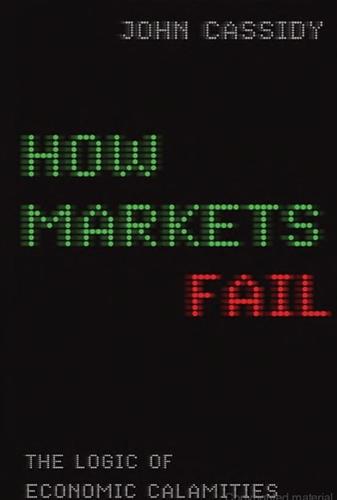
How Markets Fail: The Logic of Economic Calamities
by
John Cassidy
Published 10 Nov 2009
However, in protecting Bear’s creditors from any losses, the authorities had undoubtedly prevented other Wall Street firms, and their shareholders, from incurring big losses. Economically, this government intervention was perfectly justifiable. With the credit markets having been locked up for more than half a year, it was silly to go on pretending that this was simply a liquidity crisis. It had evolved into a full-blown banking crisis. The collapse in the value of subprime securities and other asset-backed securities had permanently wiped out hundreds of billions of dollars of bank capital. There was a growing suspicion that some major financial institutions were insolvent, or close to insolvent. History demonstrates that in such circumstances the only way for policymakers to get ahead of the problem is to acknowledge its scale, excise some of the bad debts, and recapitalize the banks deemed able to survive.
…
History demonstrates that in such circumstances the only way for policymakers to get ahead of the problem is to acknowledge its scale, excise some of the bad debts, and recapitalize the banks deemed able to survive. In Japan during the 1990s, this didn’t happen, and the country endured a decade of economic stagnation following the bursting of a stock and real estate bubble. At about the same time, in Scandinavia, by contrast, governments took quick and effective action to resolve a large-scale banking crisis. In Finland, the government combined more than forty savings banks into one state-owned savings bank; in Norway, the government nationalized the country’s three biggest banks, wiping out their shareholders; in Sweden, the government seized control of the two largest banks and shunted their toxic assets into a state-owned company.
…
To offset these perverse incentives, regulators should impose maximum leverage ratios on banks and other financial firms, and they should also oblige them to hold more than adequate levels of liquidity and capital in reserve. In addition, banks must be prevented from hiding liabilities and risks in SIVs and other shell companies. From the fringe banking crisis of the 1970s to the collapse of the shadow banking system in 2007, recent history demonstrates that opacity is a recipe for trouble. The big financial institutions will squawk about these restrictions, which will reduce their profitability. Let them. In choosing to shelter under the government safety net, they have abrogated their right to behave like hedge funds.

The Divided Nation: A History of Germany, 1918-1990
by
Mary Fulbrook
Published 14 Oct 1991
Page 395 INDEX A Ackermann, Anton, 188 Adenauer, Konrad: re-emergence after Third Reich, 359; as leader of CDU and elected Chancellor, 139, 163; the Adenauer period, 17588 passim; declining years, Spiegel affair and retirement 1978; willingness to accept former Nazis in political life, 279; and western integration, 17588 passim, 307, 364 ADGB (Allgemeiner Deutscher Gewerkschaftsbund), see Trade Unions Adorno, Theodor, 38, 281 Africa, 100, 103 Ahlen Programme, 138 Allied war-time planning on Germany, 1301 Alsace-Lorraine, 31 Andersch, Alfred, 297 Anschluss of Austria, 923 Antifas, 1356, 159 anti-Semitism: Hitler's, 51, 86; in Third Reich, 879; in Austria, 92; Holocaust, 10320; in GDR, 276; in FRG, 287; see also Jews, Holocaust APO (Extra-parliamentary Opposition), 282 appeasement, 925, 99 armistice, 26 Army: in Imperial Germany, 20, 23; in Weimar Republic, 26, 27, 31, 32, 489, 58, 64; in Third Reich, 712, 8995; in World War Two, 96125 passim in Federal Republic of Germany, 178, 279; in GDR, 180; in both Germanies after 1949, 25864 passim, 353, 35960 Attlee, Clement, 133 Auschwitz, 1067, 11113, 368; see also Concentration Camps, Holocaust Austria: exclusion from 'small Germany' in 1871, 3; forbidden union with Germany under Treaty of Versailles, 31; and banking crisis of 1931, 57; attempted coup by Austrian Nazis in 1934, 90; Anschluss with Germany in 1938, 923; as separate German-speaking state, 291; concentration camps in, 304; border with Hungary opened in 1990, 3234 Axel Springer Press, 282, 296 Axis powers, 90; see also Tripartite Pact B Baader, Andreas, 211, 2846 Bad Godesberg Programme, 186 Baden, Prince Max von, 24, 25 Bahro, Rudolf, 26970, 320, 365 Baltic States, 936 banking crisis (1931), 57 Barschel, Uwe, 214 Barzel, Rainer, 209 Basic Law (Grundgesetz), 148, 163, 16871 passim, 209, 253, 2611, 307, 338, 341 Basic Treaty (1972), 209 Battle of Britain, 99 Bauer, Gustav, 31 Bauhaus, 39 Bausoldaten, 224, 260, 274 Baylis, T., 251 BDM (Bund Deutscher Mädel), 77 Becher, Johannes, 292 Beck, Ludwig, 91 Becker, Jurek, 294 Page 396 Beer Hall Putsch (1923), 35, 88, 98 Behrens, Fritz, 193, 202 Belgium, 36, 98 Belzec, 110; see also Concentration Camps Benary, Arne, 193, 202 Benjamin, Walter, 38 Berchtesgaden, 70 Bergen-Belsen, 117, 306; see also Concentration Camps Berghahn, Volker, 85 Beria, L.
…
In the summer of 1931, the economic situation was further exacerbated by a financial crisis. A failed attempt at a German Austrian customs union led to a withdrawal of French credits from Austria, precipitating a collapse of the main Austrian bank, a rush of bankruptcies in Austria and Germany, and a banking crisis, which necessitated a 'bank holiday' of three weeks duration in July 1931. In the midst of this mounting economic chaos, politics was increasingly played out not in parliament but on the Page 58 streets. Skirmishes took place between rival political gangs: most frequently, the paramilitary organizations of the KPD joined violent battle with the unruly SA units.

A First-Class Catastrophe: The Road to Black Monday, the Worst Day in Wall Street History
by
Diana B. Henriques
Published 18 Sep 2017
The Cleveland Fed and top aides in Volcker’s office in Washington quickly made emergency loans to the thrift. On March 6 the state of Ohio announced it would “safeguard” all deposits covered by the private insurance fund. Rationally speaking, that should have been the end of the panic. Yet, as in the Continental bank crisis of a year earlier, frightened depositors paid absolutely no attention to these government assurances. The run at Home State continued through the rest of the week; by the time the thrift closed its doors on Friday evening, March 8, an estimated $154 million in cash had been withdrawn. On Sunday, March 10, Ohio officials put Home State into receivership, unable to find a buyer for it.
…
He understood the “growing concern that too much more of this would badly shake the confidence of individual investors and many institutional investors in the whole equity market process.” He had not always agreed with Paul Volcker about the fragility of the banking system—his role in the Penn Square Bank crisis and his last-minute obstruction of the FDIC’s rescue of Continental Illinois were cases in point—but he did understand the stock market. Soon after the Boesky scandal broke, in fact, Regan was considering ways the president could publicly show his support for John Shad’s beleaguered enforcement staff—an insightful gesture that certainly would have been welcome at the SEC in those demoralizing weeks.
…
See also index arbitrage Arizona Stock Exchange asbestos lawsuits Asian markets AT&T pension fund audit trail rules Australian market automated trading Automobile Club of Southern California pension fund Bache Halsey Stuart Shields Bacot, J. Carter bailouts Baker, Howard H., Jr. Baker, James A., III Balles, John J. bank holding companies bank holiday banking crisis of 1984 Bank of America Bank of England Bank of New York bank regulators. See also regulatory fragmentation; and specific agencies banks. See also specific banks Black Monday and brokerage firms and commodities market and deregulation and Drysdale default and futures markets and Glass-Steagall and in-house traders interest rates and loans sold to other banks mergers and Mexican debt crisis and new businesses and payment system and Penn Square crisis and runs on S&P 500 index futures and silver crisis and size of swaps and bargain hunters Barron’s Batten, William M.
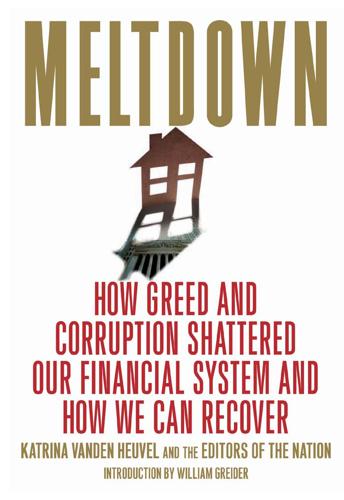
Meltdown: How Greed and Corruption Shattered Our Financial System and How We Can Recover
by
Katrina Vanden Heuvel
and
William Greider
Published 9 Jan 2009
Massive losses piled up at places like Citigroup, Coun-trywide, Merrill Lynch and Morgan Stanley, and cascaded back into the insurance companies. At the end of February, the huge insurer American International Group reported the largest quarterly loss, $5 billion, since the company started in 1919. After some delay, the Federal Reserve Board last summer started lowering interest rates on loans to the banks. But in a phrase from the bank crisis of the 1930s, it was like “pushing on a string.” The bankers’ problem was not that money was too expensive to lend out; it was that they were afraid they wouldn’t get their money back. When they did lend, they jacked up the rates to compensate for the higher perceived risks—even to solid customers.
…
Most important, it drew upon the New Deal’s legacy of government intervention in the marketplace—without any of the New Deal’s fundamental concern for the well-being of ordinary Americans. This year happens to be the 75th anniversary of the New Deal, a revolution in governmental philosophy that began with the Emergency Banking Act of 1933. That first piece of New Deal legislation was a hurried response to the worst banking crisis in U.S. history—until now. President Franklin Delano Roosevelt outlined the problem clearly in his first fireside chat, a week after taking office. “We had a bad banking situation,” Roosevelt said. “Some of our bankers had shown themselves either incompetent or dishonest in the handling of people’s funds.
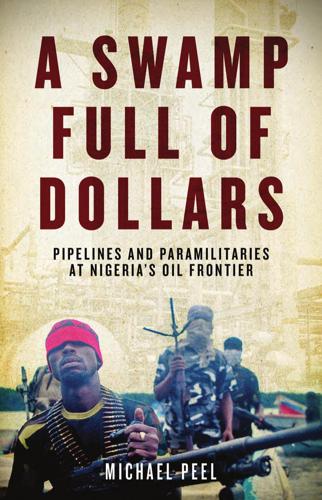
A Swamp Full of Dollars: Pipelines and Paramilitaries at Nigeria's Oil Frontier
by
Michael Peel
Published 1 Jan 2009
It’s a spirit that’s less alien than it might first appear to the rich Western states that consume Nigerian oil and thus help finance Lagosian anarchy. As we’ve seen, it only takes a sharp rise in food costs or a crisis in the financial markets to remind even the most complacent Englishman in his castle uncomfortably of the possibility of sudden poverty and social unrest. The anxiety in Britain at the height of the banking crisis in late 2008 hinted at how a stability stemming from seven centuries of parliamentary tradition could disappear 76 A SWAMP FULL OF DOLLARS with surprising speed in the wake of economic catastrophe, extreme violence or environmental disaster. Perhaps a latent recognition of this underpins the popularity among Western audiences of Cormac McCarthy’s The Road, whose post-apocalyptic ambience surpasses that even of Lagos at its most dystopian.
…
G. 43 Balewa, Sir Tafawa 43, 50 Balogun, Tafa 177 Bari, Daniel Orumiegha- 165 Bayelsa State 8, 23, 31, 106, 108, 110, 183 Alamieyeseigha, DSP, governor 105–13, 132–3, 189, 201 Poverty Eradication Committee 108 Bealer, Jay 141 Benn, Hilary 170 Benue River 5–6 Benue State 8 Biafra, see civil war Bill and Melinda Gates Foundation 81 bin Laden, Osama 9 Black Faces, White Masks 191 Blair, Tony 122 Bonga oilfield 142 Bongo, Omar 150, 151 Bonny Island 27, 145 Bookshop House 68, 70 BP 23, 41 Anglo-Iranian Oil Company 41 Brass 32, 34–5, 38, 39, 44–5, 107 British cemetery 44–5 Charles, Charles 45 Chatteris, Henry Byrne 45 HMS St George 45 Sutton, William 45 Taylor, George John 45 Briggs, Boma 18 Britain Aberdare, Lord 40 banking crisis 75 Blair, Tony 122 British oil 31 Brown, Gordon 122, 143 Chamberlain, Joseph 40 Churchill, Winston 41, 49, 90 civil war, involvement in 47–58 civil war, UK involvement in 48–61 colonial relationship with Nigeria xvi, 24, 31, 32, 35, 38, 40, 41, 42, 76–7, 169 Elizabeth II, Queen 201–202 INDEXAND JUNKIES STARK ILLITERATES Financial Services Authority 122, 131 Goldie, Sir George 36–7, 40 Grey, Sir Ralph 42 Hunt, Sir David 56–7 Kirk, Sir John 38–9 Macmillan, Harold 31 Oil Rivers Protectorate 36 post-independence relationship with Nigeria xvii, 48, 50, 57, 60 Royal Niger Company 32, 33–4, 35, 36–40, 191, 199 Stewart, Michael 54, 55 Straw, Jack 17, 201 Thatcher, Margaret 74, 116 Thomas, George 54 Thomas, Sir Philip 201 Unilever 33 United Africa Company 33, 34, 36 Wilson, Harold 48, 50, 51, 54 Brown, Gordon 122, 143 Buhari, Muhammadu 17 buses, Lagos 71, 96–103 Chiguzor 97–103 Lagos State Traffic Management Authority (‘MOT’) 99, 100 National Union of Road Transport Workers 70–71, 98–100, 101 Obalende terminus 100, 103 Bush, George W. 149 Cape Verde islands 147, 153 Chamberlain, Joseph 40 Chang, Clifton 155 Chelsea Hotel, Abuja 132–3 Chevron xvi, 6, 166, 186–8 Chiguzor 97–103 213 China in Cape Verde 153 expansion in Africa 139, 140, 146, 153–4, 168, 169, 203 exploration contracts xvii–xviii Dangote Group 153, 203 Sinoma International Engineering 154 Churchill, Winston 41, 49, 90 Citibank 124–5 civil war (1967–70) 44, 47–59 death toll in 52 Gowon, General Yakuba 51, 58 Hunt, Sir David 56–7 Ironsi, Major-General Johnson Umunnakwe Aguiyi- 50–51 January Boys 50 Ojukwu, General Chukwuemeka 47–58, 181 Shell 48, 52, 54–5 Stewart, Michael 54 Thomas, George 54 Wilson, Harold 48, 50, 51, 54 Clifford, Reuben Wilson 189–90, 191 Community Primary School One 171–2 Comrade 180–83, 186, 193 Congo 82 corruption xvi, xvii, 18, 59, 90, 103, 105, 114–15, 158, 161, 167, 171, 177, 202–203 ‘area boys’ urban gangs 67–73, 92 Balogun, Tafa 177 banks 106, 109–13, 115–132 Citibank 124–5 UBS 110–12 214 A SWAMP FULL OF DOLLARS Economic and Financial Crimes Commission (EFCC) 109, 112, 113, 114, 177, 202 Ribadu, Nuhu 202–203 electoral 10, 16–17, 50, 107–108, 204 international 145–6 Transparency International 146 transport system 103, 109 Crowder, Michael 40–41 Curtis, Richard 171 Dangote Group 153 Sinoma International Engineering 154 Dariye, Joshua 113 Daukoru, Edmund 203 Daura, Ahmadu 123 debt crisis, see foreign debt, Nigerian Dechaine, Lieutenant-Colonel Rene 140, 152 Delta State 113 Dutch 35 Dada, Timothy 95–6 Dallas, Alexander 152 Dallas 137 Bealer, Jay 141 Chang, Clifton 155 Esono, Pablo 141 Florio, Lieutenant Frank 150 Hendrickson, Commander Bob 141, 148, 149 Hollister, Jay 144 Jones, Ansel 137–8 Kaichi Maru 144 Kurta, Rear Admiral Anthony 140 Montalvo, Lieutenant Frank 151 Nowell, Commodore John 140, 150 Nzang, Lieutenant Placido 141, 155 Tiny, Jimmy 143 UN Convention on the Law of the Sea 144 Wagner, Captain 143, 144, 145, 148, 149, 152 Dangosu, Giedia 24 Dangote, Aliko 203 Economic and Financial Crimes Commission (EFCC) 109, 112, 113, 114, 177, 202 economic collapse see foreign debt, Nigerian Egbesu 5, 13, 183, 191, 192, 198 Ekwueme, Alex 59, 61–4 Elf 151 Elizabeth II, Queen 201–202 Emmanuel, Henry 193–4 Energy Information Administration, US 6, 145 Eni 6, 29, 146 Enron 146 Enugu 47 Equatorial Guinea 141, 142 Mbasago, President Obiang Nguema 141 Ernest 182 Esono, Pablo 141 European Union xviii ExxonMobil xvi, 6, 159 Eze, Kenneth 84–7 Fanon, Franz 191 50 Cent 81 INDEXAND JUNKIES STARK ILLITERATES financial crisis, international 75, 145, 150, 168 Florio, Lieutenant Frank 150 foreign debt, Nigerian 5 8–64, 122, 160, 171 Africa Economic Digest 60, 63 Ekwueme, Alex 59, 61–4 Paris Club 61, 64, 171 Synge, Richard 60, 63, 209 Wolfensohn, James (World Bank) 63 France relationship with Nigeria 36, 59 Freeman, Commander Timi 184–98 Friedman, Thomas 141 G8 summit (2005) 170, 171 Gabon 118, 150 Bongo, Omar 150, 151 Dechaine, Lieutenant-Colonel Rene 140, 152 Gana, Peter 120 Port-Gentil 150, 152 Gazprom xviii Gbomo, Jomo 180 Germans 10 Ghana 43, 51, 60–61, 76, 118 Accra 44 Nkrumah, Kwame 43 Godson 184–98 ‘Golden Arches’ theory 141 Goldie, Sir George 36–7, 40 The Good, the Bad and the Ugly 21 Gowon, General Yakuba 51, 58 Grey, Sir Ralph 42–3 Grimu, Richard 33 Gulf of Guinea xiii, 138, 141, 145, 147, 154 215 Gusau, General Mohammed Aliyu 119 Halliburton 145–6 Stanley, Jack 145–6 Hendrickson, Commander Bob 141, 148, 149 HMS St George 45 Hobbes, Thomas 75, 86 Hollister, Jay 144 ‘Horatius’, poem 53 Hunt, Sir David 56–7 Iblubor, Blessing 16 Ibori, James 113–14, 202 MER Engineering 114 Icelanders 10 Igbo people 41, 47, 49, 50, 51 civil war and Biafra 47–9 Ijaw people 5, 7, 8, 18, 19, 21, 108, 161, 164, 181, 183, 186, 198 Ikebiri I 185–7, 189 Ododo, Francis 185–7 independence, Nigerian 43, 44, 169 Inengite, Chief Osobere 24–7, 29, 170 Inengite, Clifford 29–30 Integrate Production System Surveillance (IPSS) 162 International Maritime Bureau 142 Ironsi, Major-General Johnson Umunnakwe Aguiyi- 50–51 Islam al-Qaeda 9 bin Laden, Osama 9 in Nigeria 9, 41 Itsekiri people 164 Iweala, Ngozi Okonjo- 74, 158 216 A SWAMP FULL OF DOLLARS Izon language 30, 33 Jaja, Tamunosisi Gogo 172–4 January Boys 50 Jones, Ansel 137–8 Joseph, Colin 109 Kaichi Maru 144 Kalabar River 3 Kirk, Sir John 38–9 KKK 10 Korokorose 185, 192–7 Kuluama I 188–92 Clifford, Reuben Wilson 189–90, 191 Community Development Council 189 Orumo, Emmanuel 189 Kunle 179, 182 Kuramo Beach 80–87 Bala 83 Bullet 83 Dreams bar 84 Eze, Kenneth 84–7 Le Meridien Eko hotel 80, 81 Queen 83 Sammy’s Bar 80 Scorpion 81–4 Varieties Bar 81, 82 Kurta, Rear Admiral Anthony 140 Lagos xvi, xviii, xix, xx, 36, 67, 73–80 Balogun market 69 Bookshop House 68, 70 Broad Street 70 buses 71, 96–103 Campos Square 70, 73 Ikeja district 93 Kuramo Beach 80–87 Odunlami Street 68 okadas 89–96, 205 Orile 102 Osodi 99, 100, 103 Somolu 90 Third Mainland Bridge 78, 100 transport system 90–103, 205 Victoria Island 77, 80, 205–206 Lagos State Traffic Management Authority (‘MOT’) 99, 100 Leviathan 75 Liberia 9, 14, 70, 79, 172, 188, 197 life expectancy of Nigerians 73 Live 8 60, 171 Macaulay, Herbert 67 Macaulay, Thomas Babington 53 Macbeth 15 Macmillan, Harold 31 Mann, Simon 142 Marathon 143 Martins 181 Mathews, Michael 124 Mbasago, President Obiang Nguema 141 McCarthy, Cormac 76 McKenzie, Glenn 180–99, 210 MEND, see Movement for the Emancipation of the Niger Delta Middle East 6 concerns about disruption in xviii, 9, 139, 203 elections 17 Saudi Arabia oil exports 6 minibuses 71 Miss World contest (2002) xix Mistry, Rohinton 206 Mobile Police 184 INDEXAND JUNKIES STARK ILLITERATES Molue see buses, Lagos Monfrini, Enrico 115, 117–30 Gusau, General Mohammed Aliyu 119 Swiss Federal Office of Justice 126 Montalvo, Lieutenant Frank 151 Montero, Kaizer xiv–xv, xx Morgan Procurement 124 MOSEND see Movement for the Survival of the Ethnic Nationalities in the Niger Delta Motorcycle Operators Association of Lagos State 90–94 Adio, Innocent 95 Agumba, Leonard 94–5 Dada, Timothy 95–6 Gbagada branch 94 Orimogunje, Olufemi 91–4 Movement for the Emancipation of the Niger Delta (MEND) 21, 22, 163, 179–99 Freeman, Commander Timi 184–98 Gbomo, Jomo 180 Olotu 197–9 Movement for the Survival of the Ethnic Nationalities in the Niger Delta (MOSEND) 181 National Archives 35, 37, 42, 43, 54 National Intelligence Council, US xvii National Oil Spill Detection and Response Agency 27–8 National Petroleum Corporation xviii 217 National Union of Road Transport Workers 70–71, 98–100, 101 Ndibe, Okey 79 Niger Delta xiii, 3–22, 23–45 background and people 5–6 Benue River 5–6 disruption and militancy in 3–22, 7, 8, 10 history of oil discovery in 23–45 housing 25 Niger Delta People’s Volunteer Force 3, 187 Niger River 5–6, 36 village life in xvii, 18, 28–9, 189–92, 195–7 Niger Delta People’s Volunteer Force 3, 187 Niger River 5–6, 36 Nigeria, civil war see civil war Nigeria, creation of as new country 41, 42 Lugard, Flora 41 Nigeria, foreign debt see foreign debt, Nigerian Nigeria, independence see independence, Nigerian Nigeria, religion see religion Nigerian Family Support Programme 124 Nigerian National Petroleum Corporation 125, 183 Nitel 126 Nkrumah, Kwame 43 Nowell, Commodore John 140, 150 Nyingife, Sunday 29, 30 Nzang, Lieutenant Placido 141, 155 218 A SWAMP FULL OF DOLLARS Obasanjo, Olusegun (president of Nigeria 1999–2007) 8, 16, 17, 19, 24, 62, 63, 114, 116, 129, 146, 155, 158, 176, 186 1978 Land Use Act 9, 186 Odi 8 Odili, Peter 10, 172–6 Odioma 165 Bari, Daniel Orumiegha- 165 Ododo, Francis 185–7 Odugbemi, Sina 90–103 Ogoni 7, 161 oil export levels xvii, 6, 7, 27, 52, 58, 145 spills xv, 27–8 stealing of xvi, 13, 15, 17–19, 143, 143, 168, 171 world prices xvi, xvii, 19, 58, 60, 90, 109, 139, 145, 154, 160, 167–8, 203 oil companies Agip 192, 195 BP 23, 41 Anglo-Iranian Oil Company 41 Chevron xvi, 6, 166, 186–8 Elf 151 Eni 6, 29, 146 ExxonMobil xvi, 6, 159 Shell xv, xvi, 6, 7, 15, 18, 23, 28, 41, 42, 146, 157–70, 198 Bonga oilfield 142 in Oloibiri 25–9 interest in civil war 48, 52, 54–5 London office 157–70 Omiyi, Basil 157–70, 198 Total 6, 29, 146 Oil Rivers Protectorate 36 oil spills xv, 27–8 National Oil Spill Detection and Response Agency 27–8 Ojukwu, General Chukwuemeka 47–58, 181 okadas 89–96, 205 Adio, Innocent 95 Agumba, Leonard 94–5 Dada, Timothy 95–6 Orimogunje, Olufemi 91–4 Palm Grove Unit, Motorcycle Operators Association of Lagos State 90–94 riots, Ikeja district 93 Oko 61 Oloibiri 23–7, 170, 181 Inengite, Chief Osobere 24–7, 29, 170 Inengite, Clifford 29–30 Nyingife, Sunday 29, 30 Oloibiri Oil and Gas Research Institute 24 Shell in 25–9 Oloibiri Oil and Gas Research Institute 24 Olotu 197–9 ‘Operation Fire for Fire’ 161 Operation Locust Feast 19 Oputa, Charly Boy 89, 90, 94 Organisation for Economic Co-operation and Development (OECD) 146 Orimogunje, Olufemi 91–4 Orumo, Emmanuel 189 palm oil xvi, 32, 34, 32, 37 1895 Akassa uprising 32–5, 38–9, 107 Paris Club 61, 64, 171 Paul, A.A. 195 INDEXAND JUNKIES STARK ILLITERATES Pax Christi 163 People’s Democratic Party 30, 107, 172, 202 Odili, Peter 172–6 piracy 142–3, 144–5 Sirius Star 142 UN Convention on the Law of the Sea 144 Plateau State 113 police 21, 161–2 Balogun, Tafa 177 Mobile Police 184 ‘Operation Fire for Fire’ 161 Supernumerary (Spy) police 162 Port Harcourt 3, 4, 13, 17, 20, 23, 51, 52, 162, 167, 175, 176, 179, 180, 202 Port-Gentil, Gabon 150, 152 Portuguese 35, 76 Poverty Eradication Committee, Bayelsa State 108 Powell, Colin xix The Prize: The Epic Quest for Oil, Money and Power 151 religion 9, 41, 71, 102 Ribadu, Nuhu 202–203 Rivers State 17, 171–6 budget 174–6 Community Primary School One 171–2 Government House 173, 174–6 Jaja, Tamunosisi Gogo 172–4, 175 Odili, Peter 172–6 State Assembly building 173 The Road 76 Royal Dutch Shell see Shell Royal Niger Company 32, 33–4, 35, 36–40, 191, 199 219 Unilever 33 United Africa Company 33, 34, 36 Wallace, William 38 Russell, Henry 34 Russia Gazprom xviii Georgia conflict 150 oil exports 6 relationship with Nigeria xviii, 139, 146, 168, 203 Sagbama 107 Salisbury, Marquess of 38, 40 Sangama 18 São Tomé and Príncipe xiii–xx, 139–42 agua petróleo xiii–xv, xvi, xx, 139 Saro-Wiwa, Ken 7, 8, 22, 158, 161 Scorpion 81–4 Second World War 42 September 2001 terrorist attacks xviii, 161, 203 Shad-Ro Services 162 Shagari, Shehu 59 Shell xv, xvi, 6, 7, 15, 18, 23, 28, 41, 42, 146, 157–70, 198 in Oloibiri 25–9 interest in civil war 48, 52, 54–5 Bonga oilfield 142 London office 157–70 Omiyi, Basil 157–70, 198 Siemens 126 Simeon 183–99 Sirius Star 142 slavery 32, 35–6, 40, 76, 153 Smith, M.
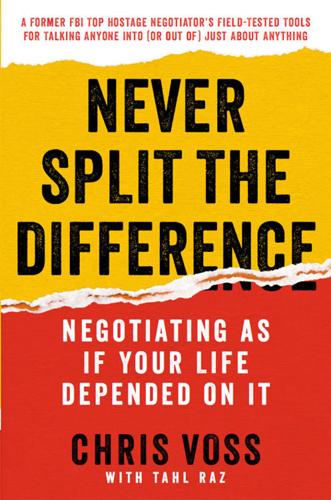
Never Split the Difference: Negotiating as if Your Life Depended on It
by
Chris Voss
and
Tahl Raz
Published 3 Oct 1989
Suddenly the unthinkable and unthought was real. People had always predicted that the next swan they saw would be white, but the discovery of black swans shattered this worldview. Black Swans are just a metaphor, of course. Think of Pearl Harbor, the rise of the Internet, 9/11, and the recent banking crisis. None of the events above was predicted—yet on reflection, the markers were all there. It’s just that people weren’t paying attention. As Taleb uses the term, the Black Swan symbolizes the uselessness of predictions based on previous experience. Black Swans are events or pieces of knowledge that sit outside our regular expectations and therefore cannot be predicted.
…
Remember, your counterpart might not even know how important the information is, or even that they shouldn’t reveal it. So keep pushing, probing, and gathering information. ■Let what you know—your known knowns—guide you but not blind you. Every case is new, so remain flexible and adaptable. Remember the Griffin bank crisis: no hostage-taker had killed a hostage on deadline, until he did. ■Black Swans are leverage multipliers. Remember the three types of leverage: positive (the ability to give someone what they want); negative (the ability to hurt someone); and normative (using your counterpart’s norms to bring them around).

Jared Bibler
by
Iceland's Secret The Untold Story of the World's Biggest Con-Harriman House (2021)
But this new opportunity is not just any job. Not only is the salary decent by post-crisis Icelandic standards, but this one feels like the chance to do something positive for my new country and for the people around us who have been suffering as much as us. I am going to be one of the few tasked with investigating the banking crisis, the very thing that plunged our nation into this black hole. I am going to be an investigator for the FME, the financial supervisor of the Land. A few days into my new job, a lawyer shows up at my desk. It’s our first interaction and I am not sure if he’s my teammate or my boss. I know he’s the senior attorney on the team, but we both report to the same boss.
…
I pace to the window and look out at Esja, the dark lady of a mountain that dominates the small Icelandic capital. “I guess it’s up to me to make the action happen,” I tell myself. I suddenly feel the weight of the whole of the crisis resting on my shoulders, an overwhelming sensation. Are they really relying on just me to investigate this whole huge mess? This world-scale banking crisis that set the whole country back a decade or two? That reduced us to eating horsemeat sausages and made me so desperate for a job that I even worked for free? Just me? Where should I start? How can I get this going? I sit back at my desk and look across at the near-empty bookshelf where I have placed my FME employee handbook and some other first-day papers.
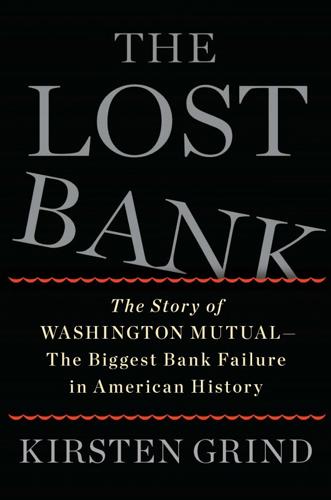
The Lost Bank: The Story of Washington Mutual-The Biggest Bank Failure in American History
by
Kirsten Grind
Published 11 Jun 2012
He had told the board, and promised himself, that he wouldn’t stay on past retirement age. He figured he had two options: sell Washington Mutual, or find someone to take his place. While selling the bank wasn’t ideal, it would have been a good time. Washington Mutual sat in a relatively strong position, even though another banking crisis was unfolding around it. This time banks were failing by the hundreds because of an energy downturn in oil states like Texas and Oklahoma, a commercial real estate bust in California and the Northeast, and an agricultural recession rippling through the midwestern states. In each region, banks had made loans that soured because of their region’s respective downturn.
…
“I tried to argue as forcefully and intelligently and legitimately as I could that stopping the crisis at WaMu was stopping the Main Street crisis,” Fishman said later about his conversations with various government officials. “All of this other crap was really a financial crisis. We were the Main Street crisis. And I could never get, because of the lack of attention, because of the anger at Kerry and the bank, I could never get enough traction around that argument. They were done with WaMu.” The banking crisis on Main Street continued strongly for the next two years. More than 280 community banks in all corners of the country closed, to be sold by the FDIC, a flood of failures soon overlooked as the normal course of business. The community bank for which Doug Wisdorf had been scheduled to start work the week after he died later failed.
…
See TARP employees, WaMu concerns about JPM purchase of WaMu by, 321–22 Dimon welcoming e-mail to, 304 and five emissaries–Killinger meeting, 203–6 former, 203–6, 203n impact of WaMu failure on, 310–11 JPM conversion of WaMu and, 321–24 layoffs of, 102, 158, 176, 196, 321–24 pension plans of, 310 Pepper’s e-mail to, 310–11 reactions to sale of WaMu by, 302–3, 305 and WaMu as name of bank, 203n See also specific person Enron, 91, 138, 197 Faber, David, 6 Fannie Mae, 64, 120–21, 130, 187, 248, 254, 257, 261, 285 Farkas, Lee, 130 Federal Deposit Insurance Corp. (FDIC) Bair defense of, 243 bank runs and, 214 banking crisis on Main Street and, 319–20 Citigroup case and, 314n Congress and, 249 criticisms of, 319–20 deposit insurance fund of, 219, 227, 228, 237, 243, 245, 275, 292, 304, 317, 333 deposit insurance limit at, 276, 315 founding of, 219 headquarters of, 220 IndyMac closure and, 207, 208, 242, 243, 249 JPM relationship with, 232, 246, 316 mission of, 219, 315 OTS relationship with, 220, 224–28, 233, 242, 244–45, 248–52, 260, 262, 266–67, 270, 274, 275, 281, 287 power of, 219–20 preparation for bank failures by, 216–17, 228 reputation of, 220 Superior Bank case and, 225 “systemic risk” exceptions and, 314 troubled bank list of, 3, 248–49, 262, 273 Wachovia case and, 314 Walmart bank application and, 217 See also Bair, Sheila; Federal Deposit Insurance Corp.
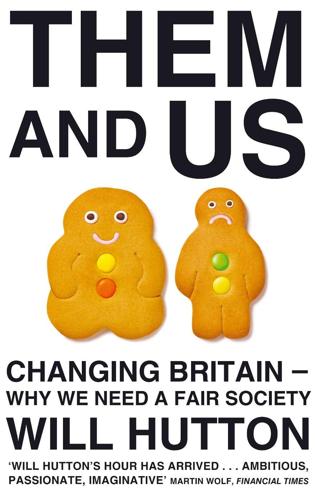
Them And Us: Politics, Greed And Inequality - Why We Need A Fair Society
by
Will Hutton
Published 30 Sep 2010
Again, there was no insurable interest: the CDS was not an insurance premium but a gambling chip. Buy a CDS in a bank or country debt, and as soon as there was concern about the credit-worthiness of the loan the price of the CDS would rise. Hedge funds buying CDSs in incredible volume would be key destabilisers during the banking crisis – the trigger for both Bear Stearns’ and Lehman’s demise – and later triggers of the sovereign debt crisis in Europe. It was massive buying of CDSs on Greek government debt in April 2010 that forced the massive EU and IMF bail-out. The evolution of finance into a transaction-driven market place meant there was a new distance between clients and bankers.
…
A quarter of these crises involved public debt rising by more than 10 per cent of GDP and another half approached 10 per cent of GDP.16 Yet the warnings were disregarded, even as it became obvious that deregulation resulted in a degree of instability that would eventually trigger a systemic Western banking crisis. Bill White, then chief economist at the Bank of International Settlements, warned in a prescient but largely ignored paper in 2004 that deregulated banking systems in the past had shown an alarming capacity to reinforce the economic cycle upwards, buoying up asset prices, reducing credit-worthiness terms and generating extraordinary levels of indebtedness.
…
Haldane’s upper estimate for lost output is even worse, at £7 trillion. These are epic numbers. Admittedly, they are all based on the assumption that a growth rate of 2.75 per cent, against which they are benchmarked, was sustainable, when it almost certainly was not. Nevertheless, they give an indication of the scale of the costs the banking crisis has imposed on the rest of the economy, and the adjustment and reconstruction challenge that the country now faces. It could be even worse. The economics team at Barclays believe that it is perfectly plausible for growth to average just 1.75 per cent for the first half of the current decade.4 The danger is that business, households, finance and government all make their necessary structural adjustments independently of each other – and within a global environment where similar adjustments are being made, protectionism is rising and competitive devaluations are rife.
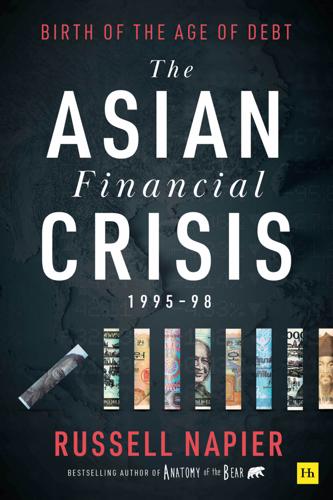
The Asian Financial Crisis 1995–98: Birth of the Age of Debt
by
Russell Napier
Published 19 Jul 2021
Following the bailout of Nippon Credit Bank in April 1997, Sanyo Securities, Yamaichi Securities, Hokkaido Takushoku Bank and Tokuyo City Bank all failed in October and November 1997. By February 1998, US$230bn of public funds were mobilised to provide capital for the banking system. The Japanese banking crisis was not caused by the Asian financial crisis, but the growing realisation that the banks would also face major losses on their Asian loan books accelerated the country’s own banking crisis. Foreign investors had long worried about the balance sheet condition of Japanese banks and the premium these banks had to pay for US dollar borrowing had been rising, reflecting the growing concerns.
…
How the Asian central banks and then the commercial banks acted to transmute capital inflows into local currency money and credit was the key to understanding the fickle foundations of the Asian economic miracle. I had learned the basic mechanisms of money and credit creation analysing the US banking system as a fund manager in Edinburgh. Watching the 1990–91 US banking crisis unfold and how monetary policy settings impacted or failed to impact bank credit growth and thus money growth, was a great way to learn quickly. No form of analysis will always provide the right answer or even the better answers that we need to profit in purchasing financial assets the prices of which are always discounting the future.

Animal Spirits: The American Pursuit of Vitality From Camp Meeting to Wall Street
by
Jackson Lears
The collapse of cotton prices in 1819 forced heavily indebted planters into desperate straits—selling off land and slaves, facing foreclosure. Yet what became known as the Panic of 1819 was not a single event or even a series of events, and it was not just about cotton; it developed over several years and involved widespread but interrelated events—an industrial downturn spreading from northeast to northwest in 1815–1817; a banking crisis in 1818, when local and state banks discovered they had inadequate reserves to cover depositors’ demands; and finally the cotton bust of 1819. Most people, even the major players, had no conception of these vast interrelationships, this big picture. Their lives were being transformed by decisions made in distant cities, under circumstances they could not control nor even imagine.
…
As a rising star in the economics profession, he had been an obvious early hire as a junior adviser. His first book, Indian Currency and Finance (1913), along with his articulate participation in government inquiries, had earned him a growing reputation. He was even called in to give expert advice to Prime Minister Lloyd George during the banking crisis at the beginning of August 1914, between the assassination at Sarajevo and the outbreak of hostilities. Keynes was as indifferent to the war as the rest of Bloomsbury until November 1914, when a chatty letter he had written to a Cambridge friend in France came back with the word “Killed” scrawled across the envelope.
…
By the time the “holiday” was over, he had held his first press conference, secured a bank bailout from Congress, and given his first “Fireside Chat,” the intimate radio addresses that brought his calm, measured tones into millions of living rooms. The effect was electric. “You are bringing back confidence and driving out the fear that has been gripping the people for the last three years,” a Chicagoan wrote, and a judge from Syracuse recalled being one of a bipartisan group of listeners worried about the banking crisis: after Roosevelt had finished speaking, they looked around and said, as if with one voice: “We are saved.” When the banks reopened, depositors started putting their money back in them. In those days, before capital had become thoroughly globalized, it was possible to save the U.S. banking system (barely) by restoring domestic confidence.

The Willpower Instinct: How Self-Control Works, Why It Matters, and What You Can Doto Get More of It
by
Kelly McGonigal
Published 1 Dec 2011
So assuming you have the resources to walk around the block without collapsing, the absolute demands of self-control couldn’t possibly deplete your entire body’s store of energy. And surely it wouldn’t require refueling with a sugar-laden 100-calorie drink. Why, then, does the brain’s increased energy consumption during self-control seem to deplete willpower so quickly? ENERGY CRISIS To answer this question, it may be helpful to recall the American banking crisis of 2009. After the 2008 financial meltdown, banks received an influx of money from the government. These funds were supposed to help the banks cover their own financial obligations so they could start lending again. But the banks refused to lend money to small businesses and individual borrowers.
…
INDEX acceptance inner power of Adams, Claire addiction addict loses his cravings candy addict conquers sweet tooth chocoholic takes inspiration from Hershey’s Kisses dopamine’s role in drinking drug e-mail Facebook shopping smoker under social influence smoking Advisor-Teller Money Manager Intervention (ATM) Ainslie, George Air Force Academy, U.S. (Colorado) Amazon.com American Journal of Psychiatry American Psychological Association anhedonia Ansel, Mark anticipation anticipatory shame “Anti-Social” (program) anxiety Archives of Internal Medicine autonomic nervous system Aztecs Baby Boomers banking crisis (2009) Baruch College (NYC) Baumeister, Roy behavior changes religion and Benson, Herbert binge-drinking study binge-eaters Bloomingdale’s (department store) bounded rationality Bowen, Sarah brain on dopamine early energy needs for self-control evolution of mirror neurons modern pleasure center prefrontal cortex remodeling for willpower reward system self-control system self-monitoring system stress and stress center Breman, Anna bride-to-be gains weight Bush, George W.
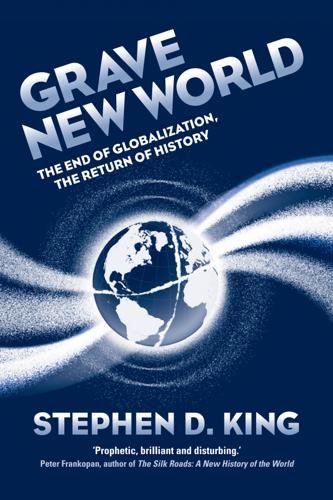
Grave New World: The End of Globalization, the Return of History
by
Stephen D. King
Published 22 May 2017
In the 1920s, up to a thousand (typically very small) bank failures occurred in any one year; most years had considerably fewer. In 1930, however, there were 1,350 failures, followed by 2,293 in 1931, 1,453 in 1932 and an astonishing 4,000 in 1933. Relative to the nineteenth-century experience, this was a banking crisis totally off the scale. The peak of the panic was reached on the day of Roosevelt’s inauguration at the beginning of March 1933. Visitors to Washington found notes in their hotel rooms informing them that cheques drawn on out-of-town banks were no longer acceptable. With state after state declaring a bank holiday, something had to be done.
…
(i), (ii), (iii), (iv), (v) Byzantium (i) Cabinet (UK) (i) California (i), (ii) caliphates (i), (ii), (iii) Callaghan, Jim (i), (ii) Cameron, David (i) Canada a reputable country (i) Asian Development Bank and (i) closes gap on US (i) Irish emigrate to (i), (ii) North America Free Trade Agreement (i), (ii) TPP (i) Cape of Good Hope (i) capital, mobility of (i), (ii), (iii), (iv) see also cross-border capital flow Capital in the Twenty-First Century (Thomas Piketty) (i) capitalism communism and (i) free-market capitalism (i), (ii), (iii), (iv) Fukuyama’s disciples on (i) Steffens and Shaw on (i) US economic model and (i) Caribbean (i) Carter, Jimmy (i) Castillon, Battle of (i) Castro, Fidel (i) Catherine of Aragon (i) Catherine the Great (i) Catholics (i), (ii), (iii) Caucasus (i), (ii) Central African Republic (i), (ii) Central America (i) Central Asia (i), (ii), (iii) see also Asia central banks (i), (ii) see also bankers inflation targets (i) Kosmos (i) price distortion (i) printing money (i), (ii) quantitative easing (i), (ii), (iii) zero interest rates and (i) Chad (i) Chechens (i) checks and balances (i), (ii) Chile (i) China (i), (ii), (iii), (iv) 1980 emergence (i) ageing population (i) attracting Western investment (i) balance of payments surplus (i) boom to slowdown (i) Brazil and (i) British in (i) Coca-Cola and (i) demand for German goods (i) Deng Xiaoping (i) Disney and (i) economic resurgence (i), (ii) excess capital in US (i) foreign capital for (i) iPhones (i) Japan and (i) living standards (i) military spending (i) OECD and (i) per capita incomes (i), (ii) ratifies Paris climate deal (i) rise of renminbi (i), (ii) Russia threatens (i) South China Sea and neighbour disputes (i) TPP and (i) treaty ports (i) Trump’s protectionism and (i) US tries to contain (i), (ii), (iii) Chongqing (i), (ii) Christianity (i), (ii), (iii), (iv), (v) Churchill, Winston (i), (ii), (iii), (iv)n1 CIA (i) Ciudadanos (i) Cleveland, Grover (i) climate change (i), (ii) Clinton, Hillary 2016 campaign (i) Bernie Sanders opposes (i) concerns of supporters (i) rejects TPP (i), (ii) Syria (i) wins Democrat nomination (i) clubs (i), (ii) Cobden, Richard (i), (ii), (iii) Coca-Cola (i) ‘coffin ships’ (i) Cold War binary rivalry, a (i) economic differences (i) end of (i), (ii) globalization and (i) NATO and (i) Soviet living standards (i) collateralized debt obligations (CDOs) (i) Collins, Philip (i) Columbus, Christopher (i), (ii), (iii) commodity markets (i), (ii), (iii) common sense (i) Commonwealth (i) communism Berlin Wall and (i) capitalism and (i) Cuba (i) Marx’s stages (i) Shaw extols (i) Soviet Union collapse and (i), (ii) Como, Lake (i) Comptoir National d’Escompte de Paris (i) Concert of Europe (i) Congo (i) Congress (US) 1933 banking crisis (i) American public’s confidence in (i) Bush Jnr on terrorism (i) Immigration Act 1917 (i) Japanese sanctions (i), (ii) Smoot–Hawley tariff (i) Congress of Vienna (i), (ii), (iii), (iv) Connally, John (i) Conolly, Arthur (i) Conservative Party (i), (ii) Constantinople (i), (ii) Constitutional Tribunal (Poland) (i) ‘Convention of Peking’ (i) Convention on the International Regulations for Preventing Collisions at Sea (i) Corbyn, Jeremy (i), (ii) Córdoba (i), (ii) corporate scandals (i) Corroyer, Edouard (i) Court of Cassation (Egypt) (i) Crécy, Battle of (i) Creole languages (i) Crimea (i), (ii) Crimean War (19th century) (i) crop yields (i) cross-border capital flow allocation of resources and (i) emerging markets and (i), (ii) extraordinary growth of (i), (ii), (iii) globalization dominated by (i) inequality and (i) Varoufakis tries to limit (i) Cuba (i) Czech Republic (i) Czechoslovakia (i) Darius the Great (i) Darwin, Charles (i) Davos (i), (ii) de Gaulle, Charles (i), (ii) debt (i) Africa (i) China (i) debt to income ratios (i) government debt (i) Latin America (i) low inflation and (i) deflation (i), (ii), (iii), (iv) Delhi (i) demand management (i), (ii) Democratic Party (US) (i), (ii) Democratic Republic of the Congo (i) Denfert-Rochereau, Eugène (i) Deng Xiaoping (i), (ii), (iii), (iv) Denmark (i), (ii) Department of Housing and Urban Development (US) (i) deposit insurance (i) devaluation 1930s (i), (ii), (iii) dollars, gold and (i) Eisenhower and Britain (i) franc (i) right conditions for (i) Diaoyu (i) Disney (i), (ii) Doha Round (i) dollar (US) see American dollar Dow Jones Industrial Average (i) Draghi, Mario (i) Duisburg (i) Duterte, Rodrigo (i), (ii) DVDs (i) East Africa (i) see also Africa Eastern Europe EU and its effects (i) importing democracy (i) joining the EU (i), (ii) Molotov–Ribbentrop Pact (i) New World emigration (i) Ottoman Empire and (i) Soviet communism and (i), (ii), (iii) ‘Economic Theory of Clubs’ (James Buchanan) (i) Ecuador (i) Eden, Anthony (i), (ii) Edison, Thomas (i) Edison Electric (i) educational attainment (i) Edward VI, King (i) Egypt (i), (ii), (iii) Einstein, Albert (i) Eisenhower, Dwight D.

The Financial Crisis and the Free Market Cure: Why Pure Capitalism Is the World Economy's Only Hope
by
John A. Allison
Published 20 Sep 2012
—Nido Qubein, President, High Point University, Chairman, Great Harvest Bread Company, and author of How to Be a Great Communicator “John Allison lucidly depicts how government and private institutions helped create the biggest financial debacle of our times. This book persuasively debunks the conventional wisdom!” —Tom Stemberg, Managing General Partner, Highland Consumer Fund, Chairman Emeritus, Staples, Inc. “For 20 years, John Allison supplied real leadership, including through the turbulent times of the banking crisis. He understands what caused the collapse and what we need to do going forward to ensure our financial future. His arguments are clear and compelling, and he has a gift for taking complex financial issues and making them understandable. I believe his blueprint is the roadmap for our economic success both now and in the future.”
…
Accounting: loan loss reserves, 152–154 principles-based, 109 private accounting systems, 177–178 rules-based, 109 (See also Fair-value accounting) AEI (American Enterprise Institute), 64 Affordable housing efforts, 43, 216 Afghanistan, 198 African Americans, 43, 55 AIG: bailout, 128–130, 164 CDSs of, 126–127 TARP funds for, 168 Ally Financial, 178 Alt-A portfolios, 64 Altruism, 215–218, 222–223, 252 Ambac, 86 American Enterprise Institute (AEI), 64 Antitrust laws, 174–175 Argentina, 8 Arthur Andersen, 109 Asian Americans, 43 Assets, valuation of, 106–108 Atlas Shrugged (Ayn Rand), 225 Auction-rate municipal bond market, 85–87 Authority, of regulatory agencies, 46–47 Auto finance market, 178–180 Bank bailout (see Troubled Asset Relief Program (TARP)) Bank of America, 116, 150, 237 counterparty risk at, 124 credit decisions at, 238 funding of shadow banking system, 120 “too-big-to-fail” firms, 173 Bank runs, 75–76 Banking industry, 67–72 competition with risk-taking financial institutions, 39–40 economic role of, 67–69 and Federal Reserve, 22–23 fractional reserve banking, 69–70 in Great Depression vs. recent financial crisis, 70–72 (See also Shadow banking system) Banking industry reforms, 187–193 Dodd-Frank bill, 193 and Federal Reserve, 187–188 and gold standard, 188–189 reducing risk of economic cycles with, 189–193 Banking regulation, 133–147 in Bush administration, 133–136 effects on small businesses, 144–147 impact of, 147 and lending policies of banks, 138–146 and mathematical modeling for risk management, 136–138 reform of, 190 Bankruptcy, 8, 124 Banks: capital requirements for, 190 economic forecasting by, 28 FDIC and risk-taking by, 38–41 healthy, effects of TARP on, 172–174 lending policies of, 138–146 leverage ratios of, 70–72 misinvestment effects on, 12–14 private, 97–99, 187–188 self-insurance at, 48–52 start-up, 38–39 stress tests for, 171 (See also Investment banks) Barclays Bank, 164 Basel Accords, 51, 71, 125, 137, 151 BB&T Corporation, 23–24 and AIG bailout, 128 auditors of, 134 in auto finance market, 178 bonds of, 76, 84–85 competition with risk-taking financial institutions, 39–40, 98 conservatism of, 30 culture of, 240–241 failed bank takeover by, 38–39, 47–48 financial crisis for, 1–2 and flight to quality, 87, 105 home mortgages by, 97–98 and Lehman Brothers failure, 162–163 and liquidity crisis, 105–106 loan loss reserves of, 153–154 and mathematical modeling, 136–137 and misinvestment in residential real estate, 12–14 mortgage servicing rights, 111–112 and pick-a-payment mortgages, 91–92 post-crisis lending policies, 139–140, 142–145 racial discrimination in lending accusation, 42–45 selling of mortgages by, 113 TARP participation by, 170–172 trader principle of, 223 underwriting standards of, 141 use of derivatives, 122, 123 wellness program of, 202–203 Bear Stearns, 70, 71 bailout of, 104, 162 Cdss on bonds of, 127–128 counterparty risk at, 124 derivatives from, 123 financial “innovations” of, 101 Bernanke, Ben: and 2008 panic, 164, 167 and development of TARP, 76, 169–171 monetary policy of, 27–31, 33, 35, 40, 125, 213 response to financial crisis, 7, 70 Blair, Tony, 164 Bond insurance, 86–87 bonds: auction-rate municipal bond market, 85–87 effects of FDIC for, 40–41 fair-value accounting for, 105 subprime mortgage, 82–84 of Washington Mutual, 75–76 Borrowers: CRA, 56–57 of pick-a-payment mortgages, 90–91 post-crisis treatment of, 142–145 and racial discrimination in lending, 42–45 regulated changes in grading for, 140–141 Borrowing for consumption, 57–58 Boston Federal Reserve bank, 42 Budget, federal, 182–183 Bush, George W., and administration: action in financial panic, 161, 167 banking regulations, 133–136 economic proposals, 15 Patriot Act, 45, 46 regulation of Fannie Mae and Freddie Mac, 63 California, 21, 74, 90 CalPERS (California Public Employees’ Retirement System), 93, 116, 121, 131 Canada, 192 Capital: against GSE loans, 137 and leverage, 70–71 and loan loss reserves, 153 misinvestment of, 9–11, 14 wasting of, 159–160 Capital markets, 85–87, 101 Capital standards: for banks, 190 for loans, 51–52 and TARP, 170–171 Capitalism: crony, 6, 102, 129, 179 and freedom, 253–254 at universities, 231–233 Capitalism (Alan Greenspan), 32 Carter, Jimmy, 161, 179 Cash basis accounting, 110 Cash flows, 106–107, 115 Cato Institute, 201 CDOs (collateralized debt obligations), 124–126 CDSs (credit default swaps), 126–128 CEOs (Chief Executive Officers): behavior of, 2–3 decisions of Federal Reserve vs., 34 and rules-based accounting, 109 wage rates of, 210 China: currency standard, 77 demographics, 205 education, 230 GDP of U.S. vs., 183 government debt in, 200 manufacturing in, 10, 25–26, 161 market-based pricing in, 34 military spending in, 198 stimulus fund use, 181–182 trade with, 204–205 U.S. investment by, 29, 159 Chrysler, 130, 179–180 Citigroup: bailout of, 50, 104, 130, 177 CDOs of, 125–126 credit decisions, 238 crony capitalism, 6 funding of shadow banking system, 120 long-term debt of, 71 and panic during financial crisis, 163 pragmatism at, 217–218 reason at, 245 “too-big-to-fail” firms, 173 Clearing, 104 Clinton, Bill: lending reforms, 42–44, 56 subprime lending requirements, 58–60 Collateralized debt obligations (CDOs), 124–126 Colonial Bank, 47–48 Commercial real estate, 11, 97 Common good, 215–216 Community Reinvestment Act (CRA), 42, 55–57, 59 Compensation, 50, 83–84, 197–198 Confidence, 84–87, 184–185 Conservatives, 108 Consumer compliance, 193 Consumer Price Index (CPI), 26–27 Consumption: borrowing for, 57–58 housing as, 9–12, 54–55, 73–74 Contagion risk, 123 Corporate debt, 107 Counterparty risk, 123, 124 Countrywide: crony capitalism at, 6 and fair-value accounting change, 114, 118 and FDIC insurance, 39, 41, 46 necessary failure of, 159 pick-a-payment mortgages of, 91–93 subprime business at, 99 thrift history of, 98 CPI (see Consumer Price Index) CRA (see Community Reinvestment Act) Creativity, 7, 247 Credit default swaps (CDSs), 126–128 Credit rating agencies (see Rating agencies) Crony capitalism, 6, 102, 129, 179 Cross-guarantor insurance fund, 48–52 Cuba, 34, 247, 252 Cuomo, Andrew, 58 Currency, debasing, 22 Debt, 21–22, 107 Declaration of Independence, 220, 252 Defaults, 90–91, 126–128 Defense spending, 198–199, 227 Deflation, 22 Demand, supply and, 104, 185, 209, 210 Department of Housing and Urban Development (HUD), 15, 58 Deposits, disintermediation of, 120–121 Derivatives, 3, 120, 122–124 Disclosure requirements, 150–152 Dodd, Christopher, 7, 46, 61, 63, 64 Dodd-Frank Wall Street Reform and Consumer Protection Act: deficiencies of, 193 introduction of, 63–64, 183 as misregulation, 147 results of, 130 and TARP, 173, 174 Dollar, U.S., 77, 188, 229 Durbin amendment, 193 Earnings, operating, 103–106 East Germany, 34, 247 Eastern Europe, 34, 252 Economic cycles, 108, 189–193 Economic health, 159–161 Economic recovery, 1, 207–208 Economy, banking industry in, 67–69 Edison, Thomas, 19, 158–159 Education, 230–235, 247 Egypt, ancient, 230 Elitism, 7 Ely, Bert, 48 Employee Retirement Income Security Act (ERISA), 82, 149 Enron, 60, 109, 133, 149 Entitlement programs, reforms for, 199–204 Equal Credit Opportunity Act, 42, 55 ERISA (Employee Retirement Income Security Act), 82, 149 Ethical incentives, lending, 57–58 Euro, 189 European banking crisis, 51–52, 137 Expensing (stock options), 114–117 Experiential learners, 244–245 Fair Housing Act, 55 Fair-value accounting, 103–118 asset valuation in, 106–108 and expensing of stock options, 114–117 and losses on CDSs, 126–127 private accounting systems vs., 177–178 SEC involvement in, 151–152 for selling vs. servicing mortgages, 113–114 Fannie Mae: accounting scandal, 112–113, 149 in current environment, 251 and disintermediation of deposits, 121 failure of, 61–65, 164 and fair-value accounting, 118 in housing policy, 58–61 misallocation of resources by, 14 misleading of rating agencies by, 83 mortgage lending by, 97–101 reforms for, 190–192 selling mortgages to, 113–114 subprime lending by, 58, 99–101 FASB (see Financial Accounting Standards Board) FDIC (see Federal Deposit Insurance Corporation) FDIC insurance, 37–52 and bank liquidity, 171 and failing banks, 140 and fractional reserve banking, 68–69 and pick-a-payment mortgages, 91 reform of, 190 and S&L failures, 97 Federal Deposit Insurance Corporation (FDIC), 37–38 as external auditors, 134 and failing banks, 47–48 misallocation of resources by, 14 and pick-a-payment mortgages, 91 as regulator, 41–48, 143 take over of Washington Mutual, 75–77 Federal Housing Administration (FHA), 15, 190–192, 252 Federal Reserve, 22–23, 102, 189 antitrust policy, 174 bailouts by, 120–121, 190, 192 and banking industry reforms, 187–188 as external auditors, 134 and federal debt, 21–22 and leverage, 72 mathematical modeling by, 136 misallocation of resources by, 14, 208 misleading information from, 46, 83, 101, 125 monetary policy of, 17–20, 31–35, 96 overreaction by, 154 stimulus from, 152, 153, 208 and TARP, 165, 167–168, 171 and unemployment, 213 and Washington Mutual, 75 Federal Reserve Board, 18 Federal Reserve Open Market Committee, 31 Federal Savings and Loan Insurance Corporation (FSLIC), 37–38, 50, 96 FHA (see Federal Housing Administration) Financial Accounting Standards Board (FASB), 105, 106, 114–117 Financial crisis (2007-2009), 1–3, 251–254 banking industry in, 70–72 derivatives in, 122–124 Freddie Mac and Fannie Mae in, 65 free-market response to, 177–186 and Great Depression, 25 lessons from, 251–252 SEC role in, 154–155 Financial reporting requirements, SEC, 150–152 Financial Services Roundtable (FSR), 32, 61–62 First Horizon, 237 Fitch, John Knowles, 150 Fitch Ratings: investor confidence in, 84–87 misratings by, 82–84, 101, 125, 126 and SEC, 81–82, 149–150 Flat tax, 197 Forbes, Steve, 197 Ford, 179 Foreclosure laws, 77–80 Fractional reserve banking, 69–70 Frank, Barney, 7, 61, 63, 64 Fraud, 109–113 Freddie Mac: accounting scandal, 112–113, 149 current environment, 251 and disintermediation of deposits, 121 failure of, 61–65, 164 in housing policy, 58–61 misallocation of resources by, 14 misleading information from, 83 mortgage lending by, 97–101 reforms for, 190–192 selling mortgages to, 113–114 subprime lending by, 58, 99–101 Free markets: experimentation in, 19 justice in, 92, 177 market corrections in, 157–159 and monetary policy, 31–35 risk taking by banks in, 40–41 wage rates in, 210–211 Free trade, 204–205 Friedman, Milton, 20, 189 FSLIC (see Federal Savings and Loan Insurance Corporation) FSR (Financial Services Roundtable), 32, 61–62 GAAP accounting, 116, 117 Gates, Bill, 216 GDP, 183, 197–199 General Electric, 168, 169 General Motors (GM), 169, 178–180 General Theory of Employment, Interest and Money, The (Keynes), 181 Germany, 52 GM (General Motors), 169, 178–180 GMAC, 168, 169, 178–180 Gold standard: and deflation, 25–26 and economic future of U.S., 188–189 Greenspan’s view of, 32 Golden West, 39, 91, 92, 98, 159 Goldman Sachs, 71, 173 as AIG counterparty, 128–129 bailout of, 104, 164, 179 CDSs of, 126 counterparty risk at, 124 crony capitalism at, 6 financial “innovations” of, 101 Government policy: as cause of financial crisis, 1, 5–6, 251 and residential real estate bubble, 6 (See also Housing policy; Policy reforms) Government regulation, 5–8, 41–48, 204 Government spending, 180–183, 197–199 Government-sponsored enterprises (GSEs), 59, 64–65, 98, 137 (See also Fannie Mae; Freddie Mac) Great Depression: and avoidance of stock market, 74 banking industry in, 70–72 economic policies after, 161 and Federal Reserve, 19–20, 24, 188 and gold standard, 188 and government interference, 170 and Smoot-Hawley Tariff Act, 205 Great Recession, 1, 251–254 and Federal Reserve, 188 Freddie Mac and Fannie Mae in, 65 and interest-rate variation, 33 market corrections and depth of, 160 and monetary policy, 17 and residential real estate, 9–15 Great Society, 6, 55, 96 Greece, 51, 52, 137, 228 Greenspan, Alan, 23–30, 32, 33, 160 Gross domestic product, 183, 197–199 Hamilton, Alexander, 19 Harvard University, 43, 131 Hayek, Friedrich, 31 Health insurance, 201–202 High-net-worth shareholders, 93 Home Builders Association, 60 Home foreclosure laws, 77–80 Homeownership, 53–55 Hoover, Herbert, 24, 161, 205 Housing: as consumption, 9–12, 54–55, 73–74 government support of, 12 Housing policy, 53–65 HUD (Department of Housing and Urban Development), 15, 58 Human Action (von Mises), 238 Immigration, 19, 205–206 India, 10, 25, 205 IndyMac, 39, 75, 98 Inflation: CPI as indicator of, 26–27 and fair-value accounting, 103 and Federal Reserve, 21–22 and prices, 24–25 (See also Monetary policy) Initial public offerings, 150 Insurance: bond, 86–87 cross-guarantor, 48–52 FDIC (see FDIC insurance) health, 201–202 private deposit, 48–52 self-insurance at banks, 48–52 unemployment, 212–213 Interest rates, 26–27, 31–35 Inverted yield curves, 27–29 Investment banks: disclosure requirements for, 151 government bailout of, 162 “innovations” of, 101–102 leverage ratios of, 71–72 IPOs, 150 Iran, 198, 199, 227 Iraq, 198 Ireland, 77 Isaac, Bill, 107–108, 161–162 Italy, 51, 52 Japan, 159, 200, 205 Jefferson, Thomas, 19, 220 Johnson, Lyndon Baines, 6, 55, 96, 161, 188 JPMorgan Chase, 75 and Bear Stearns, 162 and shadow banking system, 120 as “too-big-to-fail” firm, 173 and Washington Mutual, 163 Keynes, John Maynard, 181 Labor: allocation of, 10–11, 14 minimum-wage laws, 209–212 Lehman Brothers, 71, 76, 101, 104, 129, 164 and Bear Stearns bailout, 162–163 corporate debt at, 107 counterparty risk at, 124 derivatives from, 123 Limited government, 182–183, 195, 231, 253 Liquidity: of banks, 68–69 and FDIC insurance, 171 and financial crises, 70–72 and housing prices, 74–75 and TARP, 171–172 Loan loss reserves accounting, 152–154 Loans: capital standards for, 51–52 qualified, 98 substandard, 140–141 Madoff, Bernie, 149, 225 March of Dimes, 241 Market corrections, 157–165 Federal Reserve’s prevention of, 23, 32 prevention of, 13 residential real estate, 78 and response to financial crisis, 177–180 Market discipline, 21, 38 Market-based monetary policy, 31–35 Market-clearing price, 209 Mathematical modeling: for loan loss reserves, 152–153 by ratings agencies, 82–83 for risk management, 136–138 MBIA, 86 Medicaid, 6, 55, 201 Medicare, 6, 8, 55, 201, 203 Meltdown (Michaels), 35 Merrill Lynch, 101, 124–125 Michaels, Patrick J., 35 Microsoft, 217 Military spending, 198–199, 227 Minimum-wage laws, 209–212 Mises, Ludwig von, 34, 238 Monetary policy, 17–35 of Bernanke, 27–31, 33, 35, 40, 125, 213 and federal debt, 21–22 and Federal Reserve, 17–23 of Greenspan, 23–27 market-based, 31–35 and unemployment, 208–209 Money market mutual funds, bailout of, 120–121, 192 Money supply, 21–22, 24, 189 Moody, John, 83, 150 Moody’s, 81–87 investor confidence in, 84–87 misratings by, 82–84, 101, 125, 126 and SEC, 81–82, 149–150 Morgan Stanley, 71, 101, 124, 173 Mortgage lending, 95–102 by Fannie Mae and Freddie Mac, 97–101 and investment bank innovations, 101–102 prime, 59, 97–99 by private banks, 97–99 savings and loan industry in, 95–97 subprime, 43, 56–57, 99–101 Mortgages: by BB&T Corporation, 97–98 jumbo, 62 pick-a-payment (see Pick-a-payment mortgages) selling vs. servicing, 113–114 Mozilo, Angelo, 46 Multiplier effect, 181 Naked shorting, 127–128, 151 Nationally recognized statistical rating organizations, 82 Negative real interest rates, 26–27 Neo-Keynesian response to financial crisis, 185–186 Neutral taxes, 197 New Deal, 53, 170, 232 Nixon, Richard, 96, 161, 188 North Korea, 34, 198, 227, 247, 252 NRSROs, 82 Obama administration, 142–144: and Dodd-Frank Act, 64 economic policies of, 15, 161 healthcare bill, 183, 201 and Patriot Act, 45 stimulus plan, 181–182 Office of the Comptroller of the Currency (OCC), 40, 154 Office of Thrift Supervision, 40, 41, 45–46 Operating earnings, 103–106 OTS, 40, 41, 45–46 Panics, 137–138, 161–165 Patriot Act, 45, 46, 48, 133–136, 147 Paulson, Henry: in 2008 panic, 164, 167 and AIG bailout, 128, 129 credibility of, 164 development of TARP, 76, 168–170, 172 Pick-a-payment mortgages, 89–93 borrowers using, 90–91 and FDIC, 91 and rise of Fannie Mae/Freddie Mac, 98 Policy reforms, 195–206 for entitlement programs, 199–204 and free trade, 204–205 and government regulations, 204 for government spending, 197–199 for immigration, 205–206 for political system, 206–207 and tax rate, 196–197 Politics: in banking regulation, 42–46 and crony capitalism, 129 and failure of Fannie Mae/Freddie Mac, 59–62 and Federal Reserve appointments, 18 policy reforms for, 206–207 Poor, Henry Varnum, 150 Portugal, 51 Price fixing, 31, 193 Price setting, 31–32 Prime lending, 59, 97–99 Prince, Charlie, 217 Principles-based accounting, 109 Privacy Act, 133, 135 Private accounting systems, 177–178 Private banks, 97–99, 187–188 Private deposit insurance, 48–52 Public schools, 228, 233–235 Racial discrimination (in lending), 42–45 Raines, Frank, 59 Rand, Ayn, 225, 231 Rating agencies, 81–87 investor confidence in, 84–87 mathematical modeling by, 136 and subprime mortgage bonds, 82–84 and “too-big-to-fail” firms, 173 and SEC, 81–82, 149–150 Real estate: commercial, 11, 97 residential (see Residential real estate market) Recessions, 28, 29, 160 Recovery (see Economic recovery) Reforms: banking industry (see Banking industry reforms) government policy (see Policy reforms) Regions Bank, 237 Regulation: of banking industry (see Banking regulation) by government (see Government regulation) Reporting, financial, 150–152 Reserve currency, U.S. dollar as, 77, 188, 229 Residential real estate market: economics of, 73–74 misinvestment in, 9–15 Residential real estate market bubble, 73–80 and government policy, 6 international impact of, 77 and job creation, 80 and state home foreclosure laws, 77–80 Risk: contagion, 123 counterparty, 123, 124 with derivatives, 122–124 diversification of, 67–69 and economic cycles, 189–193 and FDIC insurance, 38–41 and government regulation, 50–51 liquidity, 68–70 mathematical modeling for, 136–138 and “originate and sell” model, 100 systemic, 50–51 RMBS (residential mortgage-backed securities), 81 Roman empire, fall of, 230 Roosevelt, Franklin D., 24, 37, 103, 161 Rules-based accounting, 109 Russia, 198 Samuelson, Paul, 238 Sarbanes-Oxley Act, 133–134 and fair-value accounting, 106 and Fannie Mae/Freddie Mac, 99 misregulation by, 48, 147 and SEC, 150 violations of, 136 SARs (Suspicious Activity Reports), 136 Satchwell, Jack, 57 Savings and loan (S&L) industry, 95–97, 110, 191 Securities and Exchange Commission (SEC), 149–155 capital ratio guidelines, 71–72 and complexity of accounting rules, 116–117 and expensing of stock options, 114, 115 loan loss reserves accounting for, 152–154 misallocation of resources by, 14 and rating agencies, 81–82, 149–150 requirements for shorting stock, 127–128, 151 and rules-based accounting, 109, 110 and Sarbanes-Oxley Act, 150 Self-insurance, 48–52 Selgin, George, 189 Senate Banking Committee, 46 Shadow banking system, 119–131 and AIG bailout, 128–130 credit default swaps in, 126–128 and derivatives, 122–124 Federal Reserve’s role in, 30 losses from, 131 S&L industry, 95–97, 110, 191 Small businesses, 144–147, 183–184 Smoot-Hawley Tariff Act, 205 Social Security, 8, 199–204 South Financial, 237 South Korea, 247 Soviet Union, 34, 195–196, 252, 254 S&P (see Standard & Poor’s) Spain, 51, 52, 77 Spitzer, Eliot, 71, 134–135, 151 Stagflation, 181, 208 Standard & Poor’s (S&P), 81–87 investor confidence, 84–87 misratings by, 82–84, 101, 125, 126 and SEC, 81–82, 149–150 Standard of living, 6–7, 10, 161, 177 Start-up banks, 38–39 State home foreclosure laws, 77–80 Stimulus plan, 181–182 Stock options, expensing of, 114–117 Stocks, shorting, 127–128, 151 Stress tests, banks, 171 Subprime lending: and CRA, 56–57 by Fannie Mae and Freddie Mac, 99–101 and racial discrimination in lending study, 43 Subprime mortgage bonds, 82–87 Substandard loans, 140–141 SunTrust, 152, 237 Suspicious Activity Reports (SARs), 136 Tails (mathematical models), 137 TARP (see Troubled Asset Relief Program) Tax rate, 196–197 Tea Party Movement, 218, 231 Technology industry, 5 “Too-big-to-fail” firms, 130, 173, 193 Trader principle, 92, 223–224 Troubled Asset Relief Program (TARP), 167–175 and 2008 panic, 165 and FDIC, 37 Underwriters Laboratories, 117, 150 Unemployment, 207–213 in economic recovery, 207–208 and minimum-wage laws, 209–212 and misinvestment in residential real estate, 10–11 and monetary policy, 208–209 Unemployment insurance, 212–213 Unions, 179, 180, 212 United Auto Workers, 179, 180 United States: demographic problem in, 228 economic future of, 8, 227–230, 252–253 educational system of, 230–235 founding concepts of, 219–220 as free trade zone, 204–205 GDP of China vs., 183 mixed economy of, 5–6 public schools of, 233–235 university system of, 230–233 United Way, 224, 241 University system, 230–233 U.S.
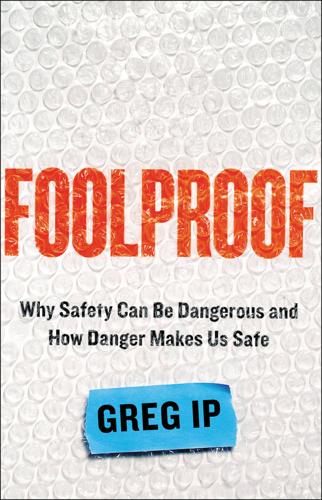
Foolproof: Why Safety Can Be Dangerous and How Danger Makes Us Safe
by
Greg Ip
Published 12 Oct 2015
The riskiest mortgages were being originated not by banks but by finance companies such as New Century Financial and Ameriquest, then securitized by investment banks and sold to investors all over the world. Other than Fannie and Freddie, there wasn’t much reason to worry that a mortgage crisis would bring down the financial system. It seemed that the response to the various crises of the 1980s had made the financial system genuinely safer. It wasn’t just the banking crisis of the 1980s that taught economic leaders lessons. Each of the subsequent crises left them determined to avoid a repeat. Consider, for example, the stock market crash of 1987. Stock trading was facilitated by specialists and market makers—dealers who would buy and sell for their own accounts.
…
Financial innovations such as mortgage-backed securities and derivatives allow an individual or a bank or a company to do something risky, then transfer some of the risk to someone else. The belief that they are now safer encourages them to take more risk, and so the level of aggregate risk in the system goes up. Or it might cause the risky activity to migrate elsewhere. In the 1980s, fear of another banking crisis led to rules on banks being tightened. But that didn’t change the demand for credit or the desire by investors and borrowers to buy houses or take on riskier investments. Consequently, lending and risk migrated to less regulated shadow banks. Public concern curtailed construction of new nuclear power plants in the 1970s and 1980s but not the need for electricity.
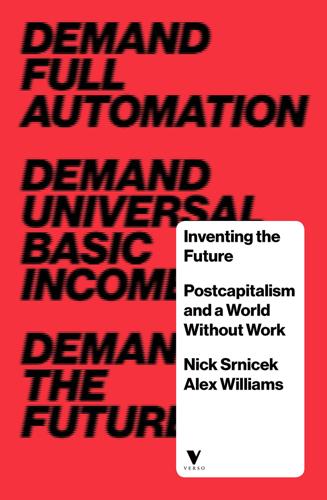
Inventing the Future: Postcapitalism and a World Without Work
by
Nick Srnicek
and
Alex Williams
Published 1 Oct 2015
Though under the alleged control of boards with community representation, investment decisions were effectively taken with little proper oversight. Localisation here meant the politicisation of allegedly disinterested governance boards, turning some cajas into platforms for local government investment in speculative property schemes, as a culture of cronyism took hold.88 With the worst of Spain’s banking crisis centred on the local banks, restructuring meant the merging of local banks to form larger institutions. Even in Germany, often touted as having the best localised banking system in the world, there were issues with some regional banks. The Landesbanken, for example, were heavily invested in structured credit products that performed particularly poorly during the financial crisis.89 The lesson to draw from this is that there is nothing inherent in smaller institutions that will enable them to resist the worst excesses of contemporary finance – and that the idea of cleanly separating the local from the global is today impossible.
…
Smith et al., Validity of Food Miles, p. 3. 82.Doug Henwood, ‘Moving Money (Revisited)’, LBO News, 2010, at lbo-news.com. 83.Stephen Gandel, ‘By Every Measure, the Big Banks Are Bigger’, Fortune, 13 September 2013, at fortune.com. 84.Victoria McGrane and Tan Gillian, ‘Lenders Are Warned on Risk’, Wall Street Journal, 25 June 2014. 85.OTC Derivatives Statistics at End-June 2014, Basel: Bank for International Settlements, 2014, p. 2, at bis.org. 86.David Boyle, A Local Banking System: The Urgent Need to Reinvigorate UK High Street Banking (London: New Economics Foundation, 2011), p. 8. 87.Ibid., pp. 8–9. 88.Giles Tremlett, ‘Spain’s Savings Banks’ Culture of Greed, Cronyism, and Political Meddling’, Guardian, 8 June 2012. 89.Boyle, Local Banking System, p. 10. 90.Andrew Bibby, ‘Co-op Bank Crisis: What Next for the Co-operative Sector?’, Guardian, 21 January 2014. 91.Greg Sharzer, No Local: Why Small-Scale Alternatives Won’t Change the World (Winchester: Zero Books, 2012), p. 3. 92.Philip Mirowski, Never Let a Serious Crisis Go to Waste: How Neoliberalism Survived the Financial Meltdown (London: Verso, 2013), p. 326. 93.Zibechi, ‘Latin America Today’. 94.Christian Marazzi, ‘Exodus Without Promised Land’, in Campagna and Campiglio, eds, What We Are Fighting For, p. viii. 95.Such an approach has also been labelled ‘alternativism’ by communisation theorists.
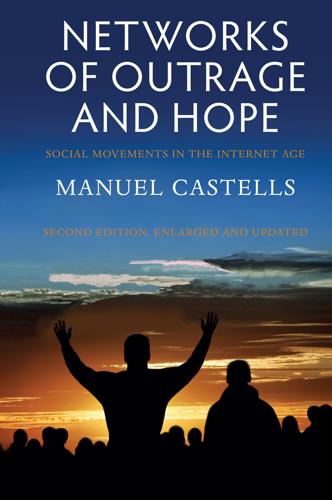
Networks of Outrage and Hope: Social Movements in the Internet Age
by
Manuel Castells
Published 19 Aug 2012
Lamant, L. (2011) A gentle cure for the crisis. Presseurop.eu, [Online] April 8. Available at: http://www.presseurop.eu/en/content/article/590821-gentle-cure-crisis [Accessed on January 9, 2012]. Neate, R. (2011) Iceland’s former premier denies criminal negligence over banking crisis. The Guardian, [Online] June 7. Available at: <http://www.guardian.co.uk/business/2011/jun/07/iceland-former-premier-trial-banking-crisis> [Accessed on January 9, 2012]. Roos, J. (2011) Democracy 2.0: Iceland crowdsources new constitution. Roarmag.org, [Online]. Available at: <http://roarmag.org/2011/06/iceland-crowdsources-constitution-investors-spain-greece/> [Accessed on January 9, 2012].

All Day Long: A Portrait of Britain at Work
by
Joanna Biggs
Published 8 Apr 2015
She went into the interview with a few calculations made on the margins of the annual report. They phoned to offer her the job before she’d even made it home. Did she really want the challenge, her husband asked? ‘And I thought about it and said “Yes – because I haven’t done this type of role before.”’ Christine Lagarde, the head of the IMF, has said that the banking crisis wouldn’t have reached the same scale if Lehman Brothers had been Lehman Sisters. Although Rice disagrees – she’d rather see a mix – she’s proud of her results at Lloyds TSB Scotland: ‘The bank doubled in size on a four-year rolling basis for a number of years. Customers thought far more highly of us at the end of my stint than at the beginning.
…
The cleaners were mostly Spanish-speaking, middle-aged women with sensible hair and rimless glasses, who worked split and short shifts around other caring responsibilities. Lopez arrived from Ecuador at the age of 22 in 2000, joining his father who had emigrated the year before during the 1998–99 banking crisis. ‘My situation in Ecuador was really bad. That was the time that they changed the currency, and the time they overthrew the government – maybe it was like three governments in the year.’ His mother, brother and sister eventually came to the UK too. He arrived with no English and no papers; he wouldn’t be official for nine years.

The Classical School
by
Callum Williams
Published 19 May 2020
As we shall see, the theory appears to assume that the economy is always in perfect balance and that recessions are impossible. In fact, since Say’s law was formulated, all capitalist countries have seen plenty of recessions. Even evidence from when Say was alive contradicts the theory: France, his country of birth, was in the middle of a banking crisis for 15 years during the 19th century.1 Could there be more conclusive proof of the wrongheadedness of Say’s ideas? The modern perception of Say is, in part, due to the writings of historians. The earliest reference to the phrase “Say’s law” that I could find occurred in 1909, decades after Say died.
…
Engels, however, continues caustically: “practice replies with trade crises, which reappear as regularly as the comets… What are we to think of a law that can assert itself only through periodic slumps?” Engels is saying that the classical economists view the economy as basically stable, when day-to-day living would suggest anything but. During the 19th century Italy and Spain were in the middle of a banking crisis 4% of the time; Britain 10% of the time; and France 15% of the time.1 Could capitalism really be as harmonious as the classical political economists had asserted? In the same essay Engels offers a useful corrective to Thomas Malthus’s theory of population. Marxists have never been fans of Malthus, not only because Malthus believes the working classes are stupid but also because of his blithe acceptance that they would face mass starvation.

Manias, Panics and Crashes: A History of Financial Crises, Sixth Edition
by
Kindleberger, Charles P.
and
Robert Z., Aliber
Published 9 Aug 2011
Most of the currency crises in the 1950s and 1960s were preludes to the devaluations of currencies by 10 to 20 percent; none was associated with a banking crisis. Speculative pressure did not lead to excessively large changes in the values of currencies relative to the values projected from differences in inflation rates. The uniqueness of the period since the early 1980s is that nearly all of the banking crises have been associated with currency crises. The principal exception is that the financial crisis in Japan in the first half of the 1990s was not associated with a crisis about the value of the yen. Another exception is that the banking crisis in Ireland in 2008 and 2009 was not associated with a currency crisis because Ireland was a member of the European Monetary Union.
…
Lord Overstone, the distinguished Currency School theorist, strongly opposed expansion of the money supply in a crisis but reluctantly admitted that a panic may require ‘that power, which all governments must necessarily possess, of exercising special interference in cases of unforeseen emergency and great state necessity’.14 On one occasion he produced a ringing metaphoric defense: ‘There is an old Eastern proverb which says, you may stop with a bodkin a fountain, which if suffered to flow, will sweep away whole cities in its course.’15 Friedman and Schwartz similarly and metaphorically flirted with lender-of-last-resort doctrine: The detailed story of every banking crisis in our history shows how much depends on the presence of one or more outstanding individuals willing to assume responsibility and leadership ... Economic collapse often has the characteristics of a cumulative process. Let it go beyond a certain point, and it will tend for a time to gain strength from its own development ...
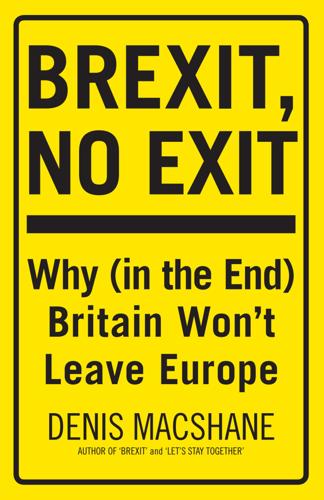
Brexit, No Exit: Why in the End Britain Won't Leave Europe
by
Denis MacShane
Published 14 Jul 2017
The superior left-liberal member of the British intelligentsia, perhaps a Guardian columnist or an Economist editor, a university professor or retired deputy headteacher, had not been able to find a word in favour of the euro in place of all the competing devaluing or revaluing drachmas and pesetas, marks and francs that existed before. They seemed to think that a single market could coexist with a dozen currencies changing value every day according to the whims of speculators on the foreign exchange markets. They blamed the devastating economic and job-loss impact of the US banking crisis imported into Europe in 2008 not on American extreme financiarisation ideology but on the existence of the eurozone. They looked with contempt at the political shenanigans in Greece or the failure of politicians in Spain or Belgium to win support to form a stable government. They had nothing but scorn for the feeble twenty-first-century growth in the eurozone, even if many regions or economies in the eurozone outperformed the British economy and did so without the marked growth of inequality or the impoverished public services and old-fashioned infrastructure that held Britain and Britons back.
…
Anatole Kaletsky, former Times and Financial Times columnist and author of Capitalism 4.0: The Birth of a New Economy (2010), argues: That is what happened after 2008. Once the failure of free trade, deregulation, and monetarism came to be seen as leading to a ‘new normal’ of permanent austerity and diminished expectations, rather than just to a temporary banking crisis, the inequalities, job losses, and cultural dislocations of the pre-crisis period could no longer be legitimised – just as the extortionate taxes of the 1950s and 1960s lost their legitimacy in the stagflation of the 1970s. Kaletsky believes that governments can redistribute the benefits of growth by supporting employment and incomes with regional and industrial subsidies and minimum-wage laws.
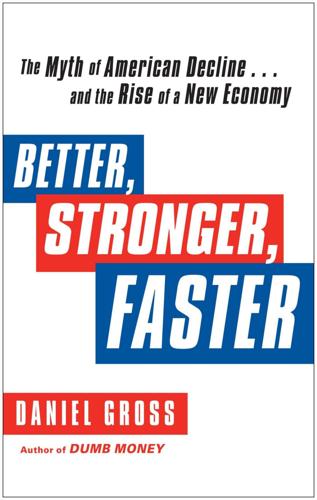
Better, Stronger, Faster: The Myth of American Decline . . . And the Rise of a New Economy
by
Daniel Gross
Published 7 May 2012
Things have been going south economically in this country since the cruel winter of 1609, when nearly 90 percent of the settlers in Jamestown, Virginia, died. Even after winning independence, the young nation was perpetually starved for capital, easily bullied by the British, unable to control Atlantic sea lanes, and reluctant to invest in public infrastructure. Lacking a central bank, the U.S. financial system lurched from banking crisis to banking crisis and suffered a series of panics and lengthy recessions. The United States was an economic and cultural backwater for virtually all of the nineteenth century, an immature, uncouth cousin that required huge infusions of European capital to build its railroads. In 1875 U.S. gross domestic product per capita was $2,600, below that of Australia, New Zealand, Belgium, the Netherlands, and the United Kingdom.2 The sense of insecurity lingered even after industrialism supercharged growth between 1880 and 1920 and the United States seized the mantle of economic leadership after World War I.
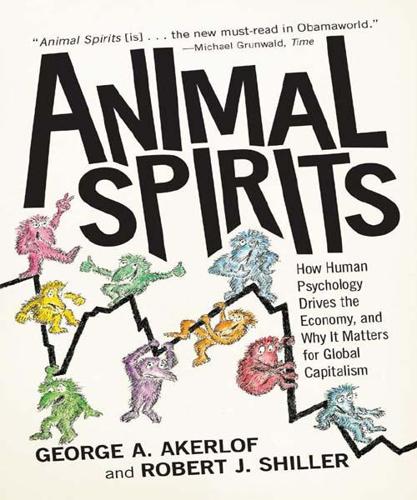
Animal Spirits: How Human Psychology Drives the Economy, and Why It Matters for Global Capitalism
by
George A. Akerlof
and
Robert J. Shiller
Published 1 Jan 2009
All of these actions by the Fed can be considered use of the discount window, although in nontraditional ways. 11. http://www.federalreserve.gov/newsevents/press/monetary/20081007d.htm and http://www.federalreserve.gov/newsevents/press/monetary/20081021b.htm. 12. See the explanation given by the Federal Reserve at http://www.federalreserve.gov/newsevents/monetary20081125a1.pdf 13. U.S. Department of the Treasury (2008, p. 2). 14. http://en.wikipedia.org/wiki/Fannie_Mae. 15. An excellent survey of Sweden’s resolution of its banking crisis during the 1990s has been given by Englund (1999). After the crisis was over, the banks returned to profitability (Figure 6, p. 90). 16. Morgenson (2008). 17. Benoit et al. (2008). CHAPTER EIGHT WHY ARE THERE PEOPLE WHO CANNOT FIND A JOB? 1. Much of this chapter is based on Akerlof’s joint work with Janet Yellen (Akerlof and Yellen 1990). 2.
…
The Independent, December 25, p. 565. “Embezzlements of Last Year.” 1895. Chicago Daily Tribune, January 1, p. 4. Engen, Eric M., William G. Gale, and Cori E. Uccello. 1999. “The Adequacy of Household Saving.” Brookings Papers on Economic Activity 2:65–187. Englund, Peter. 1999. “The Swedish Banking Crisis: Roots and Consequences.” Oxford Review of Economic Policy 15(3):80–97. Fair, Ray C. 1994. Testing Macroeconometric Models. Cambridge, Mass.: Harvard University Press. Fang, Hanming, and Giuseppe Moscarini. 2002. “Overconfidence, Morale, and Wage-Setting Policies.” Paper presented at the National Bureau of Economic Research conference on “Macroeconomics and Individual Decision Making,” November.
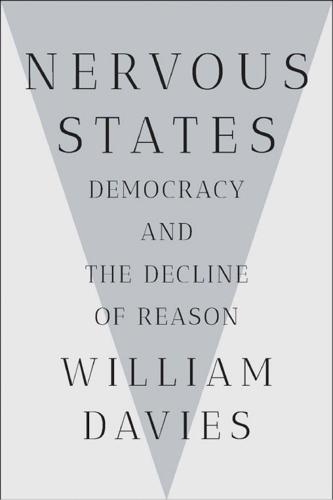
Nervous States: Democracy and the Decline of Reason
by
William Davies
Published 26 Feb 2019
“It is difficult to imagine the scale of the consequences for the economy and society if major banks had been allowed to collapse,” the report admitted. Difficult for an auditor to demonstrate scientifically on the basis of public accounts and paper trails, perhaps—but not impossible for anyone who reflected a little bit on the role banks play in sustaining society as we know it. Let’s try to imagine it for a moment. The banking crisis of autumn 2008 came after a year in which banks had been increasingly reluctant to lend to each other, or what was known as the “credit crunch.” If banks were allowed to collapse, confidence in the overall banking system would likely evaporate, producing bank runs, which could only be averted if banks remained closed, withdrawing all credit-making facilities in the process.
…
Quite a bit of this growth is due to an increase in population, but GDP per person has still grown impressively over this period, more than doubling from around $25,000 a year in 1978 (in today’s money) to over $50,000 a year in 2016. Following the “Great Recession” that came immediately after the subprime mortgage and banking crisis of 2007–9, the US economy recovered to grow steadily throughout Barack Obama’s second term in office. Inflation has remained low throughout the early twenty-first century, while job creation was positive over the final years of Obama’s presidency. These economic indicators seem at odds with much recent political rhetoric and democratic upheavals in America.
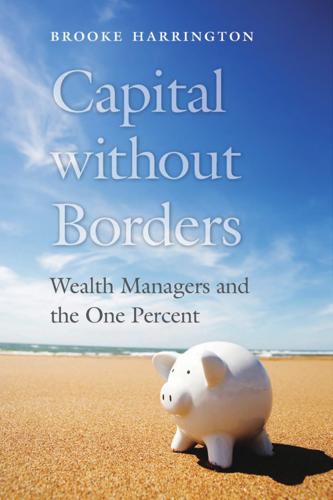
Capital Without Borders
by
Brooke Harrington
Published 11 Sep 2016
And you’ve got people in Brussels desperate that there is tax leakage all over the place—that they can’t control people’s mobility in an era of increasingly easy jet travel, lack of border controls, et cetera.” This conflict has been particularly heated in the aftermath of the 2008 financial crisis and the subsequent euro zone banking crisis, both of which have left governments scrambling for tax revenue and eager to crack down on tax avoidance. The fiscal shortfall is so pressing that crisis-stricken countries such as Spain and Cyprus have ramped up efforts to persuade high-net-worth individuals—primarily from Russia, China, and the Middle East—to change their citizenship.19 In return for making investments and paying tax in their new homelands, these wealthy individuals automatically get EU passports, avoiding the lengthy and uncertain bureaucratic process to which the nonwealthy are subject.20 While legal, such cash-for-passports programs have been attacked by the European Commission as undermining the legitimacy of state authority.21 Other countries have taken even more extreme measures to shore up their treasuries in the face of rampant tax avoidance.
…
See also 1 percent EMEA (Europe, Middle East, and Africa), 243 Engels, Friedrich, 16, 204 Enlightenment, 18, 203, 204, 218, 277 entail, 4, 208, 218, 276, 306n17 equal opportunity, 204 Erika (Swiss wealth manager), 61, 69, 82, 98–99, 137–38, 245–46, 248, 298 estate planning: in civil-law countries, 57–58. See also trust and estate planning ethnography, 27–30; immersion, 25, 274 European Union: cash-for-passports programs, 239–40; Cook Islands blacklisted by, 158; Savings Tax Directive, 299 euro zone banking crisis, 239 exchange funds, 206 Executive Commission (European Union), 158 express trusts, 155 family: banks, 251, 269; children kept secret from the legally recognized, 125; client relations as quasi-familial, 85–88, 92, 120–21; contemporary social scientific theories of, 278; contributions to theory and research of this study, 276–78; disputes over wealth of, 16–17; dynastic, 96, 193–94; institutions opened to the public, 250; as not high-trust environment, 84; suspicion in wealthy, 81; tear themselves apart over money, 88; transformation in, 165–67; wealth lends special dynamic to, 84–85; wealth management influences, 16–17, 272; wealth managers help families, 68.
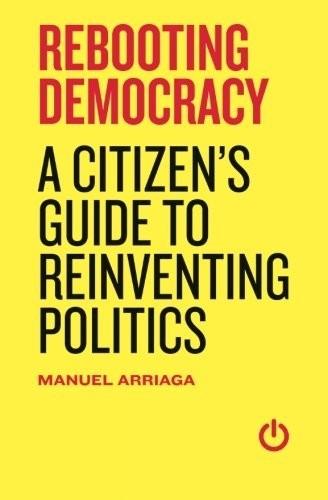
Rebooting Democracy: A Citizen's Guide to Reinventing Politics
by
Manuel Arriaga
Published 1 Jan 2014
The second, and probably more important, reason why this frustration hasn’t yet fully materialized into a serious threat to our political system is our continued inability to propose clear, convincing alternatives. For example, we—the citizens—have to account for the paradox of the “Indignados” and “Occupy” protest movements that successfully mobilized enormous crowds in the wake of the 2008-2010 banking crisis but seem to have (so far?) left no lasting mark on our political landscape(s). Or consider publishing phenomena such as the late Stéphane Hessel’s “Indignez-vous!” in France and the anthology “Reacciona” in Spain, books that brilliantly speak to the public’s frustration. Like the protest movements, these books garnered huge public attention but did not give rise to sustained social movements working towards reform.
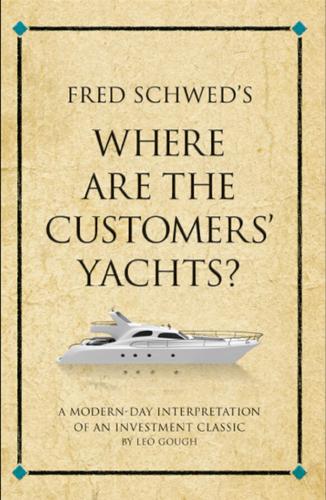
Fred Schwed's Where Are the Customers' Yachts?: A Modern-Day Interpretation of an Investment Classic
by
Leo Gough
Published 22 Aug 2010
M&A activity is associated with bull markets; if the real motive were to pick up a bargain, one would expect to see more takeovers in bear markets, since the purchase cost would be much, much lower. And if you don’t believe all this, would you like to hazard a guess at which industry had the most merger activity during the boom that led up to the 2007 banking crisis? That’s right – it was the American banking industry! HERE’S AN IDEA FOR YOU… Buy the target firms, sell on the merger. Don’t believe any stories about how wonderful the new firm is going to be unless it really, really makes sense. How to find a potential target? Look in industries where a lot of mergers have been happening recently, especially those where there are ongoing technological and market changes, and pick the juiciest-looking firms. 41 MASSAGING THE FIGURES ‘I doubt if there are many, or any, Wall Streeters who sit down and say to themselves coolly, ‘Now let’s see.

Program Or Be Programmed: Ten Commands for a Digital Age
by
Douglas Rushkoff
Published 1 Nov 2010
Beyond using eBay or the less corporate Etsy or Craigslist to make those connections and conduct transactions, however, we also have the means to transcend traditional currency. Local currencies, made illegal to make way for centralized currency during the Renaissance, have already regained widespread acceptance following the banking crisis of 2008. Instead of borrowing this money from a bank, users earn it into existence by making goods and performing services for other people in the same community.[6] Peer-to-peer currencies are based in the abundance of production, rather than the scarcity of lending. This makes them biased, as is the net, toward transaction and exchange rather than hoarding for interest.

Cyprus - Culture Smart!: The Essential Guide to Customs & Culture
by
Constantine Buhayer
Published 24 Feb 2022
CHAPTER EIGHT BUSINESS BRIEFING THE ECONOMY Cyprus has an open economy that has proved to be resilient, expanding since the 1990s when it assessed the requirements and opportunities of a possible EU membership, to which it acceded in 2004. The country presents itself as an EU outpost, an investment hub, and a logistics center. Until the banking crisis of 2013 it had one of the fastest growing economies in Europe and the country thought it would become the Tiger Economy of the eastern Mediterranean. Then the financial crisis meant that the money its banks had received from being a tax haven, especially from the Russians, had been invested in huge shares of the Greek sovereign debt.
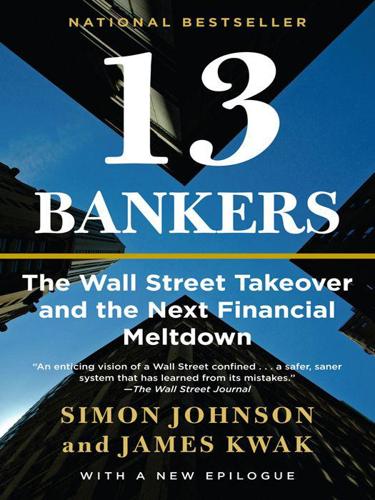
13 Bankers: The Wall Street Takeover and the Next Financial Meltdown
by
Simon Johnson
and
James Kwak
Published 29 Mar 2010
Schumer was a major proponent of Gramm-Leach-Bliley, and in 2001 he and Gramm passed legislation to cut in half fees paid by financial institutions to the SEC.10 (Gramm left the Senate in 2002 to become a vice chair at UBS Warburg.) Over the past twenty years, the financial services industry became an extremely powerful lobby in Washington, able to win votes in both Republican and Democratic Congresses. In April 2009, Senator Richard Durbin said, “the banks—hard to believe in a time when we’re facing a banking crisis that many of the banks created—are still the most powerful lobby on Capitol Hill. And they frankly own the place.”11 No one thought he was saying anything extraordinary. THE WALL STREET–WASHINGTON CORRIDOR When it came to money, however, Wall Street had no particular advantage over other industries, except that it had more of it.
…
This was the brainchild of Domingo Cavallo, a distinguished economist with a Ph.D. from Harvard, and received strong support from the IMF (and the United States) even as the approach ran into trouble. Failing to deal with underlying political issues, including the inability to effectively tax powerful business elites, ended in a collapse of the currency, a banking crisis, and defaults on Argentina’s public and private debt in 2001–2002. See Paul Blustein, And the Money Kept Rolling In (and Out) (New York: PublicAffairs, 2005); and Michael Mussa, Argentina and the Fund: From Triumph to Tragedy (Washington: Peterson Institute for International Economics, 2002). 49.
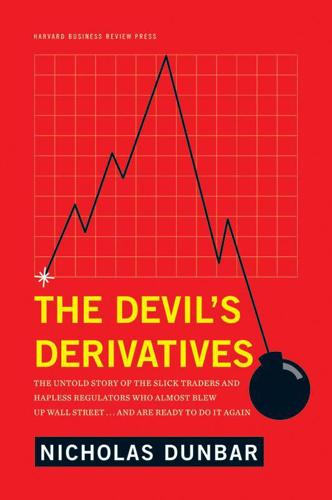
The Devil's Derivatives: The Untold Story of the Slick Traders and Hapless Regulators Who Almost Blew Up Wall Street . . . And Are Ready to Do It Again
by
Nicholas Dunbar
Published 11 Jul 2011
This would become painfully apparent with Basel’s biggest loophole: the treatment of trading positions. The Wet, Sloppy Kiss of Death In the United States, where a multilayered government expressed the wishes of its founders for checks and balances, a multilayered system of financial regulation had grown organically. Each bank regulatory agency had its own creation myth—a bank crisis that was the reason for its existence. The oldest was the Office of the Comptroller of the Currency (OCC), created as an arm of the Treasury Department in the wild monetary years of the 1850s, followed by the archipelago of Federal Reserve Banks set up after a crisis in 1907. The stock market abuses and bank failures of the Great Depression spawned, respectively, the Securities and Exchange Commission (SEC) and the FDIC.
…
They first got their hands dirty—that is, crossed over from regulator to coconspirator—as they desperately tried to save the stricken financial system, but by 2010 they were seen as part of the problem as well. Everyone knew government shouldn’t be up to its eyeballs in private sector activity; what is even more disturbing now is that it is obvious that governments can’t afford to keep propping up the system. And they can’t afford to stop. After the banking crisis was tamped down, and the markets were swamped by newly printed money, the next challenge came not from the financial sector, but from a spendthrift nation on Europe’s fringe: Greece, a country that for a decade had fiddled the books in plain sight, with the eager assistance of investment banks.

This Will Make You Smarter: 150 New Scientific Concepts to Improve Your Thinking
by
John Brockman
Published 14 Feb 2012
Unlike basic literacy, risk literacy requires emotional rewiring—rejecting comforting paternalism and illusions of certainty and learning to take responsibility and to live with uncertainty. Daring to know. But there is still a long way to go. Studies indicate that most patients want to believe in their doctor’s omniscience and don’t dare to ask for supporting evidence, yet nevertheless feel well-informed after consultations. Similarly, even after the banking crisis, many customers still blindly trust their financial advisors, jeopardizing their fortunes in a consultation that takes less time than they’d spend watching a football game. Many people cling to the belief that others can predict the future and pay fortune-tellers for illusory certainty. Every fall, renowned financial institutions forecast next year’s Dow and dollar exchange rate, even though their track record is hardly better than chance.
…
absence and evidence, 281, 282–84 abstractions, shorthand, see SHAs Adaptation and Natural Selection (Williams), 196 adoptions, 194 Aether, 338–39 Afghanistan, 19 agreeableness, 232–33 Aguirre, Anthony, 301–2 Alexander, Richard, 321 Alexander, Stephon H., xxvii, 296–98 algebra, 6, 24 Alter, Adam, 150–53 altruism, 194, 196–97 aluminum refining, 110 Amazon, 25 Anasazi, 361 Anderson, Alun, 209–10 Anderson, Ross, 262–63 anecdotalism, 278–80 anomalies, 242–45 Anthropocene thinking, 206–8 anthropologists, 361 anthropophilia, 386–88 anyons, 191 apophenia, 394 Arbesman, Samuel, 11–12 archaeology, 282–84, 361 architecture, 246–49 ARISE (Adaptive Regression In the Service of the Ego), 235–36 Aristotle, 9, 28–29, 35 art: bricolage in, 271–72 parallelism in commerce and, 307–9 recursive structures in, 146–49 Arthur, Brian, 223 Ascent of Man, The, 340 Asimov, Isaac, 324–25 assertions, 267 assumptions, 218–19 atoms, 128 attention, 130, 211 focusing illusion an, 49–50 spotlight of, 46–48 attractiveness, 136, 137 authority and experts, 18, 20, 34 Avery, Oswald, 244 Avicenna, 9 Aztecs, 361 Bacon, Francis, 395 bacteria, 15–16, 89, 97, 166, 290–91, 292–93, 338 transformation of, 243, 244, 245 Baldwin, Mark, 152 Banaji, Mahzarin R., 389–93 banking crisis, 259, 261, 307, 309, 322, 386 Barondes, Samuel, 32 Barton, Robert, 150–51 base rate, 264–65 Bass, Thomas A., 86–87 Bayesian inference, 70 behavior, ignorance of causes of, 349–52 behavioral sciences, 365–66 belief, 336–37 proof, 355–57 Bell, Alexander Graham, 110 bell curve (Gaussian distribution), 199, 200 benchmarks, 186 bias, 18, 43–45 confirmation, 40, 134 self-serving, 37–38, 40 in technologies, 41–42 biochemical cycles, 170–71 bioengineering, 16 biological ecosystems, 312–14 biological teleology, 4 biology, 234, 312 biophilia, 386 Bird, Sheila, 274 birds, 155, 359 chickens, 62–63, 155 herring gulls, 160 songbirds, 154–55 black box, 303 Blackmore, Sue, 215–17 Black Swan, The (Taleb), 315 black-swan technologies, 314–17 Blake, William, 44 blame, 35–36, 106, 386 blindness, 144 Bloch waves, 297 Boccaletti, Giulio, 184–87 body, life-forms in, 13, 290–91, 292 Boeri, Stefano, 78 Bohr, Niels, 28 Bolyai, János, 109 Bony, Jean, 247–48 Bostrom, Nick, 275–77 bottom-up thinking, 157–59 Boyer, Pascal, 182–83 bradykinesia, 63 brain, 48, 129–30, 148, 149, 150, 158, 172, 346, 347, 389, 394 consciousness and, 217 evolution of, 10, 207, 257 mind and, 364, 366 neurons in, see neurons plasticity of, 250–51 predictive coding and, 132–34 self and, 212 size of, 257 of split-brain patients, 349–50 synapses in, 164 temperament traits and, 229–30 white and gray matter in, 162–63 Bramante, Donato, 248–49 Brand, Stewart, 15–16 Bray, Dennis, 171–72 bricolage, 271–72 Brin, Sergey, xxv Bronowski, Jacob, 340, 341–42 Brooks, David, xxv–xxviii Brown, Louise, 165 Bryson, Bill, 387 Buddha, 373 business planning, 186 Buss, David M., 353–54 Byars, James Lee, xxix–xxx Cabot, John, 90 calculus, 34, 109 Calvin, William, 201–2 cancer, 390 body scans and, 69, 259–60, 264, 265 tests for, 264–65 cannibalism, 361–62 carbon, 81, 82 carbon dioxide (CO2) emissions, 202, 207, 217, 262 car insurance, 66–67 Carr, Nicholas, 116–17 Carroll, Sean, 9–10 Cartesian science, 82–83 Caspi, Avshalom, 279 cats, 286 causality, 34–36, 58–61, 396 blame, 35–36, 106, 386 confabulation, 349–52 correlation and, 215–17, 219 of diseases, 59, 303–4 entanglement and, 331 information flow and, 218–20 nexus, 34–35 root-cause analysis, 303–4 in universe, 9–10 web of causation, 59–60, 61 central-limit theorem, 107–8 certainty, 73, 260 proof, 355–57 uselessness of, 51–52 see also uncertainty Challenger, 236 chance, 7, 18 change, 127–28, 290 fixation on, 373 chaos theory, 103, 202 character traits, 229 charitable activities, 194 cheating, 351 chess, 343 chickens, 62–63, 155 children, 148, 155, 252 chocolate, 140 cholera, 338 Chomsky, Noam, xxv Christakis, Nicholas A., xxvii, 81–83, 306 Church, George, 88–89 CINAC (“correlation is not a cause”), 215–17 civil rights movement, 370 Clark, Andy, 132–34 Clarke, Arthur C., 61 climate change, 51, 53, 99, 178, 201–2, 204, 268, 309, 315, 335, 386, 390 CO2 levels and, 202, 207, 217, 262 cultural differences in view of, 387–88 global economy and, 238–39 procrastination in dealing with, 209, 210 clinical trials, 26, 44, 56 cloning, 56, 165 coastlines, xxvi, 246 Cochran, Gregory, 360–62 coffee, 140, 152, 351 cognition, 172 perception and, 133–34 cognitive humility, 39–40 cognitive load, 116–17 cognitive toolkit, 333 Cohen, Daniel, 254 Cohen, Joel, 65 Cohen, Steven, 307–8 cold fusion, 243, 244 Coleman, Ornette, 254, 255 collective intelligence, 257–58 Colombia, 345 color, 150–51 color-blindness, 144 Coltrane, John, 254–55 communication, 250, 358, 372 depth in, 227 temperament and, 231 companionship, 328–29 comparative advantage, law of, 100 comparison, 201 competition, 98 complexity, 184–85, 226–27, 326, 327 emergent, 275 computation, 227, 372 computers, 74, 103–4, 146–47, 172 cloud and, 74 graphical desktops on, 135 memory in, 39–40 open standards and, 86–87 computer software, 80, 246 concept formation, 276 conduction, 297 confabulation, 349–52 confirmation bias, 40, 134 Conner, Alana, 367–70 Conrad, Klaus, 394 conscientiousness, 232 consciousness, 217 conservatism, 347, 351 consistency, 128 conspicuous consumption, 228, 308 constraint satisfaction, 167–69 consumers, keystone, 174–76 context, sensitivity to, 40 continental drift, 244–45 conversation, 268 Conway, John Horton, 275, 277 cooperation, 98–99 Copernicanism, 3 Copernican Principle, 11–12, 25 Copernicus, Nicolaus, 11, 294 correlation, and causation, 215–17, 219 creationism, 268–69 creativity, 152, 395 constraint satisfaction and, 167–69 failure and, 79, 225 negative capability and, 225 serendipity and, 101–2 Crick, Francis, 165, 244 criminal justice, 26, 274 Croak, James, 271–72 crude look at the whole (CLAW), 388 Crutzen, Paul, 208 CT scans, 259–60 cultural anthropologists, 361 cultural attractors, 180–83 culture, 154, 156, 395 change and, 373 globalization and, see globalization culture cycle, 367–70 cumulative error, 177–79 curating, 118–19 currency, central, 41 Cushman, Fiery, 349–52 cycles, 170–73 Dalrymple, David, 218–20 DALYs (disability-adjusted life years), 206 danger, proving, 281 Darwin, Charles, 2, 44, 89, 98, 109, 156, 165, 258, 294, 359 Das, Satyajit, 307–9 data, 303, 394 personal, 303–4, 305–6 security of, 76 signal detection theory and, 389–93 Dawkins, Richard, 17–18, 180, 183 daydreaming, 235–36 DDT, 125 De Bono, Edward, 240 dece(i)bo effect, 381–85 deception, 321–23 decision making, 52, 305, 393 constraint satisfaction and, 167–69 controlled experiments and, 25–27 risk and, 56–57, 68–71 skeptical empiricism and, 85 deduction, 113 defeasibility, 336–37 De Grey, Aubrey, 55–57 delaying gratification, 46 democracy, 157–58, 237 Democritus, 9 Demon-Haunted World, The (Sagan), 273 Dennett, Daniel C., 170–73, 212, 275 depth, 226–28 Derman, Emanuel, 115 Descent of Man, The (Darwin), 156 design: mind and, 250–53 recursive structures in, 246–49 determinism, 103 Devlin, Keith, 264–65 Diagnostic and Statistical Manual of Mental Disorders (DSM-5), 233–34 “Dial F for Frankenstein” (Clarke), 61 Diesel, Rudolf, 170 diseases, 93, 128, 174 causes of, 59, 303–4 distributed systems, 74–77 DNA, 89, 165, 223, 244, 260, 292, 303, 306 Huntington’s disease and, 59 sequencing of, 15 see also genes dopamine, 230 doughnuts, 68–69, 70 drug trade, 345 dualities, 296–98, 299–300 wave-particle, 28, 296–98 dual view of ourselves, 32 dynamics, 276 Eagleman, David, 143–45 Earth, 294, 360 climate change on, see climate change distance between sun and, 53–54 life on, 3–5, 10, 15 earthquakes, 387 ecology, 294–95 economics, 100, 186, 208, 339 economy(ies), 157, 158, 159 global, 163–64, 238–39 Pareto distributions in, 198, 199, 200 and thinking outside of time, 223 ecosystems, 312–14 Edge, xxv, xxvi, xxix–xxx education, 50, 274 applying to real-world situations, 40 as income determinant, 49 policies on, controlled experiments in, 26 scientific lifestyle and, 20–21 efficiency, 182 ego: ARISE and, 235–36 see also self 80/20 rule, 198, 199 Einstein, Albert, 28, 55, 169, 301, 335, 342 on entanglement, 330 general relativity theory of, 25, 64, 72, 234, 297 memory law of, 252 on simplicity, 326–27 Einstellung effect, 343–44 electrons, 296–97 Elliott, Andrew, 150 Eliot, T.

Tower of Basel: The Shadowy History of the Secret Bank That Runs the World
by
Adam Lebor
Published 28 May 2013
The writer Matt Taibbi once memorably described Goldman Sachs, the giant investment bank, as a “vampire squid.”8 The BIS is now the vampire squid of the regulatory world, hosting a myriad of committees that in turn spawn a raft of subcommittees, many of which are composed of the same central bankers and officials, each producing reams of reports that are passed back and forth from Basel to national central banks and governments in an endless merry-go-round of resolutions and recommendations. Others argue that the answer to the banking crisis is not more insider committees and regulatory bodies hosted at the BIS, or anywhere else, but much less, or none at all. “Banking should become a normal industry, like manufacturing bicycles,” said Andrew Hilton, of the Centre for the Study of Financial Innovation. “Banking should be regulated to protect against fraud, to protect consumers, and to protect the banks’ integrity, but nothing else.
…
From Hitler’s Doorstep: The Wartime Intelligence Reports of Allen Dulles 1942–1945. Penn State University Press, 1996. Pol, Heinz. The Hidden Enemy: The German Threat to Post-War Peace. New York: Julian Messner, 1943. Roberts, Richard. Schroders: Bankers and Merchants. London: Macmillan, 1992. Sampson, Anthony. The Money Lenders: The People and Politics of the World Banking Crisis. London: Viking, 1983. Schacht, Hjalmar. Confessions of the Old Wizard. New York: Houghton Mifflin, 1956. Scherman, Rabbi Nosson. The Chumash: The Torah, Haftoras and Five Megillos With a Commentary Anthologised from the Rabbinic Writings, NewYork: Mesorah Publications, 2001. Simpson, Christopher.

Don't Be Evil: How Big Tech Betrayed Its Founding Principles--And All of US
by
Rana Foroohar
Published 5 Nov 2019
Martin Wolf, “Taming the Masters of the Tech Universe,” Financial Times, November 14, 2017. 7. Rana Foroohar, “Tech Companies Are the New Investment Banks,” Financial Times, February 11, 2018. 8. Edelman Trust Barometer 2018, 2019. 9. Rana Foroohar, “Political Ads on Facebook Recall Memories of the Banking Crisis,” Financial Times, October 2, 2017. 10. Gabriel J. X. Dance et al., “As Facebook Raised a Privacy Wall, It Carved an Opening for Tech Giants,” The New York Times, December 18, 2018. 11. Rana Foroohar, Makers and Takers: How Wall Street Destroyed Main Street (New York: Crown Business, 2016). 12.
…
Cathy O’Neil, Weapons of Math Destruction: How Big Data Increases Inequality and Threatens Democracy (New York: Crown, 2016), 143–44. 28. Agustín Carstens, “Big Tech in Finance and New Challenges for Public Policy,” keynote address at the FT Banking Summit, London, December 4, 2018. 29. Rana Foroohar, “Political Ads on Facebook Recall Memories of the Banking Crisis.” 30. Wolf, “Taming the Masters of the Tech Universe.” Chapter 11: In the Swamp 1. Frank Pasquale, The Black Box Society: The Secret Algorithms That Control Money and Information (Cambridge, Mass.: Harvard University Press, 2015), 196. 2. Hamburger and Gold, “Google, Once Disdainful of Lobbying, Now a Master of Washington.” 3.

Extreme Money: Masters of the Universe and the Cult of Risk
by
Satyajit Das
Published 14 Oct 2011
JP Morgan thoroughly scrutinizes the balance sheet of Merrill Lynch before it lends.”4 In 2008, defending deregulated markets, Greenspan stated: “You can have huge amounts of regulation and I will guarantee nothing will go wrong, but nothing will go right either.”5 In his review of the global banking crisis, Lord Adair Turner noted that: An underlying assumption of financial regulation in the U.S., the UK and across the world has been that financial innovation is by definition beneficial, since market discipline will winnow out any unnecessary or value destructive innovations. As a result, regulators have not considered it their role to judge the value of different financial products, and they have in general avoided direct products regulation, certainly in wholesale markets with sophisticated investors.6 It was a matter of faith: Our soundness standards should be no more or no less stringent than those the market place would impose.
…
Philip Augar (2009) Chasing Alpha: How Reckless Growth and Unchecked Ambition Ruined the City’s Golden Decade, Bodley Head, London: 47. 4. Alan Greenspan (2008) The Age of Turbulence: Adventures in a New World, Penguin Books, London: 256, 257. 5. Peter S. Goodman “Taking a hard new look: a Greenspan legacy” (8 October 2008) New York Times. 6. “The Turner Review: A regulatory response to the global banking crisis” (March 2009), Financial Services Authority: 49. 7. Alan Greenspan “Banking in the global marketplace” (18 November 1996), Speech to Federation of Bankers Association of Japan, Tokyo. 8. Greenspan, The Age of Turbulence: 360. 9. Alan Greenspan “Do efficient financial markets mitigate financial crises?”
…
Pablo Triana (2010) Lecturing Birds on Flying: Can Mathematical Theories Destroy the Financial Markets?, John Wiley, New Jersey. Jerome Tuccille (2002) Alan Shrugged: The Life and Times of Alan Greenspan, the World’s Most Powerful Banker, John Wiley, New Jersey. The Turner Review: A Regulatory Response to the Global Banking Crisis (2009) Financial Services Authority, London. Justyn Walsh (2009) Keynes and the Market, John Wiley & Sons, Chichester. Vicky Ward (2010) The Devil’s Casino: Friendship, Betrayal and the High Stakes Games Played Inside Lehman Brothers, John Wiley, New Jersey. Peter Watson (2001) A Terrible Beauty: The People and Ideas that Shaped the Modern Mind: A History, Phoenix Press, London.
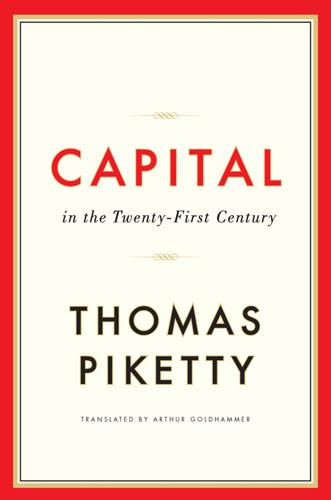
Capital in the Twenty-First Century
by
Thomas Piketty
Published 10 Mar 2014
The international organizations currently responsible for overseeing and regulating the global financial system, starting with the IMF, have only a very rough idea of the global distribution of financial assets, and in particular of the amount of assets hidden in tax havens. As I have shown, the planet’s financial accounts are not in balance. (Earth seems to be perpetually indebted to Mars.) Navigating our way through a global financial crisis blanketed in such a thick statistical fog is fraught with peril. Take, for example, the Cypriot banking crisis of 2013. Neither the European authorities nor the IMF had much information about who exactly owned the financial assets deposited in Cyprus or what amounts they owned, hence their proposed solutions proved crude and ineffective. As we will see in the next chapter, greater financial transparency would not only lay the groundwork for a permanent annual tax on capital; it would also pave the way to a more just and efficient management of banking crises like the one in Cyprus, possibly by way of carefully calibrated and progressive special levies on capital.
…
In particularly severe banking crises, central banks also work in concert with international organizations such as the IMF. Since 2009–2010, a “Troika” consisting of the European Commission, the ECB, and the IMF has been working to resolve the financial crisis in Europe, which involves both a public debt crisis and a banking crisis, especially in southern Europe. The recession of 2008–2009 caused a sharp rise in the public debt of many countries that were already heavily indebted before the crisis (especially Greece and Italy) and also led to a rapid deterioration of bank balance sheets, especially in countries affected by a collapsing real estate bubble (most notably Spain).
…
If a budgetary parliament decides what the Eurozone’s debt ought to be, then there clearly needs to be a European finance minister responsible to that body and charged with proposing a Eurozone budget and annual deficit. What is certain is that the Eurozone cannot do without a genuine parliamentary chamber in which to set its budgetary strategy in a public, democratic, and sovereign manner, and more generally to discuss ways to overcome the financial and banking crisis in which Europe currently finds itself mired. The existing European councils of heads of state and finance ministers cannot do the work of this budgetary body. They meet in secret, do not engage in open public debate, and regularly end their meetings with triumphal midnight communiqués announcing that Europe has been saved, even though the participants themselves do not always seem to be sure about what they have decided.

What's Next?: Unconventional Wisdom on the Future of the World Economy
by
David Hale
and
Lyric Hughes Hale
Published 23 May 2011
Kenya is still suffering from political divisions, but Uganda has had large oil discoveries. The Democratic Republic of the Congo (DRC) has immense potential to increase its mining output, but the country still suffers from insurgencies in its eastern provinces. West Africa should benefit from the rebound in oil prices, but Nigeria has had a banking crisis because of high levels of margin lending for stock market speculation. Ghana will became an oil producer in 2010, and oil revenues could reach $4 billion per annum. South Africa had a successful FIFA World Cup in mid-2010, which should boost future tourism, but the event put an immense strain on public services.
…
Figure 5.3 US Economy Usually Recovers to Trend after Recessions (US GDP with 1973–1980 Trend) Source: Thomson Reuters Figure 5.4 Growth Trends Deteriorated in France after Each Recession Source: Thomson Reuters The Euro Remains Very Expensive The rise of the euro that followed the sovereign bailout in the spring of 2010, although partially reversed during the Irish bank crisis, creates another reason for caution regarding Europe’s prospects in 2011. Although European, and especially German, politicians and industrialists frequently assert that their businesses are unaffected by exchange rates, such claims are implausible in an environment where inflation is almost zero in competitor economies.

Free to Choose: A Personal Statement
by
Milton Friedman
and
Rose D. Friedman
Published 2 Jan 1980
That would have ended—or at least sharply reduced—the stream of bank failures and have prevented the public's attempted conversion of deposits into currency from reducing the quantity of money. Unfortunately, the Fed's actions were hesitant and small. In the main, it stood idly by and let the crisis take its course—a pattern of behavior that was to be repeated again and again during the next two years. It was repeated in the spring of 1931, when a second banking crisis developed. An even more perverse policy was followed in September 1931, when Britain abandoned the gold standard. The Fed reacted—after two years of severe depression—by raising the rate of interest (the discount rate) that it charged banks for loans more sharply than ever before in its history.
…
Mills, then Secretary of the Treasury and an ex officio member of the Board, stated, in explaining his vote for the action, "For a great central banking system to stand by with a 70% gold reserve without taking active steps in such a situation was almost inconceivable and almost unforgivable." Yet that was precisely how the System had behaved for the two prior years and was to resume behaving as soon as Congress adjourned a few months later, as well as during the climactic final banking crisis of March 1933.5 Where the Depression Started The decisive evidence that the depression spread from the United States to the rest of the world, rather than the other way around, comes from the movement of gold. In 1929 the United States was on a gold standard in the sense that there was an official price of gold ($20.67 per fine ounce) at which the U.S. government would buy or sell gold on demand.
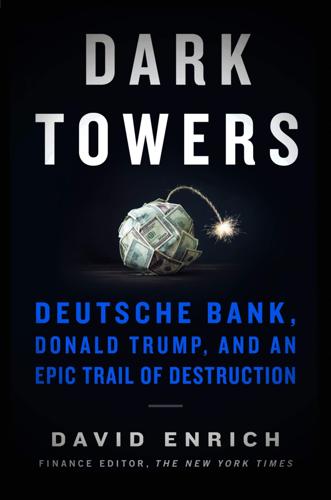
Dark Towers: Deutsche Bank, Donald Trump, and an Epic Trail of Destruction
by
David Enrich
Published 18 Feb 2020
Risk group approved Paschi deal: Vernon Silver and Elisa Martinuzzi, “How Deutsche Bank Made a $462 Million Loss Disappear,” Bloomberg BusinessWeek, January 19, 2017. 31. Siena Interviews with Val, his girlfriend and other friends, his therapist, Luca Goracci, Deutsche executives and board members. “mounting concerns”: Evelyn Cheng, “Deutsche Bank Crisis: How We Got Here, and Where We Are,” CNBC.com, September 28, 2016. “the most important net contributor”: International Monetary Fund, “Germany Financial Sector Assessment Program,” June 2016. Surveillance footage: Michael Gray, “Why Are So Many Bankers Committing Suicide?” New York Post, June 12, 2016.
…
Farben, 20 Import tax, 150 Informationsflut, 107 Ingram, Kevin, 72–73, 73n Instagram, 351, 352 Institute of International Finance (IIF), 164–65, 192 Interest rates, 9, 31, 34, 38–39, 40, 41 International Monetary Fund (IMF), 163, 299, 327 Intesa Sanpaolo, 155 Iran sanctions, 103–105, 236 Iraq, 104–105 Irish banking crisis, 162–63 Islamic Revolutionary Guard Corps, 105 ITunes U, 252 Jacobson, Paul, 73 Jain, Anshu ackground of, 47, 57 at Merrill Lynch, 47 Jain, Anshu, at Deutsche Bank, 48, 53, 54, 63, 105–106, 124–26, 130–35, 187, 233–36, 237, 259–67 appointment as CEO, 180–83 Banca Monte dei Paschi scheme, 193–94, 295 Bittar’s bonus, 152, 264, 290 Broeksmit’s memorial service, 230 Broeksmit’s retirement, 191, 192, 204 Broeksmit’s suicide, 226–28, 292 Broeksmit’s suicide note, 223, 224, 227, 229, 246–47, 286 carbon-emissions tax fraud, 191–92 Der Inder nickname, 124–25 financial crisis, 134–35, 141 leadership style, 125–26, 135–36, 142 Mitchell’s death, 91–92 Mitchell’s recruitment of, 47 Publicis deal, 102–103 resignation as CEO, 6–7, 265–67 rights offering, 235–36 risk taking, 57–58, 92, 102–103, 128, 134–35, 137 Scott Mitchell and, 189, 190 Trump loans and, 6–7, 118, 173, 176, 271, 273–74 at World Economic Forum, 209–10, 261 Jain, Geetika Rana, 47, 57, 209, 210, 235, 267 Jaysh al-Mahdi, 105 Jay-Z, 178 J.P.
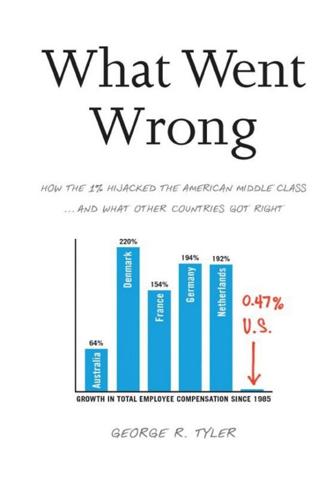
What Went Wrong: How the 1% Hijacked the American Middle Class . . . And What Other Countries Got Right
by
George R. Tyler
Published 15 Jul 2013
During eight years of peace in office, that president never once managed a balanced budget, precisely the sort of deplorable behavior that Hayek had come to expect of feckless American politicians.18 Each would have seen the outcome in 2007/2008 as the inevitable consequence of Reagan’s abuse of debt; with his remarkable track record, Hayek probably would have predicted the onset of the banking crisis to the month. The biting criticism of President Reagan’s budget policies by conservatives is justified because as the Reagan era matured, the only fiscally responsible Republicans were in graveyards. His presidency caused a stark transition that resulted in this proud party engineering the greatest peacetime deficits and greatest credit bubble in history.
…
Specifically, they determined that a ten-percentage point increase in their financial-sector development index was predictive of a decline in GDP growth by 0.5 percent.18 Finally, I hark back to the earlier noted research by Moritz Schularick and Alan M. Taylor, along with the studies of Reinhart and Rogoff, which determined that the aftermath of a banking crisis can slow growth for up to a decade. Now you see why Benjamin Friedman of Harvard has concluded, “Overmighty finance levies a tithe on growth.”19 Finance Deregulation Reduced Productivity These analyses form the weight of evidence that financial deregulation, when coupled with the other features of Reaganomics such as short-termism, account for the drop in American productivity growth rates.
…
Tighter regulation does not substitute for eradicating Red Queens, banks too big to fail. The regulatory collapse marking the Reagan decline demonstrates that even tight rules are inevitably suborned by the financial sector over time. There are current examples of solid bank regulation, with the banking crisis bypassing nations such as Australia and Canada. Yet history teaches that tight regulation does not survive the test of time measured in decades or centuries. It is simply an uneven struggle as memories fade, with affluent banks always pressing for weaker rules, as Martin Wolf of the Financial Times explained in mid-2012: “My interpretation of the Libor [interest rate fixing] scandal is the obvious one: banks, as presently constituted and managed, cannot be trusted to perform any publicly important function, against the perceived interests of their staff.
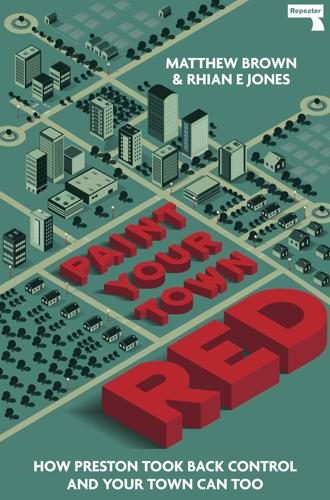
Paint Your Town Red
by
Matthew Brown
Published 14 Jun 2021
Conservative governments have an incentive to maintain house prices since their voter bloc is concentrated among older homeowners, the economy is increasingly reliant on the wealth effect created by rising house prices, and many MPs are themselves landlords, often with multiple properties. Despite the banking crisis of 2008 and a subsequent dip in value, house prices have increased substantially over the last decade — especially in the South of England — due to government props such as Help to Buy, low interest rates, restricted council house building, and UK property becoming a safe haven asset for wealthy investors in other parts of the world.

The Ascent of Money: A Financial History of the World
by
Niall Ferguson
Published 13 Nov 2007
The combined effect of these rules was a surge in the number of national and state-chartered banks during the late nineteenth and early twentieth centuries, from fewer than 12,000 in 1899 to more than 30,000 at the peak in 1922. Large numbers of under-capitalized banks were a recipe for financial instability, and panics were a regular feature of American economic life - most spectacularly in the Great Depression, when a major banking crisis was exacerbated rather than mitigated by a monetary authority that had been operational for little more than fifteen years. The introduction of deposit insurance in 1933 did much to reduce the vulnerability of American banks to runs. However, the banking sector remained highly fragmented until 1976, when Maine became the first state to legalize interstate banking.
…
The joint-stock banks’ decision to call in loans deepened what we would now call the credit crunch.40 As everyone scrambled to sell assets and increase their liquidity, stock prices fell, compromising brokers and others who had borrowed money using shares as collateral. Domestic customers began to fear a banking crisis. Queues formed as people sought to exchange banknotes for gold coins at the Bank of England.41 The effective suspension of London’s role as the hub of international credit helped spread the crisis from Europe to the rest of the world. Perhaps the most remarkable feature of the crisis of 1914 was the closure of the world’s major stock markets for periods of up to five months.
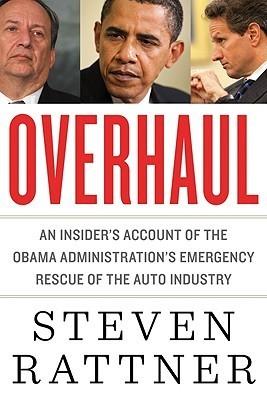
Overhaul: An Insider's Account of the Obama Administration's Emergency Rescue of the Auto Industry
by
Steven Rattner
Published 19 Sep 2010
Ford, having prudently borrowed billions early in the downturn, was in better shape, although its CEO, Alan Mulally, began calling administration officials to try to ensure that the company wouldn't be put at a competitive disadvantage if its Detroit rivals got help. For Washington, Detroit's emergency was in some ways more vexing than the cataclysm on Wall Street. The Treasury and other federal entities were rich in expertise for dealing with a banking crisis. But thanks to a long-standing and appropriate aversion to industrial policy, the government had no comparable resources to bring to bear on imploding automobile giants. In fall 2008, this traditional distance from nitty-gritty business was compounded by the complete focus of the economic team on the financial crisis.
…
In 2008 Forbes named her the second most powerful woman in the world after German Chancellor Angela Merkel. A few pundits even touted her as a possible Treasury secretary for President Obama. But inside the bureaucracy she had a reputation for being a sharp-elbowed, sometimes disingenuous self-promoter. My colleagues who dealt with Bair during the banking crisis found the experience frustrating. Bair's concern was the safety and soundness of GMAC. We had told the regulators that we intended to recapitalize the company based on the results of stress tests then under way. The goal of stress testing, orchestrated by Tim for the nation's nineteen largest bank holding companies, including GMAC, was the restoration of confidence in the banking system.

Shoe Dog
by
Phil Knight
Published 25 Apr 2016
I often didn’t hear what she said, and if I did hear I didn’t remember it minutes later. She was learning that I was absentminded, that I would drive to the grocery store and come home empty-handed, without the one item she’d asked me to buy, because all the way there and all the way back I’d been puzzling over the latest bank crisis, or the most recent Onitsuka shipping delay. She was learning that I misplaced everything, especially the important things, like wallets and keys. Bad enough that I couldn’t multitask, but I insisted on trying. I’d often scan the financial pages while eating lunch—and driving. My new black Cougar didn’t remain new for long.
…
Someone needed to curate Pre’s rock, and I decided that someone needed to be us. We didn’t have money for anything like that. But I talked it over with Johnson and Woodell and we agreed that, as long as we were in business, we’d find money for things like that. 1976 Now that we’d gotten past our bank crisis, now that I was reasonably sure of not going to jail, I could go back to asking the deep questions. What are we trying to build here? What kind of company do we want to be? Like most companies, we had role models. Sony, for instance. Sony was the Apple of its day. Profitable, innovative, efficient—and it treated its workers well.
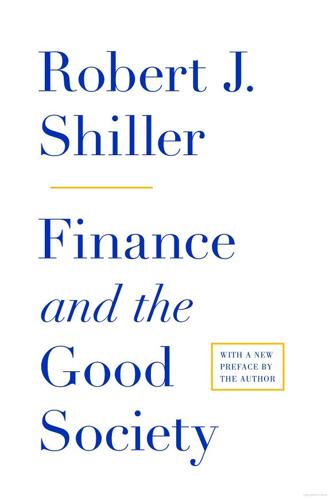
Finance and the Good Society
by
Robert J. Shiller
Published 1 Jan 2012
By the spring of 2009 the crisis was so severe that it was described as the biggest nancial calamity since the Great Depression of the 1930s—bigger than the Asian nancial crisis of the 1990s and bigger than the oil-price-induced crises of 1974–75 and 1981–82. Beginning in 2010 it was complicated by a European sovereign debt and banking crisis, which by 2012 resulted in many downgrades of governments’ debt, and even of the Eurozone’s bailout fund, the European Financial Stability Facility. This crisis continues to have repercussions around the world. Despite the problems in the mortgage business and many large nancial institutions —some based simply on overenthusiasm and naïveté, others on outright e orts to manipulate and to defraud—I never felt, as did so many, that these problems were a damning indictment of our entire nancial system.
…
But perhaps too it is because bankers, in contrast to hedge fund managers and the like, are following a long and time-honored tradition, extending back hundreds of years, which has evolved to solve certain problems—including liquidity, moral hazard and selection bias, and transaction service problems—to the satisfaction of most people most of the time. The anger toward bankers takes a very di erent form. It seems to be anger at their power and presumption, at their single-minded pursuit of money. And the anger ares up whenever there is a banking crisis and the governments of the world come to the rescue of these wealthy interests. But the public also has a sense of the centrality, sobriety, and safety of banks, and they must know that those who manage banks are highly in uential in determining the economic outcomes in our society. The people who run banks indeed nd themselves in a guidance or management role for the whole community.
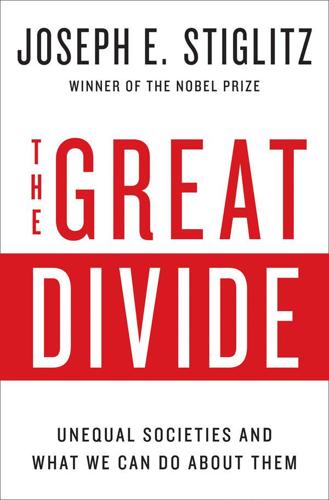
The Great Divide: Unequal Societies and What We Can Do About Them
by
Joseph E. Stiglitz
Published 15 Mar 2015
Europe and Germany will have to face the reality—if they are not willing to change the economic framework beyond an agreement of fiscal stringency, the euro will not work. It may survive for a little longer, causing untold pain in its death throes. But it will not survive. So too, there is only one way out of the banking crisis—a common banking framework, a Europe-wide backing of the financial system. Not surprisingly, the banks receiving the implicit subsidies of the governments in a better financial position don’t want this. They enjoy their competitive advantage. And bankers everywhere have undue sway over their governments.
…
Given the magnitude of the decline in farm income, it’s no wonder that the New Deal itself could not bring the country out of crisis. The programs were too small, and many were soon abandoned. By 1937, FDR, giving way to the deficit hawks, had cut back on stimulus efforts—a disastrous error. Meanwhile, hard-pressed states and localities were being forced to let employees go, just as they are now. The banking crisis undoubtedly compounded all these problems, and extended and deepened the downturn. But any analysis of financial disruption has to begin with what set off the chain reaction. The Agriculture Adjustment Act, FDR’s farm program, which was designed to raise prices by cutting back on production, may have eased the situation somewhat, at the margins.
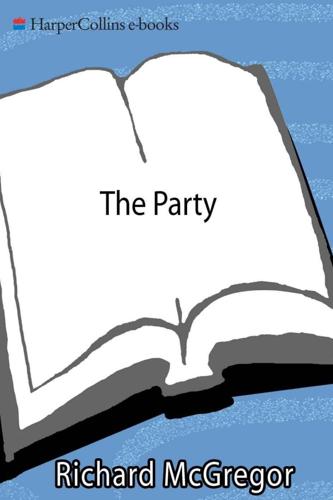
The Party: The Secret World of China's Communist Rulers
by
Richard McGregor
Published 8 Jun 2010
Indeed, many of them are directly led by Standing Committee members. ** The other leading groups include the Central Leading Group on Taiwan Affairs, the Central Leading Group on Foreign Affairs and the central Leading Group on National Security. Prologue It was the summer of 2008, one year into the banking crisis in the west. A small group of foreigners, called to China to give financial advice, were ushered into the walled leadership compound astride the Forbidden City in central Beijing. Once in the meeting room, the visitors perched on the edges of the overstuffed armchairs, draped with antimacassars and laid out in a U-shape to create the effect of a space split perfectly down the middle, dividing the visitors from the Chinese.
…
In place of: ‘Christ, I miss the Cold War’, M said, in English, in Chinese cinemas only: ‘God, I miss the old times.’ Only after that line of dialogue was inserted was the movie cleared to be shown. The end-of-history thesis may have fallen into disrepute in a western world battered by lengthy wars in Iraq and Afghanistan and the western banking crisis, but it still stalks the Party in China. Li Ruigang, the youthful head of the Shanghai Media Group, was part of a Chinese media delegation to Germany in May 2007, which included a senior editor of the People’s Daily. Talking to friends after the trip, Li recalled how the editor had been struck by an exhibit in Bonn’s history museum about the collapse of the communist east.
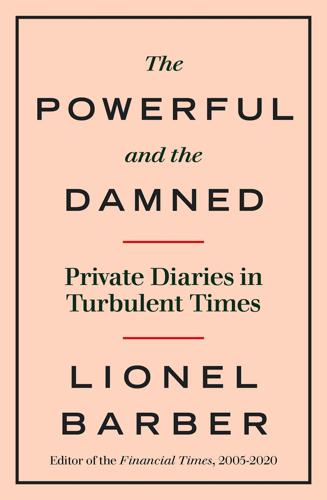
The Powerful and the Damned: Private Diaries in Turbulent Times
by
Lionel Barber
Published 5 Nov 2020
Max became, with a slight interruption, one of the very best contributors to the Weekend FT on politics, history, travel and any other subject. He remains one of the most versatile (and fastest) writers I’ve had the privilege of working with. WEDNESDAY, 4 FEBRUARY The House of Commons treasury select committee has summoned five top business journalists, including the FT editor, to account for their reporting on the banking crisis. We sit on a bench in the Wilson room at Portcullis House, the modern annexe opposite the House of Commons. There’s a few spectators, including Parliamentary sketchwriters waiting to pounce at the first misstep. Robert Peston takes the first question, as usual. I’m eager to counter the lazy argument that journalists – not bankers or regulators – contributed to the crash.
…
We live and breathe it every day in the newsroom. In nearly ten years as editor, I have never once felt under obligation to publish an article in response to pressure from Pearson. Our owners have invariably refrained from interference even in sensitive matters such as general elections, the global banking crisis and in cases where friends or allies of the senior management would have dearly liked to influence the news coverage or opinions of the newspaper.’fn1 THURSDAY, 23 JULY The board of Pearson meets today to make a final decision on the sale of the FT. Anshu Jain, outgoing co-chief executive of Deutsche Bank, informed me earlier this week that he had advised Döpfner to put pressure on Pearson by insisting on an early deadline.
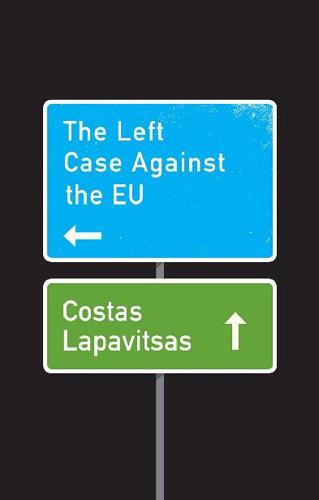
The Left Case Against the EU
by
Costas Lapavitsas
Published 17 Dec 2018
The ECB and the Eurosystem provided abundant liquidity to Greek banks through long-term refinancing operations, emergency liquidity assistance, and the TARGET2 settlement system.19 The link between a balance of payments crisis and the emergence of a shortage of domestic liquidity was broken in the Greek case.20 Provision of ECB liquidity ensured that the Greek turmoil never became an acute banking crisis. At the same time, provision of liquidity gave the ECB a decisive lever of power over successive Greek governments. Greece avoided a banking collapse, thus remaining in the Eurozone, but on condition of submitting fully to the terms of ‘conditionality’. The blackmail worked with the full connivance of Greek banks, which were desperate to continue receiving ECB liquidity.

Modern China: A Very Short Introduction
by
Rana Mitter
Published 25 Feb 2016
By the mid-2010s, the concern was that China was once again suffering from overcapacity, and that a turn to domestic consumption, rather than more building, was needed to keep growth rates up, along with a clampdown on irresponsible lending that came from the sudden influx of money into the economy. Yet there was no doubt that the overall success of China in avoiding the ‘credit crunch’ and banking crisis that damaged the West gave it new credibility in the eyes of many countries in the global south. It was clear that the model of neoliberal economic modernity which had shaped most Western economies until 2008 was not the only one on offer: instead, a strong state sector and a controlled currency might have their advantages, at least in the short term.
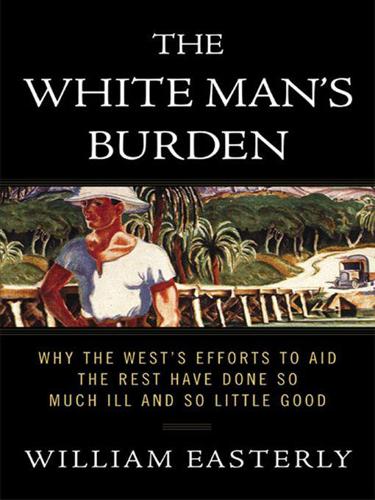
The White Man's Burden: Why the West's Efforts to Aid the Rest Have Done So Much Ill and So Little Good
by
William Easterly
Published 1 Mar 2006
health care colonial dysfunctional systems for foreign aid successes in modest fees for See also disease heavily indebted poor countries (HIPCs) high-technology exports Hindustan Lever Limited HIV.SeeAIDS HIVSA “hold-up” problem homegrown development aid agencies liberated by examples of as only way to end poverty the poor as helping themselves success and self-reliance Honduras Hong Kong economic growth in formula for success of high-technology exports markets in success of takeoff in ten best per capita growth rates triads in Horton, Lynn humanitarian aid Hungary hunger hungry season in Africa malnutrition in Millennium Development Goals number of people without enough to eat Hun Sen Husain, Ishrat Hussain, Altaf Hussein (king of Jordan) Hussein, Saddam Hussein ibn Ali al-Hashimi Hutus Ickes, Barry Igbo Iliffe, John immunization imperialism as beneficent but incompetent benefits of not being colonized as coming back into fashion decolonization in Middle East native autocrats sponsored by in Pakistan partition of India ratio of Europe’s income to colonies’ in Sudan India advanced degrees in AIDS prevention among prostitutes in British attitude toward caste system colonial rule in economic growth in education projects in ethnic conflict over land in formula for success of GlobalGiving.com project in and hatred of Pakistan legal education in markets in growth of partition of per capita income in police in private firms helping the poor in ten best per capita growth rates Indians (Asian) Indonesia indoor smoke inequality infant mortality inflation Inter-American Development Bank (IDB) International Christian Support Fund (ICS) International Labour Organization (ILO) International Monetary Fund (IMF) accountability lacking for and Argentine default and bad government as bailing itself out in Bolivian free-market reforms creation of debt monitored by and democracy differences among aid bureaucracies ending conditions on loans from evaluation of on financial equilibrium financial programming model of and Haiti as having fewer goals than other agencies and heavily indebted poor countries Independent Evaluation Office in international aid bureaucracy and Mexican banking crisis in Millennium Project Nicaragua aid from as not enforcing its conditions Pakistan aid from on participation postmodern imperialism and Poverty Reduction and Growth Facility loans Poverty Reduction Strategy Paper research department of resources of riots sparked by and selection effect “standby arrangements,” and state collapse “structural adjustment” programs of successful programs of success stories without aid from Sudan aid from in Western interventions in world poverty World Economic Outlook as world’s most powerful creditor Internet Iran (Persia) Iraq American occupation of Saddam Hussein nation-building in in partition of Ottoman Empire Islam, Roumeen Israel Jamaica Jana, Smarajit Japan and benefits of not being colonized intervention in poor countries by per capita income in takeoff in ten best per capita growth rates U.S. nation-building in World War II propaganda in Jereissati, Tasso Jesuits Jews Jinnah, Ali Johannesburg Summit on Sustainable Development Johnson, Simon Jordan Kabila, Joseph Kabila, Laurent Kagame, Paul Kasavubu, Joseph Kashmir Kasper, Sara Kaufmann, Daniel Kazakhstan Keefer, Phil Kennedy, John F.
…
Van de Walle, Nicolas Vietnam Vietnamese Vietnam War vigilantes Vodacom Congo von Mehren, Arthur Vreeland, James Wantchekon, Leonard warlords “war on terror,” Washington, George “watchers,” water aid as improving as big problem for the poor and Guinea worm disease and partition in former colonies as public good UN summit of 1977 on Water Aid Wedel, Janine Weder, Beatrice Weinstein, Jeremy West, the bad track record of beautiful goals of Big Plans to help poor evolution of foreign aid interventions in poverty as making things worse as not taking early action on AIDS the poor helping themselves without top-down approach of who “the West” is See also foreign aid; imperialism “White Man’s Burden, The” (Kipling) Whittle, Dennis Wilberforce, William Wilson, Woodrow winner-take-all elections Wipro Ltd., Wolfensohn, James women education for girls hunger in in Igbo revolt malnutrition in pregnancy maternal mortality in Millennium Development Goals and polygamy World Bank AIDS programs aid volume emphasized by author as employee of and bad government Big Push thinking influencing in Bolivian free-market reforms China aid from Congolese strategy of creation of and democracy Development Impact Evaluation Task Force differences among aid bureaucracies evaluation of formal rules preferred by Haiti program of and heavily indebted poor countries India aid from in international aid bureaucracy Lesotho agricultural project of on maintenance and Mexican banking crisis in Millennium Project Nicaragua aid from observable efforts shown by Operations Evaluation Department “Our Dream Is a World Free of Poverty,” Pakistan aid from on participation on peacekeeping postmodern imperialism and Poverty Reduction Strategy Paper progress reports on Africa research department of scholarship program of and selection effect SMEs supported by social action program in Pakistan “structural adjustment” programs of successful programs of Sudan aid from in Western interventions in world poverty World Development Report World Economic Forum World Economic Outlook World Health Organization (WHO) and AIDS Chinese tuberculosis project creation of on health spending in poor countries in international aid bureaucracy vaccination campaigns of Xiaogang (China) Yamagata Aritomo Yeltsin, Boris Yugoslavia Yukos Yunus, Mohammad Zaire/Democratic Republic of the Congo (DRC) AIDS in Belgian Congo cellular phone network in government corruption and violence in Luba dominating trade in mineral wealth in Mobuto negative growth in “post-conflict reconstruction” aid to state collapse in ten worst per capita growth rates U.S. military intervention in Zakaria, Fareed Zambia Zimbabwe AIDS in bad government in as failed state white-minority regime in whites and Asians in business in Zinga, Silvia Neyala Page numbers are in Sachs’s book The End of Poverty: Economic ossibilities for Our Time (New York: Penguin Press, 2005).
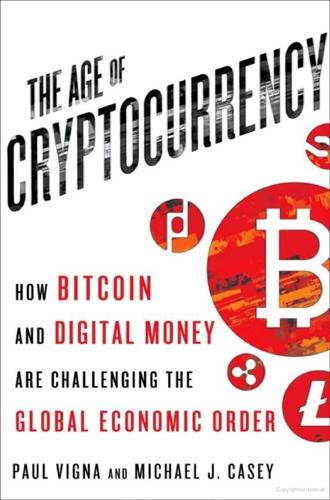
The Age of Cryptocurrency: How Bitcoin and Digital Money Are Challenging the Global Economic Order
by
Paul Vigna
and
Michael J. Casey
Published 27 Jan 2015
The entire machinery of the global capital markets seized up, coming to a grinding, smashing, disastrous halt, because nobody trusted anyone anymore. In the months and years that followed, an increasing number of people would decide that perhaps Satoshi Nakamoto’s idea offered a better alternative to all that. * * * While we have no proof that the for-profit-company-led cash initiatives of the 1990s and the 2008 banking crisis shaped Nakamoto’s thinking, both underscored the reasons that cryptocurrency designers were eager for change. The message in each case was that the centralization of money is destructive and that attempts to change that from within would fail. The solution could only be true decentralization, by coming up with a brand-new, rebel monetary system.
…
Well-known loopholes such as this one—others include using a UnionPay card to buy dollar-denominated chips at casinos in Macao—appear to be tolerated by the government. Thousands of Mr. Feis are all over China’s coastal cities. With alternatives like that, bitcoin in China starts to look like a solution in search of a problem. One scenario that could foster Chinese acceptance of the cryptocurrency would be a banking crisis, a threat that economists take seriously and which some see as the greatest risk facing the global economy. Exploiting the controlled interest-rate model that penalizes savers, banks have recklessly built up trillions of renminbi worth of debts to municipalities and developers that are certain to go bad.
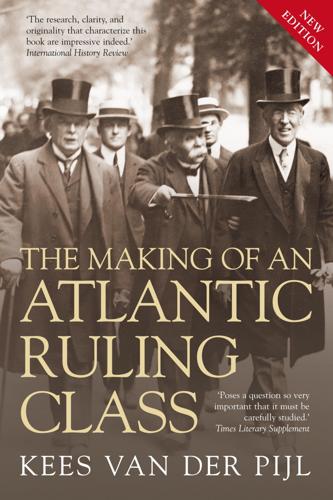
The Making of an Atlantic Ruling Class
by
Kees Van der Pijl
Published 2 Jun 2014
In Germany, the subordination of money capital took the form of a temporary majority participation by the state in the banks most deeply involved in the post-war Atlantic circuit of money capital (DANAT and Dresdner Bank), whereas the Deutsche Bank, which through its merger with the Discontogesellschaft even more became the bank of the state-monopolistic heavy industries, was only indirectly supervised. The DANAT bank collapsed and the Dresdner Bank suffered heavy losses in the bank crisis of 1931. The two banks merged in 1932, and the German state took an interest of 75% in the new institution, compared to a 35.6% participation by the central bank in the Deutsche Bank. The latter eventually emerged from the bank crisis reinforced at the expense of its rivals. In the Third Reich, the banks were reprivatized without any separation of functions.77 In Italy, the IRI was founded in 1933 as a holding for the deficitary industrial assets hitherto held by bank capital.
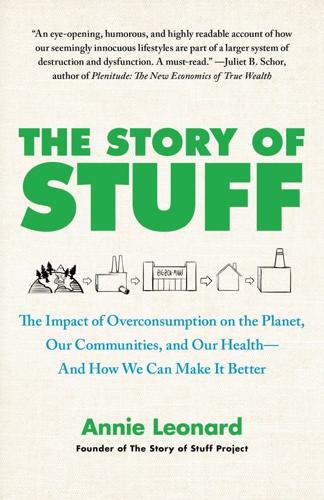
The Story of Stuff: The Impact of Overconsumption on the Planet, Our Communities, and Our Health-And How We Can Make It Better
by
Annie Leonard
Published 22 Feb 2011
In October 2008, the European Union undertook a study to put a dollar value on the forest services that we’re losing through deforestation each year. This study, published in The Economics of Ecosystems and Biodiversity report, warns that the cost to the global economy from the loss of forests is far greater than the economic losses incurred up to that point in the banking crisis that garnered so much media attention and government action that year. Further, the report points out, the losses from deforestation aren’t a one-time fiasco, but continuous, year after year.16 By evaluating the many services that forests perform and figuring out how much it would cost for humans to adapt to their losses and provide these services themselves, the study calculated the cost of forest loss at between $2 trillion and $5 trillion, or about 7 percent of global GDP each year.17 Now, if that doesn’t merit a bailout on both economic and environmental grounds, I am not sure what does.
…
Condition and Trends Working Group of the Millennium Ecosystem Assessment, Ecosystems and Human Well-Being: Current States and Trends, vol. 1 (Washington, D.C.: Island Press, 2005), p. 2. 16. “The Economics of Ecosystems and Biodiversity,” European Commission (ec.europa.eu/environment/nature/ biodiversity/economics/). 17. Richard Black, “Nature Loss ‘Dwarfs Bank Crisis,’” BBC News, October 10, 2008 (news.bbc.co.uk/2/hi/science/nature/7662565.stm). 18. “Deforestation and net forest area change,” Food and Agriculture Organization of the United Nations (fao.org/forestry/30515/en/). 19. State of the World’s Forests 2007, Food and Agriculture Organization of the United Nations (fao.org/docrep/009/a0773e/a0773e00.htm). 20.
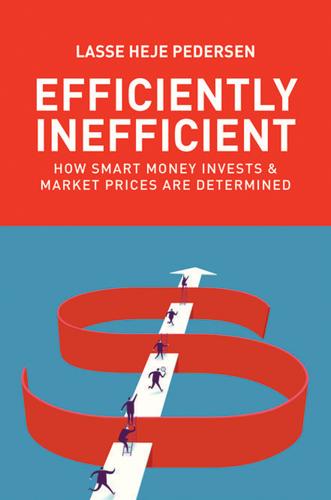
Efficiently Inefficient: How Smart Money Invests and Market Prices Are Determined
by
Lasse Heje Pedersen
Published 12 Apr 2015
The various types of supply and demand shocks occur over different time scales as some macro events drive the short-term dynamics (within a year), others affect the medium-term economic environment (1–5 years), and yet others determine the long-run growth (5+ years). The typical short-term demand shocks include changes in the consumer spending rate, changes in monetary policy, and changes in access to consumer credit (credit boom vs. banking crisis). Short-run supply shocks include changes in prices of natural resources, especially energy prices. In the medium run, supply shocks can arise from changes in capital. Capital improvements are due to successful investments, including foreign direct investment (FDI). If a country fails to invest enough, its capital stock decreases as it depreciates and becomes obsolete.
…
Also, supply shocks can arise from changes in labor-market frictions (sticky wages, search frictions, and rigid labor laws), product-market frictions (sticky prices and anticompetitive corporate measures), and capital-market frictions (market and funding illiquidity) leading to unemployment and lower capital utilization. For instance, a systemic banking crisis slows growth because the ability to finance projects is a driver of investment. In the long run, output depends on supply factors such as technological progress and population growth. 11.4. COUNTRY SELECTION AND OTHER GLOBAL MACRO TRADES There are no limits to the kinds of trades that global macro hedge funds might consider.
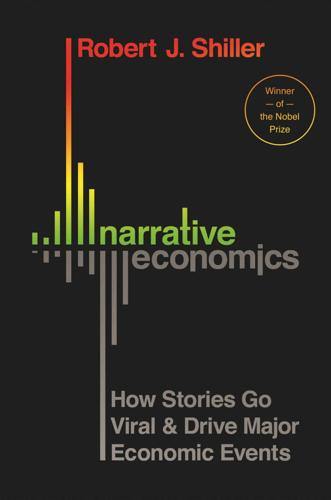
Narrative Economics: How Stories Go Viral and Drive Major Economic Events
by
Robert J. Shiller
Published 14 Oct 2019
As a result, people neglected routine dental work to conserve money, ultimately leading to painful dental emergencies. Roosevelt also offered moral reasons to spend. Days after his inauguration in 1933, he took the unusual step of addressing the nation by radio during a massive national bank run that had necessitated shutting down all the banks. In this “fireside chat,” he explained the banking crisis and asked people not to continue their demands on banks. He spoke to the nation as a military commander would speak to his troops before a battle, asking for their courage and selflessness. Roosevelt asserted, “You people must have faith. You must not be stampeded by rumors or guesses. Let us unite in banishing fear.”25 The public honored Roosevelt’s personal request.
…
See also Zeina Afif, “ ‘Nudge Units’—Where They Came From and What They Can Do,” World Bank “Let’s Talk Development” blog, October 25, 2017, http://blogs.worldbank.org/developmenttalk/nudge-units-where-they-came-and-what-they-can-do. 7. https://millercenter.org/the-presidency/presidential-speeches/march-4-1933-first-inaugural-address. 8. https://millercenter.org/the-presidency/presidential-speeches/march-12-1933-fireside-chat-1-banking-crisis. 9. See https://www.sistrix.com/ask-sistrix/google-index-google-bot-crawler/why-does-a-google-search-with-the-parenthesis-operator-sometimes-deliver-more-results-than-the-same-search-without-it/. 10. Callahan and Elliott, 1996. 11. Piore, 2010. 12. Blinder, 1990; Blinder et al., 1998. 13.
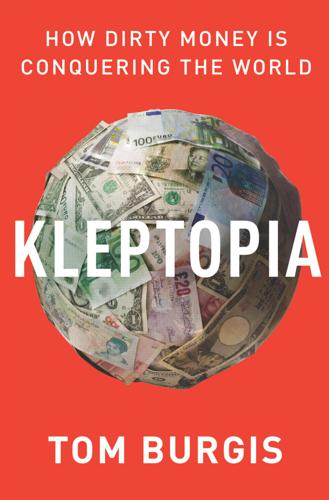
Kleptopia: How Dirty Money Is Conquering the World
by
Tom Burgis
Published 7 Sep 2020
If they could show it was the latter, that made Ablyazov a thief. BTA would pursue him in the commercial courts, a civil suit with no jury to hear the bleatings of the ersatz dissident, just a judge versed in fraud. Better still, with a bit of spin Ablyazov could be cast as that most reviled of villains: a perpetrator of the banking crisis for which everyone apart from the bankers was now beginning the long and miserable labour of paying. In the years before the crisis, the bosses of Royal Bank of Scotland had embarked on a megalomaniac acquisition of ABN Amro, a Dutch bank that had extended credit to Ablyazov’s BTA. Not long afterwards, Royal Bank of Scotland required the single largest bank rescue ever performed, swallowing public money equivalent to a third of the annual budget of the National Health Service.
…
The court of public opinion was forming its account: fifty cops had seized a dissident’s wife and her daughter and, with suspicious haste, handed them over to a pair of Kazakh diplomats who had a private plane ready to go, apparently in a grubby attempt to curry favour with an oil-rich dictator. Italy was barely holding it together as it was. The banking crisis had become a recession, which had become a crisis of unpayable national debt. Greece had gone under. Italy, the eurozone’s third biggest economy, looked as if it might follow. As the kidnapping scandal engulfed the government, Giorgio Napolitano, Italy’s president and one of its few respectable politicians, warned that ‘the repercussions to us, in international relations and on financial markets, would be visible immediately, and could be impossible to recover from’.
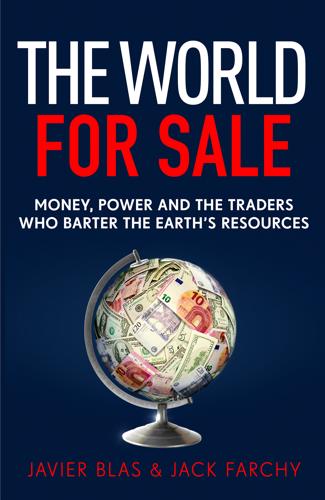
The World for Sale: Money, Power and the Traders Who Barter the Earth’s Resources
by
Javier Blas
and
Jack Farchy
Published 25 Feb 2021
From Argentina to Canada, Vietnam to Russia, the weather was hot when farmers needed it to be temperate, dry when they needed it to be wet. Now, prices were skyrocketing. A bushel of soybeans had cost just $5.40 in the middle of 2006. By the time Wen was touring farms in Hebei province, it was more than double that. The spike in wheat, rice and corn prices around the world was just as dramatic. Even as a banking crisis was brewing on Wall Street, a food crisis was brewing on the streets of Dhaka, Cairo and Mexico City. Soaring food prices were the culmination of a decade of the commodity supercycle. And it wasn’t just food. Booming demand had reconfigured the flow of oil around the world, opened up Africa’s mineral resources to new investment, and filled the pockets of commodity producers and traders the world over.
…
Their position at the heart of global trade gave them unmatched insight into the increasingly fragile state of the world economy. At the same time as they were advising governments and selling commodities around the world, the traders were also placing massively profitable bets on the future direction of the markets. It was a time when millions of additional people were going hungry, when the banking crisis triggered chaos in financial markets, and when the world experienced the deepest recession in generations. But for the commodity traders, it would turn out to be the most profitable period they had ever seen. From their offices on a leafy Geneva backstreet, the traders of Cargill were surveying the mayhem engulfing the global economy with growing interest.

WikiLeaks and the Age of Transparency
by
Micah L. Sifry
Published 19 Feb 2011
“It is common for staffers to get more and better information from blogs, and for hearings to be driven by the conversation online, than from the Congressional liaison group at the Fed.”19 Ultimately activists ranging from followers of libertarian Ron Paul on the right to supporters of Grayson and Senator Bernie Sanders on the left also succeeded in 2010 in forcing Congress to adopt a new law requiring the Federal Reserve to detail all the recipients of bailout funding during the banking crisis. 82 MICAH L. SIFRY That last victory was substantial. The Wall Street Journal editorial page praised the results of the Federal Reserve’s new transparency, writing: Lender of last resort indeed. The Federal Reserve pulled back the curtain yesterday on its emergency lending during the financial panic of 2008 and 2009, and the game to play at home with the kids is: who didn’t get a bailout?

The Flat White Economy
by
Douglas McWilliams
Published 15 Feb 2015
Arguably one of the easiest and least meritocratic ways to get rich then; though, in fairness, those benefiting from the property-price inflation would in all likelihood have had to scrimp and save to pay huge mortgages at times of double-digit rates of interest to hang onto their houses. The financial crisis of 2007, followed by the banking crisis of 2008, did no one any favours. But the silver lining in the cloud was the possibility of a rebalancing of the British economy: away from financial services, consumption and an overreliance on the property market towards manufacturing industry, investment and exports; and away from London and the South towards the Midlands and the North.
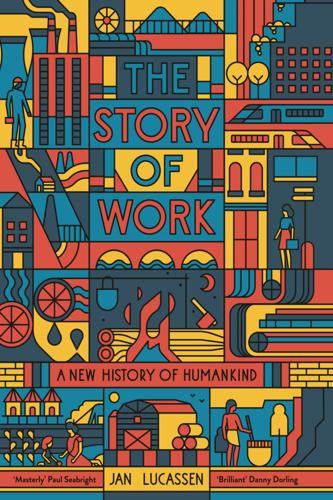
The Story of Work: A New History of Humankind
by
Jan Lucassen
Published 26 Jul 2021
Nevertheless, during the last two centuries, we may discern a great wave in the North Atlantic and its offshoots, and in the last half-century also increasingly beyond – from regulation and corporation (households, estates, guilds and so on) in the ancien régime, to deregulation and decorporation in the first half of the nineteenth century, to reregulation and recorporation in the century thereafter and, finally, to another period of deregulation and decorporation since the end of the twentieth century.109 Prepared by the banking crisis of 2008, the pendulum may now be swinging in the opposite direction, influenced by the coronavirus pandemic, although it is unclear for how long. Incidentally, the development of decorporation warrants an observation with respect to households, where we do not find any recorporation from the late nineteenth century.
…
In South Korea, four decades of authoritarian rule came to an end with a civic movement in which the general strike of 1996–97 played a decisive role. In their simultaneous demand for democracy and redistribution, social welfare workers and their trade unions and reformist elites worked together.158 In the backlash of neoliberal market reforms that quickly followed, in particular with the Asian Financial Crisis of 1997 and the global banking crisis of 2008, many of these achievements survived. Everything was nibbled away from the universal social insurance scheme that was introduced in South Korea from 1997, especially in the sphere of old-age pensions, but its national health care programme proudly remained in place. The welfare gains of the early 2000s in Brazil and especially Argentina have suffered most.
…
We have also seen that these ‘aggrandizers’ cannot do this with impunity but must compensate the community, even if it is only symbolically. There is thus a socio-psychological limit to social inequality.39 In a negative sense, this was reflected in the general moral outrage at the bonuses and other benefits of bankers during the banking crisis of 2008. A smaller but more recent example is the call in many countries to improve the pay of healthcare workers in response to the coronavirus pandemic. In other words, egalitarianism is very much in line with the recognition of individual differences, especially in terms of effort. Piketty articulates it as us needing ‘a clear vision of human equality . . . a vision that fully recognizes the many legitimate differences among individuals, especially with respect to knowledge and aspirations, and the importance of these differences in determining how social and economic resources are deployed . . . the ideal socioeconomic organization must respect the diversity of aspirations, knowledge, talent and skills that constitutes the wealth of humankind’.

The Smartest Guys in the Room
by
Bethany McLean
Published 25 Nov 2013
• • • Skilling had an idea about how to solve the problem of getting producers to supply gas, and he immediately went to work putting it into practice. Instead of paying producers for their gas over the life of a contract, he decided to give them cash up front in return for a long-term supply of the gas they got out of the ground. That changed everything. Problems in the oil patch had created a banking crisis in Texas. Saddled with huge portfolios of bad loans—not just to energy companies but to the real estate sector, which was suffering its own meltdown—banks weren’t about to lend new money to the natural-gas industry. Yet without loans, producers couldn’t drill for new gas. Presented with the option of cold, hard cash from Enron, producers were suddenly happy to sign long-term contracts.
…
Abib, Osmar, 163–64, 371 ABN Amro, 164 accounting, 132, 141–42, 165, 230, 261, 328, 361, 397, 406–7, 409, 411–12, 413–14, 416, 419 EBS and, 289–90 fair value, 129, 308–9 fraud, 354–59, 406 historical-cost, 39–40 mark-to-market, 39–42, 45, 60, 66, 78, 92, 94, 127, 131, 158, 181, 218, 227, 296, 303, 305, 318–20, 388, 411, 413 problems with, 95, 96–97 rules and procedures of, 155, 157, 184, 264, 293, 295, 357 scandals, 71, 390 see also Arthur Andersen; GAAP Adelphia, xxiv, 413 Adlong, Shannon, 382–83 Africa, 339, 350 Alchemist, The (Coelho), 72 Alexander, Jim, xiii, 95 Alkhayat, Hamd, 121, 124 Allario, John, 122 Allied Signal, 182 Allison, Herbert, 235 Al-Waleed, Prince, 391 American Centurion, 340 American Council for Capital Formation, 146 American Enterprise Institute, 87 American Express, 340 American Fork, 293 American Heart Association, 146 America Online (AOL), 319 Amnesty International, 81 “analyst capture,” 235 analysts: credit, 236–39, 323, 353 Enron meetings for, 176, 179–80, 242–44, 284, 314, 320–21, 323, 345 natural-gas, 232 securities, 155, 230–35, 236, 237, 240, 243–44, 296, 320, 326, 331, 348–49, 353, 368, 387, 393, 396, 407 Andersen, Arthur, 143–44 Andersen Consulting, 144–45 Antioco, John, 291–92 Apple Bank, 17, 18, 19, 20, 21 Apple Computers, 230 Arab oil embargo, 1 Argentina, 74, 252–53, 257 Arkansas Teacher Retirement System, 202 Arnold, John, xiii, 219, 223–24, 283, 304, 339, 397, 398 Arthur Andersen, 73, 94–95, 116, 124, 161 annual energy symposium of, 241 consulting arm of, 144–45 demise of, xxiv, 406 on EES, 184, 300 Enron and, 19, 20, 141, 143, 145–49, 157–59, 162, 168, 169, 176, 207–9, 239, 295–97, 305, 307, 316–18, 354, 356, 358, 381–85, 393, 406–7, 416 Enron accounting restatement and, 363, 368–69, 383–84, 393, 394 Enron employees from, 153–54, 169, 323, 354, 355, 362 firmwide strategic advisory council of, 147 on LJM, 190, 197, 361, 393 obstruction-of-justice conviction of, 406–7 Professional Standards Group (PSG) at, 148, 190, 295, 318, 323, 363, 382 reputation of, 143–44 scandals involving, 145, 147, 357, 381 Art of War, The (Sun-tzu), 58 Aspen, Colo., 423 Astin, Ron, xiii, 166 Atlantic Water Trust, 249, 253 attorney-client privilege, 382 Avici Systems, 290, 308, 354 Ayers, Judith Diane, see Lay, Judith Azurix, 90, 113, 124, 246–63, 285, 313, 341, 368–69, 373, 374, 387, 399, 417 collapse of, 318 IPO and stock of, 251–52, 253, 254, 256, 258 backup credit lines, 379, 386 Badum, Jim, 176 Bahía Blanca, 257 Baker, James, xxiv, 79, 423 Baker Hughes, 402 Baldwin United, 319–20 Ballentine, James, 341 Ballmer, Steve, 313 bandwidth on demand, 286 bandwidth trading, 110, 188, 243, 244, 284, 286–87, 290 Bank of America, 81, 343 Bankers Trust, 39, 42–43, 57, 58, 115 banking crisis, Texas, 36 Bank One, 167 Baptist Church, 86 Barclays, 168–69 Barone, Ron (PaineWebber/UBS Warburg analyst), xvi, 85, 292, 325, 348 Barone, Ron (S&P analyst), 238 Barrington, Brian, 124 Bartiromo, Maria, 219 Barton, Joe, 173 Bass, Carl, xvi, 295, 297, 316–18, 363 Bauch, Billy, 294 Bauer, Tom, 169 Baxter, Carol, xxii Baxter, Cliff, xiii, 38, 64–66, 105, 122, 210, 215, 228, 249, 260, 299–300, 313, 315, 343, 390 concerns about Fastow of, 152, 163, 333, 356 departure of, 333–34, 349, 350, 361, 380, 397 at Enron North America, 207, 213 as mergers and acquisitions specialist, 64 as negotiator, 107–8, 109, 262 Pai’s problems with, 65, 66, 228, 302 suicide of, xxi–xxiii, xxv, 408, 418 Baxter, J.
…
J., 417 Sithe Energies, 60–61, 62, 67, 105, 123, 213, 218 Siurek, Ryan, 323–24 60 Minutes, 417 Skilling, Betty, 28–29 Skilling, Jeff, xiii, 3, 27–43, 45, 59–69, 141, 157, 192, 222, 232, 235, 237, 281, 290, 301, 302, 335, 344, 399, 408, 413, 416–24, 428–29 accounting practices of, see mark-to-market accounting appearance and personality of, 28, 101 arrogance of, 31, 32–33, 44, 241, 245, 345 on Azurix, 250, 251–52, 255–57, 259–63 background and childhood of, 28–29, 72, 73, 319 “big enchiladas” of, 171, 184, 262, 263 on broadband, 171, 184–88, 255–56, 262, 284–86, 288, 298, 299, 314–16, 331–32, 338, 340, 349 business strategy of, 255 Carter’s relationship with, 310, 327, 345, 348 CFO search by, 140 Commonwealth Club pie incident and, 335–36, 339 confidence of, 337 contempt for Washington of, 173 as COO, 100–102, 104–13, 114–15, 118–29, 131, 139, 171, 332, 338, 384 COO search by, 342 creativity and original thinking prized by, 119 daredevil expeditions led by, 122, 123 Darwinist worldview of, xxiii, 31, 55–56, 62, 64, 332 denials of knowledge by, 324, 416 as deregulation advocate, 265, 327 distress and depression of, 337–39, 346 drinking of, xxiii, 338–39, 418 earnings and wealth of, 30, 100, 240, 313, 347, 350 education of, 29–31 on EES, 171–72, 175–76, 177, 179–80, 182, 184 on Enron bankruptcy, 414 as Enron CEO, 313–36, 337–43, 345–46, 350–51 on Enron stock, xxv, 242, 326–27, 410 family life of, 68–69, 314–15, 325, 339, 347, 349 Fastow and, 134, 137, 138–39, 140, 150, 152, 154, 168, 190, 192–93, 199, 200, 205, 210–11, 305, 307, 328–29, 333, 364, 377, 414 as gambler at heart, 28, 30, 217 Grubman confrontation of, 325–26 homes of, 123, 348 income and wealth of, 35, 69 intelligence as value of, 28, 31, 32, 34–35, 44, 55, 68, 114, 120 “klieg-light syndrome” and, 120 as libertarian, 31 on LJM, 310, 311, 312, 328–29 at McKinsey, 12, 31, 32–35, 55, 66, 68, 233 as manager, 28, 55–57, 101–2, 107–8, 114, 127, 164, 233, 247 Mark’s conflicts with, 71, 88–89, 100–101, 110–13, 180, 246–47, 250, 255–56, 258, 259–63, 315, 326 marriage collapse of, 100, 101, 349 misleading statements by, 321–22, 323, 325 Policy Committee formed by, 328 positive public statements of, 121, 126, 133, 177, 303, 315, 340 on Raptor restructuring, 324 recklessness of, 285 reputation of, 70, 230, 246, 258, 408 resignation as CEO by, 337, 342–43, 346–54, 355–56, 357, 361, 363, 372, 379, 380, 389 return considered by, 389–90 on Rhythms deal, 191 on share buyback program, 105 start-up mentality of, 56–57, 61, 101 stocks sold by, 320, 345, 416, 420 theories of, 233, 240, 244 on those who “got it” and those who didn’t, 233 trading operations of, 70–71, 73, 78, 93, 212–14, 216–19, 222–23, 225–26, 228 in wake of Enron collapse, xxiii–xxv as workaholic, 68–69 Skilling, Jeffrey (son), 314, 339, 350 Skilling, Kristin, 325, 343 Skilling, Mark, 314, 327, 350 Skilling, Sue (sister), 29 Skilling, Susan (first wife), xv, 30, 68–69 Skilling, Tom (brother), 29 Skillingites, 57, 105, 328 Skytel, 175 Smith, Rebecca, xvii, 246, 360, 364 Smith, Sherron, see Watkins, Sherron Smith, Tracy, 187 solar energy, 174 Soros, George, 74 South Africa, 74 South America, 75, 112, 259, 325 Southampton Place partnership, 196–97, 206, 297, 311, 355, 376, 394, 411 Southern California Edison, 167, 265, 277, 278, 280 Southern Methodist University, 29, 312 South Korea, 258 Southwest, 18, 19, 21, 23 Southwestern Baptist Theological Seminary, 385 Spacek, Leonard, 144 Spain, 339 special-purpose entities (SPEs), 149, 151, 157–58, 161, 166–67, 189, 191, 209, 229, 259, 290, 293, 305, 310, 316, 317, 354, 360, 380, 383, 384, 400, 409 see also specific entities Spindletop, 1 spot market, 265–66 Stamford, Conn., 409 Standard & Poor’s, 98, 102, 105, 116, 125, 131, 206, 229, 236–38, 319, 323, 380, 394, 395, 400, 403, 407 Stanford Business School, 21, 214 Star Wars, 67, 134, 168, 189 Starwood, 181 State Bank of India, 164 Stead, Ed, 292 steam, 49 steel trading, 225 Stewart, John, xvi, 317–18, 363 Stewart, Martha, 413 stock issuance, 150, 341 stock market, 30 growth rewarded by, 41 increasing earnings rewarded by, 18 stock options, 12, 37, 47, 100, 138, 414, see also specific individuals Stoel Rives, 274, 276 Stram, Bruce, 14 Strauss, Bill, 11, 12–13 streaming programming, 287 structured finance, 149, 238, 324, 380 Stulb, David, 383 Suez Lyonnaise des Eaux, 113, 247–48 sugar futures, 226 Sulentic, Steve, xiv, 18–19, 21 Sunbeam accounting scandal, 145 Sun Microsystems, 93, 243 Sun-tzu, 58 supply and demand, 268, 269, 273, 280 Supreme Court, U.S., 406 Sutton, Joe, xv, 111, 112, 247, 262 Swartz, Mimi, 358 Taco Bell, 176 take-or-pay agreements, 51, 103 Talon, 306–9 Tangier, 254 taxes, corporate, 87 TCEE (total consumer energy expenditure), 179 TCV (total contract value), 178–79 team players, 55, 56, 63 Techboard, 117 Teesside power project, 44, 48–54, 73, 75, 78, 79, 80–81, 93, 102–3, 175, 346 telecommunications, 185, 186, 231, 288, 315, 318, 320, 331 Temple, Nancy, xvi, 368–69, 381–82, 406 Tenneco, 402 Texaco, 16–17 Texas, 2, 11, 46, 174 banking crisis in, 36 as growth market, 11 Texas, University of, 57, 141, 153, 390 Texas A & M, 57, 146 Texas Commerce Bank, 162 Texas Journal, 319 Thailand, xxiv, 130, 131 Thatcher, Margaret, 48 TheStreet.com, 331 Thomas, Brownlee, 244 Thorn, Terry, 55 Thunderbird, 293 Tilney, Beth, xv, 190, 360 Tilney, Schuyler, xvii, 190, 200, 207, 234–35, 360, 370, 381, 410–11 Timberwolf, 308 Times of India, 81 Tirello, Edward, 229 Today, 416 Toronto Dominion bank, 152 total contract value, 178–79 total return swaps, 158 Tourre, Fabrice, 427 traders, trading, 42, 43, 85, 125–26, 151, 212–28, 283, 316, 324, 326, 330–31, 333, 334, 335, 338, 339, 345, 352, 379, 380, 387–88, 397, 403–4, 409, 413–14, 416, 420 bonuses demanded by, 397–98, 409 energy, see energy traders, energy trading natural gas, see natural gas, traders and trading in power, see power traders, trading Tranen, Jeffrey, 267 Transco Energy, 7–10, 46 Transportada del Sur, 74 transportation contracts, 38 Transwestern, 387 Traveler’s Insurance Group, 162 Treasury bonds, 157 Treasury Department, U.S., 385 Tunisia, 252 Turkey, 75, 158 TXU Europe, 227 Tyco, xxiv, 182, 413 UBS Warburg, 348, 409 Union Pacific Railroad, 69, 100 United Arab Emirates, 260–62 United Kingdom, 48, 222, 225, 249 Universal, 297 University of Colorado-Boulder, 425 upgrades, 237 Urquhart, John, xvi, 53, 96 U.S.
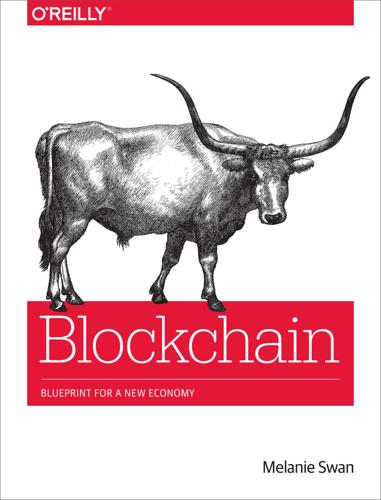
Blockchain: Blueprint for a New Economy
by
Melanie Swan
Published 22 Jan 2014
Relation to Fiat Currency Considering Bitcoin as the paradigm and most widely adopted case, the price of Bitcoin is $399.40 as of November 12, 2014. The price has ranged considerably (as you can see in Figure 1-2), from $12 at the beginning of 2013 to a high of $1,242 per coin on November 29, 2013 (trading higher than gold—$1,240 per ounce—that day).20 That peak was the culmination of a few factors: the Cyprus banking crisis (March 2013) drove a great deal of demand, for example. The price was also driven up by heavy trading in China until December 5, 2013, when the Chinese government banned institutions (but not individuals) from handling Bitcoin, after which the price fell.21 In 2014, the price has declined gradually from $800 to its present value of approximately $350 in December 2014.

Future Perfect: The Case for Progress in a Networked Age
by
Steven Johnson
Published 14 Jul 2012
Individual bloggers such as Andrew Sullivan responded to each twist in the news cycle; The Huffington Post culled the most provocative opinion pieces from the rest of the blogosphere. The statistician Nate Silver at the website Five Thirty Eight did meta-analysis of polling that exceeded anything Bill Schneider dreamed of doing on CNN in 1992. When the banking crisis erupted in September 2008, I followed economist bloggers such as Brad DeLong to get their expert take on the candidates’ responses to the crisis. I watched the debates with a thousand virtual friends live-tweeting alongside me on the couch. All this was filtered and remixed through the extraordinary political satire of Jon Stewart and Stephen Colbert, whom I watched via viral clips on the Web as much as I watched them on TV.

What We Say Goes: Conversations on U.S. Power in a Changing World
by
Noam Chomsky
and
David Barsamian
Published 1 Oct 2007
Sainath, “Fewer Jobs, More Buses in Wayanad,” Hindu, 27 December 2004; Indo-Asian News Service, “New Economic Policy Hard on Farmers,” Indo-Asian News Service, 29 October 2004. 20 Barbara Harriss-White, India Working (Cambridge: Cambridge University Press, 2003). 21 For analysis, see Chomsky, Year 501, chap. 7; Stephen Fidler, “Aftermath of the Bank Crisis,” Financial Times (London), 14 March 1997. 22 Chris Flood, “Copper Hits High on Codelco Strike,” Financial Times (London), 5 January 2006. 23 Tony Smith, “Argentina Defaults on $3 Billion I.M.F. Debt,” New York Times, 10 September 2003; Benedict Mander, “Latin Allies Forge a Political Bond,” Financial Times (London), 12 July 2006. 24 Chomsky, Hegemony or Survival, p. 139. 25 Chomsky, Failed States, chap. 6. 26 Program on International Policy Attitudes (PIPA), “U.S.
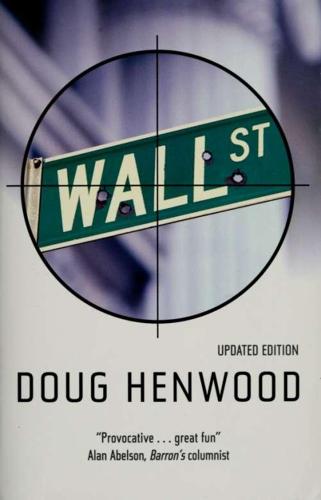
Wall Street: How It Works And for Whom
by
Doug Henwood
Published 30 Aug 1998
Though big corporations remained largely unscathed, the shutdown of bank credit hurt small businesses, farmers, and households. No doubt the cascade of defaults, insolvencies, and bank failures fed on itself, since credit was denied even to borrowers who could have put it to good use. Though the banking crisis came to an end in March 1933 with Roosevelt's bank holiday — the very month officially recognized as the trough of the 1929-33 contraction — small businesses still found it difficult to borrow money at least through 1935, and possibly 1938, according to a number of surveys cited by Bernanke. The home mortgage market was similarly frozen; what lending took place was the result of New Deal credit programs.
…
Of course, we don't have Fisher deflations today; we have expensive bailouts, and not just in the U.S. Actually, the recent U.S. bank and S&L bailouts were rather modest in comparison to disasters elsewhere. Estimates are that the combined losses and rescue costs in the U.S. disaster RENEGADES were about 3% of a year's GDP — compared with 4% for Norway's bank crisis, 6% for Sweden's, 8% for Finland's (all from the late 1980s and early 1990s), and, the world champion, 17% for Spain's (which ran from 1977 to 1985). Altogether, about two-thirds of IMF member countries experienced some sort of credit disaster between 1980 and 1996. Such disasters may have been successfully contained, but that doesn't mean they're insignificant or rare.
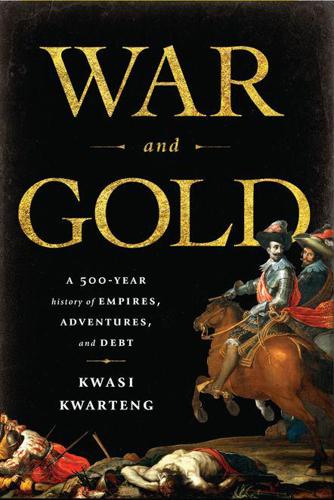
War and Gold: A Five-Hundred-Year History of Empires, Adventures, and Debt
by
Kwasi Kwarteng
Published 12 May 2014
In this respect, ‘the plans of ministers’ were important, yet he believed also in the operation of the truth uttered by merchants to a minister of Louis XIV: ‘let us alone’.30 Again, it was Baring who was among the first writers to refer to the Bank of England as a ‘dernier ressort’, or ‘last resort’ in the lending market. The notion of the lender of ‘last resort’ would occur many times in the future. It essentially means that the central bank would always provide credit to the banking system, even if all other banks were in difficulty. Baring used the term in recounting the banking crisis that had started in England in 1793, which he felt had been caused by the ‘unexpected declaration of war’ against France; as a result of the declaration ‘foreigners withheld remittances’ and the ‘want of money became general . . . alarm in the country continued to increase’, while confidence in the banks ‘vanished’.31 It was to guard against such a situation arising again that Baring argued that the ‘Notes of the Bank of England should be made legal tender during the war.’32 He was arguing for the general acceptance of paper notes, the ‘Notes of the Bank of England’, to provide what we would call ‘liquidity’.
…
These notes were known as ‘Bradburies’, after Sir John Bradbury, the Joint Permanent Secretary of the Treasury. Gold payments for external trade and debts were preserved. By 8 August, after the suspension of gold payments internally, the bank rate was back to its more traditional level of 5 per cent. The immediate banking crisis had passed. The public may have thought, according to Shaw Stewart, that ‘all is well now’, after receiving the paper notes, but ‘if you saw the length of the faces of those who know, you would realise this is one of the most terrific things London has been up against since finance existed’. Shaw Stewart wisely observed that the remedy would ‘undoubtedly take the form of the Government shouldering the whole thing’.
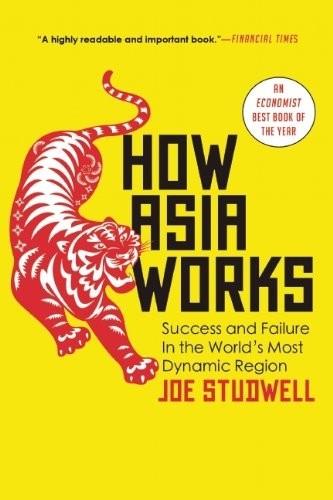
How Asia Works
by
Joe Studwell
Published 1 Jul 2013
They opened up and dominated entire new industries like electrical engineering, chemicals and petrochemicals with vast investments in research and development.35 Japan refined its industrial policy around the export discipline of large manufacturers over a long period between 1925 and 1954. The process spanned the Depression and the fascist, war and early post-war eras.36 It began in 1925, when the Japanese government created the Ministry of Commerce and Industry (MCI) with legal authority to oversee the pricing and quality of important exports.37 Following a devastating banking crisis in 1927, the Commerce and Industry Deliberation Council was set up to lead mergers of industrial firms that were facing bankruptcy. The term sangyō gōrika – ‘industrial rationalisation’ – came into use to signify the need for the state to cull weaker industrial firms within the context of a protectionist environment that nurtured industrial development.38 In 1930 a senior MCI official, Kishi Nobosuke, spent seven months in Germany studying how cartels operated there.
…
This was largely because Spanish company law favoured railroad investment but discriminated against manufacturers. As a result, the Spanish banks financed thousands of kilometres of rail lines, for which all the rolling stock was imported and for which there were no manufactures to transport. After a banking crisis in the 1870s, Spain remained thoroughly un-industrialised.4 Similarly, Austria had plenty of investment banks and weak infant industry policies; its banks financed only mature firms and government securities, and manufacturing development lagged. In sum, throughout history financial systems have catalysed different developmental outcomes depending on the policy environment that has surrounded them.
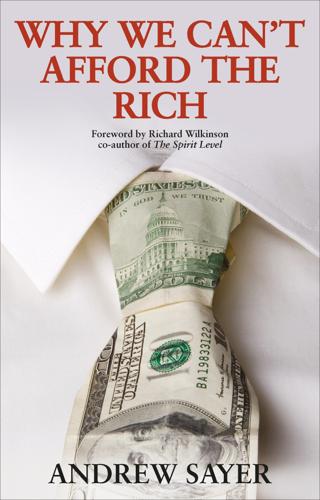
Why We Can't Afford the Rich
by
Andrew Sayer
Published 6 Nov 2014
In 2011–12 pay and benefits of business executives in the top FTSE 100 companies rose by 27% to an average of £4 million each.101 Commentators from across the political spectrum agree that CEO pay has had little to do with performance and everything to do with economic rent and power.102 Bank bonuses: ‘Heads I win, tails you lose’ If there’s one thing that has inflamed public outrage at the banking crisis more than any other, it’s bankers’ bonuses. Their recipients appeared to inhabit a different world from the rest of society, oblivious to the wider crisis that they helped to produce, making arrogant claims about their alleged star qualities as wealth creators that distinguished them from ordinary mortals.
…
One commentator described the methods used to maximise management’s gains as ‘legal embezzlement’ (John Plender, cited in Tabb, 2012, p 44). 40 Engelen, E., Ertürk, I., Froud, J., Johal, S., Leaver, A., Moran, M., Nilsson, A. and Williams, K. (2011) After the great complacence: Financial crisis and the politics of reform, Oxford: Oxford University Press, p 49. 41 Piketty, T. (2014), p 458. 42 Froud, J., Johal, S., Haslam, C. and Williams, K. (2001) ‘Accumulation under conditions of inequality’, Review of International Political Economy, 8(1), pp 66–95. 43 Shutt (2009), pp 128–9. 44 See Chapter Eighteen. 45 Lysandrou, P. (2011) ‘Global inequality as one of the root causes of the financial crisis: a suggested explanation’, Economy and Society, 40(3), pp 323–44. 46 At the time of writing, European Union citizens’ bank deposits were protected up to €100,000 (£85,000) in any one banking group. 47 Turner, A. (2009) The Turner Review: A regulatory response to the global banking crisis, London: Financial Services Authority, p 18. 48 For a definition of debt deflation, see Chapter Four. On how Wall Street engineered asset inflation at the end of the 20th century and enhanced the unearned income of the top 1% in the US who were bondholders, see Canterbery, E.R. (2000) Wall Street capitalism; The theory of the bondholding class, Singapore: World Scientific Publishing Company. 49 Merryman, J. (2012) Occupying money, 17 May, http://source.yeeyan.org/view/430335_f43/Occupying%20Money.%20-%20welcome%20to%20exterminating%20angel%20press.
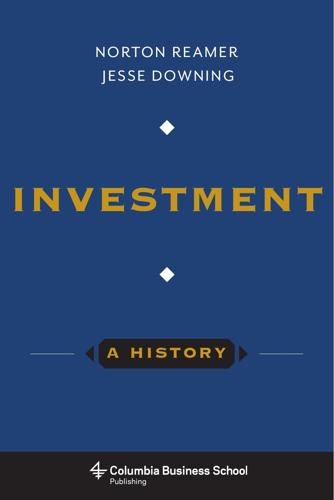
Investment: A History
by
Norton Reamer
and
Jesse Downing
Published 19 Feb 2016
The development of life insurance includes comical legal strategies, actuarial mathematics, and ethical reactions to the very notion of betting on death. Savings accounts have an equally intriguing history—from the savings societies that were crucial for many working poor to the development of commercial banks that facilitate the transactions that propel the economy, and through the 1970s banking crisis, which required governmental intervention. Then there are the more complex, and often more risky, investments in the form of separate investment accounts and mutual funds. These vehicles are not prestructured and often have more ambitious capital appreciation goals and therefore must accept more exposure to losses as well.
…
In addition, the Garn–St. Germain Depository Institutions Act of 1982 authorized the FDIC to acquire capital instruments from the bank, “net worth certificates,” in order to aid their liquidity positions, which also helped the banks weather this painful inflationary period. With these interventions, the banking crisis of the early 1980s was contained. In total, between late 1981 and 1985, the FDIC aided with seventeen mergers and acquisitions of mutual savings banks involving total assets of nearly $24 billion, which translated into 15 percent of the total assets of FDIC-insured mutual savings banks as of year-end 1980.47 At yearend 1995, the cost of all of the savings bank failures was estimated to be about $2.2 billion.48 Savings and loan associations fared even worse: from 1986 to 1995, over one thousand savings and loan associations with an excess of $500 billion in assets failed.
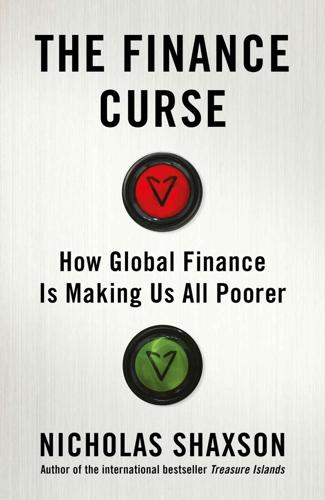
The Finance Curse: How Global Finance Is Making Us All Poorer
by
Nicholas Shaxson
Published 10 Oct 2018
This concluded: ‘a 5 percentage-point increase in the ratio of household debt to GDP over a three-year period forecasts a 1.25 percentage-point decline in inflation-adjusted growth three years in the future. Higher debt is associated with significantly higher unemployment up to four years ahead. And a 1 percentage point increase in debt raises the odds of a future banking crisis by about 1 percentage point.’ This research shows credit (or lending) to the private sector boosts growth for an economy but only up to a point; after that, more credit starts to reduce growth. On a graph it’s an inverted U-shaped relationship. The turning point seems to be where credit is equivalent to about 90–100 per cent of GDP, and in the UK credit to the private sector has averaged around 160 per cent of GDP.
…
But Bosworth-Davies took a different view, saying the reason that Blue Arrow was so terrifying for senior financiers ‘was that it demonstrated that ordinary juries could understand the ramifications of complex fraud cases, and that they could convict’. 9. See Michelle Singletary, ‘Justice Dept. hails prosecutions at banks, S & Ls’, Washington Post, 14 November 1995; ‘Hundreds of Wall Street Execs Went to Prison During the Last Fraud-Fueled Bank Crisis’, Billmoyers.com, 7 September 2013; and ‘S&L Fraud Sentences Average 3.2 Years: Thrifts: The Justice Department says federal cases in general typically draw 2.5-year terms’, Associated Press, 4 September 1990. 10. See Gillian Tett, Fool’s Gold, Little Brown and Company, 1 September 2009, p.18.
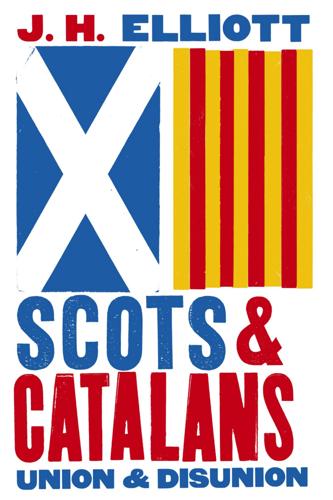
Scots and Catalans: Union and Disunion
by
J. H. Elliott
Published 20 Aug 2018
In the spring of 2011 a pro-independence meeting was held, leading to the creation of a National Assembly of Catalonia (the ANC) which committed itself to working for full Catalan independence. 47 In the Spanish general election of November of that year the Partido Popular was returned to power in Madrid, and Mariano Rajoy succeeded Zapatero as president. With the return of the PP to government the prospect of some form of agreement between Madrid and the Generalitat was significantly diminished. The attitude and behaviour of both were profoundly influenced by the global banking crisis of 2007–8 and its economic and social consequences. Rajoy’s government was committed to new austerity measures to restore the public finances, and was in no mood to bail out a Catalan government whose debts had been rising steeply since Mas came to power. In the spring of 2012 the imposition of cuts by the central government on the Generalitat’s spending on such public services as health and education began to turn public opinion against Mas and his party.
…
INDEX Aberdeen: Philosophical Society, (i) academies, (i) ; see also universities Acció Catalana, (i) Act Rescissory (Scotland, 1661), (i) Act for the Security of the Protestant Religion and the Government of the Church (England, 1706), (i) Adam brothers (architects), (i) afrancesados , (i) agriculture: in Catalonia, (i) , (ii) ; in Scotland, (i) , (ii) ; in Spain, (i) Álava, (i) Alba: as term for Scotland, (i) ; Scots take over from Picts, (i) Alburquerque, Francisco Fernández de la Cueva, 7th Duke of, (i) Alcalá, Fernando Enríquez Afán de Ribera, 3rd Duke of, (i) Alcalá Zamora, Niceto, (i) Alexander II, King of Scotland, (i) Alexander III, King of Scotland, (i) Alexander, Sir William: An Encouragement to Colonies , (i) Alfonso V, King of Aragon, (i) Alfonso V, King of Portugal, (i) Alfonso X (the Wise), King of Castile and León, (i) Alfonso XII, King of Spain, (i) , (ii) , (iii) Alfonso XIII, King of Spain: childhood, (i) ; accession and rule, (i) ; receives petition for Catalan autonomy from Cambó, (i) ; supports Catalan claim for independence, (i) ; exiled, (i) Alien Act (England, 1705), (i) , (ii) Almansa, battle of (1707), (i) , (ii) , (iii) Almirall, Valentí, (i) , (ii) ; Lo Catalanisme , (i) Amadeo of Savoy, King of Spain, (i) Amat y Junient, Manuel de, (i) Amelot, Michel-Jean, (i) America (New World): incorporated into Crown of Castile, (i) , (ii) ; Scottish immigrants, (i) , (ii) ; trade with Catalonia, (i) ; and trade rivalry, (i) ; see also empires, Spanish American Revolution, (i) , (ii) anarchism and anarcho-syndicalism, (i) , (ii) , (iii) ANC see National Assembly of Catalonia, (i) Andalusia, (i) Aner d’Esteve, Felip, (i) Angevin Empire, (i) Anglo-Irish Treaty (1921), (i) Anglo-Scottish Union: debated under JamesVI/I, (i) , (ii) , (iii) , (iv) ; debated under William III and Anne, (i) , (ii) ; see also home rule; Treaty of Union (Anglo-Scottish, 1707); union, forms of Anjou, Philip, Duke of see Philip V, King of Spain Anne, Queen: succession and death, (i) , (ii) ; and acceptance of Treaty of Union, (i) Aragon, Crown of: and dynastic union with Castile, (i) , (ii) ; Catalan-Aragonese federation, (i) ; Succession crisis and Compromise of Caspe (1410–12), (i) , (ii) , (iii) , (iv) ; and Spanish Atlantic expansion, (i) ; and Castilian dominance, (i) ; population (16th century), (i) ; constitution, (i) , (ii) , (iii) ; royal absenteeism, (i) ; union with Castile, (i) , (ii) ; customs barriers with Castile, (i) ; geographical and linguistic divisions, (i) ; fails to support Catalonia in 1640 rebellion, (i) ; supports Don Juan José, (i) ; and Spanish succession, (i) ; Nueva Planta, (i) , (ii) , (iii) ; form of representation in Spanish Cortes, (i) ; fiscal and monetary uniformity with Castile, (i) ; (i) ; historiography, (i) ; Archive of, (i) ; see also Aragon, kingdom of; Catalonia; Mallorca; Valencia Aragon, kingdom of: union with Castile, (i) , (ii) ; Catalan-Aragonese federation, (i) , (ii) ; oath of allegiance, (i) ; Ferdinand as king of, (i) , (ii) ; rebellion in defence of fueros (1590–1), (i) ; and the Indies (i) ; Olivares and, (i) ; Philip V abolishes laws and privileges, (i) , (ii) ; resists French invasion, (i) ; see also Aragon, Crown of Aragon, Council of, (i) , (ii) , (iii) , (iv) Arbroath, Declaration of (1320), (i) , (ii) Argathelians (followers of Argyll), (i) , (ii) , (iii) Argyll, Archibald Campbell, 8th Earl of, (i) , (ii) , (iii) Argyll, Archibald Campbell, 9th Earl of, (i) Argyll, Archibald Campbell, 10th Earl ( later 1st Duke) of, (i) , (ii) Argyll, John Campbell, 2nd Duke of, (i) , (ii) , (iii) Aribau, Bonaventura Carles: ‘Ode to the Pàtria ’, (i) army, British, (i) , (ii) , (iii) army, Catalan, (i) , (ii) , (iii) , (iv) army, English, (i) , (ii) , (iii) , (iv) , (v) ; New Model, (i) , (ii) army, French, (i) , (ii) , (iii) , (iv) army, James II’s, (i) army, Scottish, (i) , (ii) , (iii) , (iv) , (v) , (vi) army, Spanish, (i) , (ii) , (iii) , (iv) , (v) , (vi) , (vii) , (viii) , (ix) , (x) , (xi) , (xii) , (xiii) ; Riego’s mutiny (1820), (i) , (ii) , (iii) ; (army of Flanders), (i) ; (army of Africa), (i) , (ii) Arrimadas, Inés, (i) Arthur, King (mythical), (i) Arthur, Prince (son of Henry VII), (i) Asquith, Herbert Henry, (i) Association for the Vindication of Scottish Rights, (i) Asturias: miners’ strike (1934), (i) Ateneu Català, (i) Atlantic: Scottish and Catalan trade, (i) , (ii) ; rival traders in, (i) ; see also America Attlee, Clement, (i) Audiencia, (i) , (ii) , (iii) , (iv) Augereau, General Pierre, (i) austracistas , (i) , (ii) , (iii) , (iv) , (v) Austria: union with Spain opposed by British and Dutch, (i) Austro-Hungarian Empire see empires, Austro-Hungarian Autonomy, Statutes of (Catalan), (i) ; (1979), (i) ; (2005), (i) , (ii) Azaña, Manuel, (i) , (ii) Aznar, José Maria, (i) Bacon, Francis: A Brief Discourse touching the Happy Union of the Kingdoms of England and Scotland , (i) Balaguer, Victor: ‘History of Catalonia and the Crown of Aragon’, (i) Ballot, Josep Pau, (i) Balmes, Jaume, (i) Banco de España, (i) banditry and lawlessness: in Scottish Highlands and Catalonia, (i) , (ii) , (iii) , (iv) , (v) , (vi) , (vii) banking crisis (global, 2007–8), (i) Bannockburn, battle of (1314), (i) Barbour, John: The Bruce , (i) Barceló, Pere Joan (‘Carrasclet’), (i) Barcelona: as mercantile city, (i) ; recaptured from Moors (801), (i) ; surrenders to Philip IV (1652), (i) , (ii) ; conflict with Perpinyà, (i) ; sanctions against after surrender, (i) ; French capture (1687), (i) ; urbanization, (i) , (ii) ; in War of Spanish Succession, (i) ; resists Philip V’s occupation and surrenders (1714), (i) , (ii) , (iii) , (iv) ; Ciutadella (fortress), (i) , (ii) ; repressed by Philip V, (i) ; regidores , (i) ; University, (i) , (ii) , (iii) , (iv) ; ‘honoured citizens’ and oligarchical power, (i) ; population increase, (i) , (ii) ; shipbuilding, (i) ; trading rights, (i) ; Palau de la Virreina, (i) ; design and conditions, (i) ; Acadèmia de Bones Lletres, (i) ; occupied by French in Napoleonic Wars, (i) ; industrialization, (i) , (ii) ; cholera epidemics, (i) ; compared with Glasgow, (i) ; merchants, (i) ; Ateneu Barcelonès, (i) ; as cultural centre, (i) , (ii) , (iii) ; Liceu, (i) ; liberalism, (i) ; industrial unrest, (i) , (ii) , (iii) , (iv) , (v) , (vi) ; economic power, (i) ; Eixample, (i) ; urban development and street names, (i) ; Universal Exhibition (1888), (i) , (ii) ; as capital of Catalonia, (i) ; and internal Catalan differences, (i) ; Setmana Tràgica (tragic week, 1909), (i) ; World Fair (1929), (i) ; and October Revolution (1934), (i) ; in Spanish Civil War, (i) ; football, (i) ; Olympic Games (1992), (i) ; demonstration against Constitutional Tribunal ruling (2010), (i) ; ‘march towards independence’ (2012), (i) ; terrorist attack (August 2017), (i) ; see also Catalonia Barcelona province, (i) Barceloneta, (i) Barnett, Joel, (i) Bases of Manresa ( Bases de Manresa , 1892), (i) , (ii) Basque Nationalist Party, (i) Basque provinces: and war with France, (i) ; industrialization, (i) , (ii) ; participation in central administration, (i) ; autonomy, (i) , (ii) , (iii) ; fiscal exemptions, (i) , (ii) ; racial singularity, (i) ; Cambó visits, (i) ; nationalist movement, (i) ; join Pact of San Sebastián, (i) ; settlement (1975), (i) , (ii) ; in decentralized Spain, (i) ; relations with Spanish state, (i) Batet i Mestres, General Domènec, (i) Belgium: Puigdemont flees to, (i) Berwick, James Fitzjames, Duke of, (i) , (ii) Berwick, Treaty of (1639), (i) Bill of Rights (England, 1689), (i) Bishops’ Wars (1639–40), (i) Black Death, (i) Blair, Tony, (i) , (ii) Bloody Assizes (1685), (i) Bodin, Jean, (i) , (ii) Boece, Hector: History of the Scottish People , (i) Bofarull, Antoni de: ‘Deeds and Memories of the Catalans’, (i) Bofarull, Pròsper de, (i) Bolshevism, (i) Bonaplata cotton mill, (i) , (ii) Borders (Scottish): violence in, (i) , (ii) ; see also Scotland Bosch Gimpera, Pere, (i) Boswell, James, (i) , (ii) , (iii) Bosworth, battle of (1485), (i) Bothwell, James Hepburn, 4th Earl of, (i) Bounty Act (British, 1742), (i) Bourbon dynasty: and Spanish royal succession, (i) , (ii) , (iii) ; administration in Spain, (i) , (ii) , (iii) ; protectionist legislation in Catalonia, (i) ; nation-building, (i) bourgeoisie, (i) , (ii) , (iii) , (iv) Braç (Estate) of nobles, (i) Brexit (British exit from EU), (i) Britain see Great Britain Brown, Gordon, (i) , (ii) , (iii) Bruce, Robert, King of Scotland, (i) , (ii) , (iii) , (iv) Brussels: Puigdemont supporters demonstrate in, (i) Brutus (mythological figure), (i) , (ii) Buchanan, George: De jure regni apud Scotos , (i) Burnet, Gilbert, Bishop of Salisbury, (i) Burns, Robert, (i) Bute, John Stuart, 3rd Earl of, (i) , (ii) cadastre ( catastro ), (i) , (ii) , (iii) Cadiz: as Atlantic trading port, (i) ; Riego’s rising (1820), (i) Cadiz, Cortes of, (i) , (ii) , (iii) , (iv) , (v) , (vi) , (vii) Callaghan, James, (i) , (ii) Cambó, Francesc, (i) , (ii) , (iii) Cameron, David, (i) , (ii) Cameron, Richard (and Cameronians), (i) Campaign for a Scottish Assembly, (i) Campbell Clan, (i) , (ii) ; and see Argyll Canada: becomes self-governing (1867), (i) ; and Quebec independence campaign, (i) Canadenca (industrial strike), (i) Cánovas del Castillo, Antonio, (i) , (ii) , (iii) , (iv) Capmany, Antoni de, (i) , (ii) , (iii) , (iv) , (v) , (vi) , (vii) ; La centinela contra franceses , (i) Cardona, ducal family, (i) Caribbean see West Indies Carlists and Carlism, (i) , (ii) , (iii) Carlos, Don (Spanish pretender), (i) Carlos II, King of Spain: treatment of Catalonia, (i) ; ill health and death, (i) ; Feliu de la Peña dedicates book to, (i) ; death and succession question, (i) Cartagena, Alfonso de, (i) Casanova, Rafael, (i) , (ii) Caspe, Compromise of (1412), (i) , (ii) , (iii) Castaños, Francisco Javier, (i) Castile: and dynastic unification of Spain, (i) , (ii) , (iii) , (iv) ; united with Léon (1230), (i) ; conquest of Navarre, (i) ; incorporation of Indies, (i) , (ii) ; dominance, (i) , (ii) , (iii) , (iv) ; foundation myth, (i) ; equates itself with Spain, (i) ; population (16th century), (i) ; customs barriers with Crown of Aragon, (i) , (ii) ; rejects idea of Spanish nationality, (i) ; economic strain, (i) ; Olivares’s administration and reforms, (i) ; nobility intermarries with other regions, (i) ; Cortes of, (i) , (ii) , (iii) ; and Catalan rebellion (1640–52), (i) , (ii) , (iii) ; overpowered by French, (i) ; monetary fluctuations, (i) ; resists foreign invaders, (i) ; landowning elite, (i) ; see also Spain Castile, Council of, (i) , (ii) Catalan Assembly (1971), (i) Catalan Corporation of Radio and Television, (i) Catalan National Assembly, (i) ‘Catalanism’, (i) , (ii) , (iii) Cataló, Otger (legendary figure), (i) , (ii) Catalonia: recent independence movement, (i) ; as nation without state, (i) ; foundation, (i) , (ii) , (iii) , (iv) , (v) ; geographical divisions, (i) , (ii) , (iii) ; population, (i) , (ii) , (iii) ; federation with Aragon, (i) , (ii) ; Pyrenean region, (i) , (ii) ; socio-economic conditions in 15th century, (i) ; chronicles and history, (i) ; domination by Castile, (i) , (ii) ; conflict (1588), (i) ; religion in, (i) , (ii) , (iii) ; sense of patria , (i) see also patria , patriotism; banditry and lawlessness, (i) , (ii) , (iii) , (iv) , (v) ; unrest on accession of Philip IV, (i) ; nobles marry into Castilian nobility, (i) ; rejects Olivares’s proposals for Union of Arms, (i) ; alienation from Aragon, (i) ; alienated Crown lands, (i) ; rebellion (1640), (i) , (ii) ; as French protectorate (1641), (i) , (ii) , (iii) ; Estates, (i) , (ii) ; plague (1650), (i) , (ii) ; secession ends (1652), (i) ; French, immigrants in, (i) ; consequences of failed rebellion, (i) , (ii) ; revolt of the barretines (1688–9), (i) ; troops billeted in, (i) , (ii) ; export trade and traders, (i) , (ii) ; textile industry, (i) , (ii) , (iii) , (iv) , (v) ; depends on Castile for financial and military assistance, (i) ; and accession of Philip V, (i) ; in War of Spanish Succession, (i) , (ii) ; popular anti-French feelings, (i) ; occupied by Philip V’s forces, (i) ; and Peace of Utrecht, (i) ; disaster of 1714, (i) , (ii) ; under Philip V’s rule, (i) ; Nueva Planta extended to, (i) , (ii) , (iii) ; loss of representative institutions, (i) ; royal army garrisoned in, (i) ; taxation system, (i) , (ii) ; administrative reorganization, (i) ; universities, (i) , (ii) ; language differences, (i) ; lacks sovereign status, (i) , (ii) ; rebellion (1719), (i) ; oligarchical control and honoured citizens in, (i) ; substantial peasant farmers, (i) , (ii) , (iii) ; seigneurial and feudal rights, (i) ; military coercion in, (i) ; response to incorporation, (i) ; urbanization, (i) ; prospective independence after Treaty of Utrecht, (i) ; social and economic changes (18th century), (i) ; stable monetary system, (i) ; overseas trade, (i) , (ii) ; industrialization, (i) , (ii) , (iii) , (iv) , (v) , (vi) , (vii) , (viii) ; personal industriousness and strong family ties, (i) , (ii) ; rural and agrarian life, (i) ; trade with overseas empire, (i) , (ii) ; merchants and clerics in America, (i) ; restricted opportunities for overseas appointments, (i) ; identity and differences from Spain, (i) , (ii) , (iii) ; Enlightenment, (i) ; harvest failures and food shortages (1790s), (i) ; occupied and annexed by French in Napoleonic Wars, (i) , (ii) ; guerrilla warfare against French, (i) ; and Constitution of Cadiz (1812), (i) ; divided into four provinces, (i) ; sense of deliberate discrimination, (i) ; Ferdinand VII visits, (i) ; insurrection (1822), (i) ; liberalism (1820–3), (i) ; romanticized history, (i) ; little part in developing empire, (i) ; increasing political nationalism (post–Great War), (i) , (ii) ; bourgeoisie, (i) ; historiography, (i) , (ii) ; resists Spanish centralization, (i) ; dependence on Madrid for protection of industry, (i) ; sense of grievance ( greuge ), (i) , (ii) ; growing independence (late 19th century), (i) ; represented in Madrid government, (i) ; and Cuban struggle for independence, (i) ; federalist sentiments, (i) ; regionalism and claims to autonomy, (i) , (ii) , (iii) , (iv) , (v) , (vi) ; economy declines (late 19th century), (i) ; nationalist movement, (i) , (ii) ; conscripts called up to fight in Morocco, (i) ; and Mancomunitat, (i) ; under Primo de Rivera’s regime, (i) , (ii) ; joins Pact of San Sebastián, (i) ; Macià proclaims ‘Catalan State’, (i) ; as autonomous region under 1932 Spanish Constitution, (i) , (ii) ; nationalist upsurge (1930s), (i) ; in Spanish Civil War, (i) ; Franco abolishes statute of autonomy, (i) ; repression under Franco, (i) ; economic and social changes (1960s), (i) ; immigration, (i) ; and statute of autonomy (1979, revised 2006), (i) , (ii) , (iii) , (iv) , (v) , (vi) ; under parliamentary monarchy, (i) ; state-building under Pujol, (i) , (ii) ; bilingualism, (i) ; coalition government and programme for new autonomy, (i) ; diada (national day), (i) ; economic depression (2007–14), (i) ; interest in Scottish referendum on independence, (i) ; division between secessionists and anti-secessionists, (i) , (ii) ; illegal referendum (2014), (i) ; proposal and calls for independence referendum (autumn 2017), (i) ; propaganda campaign for independence, (i) ; threat of losing membership of EU, (i) ; conduct of 2017 referendum, (i) ; parliament decides on unilateral declaration of independence, (i) , (ii) ; post-referendum election (December 2017), (i) ; disunity among independence advocates, (i) ; consequences of independence decision, (i) ; major political parties lose support, (i) ; Romantic revivalism, (i) ; psychological characteristics, (i) ; economic resources, (i) ; and inadequate dialogue with Spain, (i) ; see also Constitutions; Diputació; education; language catastro ( cadastre ), (i) , (ii) , (iii) Catholics, Catholicism see Church of Rome Cecil, William (Baron Burghley), (i) Cecily, Queen of James III of Scotland, (i) CEDA (Confederación Española de Derechas Autónomas), (i) Centelles, (i) Central Committee of Anti-Fascist Militias, (i) Centre Català , (i) , (ii) Cerdà, Ildefons, (i) Cerdanya, northern ( comtat ), (i) Cervera: university of, (i) , (ii) Charlemagne, Emperor of the West, (i) , (ii) Charles V, Holy Roman Emperor, (i) ; as King of Spain, (i) , (ii) Charles VI, Holy Roman Emperor ( earlier Archduke of Austria): in War of Spanish Succession, (i) , (ii) , (iii) ; succeeds as Emperor, (i) ; war with Philip V ends, (i) Charles VIII, King of France, (i) Charles I, King of Great Britain: and dissent over union settlement, (i) ; visits Edinburgh, (i) , (ii) , (iii) ; and innovation in Scotland, (i) ; liturgical reforms resisted in Scotland, (i) ; revenue raising in Scotland, (i) ; in First Bishops’ War with Scotland (1639), (i) ; and Scottish Covenant, (i) ; and Second Bishops’ War (1640), (i) ; opposition to, (i) ; in Civil War, (i) ; Scots hand over to English, (i) ; executed, (i) Charles II, King of Great Britain ( earlier Prince of Wales): restoration to English throne (1660), (i) , (ii) ; accepts Covenant, (i) , (ii) ; proclaimed as Scots ruler and crowned at Scone, (i) ; attitude to Scotland, (i) ; death and succession, (i) ; sends James, Duke of York, to Scotland, (i) Charles III, King of Spain, (i) , (ii) , (iii) , (iv) Charles IV, King of Spain, (i) , (ii) Charles Edward Stuart, Prince (‘the Young Pretender’; ‘Bonnie Prince Charlie’), (i) Chartism, (i) cholera epidemics, (i) Church of England (Anglican), (i) , (ii) , (iii) ; see also Episcopalians Church of Rome (Catholic): Visigoths convert, (i) ; supports Scottish kings, (i) ; in Catalonia, (i) ; Exclusion Crisis and anti-Catholic legislation, (i) ; and Jacobitism, (i) , (ii) ; resistance to Enlightenment ideas, (i) ; distrusted in Britain, (i) ; emancipation in Britain (1829–30), (i) ; monopoly of worship and belief in Spain, (i) ; secularization of church property (1837) and Concordat of 1851, (i) ; and anticlericalism, (i) , (ii) ; in Scotland, (i) , (ii) ; strength in Spain, (i) Church of Scotland, (i) , (ii) , (iii) ; see also Kirk; Presbyterianism Churchill, Sir Winston, (i) CiU (Convergència i Unió), (i) , (ii) , (iii) , (iv) , (v) Ciutadans (Ciudadanos, ‘citizens’ party’, Catalonia), (i) , (ii) , (iii) Claim of Right (Scottish), (i) Clarendon, Edward Hyde, 1st Earl of: History of the Rebellion , (i) , (ii) Claris, Pau, (i) , (ii) , (iii) , (iv) , (v) Clavé, Josep Anselm, (i) Clydeside, (i) , (ii) , (iii) , (iv) , (v) CNT (Confederación Nacional del Trabajo; National Confederation of Labour), (i) , (ii) , (iii) Coke, Sir John, (i) Cold War, (i) colonization, Scottish: in Ireland, (i) , (ii) , see also Ulster; in Americas, (i) , (ii) , see also America; see also Darien project Columbus, Christopher, (i) Colville, Robert, (i) comercio libre decree (1778), (i) , (ii) commerce see trade Committee of Estates (Scotland), (i) Commonwealth (1649), (i) Communist Party: in Spanish Civil War, (i) Community Charge (‘Poll Tax’), (i) Company of Scotland, (i) , (ii) Companys, Lluís, (i) , (ii) composite monarchy: British, (i) , (ii) , (iii) , (iv) ; Scottish, (i) , (ii) , (iii) , (iv) , (v) , (vi) ; Spanish, (i) , (ii) , (iii) , (iv) , (v) Compromise of Caspe (1412) see Caspe Concordat of 1851, (i) Conferència dels Tres Comuns (the Three Commons), (i) Confession of Faith (Scotland, 1581), (i) Conservative Party (British): opposes home rule for Scotland, (i) , (ii) ; affiliation with Scottish Liberal Unionists, (i) ; post-war successes, (i) ; loses support in Scotland, (i) , (ii) , (iii) ; coalition with Liberal Democrats (2010), (i) ; wins 2015 election, (i) Conservative Party (Scottish), (i) , (ii) ; see also Scotland, Unionism; Unionist Party Conservative Party (Spanish), (i) , (ii) ; see also Cánovas del Castillo, Antonio; Maura, Antonio Constitutions: Catalan: (i) , (ii) ; under threat, (i) , (ii) , (iii) ; Philip IV guarantees to respect, (i) , (ii) ; Philip V confirms, (i) , (ii) ; abolition (1714), (i) , (ii) ; desire for recovery, (i) ; see also fueros English and British, (i) Spanish: Cadiz (1812), (i) , (ii) , (iii) ; (1837), (i) ; (1845), (i) , (ii) ; (1876), (i) ; (1932), (i) ; (1978), (i) , (ii) , (iii) , (iv) , (v) , (vi) , (vii) constitutionalism, (i) , (ii) , (iii) , (iv) Consulate of the Sea, Barcelona (Consolat del Mar), (i) contractualism: in Scotland, (i) , (ii) , (iii) , (iv) , (v) , (vi) , (vii) ; Catalan ( pactismo ), (i) , (ii) , (iii) , (iv) , (v) , (vi) , (vii) , (viii) ; Bourbons and, (i) ; Riego on, (i) Convention of Estates (Scottish), (i) Cook, Robin, (i) corregidores , corregimientos , (i) Cortes: Castilian, (i) , (ii) , (iii) , (iv) ; Aragonese, (i) , (ii) , (iii) ; Valencian, (i) ; Spanish, (i) , (ii) , (iii) , (iv) , (v) ; Cambó and a constituent Cortes, (i) ; see also Cadiz, Cortes of Corts: Catalan, (i) , (ii) , (iii) , (iv) ; Philip V convenes, (i) , (ii) ; convened by Archduke Charles of Austria, (i) , (ii) ; Barcelona street named for, (i) Corunna, (i) cotton manufacture: in Catalonia, (i) , (ii) ; in Scotland, (i) ; see also textiles Council of Europe: Venice Commission, (i) Council of a Hundred (Consell de Cent, Barcelona), (i) , (ii) Court of Exchequer (Scotland), (i) Court of Sessions (Scotland), (i) Covenant and Covenanters (Scottish): drawn up, (i) ; appeal in England, (i) ; Charles II signs, (i) , (ii) ; effect on Scottish government, (i) ; uprisings, (i) ; resistance suppressed, (i) Craig, Sir Thomas, (i) Cromwell, Oliver, (i) , (ii) , (iii) Crowe, Mitford, (i) Cuba, (i) , (ii) , (iii) , (iv) Cuixart, Jordi, (i) Cullen, William, (i) Culloden, battle of (1746), (i) Cumberland, Prince William, Duke of, (i) Cunningham, George, (i) customs dues and barriers: between Castile and Crown of Aragon, (i) , (ii) ; between Portugal and Castile, (i) ; in Scotland, (i) , (ii) , (iii) , (iv) ; in Spain, (i) , (ii) Dalrymple, Sir James see Stair, 1st Viscount Dalyell, Tam, (i) , (ii) Darien project (Panama isthmus, 1696–1700), (i) , (ii) , (iii) , (iv) , (v) , (vi) ; post-1707, (i) , (ii) , (iii) , (iv) , (v) Darling, Alistair, (i) Darnley, Henry Stewart, Lord, (i) David I, King of Scotland, (i) década ominosa (Spain, 1823–33), (i) Defensor del Pueblo (‘ombudsman’), (i) Dencàs, Josep, (i) Descartes, René, (i) Despuig, Cristòfor, (i) , (ii) devolution see home rule Dewar, Donald, (i) Diari Català (newspaper), (i) Diario de Barcelona , (i) Diputació (standing committee of Corts): functions, (i) , (ii) , (iii) ; investigated (1588), (i) ; petitions Madrid, (i) ; and 1640 revolt, (i) , see also Claris, Pau; Philip IV orders changes, (i) ; Barcelona street named for, (i) ; revived (1931), (i) , (ii) , (iii) ; re-established (1977), (i) , (ii) , (iii) ; see also Generalitat Disruptionists (Free Church of Scotland), (i) , (ii) Domènech i Muntaner, Lluís, (i) Dou i Bassols, Ramon Llàtzer (Lázaro), (i) Douglas-Home, Sir Alec, (i) Dunbar, battles of: (1296), (i) ; (1650), (i) , (ii) Dundas, Henry (1st Viscount Melville), (i) , (ii) , (iii) , (iv) Dundee, John Graham of Claverhouse, 1st Viscount, (i) Dutch Republic: hostilities with Spain, (i) , (ii) , (iii) ; wars with Britain, (i) ; in War of Spanish Succession, (i) , (ii) ; as a model for Catalonia, (i) , (ii) ; Scotland as possible province of, (i) East India Company, (i) , (ii) , (iii) Ebro, river: (i) , (ii) economy: British, (i) , (ii) Catalan: late medieval, (i) ; plans for revival, c . 1700, (i) , (ii) , (iii) ; 18th-century development of, (i) , (ii) ; 19th century, (i) , (ii) , (iii) ; under Franco, (i) ; since 1975, (i) , (ii) , (iii) Scottish: before 1700, (i) , (ii) , see also Darien project; 18th-century development of, (i) , (ii) , (iii) , (iv) , see also Clydeside; Glasgow; since Second World War, (i) , (ii) , (iii) , (iv) , (v) Spanish, (i) , (ii) , (iii) see also agriculture; industrialization; trade Eden, Anthony, (i) Edinburgh: Charles I visits, (i) , (ii) , (iii) ; travel distance to London, (i) , (ii) , (iii) n.126; anti-popish demonstrations, (i) ; Porteous Riots (1736), (i) ; population increase, (i) ; and growth of market economy, (i) ; as cultural-intellectual capital, (i) , (ii) ; New Town, (i) ; riots on George III’s birthday (1792), (i) Edinburgh Agreement (2012), (i) Edinburgh Review , (i) Edinburgh, Treaty of (1328), (i) education: in Catalonia, (i) , (ii) , (iii) , (iv) , see also language; Scottish, (i) , (ii) , (iii) , (iv) , (v) ; in Spain, (i) ; see also universities Edward I, King of England, (i) , (ii) , (iii) , (iv) , (v) Edward II, King of England, (i) Edward IV, King of England, (i) Edward VI, King of England (as Prince), (i) Eglinton, Archibald Montgomerie, 13th Earl of, (i) Eixalà, Martí d’, (i) El Bruc, (i) elections: British: (1987), (i) ; (May 1997), (i) ; (2010), (i) ; (May 2015), (i) Catalan: (1904), (i) ; (1907), (i) ; (1909), (i) ; (1923), (i) ; (1931), (i) ; (1932), (i) ; (1936), (i) ; (1980), (i) ; (2003), (i) ; (2010), (i) ; (2012), (i) ; (2017), (i) Scottish: Hamilton by-election (1967), (i) ; (1999), (i) ; (2007), (i) ; (2011), (i) Spanish: (1901), (i) ; (1907) (i) ; (1932), (i) ; (February 1936), (i) ; (June 1977), (i) ; (2003), (i) ; (2011), (i) ; (2016), (i) Elizabeth I, Queen of England, (i) , (ii) , (iii) Elliot, Walter, (i) emigration: Scottish, (i) , (ii) , (iii) , (iv) ; Catalan, (i) empires: Austro-Hungarian, (i) , (ii) , (iii) ; independence movements, (i) British, (i) , (ii) , (iii) ; Scottish contribution to, (i) , (ii) , (iii) , (iv) Spanish (Empire of the Indies), (i) , (ii) ; Catalans in, (i) , (ii) , (iii) ; independence movements, (i) , (ii) ; end of Spain’s American empire (1898), (i) , (ii) , (iii) ; see also monarquía española Engagers (moderate covenanters), (i) England: dynastic union with Scotland (1603), (i) , (ii) ; conquers and incorporates Wales, (i) ; claims to lordship over all Britain, (i) ; establishes boundary with Scotland, (i) ; wars with France, (i) ; terms of union settlement debated (1604), (i) , (ii) , (iii) ; resentment at Scots in James’s English court, (i) , (ii) ; intermarriage with Scots, (i) , (ii) , (iii) ; customs barriers with Scotland, (i) ; failure of incorporating project, (i) ; Scots invade (1640), (i) ; English victory, (i) , (ii) ; negotiations with Scots and Treaty of Union (1707), (i) ; government’s unpopularity in Scotland, (i) ; anti-Scottish nationalism (1760s), (i) ; medieval constitution, (i) ; parliamentary reform movement, (i) ; MPs predominate in British parliament, (i) ; economic preponderance, (i) ; history compared with Scottish, (i) ; close ties with Scotland, (i) ; nationalism and anti-Scottish sentiments, (i) Enlightenment: Scottish, (i) , (ii) ; Spain resists, (i) Episcopalians: in Scotland, (i) , (ii) , (iii) ; support Jacobites, (i) , (ii) ‘Equivalent’ (settlement of Company of Scotland), (i) , (ii) Escarré, Aureli M., abbot of Montserrat, (i) España, Carlos, Count of, (i) Espartero, General Baldomero, (i) , (ii) Esquerra Republicana de Catalunya (ERC), (i) , (ii) , (iii) , (iv) , (v) Estates: Scotland, (i) , (ii) , (iii) ; Catalonia, (i) , (ii) Estatut, (i) ; see also Autonomy, Statutes of ETA (Basque movement), (i) European Commission: bars unilateral secession, (i) European Union ( formerly Community): promotes liberal democracy, (i) ; Spain joins, (i) ; Scottish policy on, (i) ; attitude to breakaway states, (i) ; and British referendum, (i) ; Britain votes to leave, (i) ; danger of independent Catalonia losing membership, (i) ; member states fear internal separatist movements, (i) ; Puigdemont supporters denounce, (i) Ewing, Winifred, (i) Exclusion Crisis (England, 1679–81), (i) ‘exempt provinces’, (i) , (ii) , (iii) exhibitions: Barcelona, (i) , (ii) ; Glasgow, (i) ; Paris (1937), (i) Faculty of Advocates (Scottish), (i) , (ii) fadristerns , (i) , (ii) ; see also mas (farmstead) fascism, (i) , (ii) federalism, (i) , (ii) , (iii) , (iv) felipistas , (i) , (ii) Feliu de la Peña, Narciso, (i) , (ii) , (iii) , (iv) ; Fénix de Cataluña , (i) Ferdinand of Antequera, (i) Ferdinand (the Catholic), King of Aragon and of Spain: marriage and rule, (i) , (ii) , (iii) ; death, (i) , (ii) ; as king of Aragon after Isabella’s death, (i) ; and Sentence of Guadalupe, (i) ; captures Granada, (i) Ferdinand VII, King of Spain ( earlier Prince of Asturias), (i) , (ii) , (iii) , (iv) , (v) , (vi) Ferguson, Adam, (i) Feria, Lorenzo Suárez de Figueroa y Córdoba, 2nd Duke of, (i) Ferrer i Guárdia, Francesc, (i) Ferro, Víctor, (i) feudalism, (i) , (ii) , (iii) First World War see Great War (1914–18) fiscal-military state, (i) , (ii) flags: Scottish, (i) ; British (union flag), (i) , (ii) ; Spanish, (i) , (ii) ; Catalan, (i) , (ii) Flanders, (i) Fletcher, Andrew, of Saltoun, (i) Flodden Field, battle of (1513), (i) foral law (Catalonia), (i) , (ii) Forcadell, Carme, (i) France: ‘auld alliance’ with Scotland, (i) ; rescues and supports Mary Queen of Scots, (i) ; wars with England, (i) ; Catalonia becomes protectorate of, (i) , (ii) ; war with Spain (1635–59), (i) , (ii) ; Franco-Spanish frontier redrawn (1659), (i) ; French immigrants in Catalonia, (i) ; French invasion (1695–7), (i) ; Catalan hostility to, (i) , (ii) ; supports Stuart pretender to English throne, (i) ; war with Spain (1793–5), (i) ; French invasion and Spanish resistance (1808), (i) , (ii) ; occupies Catalonia in Napoleonic Wars, (i) Francis II, King of France, (i) Franco, General Francisco, (i) , (ii) , (iii) , (iv) , (v) Franks, (i) , (ii) Free Church of Scotland, (i) , (ii) French Revolution (1789), (i) , (ii) fueros (Aragonese and Valencian): Aragon’s revolt over defence of, (i) ; abolished by Philip V, (i) , (ii) , (iii) ; ‘exempt provinces’, (i) , (ii) ; desire for recovery, (i) ; see also Constitutions, Catalan Gaelic see language Galicia, (i) , (ii) , (iii) Galileo Galilei, (i) Ganivet, Ángel: Idearium español , (i) Garbett, Samuel, (i) Gaudí, Antoni, (i) Gaythelos (Greek prince), (i) Generalitat: role and function, (i) ; revived (1931), (i) , (ii) , (iii) ; re-established (1977), (i) , (ii) ; Pujol’s presidency, (i) , (ii) , (iii) ; Constitutional Tribunal discusses, (i) ; educational and cultural programmes, (i) ; anger at Supreme Constitutional Tribunal’s ruling, (i) ; policy on independence, (i) , (ii) ; overspending, (i) ; economic management, (i) ; see also Diputació; Govern Genoa, Treaty of (1705), (i) Geoffrey of Monmouth: History of the Kings of England , (i) , (ii) George I, King of Great Britain, (i) , (ii) George II, King of Great Britain, (i) George III, King of Great Britain, (i) George IV, King of Great Britain, (i) Gibbs, James, (i) Gibraltar: captured by Allies (1704), (i) Gil, Pere, (i) Gil Robles, José María, (i) Gilmour, Sir John, (i) Girona: established as province, (i) ; under French occupation, (i) ; sieges of (1684), (i) ; (1808), (i) Gladstone, William Ewart, (i) , (ii) n.4 Glasgow: riots over proposed union (1706), (i) ; Malt Tax riots (1725), (i) ; population increase, (i) ; and Atlantic trade, (i) ; Literary Society, (i) ; compared with Barcelona, (i) ; mercantile elite, (i) ; university, (i) , (ii) n. 130; unrest and riots (1819), (i) ; (1848), (i) ; industrial growth and dominance, (i) , (ii) ; Kelvingrove Park exhibitions (1880 and 1901), (i) ; contribution to Great War, (i) ; rent strike, (i) ; see also Clydeside Glasgow General Assembly (1638), (i) Glencairn, William Cunningham, 9th Earl of, (i) Glencoe, Massacre of (1692), (i) Glendower, Owen, (i) , (ii) Glenfinnan, (i) globalization, (i) Glorious Revolution (1688–9), (i) , (ii) Gloucester, William, Duke of: death (1700), (i) ‘God Save the King’: as British national anthem, (i) , (ii) Goded, General Manuel, (i) Godoy, Manuel, (i) Good Friday Agreement (Ireland, 1998), (i) Goschen, George, 1st Viscount, (i) Goths, (i) Govern, (i) , (ii) , (iii) , (iv) Goya, Francisco, (i) Granada: as Moorish kingdom, (i) ; captured by Ferdinand and Isabella, (i) Grant, Alexander, (i) Great Britain: and Scottish independence movement, (i) ; formed by James VI/I’s joint monarchy, (i) ; mythical origins, (i) ; and dynastic union (1603), (i) ; as term, (i) , (ii) ; and nationality, (i) ; formally created (1707), (i) , (ii) ; reordered after Union, (i) ; victories in Seven Years War, (i) ; as fiscal-military state, (i) ; impact of French Revolution and Napoleonic Wars, (i) , (ii) ; Spain sees as enemy, (i) ; wars with Spain (1796–1802, 1804–8), (i) ; growing power, (i) ; patriotism, (i) ; as united nation-state, (i) ; union by association and imitation, (i) ; 19th-century stability and prosperity, (i) ; proposed federalism, (i) ; regional aspirations, (i) ; patriotism in Great War, (i) ; sense of unity in Second World War, (i) ; welfare state established, (i) , (ii) ; post-war GDP, (i) ; votes to leave EU, (i) ; see also England Great Depression (1929–1930s), (i) Great Reform Bill (and Act, 1832), (i) , (ii) , (iii) , (iv) Great War (1914–18): and collapse of Austro-Hungarian Empire, (i) ; suspends British home rule movements, (i) , (ii) ; and social-political change, (i) ; Spain’s neutrality in, (i) , (ii) ; effect on British sense of community, (i) Guadalupe, Sentence of, (i) Guardia Civil: created (1844), (i) Güell family, (i) Guipúzcoa, (i) Habsburg dynasty: and Spanish royal succession, (i) , (ii) , (iii) Haig, Douglas, 1st Earl, (i) Hamilton, James, 3rd Marquis ( later 1st Duke) of, (i) Hamilton, James Douglas, 4th Duke of (and Duke of Brandon), (i) , (ii) Hamilton, James, 7th Duke of, (i) Hamilton by-election (1967), (i) Hampden, John, (i) Hanover, House of: and succession to British throne, (i) , (ii) harvest: failures in Scotland (1695–9), (i) ; in Spain (1790s), (i) Hastings, Warren, (i) Heath, Ted, (i) Hebrides, (i) Henry II, King of England, (i) Henry VII, King of England, (i) , (ii) Henry VIII, King of England, (i) , (ii) , (iii) , (iv) Henry II, King of France, (i) heraldry: Catalan, (i) Heritable Jurisdictions Act (1747), (i) , (ii) Hesse-Darmstadt, George, Prince of, (i) Highlands (Scottish): character, (i) ; lawlessness and banditry in, (i) , (ii) , (iii) , (iv) ; Glencairn’s rising (1653), (i) ; Monck subdues, (i) ; as recruiting ground for Jacobites, (i) ; Anglicization, (i) , (ii) ; land tenure, (i) ; Wade’s road-building programme, (i) ; and Jacobite rebellion (1745), (i) ; farming difficulties, (i) ; provides troops for British Army, (i) ; migration to America, (i) ; and national identity, (i) ; in romanticized history, (i) , (ii) , (iii) ; clearances, (i) , (ii) Hispania: as myth, (i) , (ii) , (iii) , (iv) ; as term, (i) historiography, (i) , (ii) , (iii) ; see also myths Holland, Henry Richard Vassall-Fox, 3rd Baron, (i) Holyroodhouse, Palace of, (i) home rule: Catalan, (i) , (ii) ; Spain and, (i) ; Irish, (i) , (ii) ; Scottish, (i) , (ii) , (iii) , (iv) ; devolution accepted by major British political parties, (i) , (ii) , (iii) ; critics of, (i) , (ii) ; see also independence Horne, Sir Robert, (i) Huguenots: persecuted in France, (i) Hume, David, (i) Hundred Thousand Sons of St Louis, (i) Hutcheson, Francis, (i) ‘Hymn of the Grenadiers’ (Spanish national anthem), (i) Iberian Peninsula: union of regions, (i) , (ii) ; localism, (i) ; see also federalism; Hispania; Spain Ilay, Archibald Campbell, Earl of ( later 3rd Duke of Argyll), (i) , (ii) , (iii) , (iv) ‘improvement’: English origins, (i) , (ii) ; in Scotland, (i) , (ii) , (iii) , (iv) , (v) , (vi) , (vii) ; in Catalonia, (i) , (ii) , (iii) , (iv) independence movements: Catalan, (i) , (ii) ; independent republic (1641) (i) ; (1713), (i) ; criticized by Balmes, (i) ; (1934) (i) ; (since 2010), (i) , (ii) , (iii) , (iv) , (v) ; Scottish, (i) , (ii) , (iii) , (iv) ; overseas imperial territories, (i) , (ii) ; Cuba, (i) , (ii) ; see also home rule; secession and separatism India: Scots in, (i) Indies see empires, Spanish industrialization: Catalan, (i) , (ii) , (iii) , (iv) , (v) , (vi) , (vii) , (viii) ; Scottish, (i) , (ii) , (iii) , (iv) ; European, (i) , (ii) ; see also ‘improvement’; textiles Innes, Thomas, (i) Inquisition, Spanish, (i) Institute of San Isidro, (i) intermarriage: Scots-English, (i) , (ii) , (iii) ; in Spanish Monarchy, (i) Ireland: treaty with Britain (1921) and creation of Irish Free State (1922), (i) , (ii) ; conquered by English, (i) , (ii) ; Henry VIII proclaimed King of (1541) and English rule, (i) , (ii) ; relations with western Scotland and Scottish settlers in, (i) , (ii) , (iii) , (iv) ; Ulster plantation, (i) ; rebellion (1641), (i) , (ii) , (iii) ; support for James II and reconquered by William III, (i) ; keeps parliament, (i) ; manpower resources, (i) ; 1798 rebellion, (i) , (ii) ; incorporating union (1801) and inclusion in British parliament, (i) , (ii) , (iii) ; Church disestablished (1869), (i) ; nationalism and Home Rule movement, (i) , (ii) ; Easter Rising (1916), (i) , (ii) ; Irish immigrants in Scotland, (i) ; see also Northern Ireland; Ulster Isabel II, Queen of Spain, (i) Isabella I of Castile, Queen of Spain, (i) , (ii) , (iii) , (iv) , (v) , (vi) Italy: fascism in, (i) ; see also Mazzini Jacobites and Jacobitism: (i) , (ii) , (iii) , (iv) , (v) ; rebellions (1715), (i) , (ii) ; (1745), (i) , (ii) ; Jacobitism and Scottish history, (i) ; see also Charles Edward Stuart; James Francis Edward Stuart Jamància (pastry-cooks’ revolt, 1842), (i) James II, King of Great Britain ( earlier Duke of York): proposed as viceroy in Scotland, (i) ; Edinburgh court (1679–82), (i) ; accession (1685) and religious policy, (i) ; flight to France and exile, (i) ; death (1701), (i) James III, King of Scotland, (i) James IV, King of Scotland, (i) , (ii) James V, King of Scotland, (i) James VI, King of Scotland (James I of England): succeeds to English throne (1603), (i) , (ii) , (iii) ; as ruler of composite monarchy, (i) , (ii) , (iii) , (iv) , (v) ; crowned king of Scotland, (i) ; adopts style ‘Great Britain’, (i) ; compatriots follow to English court, (i) , (ii) , (iii) ; advocates perfect union, (i) , (ii) , (iii) , (iv) , (v) , (vi) , (vii) , (viii) ; and nationality question, (i) ; on intermarriage of nobility, (i) ; attempts to pacify Borders, (i) ; death (1625), (i) James Francis Edward Stuart, Prince (‘the Old Pretender’; ‘James III/VIII’): and succession, (i) ; rising (1715), (i) , (ii) ; exile and plotting, (i) ; see also Jacobites Jaume I, Count-King (‘the Conqueror’), (i) Jefferson, Thomas, (i) Jeffreys, George, 1st Baron, (i) Jenkins’s Ear, War of (1739–48), (i) Jesuits, (i) , (ii) Jocs Florals , (i) , (ii) John of Fordun, (i) John II, King of Aragon, (i) John II, King of Catalonia, (i) John IV, King of Portugal ( formerly Duke of Braganza), (i) Johnson, Samuel, (i) Johnston, Tom, (i) Johnstone family, (i) Johnstone, George, (i) Joseph I, Holy Roman Emperor, (i) Joseph Bonaparte, King of Spain, (i) , (ii) Juan Carlos, King of Spain, (i) , (ii) , (iii) Juan José de Austria, Don, (i) , (ii) , (iii) Junqueras, Oriol, (i) , (ii) , (iii) Junta de Comercio (Barcelona), (i) Junta Superior (Catalonia, 1808), (i) , (ii) Junts per Catalunya (JpC), (i) , (ii) Justices of the Peace: in Scotland, (i) Kames, Henry Home, Lord, (i) Killiecrankie, battle of (1689), (i) Kirk: General Assembly, (i) , (ii) , (iii) , (iv) ; unease at James VI/I’s religious policies, (i) ; gifts of property revoked, (i) ; Charles I’s liturgical reforms resisted, (i) ; fails to extend church government to England, (i) ; vulnerability after 1707 settlement, (i) ; welcomes Hanoverian succession, (i) ; opposes Gaelic language, (i) ; Moderates acquire control, (i) ; and national sentiment, (i) ; diminishing influence, (i) ; see also Church of Scotland; Disruptionists; Presbyterianism Kirk o’ Field, Edinburgh, (i) Knox, John, (i) , (ii) , (iii) ; see also Covenant Labour Party (British), (i) , (ii) , (iii) , (iv) , (v) , (vi) Labour Party (Scottish), (i) , (ii) , (iii) , (iv) , (v) , (vi) labour (workers): in Scotland and Catalonia, (i) , (ii) ; and industrial unrest, (i) ; organized, (i) , (ii) ; indifference to Catalan autonomy, (i) ; see also anarchism; trade unions lairds, (i) , (ii) , (iii) , (iv) , (v) , (vi) language: Castilian, (i) , (ii) , (iii) , (iv) , (v) , (vi) , (vii) ; Catalan, (i) , (ii) , (iii) ; nineteenth-century revival, (i) , (ii) ; prohibitions under Franco, (i) ; official status in 1978 Constitution, (i) ; Generalitat’s promotion of, (i) , (ii) , (iii) ; English, (i) ; Gaelic, (i) , (ii) , (iii) , (iv) , (v) , (vi) , (vii) ; Scottish, (i) , (ii) , (iii) Laud, William, Archbishop of Canterbury, (i) Lauderdale, John Maitland, 1st Duke of, (i) , (ii) law: English–Scottish differences, (i) ; English Common, (i) , (ii) , (iii) ; Scottish, (i) , (ii) , (iii) , (iv) , (v) ; Catalan, (i) , (ii) León: united with Castile, (i) ; foundation myth, (i) Leopold I, Holy Roman Emperor, (i) Leovigild, Visigothic king, (i) Lérida see Lleida Lerroux, Alejandro, (i) , (ii) Leslie, General Alexander, 1st Earl of Leven, (i) Liberal Democrats (Britain): coalition with Conservatives (2010), (i) ; decline in Scotland, (i) Liberal Party (British), (i) , (ii) Liberal Party (Spanish), (i) ; factional divisions, (i) Liberal Unionists (Scottish), (i) , (ii) liberalism: ideology, (i) , (ii) ; in Cortes of Cadiz, (i) , (ii) , (iii) ; in Spain, (i) , (ii) , (iii) , (iv) , (v) , (vi) , (vii) ; liberal triennium (1820–3) (i) , (ii) , (iii) ; in Catalonia, (i) , (ii) ; in Scotland, (i) Lithuania: union with Poland, (i) Lleida (Lérida), (i) , (ii) Lliga Regionalista ( later Catalana), (i) , (ii) , (iii) , (iv) , (v) Llivia, (i) Llorens i Barba, Xavier, (i) Lloyd George, David, (i) London Corresponding Society, (i) Lord Advocate (Scotland), (i) , (ii) Lords of the Articles (Scotland), (i) , (ii) Lords, House of: Scottish peers in, (i) , (ii) , (iii) ; as ultimate court of appeal, (i) ; Irish peers in, (i) Lothian, William Kerr, 3rd Earl of, (i) Louis I (the Pious), Carolingian Emperor, (i) Louis XIII, King of France, (i) , (ii) Louis XIV, King of France, (i) , (ii) ; and Spanish succession, (i) , (ii) , (iii) , (iv) Louis XVI, King of France, (i) Lublin, Union of (1569), (i) McCormick, John, (i) McCrone, David: Understanding Scotland , (i) MacDiarmid, Hugh, (i) MacDonald, Ramsay, (i) Macià, Colonel Francesc, (i) , (ii) Macmillan, Harold, (i) Macpherson, James, (i) Madrid: Archduke Charles captures, (i) , (ii) ; population increase, (i) ; uprising against French invaders ( dos de mayo , 1808), (i) ; urban elite, (i) ; lacks manufacturing, (i) ; political and administrative power, (i) , (ii) ; as national capital, (i) , (ii) ; University, (i) ; see also Castile; Spain Magna Carta (1215), (i) Mair, John: Historia Maioris Britanniae , (i) Major, John, (i) , (ii) Malcolm III, King of Scotland, (i) Malcontents , (i) Mallorca: Jaume I captures from Moors, (i) ; and Indies, (i) ; language, (i) , (ii) ; and Nueva Planta, (i) Malt Tax, (i) ; riots (Glasgow, 1725), (i) Man, Isle of, (i) Mancomunitat, (i) , (ii) , (iii) Manresa, (i) , (ii) Mar, John Erskine, 22nd or 6th Earl of, (i) , (ii) , (iii) , (iv) Maragall, Pasqual, (i) , (ii) Margaret (‘Maid of Norway’): death, (i) , (ii) Margaret, Queen of Alexander III of Scotland, (i) Margaret, St, Queen of Malcolm III of Scotland, (i) Margaret Tudor, Queen of James IV of Scotland, (i) Margarit i Pau, Joan, Cardinal, (i) María Cristina de Borbón, Queen of Ferdinand VII, (i) María Cristina de Austria, Queen of Alfonso XII, (i) Martin the Humane, Count of Barcelona, (i) Martínez Marina, Francisco, (i) ; Theory of the Cortes , (i) Mary of Guise, Queen of James V of Scotland, (i) , (ii) Mary I (Tudor), Queen of England, (i) Mary II (Stuart), Queen of Great Britain, (i) Mary Queen of Scots, (i) , (ii) Mas, Artur, (i) , (ii) , (iii) , (iv) mas (farmstead), (i) , (ii) , (iii) ; see also fadristerns Mataró, (i) Maura, Antonio, (i) , (ii) May, Theresa, (i) Mazzini, Giuseppe, (i) ‘Memorandum of Grievances’ ( Memorial de Greuges ), (i) Menéndez y Pelayo, Marcelino, (i) Menorca, (i) Millar, John, (i) miquelets , (i) , (ii) Miralles, Enric, (i) Miró, Joan: Segador (mural), (i) modernista movement, (i) Mon, Alejandro, (i) monarchy: as unifying force, (i) ; ‘vertical’ and ‘horizontal’, (i) , (ii) ; restored in Spain (1874), (i) ; ceremonial activities in Europe, (i) ; as centre of stability in Spain, (i) ; styling in Britain, (i) monarquia española (Spanish Monarchy), (i) , (ii) , (iii) ; see also empires, Spanish Monck, General George (1st Duke of Albemarle), (i) , (ii) Monmouth, James Scott, Duke of: rebellion (1685), (i) Montjuïc, battle of (1641), (i) ; World Fair site (1929), (i) Montrose, James Graham, 5th Earl and 1st Marquis of, (i) , (ii) Montserrat: Santa Maria abbey, (i) , (ii) Moors (Muslims): invade and settle southern Spain, (i) ; conflict with Christians, (i) ; Barcelona recaptured from, (i) Morocco: Spain’s wars in, (i) , (ii) , (iii) Mossos d’Esquadra, (i) , (ii) , (iii) , (iv) Muir, Edwin, (i) Muirhead, Roland, (i) Muntañola, Pere, (i) Murat, General Joachim, (i) Mussolini, Benito, (i) myths: and national identity, (i) , (ii) ; and foundation of Britain and Spain, (i) , (ii) , (iii) ; and foundation of Catalonia, (i) , (ii) ; Scottish, (i) , (ii) , (iii) , (iv) , (v) ; see also historiography; Romantic movement Nairn, Tom, (i) Naples: Alfonso V conquers, (i) ; and composite monarchy, (i) Napoleon I (Bonaparte), Emperor of the French, (i) , (ii) Napoleonic Wars: impact on Britain and Spain, (i) , (ii) Narváez, General Ramón Maria, 1st Duke of Valencia, (i) Naseby, battle of (1645), (i) nation: concept and meaning, (i) , (ii) ‘nation-state’: as political formation, (i) ; (i) ; (i) ; Pi i Margall on, (i) ; Prat de la Riba on, (i) national anthems, (i) , (ii) National Assembly of Catalonia (ANC), (i) National Party of Scotland, (i) nationalism: rise of, (i) , (ii) ; Scottish, (i) , (ii) , (iii) , (iv) , (v) ; linguistic, (i) ; English, (i) , (ii) ; Spanish, (i) , (ii) ; British, (i) , (ii) , (iii) ; Catalan, (i) , (ii) , (iii) , (iv) , (v) , (vi) , (vii) ; in post–Great War Europe, (i) ; resurgence, (i) , (ii) ; changes with circumstances, (i) ; see also patria , patriotism; unionist nationalism nationality, (i) ; difficulties over definition, (i) nationalization, (i) NATO (North Atlantic Treaty Organization), (i) Navarre, kingdom of: status in Spain, (i) ; Castilian conquest and incorporation (1515), (i) ; under Bourbon administration, (i) , (ii) , (iii) ; see also ‘exempt provinces’ Navigation Acts (English), (i) , (ii) Negrín, Juan, (i) Netherlands see Dutch Republic, Flanders New Lanark, (i) New Model Army (English), (i) Newcastle, Thomas Pelham-Holles, 1st Duke of, (i) newspapers, (i) , (ii) Newton, Sir Isaac: Principia Mathematica , (i) Nifo, Francisco Mariano, (i) Nine Years War (1688–97), (i) , (ii) nobility: Scottish, (i) , (ii) , (iii) ; intermarriage in Britain and Spain, (i) , (ii) , (iii) , (iv) ; see also Lords, House of Normans: expansion in Britain, (i) North America Act (Britain, 1867), (i) North Sea oil, (i) , (ii) , (iii) , (iv) , (v) Northern Ireland: Good Friday Agreement (1998), (i) ; see also Ulster Norway: contends for dominion over Scotland, (i) Nottingham, Daniel Finch, 2nd Earl of, (i) Nueva Planta: as incorporating union, (i) , (ii) ; and system of government and administration, (i) , (ii) , (iii) , (iv) , (v) Numancia, (i) , (ii) Núria Statute, (i) ‘October Revolution’ (1934), (i) O’Donnell, General Leopoldo, (i) Olivares, Gaspar de Guzmán, Count-Duke of: administration and reforms, (i) , (ii) , (iii) ; and war with France (1635), (i) ; and Catalans, (i) , (ii) ; opposition and downfall, (i) ; see also Union of Arms Oliver, Frederick Scott, (i) , (ii) Omnium Cultural (organization), (i) Organic Laws (1978 Constitution), (i) , (ii) n. 41 Orkney, (i) Ortega y Gasset, José, (i) Orwell, George, (i) Ossian, (i) Oswald, Richard, (i) Oxford, Robert Harley, 1st Earl of, (i) , (ii) Paisley: riots (1819), (i) Paris International Exhibition (1937), (i) Parliament British: composition, (i) ; and peripheral countries’ representation, (i) ; sovereignty, (i) ; see also Great Reform Bill (1832); Lords, House of Catalan, (i) , (ii) , (iii) , (iv) English: and union with Scotland, (i) ; Short (1640), (i) ; Long (1640–60), (i) ; Rump (1648), (i) ; as counterpart to Scottish parliament, (i) ; Convention (1689), (i) ; historical legacy, (i) Irish, (i) , (ii) , (iii) Scottish: devolved, (i) , (ii) , (iii) , (iv) ; defers to monarch, (i) ; ratifies National Covenant, (i) ; and Triennial Act, (i) , (ii) ; and rebellion (1640s), (i) ; Covenanter, (i) ; dissolved, (i) ; post-Restoration status, (i) ; relations with English parliament, (i) ; activities, (i) ; passes Succession Act favouring James II, (i) ; revival under William III, (i) ; history of, (i) Spanish see Cortes; Corts parliamentary democracy: European disillusionment with, (i) Partido Popular (PP), (i) , (ii) , (iii) , (iv) , (v) , (vi) , (vii) Paterson, William, (i) Patiño, José, (i) , (ii) patria , patriotism: Catalan image of, (i) ; and Scottish and Catalan rebellions, (i) ; dual patriotism, (i) , (ii) , (iii) , (iv) ; in Cortes of Cadiz, (i) ; and struggle for liberty, (i) ; and a federal Spain, (i) ; and state, (i) ; Primo de Rivera and Spanish, (i) Patronage Act (British, 1712), (i) peasantry, Catalan: (i) , (ii) , (iii) , (iv) , (v) , (vi) peers (Scottish): in House of Lords, (i) , (ii) , (iii) ; apply for English titles, (i) Pelayo, Don (legendary figure), (i) , (ii) , (iii) Penedès region, (i) Peninsular War, (i) , (ii) , (iii) Perpinyà (Perpignan), (i) Perth, Five Articles of (1618–21), (i) , (ii) , (iii) Peterborough, Admiral Charles Mordaunt, 3rd Earl of, (i) Peterloo Massacre (Manchester, 1819), (i) Petronilla, wife of Ramon Berenguer, (i) Philip II, King of Spain, (i) , (ii) , (iii) , (iv) , (v) , (vi) , (vii) , (viii) Philip III, King of Spain, (i) , (ii) Philip IV, King of Spain: accession (1621), (i) ; early encounters with Catalans, (i) ; and Olivares’s administration, (i) , see also Olivares; and Catalan rebellion (1640–52), (i) , (ii) ; rule without minister-favourite, (i) Philip V, King of Spain ( earlier Duke of Anjou): contends for succession, (i) , (ii) , (iii) , (iv) , (v) , (vi) ; and Catalan Corts (1702), (i) , (ii) , (iii) ; Nueva Planta, (i) , (ii) , (iii) , (iv) ; aims to recover lost Italian territories, (i) ; war with Charles VI ends, (i) Philip VI, King of Spain, (i) , (ii) Philippines, (i) , (ii) Philosophical Society of Edinburgh, (i) Pi i Margall, Francesc, (i) , (ii) ; Las nacionalidades , (i) Picasso, Pablo: Guernica (painting), (i) Picts, (i) Pitt, William the Younger, (i) PNV (Partido Nacionalista Vasco, Basque Nationalist Party), (i) Poland: union with Lithuania, (i) political culture: English, (i) , (ii) ; Catalan, (i) ; Spanish, (i) ; Scottish, (i) , (ii) population: Castile, (i) ; Catalonia, (i) , (ii) , (iii) ; Crown of Aragon, (i) ; Scotland, (i) , (ii) , (iii) , (iv) ; England and Wales, (i) , (ii) Popular Front, (i) Porteous Riots (Edinburgh, 1736), (i) Portugal, kingdom of: (i) ; dynastic marriages, (i) ; and Ferdinand and Isabella’s title, (i) ; union with Spain (1580), (i) ; citizens declared foreigners in Castile, (i) ; customs barriers with Castile, (i) ; recovers independence (1640), (i) , (ii) ; in War of Spanish Succession, (i) ; French invade (1807), (i) ; and proposed federation with Spain, (i) , (ii) POUM (Partido Obrero de Unificación Marxista), (i) Prat de la Riba, Enric, (i) , (ii) , (iii) , (iv) , (v) ; Compendium of Catalanist Doctrines (with Muntañola), (i) ; La nacionalitat catalana , (i) prayer book: in Scotland, (i) Presbyterianism: (i) , (ii) , (iii) , (iv) ; restored (1690), (i) , (ii) ; and Scottish national identity, (i) ; internal dissent, (i) ; relations with state, (i) ; see also Church of Scotland; Covenant; Kirk; Knox, John Preston, battle of (1648), (i) Prim, General Joan, (i) prime ministers (British): Scottish origins of, (i) , (ii) n. 4 Primo de Rivera, General Miguel, (i) , (ii) , (iii) , (iv) Privy Council, British (post-Union), (i) , (ii) Privy Council, English, (i) , (ii) Privy Council, Scottish, (i) , (ii) , (iii) , (iv) , (v) , (vi) pronunciamientos , (i) , (ii) proportional representation: in Scotland, (i) , (ii) protectionism, (i) Protestantism: adopted in England and Scotland, (i) ; and Scottish working-class culture, (i) ‘province’: differing interpretations, (i) PSOE (Partido Socialista Obrero Español; Socialist Party), (i) , (ii) , (iii) , (iv) , (v) Puerto Rico, (i) , (ii) Puig, Tomàs, (i) Puigdemont, Carles, (i) , (ii) , (iii) , (iv) Pujol, Jordi, (i) , (ii) , (iii) , (iv) , (v) , (vi) Pyrenees, Peace of the (1659), (i) Quadruple Alliance (Britain–France–Austria–Netherlands), (i) Quebec, (i) rabassaires , (i) , (ii) ; see also viticulture Radical Republican Party, (i) radicalism, (i) Rajoy, Mariano, (i) , (ii) , (iii) , (iv) , (v) , (vi) Ramon Berenguer IV, Count, (i) rauxa , (i) rebellions: Aragon (1590–1), (i) , (ii) barretines (1687), (i) Carlist, (i) , (ii) , (iii) , (iv) Catalonia: (1640), (i) , (ii) ; (1705), (i) ; (1719), (i) ; (1822), (i) Ireland: (1641), (i) , (ii) ; (1798), (i) , (ii) Jacobite: (1715), (i) , (ii) ; (1745), (i) , (ii) , (iii) Madrid (1808), (i) Monmouth’s (1685), (i) Riego’s (1820), (i) , (ii) Scotland: (1638), (i) ; (1640s), (i) see also wars, civil Recaredo, Visigothic king, (i) , (ii) referendums Canada (1980, 1995), (i) Catalan (2017), (i) , (ii) , (iii) Scotland: (1979), (i) ; (1997), (i) ; (2014), (i) , (ii) , (iii) Spain (1978), (i) Wales (1979), (i) Reformation (Protestant): effect on Anglo-Scottish relations, (i) , (ii) ; exacerbates religious differences, (i) regidores , (i) , (ii) regionalism: in Spain, (i) , (ii) , (iii) , (iv) , (v) , (vi) , (vii) , (viii) , (ix) , (x) , (xi) ; in Catalonia, (i) , (ii) , (iii) , (iv) ; see also Home Rule; Lliga regionalista religion: resurgence, (i) ; see also Church of England; Church of Rome; Church of Scotland Renaixença , (i) , (ii) , (iii) , (iv) , (v) , (vi) , (vii) resistance, right of, (i) , (ii) , (iii) Revocation, Act of (1625), (i) revolutions of 1848, (i) , (ii) Richard III, King of England, (i) Richelieu, Cardinal Armand du Plessis, Duc de, (i) , (ii) Riego, Colonel Rafael de, (i) , (ii) rights (civil): and independence movements, (i) Ripon, Treaty of (1640), (i) Rius i Taulet, Francesc, (i) Rivera, Albert, (i) Robertson, William, (i) ; The History of America , (i) Robres, Agustín López de Mendoza y Pons, Count of, (i) Roebuck, John, (i) Romanones, Alvaro de Figueroa, Count of, (i) Romantic movement: influence, (i) , (ii) ; and historiography, (i) , (ii) , (iii) ; and revival of Catalan language, (i) Rome: Fascist march on (1922), (i) Ross, Willie, (i) Rosselló ( comtat ), (i) ‘rough wooing’ (Henry VIII’s), (i) Royal Academy of History, Madrid, (i) Royal Commission on the Constitution (1969), (i) Royal Company of Barcelona, (i) Rubió i Ors, Joaquim, (i) Ryswick, Treaty of (1697), (i) Sabadell, (i) Sagasta, Práxades, (i) Salisbury, Robert Arthur Talbot Gascoyne-Cecil, 3rd Marquis of, (i) , (ii) , (iii) Salmond, Alex, (i) , (ii) , (iii) , (iv) , (v) San Sebastián, Pact of (1930), (i) Sànchez, Jordi, (i) Sanjurjo, General José, (i) Sanpere i Miquel, Salvador, (i) Santa Coloma, Dalmau de Queralt, Count of, (i) , (ii) Sardana (dance form), (i) Scone, Scotland: as site of royal enthronement, (i) , (ii) ; stone of, (i) , (ii) Scota (mythical Scottish queen), (i) Scotia: as term, (i) Scotland: recent independence movement, (i) ; as nation without state, (i) ; devolved parliament (Assembly), (i) , (ii) ; dynastic union with England (1603), (i) , (ii) , (iii) ; Edward I invades and subdues, (i) ; geographical character, (i) ; colonised and settled, (i) ; influence of sea on, (i) ; Scots dominate, (i) ; early claims to sovereignty, (i) , (ii) ; land ownership and transfers, (i) ; close relations with Ireland, (i) , (ii) , (iii) ; local powers and chieftains, (i) ; territorial consolidation and expansion, (i) , (ii) ; slow state-building, (i) ; Wars of Independence, (i) , (ii) ; ‘auld alliance’ with France (1295), (i) ; population changes, (i) , (ii) , (iii) , (iv) ; foundation myth, (i) , (ii) , (iii) ; Protestantism, (i) , (ii) ; union settlement debated, (i) , (ii) , (iii) , (iv) ; administrative system after union, (i) ; intermarriage with English, (i) , (ii) , (iii) ; and nationality question, (i) ; customs barriers with England, (i) ; transatlantic trade and colonization (i) , (ii) ; incorporating union with England, (i) , (ii) , (iii) , (iv) , (v) ; innovation and reform under Charles I, (i) ; revenue raising under Charles I, (i) ; Estates, (i) , (ii) , (iii) ; rebellion against England (1640s), (i) ; defeated by Cromwell (1650), (i) ; army threat to England, (i) ; army strength, (i) ; seeks confederal union with England, (i) ; role and fortunes in English Civil War, (i) , (ii) ; rift with England over execution of Charles I, (i) ; improvement in, (i) , (ii) , (iii) , (iv) , (v) , (vi) , (vii) , (viii) , (ix) ; post–Civil War settlement and government reforms, (i) ; Episcopacy reimposed (1661), (i) ; rejects office of viceroy, (i) ; clan conflict, (i) ; church government (Presbyterian) in, (i) , (ii) ; and succession question (to Charles II), (i) ; divisions in, (i) ; cross-border trade, (i) , (ii) ; economic hardship and population loss, (i) , (ii) ; migration to America, (i) , (ii) ; William III’s indifference to, (i) ; and succession to William III and Anne, (i) ; opposes Catholic monarch, (i) ; as prospective province of Dutch Republic, (i) ; government and constitution under Union, (i) ; fear of anglicization after Treaty of Union, (i) ; constituencies reduced, (i) ; post-Union administrative and political part-autonomy, (i) , (ii) , (iii) ; coinage, (i) ; sacrifices sovereignty, (i) ; shares economy with England, (i) ; delayed economic development, (i) ; Secretary of State for Scotland office revived under Oxford, (i) ; unable to participate in overseas trade, (i) ; administrative reforms under Walpole, (i) ; riots against English government, (i) ; resents English governance, (i) ; feudal jurisdictions abolished (1748), (i) ; social and economic changes (18th century), (i) , (ii) ; commercial networks disrupted by wars, (i) ; surplus food production and exports, (i) ; access to British market and overseas trade, (i) ; industrialization, (i) , (ii) , (iii) , (iv) ; textile and weaving industry, (i) , (ii) ; gains access to overseas trade, (i) , (ii) ; military service abroad, (i) ; shipbuilding, (i) ; manpower resources, (i) ; taxation levels, (i) ; administrators in India and colonies, (i) ; rise of English hostility to (1760s), (i) ; national identity and culture, (i) , (ii) , (iii) ; Enlightenment, (i) ; dual patriotism in, (i) ; and romanticized history, (i) , (ii) , (iii) , (iv) ; dissent and riots in, (i) ; Lords Lieutenant introduced, (i) ; national militia question, (i) ; representation in British parliament, (i) ; national debt, (i) ; ‘radical war’ (1820), (i) ; contribution to British Empire, (i) , (ii) , (iii) ; agricultural revolution, (i) ; employment and labour, (i) ; landed aristocracy, (i) ; cotton spinners’ strike (1837), (i) ; parliamentary reform, (i) ; laissez-faire government in mid-19th century, (i) ; peripheral role in British economic development, (i) ; semi-independence, (i) ; feudalism survives, (i) ; historiography, (i) ; nineteenth-century renaissance, (i) ; grievances, (i) , (ii) , (iii) ; provides British prime ministers, (i) , (ii) n. 4; education, (i) ; demands separate Department of State, (i) ; home rule movement, (i) , (ii) , (iii) , (iv) , (v) , (vi) ; close ties with England, (i) ; in Great War, (i) ; effect of Irish developments in, (i) ; Labour party ascendancy in, (i) ; political parties established in British system, (i) ; Unionism, (i) , (ii) ; devolution proposals, (i) ; in Great Depression, (i) ; ‘Renaissance’ (1930s), (i) ; contribution to Second World War, (i) ; state intervention in, (i) ; heavy industries decline, (i) , (ii) ; post–Second World War nationalism, (i) ; referendum on devolution (1979), (i) ; Poll Tax (Community Charge) proposed, (i) ; recession (1980s), (i) ; campaign for legislative assembly, (i) ; parliament opened (July 1999), (i) ; proportional representation in 1999 poll, (i) ; referendum (September 1997), (i) ; economic resources and revival, (i) , (ii) ; renaissance of history as academic subject, (i) ; referendum campaign and vote on independence (2014), (i) , (ii) ; plans second referendum on independence, (i) ; and end of empire, (i) ; sense of Britishness, (i) ; and inadequate dialogue with London government, (i) ; see also Treaty of Union Scotland Act (1998), (i) Scots (people): arrival in Scotland, (i) ; unpopularity in England after union, (i) ; settle in Ulster, (i) Scott, Sir Walter: on Darien scheme, (i) , (ii) ; on development of Scotland, (i) ; popularity in Europe, (i) ; romanticizes Scottish past, (i) ; on Scottish emotionalism, (i) ; The Antiquary , (i) ; Waverley , (i) Scottish Assembly: proposed, (i) Scottish Council: established in London, (i) ; disbanded, (i) Scottish Education Act (1872), (i) Scottish Executive, (i) , (ii) ; title changed to Scottish Government, (i) Scottish Home Rule Association, (i) , (ii) Scottish Militia Act (1796), (i) Scottish National Party (SNP): founded, (i) ; weakness, (i) ; Hamilton by-election victory (1967), (i) ; growing strength, (i) , (ii) ; aims for independence, (i) , (ii) , (iii) ; claims North Sea oil, (i) ; European policy, (i) , (ii) ; and new economy, (i) ; in government, (i) ; success in 2011 election, (i) , (ii) ; gains seats in 2015 general election, (i) ; membership increases after referendum, (i) ; members move to Barcelona to support independence, (i) ; popular appeal, (i) ; efficient rule, (i) Scottish Office: transferred to Edinburgh, (i) Scottish Reform Act (1832), (i) Scottish Society for the Propagation of the Gospel, (i) secession and separatism, (i) , (ii) , (iii) , (iv) ; Catalonia and Portugal (1640), (i) , (ii) , (iii) ; Catalonia (2010–17), (i) , (ii) , (iii) , (iv) ; Scotland (2014), (i) ; see also Cuba; independence movements Second World War (1939–45): and nationalism, (i) ; outbreak, (i) ; effect on British unity, (i) Security, Act of (1703), (i) seny , (i) , (ii) separatism see secession Serrano Suñer, Ramón, (i) Sert, Josep María, (i) Settlement, Act of (1701), (i) Seven Years War (1756–63), (i) , (ii) Sharp, James, Archbishop of St Andrews, (i) Shetland, (i) shipbuilding, (i) , (ii) Sidney, Algernon, (i) Silvela, Francisco, (i) Sinn Fein (Irish party), (i) slave trade, (i) Smith, Adam, (i) , (ii) ; Wealth of Nations , (i) Smith, John, (i) Socialist Party (Catalonia) see PSOE socialists: in Barcelona, (i) , (ii) Societies of Friends of the Country (Amigos del País), (i) Societies of the Friends of the People (Scotland), (i) Society of Barcelona Weavers, (i) Society of Improvers in the Knowledge of Agriculture (Scotland), (i) Solemn League and Covenant (1643), (i) , (ii) Solidaritat Catalana, (i) Sophia, Electress of Hanover, (i) sovereignty: national, (i) , (ii) , (iii) , (iv) , (v) ; Scottish, (i) , (ii) , (iii) , (iv) ; Edward I claims over Scotland, (i) , (ii) , (iii) , (iv) ; Bodin on indivisibility, (i) , (ii) ; embodied in English/British parliament, (i) , (ii) , (iii) ; Catalan claims, (i) , (ii) , (iii) , (iv) , (v) ; Basque claims, (i) Soviet Union: collapse (1989), (i) Spain: and Catalan independence movement, (i) ; dynastic union (Ferdinand and Isabella), (i) , (ii) , (iii) ; mythological origins, (i) ; union with Portugal (1580), (i) ; in Low Countries, (i) ; internal customs, (i) , (ii) , (iii) ; war with France (1635–40), (i) ; post-Olivares government, (i) ; frontier with France defined, (i) ; and the Austrian connection, (i) ; Bourbon administrative intentions, (i) ; sends invasion fleet against Britain (1719), (i) ; population, (i) ; as fiscal-military state, (i) ; migration to Americas, (i) ; taxation, (i) , (ii) ; national identity, (i) , (ii) , (iii) , (iv) , (v) ; resistance to Enlightenment ideas, (i) ; Britain perceived as enemy and rival, (i) ; impact of French Revolution and Napoleonic Wars on, (i) ; allies with France against Britain (1796–1802), (i) ; uprisings against French in Napoleonic wars, (i) , (ii) ; Cortes of Cadiz and constitutional monarchy, (i) , (ii) ; liberal reform, (i) , (ii) , (iii) , (iv) , (v) ; new regional divisions (1833), (i) ; economic development (19th century), (i) ; political instability in 19th century, (i) , (ii) ; tensions with Catalonia over government, (i) ; developed and undeveloped regions, (i) ; civil code, (i) ; Moderates and Progressives, (i) ; centralization, (i) ; Revolutionary Sexennium (1868–74), (i) ; First Republic (1873), (i) , (ii) ; monarchy restored (1874), (i) ; considers home rule for regions and overseas territories, (i) ; varied historic regions and communities, (i) ; proposed federalism, (i) , (ii) ; defeat in war with USA (1898), (i) ; anarchist attacks in, (i) ; war in Morocco, (i) , (ii) , (iii) ; loss of Empire and decline, (i) , (ii) ; regionalism, (i) , (ii) ; neutrality in Great War, (i) , (ii) ; provoked by increasing Catalan nationalism, (i) ; and Primo de Rivera’s nationalism, (i) , (ii) ; Second Republic (1931), (i) , (ii) ; under Franco’s dictatorship, (i) , (ii) ; monarchy restored (1975), (i) ; decentralization under 1978 Constitution, (i) ; membership of European Community and NATO, (i) ; failure to counter Catalan independence propaganda, (i) ; illegality of unilateral secession under Constitution, (i) ; reaction to Catalan referendum and declaration on independence, (i) ; and consequences of Catalan independence decision, (i) ; see also Castile Spanish Civil War see wars, civil Spanish Succession, War of (1700–14), (i) , (ii) , (iii) , (iv) Spanish-American War (1898), (i) , (ii) ‘Squadrone Volante’ (Scotland), (i) , (ii) , (iii) , (iv) , (v) Stair, Sir James Dalrymple, 1st Viscount, (i) ; Institutions of the Laws of Scotland , (i) state, the: and surrender of overseas empires, (i) ; changing meaning, (i) ; fiscal-military, (i) ; and sense of nationality, (i) ; and bureaucracy, (i) ; and pàtria , (i) ; Catalonia as a ‘complete’ state, (i) ; see also ‘nation-state’; nationalism Stevenson, Robert Louis, (i) Stewart see Stuart Strafford, Thomas Wentworth, 1st Earl of, (i) ‘Strategy for Catalanization’ (document), (i) Stuart dynasty, (i) , (ii) Sturgeon, Nicola, (i) , (ii) , (iii) Suárez, Adolfo, (i) , (ii) Supreme Constitutional Tribunal (Spain), (i) , (ii) , (iii) syndicalists, (i) , (ii) ; see also anarchism and anarcho-syndicalism; trade unions tacks (Highland land leases), (i) Tarradellas, Josep, (i) , (ii) , (iii) Tarragona, (i) taxation: in Catalonia (1716), (i) , (ii) ; (2015) (i) ; in Scotland (18th century), (i) ; (since 1888), (i) ; in Spain, (i) , (ii) Terrassa, (i) textiles: Catalan, (i) , (ii) , (iii) , (iv) , (v) ; Scottish, (i) , (ii) Thatcher, Margaret, (i) , (ii) Thirty Years War (1618–48), (i) Three Commons, the see Conferència dels Tres Comuns Times, The , (i) , (ii) tobacco: trade, (i) , (ii) Toleration Acts (England, 1689), (i) , (ii) ; (British, 1712), (i) , (ii) Tories: election victory (1710), (i) , (ii) ; see also Conservative Party Townsend, Joseph, (i) , (ii) Townshend, Charles, (i) trade: Catalan, (i) , (ii) , (iii) , (iv) , (v) , (vi) , (vii) Scottish, (i) , (ii) , (iii) , (iv) , (v) , (vi) ; see also Darien project Spanish Atlantic, (i) , (ii) , (iii) , (iv) , (v) trade unions: Scottish, (i) , (ii) , (iii) ; Spanish, (i) , (ii) , (iii) , (iv) ; see also anarchism and anarcho-syndicalism trading companies, (i) , (ii) , (iii) ; see also individual companies Trastámaras, (i) , (ii) Treaty of Union (Anglo-Scottish, 1707): and Scottish parliament, (i) ; negotiated and ratified, (i) ; as incorporating union, (i) , (ii) ; and Scottish and English law, (i) ; and Scottish religious fears, (i) ; and Scottish representation in British parliament, (i) ; on relations between state and Presbyterian Church, (i) ; see also Anglo-Scottish Union Trevor-Roper, Hugh, (i) Triennial Act (Scotland, 1641), (i) , (ii) Tubal, son of Japhet, (i) , (ii) Tweeddale, John Hay, 4th Marquis of, (i) Tyrconnel, Rory O’Donnell, 1st Earl of, (i) Tyrone, Hugh O’Neill, 2nd Earl of, (i) UGT (Unión General de Trabajadores), (i) , (ii) Ulster: plantation established, (i) ; see also Northern Ireland Ulster Unionists, (i) Union, Anglo-Scottish see Treaty of Union (Anglo-Scottish, 1707) Union Commissioners (English and Scottish), (i) union (forms of): dynastic, (i) , (ii) , (iii) , (iv) , (v) , (vi) , (vii) , (viii) , (ix) ; aeque principaliter , (i) , (ii) ; incorporating, (i) , (ii) ; see also Nueva Planta Union of Rabassaires , (i) , (ii) ; see also viticulture Union of Arms, (i) , (ii) unionist nationalism (‘banal’ nationalism), (i) , (ii) n. 93 Unionist Party (Scotland), (i) , (ii) ; see also Conservative Party United Irishmen, (i) United Kingdom see Great Britain United Kingdom Independence Party (UKIP), (i) United Scotsmen, (i) United States of America: war with Spain (1898), (i) , (ii) Universal Male Suffrage Law (Spain, 1890), (i) , (ii) universities: Catalonia, (i) , (ii) ; Scotland, (i) , (ii) , (iii) , (iv) ; Spain, (i) urbanization: Catalonia, (i) ; Scotland, (i) Utrecht, Treaty of (1713), (i) , (ii) , (iii) , (iv) Vairement, Richard (Veremundus): Gesta Annalia (attrib.), (i) Valencia, kingdom of: Jaume I reconquers, (i) ; economic strength, (i) ; and internal relationships of Crown of Aragon, (i) ; in War of Spanish Succession, (i) ; imposition of Nueva Planta (i) , (ii) , (iii) Vatican Council, Second (1962–5), (i) Velasco, Don Francisco Antonio Fernández de, (i) Versailles: peace settlement and treaties (1919), (i) Vicens Vives, Jaume, (i) ; Noticia de Cataluña , (i) viceroys: title rejected by Scots, (i) , (ii) ; of Catalonia, (i) , (ii) , (iii) , (iv) , (v) , (vi) , (vii) ; of Peru, (i) Villahermosa, Carlos de Aragón de Gurrea de Borja, 9th Duke of, (i) , (ii) Visigoths, (i) , (ii) , (iii) , (iv) viticulture, (i) , (ii) , (iii) ; see also rabassaires Vizcaya, (i) ; see also Basque provinces Wade, General George, (i) Wales: English conquest, (i) ; incorporating union, (i) , (ii) ; referendum on devolved assembly, (i) Wallace, William, (i) , (ii) , (iii) , (iv) Walpole, Sir Robert, (i) , (ii) , (iii) , (iv) War of Spanish Succession see Spanish Succession, War of wars, civil: English (1642–50), (i) ; Spanish (1936–9), (i) ; see also rebellions Wars of the Congregation (Scotland, 1550s), (i) Waterloo, battle of (1815), (i) Watt, James, (i) West Indies (Caribbean): trade with Spain, (i) ; immigration and settlement, (i) West Lothian question, (i) Western Isles: purchased by Alexander III from Norway, (i) Weyler, Valeriano, (i) Whigs: Junto falls (1710), (i) ; return to power under George I, (i) ; and Jacobite rebellion (1715), (i) ; supported by 2nd Duke of Argyll, (i) Whitelaw, Archibald, (i) Wilfred the Hairy, Count of Barcelona, (i) Wilhelm II, Kaiser of Germany, (i) William III (of Orange), King of Great Britain, (i) , (ii) Wilson, Harold, (i) Wilson, Woodrow, (i) wine production (Catalonia) see viticulture woollen industry (Scotland), (i) ; see also textiles workers see labour Young Scots Society, (i) Zapatero, José Luis Rodríguez, (i) , (ii) Zapatero, General Juan, (i) Zaragoza: rising (1591–2), (i) ; resists French invasion, (i)

The Color of Money: Black Banks and the Racial Wealth Gap
by
Mehrsa Baradaran
Published 14 Sep 2017
Louis Hyman, Debtor Nation: The History of America in Red Ink (Princeton, NJ: Princeton University Press, 2011), 232. 106. These CDOs had “very high and imperfectly understood embedded leverage, creating positions in the trading books of banks which were hugely vulnerable to shifts in confidence and liquidity." Financial Services Authority, “The Turner Review: A Regulatory Response to the Global Banking Crisis," March 2009, http://www.fsa.gov.uk/pubs/other/turner_review.pdf. 107. This is due to the yield-spread premium that a lender pays out to the loan originator. The premium is tied to the rate or terms of the mortgage; thus, the higher the rate the more money a broker is able to earn. For further discussion, see Lynnley Browning, “New Fed Rule for Mortgage Brokers," New York Times, February 17, 2011, http://www.nytimes.com/2011/02/20/realestate/20mort .html?
…
Hanwen Fan, Qiao Yu, and Xun Wu, “Global Saving Glut, Monetary Policy, and Housing Bubble: Further Evidence," Brookings Institution, July 10, 2015, https://www.brookings.edu/research/global-saving-glut-monetary-policy -and-housing-bubble-further-evidence/; Financial Services Authority, The Turner Review: A Regulatory Response to the Global Banking Crisis (London: Financial Services Authority, 2009), http://www.fsa.gov.uk/pubs/other/turner _review.pdf. 73. See Simon Johnson and James Kwak, 13 Bankers: The Wall Street Takeover and the Next Financial Meltdown (New York: Pantheon, 2010), 129, citing JPMorgan Chase marketing flyer. 74. Rick Brooks and Ruth Simon, “Subprime Debacle Traps Even Very CreditWorthy," Wall Street Journal, December 3, 2007. 75.
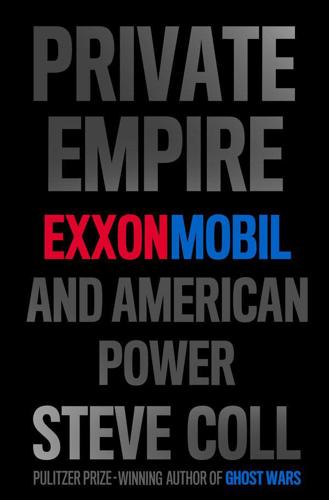
Private Empire: ExxonMobil and American Power
by
Steve Coll
Published 30 Apr 2012
In exchange for keeping the Russian government solvent and assuring Yeltsin’s reelection, Khodorkovsky and his partners paid rock-bottom prices for state oil and gas properties. They spent about $300 million for a recently assembled energy corporation called Yukos, whose underlying oil and gas reserves were worth about $5 billion. Khodorkovsky was not only opportunistic, he was ruthless; a few years later, during the Russian currency and banking crisis of 1998, he shifted assets around to protect his fortune, while leaving depositors and investors, including some of the world’s most respected investment banks, with large losses.13 As Russia’s economy recovered in 1999, Khodorkovsky adopted a new strategy. All of the billionaires who had made their fortunes as he had claimed legitimacy, but they remained vulnerable politically, in part because many Russians justifiably believed they had stolen their wealth.
…
W.) administration’s agreement with, 366–67 Chad-Kribi pipeline in, 163–66 C.I.A. operations in, 172–73, 174–75, 352–53 corruption and waste in, 353–54, 356, 359 Darfur crisis and, 356–57, 362–65 Déby coup in, 155–57 Esso’s exploration of, 157–58 ExxonMobil’s operations in, 159–60, 162–63, 167–70, 349–51, 354–55, 359, 361–62, 367–68, 370 F.A.R.F. suppressed in, 167 Habré regime of, 155 Kome-5 faculty of, 349–50, 354 Obama’s visit to, 368–70 oil deposits of, 157–58 rebel raid on, 363–64 resource curse and, 166–67, 360 Sahel region of, 172, 173 State Department and, 154, 354 Sudan conflict and, 351–52, 356–57, 363–64 tax dispute and, 367–68 U.S. relations with, 158–59, 170, 174–75 Wolfowitz-World Bank crisis of, 360–66, 367 World Bank-Exxon deal and, 163–69, 350, 353–56, 358 Chaplin, John Paul, xiii, 453–54, 456, 457, 465, 467, 469–70 Chaves, Milton, 424 Chavez, Hugo, xv, 408–9, 411–12, 424, 425, 426–28, 432–34 Orinoco operations seizure and, 422–23 royalties dispute and, 415–17 see also Venezuela chemical industry, 478–87 DINP and, 482–84, 486, 487 ExxonMobil lobbying and, 485–87 Hazard Index and, 481 phthalates used in, 481–87, 489–91 precautionary principle and, 480, 484–85 risk analysis and, 479–81, 484 Cheney, Lynne, 68, 270 Cheney, Richard B., xiv, 76, 77, 143, 145–46, 162, 173, 181, 204, 205, 235, 243–45, 255, 267, 270, 304, 323, 324, 406, 438, 462, 497 energy policy and, 69–70, 89–91, 320–21 Raymond’s friendship with, 70–71, 239–40, 247–48, 276 Chesapeake Energy, 591 Chesebro, Stephen, 262 Chevalier, Jeff, 611 Chevron Corporation, 31, 36, 40, 51, 70, 277, 322, 340, 488, 550, 578, 595–96, 608 Chad and, 159, 172, 368, 369–70 Iraqi oil industry and, 229, 568 Kazakhstan project of, 252 liquefied natural gas industry and, 581 lobbying by, 342, 540–41 Nigeria and, 454, 457, 463, 475 oil reserves of, 58 R.O.C.E. of, 596 Russian oil industry and, 254–55, 258–59, 273 Texaco merged with, 61, 275, 277 Venezuela operations of, 414, 415, 418 Chile, 287 China, People’s Republic of, 18, 81, 82, 83, 224, 240–45, 246, 247, 266, 272–73, 297, 303, 308, 310, 324, 345, 368, 415, 425, 440, 449, 453, 486, 512, 513, 546, 547, 555, 559, 617, 618, 620 Africa oil trade of, 241–42 “Go Out” policy of, 241 oil dependency of, 243–44 oil imports of, 240–41, 420, 422 U.S.
…
Bankston, 603 Daoud, Sofyan, 103 Darfur, 242, 356–57, 362, 363, 370, 519 Darmono, Bambang, 396 Dart, Kenneth, 262 Darwin, Charles, 134 Daschle, Tom, 446 Davidson, Steven K., xiii, 429–30, 433 Davies, Kert, 85, 181–84 Davis Polk & Wardwell, 59, 588 D. C. I. Group, 537 Déby, Idriss, xiv, 155–57, 160, 162–63, 166, 167–69, 172, 174–75, 351, 354, 355, 363–64, 497, 522 ExxonMobil’s tax dispute and, 367–68 money funneled to, 352–53, 358 mutiny feared by, 356, 357–58 Obama’s visit with, 368–70, 647n Wolfowitz-World Bank crisis and, 360–66, 367 Yamamoto’s meeting with, 365–66 Déby Itno, Hinda, 364 “Decade of Dirty Tricks: ExxonMobil’s Attempts to Stop the World from Tackling Climate Change, A,” 182 Deepwater Horizon disaster, 600, 601–4, 611 capping of, 617 deaths in, 603 errors prior to, 612–13 explosion and fire in, 602–3 failure of risk management in, 604 oil industry’s safety culture and, 614–16 oil released in, 603 public anger and, 617 Tillerson’s characterization of, 613–14 see also offshore drilling Defense Department, U.S., 173–74, 233, 280, 293, 516 Nigeria security issue and, 470–74 Defense Forces, Israeli, 516 Defense Intelligence Agency, 280 Defense Ministry, Chadian, 357 Defense Ministry, Chinese, 242 Dellinger, Walter, 406–7 Delozier, Mark, 6 Delta Working Group, 455–56 de Mahieu, Stephane, 522 Democratic Party, U.S., 302, 339, 501, 505, 506, 549, 550, 583, 650n ExxonMobil contributions to, 340–41, 495–96 “Denial and Deception: A Chronicle of ExxonMobil’s Efforts to Corrupt the Debate on Global Warming,” 182–83 DePasquale, Ricci, 391 Desert Storm, Operation, 228 D’Esposito, Steve, 26 Det Norske Veritas, 607 Deutsche Bank, 324, 574 Devon Energy, 591 Dingell, John, xiv, 76, 340–41, 488–92, 506, 551 DINP (diisononyl phthalate), 482–84, 486, 487, 489–92, 493 di Tiro, Hasan, xv, 96–97, 116, 117, 118, 119, 394 D.N.O., 568–69, 570 Dobriansky, Paula, 91 Dodson, J.
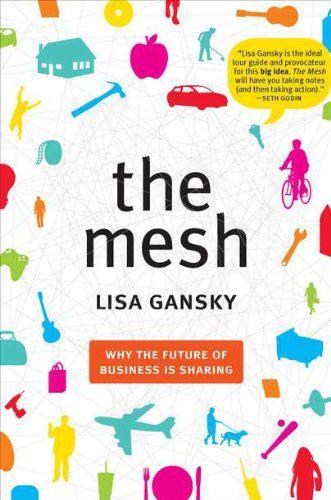
The Mesh: Why the Future of Business Is Sharing
by
Lisa Gansky
Published 14 Oct 2010
Recently, it created a cab-sharing service in New York and London called taxi2, which is free to passengers of any airline. Virgin execs like to just throw the spaghetti on the wall to see if it sticks. They’re looking for niches that are fertile beds for high-value customers and future juicy markets. Prosper, the peer-to-peer lending firm, discovered a niche opened up by the banking crisis. With people’s confidence waning in the big banks, some turned to Prosper as an alternative. Also, as the market restrained smaller banks from making local loans, Prosper was able to fill part of the gap. Some of the banks themselves turned to the company for help. Niches often occur when customers are restless about current choices, as they were with the banks.

The New Snobbery
by
David Skelton
Published 28 Jun 2021
Particular appreciation to Olivia Beattie, Lucy Stewardson, Vicky Jessop and the team at Biteback for putting faith in this book and guiding me through the process. INDEX Adams, Gladstone 1 Alipoor, Javaad 1 Ant and Dec 1 Arts Council 1 Arts and Humanities Research Council 1 Ashcroft, Lord 1 associative mating 1 Atlas Shrugged (Rand) 1 Attlee, Clement 1, 2, 3 Bale, Tim 1 banking crisis (2008) 1 BBC coverage of EU referendum 1 diversity targets in 1 identity politics/wokeism in 1 middle-class dominance of 1 working-class representation in 1 Bevin, Ernest 1 Beyond the Red Wall (Mattinson) 1 Blair, Tony 1, 2, 3 Bloodworth, James 1, 2 Blue Labour 1 Bohonos, Jeremy 1 Bourdieu, Pierre 1, 2 Brahminisation of Social Democratic parties 1 Brecht, Bertolt 1 Brennan, Jason 1 British Library 1, 2 British Medical Journal 1 British Museum 1 British Social Attitudes Survey 1, 2 Brooks, David 1, 2, 3 Brown, Gordon 1, 2 Buerk, Michael 1 Burchill, Julie 1 Bush, Vannevar 1 Butler, Dawn 1 Cable, Vince 1 Cameron, David 1, 2, 3, 4 Carry On films 1 Cartoon Museum 1 Cass, Oren 1 Cedefop polls 1 Centre for Cities 1 Chamberlain, Joseph 1 Change UK 1 Channel 4 News 1 Chartered Institute of Personnel and Development 1 Churchill, Winston 1, 2 Class Ceiling, The (Friedman and Laurison) 1 Clegg, Nick 1 Clinton, Bill 1 community building 1 Conservative Party economic policies of 1 membership of 1 pro-worker politics 1 quango appointments 1 on social issues 1 values of 1 working-class support for 1, 2 corporate governance 1 Countryfile 1 Covid pandemic 1, 2, 3, 4, 5, 6 Cowley, Tim 1 Cruddas, Jon 1 cultural capital 1 culture and cultural capital 1 and ‘four lads’ meme 1 and identity politics/wokeism 1 middle-class domination of 1 as national unifier 1 pro-worker policies 1, 2 representation of working class 1, 2 working-class values in 1 Davie, Tim 1, 2, 3 Davis, Andrew 1 Deneen, Patrick 1 dignity of work 1 Disraeli, Benjamin 1, 2, 3 Durham University 1 economics and corporate governance 1 and Covid pandemic 1 decline of skilled work 1 and dignity of work 1 impact of changes on working class 1 industrial policies 1 inevitability of change 1 investment in workers 1 and meritocracy 1 pro-worker policies 1, 2, 3 revival of manufacturing 1 and shareholder value theory 1 and social mobility 1 wage stagnation 1, 2, 3, 4 Economist, The 1 education and access to professions 1 David Skelton’s experience of 1 and identity politics/wokeism 1 pro-worker policies 1, 2 reinforcement of class divide after 1 universities in 1, 2 and vocational/technical education 1, 2 white working-class children in 1 working class let down by 1, 2 Eliot, T.
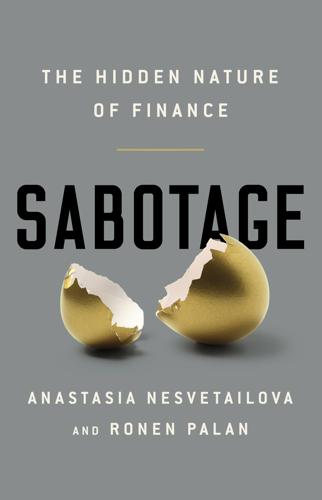
Sabotage: The Financial System's Nasty Business
by
Anastasia Nesvetailova
and
Ronen Palan
Published 28 Jan 2020
In fact, it only hastened its demise. Davíðsdóttir writes that ‘this loss was entirely predictable if the market turned and Kaupthing went out of business… [and] that it was, according to the OSP, clear from the beginning that the companies should never have received the loans’.9 Deutsche came out of the banking crisis in Iceland as the largest creditor to the failing banking system.10 Remarkably, Deutsche received money even as Kaupthing went belly up. An emergency loan by the Icelandic Central Bank was issued for four days on 6 October 2008 to strengthen Kaupthing’s subsidiary KSF (Kaupthing Singer & Friedlander, registered on the Isle of Man) and preventing the mother bank from collapse.
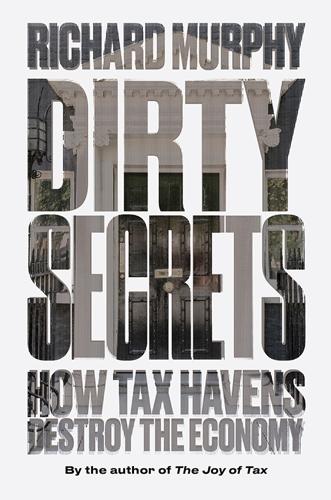
Dirty Secrets How Tax Havens Destroy the Economy
by
Richard Murphy
Published 14 Sep 2017
accountability 34, 39, 137–8, 140–1, 157 accountants 84, 87–9, 152–4 accounts and accounting 3, 31, 69–70, 80, 136–7, 138–42, 147 ActionAid 25, 67–8 Adam Smith Institute 85–6 adjustment process 163–4 administrative costs 37 advantages 40–1 aid dependency 116, 169 aircraft registrations 77 Alternative Minimum Corporation Tax (AMCT) 149–51 Amazon 26, 46 Anti-Corruption Summit, 2016, London 7, 11, 28, 48, 87 Arthur Andersen 39 artificial constructs 34–8 assets, offshore companies 79, 80 Association for Accountancy and Business Affairs 21 austerity 2 Australia 24–5, 156 Austria 15–16, 45, 94, 124 Bahamas, the 56, 77, 93–4 Baker, Andrew 46–7 Baker, Raymond, Capitalism’s Achilles Heel 106–7 bank accounts 80, 144 bankers 84 banking crisis, 2008 9 banking licences 152 banking secrecy 24, 55–6 Bank of England 52, 85 banks 90, 110–11, 143, 144, 152 Barclays 134–5, 136 Base Erosion and Profits Shifting (BEPS) 25–6, 114, 115 Base Erosion and Profits Shifting programme (OECD) 73, 126–7, 146–7, 148 Basler Handelsbank 55–6 Belgium 15–16, 94 Belize 174–5 beneficial ownership 47–8 registers of 138–45, 163 Bermuda 56, 74, 77, 93–4, 100 BHS 39 blacklisting scheme (OECD) 17–18, 157–8 Blair, Tony 45 Bloomberg 74–6 Boeing 76 booking locations 59 Booth, Philip 40 British Home Stores 141 British Virgin Islands 7, 15, 24, 81, 83, 87, 97 Brown, Gordon 102, 125, 175 Bush, George W. 13, 20, 20–1, 123–4 Cameron, David 26–7, 28, 46–8 Canada 156 capital access to 31–2 accumulation 39 free movement of 84 capital gains 63–4 Capitalism’s Achilles Heel (Baker) 106–7 captive insurance companies 77 Carr, Jimmy 62–3 Cayman Islands 15, 56, 57, 71, 83, 86, 87, 89, 91–2, 93–4, 97, 100, 102, 151 Center for Freedom and Prosperity 20–1, 41, 66–7 challenges 1 Chavagneux, Christian 5, 10 child mortality 116–17 China 69, 101 Christensen, John 21, 106 Christian Aid ‘Death and Taxes: the Toll of Tax Dodging’ 108 ‘False Profits: Robbing the Poor to Keep the Rich Tax-free’ 108 Churchill, Winston 162 Citizens for Tax Justice 76 City of London 52, 170 civil society 57 Clinton, Bill 45 Cobham, Alex 114 Code of Conduct on Business Taxation (European Union) 9, 13, 14–15, 124–5 codes of conduct 153–4 Common Reporting Standard 157 communications infrastructure 174 company accounts 31, 138–9 competition law 3 compliance rates 144–5 Convention on Mutual Administrative Assistance in Tax Matters 127 Cook, Geoff 86 corporations and corporate tax abuse 25–7, 67–78 accounts 69–70 locations 68–9 revenue loss 114–15 subsidiary companies 67–8, 69, 70, 72, 73 corporation tax Ireland 56 Malta 56–7 necessity of 146 rates 71, 75, 94 reform 145–51 revenues 115 UK 75 US system 74 corruption 11, 28, 169 country-by-country reporting 27–8, 46–7, 127, 129, 129–32, 133, 134–8, 147, 149, 151, 163 criminal activity 60 Crivelli, Ernesto 114 ‘Death and Taxes: The Toll of Tax Dodging’ (Christian Aid) 108 death duty 64–5 defence 41–2 Delaware 8, 55, 126, 142 Deloitte 25–6, 73, 87, 152 democracy 3, 161, 162 Denmark 156 Department for International Development (UK) 108 developing countries 27–8, 116, 120, 168–9 development funding 106 disaggregation 153 disclosure regimes 36, 37, 140–3, 153, 166–7 discovery mechanisms 142–3 discretionary trusts 82 divorce proceedings 65–6 domicile rule (UK) 54–5 Double Tax Agreements (OECD) 18 double-taxation 54, 57 Dubai 101 economic domination 92–3 economic growth 2, 85–6, 120, 168 employment law 3 Enron 39 environmental regulation 3 equality 178 Ernst & Young 87 eurodollar market 51–2 European Commission 138 European Union 4, 73, 98 Code of Conduct on Business Taxation 9, 13, 14–15, 124–5 corporate tax rates 75 country-by-country reporting 134 disclosure regime 142 information exchange 15–16 Savings Tax Directive 9, 15–17, 48, 94 tax gap estimates 156 tax haven initiatives 23, 24 tax havens 15–16 tax withholding 16 and unitary taxation 149 exchange rates, fixed 51–2 EY 25–6, 73, 87, 152 ‘False Profits: Robbing the Poor to Keep the Rich Tax-free’ (Christian Aid) 108 Farage, Nigel 45 Faroe Islands 18 Federal Trade Commission (US) 29–30 fees 79, 89 finance curse, the 92–3, 171 finance industry, post–tax haven 169–76 Financial Action Task Force (FATF) 60, 95 financial offshoring 8 financial risk 10 Financial Secrecy Index 22–4, 57, 87, 184–9 findings 96–103 indicators 93–6, 191–2 rankings 193–7 Financial Times 75, 78, 119, 142 Ford Foundation 93 Foreign Accounts Tax Compliance Act (FATCA) (US) 17, 99, 126, 158 Fortune 500 companies 76 foundations 35, 81.
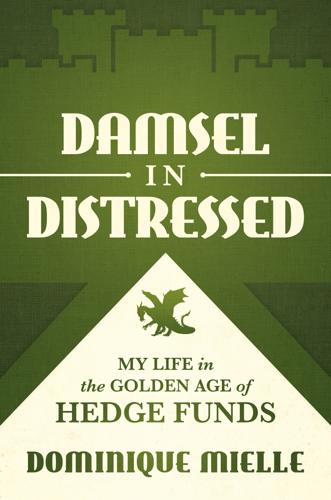
Damsel in Distressed: My Life in the Golden Age of Hedge Funds
by
Dominique Mielle
Published 6 Sep 2021
Yet Greenspan opined: Credit default swaps have been an extraordinarily valuable tool in the sense a substantial proportion of loans that are made, are made by leveraged institutions. And in previous decades, they left those loans on their balance sheets. And when there was stress, they had a banking crisis. Or you had savings and loan crisis, or something of that nature. With the credit default swap, you have the originators of loans capable of selling off the credit risk to those with far less leverage, who are willing to accept the risk at a price. And since we’ve had credit default swaps, there has not been a major financial institution undermined.
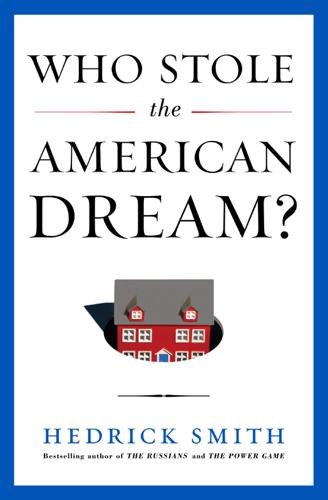
Who Stole the American Dream?
by
Hedrick Smith
Published 10 Sep 2012
In 2004, Robert Shiller, whose book Irrational Exuberance had foretold a stock market bust in 2000, reported ominous housing bubbles in key regional markets, warning that speculative fever could bring widespread mortgage defaults. Shiller recalled that waves of mortgage defaults in 1929 had contributed to the biggest banking crisis in U.S. history in the 1930s. A few months later, in early 2005, Shiller’s warning was more stark. The housing frenzy, he said, “may be the biggest bubble in U.S. history”—destined to end with a crash. Renowned global investor Sir John Templeton forecast an inevitable downturn. “When home prices do start down,” he said, “they will fall remarkably far” and cause widespread bankruptcies.
…
But in the Senate, the banking lobby succeeded in getting the bankruptcy provision stripped from the bill. Senator Richard Durbin, the measure’s main sponsor, was almost speechless with frustration and incredulous at the political clout that banks still had in Congress. “Hard to believe in a time when we’re facing a banking crisis that many of the banks created, they are still the most powerful lobby on Capitol Hill,” Durbin told a radio interviewer, “and they frankly own the place!” If middle-class Americans find the political domination of the banks unacceptable, they will have to make housing fairness a more salient political issue through direct citizen action.
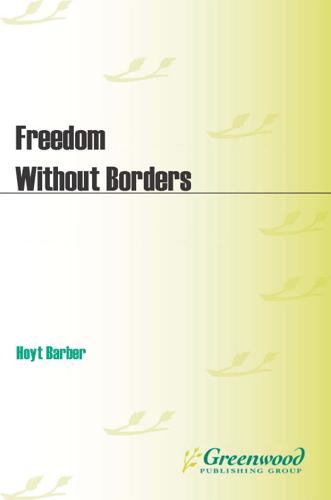
Freedom Without Borders
by
Hoyt L. Barber
Published 23 Feb 2012
Let’s take a look at some of the financial challenges and threats we face and then have a glance at what financial opportunities may come out of current and future trends that we can possibly exploit ourselves, that is, while we still have the option. The Economics of Sovereign Investing 39 We have a banking crisis in the United States and Europe that just doesn’t want to go away. Many of the financial institutions in these Western countries are bloated with toxic waste that’s listed as “assets” on their books. These outfits engage in creative accounting to disguise their true anemic financial state, including the reality that many are actually insolvent and others are posting multibillion-dollar losses.
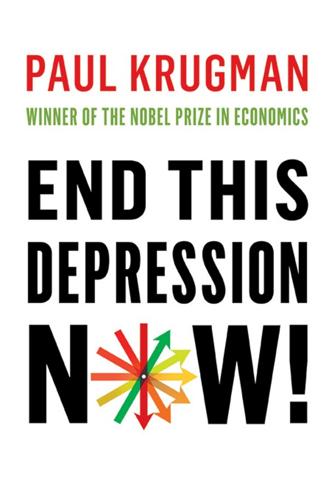
End This Depression Now!
by
Paul Krugman
Published 30 Apr 2012
How did those of us who took the numbers seriously know that it was grossly inadequate? The answer is twofold: history plus an appreciation of just how big the U.S. economy is. History told us that the slumps that follow a financial crisis are usually nasty, brutish, and long. For example, Sweden had a banking crisis in 1990; even though the government stepped in to bail out the banks, the crisis was followed by an economic slump that drove real (inflation-adjusted) GDP down by 4 percent, and the economy didn’t regain its precrisis level of GDP until 1994. There was every reason to believe that the U.S. experience would be at least as bad, among other things because Sweden could alleviate its slump by exporting to less troubled economies, whereas in 2009 America had to deal with a global crisis.
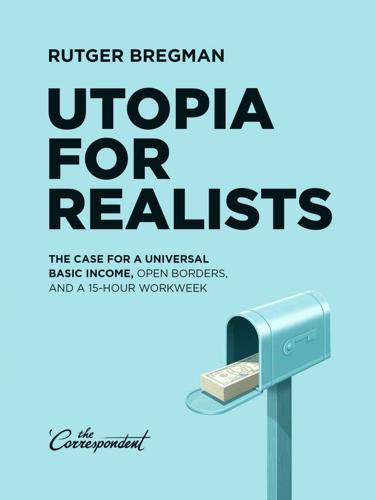
Utopia for Realists: The Case for a Universal Basic Income, Open Borders, and a 15-Hour Workweek
by
Rutger Bregman
Published 13 Sep 2014
Cummings (ed.), The Paradox of Professionalism. Lawyers and the Possibility of Justice (Cambridge, 2011), p. 71. 5. Aalt Dijkhuizen, “Hoogproductieve en efficiënte landbouw: een duurzame greep!?” (March, 2013). https://www.wageningenur.nl/upload_mm/a/3/9/351079e2-0a56-41ff-8f9c-ece427a42d97_NVTLmaart2013.pdf 6. Umair Haque, “The Irish Banking Crisis: A Parable,” Harvard Business Review (November 29, 2010). 7. Ann Crotty, “How Irish pubs filled the banks’ role in 1970,” Business Report (September 18, 2013). 8. Antoin Murphy, “Money in an Economy Without Banks – the Case of Ireland,” The Manchester School (March 1978), pp. 44-45. 9. Donal Buckley, “How six-month bank strike rocked the nation,” Independent (December 29, 1999). 10.
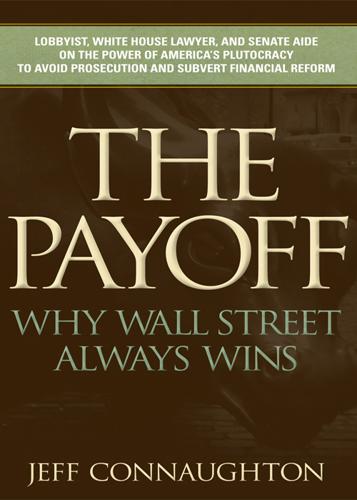
The Payoff
by
Jeff Connaughton
His concluding paragraphs were prophetic, and explained why a movement of citizen and businesses should insist on meaningful restraints on Wall Street: Many of the opponents of Wall Street reform make the dubious claim that the recovery is being held back by uncertainty about future regulations and taxes. In reality, it is being held back by the financial shock and the fact that we are still in a period of financial instability and undergoing an excruciating process of deleveraging. Even now it is unclear whether a European banking crisis based on their holdings of sovereign debt will continue to impede that recovery. [We must] build a financial system on a firmer foundation. The American economy cannot succeed unless we restore and maintain financial stability. Two years later, the largest European banks—the standard for why the United States needs its own megabanks to compete globally, senators opposed to Brown-Kaufman had said—are still in crisis, causing continued financial instability.

Inequality and the 1%
by
Danny Dorling
Published 6 Oct 2014
Leigh Scott, ‘How the American University was Killed, in Five Easy Steps’, OpEdNews.com, 19 August 2012, at opednews.com. 3. Work 1. J. Stiglitz, ‘Inequality Is a Choice’, New York Times, 13 October 2013, at opinionator.blogs.nytimes.com. 2. Including a growing number of Nobel Laureates such as Joseph Stiglitz and Robert Shiller (see Chapter 1, above). Ever since Sweden’s own banking crisis, more laureates have been awarded to more sceptical economists. 3. K. A. Weeden and D. N. Grusky, ‘Inequality and Market Failure’, American Behavioural Scientist, 2013 (pre-print). 4. B. Bell and J. V. Van Reenen, ‘Extreme Wage Inequality: Pay at the Very Top’, Centre for Economic Performance, Occasional Paper 34 (2013), at cep.lse.ac.uk. 5.
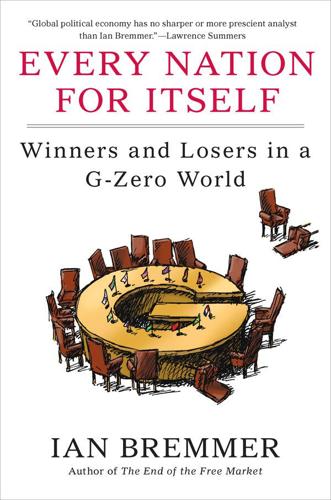
Every Nation for Itself: Winners and Losers in a G-Zero World
by
Ian Bremmer
Published 30 Apr 2012
It’s a period of transition that will give way to something else. We cannot know whether the G-Zero will last five years or fifteen, but we know that while it exists, it is an incubator of catastrophe. Nor can we know what this catastrophe might look like. A meltdown in European financial markets sparks a banking crisis much larger than the 2008 version, and this time feuding political officials don’t move quickly enough to contain the fallout. Or an influenza epidemic in Asia goes global because leaders of hot-zone countries rely on secrecy to cover their backs rather than the transparency needed to build an effective international response.
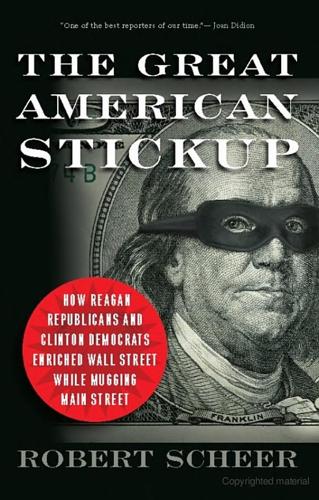
The Great American Stickup: How Reagan Republicans and Clinton Democrats Enriched Wall Street While Mugging Main Street
by
Robert Scheer
Published 14 Apr 2010
Paulson had been selected by Bush to run Treasury on the recommendation of the president’s chief of staff, Joshua B. Bolton, a former director of the Office of Management and Budget and a Goldman executive. Nor was Paulson the first Goldman honcho to be named Treasury secretary, for Robert Rubin had provided exactly that precedent in the Clinton administration. But Paulson used the banking crisis as a justification for quickly putting Goldman employees and alums in charge of key outposts concerning the bailout. Those close connections between the Treasury Department and his old firm—“Government Sachs”—were detailed in a New York Times story October 19, 2008, in which reporters Julie Creswell and Ben White cited in devastating detail examples of just how Goldman alums had come to control the government’s bailout, which among other things benefited Goldman enormously: “It is a widely held view within the bank that no matter how much money you pile up, you are not a true Goldman star until you make your mark in the political sphere.
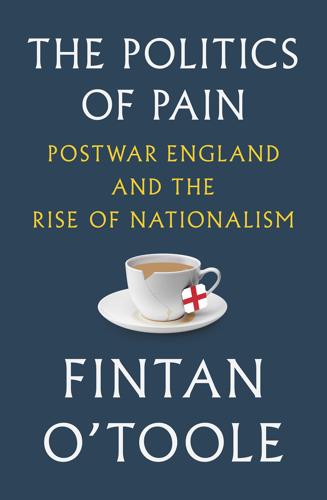
The Politics of Pain
by
Fintan O'Toole
Published 2 Oct 2019
As Donald Trump Jr wrote in March 2019, ‘In a way, you could say that Brexit and my father’s election are one and the same’4 – the same rhetoric of the people versus the elites was deployed using the same dark arts of mass persuasion. It is equally obvious that the stunning result of the Brexit referendum was merely the most dramatic expression of a much wider sense of alienation in Europe. The long years of budgetary austerity after the great banking crisis of 2008, gross inequalities in the division of the spoils of economic globalization and the huge wave of refugees from the catastrophic collapse of Syria created a potent cocktail of popular anxieties. Across most of Europe, the reactionary Right has both fed and been fed by those anxieties. The old coalitions of Social Democrats and Christian Democrats struggled almost everywhere to maintain their footing on a centre ground that was rapidly narrowing.
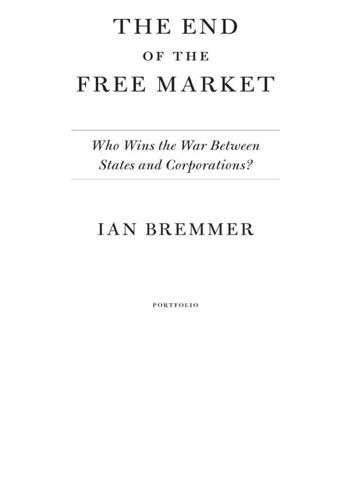
The End of the Free Market: Who Wins the War Between States and Corporations?
by
Ian Bremmer
Published 12 May 2010
This lack of transparency, including secrecy about the extent of losses during the financial crisis and global recession of 2008 to 2009, complicates efforts to gauge their relative sizes. But several independent sources have constructed estimates based on available evidence, and we do know that some funds took heavy losses by providing international banks with tens of billions of dollars in capital before the extent of the banking crisis became clear.31 The table on page 76 provides a snapshot of the relative size of the largest sovereign wealth funds in March 2009. The numbers are based mainly on figures gathered by the Sovereign Wealth Fund Institute, Sovereign Wealth Funds News (sovereignwealthfundsnews. com), and International Financial Services London Research.

Stigum's Money Market, 4E
by
Marcia Stigum
and
Anthony Crescenzi
Published 9 Feb 2007
Instead, banking in the United Kingdom thrived under the informally administered Bank of England regulation described above. By the late 1970s, several factors made this situation untenable. The first was the 1973 banking crisis. In the early 1970s, there was a credit boom, a money supply boom, and a consequent boom in home prices. At the time, a lot of second-tier banks existed merely to take deposits and relend them to property companies with whom they were sometimes affiliated. These banks geared up like crazy, and when the property bubble burst, many were in deep trouble. The resulting mess, dubbed the Banking Crisis of 1973, was dealt with by the Bank of England. To prevent endemic contagion, the bank nursed back to health those banks that did matter, while letting others fail.
…
The many foreign banks operating in the United Kingdom were treated in precisely the same way as were domestic banks. Another wrinkle added to U.K. banking at this time was the setting up of a deposit protection fund to protect small depositors in case of a bank failure. The Banking Act of 1987 The first British banking crisis was quite broad-based. A second bank crisis occurred when a second-tier British bank, Johnson Matthey, failed. This bank failure was regarded as serious because Johnson Matthey was one of the five members of the British bullion market. Thus, its failure could have affected the other banks in the bullion market and thereby the bullion market worldwide.
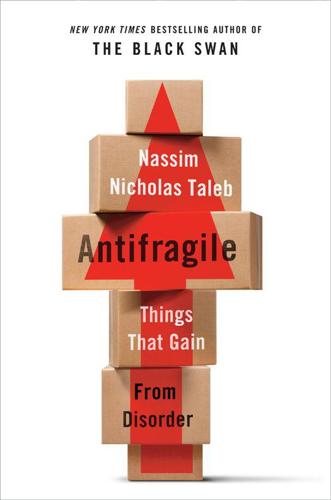
Antifragile: Things That Gain From Disorder
by
Nassim Nicholas Taleb
Published 27 Nov 2012
Well, nature, unlike Fragilista Greenspan, prepares for what has not happened before, assuming worse harm is possible.4 If humans fight the last war, nature fights the next one. Your body is more imaginative about the future than you are. Consider how people train in weightlifting: the body overshoots in response to exposures and overprepares (up to the point of biological limit, of course). This is how bodies get stronger. In the aftermath of the banking crisis, I received all manner of threats, and The Wall Street Journal suggested that I “stock up on bodyguards.” I tried to tell myself no worries, stay calm, these threats were coming from disgruntled bankers; anyway, people get whacked first, then you read about it in the newspapers, not in the reverse sequence.
…
Every month, £3,082 is deposited in his local Nat West checking account. He spends a portion of it for the mortgage on his house west of London, the utilities, and feta cheese, and has a bit left for his savings. He used to wake up on Saturday morning, the day when people stretch and linger in bed, anxiety free, telling himself “life is good”—until the banking crisis, when he realized that his job could be “made redundant.” Unemployment would seriously hit him hard. As a personnel expert, he has seen the implosions of long careers, with persons who, laid off at the age of fifty, never recovered. George, who lives on the same street as his brother, drives a black taxi—meaning he has a license for which he spent three years expanding his frontal lobes by memorizing streets and itineraries in Greater London, which gives him the right to pick up clients in the streets.

Lonely Planet Iceland (Travel Guide)
by
Lonely Planet
,
Carolyn Bain
and
Alexis Averbuck
Published 31 Mar 2015
What about the road network, accommodation quality, or overall value for money (a common gripe, especially with prices rising each season)? How can travellers be educated to minimise their impact? And, perhaps most importantly, how can Icelanders avoid becoming marginalised in their own country? An Energetic Future Tourism now exceeds fishing as Iceland's dominant industry, and has helped Iceland bounce back from its banking crisis. But to ensure that prosperity continues, even if the tourism boom comes to a crashing halt, Iceland is shoring up its position as a green-energy superpower, looking to export its know-how (and quite possibly its actual energy, transmitted via undersea cables) to foreign shores. It's wooing more big-business energy users, to try to convince them to set up shop (large aluminium smelters are already here for the cheap, abundant power).
…
General Secretary Mikhail Gorbachev and President Ronald Reagan agree to meet at a summit in Höfði House, Reykjavík. 2006 The controversial US military base at Keflavík closes down after 45 years in service; the government also approves the resumption of commercial whaling. 2008 The worldwide financial downturn hits Iceland particularly hard, precipitating the worst national banking crisis ever when all three of the country’s major banks collapse. 2009 Iceland formally applies for EU membership – a contentious issue among the population. Formal accession talks begin in 2010 but are suspended in 2013, and the application is withdrawn by a new government in 2014. 2010 The volcano under Eyjafjallajökull glacier begins erupting in March.
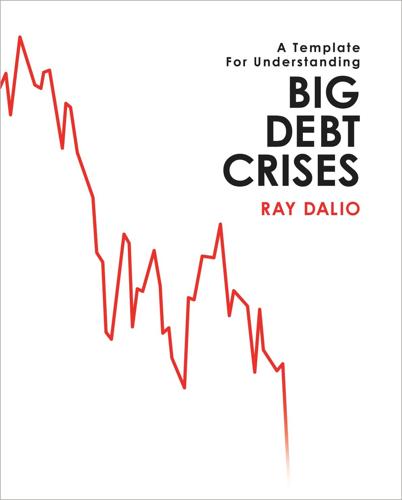
Big Debt Crises
by
Ray Dalio
Published 9 Sep 2018
Piketty, Thomas. “Le capital au 21e siècle.” Editions du Seuil (September 2013), http://piketty.pse.ens.fr/files/ capital21c/en/Piketty2014FiguresTables.pdf. Roosevelt Sr., Franklin Delano. Fireside Chat 1: On the Banking Crisis (Washington, DC, March 12, 1933), Miller Center, https://millercenter.org/the-presidency/presidential-speeches/march-12-1933-fireside-chat-1-banking-crisis. Sastry, Parinitha. “The Political Origins of Section 13(3) of the Federal Reserve Act.” FRBNY Economic Policy Review (2018), https://www.newyorkfed.org/medialibrary/media/research/epr/2018/epr_2018_political-origins_sastry.pdf.

Slouching Towards Utopia: An Economic History of the Twentieth Century
by
J. Bradford Delong
Published 6 Apr 2020
The stock market crash of late 1929 was a consequence of both that shock and of overleverage, and was itself a second, major confidence shock that quickly reverberated around the entire world. Then, a year later, came a banking crisis in the United States. The thought that the money you had been depositing in the bank might get locked away and become inaccessible—or vanish completely—caused a run on banks. Bank deposits ceased to be fully “money” because you could not be confident they would still be there when you needed them. So people demanded more money, this time insisting that it be in the particular form of visible cash, further boosting the excess demand for money. March 1931 saw a second banking crisis. The summer and fall of 1931 saw panics in other countries, which made the Great Depression great worldwide—and greatest in Germany.10 Up until late 1930, people continued clamoring for cash.

Empire of AI: Dreams and Nightmares in Sam Altman's OpenAI
by
Karen Hao
Published 19 May 2025
He regularly offers his resources, whether opening up his houses for people to stay in or supporting them financially. He has gone out of his way to support even complete strangers, once sending funds to a man in Ethiopia who emailed him seeking his help to buy a laptop, one person recalls. During the 2023 Silicon Valley Bank crisis, when a run on a critical financial institution for Valley startups led to the largest bank failure since 2008, he sent money without any paperwork to companies to save them from shutting down or laying off people, remembers Krisiloff. “It’s an extremely rare trait,” Groom says, “and that trait has really rubbed off on me—the generosity.
…
See also data centers cooling, 274–75, 277–78, 288–90, 294 Microsoft, 149 OpenAI, 257, 260–61, 267 sex bots, 179 sexism, 162, 344–45 Shear, Emmett, 9–10, 34, 367, 369–70 Shopify, 46 Sidor, Szymon, 6, 8, 145, 148–49, 244–45, 318–19, 366 Sierra, 375 sign-up incentive, 267 Silicon Valley Bank crisis of 2023, 41–42 Silverman, Carolyn, 18 Simo, Fidji, 376 Sky, 391 Slack, 3, 9, 81, 156, 240, 263–64, 319, 358, 374, 389, 402–3 slavery, 89, 208, 400 Slowe, Chris, 34 Solon, Olivia, 103 Song, Dawn, 108, 114 Sora, 375 source code, 57–58 South Africa, 104–5, 115 South Korea, 59 SpaceX, 23–24, 25, 28, 50, 368 Spanish conquest of Chile, 271, 272 sparse models, 177–78 specism, 24 speech recognition, 78, 92, 100, 102, 118, 244, 309, 411 Whisper, 244, 247, 267, 413 Stable Diffusion, 114, 137, 236, 242, 284 Stack Overflow, 183 standardized tests, 91–92, 245–46 Stanford University, 52, 74, 102, 137, 173, 235, 418 AI Index, 105 AI Salon, 24 Altman at, 31–32, 39, 142 StarCraft II, 66 Starlink, 154 Steyerl, Hito, 137–38 Strawberry, 374, 375, 404 stress testing, 179–80 Stripe, 41, 46, 55, 58, 73, 82 Strubell, Emma, 159–60, 171–73, 309 Suleyman, Mustafa, 320, 384–85 SummerSafe, 68 Summers, Lawrence “Larry,” 11, 375 Superalignment, 316–17, 353, 387–88 Superassistant, 247–49, 258–59, 381 superintelligence, 19, 24, 27, 55 Superintelligence (Bostrom), 26–27, 55, 122–23 Suri, Siddharth, 193–94 surveillance capitalism, 101–2, 103–4, 111, 133, 138 surveillance drones, 52 Sutskever, Ilya Alignment Manhattan Project, 315–18 Altman and, 347–48, 349, 386–87, 397, 401, 406–7 firing and reinstatement, 1–6, 7, 9–12, 365–66, 368, 373–74 leadership behavior, 340, 353–59, 363–64 author’s interview, 78–81, 159–60 background of, 47 board of directors and oversight, 322–23 code generation, 152 culture of OpenAI, 53–54 deep learning and neural networks, 100–101, 109, 110 departure of, 386–87, 398, 401 DNNresearch, 47, 50, 98, 100 “Feel the AGI,” 120, 254–55 founding of OpenAI, 28, 46, 47–51 at Google, 50, 100–101 governance structure of OpenAI, 61–63 Hinton and, 47, 100–101, 109, 117–18, 121, 254 ImageNet, 47, 59–60, 100–101, 101, 117–18, 259 leadership of, 53–54, 58–59, 61–62, 63–65, 69 Murati and, 343, 344, 347–48, 349 Omnicrisis and, 396–98, 401 paranoia of, 148, 149, 441n personality of, 3–4, 119–20 Q* (Strawberry), 373–74, 404 research road map, 59–61 Safe Superintelligence, 405 scaling, 117–20, 133, 159–60, 373–74 Superalignment, 316–17, 353, 387 Toner and, 325, 343, 351–52, 353–55, 359–60 Transformers, 121–22 Swift, Taylor, 2 symbolists (symbolism), 94–95, 97, 99–100, 109–10, 116, 217 Syrian refugees, 137–38 T Tay, 153 Taylor, Bret, 11, 375 technological revolutions, 16, 88–89, 93 empires of AI, 16–19, 197, 222–23, 270, 414, 418, 420 technological unemployment, 78–81 techno-nationalism, 308–11 Techworker Community Africa (TCA), 416–17 Te Hiku Media, 411–14 Telemachus, 279 Tenaya Lodge, 255 “10x engineer,” 82, 83, 142–43, 175, 177–78, 242 te reo Māori, 409–13 Tesla, 63, 64, 86, 194 Autopilot, 64, 107–8, 109 Model X, 69, 344 Murati at, 69, 344 Test of Time Award, 259, 374 text generation, 112, 113, 121, 124 text-to-image, 176–77, 234–38.

The Handbook of Personal Wealth Management
by
Reuvid, Jonathan.
Published 30 Oct 2011
203; Regulation 204; Protected rights 205; The future for SIPPs 205; Postscript 206 177 Appendix: Contributors’ contact details Index Index of advertisers 183 191 199 207 212 214 private client services XII Trusts, probate and tax planning Residential property purchases and sales Relationships: formation and breakdown and the consequences Contact Ian Lane, Partner 020 7293 4801 ilane@dac.co.uk www.dac.co.uk/privateclient XIII ឣ Nil Rate Band Will Trusts: Are they still of value? Way back in October 2007 in the time before the banking crisis, ‘the credit crunch’, falling markets, massive job losses and recession (or is it depression!) the UK Government made a surprise announcement of a change to the inheritance tax legislation that was to have a profound effect on tax planning using Wills. This was the announcement of the introduction of the transferable Nil Rate Band.
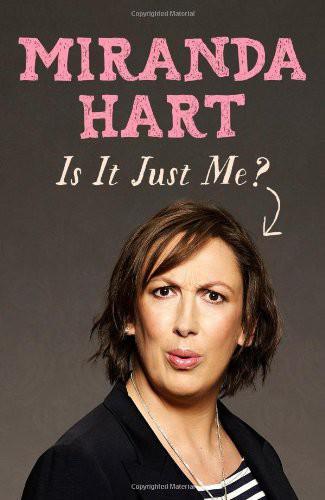
Is It Just Me?
by
Miranda Hart
Published 14 Apr 2012
You know the drill; please tick if you have achieved any of the following: Had an imaginary conversation with a pet Sat on a rugby ball and worried about getting pregnant Discovered or re-discovered Arctic Roll Eaten the contents of someone’s fridge whilst babysitting Let yourself be a child again Carried off a fascinator at a wedding Shouted ‘FLAPS!’ in a marquee Made a David Hasselhoff out of chocolate buttons Confessed to not understanding the bank crisis Galloped in an art gallery Reached a wonderful and almost Zen-like state of self-acceptance, possibly to the point of running up to strangers in the street, grabbing them by the shoulders and shouting, ‘Hey! BE TRUE TO YOU!’ Obviously, MDRC, one of the above is a tad more important than the others.
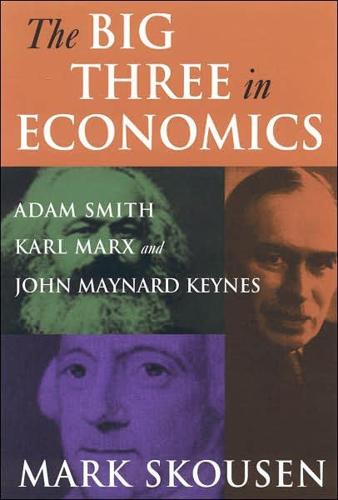
Big Three in Economics: Adam Smith, Karl Marx, and John Maynard Keynes
by
Mark Skousen
Published 22 Dec 2006
Criti&s of the gold standard have pointed out that in a crucial time, 1931-32, the Federal Reserve raised the discount rate for fear of a run on its gold deposits. If only the United States had not been shackled by a gold standard, they argued, the Federal Reserve could have avoided the reckless credit squeeze that pushed the country into depression and a banking crisis. But Friedman and Schwartz dispute this widely held belief. They point out that the U.S. gold stocks rose during the first two years of the contraction, but the Fed once again acted ineptly. "We did not permit the inflow of gold to expand the U.S. money stock. We not only sterilized it, we went much further.
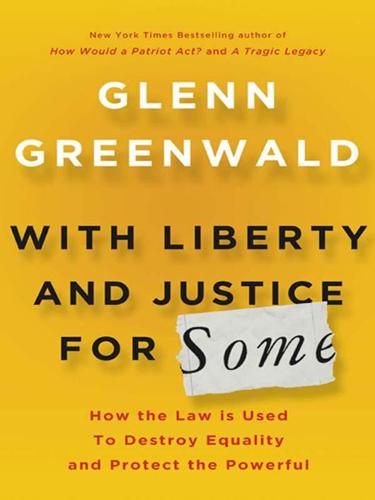
With Liberty and Justice for Some: How the Law Is Used to Destroy Equality and Protect the Powerful
by
Glenn Greenwald
Published 11 Nov 2011
The ability of financial elites to avoid any legal consequences even for the most egregious acts of wrongdoing is now so self-evident that it has been acknowledged even in the most establishment-sympathetic venues. In April 2009, the second-highest-ranking Democrat in the United States Senate, Dick Durbin of Illinois, blurted out on a local Chicago radio station: “The banks—hard to believe in a time when we’re facing a banking crisis that many of the banks created—are still the most powerful lobby on Capitol Hill. And they frankly own the place.” Paul Blumenthal of the transparency group Sunlight Foundation emphasized the eye-popping dollar amounts behind Durbin’s comment. You would think that this might be an exaggeration, or just a rhetorical bit of anti-bank populism, but if you look at the numbers, Durbin isn’t wrong….
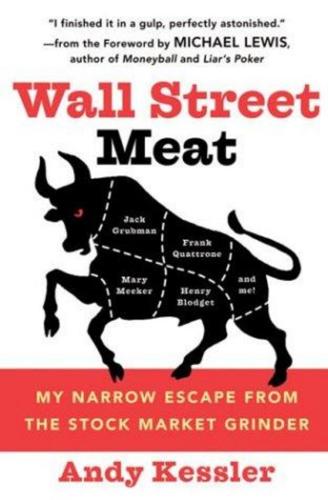
Wall Street Meat
by
Andy Kessler
Published 17 Mar 2003
Jack paid a $15 million fine and is now barred for life from the securities business. My guess is that is a relief to him. As a boxer, he knows how to get up from a knockout punch. · · · There are plenty of smoking guns to blame for the Internet and Telecom and Technology Bubble. None are very satisfying. Fed Chairman Alan Greenspan pumped the money supply to stave off a banking crisis based on Y2K computer problems and the excess money went into the stock market. Or how about excessive stock options led greedy management to fudge earnings numbers to pump up their stock. Yeah, maybe. It was structural problems on Wall Street that created the bubble, though excess money supply and corrupt management certainly contributed lots of the hot air.

The Economic Singularity: Artificial Intelligence and the Death of Capitalism
by
Calum Chace
Published 17 Jul 2016
Horses had nothing else to offer, and their population collapsed. In chapter 3.3 we heard the response that this is merely a revival of the Luddite fallacy, and the rest of chapter 3 explored this debate in detail. We considered whether technological automation is biting yet, and saw that the US economy has added a significant number of jobs since the banking crisis, although incomes have stagnated-. It is hard to disentangle the effects of technology on the job market from the effects of globalisation and other effects, but it does not seem likely that machine intelligence is creating widespread unemployment yet. In chapter 3.4 we reviewed the state of the art in artificial intelligence, and in chapter 3.5 the exponential rate at which it is improving.
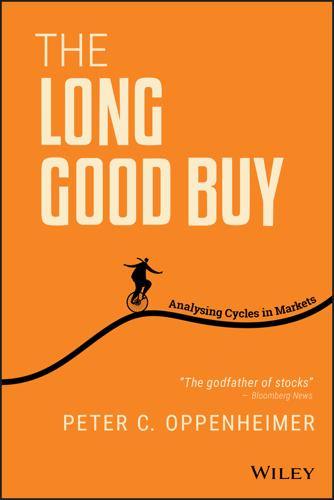
The Long Good Buy: Analysing Cycles in Markets
by
Peter Oppenheimer
Published 3 May 2020
Over time, most bear markets are a function of one (and sometimes a combination) of three triggers: Rising interest rates and/or inflation expectations together with fear of recession. An exogenous and unexpected shock that increases uncertainty and pushes down stock prices (as the required risk premium rises). The bursting of a major asset price bubble and/or the unwinding of structural imbalances that result in deleveraging and often a banking crisis. In exhibit 6.2, using these triggers as a starting point, I have applied a classification to each bear market. Although the classification of each event here is somewhat subjective, it nonetheless attempts to group bear markets into different categories based on similar characteristics over the time series history.

Shadow Work: The Unpaid, Unseen Jobs That Fill Your Day
by
Craig Lambert
Published 30 Apr 2015
Contrast this with the preparation many banking executives get today: an MBA with specialization in finance and a penchant for high-risk derivatives. If these bankers had gone out on hundreds of mortgage appraisals like my dad did, seeing the actual houses for which they were lending money and meeting real, live borrowers, would the 2008 banking crisis have happened? Starter positions, including summer and part-time gigs, are where young people learn how to hold down a real job. (That means a job with wages—not a volunteer job, not an unpaid internship, not an NGO project in a developing country.) This is where they learn to show up on time, appropriately dressed and groomed, with a professional attitude, and learn habits like cooperation, punching a clock, and service with a smile.
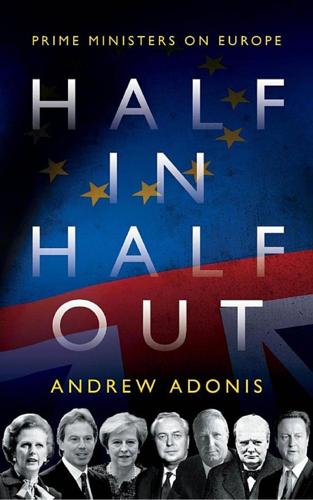
Half In, Half Out: Prime Ministers on Europe
by
Andrew Adonis
Published 20 Jun 2018
Cameron and others around him had lost confidence in the views of those, most notably in the Foreign Office, who harked back to an earlier era and suggested he should seek a more central role in developments which he, rightly, saw as being bound up solely with monetary union and not relevant to our position – in the single market but permanently outside the Eurozone. Monetary union radically changed the dynamics of the EU, and the impact of the financial crisis was to bring latent governance tensions to a head. There could be no case for the UK, outside monetary union and dealing alone with its own extraordinary banking crisis – bearing huge costs of UK bank bailouts and resolutions – to participate at further taxpayer expense in the resolution of the Eurozone’s crisis. This could be – and often was – represented across the Channel as in some way indicating a lack of UK solidarity at a time of crisis. That criticism of the UK’s transactional approach carries real force on some issues.
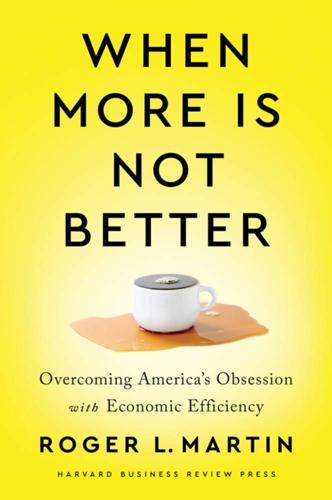
When More Is Not Better: Overcoming America's Obsession With Economic Efficiency
by
Roger L. Martin
Published 28 Sep 2020
We can protect people against all the flu viruses we know, but we can’t guard against the next adaptation of the virus. We can similarly protect people against the exact repeat of past corporate abuses. But because the players in the system adapt their behavior to game the new legislation, the next banking crisis is not going to be an exact replica of the last. What’s more, establishing complicated rules for a game understood in its entirety by no one will inevitably offer opportunities for gaming from the start—in part because the consent of would-be gamers is necessary for the law to pass in our democratic system.
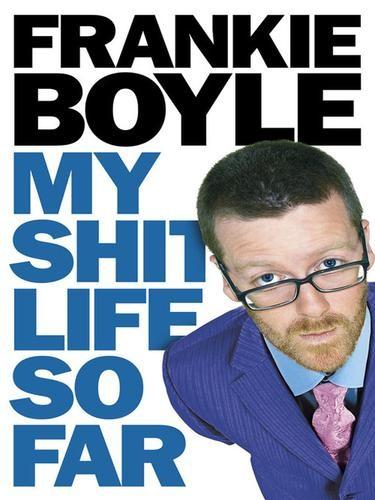
My Shit Life So Far
by
Frankie Boyle
Published 30 Sep 2009
It was around this time that the whole Jonathan Ross/Russell Brand debacle was hitting the news, and I got dragged into it by a variety of idiots. Russell Brand is actually one of my favourite celebrities. The manner of his death will give Michael Hutchence back his dignity. I think that whole ‘debate’ was just a distraction from the banking crisis, the war and the looming recession. It was something everybody could have an opinion about that we all knew didn’t actually matter in the real world, where things had just started to look pretty scary. Anyway, the Director-General of the BBC was on Newsnight and the presenter brought up me doing a gag on Mock the Week.

The Crisis of Crowding: Quant Copycats, Ugly Models, and the New Crash Normal
by
Ludwig B. Chincarini
Published 29 Jul 2012
About a block down Aeschengrabbe Strasse is the former UBS building, which became a BIS office in 1999. This office hosts BIS trading and banking operations, routing hundreds of billions of central bank reserves through the markets every day. It’s the Basel Committee that had the most to do with the banking crisis, because it set standards for banks across the world.1 The committee meets four times per year. The BIS provides its secretariat and expert advisor subcommittees. The committee has no formal supranational supervisory authority and its rules have no legal force. They are regulatory guidelines only.
…
Wall Street Journal, December 16, 2011. Fabozzi, Frank J. Bond Markets: Analysis and Strategies. Prentice Hall, 1999. Financial Crisis Inquiry Commission. The Financial Crisis Inquiry Report. Public Affairs, 2011. Financial Services Authority. “The Turner Review: A Regulatory Response to the Global Banking Crisis.” March 2009. Fisk, Margaret Cronin. “JPMorgan, Bank of America Face ‘Hydra’ of Foreclosure Probes.” Bloomberg, October 6, 2010. Fitzpatrick, Dan. “BofA Nears Huge Settlement.” Wall Street Journal, June 29, 2011. Fitzpatrick, Dan and Jean Eaglesham. “Wachovia Targeted Over Sale of CDOs.” Wall Street Journal, April 4, 2011.
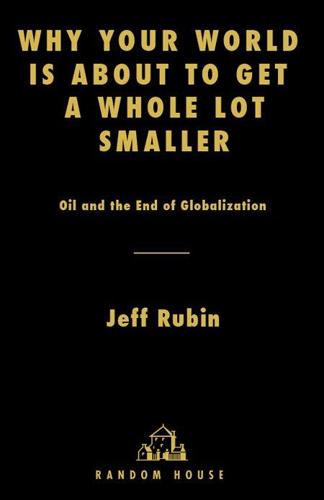
Why Your World Is About to Get a Whole Lot Smaller: Oil and the End of Globalization
by
Jeff Rubin
Published 19 May 2009
Not only was the interest-free teaser period about to end, but the interest rates that subprime mortgage holders would now have to start paying were almost double the rates when they first got the mortgages. The rest is history. The unraveling of the subprime mortgage credit bubble has resulted in the worst postwar property crash in America and the worst banking crisis since the Great Depression. But if oil prices had stayed at $20 or $30 per barrel, where they were at the beginning of the decade, inflation would have never risen and neither would interest rates. And if we had stayed in the world of easy money and easy credit, folks in Cleveland would still be in their homes.
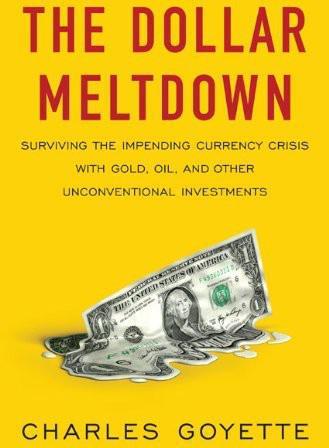
The Dollar Meltdown: Surviving the Coming Currency Crisis With Gold, Oil, and Other Unconventional Investments
by
Charles Goyette
Published 29 Oct 2009
Credit Writedowns Featuring news and opinion on finance, economics, and markets, the site seeks to provide early warning signals for what to expect in the global economy. Especially good at spotting European economic news that is missed elsewhere. The site’s “Credit Crisis Timeline” is a comprehensive collection of accounts of the unfolding credit crisis, while it also provides an overview called “The Dummy’s Guide to the U.S. Banking Crisis.” www.creditwritedown.com. World Gold Council The marketing body of the world’s leading gold mining companies, this site provides interesting news about the use of gold in biomedical, nanotechnology, and other scientific endeavors and industrial applications, as well as key information and research reports on gold fundamentals including price, supply and demand, and other investment statistics. www.gold.org.

Start-Up Nation: The Story of Israel's Economic Miracle
by
Dan Senor
and
Saul Singer
Published 3 Nov 2009
Israel may not, however, fare as well in the current global economic slowdown, which, unlike that of 2000, is not limited to international tech stocks and venture capital funding but is being dramatically felt in the global banking system as well. That said, the breakdown in international finance has infected almost every nation’s banking system, with two notable exceptions: neither Canada nor Israel has faced a single bank failure. Since Israel’s hyperinflation and banking crisis of the early 1980s—which culminated in 1985 with the trilateral intervention of the Israeli and U.S. governments and the IMF—tight restrictions have been in place. Israel’s financial institutions adhere to conservative lending policies, typically leveraged 5 to 1. U.S. banks, on the other hand—precrisis—were leveraged at 26 to 1, and some European banks at a staggering 61 to 1.

What's the Matter with White People
by
Joan Walsh
Published 19 Jul 2012
Yet the violence of the Hard Hat Riot horrified Hamill, and he attacked it in the New York Post, writing with a kind of anger that is often borne of shame. I recognized it. How strange, then, that American dissent began stirring again forty-one years later, at the exact same site, only blocks away from the World Trade Center. Or maybe not strange: terror brought the towers down ten years earlier; the banking crisis that cratered the economy in 2008 was centered there, too. Maybe George Washington created a mysterious vortex of democracy when he addressed his young country at the site more than two centuries earlier. (Alexander Hamilton, the father of American banking, is buried in the Trinity Church yard down the street.)

How Much Is Enough?: Money and the Good Life
by
Robert Skidelsky
and
Edward Skidelsky
Published 18 Jun 2012
The system under inspection is capitalism, and Keynes’s essay offers a vantage point from which to consider the future of capitalism. The crisis has brought to light two defects in the system, usually obscured by the near unanimous commitment to growth at almost any cost. The first is its moral defects. The banking crisis has shown yet again that the present system relies on motives of greed and acquisitiveness, which are morally repugnant. It also divides societies into rich and poor, latterly very rich and very poor, justified by some version of the “trickle down” idea. The coexistence of great wealth and great poverty, especially in societies in which there is enough for everyone, offends our sense of justice.
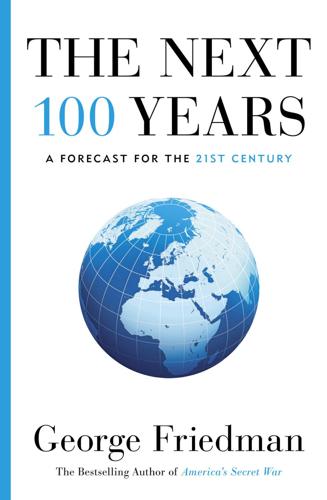
The Next 100 Years: A Forecast for the 21st Century
by
George Friedman
Published 30 Jul 2008
And if and when it slacks off, for example because of a recession in the United States, the entire structure could crumble very fast. This is not a new story in Asia. Japan was a growth engine in the 1980s. Conventional wisdom said it was going to bury the United States. But in reality, while Japan's economy was growing fast, its growth rates were unsustainable. When growth slumped, Japan had a massive banking crisis from which it has not really fully recovered almost twenty years later. Similarly, when East Asia's economy imploded in 1997, it came as a surprise to many, since the economies had been growing so fast. China has expanded extraordinarily for the last thirty years. The idea that such growth rates can be sustained indefinitely or permanently violates basic principles of economics.
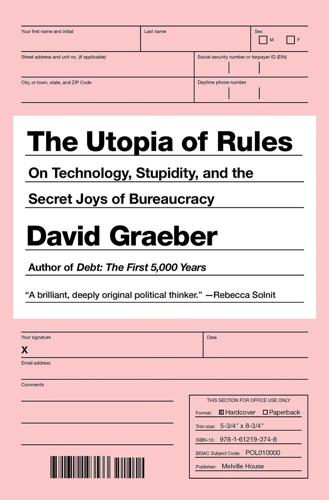
Bureaucracy
by
David Graeber
Published 3 Feb 2015
Deregulation means less bureaucratic meddling, and fewer rules and regulations stifling innovation and commerce. This usage puts those on the left-hand side of the political spectrum in an awkward position, since opposing deregulation—even, pointing out that it was an orgy of this very “deregulation” that led to the banking crisis of 2008—seems to imply a desire for more rules and regulations, and therefore, more gray men in suits standing in the way of freedom and innovation and generally telling people what to do. But this debate is based on false premises. Let’s go back to banks. There’s no such thing as an “unregulated” bank.
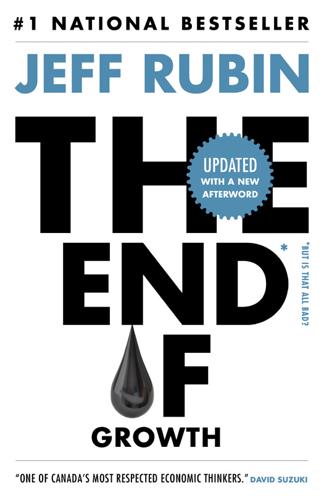
The End of Growth
by
Jeff Rubin
Published 2 Sep 2013
That’s not in the cards for Wall Street or Bay Street, but it is a possibility in smaller countries where rounds of taxpayer-funded bank bailouts have destroyed the financial industry’s political capital. Without the giant bonuses that motivate bankers to take big gambles with other people’s money, maybe the world’s banks would go back to doing what they used to do, which was to prudently lend out depositors’ money to customers. Whatever shape it takes, the coming European banking crisis, following so closely on the heels of the subprime mortgage crisis, is about to push the pendulum back to ever greater government regulation of financial markets. WILL AMERICA DEFAULT? The financially strapped PIIGS aren’t the only countries at risk of default. If America’s annual budget deficit drops to $845 billion in 2013, as projected, it will be the first time in five years that the gap between tax revenue and spending has dipped below $1 trillion.
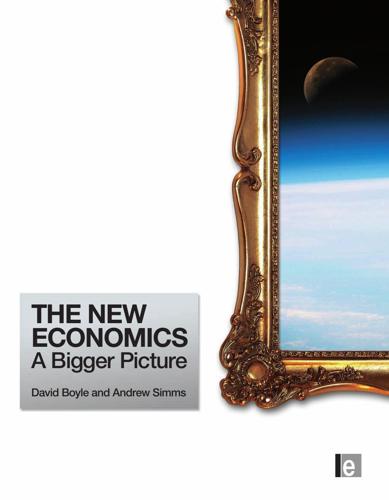
The New Economics: A Bigger Picture
by
David Boyle
and
Andrew Simms
Published 14 Jun 2009
Green New Deal Group (2008) A Green New Deal, New Economics Foundation, London. Quoted in Dennis Hardy (1991) From Garden Cities to New Towns, Routledge, London. Appendix A From the Ashes of the Crash: 20 First Steps from New Economics to Rebuild a Better Economy This programme was published in November 2008, during the banking crisis. It assumes a UK audience, but can be applied in other countries too. It claims that the crisis in the global system that was both predictable and, in fact, predicted, was the most important sign yet that a new economics is emerging. The tragedy is that the crisis-ridden financial system has long since failed to do the basic job required of it – which is to underpin the productive economy and the fundamental natural and social operating systems upon which we all depend.
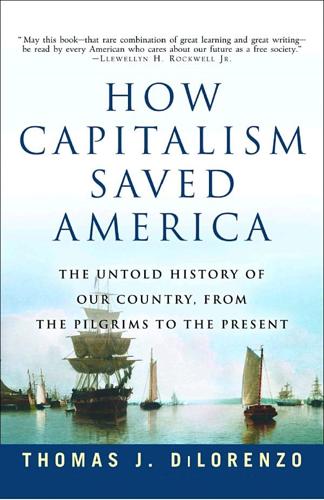
How Capitalism Saved America: The Untold History of Our Country, From the Pilgrims to the Present
by
Thomas J. Dilorenzo
Published 9 Aug 2004
That was the deepest economic recession prior to the Great Depression, but because President Martin Van Buren’s administration took the appropriate steps (or, more appropriately, didn’t take the wrong steps), the downturn was also short-lived. Van Buren had made clear in his Inaugural Address that he advocated the laissez-faire approach, for the speech was “essentially a charter for inaction,” as Van Buren biographer Major L. Wilson writes.1 And he did not waver from this position when the country experienced a major banking crisis just two months into his term. All but six of the nation’s eight hundred or so banks had ceased redeeming their bank notes in gold or silver, but in his first message to Congress the president proclaimed that his policy would be one of governmental retrenchment. “All communities are apt to look to government for too much,” Van Buren warned, “especially at periods of sudden embarrassment and distress.”2 Moreover, “all former attempts on the part of Government” to “assume the management of domestic or foreign exchange” had “proved injurious.”3 What was needed was “a system founded on private interest, enterprise and competition [i.e., pure capitalism], without the aid of legislative grants or regulations by law.”4 President Van Buren, a strong believer in Jefferson’s dictum that “that government is best which governs least,” refused to suggest to Congress any specific plan for government intervention to attempt to alleviate the effects of the depression.
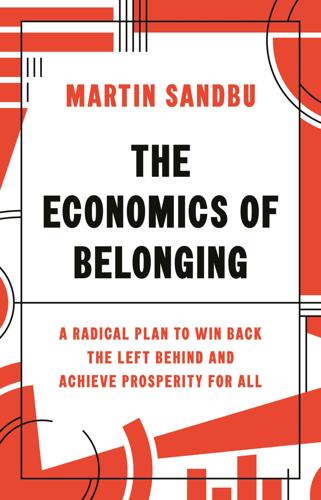
The Economics of Belonging: A Radical Plan to Win Back the Left Behind and Achieve Prosperity for All
by
Martin Sandbu
Published 15 Jun 2020
See also antisystem proponents; nationalism immigration: arguments for restricting, 14–15; economic discouragement of, 217; economic downturns coinciding with, 84–85; employment market effects of, 82–83, 215–16, 224–25, 250n17; exposure to, as factor in attitudes toward, 47, 85, 251n24; globalisation and, 82–85; home countries as affected by, 251n23; labour standards compatible with, 224–25; in Norway, 213–14, 269n4; policy restrictions on, 11; populist criticisms of, 85; public finances affected by, 83–84, 216, 250n20; in United Kingdom, 270n5; voter opposition to, 47 income growth, 19–21, 19, 52, 241n3 income inequality: cultural values influenced by, 31; economic insecurity linked to, 58–60; in Germany, 60; incomes of lower 50 percent, 63; market power as factor in, 127; Scandinavia as counterexample to, 99–100; postwar decline in, 53; regional character of, 153; in Sweden, 43–44; tax policy as contributing factor to, 56–57, 169, 171; technology as factor in, 30; trade not a factor in, 79–82; union declines linked to, 56–58, 121; voter behaviour influenced by, 43–44; wages as factor in, 79–80; and wealth concentration, 169; in Western countries, 20 income per capita, of trading partners, 80 Independent Workers’ Union, 125 industry: China’s role in, 25, 75; in emerging economies, 75; employment in, as share of total employment, 76, 76; geographical effects of changes in, 70, 81; income inequality arising from decline of, 56; output of, 23–25, 24, 25; skill levels required in, 81, 106, 199–200, 204; social contract linked to, 52, 54, 61; successful policies to reverse declines in, 203–4; technology in, 79; unemployment linked to, 22–27, 22, 77; urbanization and, 29 Inglehart, Ronald, 42 interest rates, 163–65 International Monetary Fund, 20, 64, 121, 140, 145, 155, 182 in-work tax credits, 117–18 Ireland, 64, 86, 270n6 Italy: banking crisis in, 150; economic insecurity in, 59; populism in, 31; regional economic decline in, 192; voter behaviour in, 41–42 Japan: manufacturing technology in, 79; negative interest rates in, 164–65; public spending in, 234; response to global financial crisis in, 133; Western social order influential on, 6 Jews, blamed for financial problems, 89 job mobility, 31–33, 107, 107, 114–15, 117, 119–20, 125, 128 jobs.

23 Things They Don't Tell You About Capitalism
by
Ha-Joon Chang
Published 1 Jan 2010
One sense in which the world has become more unstable during the last three decades of free-market dominance and strong anti-inflationary policies is the increased frequency and extent of financial crises. According to a study by Kenneth Rogoff, a former chief economist of the IMF and now a professor at Harvard University, and Carmen Reinhart, a professor at the University of Maryland, virtually no country was in banking crisis between the end of the Second World War and the mid 1970s, when the world was much more unstable than today, when measured by inflation. Between the mid 1970s and the late 1980s, when inflation accelerated in many countries, the proportion of countries with banking crises rose to 5–10 per cent, weighted by their share of world income, seemingly confirming the inflation-centric view of the world.
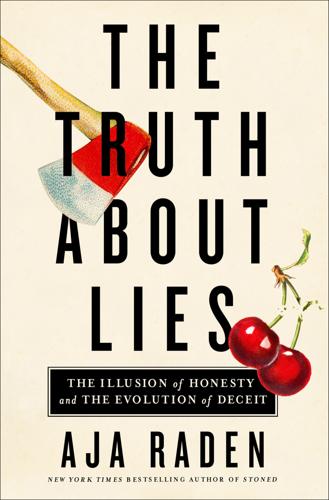
The Truth About Lies: The Illusion of Honesty and the Evolution of Deceit
by
Aja Raden
Published 10 May 2021
Gold Bricks and Mortar We just keep falling for the same gold brick, over and over. And knowing that makes no difference, because a Bait and Switch exploits what you already (think) you know, so the smarter you are, the bigger your blind spot. In fact, the twenty-first-century global economy was arguably laid low by the same gold-rush swindle when the 2008 banking crisis began with mortgage-backed securities and turned into the subprime debt crisis. The housing market of the early 2000s was a lot like the gold rush. The conditions were just right, coming off a decade of economic growth, so that everybody felt a little rich—and therefore, behavioral economists would tell us, morally impaired (but we’ll come back to that).
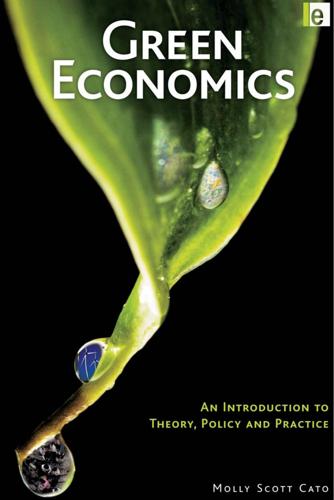
Green Economics: An Introduction to Theory, Policy and Practice
by
Molly Scott Cato
Published 16 Dec 2008
Primavera (2002) ‘Wealth, money and power: the ephemeral “Argentinean miracle” of the exchange networks’, presentation made at the 2nd panel of the National Journey on Exchange and the Economy of Solidarity, Buenos Aires, 6 September; available at: www.complementarycurrency.org/ccLibrary/ 543_ENG.rtf; M. S. Cato (2006) ‘Argentina in the red: What can the UK’s regional economies learn from the Argentinian banking crisis?’, International Journal of Community Currency Research, 10: 43–55. 25 Lietaer, Future of Money, p. 278. 26 Hutchinson et al, Politics of Money, p. 187. 6 Green Business: From Maximizing Profits to a Vision of Conviviality The Sufficiency Economy offers an effective approach to promoting sustainability and managing risks; a survival strategy for travelling down the fast-moving and sometimes treacherous road of globalization, with its illusions and pitfalls.
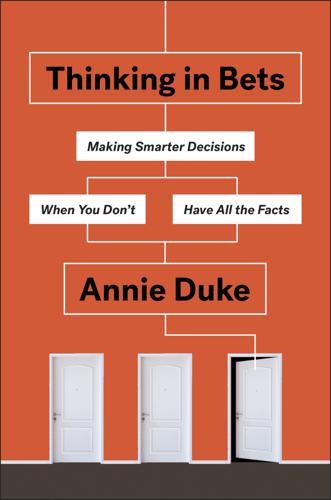
Thinking in Bets
by
Annie Duke
Published 6 Feb 2018
Look at this chart of Berkshire’s performance since 1964: Now zoom in on a random day in late January 2017. The upticks and downticks look large and potentially frightening. You can imagine sitting at the low point around 11:30, feeling like your losses are spiraling. If you zoomed in on the performance of Berkshire Hathaway stock during the banking crisis, September 2008 to March 2009, you would feel terrible most days: Yet we know from the first chart, the big picture, that all those minute-to-minute and even day-to-day changes had little effect on the investment’s general upward trajectory. Our problem is that we’re ticker watchers of our own lives.

The Hidden Half: How the World Conceals Its Secrets
by
Michael Blastland
Published 3 Apr 2019
Where inflation had been high, it tended to fall sharply and stay low. . . which contributed, according to one account of the period, to falling interest rates on government securities. . . which caused a chase for returns on other investments. . . which led money to pour into sub-prime mortgages (which had also taken off as interest rates had fallen), and. . . well, you know the rest: a global banking crisis in 2008–9 and a deep recession. Lessons confidently learned, inscribed from searing memory, were each perhaps useful – and might still be relevant. The case for independent central banks, for example, has not been overturned. But policies that resulted from these searing memories also perhaps unintentionally contributed to new kinds of crises.
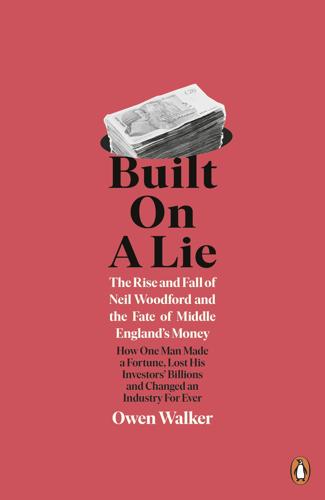
Built on a Lie: The Rise and Fall of Neil Woodford and the Fate of Middle England’s Money
by
Owen Walker
Published 4 Mar 2021
Banks had been among Woodford’s funds’ biggest holdings in the late 1990s, but he gradually sold his stakes in the UK’s largest lenders in the early 2000s. This was quite a departure for an income-fund manager as banks accounted for a large portion of the FTSE 100’s total dividend payments. In fact, in 2008 the UK’s biggest dividend payers were HSBC, Barclays and Lloyds TSB. But when the banking crisis hit, where the likes of Royal Bank of Scotland and Lloyds had to be bailed out by the UK taxpayer, not only did their share prices crash, but they stopped paying dividends. Swathes of the UK’s best-known fund managers were blindsided by the crisis – especially those heavily exposed to financial stocks.
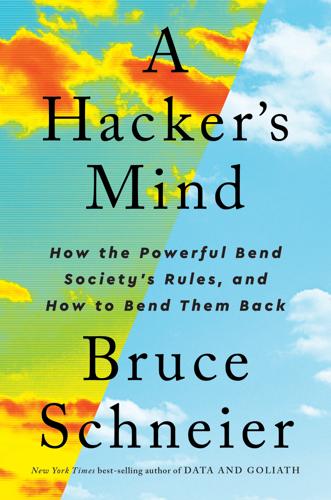
A Hacker's Mind: How the Powerful Bend Society's Rules, and How to Bend Them Back
by
Bruce Schneier
Published 7 Feb 2023
The ticketing system wasn’t ultimately destroyed, but the low audience turnout embarrassed Trump, and the campaign switched to other, less vulnerable, ticketing systems. Whatever the motivation, hacking can destroy social systems on a much larger scale than that of Voltaire’s lottery, Trump’s ticketing system, or Ohio’s unemployment benefits. We saw hints of that in the 2008 banking crisis, where repeated hacks of the system almost brought down the entire US financial network. We’re seeing hints of it with money in US politics and with political misinformation and social networks. And it happens in political revolutions, when all the mechanisms of society are hacked for a wildly different intent.
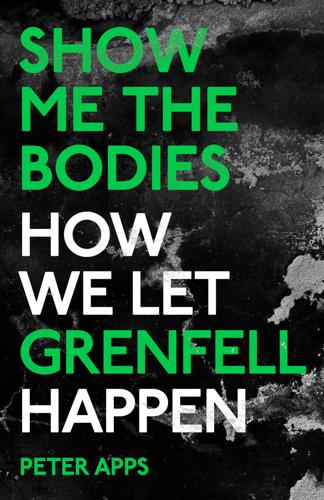
Show Me the Bodies: How We Let Grenfell Happen
by
Peter Apps
Published 10 Nov 2022
‘Excessive regulation is burdening businesses, hurting our economy and damaging our society,’ said its press release.4 From now on, the government would seek any and all ways it could find to reduce what it referred to as ‘burdens on business’. Amid a belief that a recovery in new housebuilding – that had plummeted to historic lows during the recession which followed the banking crisis – was crucial to the economic recovery, the residential construction industry was placed at the heart of this drive. As part of the March 2011 Budget, the government adopted a rule which meant a special waiver had to be obtained to make any changes to the building regulations. An impact assessment warned that this risked breaching the state’s duty to protect the right to life.
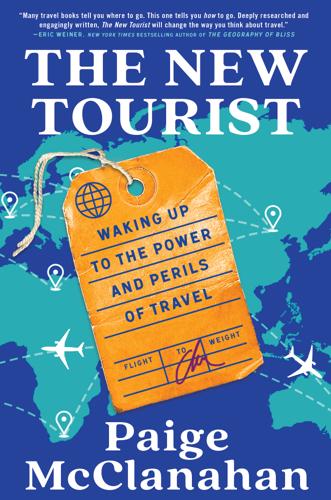
The New Tourist: Waking Up to the Power and Perils of Travel
by
Paige McClanahan
Published 17 Jun 2024
“In some cases, Iceland was not the inventor of these policies, but they were pushing for it and it was progressive. And it really fit the image of Iceland,” he said, adding that ten years earlier, no editor would have considered commissioning a policy-focused story from his native country. But tourism—and to some extent the country’s remarkable comeback from its banking crisis—were essential to fueling interest in those kinds of pieces, Bjarnason added. “Those things combined have given us an authority that Iceland has never enjoyed in the past,” he said. Iceland’s goals in the international arena, Bjarnason told me, relate to persuading other countries to adopt Iceland’s values—of acceptance, equality, and environmental sustainability.
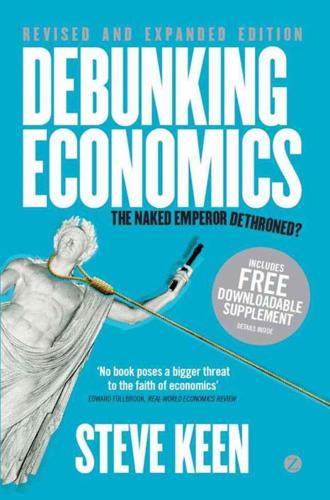
Debunking Economics - Revised, Expanded and Integrated Edition: The Naked Emperor Dethroned?
by
Steve Keen
Published 21 Sep 2011
Bernanke considered both these factors in his analysis of why the Great Depression was so prolonged: ‘In fractional-reserve banking systems, the quantity of inside money (M1) is a multiple of the quantity of outside money (the monetary base) […] the money multiplier depends on the public’s preferred ratio of currency to deposits and the ratio of bank reserves to deposits […] sharp variations in the money multiplier […] were typically associated with banking panics, or at least problems in the banking system, during the Depression era. For example, the money multiplier in the United States began to decline precipitously following the “first banking crisis” identified by Friedman and Schwartz, in December 1930, and fell more or less continuously until the final banking crisis in March 1933, when it stabilized. Therefore, below we interpret changes in national money stocks arising from changes in the money multiplier as being caused primarily by problems in the domestic banking system’ (Bernanke 2000: 125–6). 9 ‘[T]he reserves required to be maintained by the banking system are predetermined by the level of deposits existing two weeks earlier’ (Holmes 1969: 73). 10 Such a sequence has a 1 in 4,000 chance of occurring. 11 The word ‘debt’ doesn’t even appear in the Ireland paper, and while McKibbin and Stoeckel’s model does incorporate borrowing, it plays no role in their analysis. 12 Samuel Johnson’s aphorism, that something is ‘like a dog’s walking on his hind legs.
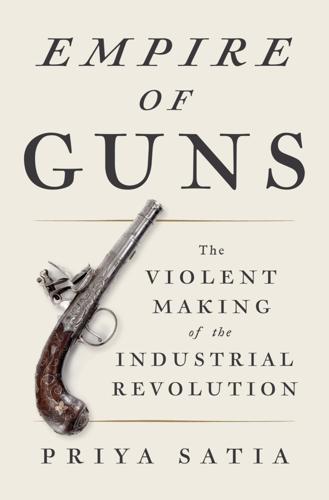
Empire of Guns
by
Priya Satia
Published 10 Apr 2018
Whereas there were two Quaker banks in London in 1738, forty years later there were seven. In 1750, there were no more than a dozen bankers’ shops outside London (where there were about thirty then). New country banks sprang up after midcentury, numbering about a hundred by 1775 and 370 by 1800. There were about six hundred by the banking crisis of 1825, typically small, averaging about £10,000 in capital. This was the result of war making fields like metallurgy more profitable. Country bankers were tied to London through agents, and London bankers had country clients—as we have seen in the case of Farmer & Galton. The country’s financial structure grew increasingly unified as the century of wars went on.
…
Lamenting the recent “casualties of trade,” their father gave them permission to fully turn to banking if they chose to. By the early nineteenth century, many of the largest banks in the country had emerged from businesses that prospered in war. There were six in Birmingham, all private, all sprung from commercial undertakings, when the banking crisis came in 1825; they included Lloyds; Galton, Galton & James; and Attwoods and Spooners. All but one survived the crisis. In 1826, Parliament allowed the Bank of England to establish branches around the country and made it easy for provincial banks to establish joint stocks. A branch came to Birmingham.

The Rough Guide to Norway
by
Phil Lee
Published 25 Nov 2013
In the summer of 2008, however, the wheels began to come off the coalition wagon with arguments about the killing of wolves, corruption, and the state of the health-care system. Stoltenberg’s popularity sank, but then came the worldwide banking crisis during which Stoltenberg started to look more like a prime minister who could take care of business – and the opinion polls gave him and his Labour Party a much improved rating. He was helped by the soundness of the Norwegian banking system, which had learnt some harsh lessons about capitalization during the country’s own banking crisis, which had run from 1988 to 1993. Even so, Stoltenberg was obliged to dip into the country’s oil wealth in 2009 to set up two funds totalling 100 billion kroner to bolster its banks and bond market.
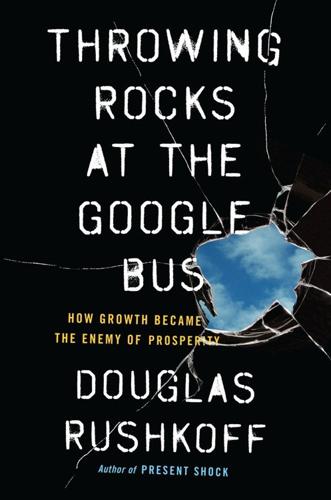
Throwing Rocks at the Google Bus: How Growth Became the Enemy of Prosperity
by
Douglas Rushkoff
Published 1 Mar 2016
The money therefore had a built-in incentive to be spent. And it worked, at least within the local communities that used it. Another depression-era currency, “tax anticipation scrip,” was issued by a few dozen American cities from Ann Arbor, Michigan, to Tulsa, Oklahoma,62 whose municipal funds had been lost in the banking crisis. Without any money, these city governments began to pay their workers and suppliers in small-denomination IOUs against future tax revenue. The scrip usually circulated at a discount of its face value, but that was better than nothing for workers and citizens of these otherwise bankrupt economies.

Milton Friedman: A Biography
by
Lanny Ebenstein
Published 23 Jan 2007
Money supply fell by an additional 7 percent from 1930 to 1931, by 17 percent from 1931 to 1932, and by 12 percent from 1932 to 1933—unprecedented annual consecutive declines. These declines constituted the Great Contraction and were the primary source of the simultaneous deterioration of the U.S. economy. The Great Depression was an anomalous event. After the first banking crisis in late 1930, the economy appeared to struggle to rebound during the first months of 1931. Industrial production rose in the first quarter of the year. The rate of decline in factory employment was the lowest it had been since August 1929. A lasting turnaround in the economy at this point was not, however, to be.
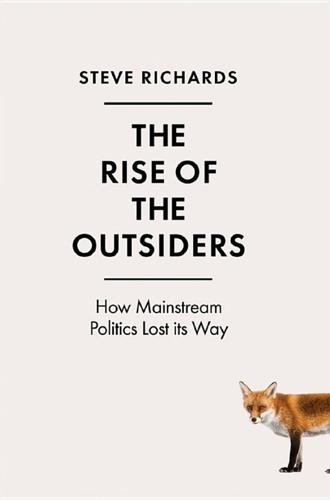
The Rise of the Outsiders: How Mainstream Politics Lost Its Way
by
Steve Richards
Published 14 Jun 2017
As their popularity grew, they projected two themes: they were the anti-establishment candidates, and their arguments were rooted in a precise economic context, one that had generated such angry yet hopeful energy among their audiences. The impact of the 2008 financial crash can be measured very precisely. Each of the suddenly potent figures on the left framed their arguments with reference to the banking crisis and what followed. A constant refrain in their speeches was that the bankers caused the emergency, and yet the middle classes and the poor were taking the punishment. As Sanders declared, after his triumphant victory in New Hampshire: ‘The people bailed out Wall Street. Now it is time for Wall Street to bail out the people.’

Capitalism Without Capital: The Rise of the Intangible Economy
by
Jonathan Haskel
and
Stian Westlake
Published 7 Nov 2017
If banks are less willing and less able to lend to intangible-intensive businesses, but intangible-intensive businesses are becoming more common, we would expect to see complaints that banks refused to finance viable businesses becoming more common. And current regulation disallows (almost all) intangible assets as part of capital reserves that banks must hold in case of a banking crisis.5 A preponderance of unsaleable intangible assets could even, in due course, present a gradual problem for the stability of a banking system. Because bank runs are economically catastrophic, regulators require banks to hold a certain amount of reserves against every loan on their books. The amount of reserves depends on the type of loan: on the whole, loans secured against valuable assets that are easy to sell require less reserves; loans with little security require more.
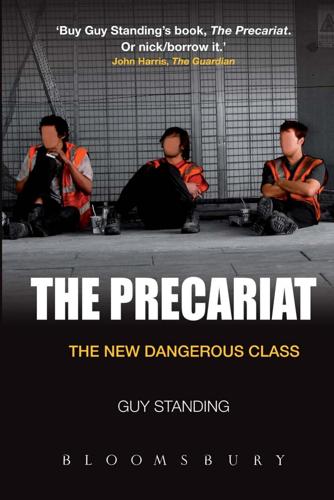
The Precariat: The New Dangerous Class
by
Guy Standing
Published 27 Feb 2011
The bank was doing that rather than pay six weeks of severance pay for every year worked. It acknowledged that many employees might have difficulty readjusting when they returned, but that problem seemed far away. Another bank in another country highlighted the dualistic treatment of the salariat and precariat post-2008. In response to the banking crisis, which left it heavily subsidised by the UK government, Lloyds Banking Group cut over 20,000 jobs. In October 2010, it announced that it had ‘mitigated the impact WHY THE PRECARIAT IS GROWING 51 on permanent staff with a significant release of temporary and contract staff’. Next time around, no doubt, the bank will have more temps and others who can be easily let go.

Jony Ive: The Genius Behind Apple's Greatest Products
by
Leander Kahney
Published 14 Nov 2013
“So we responded to Ideal Standard that they could give us a design brief, which we would fulfill, but it was our decision as to which of our designers we would assign to do the work. When he heard this, he walked away! He specifically wanted Jony to do the project.” In time, the Ideal Standard executive would reemerge on Jony’s horizon. But in 1989, the savings and loan banking crisis took a toll on RWG’s business. The company’s interior design group had been getting numerous commissions to design dealing rooms for banks in the United Kingdom, Spain and Australia. But as the financial crisis spread around the world, the banks canceled. “With the financial crisis, banks terminated projects leaving our designers without work,” recalled Weaver.
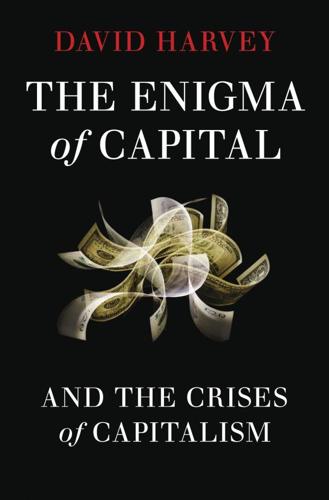
The Enigma of Capital: And the Crises of Capitalism
by
David Harvey
Published 1 Jan 2010
King 79, 80 hunger, world 80 I Icarian communes 130 Iceland bankrupt 6, 37 exposure of national banks to toxic assets 141 idealism 133 immigration 59, 131 anti-immigrant fervour 103 colonisation of urban neighbourhoods 247 encouraging 14 Immigration and Nationality Act (1965) 14 imperialism 108, 109, 113, 144, 171, 204, 207, 212 Inca gold 47, 144 India anti-land grab movement 257 British goods 108, 158 British-imperialist-controlled 144 caste distinctions 62 colonial occupation 205 democracy 200 growth 222 labour reserves 64 Maoist movements in rural India 226 and oil market 83 partition 208 plundering of wealth from 109, 113 rural uprisings in 38 Indian Supreme Court 179 individualism 131, 132, 150, 170, 175, 197, 199 Indonesia Asian Currency Crisis 271 excessive urban development 8 industrial development 256 ‘industrial reserve army’ 15, 58, 59 industrial revolution 160 industrialisation 6, 33, 35, 68, 92, 172, 209 infant mortality 137, 152 inflation 15, 108, 114, 222 accelerating 113 ‘grand inflation’ (16th century) 48 and oil prices 80 rapid 111 Weimar 141 ‘informal sector’ 145 infrastructure disasters 86 educational 93 investment in 86, 167, 222 payment for use of 86–7 social 93 inheritance taxes 44 innovation 89, 90 communications 42, 93 labour-saving 94 organisational 97, 101 product 95 technological 67, 96–7, 101, 103 transport 42, 93 waves of 92–3 insider trading 99 insurance companies 4–5 intellectual property rights 34, 40, 221, 245–6 interest rate swaps 262 interest rates and austerity programmes 246, 251 Fed cuts 5, 261 International Monetary Fund (IMF) 5, 28, 34, 36, 51, 69, 200, 223, 246, 247 and asset values 6 bail-outs in Asian Currency Crisis 261 ‘Fifty Years is Enough’ campaign 55 ‘structural adjustment programs’ 19, 261 internet 190 investment capital 93, 203 debt-fuelled 166 devaluation of prior investments 93 infrastructure 86, 167, 222 in production 114 profitable 19 spreading of investment risks 85 subsidies for 36 iPods 131, 150 Iran: US threats 210 Iraq: US interventionism 210 Ireland: property-led crisis (2007–10) 5–6, 261 Isaacs, William 8 Israel dispossession of Palestinian land 247 kibbutzim 130 ivory 73 J Jacobs, Jane 171, 177 Japan boom of 1980s 8 collapse of stock market 8 depression in economy 45 falling exports 6 industrialisation 68, 92 invasion of US auto market 15 negative population growth 146 plunging land prices 8, 9 property-market led bank crisis 261 reconstruction of economy after Second World War 202 rise in the 1960s 35 joint stock companies 49 J.P. Morgan 142, 173, 219 ‘just-in-time’ principle 68 K Kay, Kenneth 53 Kerala, India, and remittances 38 Keynes, John Maynard 32, 53, 55, 87, 111, 160, 226, 237, 238 General Theory 114 Keynesian, Keynesians 168, 238, 255, 261 Kohl, Helmut 64 ‘Kondratieff cycles’ 96 Krieger, Andy 24–5 Krugman, Paul 235–6 kulaks 250 L labour and capital 56, 88, 169–70 casual 242 competition 61 costs 15, 16, 88 disempowered 16 divisions of 196, 213 exploitation of 94 feminisation of the global labour force 258 ‘floating’ army of laid-off workers 60 geographical mobility of 59–60, 213 guild 160 import of 14 integration of peasant populations into 58 laws 59, 103 living standards 88–9 massive reserves 64 and new technologies 60 organisations 61 and politics of populist outrage 55–6 power of 12, 14, 15, 40–41, 103, 172 quality requirements 93 regulation of conditions of 59 rights 251 scarcity of 12, 59, 60 social divisions of 67 supply 47, 121 supply and demand for 60 surplus 5, 15, 215 ultimate power of the workforce 63, 101–2 unionised 108 unrest 66 labour markets geographically segmented 59 local 63 regulating dynamics of 60 labour power demand of 115 released as a commodity into the market place 58 and standard of living 62–3 supply of 63, 65, 115 value of 64 labour process 105 collective 104 resistance or inefficiencies in 47 labour unions 256 laissez faire 128 land capital embedded in the 191 enclosures 48 fertility 82 Israeli dispossession of Palestinian land 247 land use degradation 77 reform 249 rights 88 speculation 187–8 values 181, 182, 183, 234 landlords 40 laptops 131 Las Vegas, foreclosure crisis in 2 Latin America anti-neoliberal struggles 226 bilateral trade with China 173 and the Catholic Church 254 land bought up in 220 population growth 146 Latin American Southern Cone group (MERCOSUR) 200 Latvian government 37 Lazard’s 11 lead-based paints 74 ‘learned societies’ 91 Lebanon economic stimulus 140 rebuilding of 202 Leeson, Nicholas 37, 100, 190 Lefebvre, Henri 128 legitimation crises 217 Lehman Brothers 2, 5, 12, 21, 37, 132, 211 Leipzig, Germany 142 Lenin, Vladimir 46, 136, 227 Leningrad 243 Leninism 134 lesbians, and colonisation of urban neighbourhoods 247 leveraged buy-outs 50 leveraging 30, 31 Leverhulme foundation 44 life expectancy 137, 152, 250 limited companies 49 liquidity crisis in 206 liquidity injections vii, 261 liquidity trap 111 surplus 5, 28, 30 living standards 10, 46, 62–3, 72, 88–9, 96, 120 Locke, John 90, 233 London, territorial organisation of 196 London School of Economics vii, 235 Long Term Capital Management crash and bail-out (1998) 8, 100, 261 ‘long waves’ 96 Luddite movement 60, 96 Luxemburg, Rosa 108, 116–17 luxury goods 70, 110 M McCarthyism 169 machinery 66, 113, 114, 127 Mackinder, Sir Halford 209–10 macroeconomics 237 McVeigh, Timothy 248 Maddison, Angus 26 Mahan, A.T.: The Influence of Sea Power upon History 209 maintenance failures 86 Malaysia: resorts to capital controls 198 Malthus, Thomas 72, 94 Manchester 27 Mao Zedong 59 Cultural Revolution 137 dialectical sense of how contradictions worked 136 Great Leap Forward 137, 138, 250 health care 137 recognised that a revolution had to be permanent or nothing at all 136–7 Maoism 133 Maoists 253 Marcos, Imelda 43 Marcuse, Herbert 169 market laws 198 market share 43 markets credit 2, 5, 37 export 141, 218 free 10, 90, 100, 128, 131 internal 109 market connections 162–3 niches 131, 175 see also derivatives markets; futures markets; labour markets; options markets Marshall, Arthur 162 ‘Marshallian’ industrial production districts 162 Marx, Karl 46–7, 98, 110, 160, 232–3 and Bakunin 225 on barriers 84, 88 the capitalist creed 103 capitalist development 117 changing the world 119–20 on the cotton industry 67 and falling profitability 94 goal of 238 on an ‘industrial reserve army’58 and Keynes 111 and limitless money 47 and Luddite movement 96 on Malthus and Ricardo 72 on the power of the labourer 101–2 on ‘primitive accumulation’58, 249 and rent 81 and reproduction schemas 70 on the rise of capitalism 135, 250 systematic critique of capitalism and its crisis tendencies 237 understanding and transparency 99, 100 on the world of high finance 54–5 Capital 53–4, 70, 89, 119, 126, 237 Grundrisse der Kritik des Politischen Ökonomie 47, 155 Marx, Karl and Engels, Friedrich: The Communist Manifesto 89, 115, 127, 157, 237, 259 Marxian theory 56, 183 Marxists 253 Meadows, Donella h.: Limits to Growth 72 meat-based diets 73, 74 Medicare 28–9, 224 Mellon, Andrew 11, 98 mercantilism 206 merchant capitalists 40 mergers 49, 50 forced 261 Merrill Lynch 12 Merton, Robert 100 methane gas 73 Mexico debt crisis (1982) 10, 19 northern Miexico’s proximity to the US market 36 peso rescue 261 privatisation of telecommunications 29 and remittances 38 standard of living 10 Mexico City 243 microcredit schemes 145–6 microeconomics 237 microenterprises 145–6 microfinance schemes 145–6 Middle East, and oil issue 77, 170, 210 militarisation 170 ‘military-industrial complex’ 91 minorities: colonisation of urban neighbourhoods 247, 248 Mitterrand, François 198 modelling of markets 262 modernism 171 monarchy 249 monetarism 237 monetisation 244 money centralised money power 49–50, 52 a form of social power 43, 44 limitlessness of 43, 47 loss of confidence in the symbols/quality of money 114 universality of 106 monoculture 186 Monopolies Commission 52 monopolisation 43, 68, 95, 113, 116, 221 Monsanto 186 Montreal Protocol (1989) 76, 187 Morgan Stanley 19 Morishima, Michio 70 Morris, William 160 mortgages annual rate of change in US mortgage debt 7 mortgage finance for housing 170 mortgage-backed bonds futures 262 mortgage-backed securities 4, 262 secondary mortgage market 173, 174 securitisation of local 42 securitisation of mortgage debt 85 subprime 49, 174 Moses, Robert 169, 171, 177 MST (Brazil) 257 multiculturalism 131, 176, 231, 238, 258 Mumbai, India anti-Muslim riots (early 1990s) 247 redevelopment 178–9 municipal budgets 5 Museum of Modern Art, New York 21 Myrdal, Gunnar 196 N Nandigram, West Bengal 180 Napoleon III, Emperor 167, 168 national debt 48 National Economic Council (US) 11, 236 national-origin quotas 14 nationalisation 2, 4, 8, 224 nationalism 55–6, 143, 194, 204 NATO 203 natural gas 188 ‘natural limits’ 47 natural resources 30, 71 natural scarcity 72, 73, 78, 80, 83, 84, 121 nature and capital 88 ‘first nature’ 184 relation to 121, 122 ‘the revenge of nature’ 185 ‘second nature’ 184, 185, 187 as a social product 188 neocolonialism 208, 212 neoliberal counter-revolution 113 neoliberalism 10, 11, 19, 66, 131, 132, 141, 172, 175, 197, 208, 218, 224, 225, 233, 237, 243, 255 Nepal: communist rule in 226 Nevada, foreclosure wave in 1 New Deal 71 ‘new economy’ (1990s) 97 New Labour 45, 255 ‘new urbanism’ movement 175 New York City 11 September 2001 attacks 41 fiscal crisis (1975) 10, 172, 261 investment banks 19, 28 New York metropolitan region 169, 196 Nicaragua 189 Niger delta 251 non-governmental organisations (NGOs) 35, 253–4 non-interventionism 10 North Africa, French import of labour from 14 North America, settlement in 145 North American Free Trade Association (NAFTA) 200 Northern Ireland emergency 247 Northern Rock 2 Norway: Nordic cris (1992) 8 nuclear power 188 O Obama, Barack 11, 27, 34, 210 Obama administration 78, 121 O’Connor, Jim 77, 78 offshoring 131 Ogoni people 251 oil cheap 76–7 differential rent on oil wells 83 futures 83, 84 a non-renewable resource 82 ‘peak oil’ 38, 73, 78, 79, 80 prices 77–8, 80, 82–3, 261 and raw materials prices 6 rents 83 United States and 76–7, 79, 121, 170, 210, 261 OPEC (Organisation of Oil-Producing Countries) 83, 84 options markets currency 262 equity values 262 unregulated 99, 100 Orange County, California bankruptcy 100, 261 Organisation for Economic Cooperation and Development (OECD) 51 organisational change 98, 101 organisational forms 47, 101, 121, 127, 134, 238 Ottoman Empire 194 ‘over the counter’ trading 24, 25 overaccumulation crises 45 ozone hole 74 ozone layer 187 P Pakistan: US involvement 210 Palley, Thomas 236 Paris ‘the city of light’ 168 epicentre of 1968 confrontations 177, 243 Haussmann’s rebuilding of 49, 167–8, 169, 171, 176 municipal budget crashes (1868) 54 Paris Commune (1871) 168, 171, 176, 225, 243, 244 Partnoy, Frank: Ubfectious Greed 25 patents 221 patent laws 95 patriarchy 104 pensions pension funds 4, 5, 245 reneging on obligations 49 Péreire brothers 49, 54, 98, 174 pesticides 185, 186, 187 petty bourgeois 56 pharmaceutical sector 129, 245 philanthropy 44 Philippines: excessive urban development 8 Phillips, Kevin 206 Pinochet, General Augusto 15, 64 plant 58 Poland, lending to 19 political parties, radical 255–6 politics capitalist 76 class 62 co-revolutionary 241 commodified 219 depoliticised 219 energy 77 identity 131 labour organizing 255 left 255 transformative 207 pollution air 77 oceanic 74 rights 21 ‘Ponts et Chaussées’ organisation 92 Ponzi schemes 21, 114, 245, 246 pop music 245–6 Pope, Alexander 156 population growth 59, 72, 74, 121, 167 and capital accumulation 144–7 populism 55–6 portfolio insurance 262 poverty and capitalism 72 criminalisation and incarceration of the poor 15 feminisation of 15, 258 ‘Great Society’ anti-poverty programmes 32 Prague 243 prices commodity 37, 73 energy 78 food grain 79–80 land 8, 9, 182–3 oil 8, 28, 37–8, 77–8, 80, 82–3, 261 property 4, 182–3 raw material 37 reserve price 81–2 rising 73 share 7 primitive accumulation 58, 63–4, 108, 249 private consortia 50 private equity groups 50 private property and radical egalitarianism 233, 234 see also property markets; property rights; property values privatisation 10, 28, 29, 49, 251, 256, 257 pro-natal policies 59 production expansion of 112, 113 inadequate means of 47 investment in 114 liberating the concept 87 low-profit 29 offshore 16 production of urbanisation 87 reorganisation and relocation of 33 revolutionising of 89 surplus 45 technologies 101 productivity agreements 14, 60, 96 agricultural 119 cotton industry 67 gains 88, 89 Japan and West Germany 33 rising 96, 186 products development 95 innovation 95 new lines 94, 95 niches 94 profit squeeze 65, 66, 116 profitability constrains 30 falling 94, 131 of the financial sector 51 and wages 60 profits easy 15 excess 81, 90 falling 29, 72, 94, 116, 117 privatising 10 rates 70, 94, 101 realisation of 108 proletarianisation 60, 62 property markets crash in US and UK (1973–75) 8, 171–2, 261 overextension in 85 property market-led Nordic and Japanese bank crises 261 property-led crises (2007–10) 10, 261 real estate bubble 261 recession in UK (after 1987) 261 property rights 69, 81–2, 90, 122, 179, 198, 233, 244, 245 Property Share Price Index (UK) 7 property values 171, 181, 197, 248 prostitution 15 protectionism 31, 33, 43, 211 punctuated equilibrium theory of natural evolution 130 Putin, Vladimir 29, 80 Q Q’ing dynasty 194 quotas 16 R R&D (research and development) 92, 95–6 race issues 104 racism 61, 258 radical egalitarianism 230–34 railroads 42, 49, 191 Railwan, rise of (1970s) 35 rare earth metals 188 raw materials 6, 16, 37, 58, 77, 101, 113, 140, 144, 234 RBS 20 Reagan, Ronald 15, 64, 131, 141 Reagan-Thatcher counter revolution (early 1980s) 71 Reagan administration 1, 19 Reagan recession (1980–82) 60, 261 Real Estate Investment Trusts (US) 7 recession 1970s 171–2 language of 27 Reagan (1980–82) 60, 261 Red Brigade 254 reforestation 184 refrigeration 74 reinvestment 43, 45, 66–7, 110–12, 116 religious fundamentalism 203 religious issues 104 remittances 38, 140, 147 rentiers 40 rents differential rent 81, 82, 83 on intellectual property rights 221 land 182 monetisation of 48, 109 monopoly 51, 81–2, 83 oil 83 on patents 221 rising 181 reproduction schemas 70 Republican Party (US) 11, 141 reserve price 81 resource values 234 Ricardo, David 72, 94 risks, socialising 10 robbery 44 Robinson, Joan 238 robotisation 14, 136 Rockefeller, John D. 98 Rockefeller brothers 131 Rockefeller foundation 44, 186 Roman Empire 194 Roosevelt, Franklin D. 71 Rothschild family 98, 163 Royal Society 91, 156 royalties 40 Rubin, Robert 98 ‘rule of experts’ 99, 100–101 Russia bankruptcy (1998) 246, 261 capital flight crisis 261 defaults on its debt (1998) 6 oil and natural gas flow to Ukraine 68 oil production 6 oligarchs 29 see also Soviet Union S Saddam Hussein 210 Saint-Simon, Claude Henri de Rouvroy, Comte de 49 Saint-Simonians 87, 168 Salomon Brothers 24 Samuelson, Robert 235, 239 Sandino, Augusto 189 Sanford, Charles 98 satellites 156 savings 140 Scholes, Myron 100 Schumer, Charles 11 Schumpeter, Joseph 46 Seattle battle of (1999) 38, 227 general strike (1918) 243 software development in 195 Second World War 32, 168–70, 214 sectarianism 252 securitisation 17, 36, 42 Sejong, South Korea 124–6 service industries 41 sexism 61 sexual preferences issues 104, 131, 176 Shanghai Commune (1967) 243 shark hunting 73, 76 Shell Oil 79, 251 Shenzhen, China 36 shop floor organisers (shop stewards) 103 Silicon Valley 162, 195, 216 Singapore follows Japanese model 92 industrialisation 68 rise of (1970s) 35 slavery 144 domestic 15 slums 16, 151–2, 176, 178–9 small operators, dispossession of 50 Smith, Adam 90, 164 The Wealth of Nations 35 social democracy 255 ‘social democratic’ consensus (1960s) 64 social inequality 224 social relations 101, 102, 104, 105, 119, 121, 122, 123, 126, 127, 135–9, 152, 240 loss of 246 social security 224 social services 256 social struggles 193 social welfarism 255 socialism 136, 223, 228, 242, 249 compared with communism 224 solidarity economy 151, 254 Soros, George 44, 98, 221 Soros foundation 44 South Korea Asian Currency Crisis 261 excessive urban development 8 falling exports 6 follows Japanese model 92 rise of (1970s) 35 south-east Asia: crash of 1997–8 6, 8, 49, 246 Soviet Union in alliance with US against fascism 169 break-up of 208, 217, 227 collapse of communism 16 collectivisation of agriculture 250 ‘space race’ (1960s and 1970s) 156 see also Russia space domination of 156–8, 207 fixed spaces 190 ‘space race’ (1960s and 1970s) 156 Spain property-led crisis (2007–10) 5–6, 261 unemployment 6 spatial monopoly 164–5 special drawing rights 32, 34 special economic zones 36 special investment vehicles 36, 262 special purpose entities 262 speculation 52–3 speculative binges 52 speed-up 41, 42 stagflation 113 stagnation 116 Stalin, Joseph 136, 250 Standard Oil 98 state formation 196, 197, 202 state-corporate nexus 204 ‘space race’ (1960s and 1970s) 156 state-finance nexus 204, 205, 237, 256 blind belief in its corrective powers 55 ‘central nervous system’ for capital accumulation 54 characteristics of a feudal institution 55 and the current crisis 118 defined 48 failure of 56–7 forms of 55 fusion of state and financial powers 115 innovation in 85 international version of 51 overwhelmed by centralised credit power 52 pressure on 54 radical reconstruction of 131 role of 51 and state-corporate research nexus 97 suburbanisation 171 tilts to favour particular interests 56 statistical arbitrage strategies 262 steam engine, invention of 78, 89 Stiglitz, Joseph 45 stimulus packages 261 stock markets crash (1929) 211, 217 crashes (2001–02) 261 massive liquidity injections (1987) 236, 261 Stockton, California 2 ’structural adjustment’ programmes vii, 19, 261 subcontracting 131 subprime loans 1 subprime mortgage crisis 2 substance abuse 151 suburbanisation 73, 74, 76–7, 106–7, 169, 170, 171, 181 Summers, Larry 11, 44–5, 236 supermarket chains 50 supply-side theory 237 surveillance 92, 204 swaps credit 21 Credit Default 24, 262 currency 262 equity index 262 interest rate 24, 262 Sweden banking system crash (1992) 8, 45 Nordic crisis 8 Yugoslav immigrants 14 Sweezey, Paul 52, 113 ‘switching crises’ 93 systematic ‘moral hazard’ 10 systemic risks vii T Taipei: computer chips and household technologies in 195 Taiwan falling exports 6 follows Japanese model 92 takeovers 49 Taliban 226 tariffs 16 taxation 244 favouring the rich 45 inheritance 44 progressive 44 and the state 48, 145 strong tax base 149 tax rebates 107 tax revenues 40 weak tax base 150 ‘Teamsters for Turtles’ logo 55 technological dynamism 134 technologies change/innovation/new 33, 34, 63, 67, 70, 96–7, 98, 101, 103, 121, 127, 134, 188, 193, 221, 249 electronic 131–2 ‘green’ 188, 221 inappropriate 47 labour fights new technologies 60 labour-saving 14–15, 60, 116 ‘rule of experts’ 99, 100–101 technological comparative edge 95 transport 62 tectonic movements 75 territorial associations 193–4, 195, 196 territorial logic 204–5 Thailand Asian Currency Crisis 261 excessive urban development 8 Thatcher, Margaret, Baroness 15, 38, 64, 131, 197, 255 Thatcherites 224 ‘Third Italy’, Bologna 162, 195 time-space compression 158 time-space configurations 190 Toys ‘R’ Us 17 trade barriers to 16 collapses in foreign trade (2007–10) 261 fall in global international trade 6 increase in volume of trading 262 trade wars 211 trade unions 63 productivity agreements 60 and US auto industry 56 trafficking human 44 illegal 43 training 59 transport costs 164 innovations 42, 93 systems 16, 67 technology 62 Treasury Bill futures 262 Treasury bond futures 262 Treasury instruments 262 TRIPS agreement 245 Tronti, Mario 102 Trotskyists 253, 255 Tucuman uprising (1969) 243 Turin: communal ‘houses of the people’ 243 Turin Workers Councils 243 U UBS 20 Ukraine, Russian oil and natural gas flow to 68 ultraviolet radiation 187 UN Declaration of Human Rights 234 UN development report (1996) 110 Un-American Activities Committee hearings 169 underconsumptionist traditions 116 unemployment 131, 150 benefits 60 creation of 15 in the European Union 140 job losses 93 lay-offs 60 mass 6, 66, 261 rising 15, 37, 113 and technological change 14, 60, 93 in US 5, 6, 60, 168, 215, 261 unionisation 103, 107 United Fruit Company 189 United Kingdom economy in serious difficulty 5 forced to nationalise Northern Rock 2 property market crash 261 real average earnings 13 train network 28 United Nations 31, 208 United States agricultural subsidies 79 in alliance with Soviet Union against fascism 169 anti-trust legislation 52 auto industry 56 blockbusting neighbourhoods 248 booming but debt-filled consumer markets 141 and capital surplus absorption 31–2 competition in labour markets 61 constraints to excessive concentration of money power 44–5 consumerism 109 conumer debt service ratio 18 cross-border leasing with Germany 142–3 debt 158, 206 debt bubble 18 fiscal crises of federal, state and local governments 261 health care 28–9 heavy losses in derivatives 261 home ownership 3 housing foreclosure crises 1–2, 4, 38, 166 industries dependent on trade seriously hit 141 interventionism in Iraq and Afghanistan 210 investment bankers rescued 261 investment failures in real estate 261 lack of belief in theory of evolution 129 land speculation scheme 187–8 oil issue 76–7, 79, 80, 121, 170, 210, 261 population growth 146 proletarianisation 60 property-led crisis (2007–10) 261 pursuit of science and technology 129 radical anti-authoritarianism 199 Reagan Recession 261 rescue of financial institutions 261 research universities 95 the reversing origins of US corporate profits (1950–2004) 22 the right to the city movement 257 ‘right to work’ states 65 savings and loan crisis (1984–92) 8 secondary mortgage market 173 ‘space race’ (1960s and 1970s) 156 suburbs 106–7, 149–50, 170 train network 28 unemployment 5, 6, 60, 168, 215, 261 unrestricted capitalist development 113 value of US stocks and homes, as a percentage of GDP 22 and Vietnam War 171 wages 13, 62 welfare provision 141 ‘urban crisis’ (1960s) 170 urban ‘heat islands’ 77 urban imagineering 193 urban social movements 180 urbanisation 74, 85, 87, 119, 131, 137, 166, 167, 172–3, 174, 240, 243 US Congress 5, 169, 187–8 US Declaration of Independence 199 US National Intelligence Council 34–5 US Senate 79 US Supreme Court 179 US Treasury and Goldman Sachs 11 rescue of Continental Illinois Bank 261 V Vanderbilt family 98 Vatican 44 Veblen, Thorstein 181–2 Venezuela 256 oil production 6 Vietnam War 32, 171 Volcker, Paul 2, 236 Volcker interest rate shock 261 W wage goods 70, 107, 112, 162 wages and living standards 89 a living wage 63 national minimum wage 63 rates 13, 14, 59–64, 66, 109 real 107 repression 12, 16, 21, 107, 110, 118, 131, 172 stagnation 15 wage bargaining 63 Wal-Mart 17, 29, 64, 89 Wall Street, New York 35, 162, 200, 219, 220 banking institutions 11 bonuses 2 ‘Party of Wall Street’ 11, 20, 200 ‘War on Terror’ 34, 92 warfare 202, 204 Wasserstein, Bruce 98 waste disposal 143 Watt, James 89 wealth accumulation by capitalist class interests 12 centralisation of 10 declining 131 flow of 35 wealth transfer 109–10 weather systems 153–4 Weather Underground 254 Weill, Sandy 98 Welch, Jack 98 Westphalia, Treaty of (1648) 91 Whitehead, Alfred North 75 Wilson, Harold 56 wind turbines 188 women domestic slavery 15 mobilisation of 59, 60 prostitution 15 rights 176, 251, 258 wages 62 workers’ collectives 234 working hours 59 World Bank 36, 51, 69, 192, 200, 251 ‘Fifty Years is Enough’ campaign 55 predicts negative growth in the global economy 6 World Bank Development Report (2009) 26 World Trade Organisation (WTO) 200, 227 agreements 69 street protests against (Seattle, 1999) 55 TRIPS agreement 245 and US agricultural subsidies 79 WorldCom 8, 100, 261 worldwide web 42 Wriston, Walter 19 X X-rays 99 Y Yugoslavia dissolution of 208 ethnic cleansings 247 Z Zapatista revolutionary movement 207, 226, 252 Zola, Émile 53 The Belly of Paris 168 The Ladies’ Paradise 168
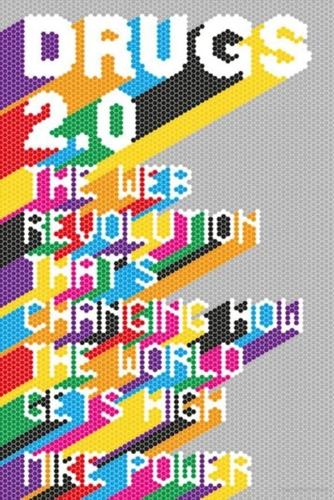
Drugs 2.0: The Web Revolution That's Changing How the World Gets High
by
Mike Power
Published 1 May 2013
‘This is a trade like any other,’ says Ramsey. ‘You need several components: an innovator to think of structures, a manufacturer to produce it, marketing and advertising.’ Those elements combined made the research chemical scene burst on to the high street in 2009, in a drug-starved country reeling a from a banking crisis brought on by a lack of regulation. The cathinones, with their speedy, cocaine-meets-MDMA-like buzz, were the perfect drug for those outlaw times. Mephedrone was credit crunch cocaine, neither one thing nor another, an analogue of an analogue. The Labour government, its drug policy no more radical than the previous Conservative administration’s, swung into action and banned it, driving a coach and horses through both scientific concerns and all political protocol.
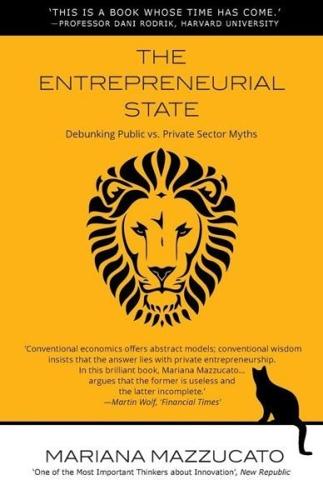
The Entrepreneurial State: Debunking Public vs. Private Sector Myths
by
Mariana Mazzucato
Published 1 Jan 2011
And yet, the irony of these successes is that as companies such as Apple, Google, GE, Cisco etc. are flourishing financially, their home economy is struggling to find its way out of debilitating economic issues like the growing trade deficit against Asian economies, declining manufacturing activities, increasing unemployment, widening budget deficits, inequality, deteriorating infrastructure etc. The current economic turmoil cannot be explained solely by the banking crisis, the credit crunch or the collapse of the mortgage market. The problems faced today are structurally complex and run much deeper. It is important to assess the effects of innovation, whether they have resulted in an increase in the number of new jobs that pay liveable wages or better, an increase in tax revenues, and/or an increase in the export of high-value goods and services.

Peers Inc: How People and Platforms Are Inventing the Collaborative Economy and Reinventing Capitalism
by
Robin Chase
Published 14 May 2015
“Business,” said Polman, “must make an explicit positive contribution” to address issues of climate change.2 Writing about the future of capitalism, he noted: It will be a world where climate will change, water will be scarce, and food supplies will be insecure. Business has a chance to become part of the solution to those challenges. Just as we need to ensure that we do not repeat the mistakes which led to the recent banking crisis, so there is an equal imperative to face up to the realities of a world where 9.5 billion people will put enormous strain on biophysical resources. The challenge for business is to meet these needs in a sustainable fashion. Success will require completely new business models. It will demand transformational innovation in product and process technologies to minimize resource use, as well as the development of “closed-loop” systems so that one man’s waste becomes another’s raw material.
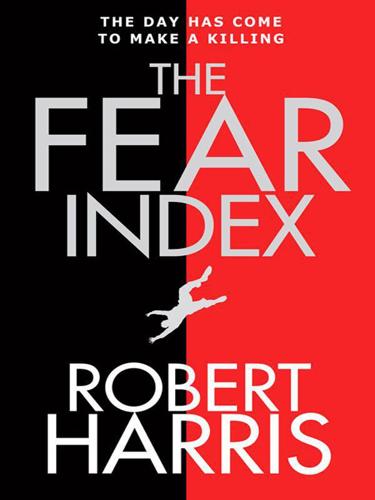
The Fear Index
by
Robert Harris
Published 14 Aug 2011
And when that went wrong and the banking system imploded, Congress had to rescue it, at a cost to the US taxpayer of $3.7 trillion. ‘Which is another example of the Law of Unintended Consequences,’ said Walton. ‘Did you know Alex offered me a job about five years ago?’ ‘No.’ ‘This was before the banking crisis. I told him that in my view high-end science and money don’t mix. It’s an unstable compound. I may have used the words “dark arts”. I’m afraid we fell out all over again.’ Gabrielle, nodding eagerly, said, ‘I know what you mean. It’s a sort of tension. I’ve always been aware of it in him, but especially lately.’
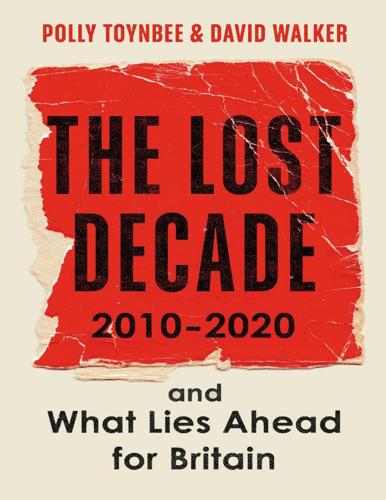
The Lost Decade: 2010–2020, and What Lies Ahead for Britain
by
Polly Toynbee
and
David Walker
Published 3 Mar 2020
Those feelings were palpable but inchoate. They were probably no more acute in 2016 than before, but this vote offered an outlet, a chance to say, ‘A plague on both your houses’ – and let someone else worry about the consequences. The City of London also did its bit. ‘Brexit is a legacy of the banking crisis,’ said Professor Nicholas Crafts of the University of Warwick. Financial meltdown led to austerity, which both boosted support for UKIP enough to frighten Cameron into promising a referendum and antagonised sufficient voters to tip the balance in the referendum. Brexit: A Potted History This was, of course, the second membership referendum.
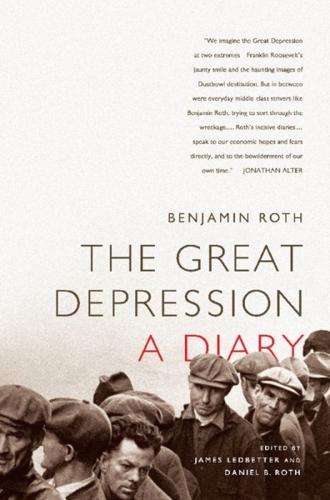
The Great Depression: A Diary
by
Benjamin Roth
,
James Ledbetter
and
Daniel B. Roth
Published 21 Jul 2009
JULY 21, 1932 There seems to have developed a new feeling of optimism among the people lately and it is hard to explain because there are very few tangible signs of improvement. I have a feeling that the Republican administration will be able to produce at least a temporary upswing during September and October preceding election but I am not so sure it will be permanent. In the meanwhile a new banking crisis has appeared in Chicago and elsewhere. The big Continental-Illinois Bank of Chicago was saved by an eighty million reconstruction gov’t loan. I do not believe our re-opened banks here can be affected because no further withdrawals can be made by depositors under the terms of their new pass books.
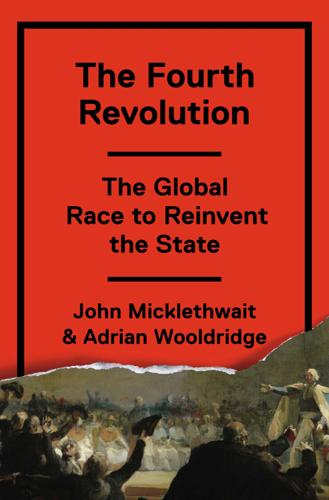
The Fourth Revolution: The Global Race to Reinvent the State
by
John Micklethwait
and
Adrian Wooldridge
Published 14 May 2014
Göran’s hospital, Stockholm, 171–72, 177, 183 San Bernardino, Calif., 16 bankruptcy of, 14, 128–29 Sanders, Harland, 185 San Francisco, Calif., 210, 218 Sarkozy, Nicolas, 12, 16 Sberbank, 153 Scandinavia, 166 aging population of, 174, 178, 183–84 failure of traditional welfare state in, 175–76 fiscal reform in, 174 pensions in, 171, 173, 184 reinvention of welfare state in, 169–78, 183–84, 186–87, 212, 265–66 social mobility in, 174 women in labor force of, 174 scarcity, democracy and, 247–48 Schmidt, Eric, 210–11 School Medical Service, 62 Schopenhauer, Arthur, 60 Schuck, Peter, 132 Schwarzenegger, Arnold, 125, 129 Securities and Exchange Commission, 72, 73 security: balance between freedom and, 230–31 Fourth Revolution and, 232 as primary duty of nation-state, 29, 30, 32, 37, 39, 181, 222, 268 Ségolène Royal, 194 September 11, 2001, terrorist attacks, 98, 230 Serco Group, 213, 214 sexual equality, 169 shale oil, 236 Shaw, George Bernard, 67–68, 232 Shenzhen, China, 161, 217 Sherman, Alfred, 93 Shetty, Devi, 201–2, 203, 205, 242–43 Sidgwick, Henry, 57, 58 Siedentop, Larry, 251 Silicon Valley, 105, 127 Silk Road, 152 Singapore, 18, 133–34, 144, 145, 155 as authoritarian, 135, 136, 137 as business friendly, 137 civil service of, 138–39 economic success of, 135 as elitist, 135, 136, 138–39 ethnic tensions in, 139–40 as model for Asian state, 4, 17, 134, 142 as night-watchman state, 140 small government of, 135, 140 social insurance model of, 140–41, 242, 243 social safety net in, 140 Singh, Manmohan, 96 Sloan, Alfred, 189, 190 Smartest Kids in the World and How They Got That Way, The (Ripley), 207 Smith, Adam, 43, 224, 237 Snowden, Edward, 230–31 social contract, 8–9, 16, 32, 34, 42, 222, 241 Social Contract, The (Rousseau), 44 social Darwinism, 59–60 Social Democratic Party, Swedish, 170, 175 social insurance, social assistance vs., 140–41, 142, 242 socialism, 59, 67, 96, 134, 224, 268–69 in Sweden, 169 Socialist Case, The (Jay), 77 Social Security, 120, 123, 242 disability insurance of, 244 social services, 68, 69, 74 as rights, 74–75 South Africa, 153, 252, 254 Southey, Robert, 224–25 South Korea, 142–43, 155 Soviet Union, 71, 73, 247 collapse of, 64, 176, 253 as failed state, 90–91 Spain, 130 Spanish Armada, 30–31, 36 special-interest groups, 16–17, 90, 111–15, 178, 200, 223, 239, 247, 251, 257, 258, 269 Spencer, Herbert, 59, 60, 66, 92 Stalin, Joseph, 67, 71 Starr, Kevin, 108 state, Asian model of, 133–66 aging populations as strain on, 164–65 as authoritarian, 136 in China, 1–5, 136–37, 145, 149, 152, 156 as competition for Western state model, 17, 163–64, 247 democracy in, 17 as elitist, 136 improved government as goal of, 137, 165–66 innovation in, 165 meritocracy in, 156–63, 164, 254 nationalism and, 136, 137 Singapore as inspiration for, 4, 17, 134, 142 small-government ideology of, 187 spread of, 144 technology and, 165 welfare state in, see welfare state, Asian model of state, Western model of, 3–5 Asian-state model as competition for, 17, 163–64, 247 Baumol’s disease and, 19, 109–11, 174, 178–79, 183, 222 California as exemplar of failures of, 106–7 crime and, 181–82 decline of public services in, 16 deficit spending in, 14, 100, 118–22, 177, 231–32 democracy as central tenet of, 5, 8, 16–17, 22–23, 136, 141, 221 efficiency in, 18–21, 37, 89, 187, 198–99, 213, 233, 247, 255 equality and, 221 Fourth Revolution in, see Fourth Revolution freedom as central tenet of, 8, 23, 46, 68–69, 222 ideological debate over, 222 as instrument of civilization, 22 interest groups and, 16–17 lack of innovation in, 19–20 liberal revolution in, see liberal state nation-state revolution in, see nation-state old and well-off as primary beneficiaries of public spending in, 122–24 opportunities for reinvention of, 18 outdated systems in, 108–9 proliferation of regulation in, 116–18 proper role of, 21, 28 rights of citizens in, 9 social contract in, 8–9, 16, 32, 34, 42, 222, 241 Thatcher-Reagan half-revolution in, see Thatcher-Reagan revloution welfare-state revolution in, see welfare state, Western model of see also government state capitalism: in China, 64, 149–56, 234 corruption in, 154 as global phenomenon, 152–53, 155, 234–35 innovation suppressed by, 155 investor mistrust and, 154 productivity and, 154, 285 in Russia, 153, 154 State-Owned Assets Supervision and Administration Commission (SASAC), 151, 154 state-owned enterprises (SOEs), 150–52, 154–55, 156 statism, 60–61, 67, 71, 72 elitism and, 77–78 Stein, Herbert, 13 Steinberg, Darrell, 129 sterilization, compulsory, 78 Steuerle-Roeper index, 195 Stewart, Jon, 228 Stigler, George, 84 subsidies, 185, 234, 237–38 sugar industry, 238 Suleiman the Magnificent, 35 Summers, Larry, 110 sunset clauses, 118, 246, 266 Supreme Court, U.S., 226, 240, 250 Sweden, 90, 184 average income in, 173 “black-of-night” banking crisis in, 175–76 blending of capitalism and socialism in, 186 education in, 171, 176–77, 215 fiscal reform in, 170 health care in, 98, 171–73 health registries in, 172, 183, 209 pension system in, 171, 184, 242 privatization in, 236 public debt of, 170–71 public spending in, 169–70 reinvention of welfare state in, 170–71, 212, 265–66 socialism in, 169 Swift, Jonathan, 227 Tawney, R.H., 61, 69, 78, 79, 87 taxes, taxation, 116, 127 consumption, 123–24 obfuscation and, 121–22 U.S., 82, 116–17, 121, 237, 240–41 Taylor, A.J.P., 9 Taylor, Matthew, 210 Teach for America, 216 Tea Party, 63, 243 technocrats, 76–77, 259, 260, 266, 267 technology, 165, 174 as agent for small government, 178 business sector and, 191 crime and, 181–82 education and, 179–80 Fourth Revolution and, 18, 19–20, 233, 266–67 government and, 200, 207–11 health care and, 183, 208–9 war and, 182 Temple, Frederick, 58 Tennessee Valley Authority, 73, 236 Terror (1792–93), 46 Thailand, 142–43 Thatcher, Margaret, 8, 28, 81, 88, 91–92, 97, 130, 133, 181 economic policy of, 93–94 Falklands War and, 94 free-market theory and, 93 Thatcher-Reagan revolution, 106, 177 big government as target of, 82 Friedman and, 8, 28, 82, 97, 100 global spread of, 96 Hayek’s influence on, 92 as incomplete, 8, 82, 97–101, 246, 269 privatization and, 94–95, 234 small-government ideology of, 91–92, 93, 128 Thick of It, The (TV show), 227 Thiel, Peter, 207 Think Long Committee, 129 Thirty Years’ War, 34, 38 Thomas, Norman, 82 Thomas Aquinas, Saint, 29 Thucydides, 250 Tiananmen Square protest, 142 Tilly, Charles, 39 Timbro, 131, 175 Tocqueville, Alexis de, 54–55, 222, 226, 250–51, 252, 256, 267 totalitarianism, 71 Toyoda, Kiichiro, 201 Transparency International, 148 Treasury, U.S., 143 Trevelyan, Charles, 52–53 Tsinghua University, 157 Tullock, Gordon, 84 Tunisia, 253 Turkey, 13, 254 Turner, Ted, 238 tyranny of the majority, 226, 250, 255 unemployment insurance, 123, 244, 245 unfunded liabilities, 14, 119, 120, 129, 130, 232, 245–46, 264, 265 unions, public-sector: innovation blocked by, 20 pay and benefits of, 113–15, 119–20 political power of, 112–15 Unirule Institute of Economics, 154 United Nations, 76, 265 United States: affirmative action in, 79 antiliberal discourse in, 95–96 big government in, 71–72 checks and balances system in, 226, 250, 255–56, 265 China contrasted with, 147, 153 crony capitalism in, 237–38, 246 deficits and deficit spending in, 14, 97, 100, 120, 231, 241 democracy’s failures in, 254–59 education reform in, 212, 214–15 elitism in, 162 entitlements in, 241–42 expanding role of government in, 62, 77 falling crime rate in, 181 financial liabilities of, 15–16, 119–20 financial services industry in, 239 fiscal uncertainty in, 12, 255 government bloat in, 9, 98, 177 in Iraq War, 143 local government in, 217 money politics in, 256–58 national debt of, 120, 241–42 political polarization in, 100, 125–26, 164, 255, 256 postwar era in, 78 privatization in, 234–37 public pessimism in, 11, 126 public spending in, 9, 261 small-government model in, 54–55 state capitalism in, 235–36 taxes in, 82, 116–17, 121, 237, 240–41 Webbs and, 71 welfare reform in, 95 Universal Declaration of Human Rights, 265 Uppsala, University of, 78 Urban Institute, 185 utilitarianism, 49, 57, 58 Van Reenen, John, 191 Veep (TV show), 227 VisionSpring, 203 Voegeli, William, 115 voting rights, 7, 9, 51 voucher systems, 171, 176–77, 220 Wade, John, 49 Wallas, Graham, 77 Wallgren, Britta, 172 Wall Street Journal, 90 Wang Jisi, 164 war, technology and, 182 war on poverty, 87, 88 war on terror, 98, 143 Warren, Earl, 105–6, 124–25 Washington, D.C., 210 Washington, George, 250 Washington consensus, 8, 96, 142, 164 Washington Post, 86 Webb, Beatrice and Sidney, 7, 27–28, 64, 66, 68, 71, 74, 75, 87, 116, 134, 140, 219, 268 collectivism as principle of, 68 as creators of welfare state, 65 eugenics endorsed by, 67–68 national minimum concept of, 68, 69 Stalin admired by, 67 statism and, 67 Weibo, 161 Weiner, Anthony, 227–28 welfare state, Asian model of, 164–65 health-care spending in, 142 social insurance as basis of, 140–41, 142, 242, 243 spending on, Western model vs., 142 welfare state, Western model of, 7–9, 65–80, 88, 221 aging population and, 15, 122–23, 124, 165, 174, 178, 183–84, 232, 241–42 as “all-you-can-eat” buffet, 17, 137, 140, 183, 241 creation of, 27–28, 263, 268–69 dependency and, 129–30 education in, 68, 69 elitism and, 77–78 entitlements in, see entitlements equality and, 68–69, 74, 79, 222 in Europe, 75 expanding public sector in, 76 failure of egalitarian policies in, 87–90 fraternity and, 74, 79 government bloat in, 9–11, 18–19, 89–90, 98, 177, 222–23, 227, 229–30, 231, 233 inefficiency in, 89, 229 interest groups in, 90 Lee Kuan Yew’s criticism of, 17 middle class in, 17, 88, 122 national minimum and, 68, 69 Nordic reinvention of, 169–78, 183–84, 186–87, 212, 265–66 overreaching by, 87, 176, 222, 229–30, 233, 264, 265, 268, 269 perverse incentives created by, 89 poverty and, 68 social assistance as basis of, 140, 142 social services and, 68, 69, 74 as threat to democracy, 22, 142 as threat to freedom, 22, 74, 222 Webbs as creators of, 65, 220 Wells, H.G., 66 Wen Jiabao, 162 Westminster model, 54 When China Rules the World (Jacques), 163 Whitaker, Jeremiah, 34 “Why I Am Not a Conservative” (Hayek), 85 Wilders, Geert, 259 Will, George, 30 Willetts, David, 124 William III, King of England, 43 Williamson, John, 8, 163–64 Wilson, James Q., 198 Wolfson Institute of Preventive Medicine, 209 Woolf, Virginia, 28–29 World Bank, 76 Asian financial crisis and, 143 World Economic Forum, 146, 148 World Forum on Democracy, 252 World Health Organization, 201 World on Fire (Chua), 143 World Trade Organization, 260 World War II, 73–74, 232 Wukan, China, 160 Xi Jinping, 133, 145, 148, 161, 164, 165 Xilai, Bo, 154, 162 Xinmin Weekly, 162 Yang Jianchang, 159–61 Yeltsin, Boris, 253 Ye Lucheng, 151 Yes, Minister (TV show), 194 Yongle, Emperor of China, 36 youth, public spending as biased against, 124 Zakaria, Fareed, 143 Zhang Weiwei, 164 Zheng He, 36 Zingales, Luigi, 128, 239 Zuma, Jacob, 254
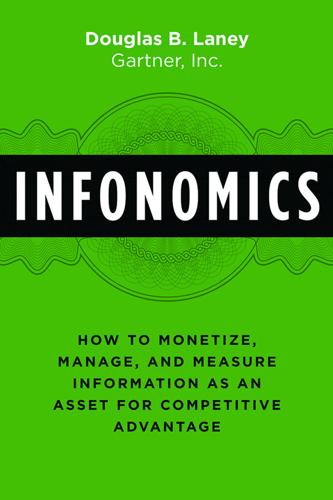
Infonomics: How to Monetize, Manage, and Measure Information as an Asset for Competitive Advantage
by
Douglas B. Laney
Published 4 Sep 2017
The challenges of prioritizing information lifecycle processes are summed up by a managing partner at a legal firm, “We’re not running an oil rig where someone’s going to get killed if we don’t follow the manual,” and by a government agency’s chief knowledge officer, who declared that “It’s not going to save someone’s life.”9 Yet the effective management of information assets can mean life or death for a company. Or many companies: In 2005–2006, I consulted to one of the major financial rating firms later implicated in the banking crisis. I assessed its financial derivatives surveillance (rating) process for acquiring, integrating, transforming, calculating, and sharing rating-related data. The 100-page report advised on how the defective process should be repaired. As evidenced by the mortgage crisis and subsequent recession, apparently it never was.
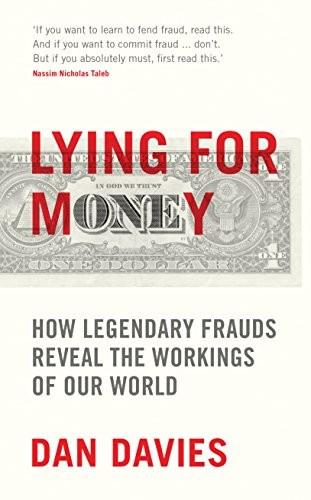
Lying for Money: How Fraud Makes the World Go Round
by
Daniel Davies
Published 14 Jul 2018
It is not so big a step from the rogue trader to consider what might happen if an entire bank came under the control of fraudsters and if the rogue was at the very top. The Savings and Loan scandals The Savings and Loan (S&L) crisis of the 1980s set the tone for many of the financial scandals to come. It was the first really major banking crisis of the post-Bretton Woods era and marked the transition from the inflationary 1970s to the hard-money era in the USA and into the Great Moderation. It also gave the first foreshadowings of the fact that financial deregulation tends to lead to crises; the interaction between the economic conditions of the time and the two major deregulation bills was particularly destructive.
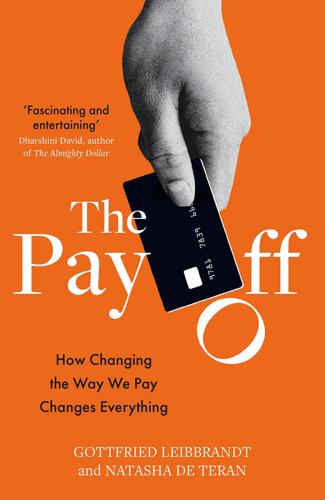
The Pay Off: How Changing the Way We Pay Changes Everything
by
Gottfried Leibbrandt
and
Natasha de Teran
Published 14 Jul 2021
IR=T; wwwtjustice.gov/opa/pr/bnp-paribas-agyees-plead-guilty-and-pay-89-billion-illegally-processing-financial; www.theguardian.eom/business/2014/aug/20/standard-chartered-fined-300m-money-laundering-compliance; www.dw.com/en/financial-crisis-bank-fines-hit-record-10-years-after-market-collapse/a-40044540 For the story on the Moldovan bank heist and its links to a Latvian bank, see: www.forbes.com/sites/francescoppola/2018/02/28/why-the-u-s-treasury-killed-a-latvian-bank/ For the story on ABLV and the US Treasury, see: https://www.fincen.gov/news/news-releases/fincen-names-ablv-bank-latvia-institution-primary-money-laundering-concern-and For the story on BCCI fraud, see: https://fas.org/irp/congress/1992_rpt/bcci/01exec.htm; http://news.bbc.co.uk/2/hi/business/5056056.stm Chapter 30 For US policy on banks accepting foreign IDs, see: http://financialservices.house.gov/media/pdf/062603sb.pdf For Dutch parliament discussion on financial exclusion, see: www.parlementairemonitor.n1/9353000/l/j9vvij5epmj1ey0/vk5dmnhjv5ui For financial exclusion of embassies, see: www.transparency.org/cpi2018; https://foreignpolicy.com/2010/11/19/37-embassies-in-washington-face-banking-crisis/; wwwr.reuters.com/article/us-financial-embassies/banks-can-keep-embassy-accounts-u-s-regulators-idUSTRE72O3ID20110325; www.federalreserve.gov/supervisionreg/srletters/srl106al.pdf For BIS and FSB on decline in correspondent banking relationships, see: T. Rice, G. von Peter and C. Boar (2020).
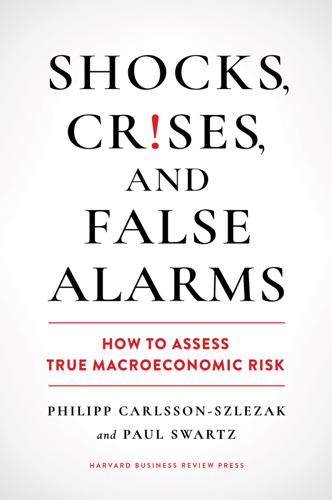
Shocks, Crises, and False Alarms: How to Assess True Macroeconomic Risk
by
Philipp Carlsson-Szlezak
and
Paul Swartz
Published 8 Jul 2024
Bernanke, “The Real Effects of Disrupted Credit: Evidence from the Global Financial Crisis,” Brookings Papers on Economic Activity, Fall 2018, https://www.brookings.edu/wp-content/uploads/2018/09/Bernanke_final-draft.pdf. 5. Michael D. Bordo, Angela Redish, and Hugh Rockoff, “Why Didn’t Canada Have a Banking Crisis in 2008 (or in 1930, or 1907, or …)?” National Bureau of Economic Research, August 2011, revised December 2011, https://www.nber.org/papers/w17312. 6. There is a strong case for intervention when the overall macro environment (e.g., Covid) is depressing demand and driving bankruptcies. But this does not apply to more normal business failures, driven by low productivity or bad management. 7.
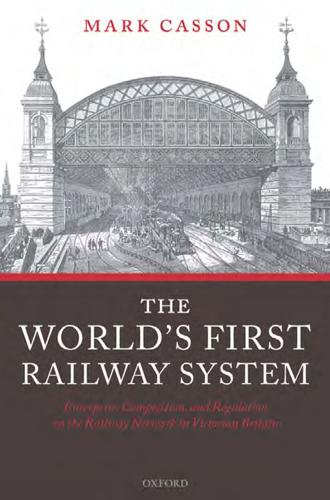
The World's First Railway System: Enterprise, Competition, and Regulation on the Railway Network in Victorian Britain
by
Mark Casson
Published 14 Jul 2009
The Llanelli management understood well that connecting up with the Central Wales line would bring additional traYc, and in anticipation of this they had built lines from Llandeilo to Swansea and to Carmarthen, the latter providing connections via the broad gauge for west Wales and the Irish Sea ports. Each of these Joint Lines 203 two new lines was associated with a separate capital account. Although the LNWR was willing to Wnance these lines, the Llanelli company had employed independent contractors who, partly as a consequence of the Overend Gurney banking crisis of 1866, got into Wnancial diYculties. The date of the LNWR’s arrival in Llandovery was also the date that the Llanelli company’s lease of the Vale of Towy line expired. When the lease was renewed the LNWR and Llanelli became partners—an appropriate arrangement since the Llanelli made connection at one end of the line and the LNWR now made connection at the other.
…
G. 41–2 Horncastle 119 Horsham 147, 148, 150, 191–2 Hove 147 ‘hub-spoke-rim’ 315, 316 Fig 3.15 hubs 16, 17, 59–60, 77, 83 Tab 3.4, 86, 105, 127, 142, 267, 268, 327, 449–63 Tab A5.2, 468–70 actual/counterfactual comparison 470–1 Ashford 21 Barking 155 around Birmingham 103 Brentford 155 Bromley 155 Cambridge 107, 109 Carlisle 132 Chester 181, 325 Chester-le-street 127 company-specific 468 composite 439–40 corner 82, 83 Tab 3.4, 85, 86 Crewe 21, 132 cross-country linkages on the symmetrical network 100 Fig 3.19 Croydon 155 cut-off principle in the symmetric system 98 Fig 3.17 Dartford 155 definition 439 Derby 282, 319 Doncaster 122, 213 Durham 127 Epsom 155 Ford 147 four-way 79, 95, 96, 192 and freight congestion 303 hexagonal configurations 96 Hull 83 Tab 3.4 importance in controlling territory 318–19 inefficiency on railway system 96 irregularly-used lines 468–9 Knottingley 213 London 147, 318 London as radial 319 Manchester as major 132 Market Weighton 21 Melmerby mini 124 Melrose 158–9 multiple stations 468 and municipal ownership 275 at natural bridging points 84 Tab 3.5 Newton Aycliffe 127 non-hub intersections 469–70 Index Normanton 213, 282 Peterborough 284 Pilmore mini 124 Ponders End 155 Preston 132 radial on main line system 99 Fig 3.18 regional 19 reversals 470 Rotherham 282 satellite 155, 439 size and distribution on actual system 95 Fig 3.14 Shrewsbury 178, 180, 325 Spennymoor 127 Starbeck mini 124 Steiner hexagonal solution for symmetrical system 97 Fig3.16 Swindon 21, 284 Symington 158–9 symmetric network in collaboration 101 Fig 3.20 symmetric network in competition 102 Fig 3.21 three-way 80, 94, 96, 98, 99 urban 87 Wakefield 122, 213, 262 in Wales 139 Warrington 132 Wells 145 Wembley 155 in the wrong places 21–2 York 122, 124, 282, 325 see also under counterfactual railway network Huddersfield 68, 122, 123, 124, 174 Hudson, George 55, 125, 152, 154, 182, 183, 286, 312 Huish, Mark 179 Hull 15, 55, 68, 119, 122, 125, 214, 271 as port 3 as primary natural hub 83 Tab 3.4 Hull and Barnsley Railway (HBR) and Great Central Joint Line 212–15 and Great Central and Midland Joint Line 212–15 network mileage 59 Hull and Selby Railway 125 Humber Bridge 15 Humber Estuary 214 Humber River 119, 122, 124 Humberside 132 Humberside and Cleveland regional network actual performance 162, 163 Tab 4.2 actual/counterfactual comparison 124–6 Hungerford 111 Hunslet 123 Hunstanton 109, 167 509 Huntingdon 108, 181, 183 as natural hub 83 Tab 3.4 Huntingdonshire 56 Hurst Green 151 Huskisson, William 130, 323 Hyde 169, 176 Hyde Park 16 Hythe 150 Ilkeston 133 Ilkley 122 image promotion and railways 309–11 Immingham Docks 14 Indian railway system 3, 44 Industrial Revolution 35, 39, 50 inefficiencies of the Victorian railway system 16–19 Ingleton 129, 132, 188 Institution of Civil Engineers (ICE) 55, 292 Institution of Mechanical Engineers (IME) 292 inter-modal competition with railways 276 inter-urban cooperation 18 invasion lines 273 by competing companies 268–9 joint venture schemes (large) 166–73 joint venture schemes (small) 173–8 Invergary 160 Invermoriston 161 Inverness 69, 159, 160–1, 162 investment in local infrastructure 369–72 Tab A1.1 Ipswich 69, 107, 108 Ireland 3, 137, 186 Irish famine 18, 33 Irish ferry ports 139 Irish Home Rule 33 Irish Mail 112, 137, 184 contracts 274 Irish parliamentary members 53 Irish Sea 184 iron ore 52 Ironbridge district 139 Irwell River 130 Isle of Man 39, 186 Isle of Portland 204, 205 Isle of Skye 161 Isle of Wight 1, 146 ferry 190 James, William 130, 281 Jarrow 68 Jedburgh 159 joint line ventures 165–220 capital economy 166 defensive strategies 166–7 invasion schemes (large) 166–73 510 joint line ventures (cont.) invasion schemes (small) 173–8 motives 165, 166–7 ‘truce lines’ 167 joint stock company status 42–3, 314 Keighley 123, 188 Keilder Forest 159 Keith 160, 161 Kelso 158, 159 Kemble, Fanny 323 Kendal 15, 70 Kennet and Avon Canal 15, 111 Kennet Valley 148 Kensington 153, 155 Kensington Canal Basin 208 Kent and East Sussex Light Railway 151 Kent and East Sussex regional network actual performance 164 Tab 4.2 actual/counterfactual comparison 150–1 Kentish Town, London 209, 210 Kenyon 186 Keswick 219 Kettering 107 Kidderminster 69, 115, 135, 136, 140 Kilmarnock 14, 69, 157, 158, 159, 194, 195 Kilnhurst 214 Kilsyth and Bonnybridge Joint Line 196 Kilwinning 158 Kings Cross Station, London 153, 319 Kings Lynn 69, 107, 109, 110, 119, 182 as primary natural hub 83 Tab 3.4 Kingsbridge 142 Kingswear 142 Kingswinford 69 Kirk Smeaton 213 Kirkaldy 160 Kirkby Lonsdale 129, 131–2 counterfactual core hub 89 as secondary natural hub 83 Tab 3.4 Kirkby Stephen 129 Kirkcudbright 158 Kirkham 187 Kirkheaton 70 Kirkintilloch 196 Knaresborough 122 Knott Mill 211 Knottingley 119, 126, 173, 183–4, 212 hub 213 Kyle of Lochalsh 161 Labour Party, Independent 37 Ladybank 160 Laing, Samuel 56, 234 laissez faire 36–7, 38 Lake District 129, 131, 177 Lanark 157, 159 Index as secondary natural hub 83 Tab 3.4 Lanarkshire and Dumbartonshire Railway 199–200 Lancashire and Yorkshire Railway (LYR) 123, 182, 183 and Axholme Joint Committee 212–15 and Halifax and Ovenden Railway (Joint) 201–2 and Halifax High Level Station 201, 202 and Lancashire Union Joint Line 196–7 and Methley Joint Line 212 network mileage 59 and North Union Railway 185–7 and Preston and Longridge Joint Line 185–7 and Preston and Wyre Joint Line 185–7 and Preston Joint Line 185–7 and South Yorkshire Joint Line 212–15 and West Riding and Grimsby joint scheme 173 Lancashire coalfield 132, 197 Lancashire textile industry 130 Lancashire Union Joint Line 196–7 Lancaster 68, 116, 128, 129, 131, 157, 177 as primary natural hub 83 Tab 3.4 Lancaster and Carlisle Railway 45 land acquisition and railway promotion schemes 287–8, 290 cost in cities 292 price of 300 Lands End 141 Langport 144, 145 Lansdowne Station, Cheltenham 149 Larbert 196 Largs 158, 195 Larne 158, 185 Larpool Viaduct 126 Laughton 214 Launceston 142, 143 Laxfield 110 Lea Valley 108, 182 Leamington 62, 115, 135, 136, 172, 203 Leatherhead 147, 190, 191, 192, 193 Lechlade 115, 116 Leeds 2, 14, 22, 55, 68, 81, 117, 118, 119, 122, 123, 124, 126, 128, 132, 133, 134, 171, 173, 174, 177, 178, 183, 184, 188, 204, 211, 212, 213, 270 Leeds and Liverpool Canal 130, 197 Leeds and Selby Railway 125, 270 Leicester 14, 68, 107, 115, 116, 117, 118, 133, 134, 135, 136, 167, 170 counterfactual core hub 89 Leicester and Swannington Railway 187 Leicestershire coalfield 187 Leighton Buzzard 116, 118 Leominster 140 Leunig, T. 10 Index Lewes 150 Lewisham 189 Leyburn 132 Leyland 69 Lichfield 115, 134, 135, 136, 148 Lickey incline 135 light railways 284 Lime Street Station, Liverpool 133 Limerick 136 limited liability companies 42–3 Lincoln 14, 56, 69, 117, 119, 121, 122, 133, 181, 182 Lincolnshire 56 Lincolnshire regional network actual performance 162, 163 Tab 4.2 actual/counterfactual comparison 119–21 Littlehampton 146, 147 liveries (and railway companies) 310 Liverpool 68, 87, 122, 123, 125, 130, 131, 132, 133, 134, 138, 140, 168, 169, 174, 175, 178, 181, 186, 201, 210, 211, 271, 273 Central Station, 133, 169 Exchange Station 133 Lime Street Station 133 port 3 as primary natural hub 83 Tab 3.4 Liverpool and Manchester Railway (LMR) 1, 3, 17, 26, 45, 47, 60, 130–1, 152, 186, 203, 210, 232, 260, 262, 270–1, 282, 283, 314, 323 by-passing St Helens 293 by-passing Warrington 293 by-passing Wigan 293 Liverpool Steet Station, London 153, 154, 155 Liversedge 123 Llancaiach 217, 218 Llandeilo 140, 202, 217 Llandovery 140, 202, 203 Llanelli 203 Llanelli Railway 202–3 Llanfynydd 218 Llangollen 138 Llangurig 139, 140 Llangurig Tunnel 15–16 Llyn Peninsula 112, 138 Local and Personal Acts of Parliament see Railway Bills local coalfield joint lines 212–19 Axholme Joint Committee 212–15 Great Central and Hull and Barnsley Joint Line 212–15 Great Central and Midland Joint Committee 212–15 Great Central, Hull and Barnsley and Midland Joint Line 212–15 South Yorkshire Joint Line 212–15 Local Government Acts 48 511 local lines 7, 16–17, 67, 70 local linkages, and municipalization 275 Loch Linnhe 161 Loch Lomond 200 Loch Ness 160 Locke, Joseph 55, 165, 192, 194 Lockerbie 185 ‘Locomotion’ 60 London 2, 55, 56, 57, 61, 64, 68, 77, 81, 89, 174, 178, 183, 184, 186, 204, 205, 213, 216 Addison Road Station 155 Broad Street Station, 209 Cannon Street Station, 153 as centre of hexagonal configuration 96–103, 97 Fig 3.15, Fig 3.16, 98 Fig 3.17, 99 Fig 3.18, 100 Fig 3.19, 101 Fig 3.20, 102 Fig 3.21, Charing Cross Station 153 as corner hub on the counterfactual network 82 and cross-country journeys 94 and Croydon and Oxted Line and Woodside and South Croydon Joint Line 189 docks 152, 154, 209, 210 and early railway schemes 283–4 emergence of London-based system, f 264 and East Anglia regional network 106–9 and East Coast main line 169, 263 and Epson and Leatherhead Joint Line 191–2 Euston Station, 153, 155, 208, 209 to Exeter line 144, 172, 205, 262–3 and Great Central Railway 176 and Great Central Railway access 172 and Great Eastern Railway freight lines 173 and Great Northern Railway 167 and Great Western Railway 179 joint freight lines 208–10 and Kent and East Sussex regional network 150–1 Kings Cross Station 153, 319 London Bridge Station 153, 154, 155, 192, 193 Ludgate Hill Station 153, 193 Marylebone Station 117, 154 Moorgate Station 176 and North Midlands regional network 133 Paddington Station 61, 153, 155, 208, 209 as primary natural hub 83 Tab 3.4, 147, 318 punctuality of express arrivals (1890s) 303, 304 Fig 7.3 as radial hub 319 role of orbital lines on the counterfactual system 155 and Scottish Lowlands regional network 157 512 Index London (cont.) and Shires regional network 116–17, 119 and South Coast regional network 146–7, 149 and South Midlands region 110, 111, 112–13 South Orbital Route 151 and South-West regional network 142 St Pancras Station 117, 128, 154, 201, 209 Stock Exchange 57 suburban railway projects 193 terminals 319, 327 see also individual stations terminals on the counterfactual system 155 Underground system 155, 165 urban freight lines 213 Victoria Station 153, 154, 192, 193, 209 and Wales regional network 136 Waterloo Station 153, 192, 193, 209 and West Midlands regional network 134, 135 and Yorkshire Regional network 122 and Yorkshire traffic 269–70 London and Birmingham Railway (LBR) 14, 17, 20, 22, 24, 45, 112, 116–17, 178, 208, 262, 264, 278, 282 by-passing Aylesbury 293 by-passing Northampton 293 Northampton branch 294 Peterborough branch 294 London and Blackwall Railway 154 London and Greenwich Railway 152 London and Home Counties regional network actual performance 164 Tab 4.2 actual/counterfactual comparison 151–6 London and North Western Railway (LNWR) 21, 24, 46, 102, 107, 114, 116, 117, 118–19, 123, 128–9, 132, 136–9, 156, 157–8, 173, 174, 182, 202–3, 211, 215, 217, 272, 273, 275, 316, 319 and Ashby and Nuneaton Joint Line 187–8 and Birkenhead Joint Line 180–1 and Brecon and Merthyr Joint Line 216–17 and Brynmawr and Western Valleys Line 218 and Chesire Lines Committee 168–9 and Great Northern Railway Joint Lines 170–1 and Great Northern Railway Joint Lines (freight traffic) 170 and Great Northern Railway Joint Lines (Yorkshire coal traffic) 170 and Great Western and Great Central Joint Lines 172 and Lancashire Union Joint Line 196–7 live cattle trade 306 and Macclesfield Committee 175–6 and Manchester South Junction and Altrincham Joint Railway 210–11 and Nantybwch and Rhymney Joint Line 215–16 network mileage 59 and North and South Western Junction Joint Railway 209 and North Union Railway 185–7 and Oldham, Ashton and Guide Bridge Junction Joint Railway 211–12 and Portpatrick and Wigtownshire Joint Committee 184–5 and Preston and Longridge Joint Line 185–7 and Preston and Wyre Joint Line 185–7 and Preston Joint Line 185–7 and Shrewsbury Joint Lines 178–80 and West London Joint Line 208–9 and West London Line Extension Joint Line 208–9 and Whitehaven, Cleator and Egremont Joint Line 219 and Wrexham and Minera Extension Joint Line 218 London and Southampton Railway see London and South Western Railway (LSWR) London and South Western Railway (LSWR) 14, 19, 22, 23, 103, 112, 141–2, 144–5, 146–7, 147–9, 153, 187, 220, 272, 273, 293–4, 316 and Easton and Church Hope Railway 204–6 and Epson and Leatherhead Joint Line 191–2 and Fratton and Southsea Joint Line 190–1 Hounslow loop 209 network mileage 59 and Portsmouth and Ryde Joint Line 190–1 and Somerset and Dorset Joint Railway 171–2 and Tooting, Merton and Wimbledon Joint Line 192–3 and West London Line Joint Extension 208–9 and Weymouth and Portland Joint Railway 204–6 London, Brighton and South Coast Railway (LBSCR) 56, 146–7, 147–9, 153–4, 209, 234, 287 and Croydon and Oxted Line and Woodside and South Croydon Joint Line 189 and Epson and Leatherhead Joint Line 191–2 and Fratton and Southsea Joint Line 190–1 network mileage 59 and Portsmouth and Ryde Joint Line 190–1 and Tooting, Merton and Wimbledon Joint Line 192–3 Index London, Chatham and Dover Railway (LCDR) 150, 151, 153, 189, 273, 287 London Line Extension 210 London Road Station, Manchester 132, 174 London, Tilbury and Southend Railway (LTS) 273 network mileage 59 and Tottenham and Forest Gate Joint Railway 210 London to Exeter line 144, 172, 205, 262–3 Londonderry, Lord 288 Long Eaton 117, 133 Long Stanton 182 long-term interest rates, UK (1830–1914) 35 Fig 2.4 Longbridge motor factory 196 Longridge 186, 187 Looe 142 loop principle 72, 142 Loughborough 70, 133, 187 Louth 119 Low Gill 128, 188 Lowestoft 107, 198 Ludgate Hill Station, London 153, 193 Ludlow 138, 140 Lune River 131 Lune Valley 129 Lutterworth 117 Lybster 161, 162 Lydbrook 198 Lydney 137, 198, 199, 207 Lyme Bay 143, 144 Lyme Regis 144 Lymington 146 Lyndhurst 146 Lynn and Fakenham Railway 109 Lytham 187 M1 motorway 15, 118, 122 M4 suspension bridge 112 M6 motorway 15, 118 M45 motorway 15, 118 Mablethorpe 119 Macclesfield 68, 176 Macclesfield, Bollington and Marple Railway 175 Macclesfield Committee 175–6 Machynlleth 138, 139 Maidenhead 172 Maidstone 69, 150, 151, 155, 189 mail 6, 7 see also Irish mail Maldon 108 Malton 125 Manchester 2, 55, 68, 81, 87, 116, 122, 123, 124, 125, 130, 131, 133, 134, 138, 140, 168, 169, 173, 175, 176, 183, 186, 187, 211, 212, 213, 271, 273, 319 513 Central Station, 132, 169, 174 Exchange Station, 132 joint freight lines 210–12 London Road Station, 132, 174 as major hub 132 textile centre 3 Victoria Station 132 Manchester and Birmingham Railway 174, 210–11, 271 Manchester and Milford Railway (projected) 16, 138 Manchester and Leeds Railway 46, 173, 186, 201, 282 ‘Manchester School’ 37 Manchester, Sheffield and Lincolnshire Railway 211 Manchester ship canal 47 Manchester South Junction and Altringham Railway (MSJAR) 169, 210–11 Mangotsfield 144, 171 Manningtree 107 Mansfield 214 March 108, 181, 182 Margate 70 maritime trade 47 Market Drayton 21, 180 Market Harborough 170 Market Rasen 119 Market Weighton 126 hub 21 Marlborough 148, 149, 166 Marple 176 Marshall, Alfred 35, 322 Marx, Karl 38 Marylebone Station, London 117, 154 Maryport 177 Maryport and Carlisle Railway 177 Matlock 133 ‘me-too’ Parliamentary Bills 20 mechanical engineers 312 Melmerby mini hub 124 Melrose counterfactual core hub 89, 158–9 Melthem 123 Melton Constable 109, 168 junction 11 Melton Mowbray 170 Menai Bridge 311 Menai Strait 136 Mendip Hills 143, 149, 172 Meon Valley 147, 191 Merchants Railway 205 mergers and amalgamations 103, 222, 240, 258, 264–8 consequence 264–8 inter-regional 273 Parliamentary blocking 301 Parliamentary disapproval 262, 264 514 Index mergers and amalgamations (cont.) policy 269–74 rationalizations 297 Mersey and Irwell navigation 130 Mersey River 131 Mersey Valley 186 Merthyr, Tredegar and Abergavenny Railway 216 Merthyr Tydfil 68, 137, 216–17, 217–18 Merton 193 Merton Abbey 193 Methley Joint Line 212 Metropolitan District underground 153 Metropolitan Railway (MetR) 172 and Great Central Joint Committee 176–7 Middlesbrough 122, 126 as primary natural hub 83 Tab 3.4 Middleton 69 Middleton-in-Teasdale 129 Middleton Railway 45 Middlewood 176 Midhurst 148, 190 Midland and Great Northern Railway (MGNR) 109, 110, 167–8 and Great Northern and London and North Western Joint Lines 170 network mileage 59 and Norfolk and Suffolk Railways Joint Committee 197–8 Midland and South West Junction Railway (MSWJR) 23, 166, 148–9 network mileage 59 Midland Counties Railway 133, 269–70 Midland Railway (MR) 22, 23, 46, 55, 102, 107–8, 109, 117, 118, 121, 123, 128, 132, 133, 134, 135, 136, 137, 140, 144–5, 149, 154, 158, 172, 173, 176, 182, 183, 194, 201, 202, 204, 220, 264, 269, 271, 273, 282, 319, 325 and Ashby and Nuneaton Joint Line 187–8 and Bristol Port and Pier Joint Lines 206–7 and Cheltenham and Gloucester Joint Line 203–4 and Chesire Lines Committee 168–70 and Clifton Extension Joint Railway 206–7 and Furness Railway Joint Lines 177–8 and Great Central and Hull and Barnsley Joint Line 212–15 and Great Central Joint Committee 212–15 and Great Northern and London and North Western Joint Lines 170–1 and Halesowen Joint Railway 195–6 and Midland and Great Northern Railway 167–8 network mileage 59 and North and South Western Junction Joint Railway 209 and Otley and Ilkley Joint Line 188–9 Peterborough branch 294 and Portpatrick and Wigtownshire Joint Committee 184–5 second-class travel 310 and Severn and Wye Joint Line 198–9 and Sheffield and Midland Railways Joint Committee 174–5 and Somerset and Dorset Joint Railway (S and DJR) 171–2 and South Yorkshire Joint Line 212–15 and Swinton and Knottingley Joint Line 183–4 and Tottenham and Forest Gate Joint Railway 210 and Tottenham and Hampstead Joint Committee 209–1 third-class travel 310 Midsummer Norton 145 mileage, railway companies network (1911) 59 Tab 3.1 Milford 125 Milford Haven 136, 137 Minehead 141, 142 mineral railways 137, 141 traffic 65, 265 mining as Victorian project-based industry 50–2 in rural areas 306 Mirfield 122 Moat Lane Junction 139 Mold 218 Mole Valley 147, 191 Monmouth 198 monopolies 55, 258–9, 270, 274, 317–18, 321 and regulation of fares 260–2 Montrose 69, 200 Moon, Richard 179 Moor Street Station, Birmingham 136 Moorgate Station, London 176 Moorthorpe 184 Morecambe 177 Moretonhampstead 142 Morpeth 157, 159 Morrison, James 261–2, 322 and low fares policy 271 Moss Chat 130 Motherwell 14, 157 as natural hub 83 Tab 3.4 Mottisfont 148 Mottram 69 Mouldsworth 169 multi-linkage projects, as policy option 275 Mundesley 110, 198 Murdoch, William 61 Index Nantybwch and Rhymney Joint Line 215–16 Nantyglo 218 Napoleonic Wars 3, 26, 33, 35, 37, 146 Narborough 188 narrow gauge see standard gauge national rail network 105, 326 projected 29, 53, 104 nationalization (BR 1948) 26, 28, 273–4 as policy option 274, 275, 276 and social ownership 221 Neasden 172 Neath 139, 140, 199, 215, 216, 217 Neath and Brecon Railway 140 network industries and customer choice 278–9 network inefficiency 320 network optimisation 10–11 Network Rail 286 New Cross Gates 154 New Mills 169, 174, 176 New Romney 150 New Street Station, Birmingham 136 New Zealand 39 Newark 119, 121, 122, 133, 170 as natural hub 83 Tab 3.4 Newbury 111, 115, 118, 148 Newcastle 14, 68, 87, 105, 117, 122, 127–8, 129, 157, 158, 159, 183, 213 coal shipments 50 corner hub on the counterfactual 82 as primary natural hub 83 Tab 3.4 Newcastle and Carlisle Railway (NCR) 3 Newmarket 108, 109 Newport 114, 137, 139, 202, 207, 215, 216, 218 Newport, Abergavenny and Hereford Railway (NAHR) 216 Newquay 142 Newton Aycliffe hub 127 Newton-le-Willows 186 Newton Stewart 184 Newtown 139 Neyland 287 Nine Elms 153 Nithsdale 157 Non-Conformists 54 Norfolk and Suffolk Railways Joint Committee Railway 110, 197–8 Normanton 125, 173, 183, 212 hub 213, 282 North and South Western Junction Joint Railway 209 North British Railway (NBR) 14, 19, 128, 157–9, 160–1, 194, 316 and Dumbarton and Balloch Joint Line 199–200 and Dundee and Arbroath Joint Line 200–1 515 and Kilsyth and Bonnybridge Joint Line 196 network mileage 59 North-East regional network actual performance 163 Tab 4.2 actual/counterfactual comparison 126–8 North Eastern Railway (NER) 117, 124, 125, 126, 127, 128, 129, 152, 157, 159, 173, 194, 286, 316 and Axholme Joint Committee 212–15 and Methley Joint Line 212 network mileage 59 and Otley and Ilkley Joint Line 188–9 and South Yorkshire Joint Line 212–15 and Swinton and Knottingley Joint Line 183–4 North London Railway (NLR) 154, 155 and North and South Western Junction Joint Railway 209 North Midland Railway 133, 170, 183 North Midlands regional network actual performance 163 Tab 4.2 actual/counterfactual comparison 133–4 North Norfolk coast 23, 106, 109, 167, 168, 197 North Pennines regional network actual performance 163 Tab 4.2 actual/counterfactual comparison 128–9 North Shields as natural hub 83 Tab 3.4 North Somerset coalfield 111 North Staffordshire Railway (NSR) 286 and Macclesfield Committee 175–6 network mileage 59 North Union Railway (NUR) 45, 185–7, 270–1 North Wales coalfield, Wrexham 137, 169, 218 North Wales Mineral Railway 181 North Walsham 110, 168, 198 North-West and Cumbria regional network actual performance 163 Tab 4.2 actual/counterfactual comparison 130–3 North West region 118 North Woolwich 154 Northallerton 121, 128, 132, 188 Northampton 17, 69, 103, 116, 118, 135, 136, 170 counterfactual core hub 89 loop 118 Northampton and Peterborough Railway 46 Northenden 174 Northern and Eastern Railway 108 Northfield 195, 196 Northleach 114, 115 Northolt 172 Northwich 169, 211 Norton Fitzwarren 142 516 Index Norwich 68, 72, 77, 106, 107, 108, 109, 152, 153, 154, 155, 168, 198 as regional centre in hexagonal configuration 96 Norwood Junction 152 Nottingham 14, 68, 72, 77, 102, 103, 117, 119, 133, 134, 167, 170, 214, 319 as natural hub 83 Tab 3.4 as regional centre in hexagonal configuration 96 Victoria Station 8 Nuneaton 14, 116, 135, 136, 187, 188 Oban 161 O’Brien, Donatus 234, 235 Okehampton 316 Old Hill 195 Oldham 68, 212 Oldham, Ashton and Guide Bridge Junction Joint Railway 211–12 Olson, Mancur 40–1 operating early railways 302–5 opposition to railway schemes 294–7, 295 Tab 7.3 expenditure on 295–6, 295 Fig 7.1, 296 Fig 7.2 optimisation, railway network 10–11 Ormskirk 69, 132 Orpington 151 Oswestry 138, 180 Otford 151, 189 Otley 122 Otley and Ilkley Joint Line 188–9 Ouse River 107, 125 Ouse Valley 122 Overend Gurney banking crisis 44, 203 Overseal 187 ownership and defragmentation 203–4 Oxford 14, 20, 69, 107, 110, 111, 112, 114, 115, 116, 118, 135, 148, 155, 156, 172, 179 as secondary natural hub 83 Tab 3.4 Oxford, Worcester and Wolverhampton Railway 195 Oxted 151 Paddington Station, London 61, 153, 155, 208, 209 Padstow 142 Paisley 68, 158, 194 Pangbourne 148 Paris 5 Park End 198 Parkway Station, Bristol 114 Parliament 267–8 advocacy for schemes 294–7 approval for schemes 196, 200, 292–3, 318 bogus schemes 268–9 collaborative lines 262, 264 crisis of 1846 321 cross-examination 294 fare regulation 260–2, 274 mergers 270 ‘Parliamentary trains’ 302 Plan submitted for Private Bill 291 procedure for Private Bills 377 Railway Committees 120, 294, 299, 322 Railway Mania and Parliamentary session 1845–46 257–8 regulation 277–9 relations with Board of Trade 27–8 road lorry licensing 276 Parrett Valley 144 Pasley, Charles 234 passenger trains/traffic 6, 7, 53, 65 high-speed 127 path dependency 24–5 Peak District 133, 169, 187 Pease, Edward 127 Peebles 158, 159 Peel, Sir Robert 37, 234, 258, 259, 323 Pen-y-Daren Railway 137 Pencader 138 Pencuik 157 Penistone 124 Penrith 128, 129, 219 Pentland Hills 157 Penzance 141 performance metrics 6–8 counterfactual vs. actual network 65 Tab 3.2 distance 7–8 optimisation of railway network 10–11 policy implications 496–7 time 7–8 peripheral areas (14) in the UK 84 Tab 3.5, 89 Perth 14, 69, 157, 159, 160, 162, 200, 316 Peterborough 108, 116, 117, 118, 119, 121, 122, 167, 168, 170, 181, 263 as secondary natural hub 83 Tab 3.4, 284 Peterhead and Fraserburgh loop 161 Petersfield 147, 148 Peto, Frederick Morton 301 Pickering 126 Pilmore 125 mini hub 124 Pitlochry 160 Plan of railway scheme submitted to Parliament 291 Plymouth 14, 68, 111, 141, 273, 287, 294, 316 as primary natural hub 83 Tab 3.4 Polegate 150, 151 Pollard, Sidney 39 Ponders End satellite hub 155 Pontstycill Junction 217 Index Pontypool 70, 139, 202, 216, 218 Pontypridd 217 Poole 19, 23, 143, 144, 145, 146, 147, 148, 150, 171, 205 population census data, UK (1830–1914) 33 Fig 2.1, 62–3 principal town and cities 68–70 Tab 3.3 Port Patrick and Wigtownshire Joint Committee 158 Porter, George 234 Porthdynlleyn 112, 287 Portishead 206 Portpatrick 184–5 Portpatrick and Wigtownshire Joint Committee 184–5 network mileage 59 Portsea Island 146 Portsmouth 68, 115, 143, 146, 147, 148, 171, 190, 191, 192, 287 Portsmouth and Ryde Joint Line 190–1 Portsmouth Direct Line 192 extension 46 Portsoy 161 postcards 311 Poulton 187 Preston 68, 116, 124, 131, 186, 197, 263 as primary natural hub 83 Tab 3.4, 132 Preston and Longridge Joint Line 185–7 Preston and Wyre Joint Line 185–7 Preston Joint Lines 185–7 price level index, UK (GDP deflator) (1830–1914) 34 Fig 2.3 Princess Risborough 172 Princetown 142 ‘procedural rationality’ 93 project promotion, Victorian 43–50 average annual rate 47 Fig 2.5 Protestant Plantation of Ulster 184 Provisional Committees and railway promotion 284, 290–1, 298, 321 public loans to railways (up to 1867) 224 Tab 6.1 public relations, and railway companies 309 public service, and railways 276, 281, 286 Pudsey 123, 124 Pulborough 147, 192 Pullman cars 310 punctuality, express arrivals in London (1890s) 303, 304 Fig 7.3 Pwllheli 138, 139 Quaker’s Yard and Merthyr Line 217–18 Quantock Hills 141 Queensbury 123, 201 Queensferry line 160, 202 ‘Race to the North’ 316, 317, 326 radial main line system hubs 99 Fig 3.18 517 Radley 115 Radstock 144, 145 rail crossings, and multiple termini 463–6 Tab A5.3 Railway Act (Gladstone’s, 1844) 26, 262, 276 Railway Amalgamation Act, first (1834) 225 Tab 6.2 railway battles 299–301, 300 Tab 7.4 Railway Bills (Acts of Parliament) 44–7, 45–6 Tab 2.1, 47 Fig 2.5, 48–50, 49, 225–32 Tab 6.2 Tab 2.2, 53, 54–5, 383–8 major (1844–45) 242–55 Tab 6.7, 256–8 Railway Clearing House, The 325 establishment 226 Tab 6.2 Railway Committee, Board of Trade 2, 21, 27, 28, 29, 56, 103, 182, 221–2, 232–8, 257, 270–1, 277–8, 322–3, 326 civil servants, role of 235–6 compromises endorsed 239 Tab 6.5 criticism of 235–6 establishment 227 Tab 6.1 general judgements 236 Tab 6.3 principles of policy 235 principles of regulation 238–57 recommendations relating to Lancashire and Northwest 241–56 rejection/postponement of schemes 240 Tab 6.6 specific judgement 237–8 Tab 6.4 and ‘stock-jobbing’ 235 Railway Companies Association 224–5, 325 railway companies’ business strategy 284 railway companies controlling overseas operations 51 Tab 2.3 railway entrepreneurship 52–6 railway grouping (1923) 1 railway investment, commercial drivers 136 Railway Mania (first) 17–19, 24–5, 27–8, 28–9, 44, 56, 58, 62, 103, 113, 114, 120, 125, 140, 154, 156, 157, 181–2, 190, 205, 216, 221, 222, 232, 234, 271, 276, 277, 284, 289, 294, 298, 302, 309, 318, 320–1, 327 and Parliamentary session 1845–46: 257–8 Railway Mania (second) 44–7 187, 188, 192, 195, 200, 258, 276, 284, 318 railways and canals compared 314–15 Rainhill Trials 60, 130 Ramsgate 150 Ravenfield 214 Reading 22, 69, 148, 151, 156, 191 counterfactual core hub 89 as natural hub 83 Tab 3.4 Reddish 174 Redditch 135 Redesdale 159 Redhill 147, 151, 156, 189, 191, 287 518 Index Redruth 141 redundancy in the railway network 12 Reedsmouth 158, 159 Reform Act (1832) 28, 33 refrigeration and international meat trade 306 Regents Park 16 regional monopolies by railway companies 222 regional networks 105–64 actual performance 162–4, 163–4 Tab 4.2 actual/counterfactual comparison 105–6, 106 Tab 4.1 see also individual regional networks regulation of railways 262 failure of 26–7 formal model of Victorian 477–97 Parliamentary 221–79 Parliamentary chronology of 225–32 principles of policy 222–32, 232–4, 235, 238–57 religion, Victorian 33–4 Renfrew 194 Retford 121, 169, 213, 319 Rhymney Railway (RR) 215 and Nantybwch Joint Line 215–16 network mileage 59 and Quaker’s Yard and Merthyr Line 217–18 and Taff Bargoed Joint Line 217–18 Rhymney Valley 216 Ribble River 131 Ribble Valley 186 Riccarton Junction 158, 159 Richmond-on-Thames 152, 155, 209 Rillington Junction 128 Ringwood 147, 148, 205 Ripon 122 Rishworth 123 river quays 292 Rochdale 68, 132, 133 Rochester 150 ‘Rocket’ locomotive 60, 130, 323 rolling stock 302 Rolvenden 151 Romans 15, 50 Romford 108 Romiley 174, 176 Romsey 115, 146, 148 Rosedale mines 126 Ross-on-Wye 198 Rosslaire 136 Rothbury 159 Rotherham 70, 183 hub 282 route selection in railway schemes 291–2 Royal Border Bridge, Berwick 158 Royal Commissions 225 ‘Royal Line, The’ 311 Ruabon 138 Rugby 14, 107, 116, 117, 133, 170, 172, 179, 263 hub 284 Rugeley 116 Runcorn 132 as natural hub 83 Tab 3.4 rural economy, railways and 305–7 rural needs, and railways 307–8 Rushey Platt 149 Rutland, Duke of 170 Rye 150 Saddleworth 69 safety systems 310 Salford 211 Salisbury 14, 19, 115, 143, 147, 148, 171, 172 Salisbury Plain 111, 149 Saltash Bridge 141 Saltburn 126 Sandwich 150 Sapperton incline 114 Scarborough 62, 125, 126 Schumpeter, Joseph A. 39 Scotsgap 159 Scottish Central Railway 157 Scottish Lowlands regional network actual performance 164 Tab 4.2 actual/counterfactual comparison 156–9 Scottish North Eastern Railway 200 Scottish parliamentary members 53 scrip (tradable shareholder options) 53–4, 289, 298, 320–1 Sea Mills 206, 207 Seamer 126 Seaton 144 second-class coaches 302 second-class travel (MR) 310 Sedbergh 122, 129, 132 Sedgeley 69 Selby 119, 122, 125, 126 Select Committees, Parliamentary 20, 27, 29, 54–5, 165, 192, 225, 235, 256 Railway Acts Enactments 261 Reports 232–4 on the State of Communication by Railways 270 see also Railway Committee, Board of Trade Selkirk 159 Sennybridge 140 Settle 129, 158, 184 Settle and Carlisle line 128, 132, 177, 185 Sevenoaks 189 Severn and Wye Joint Line 198–9 Severn Bridge proposal 113 Severn Bridge Railway 199 Severn Estuary 72, 110, 111 Index Severn River 113, 131, 137, 198, 199, 203, 215 Severn Tunnel 15, 16, 111, 112–14, 198, 207 Severn Valley 139 Shackerstone 187, 188 Shaftesbury 143, 144 Shap Fell 129 shareholders, and railway scheme promotion 257, 269, 276–7, 280, 281, 283, 284–6, 285 Tab 7.2, 289, 291, 296, 308 committees of investigation 285 meetings 284–5 shares 54, 285–6, 288, 289, 290, 292 see also scrip Sharpness 113, 198, 207 Shawford 148 Sheffield 68, 117, 118, 119, 122, 124, 133, 134, 182, 183, 184, 211, 212, 213, 270, 319 Sheffield and Manchester Railway 271 Sheffield and Midland Railways Joint Committee 174–5 Sheffield, Ashton-under-Lyne and Manchester Railway 174, 210–11 Shepherds Bush 155 Shepton Mallet 145 Sheringham 168 Sherwood Forest 133 Shipley 123 Shipton-under-Wychwood 114 Shires regional network actual performance, 163 Tab 4.2 actual/counterfactual comparison 116–19 Shoreditch 108, 155 Shoreham 146, 147, 191 as corner hub on the counterfactual 82 as primary natural hub 83 Tab 3.4 Shrewsbury 17, 56, 68, 115, 116, 135, 138, 139, 140, 178–80 as natural major hub 83 Tab 3.4, 178, 180, 325 Shrewsbury and Birmingham Railway 117, 179 Shrewsbury and Chester Railway 137, 178, 179 Shrewsbury and Hereford line 202 Shrewsbury and Welshpool Railway 117, 180 Shrewsbury Joint Lines 178–80 Shropshire Union Company 179 Sidcup 156 Sidmouth 143, 144 Simmons, Jack 1–2 Simon, Herbert A 91–3 Singwall 161 Sirhowy Valley 216 Skegness 62, 119 Skipton 122, 123, 128, 188 Sleaford 119, 121, 181, 182 Slochd Summit 160 Smiles, Samuel 55 519 Smith, Adam 32, 37, 258–9 Snaith 214 Snow Hill Station, Birmingham 136 social benefits of railways 223 social conservatism 30 social cost-benefit analysis 27, 29, 494–5 social responsibilities of railways 223 social savings approach 17 solicitors’ lines 298 Solway Firth 127, 131, 158, 177 Solway River 156 Somerset and Dorset Joint Railway (SDJR) 23, 60, 130, 144, 149, 171–2 network mileage 59 Somerset and Dorset regional network actual performance 164 Tab 4.2 actual/counterfactual comparison 143–5 Somerset Central Railway 171 Somerset coalfield 23 South Coast regional network actual performance 162, 164 Tab 4.2 actual/counterfactual comparison 145–9 South Devon Railway 141 South Durham line 129 South Eastern and Chatham Railway (SECR) 148 network mileage 59 South Eastern Railway (SER) 151, 153, 154, 156, 176–7, 191, 235, 287 and Croydon and Oxted Joint Line 189 extensions 46 network mileage 59 and Woodside and South Croydon Joint Line 189 South Lynn 109, 110 South Midlands regional network actual performance 163 Tab 4.2 actual/counterfactual comparison 106 Tab 4.1, 110–16 South Shields, as natural hub 83 Tab 3.4 South Staffordshire Railway 135 South Wales 110, 111, 118, 152, 199 coal and iron industry 52, 112, 113, 114, 137, 198, 202, 213 coal owners 199 South Wales Coalfield Joint Lines and boundary markers 215–18 Brecon and Merthyr and LNWR Joint Line 216–17 Brynmawr and Western Valleys Line 218 large invaders 215–18 Nantybwch and Rhymney Joint Line 215–16 Quaker’s Yard and Merthyr Line 217–18 Taff Bargoed Joint Line 217–18 South Wales Railway 137, 215 520 Index South-West regional network actual performance164 Tab 4.2 actual/counterfactual comparison 140–3 South Yorkshire coalfield 52, 121, 183, 212–14 South Yorkshire Joint Line 212–15 Southampton 3, 69, 74, 112, 115, 118, 135, 143, 144, 145, 146, 147, 148, 150, 152, 153, 155, 171, 190 as corner hub on the counterfactual 82 as primary natural hub 83 Tab 3.4 Southampton and Dorchester Railway 205 Southend 210 Southport 132, 169, 174 Southsea 190 Southwark 152, 155 Southwold 110 Sowerby Bridge 201 space-filling principle 72 Spalding 14, 109, 119, 121, 168 Spean Bridge 160, 161 Spennymoor hub 127 St Albans 155 St Helens 17, 130, 132, 197 St Ives, Cornwall 142 St Ives, Cambridge 181, 182 St Pancras Station, London 117, 128, 154, 201, 209 Stafford 103, 133, 135, 175, 179, 180, 319 Staffordshire coalfield 50, 175 Stainforth 119 Stainland 123 Stainmoor 129 stakeholders 311–12 Stalybridge 133, 174, 211, 212 Stamford 108, 109 standard gauge 55, 137, 141, 208 and the Board of Trade 278 Commission on the Merits of the Broad and Narrow Gauge 228 Tab 6.2 Gauge Act, The 228–9 Tab 6.2 Standedge Tunnel 15 Standing Orders, evolution of Parliamentary 377–9, 377–8 Tab A1.4 Stanhope and Tyne mineral line 288 Starbeck mini hub 124 State of Communication by Railways, Select Committee on the 270 station architecture 311 steam power, impact on intermodal competition 60–2 Steiner Geometry 389–91, 390 Fig A3.1 Steiner principle 11–12, 72–6, 73 Fig 3.1, 74 Fig 3.2, 76 Fig 3.4, 77, 80, 89, 94, 96, 98 Steiner solutions 76 Fig 3.4, 263 for symmetrical system 97 Fig 3.16 Stephenson, George 52, 53, 55, 125, 126, 130–1, 137, 165, 173, 201, 282–3, 292, 302, 312 Stephenson, Robert 14, 21, 53, 55, 107, 112, 116, 126, 130, 136, 137, 165, 191, 204, 282–3, 284, 302, 311 regional plans 125 Stevenage 155 Stirling 14, 157, 159, 160, 161, 196 as natural hub 83 Tab 3.4 Stock Exchange, London 43 stock-jobbers’ lines 298 ‘stock-jobbing’ 235 Stockport 68, 133, 169, 174, 211, 212 as natural hub 83 Tab 3.4 Stockton and Darlington Railway (SDR) 1, 13, 45, 126–7 Stockton-on-Tees 126, 127, 188 as secondary natural hub 83 Tab 3.4 Stoke-on-Trent 2, 17, 68, 116, 117, 133, 135, 136, 140, 176, 319 counterfactual core hub 89 Stone 135 Stour Valley 135 Stourbridge 115, 135, 140, 195 Stourport 140 as natural hub 83 Tab 3.4 Stourton 123 Stowmarket 109 Strachconon Forest 161 Stranraer 158, 185 as secondary natural hub 83 Tab 3.4 Stratford, London 115, 154, 210 Stratford-on-Avon 115, 135, 136 Stratford-on-Avon and Midland Junction Railway (SMJR) 23 network mileage 59 Streatham 193 strikes, railway 276 ‘substantive rationality’ 93 Sudan War 57 Sudbury 108, 110 Suffolk 198 Sunderland 68 Surbiton 192 Surrey and Sussex Junction Railway 189 Surrey Iron Railway 45, 152 Sutton 191 Sutton Bridge 168 Swaffham 110 Swale Valley 122 Swanage 143 Swanley 189 Swansea 21, 69, 137, 140, 180, 202, 203, 215, 216 Swindon 20, 111, 115, 116, 148–9, 204 hub 21, 284 Index junction 2, 11 railway workers 305 Swinton and Knottingley Joint Line 183–4, 188 Symington hub 158–9 symmetric network in collaboration 101 Fig 3.20 competing 102 Fig 3.21 Tadcaster 122, 124 Taff Bargoed Joint Line 217–18 Taff Vale Railway (TVR) 112, 137, 215 network mileage 59 Taff Valley 217 Talyllyn Junction 217 Tamar River 141 Tarbet 161 Tamworth 116, 134, 187 Taunton 70, 115, 141, 142, 143, 144 Tay Bridge 15, 16, 160, 200 Tebay 128 technological innovation, Victorian 31–3 technological uncertainty in railway promotion 260, 281, 282 Tab 7.1 Tees River 124, 126 Tees Valley 126 Teeside 122, 129, 132 Temple Combe 172 Temple Meads Station, Bristol 141, 145, 207, 325 Templecombe 144 Tenterden 150, 151 territorial competition, and strategy 286–7 Tewkesbury 115, 135 as natural hub 83 Tab 3.4 textile industry 26, 39 Thames Estuary 150 Thames Tunnel 154 Thames River 107, 110, 152, 208 Thames Valley 148 Thaxted 110 Thetford 108, 109, 110 third-class travel 225, 303 and Midland Railway 310 Thirsk 122, 126 Thornbury 145 Thorne 119, 121, 122, 126, 173, 214 Three Bridges 192 Three Cocks Junction 139, 140 Thurso 161–2 Tickhill 52, 214 Tilbury Docks 210 Tilton 170 timetabling, centralised 265–6 Timperley 211 tin and copper deposits 112 Tipton 69 tit-for-tat lines 298–9 521 Tiverton 142 Todmorden 122, 123, 124, 186 Tollesbury 110 Tonbridge 70, 151, 189, 191 Tooting, Merton and Wimbledon Joint Line 192–3 Torrington 142 Tottenham 210 Tottenham and Forest Gate Joint Railway 210 Tottenham and Hampstead Joint Committee 209–1 Tottenham and Hampstead Railway 210 Towcester 118 towns, size served by Victorian railways 9, 10 track modern system 264 ownership 265 quality 7 trade associations 40, 41 trade unions 37, 38, 40, 276, 312 traffic requirements ‘bottom up’ 5 ‘top down’ 5 traffic-weighting principle 72 Tredigar 137 Trent River 117, 133 Trent Valley 122 Trent Valley main line 116 extension 46 Trevithick, Richard 137 triangle principle 72 Tring 116 Troon 195 troop movements to Ireland 137 troop trains 6, 7 Trowbridge 2, 17, 70, 110, 111, 115, 148 counterfactual core hub 89 Truce Lines 196–203 trunk lines 7, 16–17, 19, 22, 25, 54, 60, 62, 70, 137, 154–5, 158, 266, 267 high-speed 291 Truro 141 Tunbridge Wells 150, 151, 155 Turnock, David 2 turnpikes 27, 35 gates 292 Turriff 161 TVR 215, 217 Tyne River 127, 156, 288 Tyne Valley 157 Tynemouth 68 Tyneside 122 Uckfield 151 Ulverston 177 under-capitalization of railways 258 522 Index underground railways, London 153, 165 Upwell 110 urban freight lines 207–12 urbanization 48 USA 37, 39, 40, 50 Usk Valley 137 Usworth 128 Uttoxeter 187 Vale of the White Horse 111 Vale of Towy Railway 202–3 Vauxhall 152, 155 Verney Junction 21, 172, 177 Versailles Treaty (1919) 36 Victoria Station, London 153, 154, 192, 193, 209 Victoria Station, Manchester 132 Victoria Station, Nottingham 8 Victorian County Histories 70 village size served by railway 9 Wadebridge 143 Wakefield 68, 121, 122, 123, 125, 173, 183, 186, 212 as natural hub 122, 213 Wales regional network actual performance 163 Tab 4.2 actual/counterfactual comparison 136–40 Wallingford 63, 115 Walsall 69, 134, 135 Wandsworth 152 Wantage 115 Ware 108 Wareham 205 Warrington 17, 69, 87, 116, 130, 131, 133, 140, 169, 180, 186, 211 as corner hub on the counterfactual 82 as natural hub 83 Tab 3.4, 132 Warrington and Newton Railway 45 Wash, the 182 Watchet 142 Waterford 136 Waterloo Station, London 153, 192, 193, 209 Watford 22, 116 Watford Gap 116, 118 Watkin, Sir Edward 55, 165, 169, 176, 182, 269, 286 Waverley Route 14, 128, 157 Waverley Station, Edinburgh 8 Wear Valley 126 Weardale 122 Wearhead 129 Wellington 178, 179 Wellington, Duke of 33, 130 Wells 189 hub 145 Welsh Midland Railway 140, 216 Welshpool 116, 135, 138, 140, 178 as natural hub 83 Tab 3.4 Wembley satellite hub 155 Wemyss Bay 158 Wennington 177 Wensleydale 122–3, 129, 132 West Bromwich 69 West Coast Alliance 316 West Coast main line 87, 118, 120, 124, 128, 131, 133, 134, 135, 136, 157, 158, 168, 175, 177, 180, 184, 185, 186, 194, 310, 319 West Cornwall Railway 141 West Croydon 152, 191 West Ham 70 West Highland Line 200 West India Dock, London 154 West Kirby 180 West London Joint Line 208–9 West London Line Joint Extension 208–9 West Malling 151 West Midland Railway 179 West Midlands regional network actual performance 163 Tab 4.2 actual/counterfactual comparison 134–6 West Moors 148 West Riding and Grimsby Junction Railway 173 West Somerset Mineral Railway 142 West Somerset Railway 141–2 Westbury 89, 205 Weston-super-Mare 145 Wetherby 117, 118, 119, 124 counterfactual core hub 89, 122 Weymouth 48, 112, 115, 143, 144, 145, 204–6 Weymouth and Portland Joint Railway 204–6 Wharfedale 122, 188 Whitacre 270 Whitby 126 Whitby and Pickering Railway 125 Whitchurch 138, 148, 180 Whitechapel 153 Whitehaven 70, 132, 177, 186, 219 Whitehaven, Cleator and Egremont Joint Line 219 Whitehaven Junction Railway 177 Whitstable 150 Wick 161–2 Widnes 130, 131, 169, 175 as natural hub 83 Tab 3.4 Wiener, Martin 41 Wigan 131, 186, 197 Wigan Branch Railway 186 Wilkins, Mira 48–50 Willen 161 Index Willesden Junction 208, 209 Wilts and Berks canal 15 Wilts, Somerset and Weymouth Railway 46, 205 Wimbledon 191, 192 Wimborne 146 147, 171, 205 Wincanton 144 Winchelsea 150 Winchester 146, 147, 148 Windermere 131 Windrush Valley 114 Windsor 152 Wirral Peninsula 131, 180 Wisbech, as natural hub 83 Tab 3.4 Withorn 184 Witney 115 Woking 191, 192 Wokingham 115 Wolverhampton 68, 115, 116, 134, 135, 136 women passengers 310 Woodhall 119 Woodhead Tunnel 15, 174 Woolwich 69 Worcester 69, 103, 112, 131, 135, 179, 216 as natural hub 83 Tab 3.4 Workington 129, 132, 177 Worksop 214 523 Wormwood Scrubs 208 Worthing 146, 147, 148 Wrexham 70, 181, 211 Wrexham and Minera Joint Extension 218 Wrexham coalfield (North Wales) 137 169, 218 Wye River 198, 199 Wymondham 108, 110 Wyre 187 Yarm 13 Yarmouth 69, 109, 198 Beach Station 198 Yealmpton 142 Yeoford 142 Yeovil 115, 143, 144, 205 York 17, 56, 68, 89, 106, 122, 124, 125, 126, 127, 128, 173, 182, 183, 184, 212, 263 as natural hub 83 Tab 3.4, 122, 124, 282, 325 York and North Midland Railway 45, 183, 270 Yorkshire Moors 124, 125 Yorkshire regional network actual performance 163 Tab 4.2 actual/counterfactual comparison 121–4 Zeebrugge 107
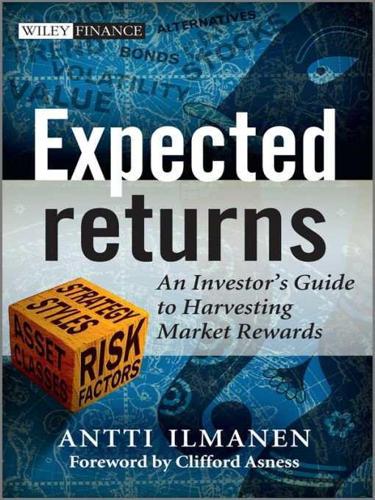
Expected Returns: An Investor's Guide to Harvesting Market Rewards
by
Antti Ilmanen
Published 4 Apr 2011
In fact, the credit quality in swaps is better than for single banks because the LIBOR bank basket is regularly refreshed to maintain high credit quality, and the highest and lowest rates are truncated when calculating the basket average. So the relevant credit exposure is generic banking sector risk—for the short-term debt of top borrowers in the LIBOR panel. Thus, there is not much risk unless a systemic banking crisis materializes. I wrote the previous sentences in 2001. The systemic crisis did materialize in 2007–2008 and along with it came vanishing trust in counterparties and even in the sustainability of LIBOR-based contracts. The 3-month LIBOR–GC spread widened from 15 bp–25 bp to above 100 bp, and the 2-year swap–Treasury spread duly followed.
…
Sources: Bloomberg, Citigroup, Haver Analytics, own calculations. Time will tell if these developments are partly reversible. Carry will likely remain a risk factor, but it will be more distinct from and less correlated with equity markets than it is now. It is conceivable that the carry–equity correlation peaked during an exceptionally systemic banking crisis in 2008 and that it will weaken in more ordinary times. Besides the positive beta, high-yielding currencies are characterized by negative realized skew, while the reverse is true for low-yielding currencies. In addition, return asymmetry has intensified over time. Moreover, these empirical features—beta-like behavior and negative skewness—have been increasingly priced into derivatives markets in recent years.

Roller-Coaster: Europe, 1950-2017
by
Ian Kershaw
Published 29 Aug 2018
MELTDOWN AVERTED The ‘Great Recession’, as it came to be known, was made in the United States, though with willing European accomplices. In no small measure its roots lay in the greed within the financial sector that overtook all sense of responsibility during the boom that preceded the crash. The banking crisis fed into a more wide-ranging crisis of public finances in almost all European countries. This in turn drove the economy into prolonged recession. The impact of such a sharp downturn in economic performance, of varying duration and severity in European countries, was to be felt for years to come.
…
Governments in Switzerland, Portugal, Latvia and Ireland took a controlling interest in several banks – in the Swiss case, the enormous UBS bank, which had turned into an over-extended global investment bank. In Denmark the Roskilde Bank, facing collapse in 2008, had to be taken over by the Danish National Bank. Iceland faced especial difficulties. Proportionate to its size, its banking crisis in 2008 was bigger than anywhere else in Europe. Iceland had gone far towards tilting its economy towards banking and had deregulated in 2001. Its three major banks, Kaupthing, Landsbanki and Glitnir, had grossly extended their foreign debt which by 2008, as the trust of investors evaporated, they found themselves unable to finance.
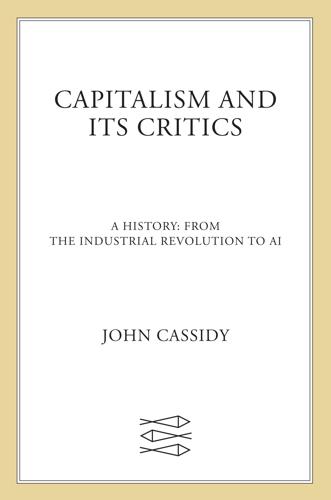
Capitalism and Its Critics: A History: From the Industrial Revolution to AI
by
John Cassidy
Published 12 May 2025
* * * When Marx and Engels were writing the Manifesto, they had no way of knowing that they were living through a historical inflection point for workers’ living standards. The hardship and financial instability that characterized early industrial capitalism were continuing. In 1847 a speculative railroad boom had ended in a banking crisis that gripped the City of London and relented only after the British government suspended the Bank Charter Act of 1844 to enable the Bank of England to print more money. In Ireland, the Great Famine was raging. In France, following a poor harvest in 1846, the economy had entered a slump that led to rebellions in the countryside and bread riots in Paris and Lyon.
…
Pressures increased on banks, which, with no protections in place for depositors, were highly vulnerable to runs by nervous customers. In the final months of 1930, hundreds of American banks failed, including the Bank of United States, the fourth-biggest commercial bank in New York.26 In May 1931 the banking crisis shifted to Europe. Creditanstalt, the biggest bank in Austria, collapsed under the weight of bad debts. The shock waves quickly spread to Hungary, then Germany. Central banks tried and failed to stabilize the situation. In July the German government took drastic action and suspended the convertibility of its currency for gold.
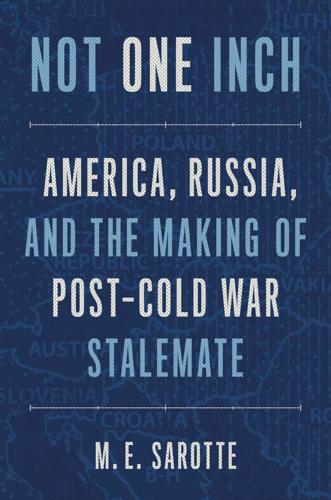
Not One Inch: America, Russia, and the Making of Post-Cold War Stalemate
by
M. E. Sarotte
Published 29 Nov 2021
Such fealty impressed Yeltsin’s deputy chief of staff, Aleksei Kudrin, who had worked for the mayor as well and knew Putin.19 Through Kudrin and other contacts, Putin got a foothold in the Yeltsin administration and moved to Moscow.20 Now, in summer 1998, the upheaval in Russia created an opportunity for Putin but a conundrum for Clinton. The president had previously agreed to visit Moscow on September 1, but wondered whether he should go at such a difficult time. The banking crisis also meant that practical implementation of NATO expansion came at a particularly terrible moment for Moscow. Yet despite the existential threats facing Yeltsin, Clinton’s advisors felt the president should go and maintain a hard line, to ensure that expansion remained open-ended. The consequence of keeping the first group of NATO invitees small must not, they argued, be a Russian belief that the United States had de facto drawn a new line at the border between Poland and Kaliningrad (where Putin’s wife hailed from) and ceded everything east of it to Moscow’s sphere of influence.
…
Currency markets had simply closed after the ruble’s crash “and did not reopen.” Stocks were plunging, and “lines for basic goods and at banks are being reported in various cities.”27 Rumors circulated that Yeltsin had either resigned or died, and Talbott worried that there might be a “coup d’état.”28 The NSC reported on how a “smoldering domestic banking crisis that intensifies each day as the oligarchs press for a bailout” was visibly taking a toll on Yeltsin—but Clinton’s strategy for his September visit to Moscow did not change. In addition to the hard line on the Baltics, Berger also advised the president to make Yeltsin see the necessity of recent US bombings in Afghanistan and Sudan, about which the Russian was complaining publicly.
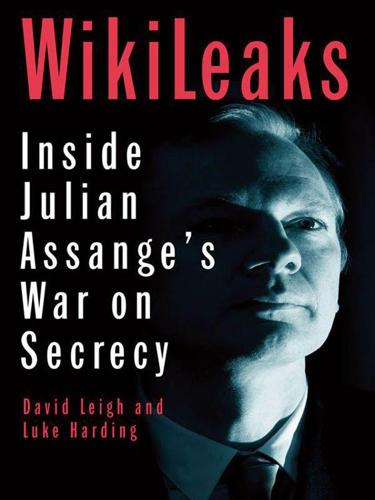
The End of Secrecy: The Rise and Fall of WikiLeaks
by
The "Guardian"
,
David Leigh
and
Luke Harding
Published 1 Feb 2011
“They were presenting this idea they called the ‘Switzerland of bytes’,” she explains, “which was basically to take the tax haven model and transform it into the transparency haven model.” Assange decided to publish some Icelandic tidbits from his newly acquired secret cache of military material to coincide with the MMI campaign: one was a very recent cable from the US embassy in Reykjavik, dated 13 January 2010, describing Icelandic officials’ views about the banking crisis. The deputy chief of mission at the embassy, Sam Watson, had reported that those he met “painted a very gloomy picture for Iceland’s future”. Assange followed this up with leaked profiles of the Icelandic ambassador to Washington (“prickly but pragmatic … enjoys the music of Robert Plant, formerly of Led Zeppelin”), the foreign minister (“fond of the US”), and the prime minister, Jóhanna Sigurðardóttir (“although her sexual orientation has been highlighted by the international press, it has barely been noted by the Icelandic public”).
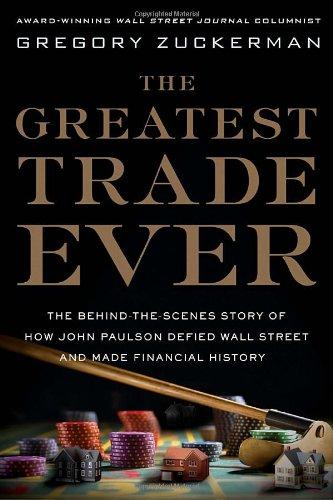
The greatest trade ever: the behind-the-scenes story of how John Paulson defied Wall Street and made financial history
by
Gregory Zuckerman
Published 3 Nov 2009
He adjusted the microphone and moved it closer, but it didn’'t seem to have much effect. One congressman asked if the mic was even working. When another incorrectly minimized his track record, Paulson remained silent. But when the question-and-answer period began, the congressmen warmed to Paulson, who gave his own views on how to improve the banking crisis. “"I’'m thinking we’'ve probably got the wrong Paulson handing out the TARP money here,”" said Massachusetts Democrat John Tierney, a dig at the treasury secretary at the time, Henry Paulson. Referring to Paulson’'s huge gains in 2007 and 2008, Simons said, “"I didn’'t have that kind of wisdom.”"

Future Files: A Brief History of the Next 50 Years
by
Richard Watson
Published 1 Jan 2008
The probability is that China will continue to grow, and will end up as the most important economy on the planet by the mid-2020s. However, there is also a strong possibility that China, unlike India, will self-destruct or turn inwards. This could be caused by a number of factors. Social unrest Government and Politics 93 created by a global economic downturn is one possibility; a domestic banking crisis brought about by the sheer weight of bad loans is another. I strongly believe that ageing is still the most significant trend overall, although it is not entirely inconceivable that any resultant pensions crisis could be solved by a sudden and unexpected rise in fertility rates. Beyond these observations, much has stayed the same.
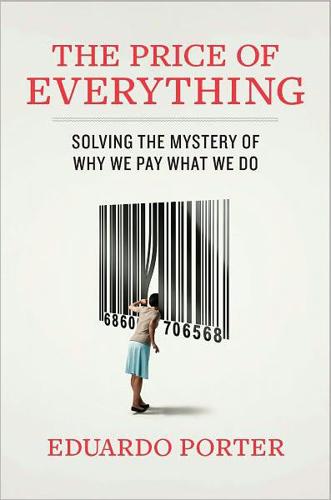
The Price of Everything: And the Hidden Logic of Value
by
Eduardo Porter
Published 4 Jan 2011
Financial crises spawned by investment surges, credit booms, and asset bubbles appear to be a standard feature of the landscape of capitalism. Economists Carmen Reinhart and Kenneth Rogoff found that of the world’s sixty-six major economies—including developed nations and the largest developing countries—only Portugal, Austria, the Netherlands, and Belgium had avoided a banking crisis between 1945 and 2007. By the end of 2008 no country was unscathed. Every time investors become enthusiastic about some new investment proposition, they assure us that this time will be different. During the dot-com bubble the surge of productivity enabled by information technology allowed us to believe that the historical moment was unique.
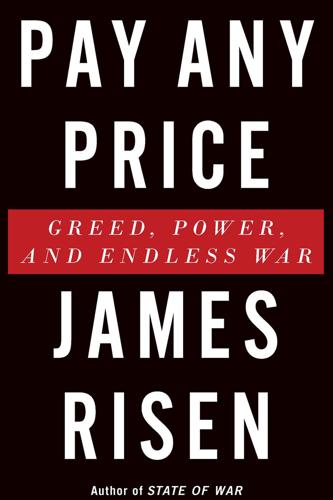
Pay Any Price: Greed, Power, and Endless War
by
James Risen
Published 15 Feb 2014
They are the beneficiaries of one of the largest transfers of wealth from public to private hands in American history. America’s richest discovered that the hottest way to make money was to get inside Washington’s national security apparatus. With new regulations, Wall Street is no longer quite as attractive as it was before the banking crisis, so the nation’s most clever men have targeted the steady flow of billions into counterterrorism programs. Washington’s partisan budget battles have left counterterrorism spending largely unscathed. One study found that government spending on homeland security has been so excessive that the only way it could be considered cost-effective would be if it funded programs that prevented 1,667 terrorist attacks—each year—like the 2010 Times Square attempted car bombing.
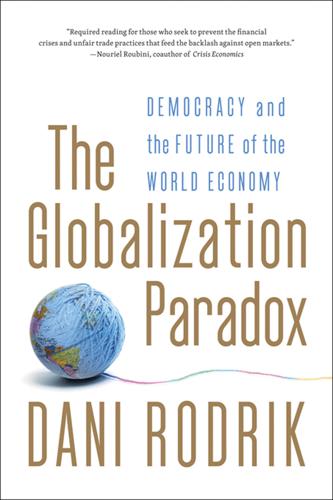
The Globalization Paradox: Democracy and the Future of the World Economy
by
Dani Rodrik
Published 23 Dec 2010
Whenever capital has been free to move around the world, it has produced what the economic historian Charles Kindleberger has memorably called “manias, panics and crashes.”31 Recent research by Carmen Reinhart and Ken Rogoff has quantified what had long been obvious to economic historians. These two economists painstakingly sifted through the historical record to identify every single important instance of banking crisis since 1800. When they superimposed their results on the historic trajectory of capital mobility, they discovered that the two series lined up almost perfectly. As they put it, “Periods of high international capital mobility have repeatedly produced international banking crises, not only famously as they did in the 1990s, but historically.”32 Perhaps increased volatility and crises are the price that the world economy paid for improved financial discipline.
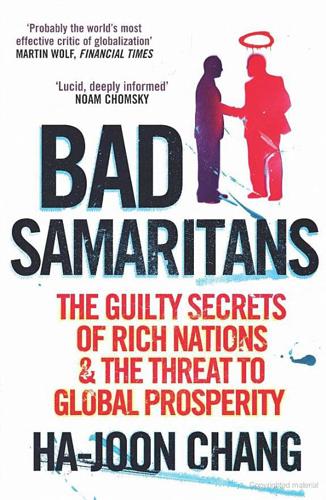
Bad Samaritans: The Guilty Secrets of Rich Nations and the Threat to Global Prosperity
by
Ha-Joon Chang
Published 4 Jul 2007
Given this, it is no coincidence that developing countries have experienced more frequent financial crises since many of them opened their capital markets at the urge of the Bad Samaritans in the 1980s and the 1990s. According to a study by two leading economic historians, between 1945 and 1971, when global finance was not liberalized, developing countries suffered no banking crisis, 16 currency crises and one ‘twin crisis’ (simultaneous currency and banking crises). Between 1973 and 1997, however, there were 17 banking crises, 57 currency crises and 21 twin crises in the developing world.13 This is not even counting some of the biggest financial crises that occurred after 1998 (Brazil, Russia and Argentina being the most prominent cases).
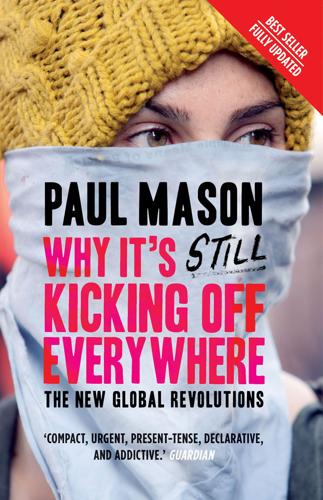
Why It's Still Kicking Off Everywhere: The New Global Revolutions
by
Paul Mason
Published 30 Sep 2013
So maybe the politicians should be answering questions in parliament—and maybe they should be on trial. They paid three or four times the true value of land. They demonstrated economic growth and people believed they used the cajas to enhance social well-being—we now know they were buying land and selling illusions.’ If Spain’s banking crisis had happened in a sound economy, it might have been containable. But by mid-2012, Spain’s debt was growing uncontrollably. It would need a bailout. And EU/IMF bailouts come with one condition: increased austerity. In a place like Andalusia, austerity will fall hard on people. It’s an underdeveloped region where, as in so much of euro-bolstered southern Europe, the biggest economic player is the state.

Messy: The Power of Disorder to Transform Our Lives
by
Tim Harford
Published 3 Oct 2016
If several of these “obvious clues” are present, skiers should avoid the slope in question. When researchers reviewed a database of 751 avalanche accidents in the United States, they concluded that in most cases, several clear risk factors were present, and the “obvious clues” method would have prevented tragedy.17 The parallel with the banking crisis seems clear. Andy Haldane’s analysis found a single “obvious clue” that a bank was vulnerable—how much it relied on borrowed money rather than its own capital. If simple rules can predict avalanches, perhaps they can also predict heart attacks? Consider the decision that a doctor has to make when a patient shows up at the emergency room with severe chest pains.

Mathematics of the Financial Markets: Financial Instruments and Derivatives Modelling, Valuation and Risk Issues
by
Alain Ruttiens
Published 24 Apr 2013
Of course, both the length of the cycles and their amplitude is neither regular, nor constant over time. As an example, in Figure 12.13 are the monthly historical p.a. volatilities of the S&P 500, from the beginning of 2000 to mid-2008 (further values have been deliberately excluded, because of the exceptional impact of the banks crisis on the market, from August 2008 to at least May 2009). Figure 12.13 Monthly historical volatilities of the S&P 500 – 2000 to mid-2008 Volatility models may thus be advantageously designed as mean reversion processes, as described in Chapter 11, Section 11.3 (for interest rate processes). Considering the volatility σt of an asset of price S modeled by a geometric, general Wiener process as per Eq. 8.11b of Chapter 8, but where the constant volatility σ is replaced by the variable σt, a very simplistic volatility model consists of associating the process of the underlying, involving a stochastic component dZ1, (12.2) to a mean reverting process for its volatility, involving a stochastic component dZ2: where a and b are the mean reversion (constant) parameters of the deterministic component (cf.

The Corruption of Capitalism: Why Rentiers Thrive and Work Does Not Pay
by
Guy Standing
Published 13 Jul 2016
One outcome has been a persistently strong currency, which has made manufacturing exports uncompetitive and accelerated deindustrialisation. It has also boosted inequality.52 Canada suffered similarly after 2008, when money flowed into its financial sector because it had largely escaped the turbulence of the banking crisis. This pushed up the value of the Canadian dollar, causing the manufacturing sector to lose 20 per cent of its capacity. The USA also suffers from the British Disease; finance dominates the economy (and policymaking) to the detriment of its industrial base. It has a huge trade deficit and lost over 6 million industrial jobs in the seven years after the financial crash, while profits and incomes rebounded in financial activities.
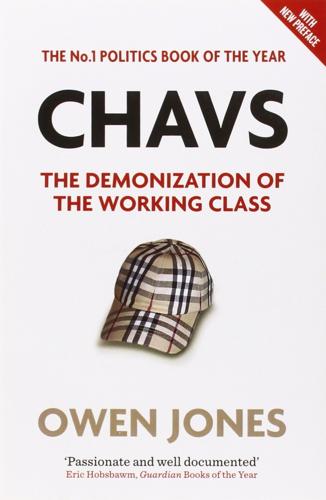
Chavs: The Demonization of the Working Class
by
Owen Jones
Published 14 Jul 2011
Other movements, too, helped put class back on the agenda. In October 2011, anti-austerity protesters occupied Wall Street in the United States. They were, in part, inspired by the Spanish indignados (outraged) who had occupied Madrid's main square the previous May in protest at the Spanish government's response to the banking crisis; they, in tum, had followed the example of Egyptian revolutionaries who had taken Cairo's Tahrir Square. The New York protests spawned a global 'Occupy' movement, as similar camps were set up in hundreds of cities across the globe-including London, where tents were erected outside St Paul's Cathedral.

The King of Oil: The Secret Lives of Marc Rich
by
Daniel Ammann
Published 12 Oct 2009
INDEX ABC News, 96, 254 African National Congress (ANC), 196 Alcoa, 188–89 Algeria, 54, 58, 72, 179 Almadén mines, 43, 49–50 Aluminum, 186–89, 274 Ambition of Marc Rich, 16–17 America Held Hostage (TV program), 96 American Bolivian Bank, 34 American legal isolationism, 130–32 Angola, 179, 181, 183–85, 194 Anti-Semitism, 17–19, 26, 38–39, 204 Antwerp, Belgium, 27–29 Aouad, Philip, 210 Apprenticeship at Philipp Brothers, 37–38, 40–41 Arab oil embargo, 54–55, 99–101, 117 Arafat, Yasser, 94, 248–49 ARCO (Atlantic Richfield Company), 80, 81, 101–2, 120 Ariano, William F., 101–2 Arms dealing, 153, 240–41, 270 Arrow, Kenneth J., 87 Ashkelon, oil pipeline, 64–70, 79–80 Ashland Oil, 71–72 Asturiana de Zinc SA, 226–27 Atlantic Richfield Company (ARCO), 80, 81, 101–2, 120 Atlas Shrugged (Rand), 180 Auschwitz, 29 Australia, 30–31 Azemour refugee camp, 30–31 Azulay, Avner, 159–61, 208 on anti-Semitism and Marc Rich, 17–18 Clinton pardon and, 238, 243–49, 252, 258–59 on death of Marc Rich’s daughter Gabrielle, 212 Israel assistance by Marc Rich and, 103, 203–7, 208 Justice Department search and, 201 security for Marc Rich, 159–61 on trust and Marc Rich, 86 Baar, Switzerland, 149–54, 217–18 “Back-to-back trades,” 53 Bakhtiar, Shahpur, 92–93 Bankers Trust Company, 80 Banking crisis of 2008, 175–76, 266–67 Barak, Ehud, 160, 246–47, 258–59 Barceló, Miquel, 10 Batista, Fulgencio, 45–46 Bauxite, 186–89, 274 Bazargan, Mehdi, 93–94 Begin, Menachem, 103 Belgium, 25–29 Ben-Ami, Shlomo, 246, 248–49, 259 Benn, Tony, 67 Ben-Yair, Michael, 133 Beta Israel of Ethiopia, 204–6 Beyeler, Ernst, 246 Bialer, Uri, 280n Biggin Hill Airport, 156–57 Billman, Tom J., 200–201 Birth of Marc Rich, 27–28 Blum, Adolfo, 40 Blumenthal, Sidney, 249 Bolivia, 34, 41, 44 Bouguerra, Slimane, 178 Boxer, Barbara, 250 Braudel, Fernand, 27 Bribery, 16, 177–78 British Observer, 207 British Petroleum, 55–57, 58, 268 Brown, Dan, 36 Burlap bags, 34, 35 Burton, Dan, 2, 17, 141 Burundi, 181–83 Bush, George H.
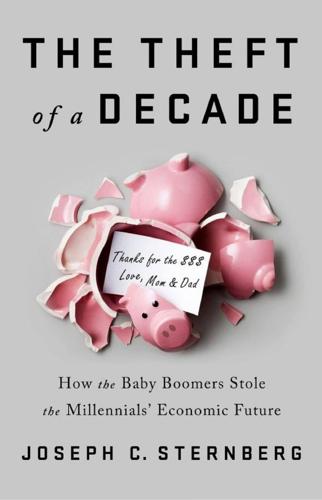
The Theft of a Decade: How the Baby Boomers Stole the Millennials' Economic Future
by
Joseph C. Sternberg
Published 13 May 2019
The same study from the International Monetary Fund that found the economic downturn accounted for only about half of Europe’s youth unemployment also found that younger workers are twice as vulnerable as older workers to suffering rising unemployment when small firms struggle to access capital.5 Smaller European companies are much more dependent on bank loans for financing than American companies are, so those companies were even more vulnerable to a banking crisis. But other parts of Europe’s youth unemployment crisis are more distinctly European. One is that it’s enormously expensive to hire someone—of any age—in many European countries. Relatively high income tax rates (that kick in at relatively low levels of income) and steep social-service taxes for pensions and health care take a big bite out of employers’ wage spending.
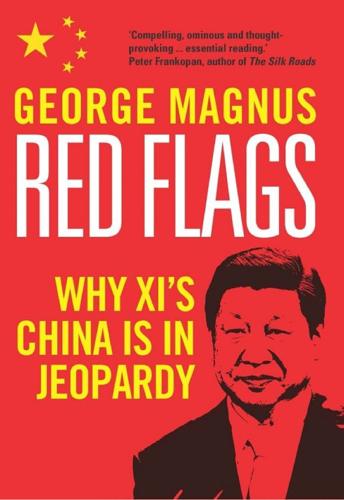
Red Flags: Why Xi's China Is in Jeopardy
by
George Magnus
Published 10 Sep 2018
More broadly, financial companies competed to raise money from investors and depositors and put the money to use in an array of dubious financial schemes, egged on by new forms of finance such as online payments and savings schemes, peer-to-peer lending, and a permissive regulatory attitude towards the use (and abuse) of leverage. Banking crisis more likely than a debt crisis During the financial crisis in 2007–9, as the destruction of balance sheets tore through the financial system, some people used to say wryly that ‘there’s nothing right on the left side of the balance sheet, and nothing left on the right’. In other words, the assets held, typically on the left side of the accounts, were flawed, and the liabilities that funded them, on the right, had disappeared or been withdrawn.
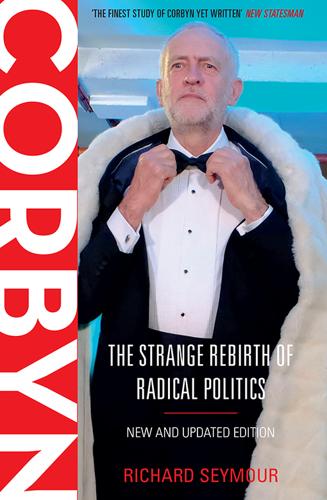
Corbyn
by
Richard Seymour
And still they came’, Observer, 16 February 2003. 49‘“Unpopularity is the price of leadership”’, Guardian, 17 February 2013. 50‘Full text: David Blunkett’s speech’, Guardian, 2 October 2003. 51Nick Cohen, ‘Going nowhere fast’, Observer, 12 October 2003. 52Benedict Brogan, Toby Helm and George Jones, ‘Union chiefs give Blair bloody nose’, Telegraph, 2 October 2003. 53John Kampfner, ‘The Warwick watershed’, Guardian, 2 September 2004. 54Shiv Malik, ‘Occupy London’s anger over police “terrorism” document’, Guardian, 5 December 2011; Daniel Evans, ‘Police cracking down on Bristol rioters and extremists’, Bristol Post, 13 September 2013. 55John Kampfner, ‘Labour’s steady path to authoritarianism’, Telegraph, 19 October 2007; Paul Lewis, ‘Birmingham stops Muslim CCTV surveillance scheme’, Guardian, 17 June 2010. 56‘“Remove full veils” urges Straw’, BBC News, 6th October 2006; Jonathan Freedland, ‘If this onslaught was about Jews, I would be looking for my passport’, Guardian, 18 October 2006. 57Andrew Rawnsley, The End of the Party: The Rise and Fall of New Labour, London: Penguin Books, 2010, pp. 1397–98; ‘In full: Tom Watson’s resignation’, BBC News, 6 September 2006. 58Toby Helm, ‘Disillusioned Jack Straw plotted against Gordon Brown in bid to take over No. 10’, Observer, 21 February 2010; Decca Aitkenhead, ‘Jack Straw: “I would have done a better job than Gordon Brown”’, Guardian, 31 January 2014. 59Stephen Nickell, ‘The Assessment: The Economic Record of the Labour Government since 1997’, Oxford Review of Economic Policy, vol. 18, no. 2, 2002; David Coates, Prolonged Labour: The Slow Birth of New Labour, Palgrave Macmillan, 2005, pp. 17–184. 60Gordon Brown, all too late, acknowledged his role in this. Patrick Wintour and Nicholas Watt, ‘Brown: I should have done more to prevent bank crisis’, Guardian, 17 March 2009. 61Julie Froud, Michael Moran, Adriana Nilsson, Karel Williams. ‘Wasting a crisis? Democracy and markets in Britain after 2007’, Political Quarterly, vol. 81, no.1, 2010, pp. 25–38 62Ewald Engelen, Ismail Erturk, Julie Froud, Sukhdev Johal, Adam Leaver, Michael Moran, Adriana Nilsson and Karel Williams, After the Great Complacence: Financial Crisis and the Politics of Reform, Oxford: Oxford University Press, 2011. 63Quoted in Jim Pickard, ‘Conservatives: the party of business?’
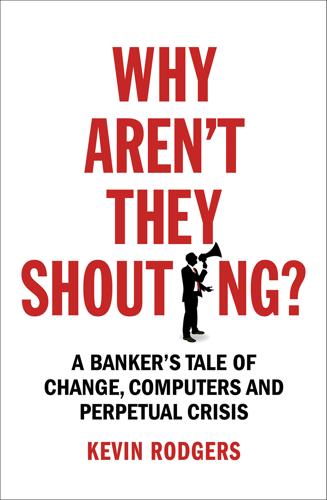
Why Aren't They Shouting?: A Banker’s Tale of Change, Computers and Perpetual Crisis
by
Kevin Rodgers
Published 13 Jul 2016
Or maybe it would have been another emerging market crisis like Asia in 1997 or Russia in 1998? Although the shape of a potential future crisis would have been relatively easy to predict if the banks had gone back to business as usual, in the new world created by the regulatory step change after 2008, it is much less apparent. Could the next ‘banking crisis’ instead be a CCP crisis, or a hedge fund crisis, or an insurance company crisis? Will it be triggered by property prices or by emerging markets or some new risk? For my own part, I worry about geopolitical strife causing problems – especially if they arise from tensions with the nascent economic superpower of China.

The Pyramid of Lies: Lex Greensill and the Billion-Dollar Scandal
by
Duncan Mavin
Published 20 Jul 2022
Lex’s team had slipped through the net. He seized the moment. We’re still here because supply chain finance is the future of banking, he said. We’re changing the world. He was like the coach of an underdog sports team, rousing his players for a shot at the title. His mostly young TReFS team was impressed. In the midst of this huge banking crisis, Lex was coming out fighting. In reality, his optimism was misplaced. A few months after the trading floor had been cleared out, TReFS was effectively finished too. As the crisis raged, a Chicago-based investment management company that ran a crucial part of the TReFS programme – the asset-backed commercial paper conduit – called to say they were pulling out.

The Hidden History of Burma
by
Thant Myint-U
Peace talks that had since 2012 been a centerpiece of Burma’s feted reform process ground nearly to a halt and fighting flared in the northern hills. The economy, in 2014 the fastest-growing in the world, faced worrying headwinds. Investment plunged, business confidence sank, and fears mounted that a banking crisis might be around the corner. In 2016, Burma was on Fodor Guides’ list of the world’s hottest destinations. By 2018, it was on Fodor’s list of top ten places to avoid. What happened? For decades the story of Burma had been portrayed as a Manichean struggle between the ruling generals and a movement for human rights and a liberal democracy.

The Atlantic and Its Enemies: A History of the Cold War
by
Norman Stone
Published 15 Feb 2010
Index Abakumov, Viktor Abdullah, King of Jordan Abercrombie, Sir Patrick Abidjan ABM (anti-ballistic missile) treaty (1972) abortion Abrams, Creighton Acheson, Dean actors, politics of Adana Adenauer, Konrad: acceptance of division of Germany and Berlin crisis of diplomatic relations with USSR and EEC and Erhard founding of Christian Democratic Union and Franco-German relations privatization policy and Suez crisis and universities and welfare system Adzhubey, Alexey Afghanistan AFL-CIO (American Federation of Labor and Congress of Industrial Organizations) Aganbegyan, Abel Ağca, Mehmet Alı Agent Orange (herbicide) Agitation and Propaganda, Department of (USSR) Agnew, Spiro Agrarian Party (Czechoslovak) AIDS Aitken, Jonathan Aitmatov, Cingiz Akhmatova, Anna Alaska Alaskan Pipeline Albania Albanians Alevis Algeria: French rule independence nationalism oil production pieds noirs Algerian war (1954-62) Algiers Aliev, Haydar Allende, Salvador: background and character and Carter election as president international reputation overthrow and death reforms speech to United Nations (1972) ‘Alliance for Progress’ (American plan for Latin America) Alma Ata Almeida, Juan Alsthom-Atlantique (corporation) Altamira, Carlos Althusser, Louis Altman, Nathan Amalrik, Andrey Amin, Hafizullah Anatolia GAP project Anderson, Lindsay Andics, Erzsébert Andreotti, Giulio Andropov, Yuri: and Afghanistan General Secretary and Gorbachev KGB head nationalities policy Angola Ankara Ankara College Ankara University Bilkent University Çubuk reservoir Middle East Technical University Anna Comnena, Princess Annan, Noel, Baron Our Age Antep anti-alcohol campaign (USSR) anti-Fascism anti-semitism anti-Zionism Ap Bac, battle of (1963) appeasement Apple (corporation) Aqaba, Gulf of Aquinas, Thomas Arab Legion Arafat, Yasser Aragon, Louis Araucanian Indians Arbatov, Georgy Arbenz, Jacobo Arendt, Hannah Argentina Falklands War (1982) Arizona Armenia Armenians ARVN (Army of the Republic of Vietnam) Assad, Hafiz Assyrian Christians Astor, David Aswan Dam AT&T (corporation) Atatürk, Mustafa Kemal Athens atomic bombs: American British espionage Soviet see also nuclear weapons Atomic Energy Commission Atomium (Brussels) Attali, Jacques Auschwitz concentration camp Australia Austria: army author’s studies in Catholic Church Communist Party cultural institutions Dollfuss dictatorship espionage in Jewish transit centre Marshall Plan aid neutrality post-war occupation zones pre-First World War parliament private companies relations with Hungary Social Democrats Staatsvertrag (state treaty; 1955) and USSR war criminals Yugoslav territorial claims Austrian school of economics Austro-Hungarian empire automobile industry: Britain France Germany Italy Japan Sweden USA AVO (Hungarian security police) Aylwin, Patricio Azerbaidjan Azeri Turks Aznavour, Charles Baader, Andreas Bacílek, Karol Bacon, Robert, Britain’s Economic Problem Bad Godesberg Baden Baden-Baden Baekeland, Leo Baghdad Pact Bagram airbase Bahr, Egon Bahrain Bakelite Baker, James Baker, Kenneth, Baron Baker of Dorking Baku Congress of the Peoples of the East (1920) Balfour Declaration (1917) Balogh, Sándor Balogh, Thomas, Baron Baltic states see also Estonia; Latvia; Lithuania Baltimore Baluchis Balzac, Honoré de Bandung conference (1955) Bank of England Bank for International Settlements banking crisis (2008-9) Barcelona Barchard, David Bari Barings Bank Barkey, Henri Barnett, Correlli Barraclough, Geoffrey, Origins of Modern Germany Barthes, Roland Bartley, Robert Barzani, Mustafa BASF (corporation) Basle Batista, Fulgencio Bauer, Peter, Baron Bavaria Bay of Pigs invasion (1961) Bayly, Sir Christopher Bayonne Bayreuth BBC Bearsden, Scotland Beatles, the Beckett, Samuel Beduins Beethoven, Ludwig van Fidelio Belgian Congo Belgium: coal and steel production colonies and EEC and Kurdish nationalism and Marshall Plan nationalism oil imports Second World War universities see also Benelux Belgrano (battleship) Bell, Marie Ben Bella, Ahmed Benelux Beneš, Edvard Bengal Bennett, Catherine Bennett, William Beria, Lavrenti overthrow and execution Berkeley, University of Berlin: blockade of 1948-9 bomb damage crisis of 1961 introduction of Deutsche Mark in Western zone Soviet occupation zone wartime see also East Berlin; West Berlin Berlin Wall: building of fall of Berman, Jakub Besançon, Alain Bessarabia Bessmertnykh, Aleksandr Bevin, Ernest Bichelonne, Jean Bien Hoa airfield Biermann, Wolf Bierut, Bolesław Biffen, John, Baron Bilkent University Bíngöl biological warfare biotechnology Birmingham Birmingham University Bismarck, Otto von Bissell, Richard Bitlis ‘Bizonia’/‘Trizonia’ (Allied occupation zones in Germany) Blackbourn, David Blair, Tony Blake, William Blanning, Tim Bloch, Ernst Blunt, (Sir) Anthony Blyukher, Vasily BMW (automobile manufacturer) ‘boat people’: Cambodian Vietnamese Bodleian Library, Oxford Bogomolov, Oleg Bohlen, Charles E.
…
Harriman, Averell Harrington, Michael, The Other America Harris, Robert, Archangel Hartington, Kathleen Cavendish, Marchioness of (née Kennedy) Harvard University Business School Tercentenary Hastings, Sir Max Havana Havel, Václav Havenstein, Rudolf Hayek, Friedrich von Healey, Denis, Baron Heath, Sir Edward: appearance and character and Britain’s membership of EEC and Britain’s relations with US dismissed as Conservative leader government of incomes policy loses 1974 election and Margaret Thatcher’s government and trade unions Hegel, Georg Wilhelm Friedrich Hekmatyar, Gulbuddin Helms, Richard Helsinki conference (CSCE; 1975) Hemingway, Ernest Hentze, Paul Herat heroin Hersh, Seymour Herter, Christian Heseltine, Michael, Baron Hezb (Afghan resistance group) Hills, Denis Hindus Hippocrates Hiroshima Hiss, Alger History Today (magazine) Hitler, Adolf: appeasement of beer-hall Putsch (1923) Berlin Bunker eugenics favourite film invasion of Czechoslovakia invasion of USSR reduction of unemployment rise to power suicide and cremation Ho Chi Minh Ho Chi Minh Trail Hodder and Stoughton (publishers) Hodža, Enver Hoechst (corporation) Hoesch (corporation) Hoffman, Paul Hoggart, Richard Holland: Calvinist Church colonies economic success and EEC exports floating of currency oil embargo against post-imperial decline trade unions see also Benelux Hollywood Holy Roman Empire homosexuality gay rights Honecker, Erich Hong Kong hooliganism Hoover, Herbert Hopper, Kenneth Hopper, William Horn, Gyula Hoskyns, Sir John Hotter, Hans Howe, Geoffrey, Baron Howe of Aberavon Hue, Vietnam Hugo, Victor, Les Misérables human rights Humphrey, Hubert Hunan province Hungarian diaspora Hungary: AVO (security police) Catholic Church Christian Women’s Camp Communist Party communist takeover ending of communist state inflation intelligentsia Jews in under Kádár Khrushchev’s relaxation attempts labour camps nationalism opening of border with Austria (1989) Peasant Party peasantry Protestant churches relations with Austria Second World War Social Democrats territorial losses trade unions United Workers’ Party uprising of 1848 uprising of 1956 Writers’ Union Huntington, Samuel Husák, Gustáv Hussein, King of Jordan Huxley, Sir Julian Hysko, Miroslav Ibárruri, Dolores IBM (corporation) ICBMs (intercontinental ballistic missiles) Ickes, Harold IEA (British Institute of Economic Affairs) Iliescu, Ion Illinois I’m All Right, Jack (film) IMF (International Monetary Fund): assumes true world role Belgrade meeting (1979) and Bretton Woods system British bail-out (1976) establishment of ineffectiveness loans to Romania and military coups in Chile and Turkey role in defending threatened currencies and ‘Washington consensus’ İnan, Kâmran Inchon İncirlik air base India: border conflicts with China British rule famine independence intelligentsia nationalism partition war in Kashmir Indonesia: Dutch rule independence movement oil production Industrial Reorganization Corporation (British) Industrial Revolution inflation Britain Chile France Germany Hungary hyper-inflation Italy Japan and monetarism Phillips Curve Poland ‘stagflation’ Turkey and universities USA USSR information technology: development of and financial markets manufacturers and public sector theory of unions’ obstruction of in USSR Ingham, Sir Bernard Inönü, Ismet Institute of Economic Affairs (British; IEA) intelligentsia: Britain China Czechoslovakia France Germany Greece Hungary India Poland Turkey USA USSR Russiap> Western intelligentsia and communism International Bank for Reconstruction and Development see World Bank International Monetary Fund see IMF internment camps, Soviet Ionesco, Eugène İpekçi, Abdı Iran: and Afghanistan allied with West Azeri Turks coup of 1953 hostage crisis (1979-81) Islamic revolution (1978-9) Kurdish population under Mossadegh oil production relations with USSR and Saudi Arabia Savak (secret police) Second World War occupation under the Shah and terrorism Iran, Shah of (Mohammad Reza Pahlavi) fall of Iran-Contra affair (‘Irangate’) Iraq: Christians in coup of 1958 Kurdish population Nasser’s interference in under Saddam Hussein Soviet aid Iraq-Syria pipeline Iraq war (2003- ) Ireland Catholic Church emigration Irish Question nationalism terrorism Islam: in Afghanistan in Iran in Iraq of Kurds in Pakistan in Soviet Central Asia in Turkey and Turkish ‘guest workers’ in Germany see also Moslems Israel: American support for Arab plans to eliminate Camp David accords (1978) establishment of and Iran-Contra affair relations with USSR Six Day War (1967) and Suez crisis Yom Kippur War (1973) Istanbul Aya Sofya Bosphorus Bridge economic growth and redevelopment Galata Maslak riots (1955) stock exchange Taksim Square massacre (1977) Italy: Allied reconquest automobile industry backwardness black economy Christian Democrats Communists corruption education system and EEC election of 1948 film industry and Germany Guelfs and Ghibellines imports industrial unrest and strikes inflation Marshall Plan aid peasantry political instability post-war economic recovery protectionism public finances Red Brigades student demonstrations terrorism trade unions universities war damage Itzenplitz, Baron Heinrich von İzmir Jachymov mines, Bohemia Jackson, Andrew Jackson-Vanik Amendment (1973-4) Jacobs, Jane, The Death and Life of Great American Cities Jaguar (automobile manufacturer) Jakab, Sándor Jakeš, Miloš Jalalabad Jamaica Jamiat (Afghan resistance group) Japan: automobile industry banking crisis (2008-9) Communists in economic boom economic recession empire invasion and occupation of China land reforms and North Korea post-war Allied occupation post-war economic recovery prisoners of war Second World War shipbuilding steel production use of fax machines and Vietnam Westernization Jaruzelski, Wojciech Jay, Peter Jefferson, Thomas Jenkins, Roy, Baron Jenkins of Hillhead Jenkins, Sir Simon Jerusalem King David Hotel bombing (1946) Jesuits Jesus College, Cambridge Jews: emigration to Palestine German compensation to in Greece in Hungary in Poland in Romania in Slovakia in Turkey in USA n USSR in West Germany see also anti-semitism Jiangxi soviet Jobs, Steve John Brown Engineering John Paul II, Pope Johnson, Chalmers Johnson, Claudia ‘Lady Bird’ Johnson, Harry Johnson, Lyndon B.: background and character and Brezhnev and China economic policy election as President Great Society on Kennedy reputation as Roosevelt’s manager use of Supreme Court Vice-President and Vietnam withdraws from re-election campaign Joliot-Curie, Irène Jones, Aubrey Jones, Jack Jones, Therese Jordan Joseph, Keith, Baron Juglar, Clement June Days uprising (1848) ‘junk bonds’ Kabul Kádár, János Kafka, Franz, Amerika Kahn, Philippe Kaldor, Nicholas, Baron Kaluga Kamchatka Kandahar Kang Sheng Kania, Stanisław Kapitsa, Piotr Kaplan, Karel Kapor, Mitch Karabük steel plant Karaganda Karajan, Herbert von Karasar, Hasan Ali Karmal, Babrak Karman, Tibor Karpacky, Kornel Kashmir Katowice Katyń massacre (1940) Kayseri Kazakhstan Kedourie, Elie Keep, John Kemal, Mustafa see Atatürk, Mustafa Kemal Kemp, Jack Kempner, Nan Kennan, George Kennedy, Edward Kennedy, Jacqueline Kennedy, John F.: ‘Alliance for Progress’ (plan for Latin America) appearance, background and character assassination and Bay of Pigs invasion and Berlin crisis of 1961 and Cuban crisis of 1962 economic policy election as President funeral Inaugural address and Macmillan New Frontier reputation and Roosevelt Vienna conference (1961) and Vietnam White House style Kennedy, John F., Jr Kennedy, Joseph Kennedy, Robert Kent State University shootings (1970) Kerr, Clark Keyder, Çağlar Keynes, John Maynard, 1st Baron: Galbraith and on government spending homosexuality hopes for German bombing on paper money and Roosevelt Keynesianism KGB: and coup of August 1991 and Cuban crisis of 1962 and dissidents and Gorbachev network of informers relationship with Party and revolutions of 1989 and war in Afghanistan and Western anti-missile demonstrations see also Cheka KHAD (Afghan secret police) Khanin, G.
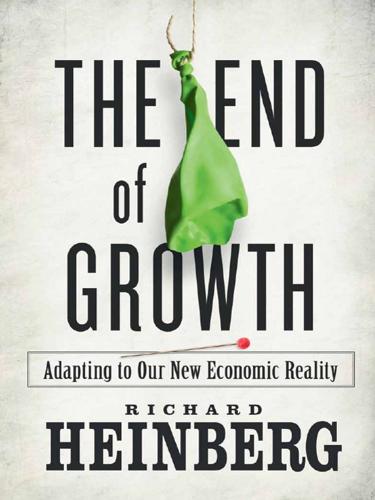
The End of Growth: Adapting to Our New Economic Reality
by
Richard Heinberg
Published 1 Jun 2011
Magazine, posted December 21, 2010; Lietaer, The Future of Money; Richard Douthwaite, “The Supply of Money in an Energy-Scarce World,” in Fleeing Vesuvius, pp. 58–83. 19. Bernard Lietaer, “Why This Crisis? And What to Do About It?” lecture, TEDx Berlin, November 15, 2010, online at lietaer.com/; Bernard Lietaer, Robert Ulanowicz, and Sally Goerner, “Managing the Banking Crisis,” Lietaer.com, posted February 4, 2010. 20. Greco, The End of Money, pp. 171–189. 21. Greco, The End of Money. 22. Upon reading this paragraph, ecological economist Josh Farley commented: “My personal view is that the state should be solely responsible for creating money. It would be a receipt/IOU for services rendered, repayable in the form of taxes.
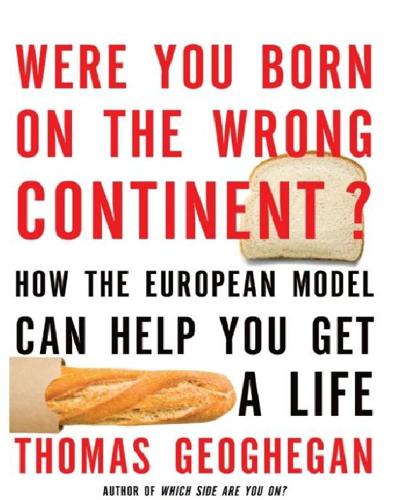
Were You Born on the Wrong Continent?
by
Thomas Geoghegan
Published 20 Sep 2011
Setting Greece aside (Greece is a special case, an underdeveloped country that never had a functioning economy and should not have been in the EU in the first place), none of the other countries got into trouble because of lavish benefits. Look at the others: Ireland, Portugal, and even Spain. They were not broke or staggering under any great fiscal debt when the meltdown came. They went bust because of a U.S.-type banking crisis, i.e., because the Europeans had to bail out European banks that took our worthless U.S. subprime debt, or behaved as recklessly as our banks did. But that’s not a crisis that comes from Europe’s “socialism.” It comes from “socialist Europe” taking part in our U.S. capitalist-type scams. Reader, go back to page 155, the start of “Berlin Diary.”

Irrational Exuberance: With a New Preface by the Author
by
Robert J. Shiller
Published 15 Feb 2000
There are important reasons to think that various of these problems would tend to occur together, as one tends to precipitate others through its effects on society and the economy. Indeed, the recent Asian financial crisis was described in these terms, as due to the confluence of a number of independent factors: a drop in confidence among foreign investors in the Asian economies, an exchange rate crisis, a banking crisis, a stock market decline, and crises of revealed government corruption. These separate crises fed on each other; they were not independent factors in causing the ultimate financial meltdown. S P E CUL ATIVE VO L ATIL ITY IN A FR EE SOC IETY 211 Issues of Fairness and Resentment Many of the potential causes of earnings reversals listed earlier have ultimately to do with changes in morale, loyalty, and sense of fairness among the investing public.
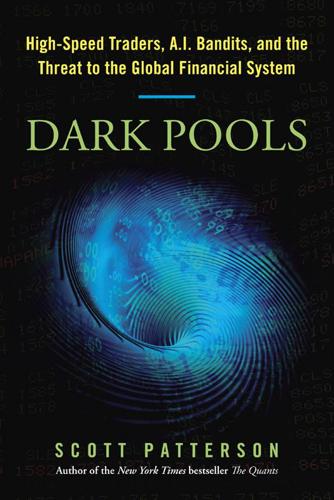
Dark Pools: The Rise of the Machine Traders and the Rigging of the U.S. Stock Market
by
Scott Patterson
Published 11 Jun 2012
Star continually recalibrated such signals even as it hunted for new ones. In February 2009, however, the signals seemed to have gone haywire. Star was mad, just like HAL, the space-crazed AI in Arthur C. Clarke’s 2001: A Space Odyssey—or so thought Fleiss. The United States was trapped in an economic maelstrom, a calamitous banking crisis that threatened to collapse the world’s financial system. Stocks were plummeting. It was the most deadly market since the Great Depression. Star, however, didn’t concur with the naysayers. Star was buying—hard. Financial stocks. Insurance stocks. Steel companies. The kinds of companies that would do well only if the economy steadied itself and rebounded.

Adapt: Why Success Always Starts With Failure
by
Tim Harford
Published 1 Jun 2011
We’ll discover what the disasters at Three Mile Island and Deepwater Horizon have to tell us about preventing another Lehman Brothers crisis. We’ll learn from a watchmaker, a street urchin, a Wall Street rebel, two aircraft designers and a failing choreographer. We’ll study the corporate strategies of companies from Google to a simple high-street cobbler. We’ll search for solutions to problems from the banking crisis to climate change. Along the way, we’ll also be learning about the recipe for successfully adapting. The three essential steps are: to try new things, in the expectation that some will fail; to make failure survivable, because it will be common; and to make sure that you know when you’ve failed.
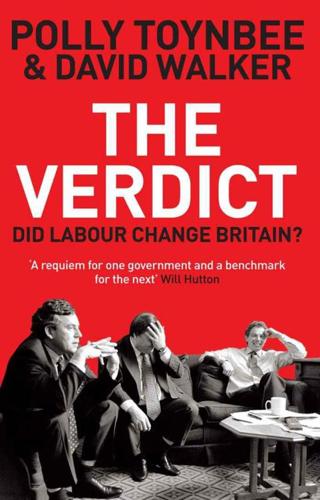
The Verdict: Did Labour Change Britain?
by
Polly Toynbee
and
David Walker
Published 6 Oct 2011
That is partly because the EU itself failed to become the world actor it might have been and its internal solidarity was severely tested over Greek debt. This was not an era when the EU stood tall – it lacked diplomatic unity over Spain’s Ceuta or Cyprus, its Middle East influence was slight, invisible in Teheran, absent in Copenhagen. Franco-German differences hampered a joint response to the banking crisis, recession and state debt. And yet absorbing the former Soviet satellites into a peaceful and largely passport-free club counted as a triumph, though the UK was marginal in making it happen. In the debate over the accession of Turkey, the UK hardly counted. Labour’s problem had, from the start, been the way that Blair and Brown conceived themselves as apostles of the neoliberal way, preaching to unbelievers in Berlin and Paris, whether social democrats, conservatives or Gaullists.

The Industries of the Future
by
Alec Ross
Published 2 Feb 2016
In Zac’s scenario, technology-first banks could provide a more people-centered service that tears down the old big banks the way that increasingly convenient options like digital photography destroyed Kodak and that Google and Wikipedia nearly eliminated leather-bound encyclopedias. Zac firmly believes that the older legacy banks would have avoided the catastrophe of the banking crisis if they had used big data more effectively. He explained his view to me: “Basically they’re just bad at basic questions of data management and trust. Who owns this mortgage? Has the lendee been paying regularly? What is my total exposure to this single customer? For example, right now globally regulators are beating down the doors of big banks to create ‘single customer views,’ which basically means, ‘Can JPMorgan Chase say the total liabilities (deposits) and assets (loans) to Exxon?’
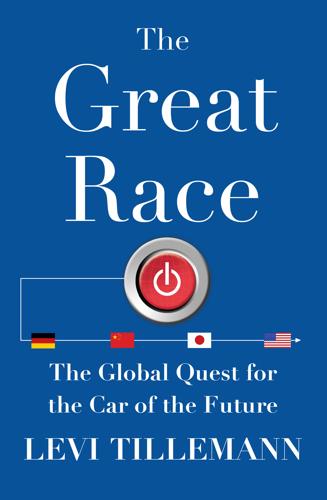
The Great Race: The Global Quest for the Car of the Future
by
Levi Tillemann
Published 20 Jan 2015
Forbes, August 11, http://www.forbes.com/sites/williampentland/2013/08/11/korea-constructs-road-that-wirelessly-charges-moving-electric-buses. People’s Daily. 2003. “China’s First Fuel Cell Car Make Debuts in Shanghai.” People’ Daily, January 16, 2003. Perkowski, Jack. 2011. Interview. Phillips, Clay. 2011. Interview. Pratley, Nils. 2008. “Banking Crisis: Viewpoint: Risk of Paulson Failing Has the Markets Frozen with Fear.” Guardian, September 25. Qiu, Lily Lin, Lindsay Turner, and Lindsay Smyrk. 2003. “Proceedings of the 15th Annual Conference of the Association for Chinese Economics Studies Australia (ACESA), Changes in the Chinese Automotive Market Resulting from WTO Entry.”
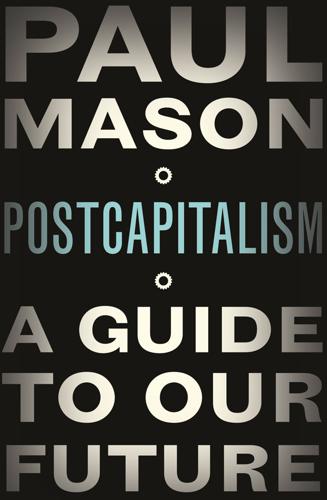
Postcapitalism: A Guide to Our Future
by
Paul Mason
Published 29 Jul 2015
The long-term nature of their lending (on twenty-five-year mortgages or never-cleared credit cards) got pulled further and further away from the short-term nature of their borrowing. Thus, over and above all the scams and mispricing, financialization creates within banking a structural tendency towards the kind of instant crisis of liquidity – i.e. ready cash – that destroyed Lehman Brothers. In financialized societies, a banking crisis does not usually see the masses rush to take their money out – for the simple reason that they do not have much money in there to start with. It is banks that have money in the bank – i.e. in other banks – and, as we found in 2008, much of it is in the form of worthless paper. The problems described here can be solved only if we stop financialization.

Rise of the Robots: Technology and the Threat of a Jobless Future
by
Martin Ford
Published 4 May 2015
Your mortgage, car, and student loan payments, however, are not going to fall. Debts are fixed in nominal terms, so as incomes decline, borrowers get squeezed and have even less discretionary income to spend. Governments likewise run into trouble because tax revenues plunge. If the situation continues, eventually loan defaults are likely to soar and a banking crisis may well loom. Deflation is really not something we should wish for. History suggests that the ideal is a mildly inflationary trajectory where incomes grow faster than consumer prices, making the things we want to buy more affordable over time. Either of these two scenarios—households squeezed between stagnant incomes and rising costs, or outright deflation—has the potential to eventually unleash a severe recession as consumers cut back on their discretionary spending.
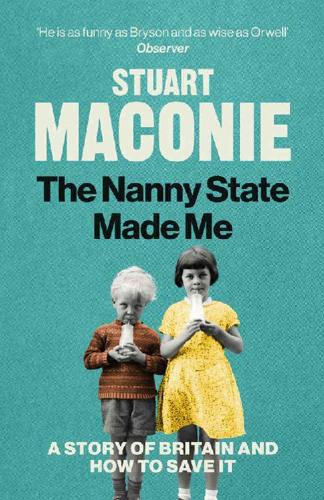
The Nanny State Made Me: A Story of Britain and How to Save It
by
Stuart Maconie
Published 5 Mar 2020
Dorling points out that in the area that Grenfell Tower is in the majority of the schools and hospitals are privately owned. Big business runs this district of London and it forces some to live – and die – in rooms in the sky. Kensington and Chelsea borough is so rich that, when the axe of cuts began to swing after the banking crisis, the council really didn’t need to make any at all. It did though, big cuts to the usual suspects and soft targets of education, welfare and leisure, for largely political reasons. As Lynsey Hanley puts it, ‘It wanted to be seen to “be doing austerity” and getting with the programme.’ The £167 million in lost revenue and slashed spending mostly impacted on people like the 5,263 homeless people here, one in every twenty-nine in the borough.
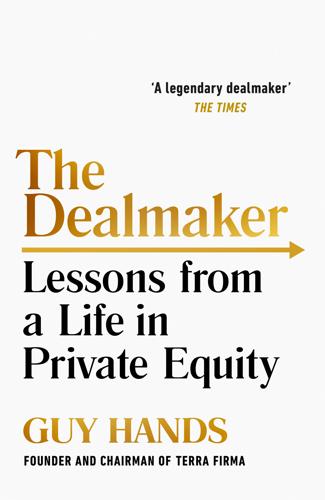
The Dealmaker: Lessons From a Life in Private Equity
by
Guy Hands
Published 4 Nov 2021
While I was grappling with the institutional and structural challenges that Terra Firma now faced, I was also becoming increasingly uneasy about the broader economic picture. In a number of speeches at the time I said that I worried that private equity prices were too high, that the market might well collapse, that there might be a banking crisis. In such circumstances, I argued, the best strategy might well be to sit on one’s hands and do nothing. I even went so far as to get one of our advisers on political and economic matters, Lord Birt, former head of the BBC and Tony Blair’s strategy adviser, to arrange for me to see the Cabinet secretary, Gus O’Donnell.

Risk: A User's Guide
by
Stanley McChrystal
and
Anna Butrico
Published 4 Oct 2021
,” Federal Reserve Bank of New York Economic Policy Review 15, no. 1 (July 2009): 19, https://newyorkfed.org/medialibrary/media/research/epr/09v15n1/0907silb.pdf. extended the bank closure: Silber, “Why Did FDR’s Bank Holiday Succeed?,” 19. “My friends, I want”: “Franklin Delano Roosevelt First Fireside Chat: The Banking Crisis,” YouTube, uploaded by Speeches, January 7, 2015, https://youtube.com/watch?v=r6nYKRLOFWg. “sufficiently solvent”: William E. Leuchtenburg, “Franklin D. Roosevelt: Domestic Affairs,” UVA Miller Center, accessed October 6, 2020, https://millercenter.org/president/fdroosevelt/domestic-affairs.
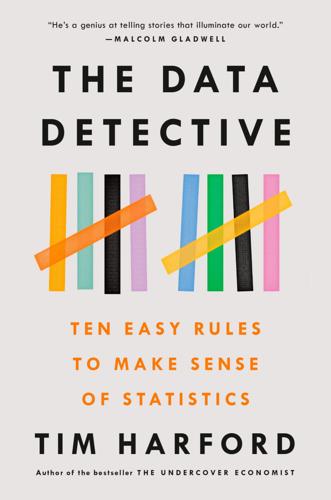
The Data Detective: Ten Easy Rules to Make Sense of Statistics
by
Tim Harford
Published 2 Feb 2021
The Dow Jones Industrial Average fell by more than a third between the beginning of September and the end of November. But it wasn’t the great Wall Street crash that did in Irving Fisher—at least, not immediately. The crash, of course, was a cataclysmic financial event, one far more severe even than the banking crisis of 2008. The Great Depression that followed was the greatest peacetime economic calamity to befall the Western world. Fisher was more exposed than many, since he had made his investments with leverage, magnifying both losses and gains. But it took more than a leveraged bet on a financial bubble to ruin Fisher.
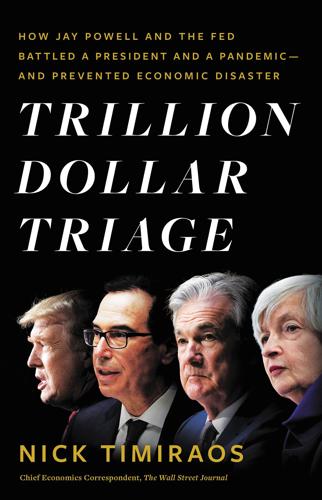
Trillion Dollar Triage: How Jay Powell and the Fed Battled a President and a Pandemic---And Prevented Economic Disaster
by
Nick Timiraos
Published 1 Mar 2022
“If Congress wanted me to lose all the money, that money would have been designed as subsidies and grants,” Mnuchin told reporters during a Zoom briefing on April 29.4 Over time, the Fed governors thought Mnuchin was acting more like an investor who wanted to get the best deal possible and protect himself against any losses, leading to program terms and features that struck Brainard as miserly. The Fed and many economists thought this was the wrong way to frame what they were doing. The 2020 shock wasn’t a banking crisis that required recapitalizing a handful of financial institutions. It was an economy-wide crisis. Fed presidents heard the same thing over and over from businesses in their districts about the Main Street loans: This doesn’t help us. Our business is shuttered. We don’t need more debt. Glenn Hubbard, the well-connected Republican economist, told officials he was worried the program was too conservative.

Cheap Land Colorado: Off-Gridders at America's Edge
by
Ted Conover
Published 1 Nov 2022
* * * — Even if few people had been infected yet by Covid-19 in my part of the flats, much of the turmoil of the outside world filtered in via television and social media. I stopped by a neighbor’s place; he told me, “If you have any money in the bank, get it out.” But why? “Last night it took one trillion dollars to cover the daily bank rate”—I wasn’t sure what this was—“as opposed to the two hundred million dollars in the last banking crisis.” The core problem, he added, wasn’t the pandemic but that the media overdramatized the Covid situation. I allowed that this might be true in certain situations, but I told him I believed there were solid reasons for alarm. I noted that only eight people so far had died of Covid in the valley but pointed out that the figure was bound to go higher.

Markets, State, and People: Economics for Public Policy
by
Diane Coyle
Published 14 Jan 2020
In France, the socialist government of François Mitterrand introduced a sweeping nationalization program in 1980–81, including electricity, steel, glassmaking, and many other sectors. Again there was variation between countries; for example, social democrat–dominated Sweden did not undertake any significant nationalizations until a banking crisis in the 1990s. Box 3.1. Some major UK nationalizations (and privatizations) Post office 1869 (privatized in 2013) National telephone company 1912 (1984) London Transport 1933 (buses only in 1994–95) BOAC 1940 (became part of British Airways 1974, privatized 1987) Bank of England 1946 (remains state owned) Cable & Wireless 1946 (1981) Coal 1947 (1994) Railways 1948 (1994–97; track ownership renationalized 2001) Electricity supply 1948 (1990 on) Road freight (including Pickford’s) 1948 (1982) Thomas Cook 1948 (1972) Steel 1949 (1988) Docks, canals 1962 (1983 on) Coach travel 1970 (1986–88) Rolls Royce 1971 (1987) Water supply and sewage 1973 (1989) Cars—British Leyland 1975 (1986–88) Aircraft and shipbuilding 1977 (1981 on) Northern Rock, RBS, Lloyds, Bradford & Bingley 2008 (ongoing) Events may have acted as triggers where the nationalizations (and later privatizations) occurred, but political tactics and ideology have always played an important part.
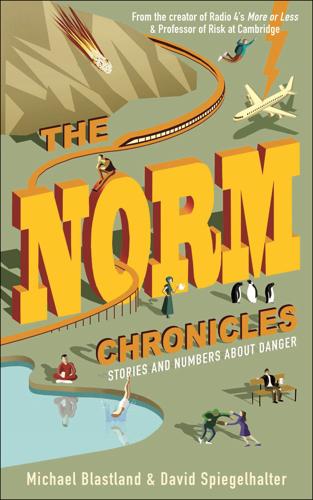
The Norm Chronicles
by
Michael Blastland
Published 14 Oct 2013
So all in all, black swans are even more troublesome than sometimes supposed. First, we cannot predict them; second, we often don’t recognise them when they arrive. That is, we might not know whether what we just saw was a black swan until well after it has floated past and its full effect is clear. The 2008 banking crisis was still playing out five years later in 2013, and probably will continue to do so for years to come. Similarly, Norm might not know the risks of unemployment, even after he is shown the door, until years later. So what was the risk? 22 CRIME PRUDENCE CHECKED HER EMAILS, deleted two financial ‘opportunities’ from Nigeria, turned off the laptop and popped it under the cupboard in the downstairs loo, took a last look outside and then bolted the front door and put on the chain, switched on the alarm, turned off the lights and went upstairs.

The Silk Roads: A New History of the World
by
Peter Frankopan
Published 26 Aug 2015
After some hard-hitting reports had been prepared for the Tsar, Alexander I, which set out the shortcomings of the Russian army in merciless detail, a root-and-branch overhaul of the military was carried out.49 Dramatic steps were taken: conscription was reduced from twenty-five years’ service to fifteen, lowering the average age of the army at a stroke, while bulk orders of up-to-date equipment were issued to replace antiquated and inefficient matériel.50 But the most striking change came from far-reaching social reform. Although a severe banking crisis in the late 1850s also played a role, it was defeat in the Crimea and shame at the terms that followed that prompted the Tsar to abolish serfdom, a system under which a significant part of the population was tied to the land and indentured to wealthy landlords. Within five years, serfdom had been swept away, ending centuries of slavery in Russia.51 This was not before time, according to some contemporaries.52 It presaged a surge towards modernisation and economic liberalism that propelled growth at a phenomenal rate in the second half of the nineteenth century: iron production rose five-fold between 1870 and 1890, while the impressive expansion of the railway network served, as one modern scholar has put it, to ‘emancipate Russia from the limitations imposed by her geography’ – in other words, by linking the vast country together.53 Far from bottling Russia up, the British helped let the genie out of the bottle.
…
Caldwell (eds), Rome: Continuing Encounters between Past and Present (Farnham, 2011), pp. 101–28. 48Figes, Crimea, pp. 411–24; Baumgart, Peace of Paris, pp. 113–16. 49D. Moon, The Abolition of Serfdom in Russia, 1762–1907 (London, 2001), p. 54. 50E. Brooks, ‘Reform in the Russian Army, 1856–1861’, Slavic Review 43.1 (1984), 63–82. 51For serfdom in Russia, see T. Dennison, The Institutional Framework of Russian Serfdom (Cambridge, 2011). For the banking crisis, S. Hoch, ‘Bankovskii krizis, krest’ianskaya reforma i vykupnaya operatsiya v Rossii, 1857–1861’, in L. Zakharova, B. Eklof and J. Bushnell (eds), Velikie reformy v Rossii, 1856–1874 (Moscow, 1991), pp. 95–105. 52Nikolai Miliutin, Assistant Minister of the Interior, had warned in 1856 that the abolition of serfdom was not just a priority but a necessity: there would be unrest and possibly revolution in the countryside if action was not taken, Gosudarstvennyi arkhiv Rossiiskoi Federatsii, 722, op. 1, d. 230, cited by L.
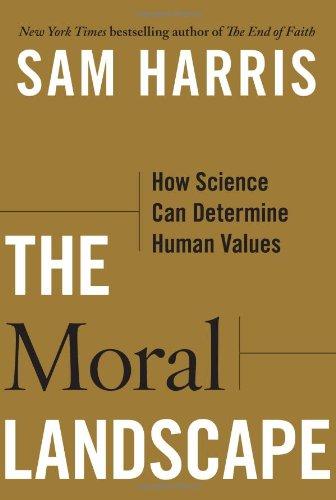
The Moral Landscape: How Science Can Determine Human Values
by
Sam Harris
Published 5 Oct 2010
Judging from recent events, it wouldn’t appear so. Perhaps a deep understanding of economics will always elude us. But does anyone doubt that there are better and worse ways to structure an economy? Would any educated person consider it a form of bigotry to criticize another society’s response to a banking crisis? Imagine how terrifying it would be if great numbers of smart people became convinced that all efforts to prevent a global financial catastrophe must be either equally valid or equally nonsensical in principle. And yet this is precisely where we stand on the most important questions in human life.
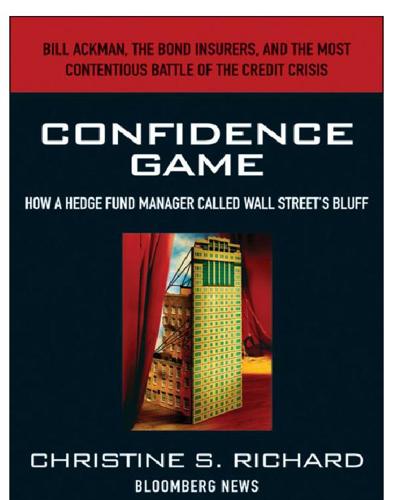
Confidence Game: How a Hedge Fund Manager Called Wall Street's Bluff
by
Christine S. Richard
Published 26 Apr 2010
If those securities were downgraded to triple-B, then the bank would need $4 billion of capital. A further downgrade to double-B would increase the bank’s capital need to $26 billion, or nearly 100 times the capital it needed when the securities were rated triple-A. This steep increase in capital requirements turned the collapse in the value of CDOs into a global banking crisis. Financial institutions were relying on credit-rating companies to determine how much capital to hold against trillions of dollars of securities. That meant every time the credit-rating companies stamped a security with a triple-A rating, more capital was sucked out of the financial system. Triple-A-rated securities—considered the safest of safe investments—actually posed enormous risk to the financial system.

Corduroy Mansions
by
Alexander McCall Smith
Published 1 Jan 2009
That was more than enough for anybody, since Walter Moongrove had been a successful London stockbroker of the old type—upright and financially righteous in every respect. How he would have disapproved of these people who had got us into this trouble—the reckless bankers who invented money, just invented it, she thought. She mused on the Freudian view of the banking crisis. Financial systems were not abstract entities dreamed up by dispassionate architects: they were human working practices caught up in the messy real world. That meant that the psychopathology of those people running such systems would determine the operation of the system; Berthea was sure of it.

Age of Discovery: Navigating the Risks and Rewards of Our New Renaissance
by
Ian Goldin
and
Chris Kutarna
Published 23 May 2016
So, they appealed to the European Union, the European Central Bank and the IMF (the “troika,” as they came to be known) for help. The troika gave it—on condition that borrowing nations pass new budgets to tighten up public spending. These “austerity measures” did not go down well with a public that had already lost jobs and incomes in the banking crisis. The same entities that had tolerated reckless lending in the first place now demanded that governments privatize state assets, cut public salaries and pensions, and reduce public services so that international creditors could more reasonably expect to get repaid. In Greece, from 2010 onward, hundreds of thousands of people took part in the Indignant Citizens Movement—sit-ins and protests against this latest round of misery.52 They were Greece’s largest protests since revolts against the military junta in 1973.

Nerds on Wall Street: Math, Machines and Wired Markets
by
David J. Leinweber
Published 31 Dec 2008
—Binyamin Appelbaum, “Banks to Continue Paying Dividends” ( Washington Post, October 30, 2008) Banks getting $125 billion from U.S. taxpayers to unlock the credit crunch are saying they’d rather hoard the money than use it for loans. —Jody Shenn, “Banks Hoard Money Meant to Boost Economy, Lender Says” (Bloomberg.com, November 7, 2008) 310 Nerds on Wall Str eet Watching CNN (with the sound off, as I tried to work on this book), I noticed Sal Khan, an earnest-looking young man, drawing colorful diagrams about the banking crisis. The Dow Jones Industrial Average, which had dropped over 450 points earlier in the day when the soon-to-be-ex-president reassured the country everything was under control, moved up more than 400 points as Sal spoke. This warranted turning on the sound and rolling back the TiVo to see what was going on.
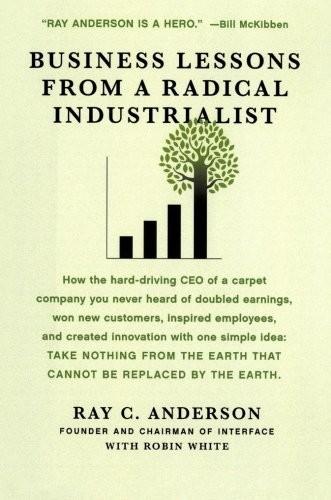
Business Lessons From a Radical Industrialist
by
Ray C. Anderson
Published 28 Mar 2011
Perhaps high energy costs, especially gasoline, stemming from dependence on foreign oil and exacerbated by hurricane activity, served to tip some home owners into default on their subprime mortgage loans. However, this is likely to have been a very minor factor, and is probably unquantifiable. So, what are the deeper, less obvious connections? Well, as the banking crisis has unfolded, the magnitude of the subprime (read, high interest rate!) mortgage portfolios held by failing financial institutions around the world has begun to become apparent. Something on the order of $3 trillion (at present count) bad loans spawned losses in all kinds of high-risk derivative financial instruments—exposure perhaps on the order of $60 trillion!
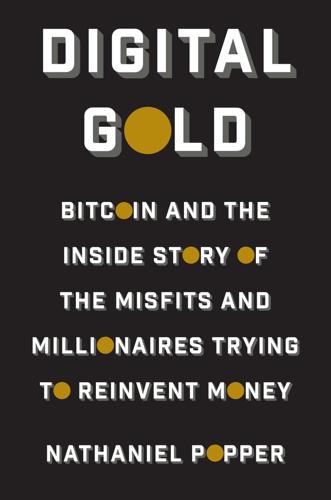
Digital Gold: Bitcoin and the Inside Story of the Misfits and Millionaires Trying to Reinvent Money
by
Nathaniel Popper
Published 18 May 2015
See also Briger, Pete Founders Fund, 187, 211 4chan (hacker message board), 75 Freeman, Ian, 75–76 Free State Project, 107–110 Free Talk Live (radio program), 75–78, 108 Freis, James, 325 FriendlyChemist (screen name), 225–226 Gandalf (computer chip), 329 Garzik, Jeff, 83–84, 92, 99, 190, 196, 348 Gates, Bill, 353–355, 385n Gawker (website), 83–84 George, Jacob (aka DigitalInk), 121 George Mason University, 80 Georgia, Republic of, 330 GitHub, 141 Goldman Sachs, 324–326 gold standard, x, 15–16, 31–32, 45, 109, 157–158 Gonzague, 312–315 Goodman, Leah McGrath, 319–324 Google, 101–103, 187, 248–249, 283, 304–305, 314–315, 334 Google Wallet, 101 government regulation/investigation arrest of Roger Ver, 77–78 arrest of Ross Ulbricht, 170–171 BitInstant, 222–224 BTC China, 273–275 Erik Voorhees, 224–225 PGP and Zimmerman, 10 virtual currencies, 66–67, 196–198, 235 Graeber, David, 157 Great Depression, 31 Great Recession, banking crisis of 2008, 32, 111 Green, Curtis (aka chronicpain), 116, 170–171, 225, 249, 332 Greenspan, Alan, 17 hackers/hacking Bitcoin vulnerability, xiv, 24, 154, 201, 215 BitInstant penetration, 150 message boards, 75 Mt. Gox penetration, 67–69, 82–83, 90–96, 99, 114, 205–207 ransom demands/payments, 82, 150, 169, 347–348 Silk Road penetration, 168–169, 225, 248–251 Target data breach, 288–289 vulnerability of private information, xii, 19 Hanecz, Laszlo, 41–44, 48, 58, 189, 215 Hashcash, 17–22, 339, 348 hash functions, 22, 25–26, 41–42, 136, 359–362 Hearn, Mike, 80–81, 99–100, 101–103, 320 Hoffman, Reid, 181, 183, 291–293, 353 Horowitz, Ben, 192, 335.
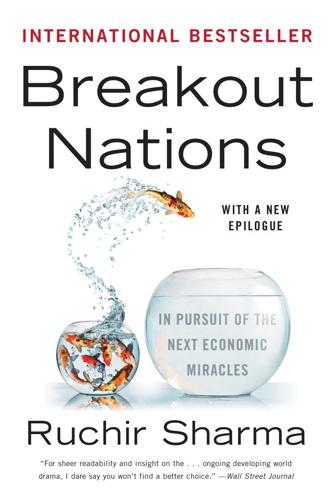
Breakout Nations: In Pursuit of the Next Economic Miracles
by
Ruchir Sharma
Published 8 Apr 2012
Russia is missing a financial sector in part because it is the only major country that has seen its currency wiped out twice in the last two decades. The ruble was devalued in 1991 after the fall of the Soviet Union and again in the crisis of 1998. During the Great Recession, Russia was also the only major emerging market to experience a classic banking crisis—in which the central bank was forced to inject cheap debt into struggling banks to save them. That put Russia in a class alongside Kazakhstan, Nigeria, and the Ukraine. When foreign funding suddenly dried up in the crisis of 2008, Moscow’s stock exchange panicked and fell by 74 percent over two months—the hardest-hit market in the world.
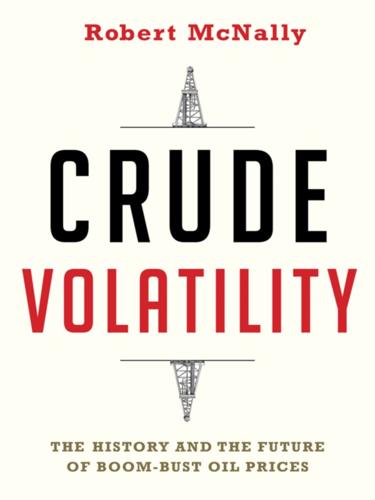
Crude Volatility: The History and the Future of Boom-Bust Oil Prices
by
Robert McNally
Published 17 Jan 2017
The Bank for International Settlements noted an “intense debate” about how falling oil prices would impact economies, flagging in particular the high debt burden of the oil and gas sector, which had grown by 250 percent from 2006 to 2015 and stood at roughly $2.5 trillion.99 Some worried that crashing oil prices could trigger a banking crisis and downturn as the Lehman crisis had spectacularly done six years earlier. “Oil credit crunch could be worse than the housing crisis,” blared one commentary headline on CNBC.100 Others noted that while the oil crisis was leading to losses at Wall Street banks that had lent producers sizable sums, comparisons with the mortgage crisis were overblown as the scale, complexity, and direct economic impacts were less severe in the case of shale oil debt.101 Whatever the true extent of the risk, crashing oil prices in January and early February 2016 exhibited a reminder that there is a downside to price busts, even for economies that ought to benefit from cheaper oil prices.

The Evolution of Everything: How New Ideas Emerge
by
Matt Ridley
Yet, instead of looking across the border with the intention of emulation, politicians kept trying to make the Scottish system more like the English one. In 1765 the Scottish banks were banned from issuing small notes worth less than £1, despite there being no evidence that they caused any trouble. In 1826, following yet another severe English banking crisis, although no Scottish bank had failed, the Chancellor of the Exchequer Robert Peel tried to ban the issuance of Scottish notes worth less than £5. He (or rather the jealous Bank of England) was disturbed that these notes were circulating in parts of northern England. Peel was seen off by an unlikely opponent.

An Extraordinary Time: The End of the Postwar Boom and the Return of the Ordinary Economy
by
Marc Levinson
Published 31 Jul 2016
The secondary banks were small by the standards of international banking, but they had borrowed heavily from London stalwarts like National Westminster Bank, one of the largest banks in the world. Legally, Richardson and the Bank of England had no responsibility. Richardson charged into the void nonetheless, forcing Britain’s big banks to pay into a fund that wound down the secondary banks in an orderly way.5 The secondary banking crisis exposed an uncomfortable secret: in the world’s most important international banking center, no one kept a close watch on the banks. As of November 1973, the latest financial information the Bank of England had received from London and County Securities was a balance sheet dated March 31, with no details about loans, deposits, or other obligations.
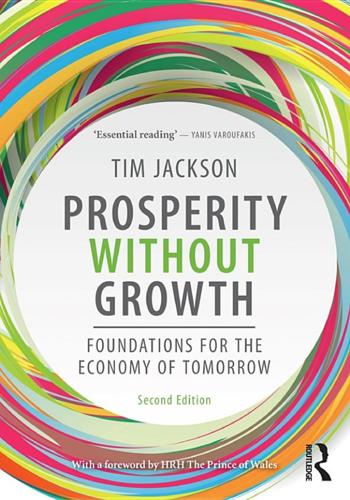
Prosperity Without Growth: Foundations for the Economy of Tomorrow
by
Tim Jackson
Published 8 Dec 2016
In Argentina, economic output was erratic to say the least over a quarter of century between 1980 and 2005, with two major and sustained economic contractions. But the gains in life expectancy over the same period were substantial and consistent. In Iceland, perhaps surprisingly, both health and happiness improved in the wake of a banking crisis that hit the country even harder than most.26 Finally, the country with the highest life expectancy in the world is Japan (Figure 4.1), where for over two decades now income growth has been more or less stagnant. But during the two ‘lost decades’ (between 1990 and 2010), life expectancy in Japan grew faster than it had done at any point during the previous three decades.
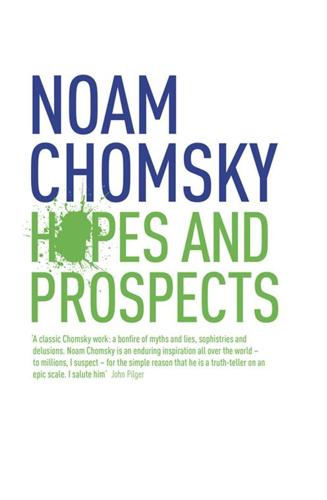
Hopes and Prospects
by
Noam Chomsky
Published 1 Jan 2009
Chile did manage to recover, but by a complex mixture of market reliance and state intervention, including a form of capital control (violating the core principle of neoliberalism) and state ownership of the world’s largest copper producer, Codelco, another radical violation of neoliberal principles, and the source of much of Chile’s export earnings and the state’s fiscal revenues. As the Financial Times observes, after the “catastrophic banking crisis of 1982, the product in part of economic policies pursued by the radical free-marketers known as the Chicago boys, [Chile] cooled its ideological fervor” and by the 1990s “controlled its exposure to world financial markets and maintained its efficient copper company in public hands,” somewhat protecting itself from market disasters by these and other measures.23 It remains to look at the central doctrine of neoliberalism: financial liberalization, which began to take off from the early 1970s.
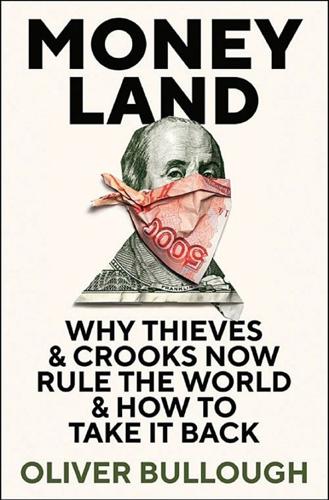
Moneyland: Why Thieves and Crooks Now Rule the World and How to Take It Back
by
Oliver Bullough
Published 5 Sep 2018
In July 2008, the US government demanded that the Swiss banking giant hand over the names of all of its US account holders, something that would destroy the Swiss tradition of banking secrecy. In normal times, UBS would have ignored the demand, or obfuscated, or come up with some work-around like the QI deal which would end up giving it new earnings opportunities. But this was during the depths of the banking crisis. By the end of October that year UBS would have offloaded $60 billion-worth of toxic assets on to the Swiss banking regulator, and written down $49 billion-worth of losses linked to the US mortgage market. Its shares had lost two-thirds of their value, and there was speculation over whether it could survive as a bank at all.

Cities Are Good for You: The Genius of the Metropolis
by
Leo Hollis
Published 31 Mar 2013
After 2008, when families suddenly found that they could no longer honour their agreements, a shock wave juddered through the worldwide financial system. No one who had been involved in this network of transactions was safe. The global network is highly interdependent, and even without the calamity of the international banking crisis, another example shows us how the activities in one city can have an impact on another. Many of the leading high-street retailers in London and New York have their underwear and cotton goods manufactured in Chittagong, Bangladesh. The factories moved there in the 1960s when it became too expensive to have the goods made in the traditional factories of Bradford in the north-west of Britain.
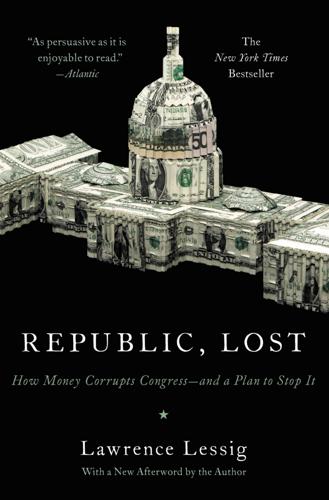
Republic, Lost: How Money Corrupts Congress--And a Plan to Stop It
by
Lawrence Lessig
Published 4 Oct 2011
For most of the nation’s history, they represented a regular and often debilitating feature of American life. Until the Great Depression, major crises struck about every 15 to 20 years—in 1792, 1797, 1819, 1837, 1857, 1873, 1893, 1907 and 1929–33. But then the crises stopped. In fact, the United States did not suffer another major banking crisis for just about 40 years—by far the longest such stretch in the nation’s history. Although there were many reasons for this, it is difficult to ignore the federal government’s active role in managing financial risk. This role began to take shape in 1933 with the passage of the Glass-Steagall Act….

The Arsenal of Democracy: FDR, Detroit, and an Epic Quest to Arm an America at War
by
A. J. Baime
Published 2 Jun 2014
Henry finally agreed to meet Roosevelt on April 27, 1938. The meeting made the cover of Newsweek. Walking out of the White House afterward, Henry said, “Well, he took up the first five minutes telling me about his ancestry.” Henry had no idea why, “unless Roosevelt wanted to prove he had no Jewish blood.” Edsel faced the bank crisis with optimism: not long after Black Tuesday, he gave everyone a raise. “Ford Motor Company employees of every grade began working under an increase wage scale Monday,” he announced, his statement making the front page of the New York Times. But as the nation sank deeper into despair, Edsel fell into its grip.

Plutocrats: The Rise of the New Global Super-Rich and the Fall of Everyone Else
by
Chrystia Freeland
Published 11 Oct 2012
Ottawa chose a different course because the government had a profoundly different attitude about its duties toward the system as a whole and its relationship with its bankers. As minister of finance in the 1990s, Paul Martin laid the foundations for this approach. Martin is no hoi polloi class warrior—he’s a self-made multimillionaire. But, he told me, his priority in finance was: “I knew there was going to be a banking crisis at some point and so did everyone else who has read any history. I just wanted to be damn sure that when a crisis occurred it wouldn’t occur in Canada, and that if it did occur internationally, Canada’s banks wouldn’t be badly sideswiped by the contagion.” Don Drummond, who later became the chief economist at TD Bank, was a senior official at the finance ministry in the 1990s.
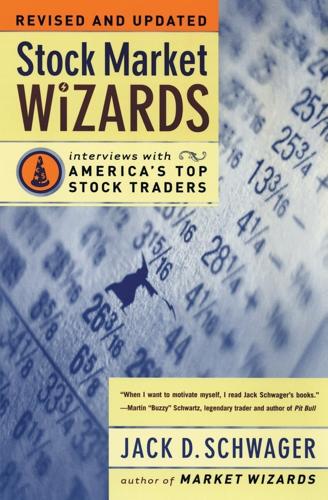
Stock Market Wizards: Interviews With America's Top Stock Traders
by
Jack D. Schwager
Published 1 Jan 2001
At the time, Ranieri was heavily involved in buying assets being liquidated by the Resolution Trust Corporation. The Resolution Trust Corporation was created by Congress in 1989 to dispose of the assets of failed savings and loans institutions in the wake of widespread bank failures. Ironically, the banking crisis was precipitated by Congress's earlier deregulation of the industry (1982), which opened the door to reckless investments and pervasive fraud. Congress exacerbated the impact of this ill-advised legislation by blocking attempts by regulators to rein in the industry and repeatedly ignoring their dire warnings—until the problem became so huge that it could no longer be avoided.
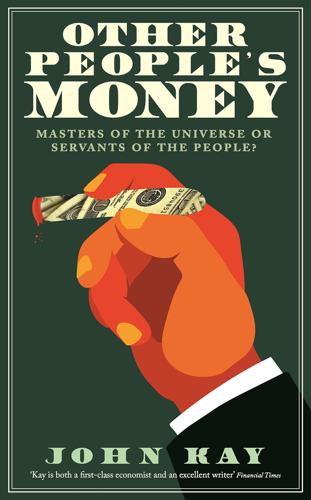
Other People's Money: Masters of the Universe or Servants of the People?
by
John Kay
Published 2 Sep 2015
Sceptics had always feared that limited liability companies would be vulnerable to negligent management, speculation and excessive risk-taking. That concern was the essence of Adam Smith’s warning of the problems associated with the management of other people’s money, and was why limitation of liability was tightly restricted until the second half of the nineteenth century. The iconic banking crisis of that era – the collapse in 1866 of Overend, Gurney & Co., the ‘banker’s bank’, which had threatened to rival the Bank of England in role and prestige – followed its incorporation by only twelve months. Few large partnerships ever failed: the most substantial was Barings, which was bailed out in 1890.

Forward the Foundation
by
Isaac Asimov
Published 22 Feb 2012
Namarti’s face seemed to shine with malignant glee as he said, in an odd singsong, as though it were a matter of rote, “Year after year, I worked on those lines, even through hopelessness and uselessness, building an organization, chipping away at confidence in the government, creating and intensifying dissatisfaction. When there was the banking crisis and the week of the moratorium, I—” He paused suddenly. “I’ve told you this many times and you’re sick of hearing it, aren’t you?” Andorin’s lips twitched in a brief dry smile. Namarti was not such an idiot as not to know what a bore he was; he just couldn’t help it. Andorin said, “You’ve told me this many times.”
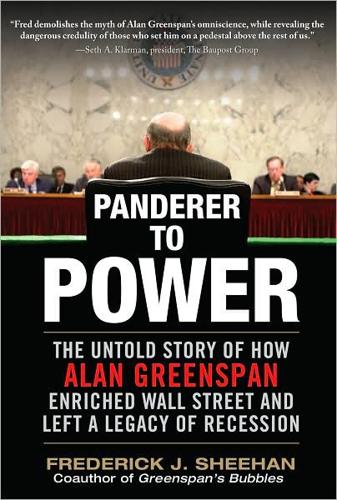
Panderer to Power
by
Frederick Sheehan
Published 21 Oct 2009
He was blind to the financial mayhem that accompanied his economic moderation. In 2008, researchers at the International Monetary Fund (IMF) identified 124 international banking crises since 1970. Four were in the 1970s, 39 were in the 1980s, 74 were in the 1990s, and 7 were after the millennium.13 The current worldwide banking crisis is not included. It would be premature to quantify it. The Great Moderation was, in fact, the Great Distortion. The Peak We now know that the housing bubble peaked sometime in 2005 or early 2006. Ben S. Bernanke was sworn in as Federal Reserve chairman on February 1, 2006. The brightest guys in the room thought that the excesses were about to collapse.
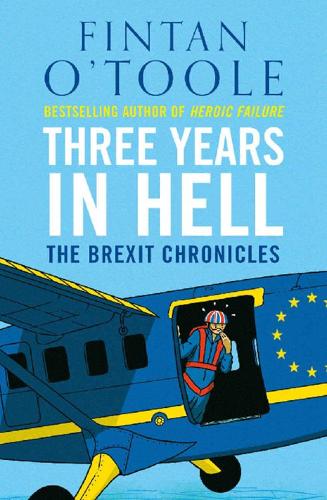
Three Years in Hell: The Brexit Chronicles
by
Fintan O'Toole
Published 5 Mar 2020
It is easier for smaller countries to use their diplomatic skills to create coalitions on questions of vital interest to themselves when they can play on rivalries and disagreements between the major states, including the UK. We can see this most clearly from a negative example: without the UK in the eurozone, Ireland was much more vulnerable in the banking crisis to bullying by the ECB. If and when Britain leaves, Germany will, merely by default, become much more dominant. The balance of power that Castlereagh did so much to create at the Congress of Vienna will have tilted towards Berlin. But there is another irony, too: the Germans don’t really want this dominance.

Posh Boys: How English Public Schools Ruin Britain
by
Robert Verkaik
Published 14 Apr 2018
For this reason the City and its regulators generally turn a blind eye, given that the elite are drawn from such a narrow pool of schools and families. Going to the right school is the start of the business of getting on in the City. In this respect the City hasn’t really moved on since the days of the first London banking crisis of 1825 when a public school education was a non-negotiable prerequisite for a well-paid job in Threadneedle Street. Today, private education plays just as big a part in the recruitment of bankers and private-equity executives. In 2014 a report for the Sutton Trust by the Boston Consulting Group found that over 50 per cent of leaders of major banks and nearly 70 per cent of heads of private-equity firms were privately educated, while for new banking and private-equity recruits the figures were 34 per cent and 69 per cent respectively.
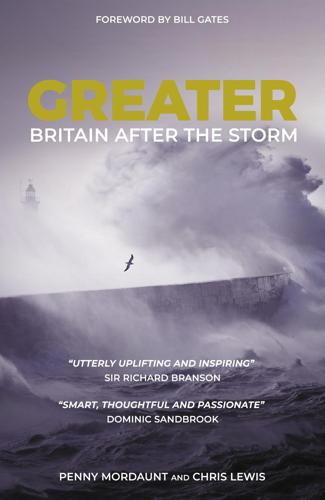
Greater: Britain After the Storm
by
Penny Mordaunt
and
Chris Lewis
Published 19 May 2021
This is a time of significant national threat. We must encourage dialogue despite our disagreements. This is not helped by ‘cancelling’ those with a different view or declaring them beyond the pale. The importance of minority views has been underlined by recent events. They foretold 9/11, the banking crisis, the rise of nationalism, the climate change movement, the coming of Brexit and the rise of Donald Trump. It wasn’t a lack of data that hid these issues; it was an inability to read the mood. Communication is not the same as conversation. They don’t teach that at university. Graduates may say that data is the new oil, but stock markets are moved as much by sentiment as they are by statistics.
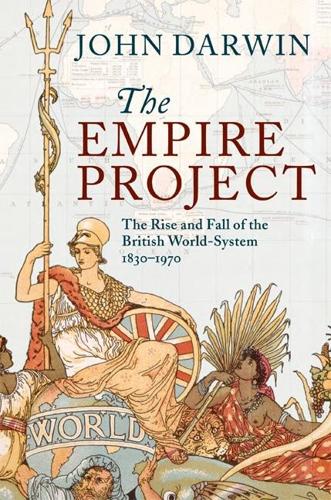
The Empire Project: The Rise and Fall of the British World-System, 1830–1970
by
John Darwin
Published 23 Sep 2009
But in no other dominion did the political and social structure (with all its racial conflicts and inequities) rest so completely on an industry bound so inflexibly to the London market. Nor on one so perilously close (or so it seemed until the mid-1930s) to commercial failure and terminal decline. Australia and New Zealand had suffered badly in the 1890s when falling export prices, over-borrowing, a banking crisis (as overseas deposits were withdrawn and their London assets shrank) and monetary contraction plunged them into depression. The steady rise in commodity prices in the new century brought relief and recovery. Australian exports reached £80 million by 191387 and an official commission rejoiced at the world's insatiable appetite for Australian products.88 Yet Australia failed to attract new British capital.
…
Unemployment rose steeply from 1.2 million in 1929 to 1.9 million the following year and 2.6 million in 1931. The balance of payments grew less healthy and then crashed into deficit. Public spending shot up to meet the new burdens of borrowing and benefits. As American lenders began to call in their loans to meet obligations at home, they sparked a banking crisis in Europe where too much had been lent ‘long’ on the back of American funds. Soon, those who held sterling in London (attracted in part by the high interest rates offered there) became anxious to sell it or exchange it for gold (the pound was freely convertible) for similar reasons. By August 1931, the loss of gold was acute, while the ‘unbalanced’ budget stoked fears of financial collapse, as the government borrowed more to meet its current outgoings.
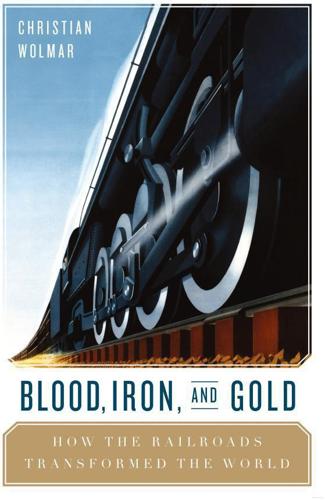
Blood, Iron, and Gold: How the Railways Transformed the World
by
Christian Wolmar
Published 1 Mar 2010
Investors were most vulnerable during the railway manias which raged through different countries at various times and were swept up in the rush simply because everyone else seemed to think it was a good idea. Railway bubbles simply fit into the history of similar scandals from the Dutch tulip mania of 1637 to the recent banking crisis. There’s no shortage of elegantly embellished but completely valueless railway company share certificates still adorning living-room walls, dating from the various railway manias of the nineteenth century. However, it was when governments became involved that unbelievably huge sums could be purloined by corrupt promoters and the world centre for such activity was the United States, where several later scams dwarfed even the dodgy dealings outlined in Chapter 6 during the construction of the first transcontinental.
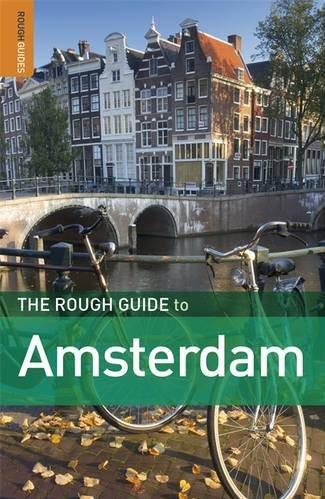
The Rough Guide to Amsterdam
by
Martin Dunford
,
Phil Lee
and
Karoline Thomas
Published 4 Jan 2010
Now home to a conference centre and the Stadsarchief, the state archives, it started out as the headquarters of a Dutch shipping company, the Nederlandsche Handelsmaatschappij, before falling into the hands of the ABN-AMRO bank, which was itself swallowed by a consortium led by the Royal Bank of Scotland in 2007 – just before the worldwide banking crisis. Dating to the 1920s, the building is commonly known as De Bazel (www.debazelamsterdam.nl) after the architect Karel de Bazel (1869–1923), whose devotion to theosophy formed and framed his design. Founded in the late nineteenth century, theosophy combined metaphysics and religious philosophy, arguing that there was an over-arching spiritual order with reincarnation for all as an added bonus.

Selfie: How We Became So Self-Obsessed and What It's Doing to Us
by
Will Storr
Published 14 Jun 2017
The US economy was one of mass production, and, partly because of the protections afforded them by unions and the state, the wages of the middle classes had been high enough to buy what the nation itself had been making. But then in the 1970s, in the US and the UK, everything started to go wrong. The economy stagnated, inflation surged, stock markets crashed, there was the oil crisis, steel crisis, banking crisis, the ‘Nixon Shock’, the three-day week. The GDP tanked, the unions fought, millions lost their jobs. It was during these tumultuous times that Greenspan began manoeuvring himself into a position of enormous power. He’d entered politics in 1968, after insistent urging by Rand, as an adviser to Richard Nixon.

City: A Guidebook for the Urban Age
by
P. D. Smith
Published 19 Jun 2012
But by the time construction workers leave, boom has turned to bust. The Empire State Building was completed just after the Wall Street Crash of 1929 and was known as the ‘Empty State’ for many years. The Petronas Towers were finished the year after the Malaysian stock market crashed in 1997. Following the recent global banking crisis, Dubai had to borrow billions of dollars from its neighbour, Abu Dhabi. The Burj Dubai was then hastily renamed the Burj Khalifa, in honour of Sheikh Khalifa bin Zayed al-Nahyan, ruler of Abu Dhabi. The graph plots the heights of super-tall buildings against the rise and fall of the Dow Jones Index, and shows how the construction of ambitious and costly buildings can be used as a key indicator within the business cycle.
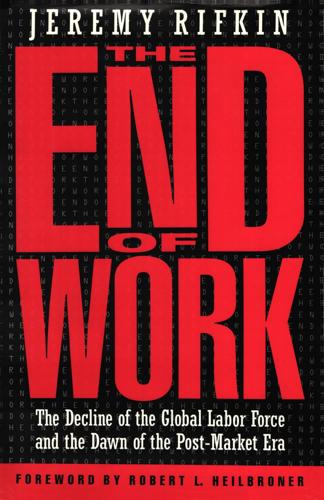
The End of Work
by
Jeremy Rifkin
Published 28 Dec 1994
While urban NGOs, in both the north and south, will need to address the issue of rising unemployment brought on by dramatic gains in productivity and technological displacement, southern NGOs are going to be confronted with a second, equally profound problem-the 286 THE DAWN OF THE POST-MARKET ERA introduction of agricultural biotechnology and the possible elimination of outdoor farming on the planet. The specter of hundreds of millions of peasant farmers being made redundant by the geneticengineering revolution is mind-boggling. The loss of international agricultural-commodity markets could plunge the Southern Hemisphere nations into an economic tailspin and force an international banking crisis of unprecedented proportions. Civilization would likely descend into a long-term decline that could last for centuries. For that reason alone, Southern Hemisphere NGOs are going to feel increasing pressure to resist the biotechnology revolution in agriculture while at the same time working for land reform and more ecologically sustainable approaches to farming their land.
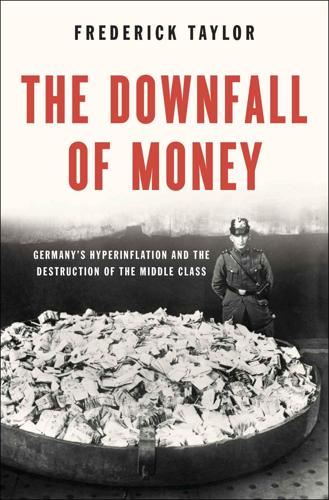
The Downfall of Money: Germany's Hyperinflation and the Destruction of the Middle Class
by
Frederick Taylor
Published 16 Sep 2013
In the case of Greece, especially, it was clear that the criteria for membership (a manageable national deficit, and a minimum level of financial probity) had been stretched to their limit and beyond, again for political reasons. Suddenly countries that had traditionally experienced problems borrowing on the international markets on affordable terms could borrow at much lower rates. Roughly the same rates, in fact, as if they were Germans. But without the discipline. The banking crisis that first made itself felt in 2007 may have had its origins in runaway American debt, but in Europe, as the financial tide went out, the underpinnings of much of the continent’s banking and investment system were shown to be equally, perhaps even more, unstable than those of Bear Sterns, Lehmann Brothers, Freddie Mac and Fanny Mae.
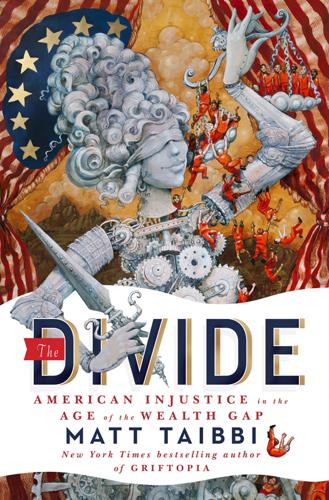
The Divide: American Injustice in the Age of the Wealth Gap
by
Matt Taibbi
Published 8 Apr 2014
Her experience was an early precursor to the Edward Snowden story, and I was meeting her in the Sheremetyevo airport stage of her odyssey. She told me to whip out a notebook and get ready for a long story. “I first got to Chase,” she began, “by way of Washington Mutual.” She’d worked at WaMu as the vice president of enterprise operations, from 2004 till Washington Mutual was sold to JPMorgan Chase during the banking crisis of 2008. Hers was a sort of roving-fixer job, in which she and a team of executives would deal with potentially embarrassing messes as they popped up across the bank’s different administrative systems. In this capacity, she had traveled all across the country, moving her family from Melbourne, Florida, to Jacksonville to San Antonio to Seattle, then back to San Antonio, then back to Seattle—all in less than four years.
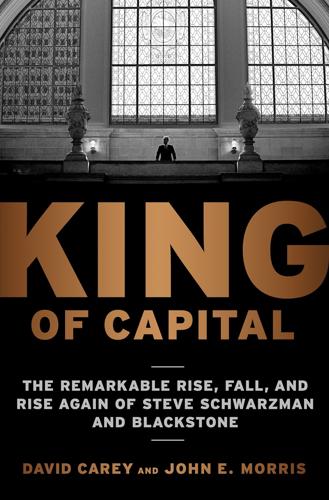
King of Capital: The Remarkable Rise, Fall, and Rise Again of Steve Schwarzman and Blackstone
by
David Carey
Published 7 Feb 2012
Morris, “Double Trouble,” Deal, July 17, 2008; Vyvyan Tenorio, “The Dividend Debate,” Deal, Apr. 16, 2009. 2 Two of them: Company financials. 3 Blackstone, too, had engineered: Travelport—Paul Schorr IV interview; Jeffrey Clarke, Travelport CEO, Aug. 27, 2009; Form S-4, Travelport, Ltd, May 8, 2007, 88; Health Markets—confirmed by Blackstone. 4 Furthermore, even the most extreme: Katia d’Hulster, “The Leverage Ratio: A New Binding Limit on Banks,” Crisis Response Note No. 11, World Bank, Dec. 2009. 5 By the time Bain Capital: Clear Channel financials. 6 Apollo, which had loaded up … Another Apollo casualty: Morris, “Double Trouble.” 7 Blackstone’s buyout and real estate funds: PPM for BCV VI. 8 Blackstone’s due dates: Blackstone. 9 Cerberus led a consortium: Jui Chakravorty Das, “GMAC Bailout Could Give Cerberus a Floor and Exit,” Reuters, Dec. 30, 2008; Louise Story, “Cerberus Tries to Get Chrysler out of a Ditch,” NYT, Mar. 31, 2009. 10 Cerberus’s buyout of the automaker: Ibid. 11 Even Cerberus’s investors were kept in the dark: Background interview with a prospective investor approached by Cerberus. 12 KKR lost Masonite: David Carey, “KKR Holdings Jump 34% in Value,” Deal, Feb. 25, 2010; François Shalom, “Aveos Creditors Agree to Debt Swap for Equity,” Montreal Gazette, Jan. 27, 2010; Tiffany Kary and Bill Rochelle, “Masonite Files for Bankruptcy to Restructure Debts,” Bloomberg News, Mar. 16, 2009. 13 Carlyle had five complete: Chris Nolter, “Hawaiian Telcom Files for Bankruptcy,” Deal, Dec. 1, 2008; Andrew Bulkeley, “Carlyle’s Edscha Collapses,” Deal, Feb. 3, 2009; John Blakeley and David Carey, “Sem-Group Slides into Ch. 11,” Deal, July 23, 2008; Alison Tudor, “Carlyle Group-Owned Willcom Inc.
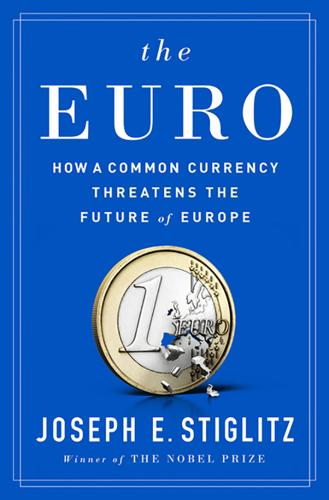
The Euro: How a Common Currency Threatens the Future of Europe
by
Joseph E. Stiglitz
and
Alex Hyde-White
Published 24 Oct 2016
While there were many limitations in the standard models63 that help explain why they did so badly in predicting the magnitude of the multiplier—and why Blanchard and others were surprised at the depth of the downturns—the most significant were (1) the failure to analyze carefully the financial sector, and (2) the failure to analyze carefully the distributive consequences of the policies. The models typically had no banks; this was an especially curious omission, for if there were no banks, there would be no central bank. And how then could we have had the banking crisis of 2008? The focus in the standard models was on the money supply, not on credit. The euro crisis and the way it was managed, however, led, as we saw in chapter 5, to a massive contraction of the supply of credit, especially to small and medium-size enterprises, and this “private austerity” compounded the effects of the public austerity.
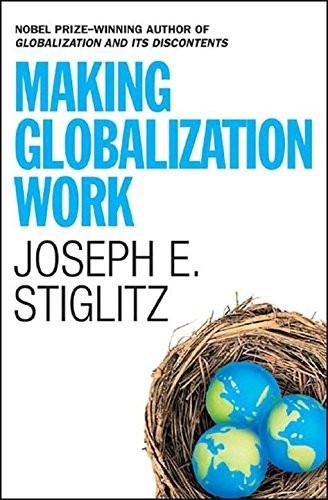
Making Globalization Work
by
Joseph E. Stiglitz
Published 16 Sep 2006
When they ran out of funds they turned to the IMF, but it provided money only with a long list of conditions, including government spending cuts, tax increases, and higher interest rates. As central banks raised interest rates, local companies found they were unable to meet their interest obligations. There were massive bankruptcies, and the currency crisis turned into a banking crisis. It was a terrible time: there were riots and social unrest in Indonesia, unemployed businessmen wandering the parks in Seoul because they were too ashamed to tell their wives that they had no office to go to anymore, people selling their clothes and housewares on the streets of Bangkok. Many people went back to the countryside to live with their families because they could not find work in the capital.
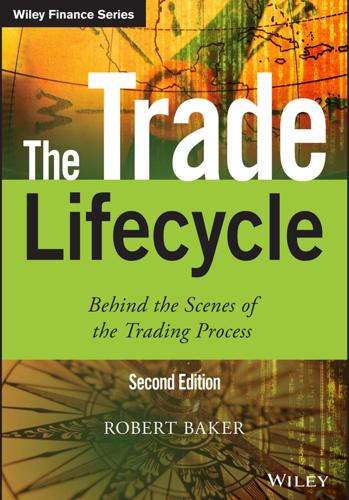
The Trade Lifecycle: Behind the Scenes of the Trading Process (The Wiley Finance Series)
by
Robert P. Baker
Published 4 Oct 2015
An employee now has to stay at the bank and continue to make it successful to enjoy the full bonus payment. The old adage that power corrupts could have been written for investment banking. People in high positions controlled vast sums of money and, collectively with their peers in other banks, had great influence on the whole of a country’s economy, as we saw to our cost in the banking crisis in the late 2000s. This power pervades the organisation and leads to some very questionable behaviour when there is a chance to 222 THE TRADE LIFECYCLE make money or to prevent the loss of money. Both successes and failures are magnified and become far more important than in other industries.
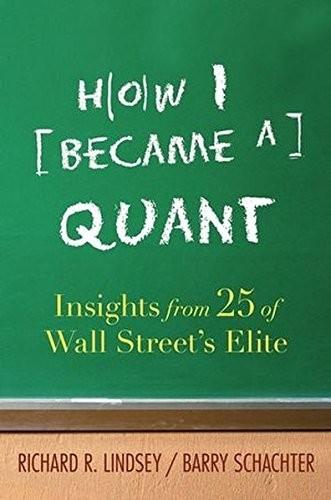
How I Became a Quant: Insights From 25 of Wall Street's Elite
by
Richard R. Lindsey
and
Barry Schachter
Published 30 Jun 2007
Choosing Academics Still imbued with the vague, albeit by now much more informed, notion of wanting to become a businessman when I grew up, I lightly penciled in a course for myself that would involve working for a couple of years in a bank and then trying to find my way to the United States for an MBA. I applied for a few jobs and actually landed a nice position as a management trainee at Bergen Bank, one of the more entrepreneurial financial institutions in Norway at the time (a banking crisis and many mergers later, it is now part of the DnB NOR financial services group). My finance professors, however, urged me to scrap this plan and instead head directly off to study for a PhD in finance. Their general line of argument was almost certainly a bit more sophisticated, but the punch line, as far as I was concerned, was that by following their advice I could go to school instead of work, make about the same amount of money in the short run (not much), and probably much more in the long run.
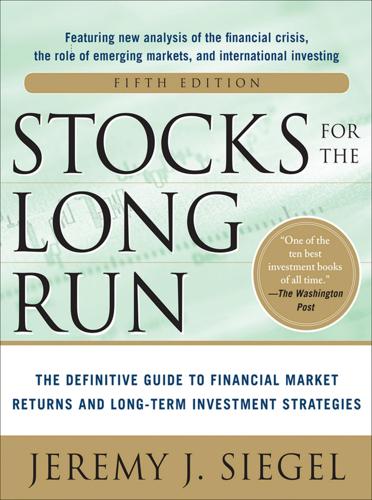
Stocks for the Long Run 5/E: the Definitive Guide to Financial Market Returns & Long-Term Investment Strategies
by
Jeremy Siegel
Published 7 Jan 2014
Not only have all the charts and tables been updated through 2012, but the chapter on the valuation of equities has been expanded to analyze such important new forecasting models such as the CAPE ratio and the significance of profit margins as a determinant of future equity returns. Chapter 19, “Market Volatility,” analyzes the “Flash Crash” of May 2010 and documents how the volatility associated with the financial crisis compares with the banking crisis of the 1930s. Chapter 20 shows that, once again, following a simple technical rule such as the 200-day moving average would have avoided the worst part of the recent bear market. This edition also addresses whether the well-known calendar anomalies, such as the “January effect, the “small stock effect,” and the “September effect,” have survived over the two decades since they were described in the first edition of this book.
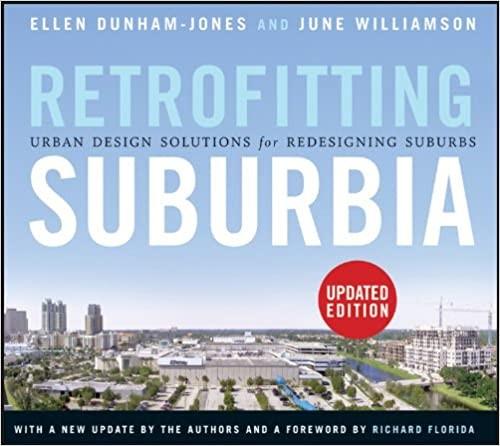
Retrofitting Suburbia, Updated Edition: Urban Design Solutions for Redesigning Suburbs
by
Ellen Dunham-Jones
and
June Williamson
Published 23 Mar 2011
• There has been a tremendous surge of interest in the techniques of retrofitting by architects, developers, and planners, as evidenced by the number of workshops, conference sessions, new publications, and landbanking efforts underway. • Several prominent mall developers have become mall re-developers and industry trade magazine Retail Traffic now refers to the addition of mixed-use to a mall as “modernizing.” • Metro Chicago’s first headline-worthy real estate loan since the banking crisis began went towards a retrofit of a dead mall: Bank of America’s August 2010 $100 million loan for the redevelopment of Randhurst Mall. In northern Virginia the upzoning of nodes along the Columbia Pike corridor to support streetcar service has progressed so well since 2007 that Arlington County is already planning extensions.
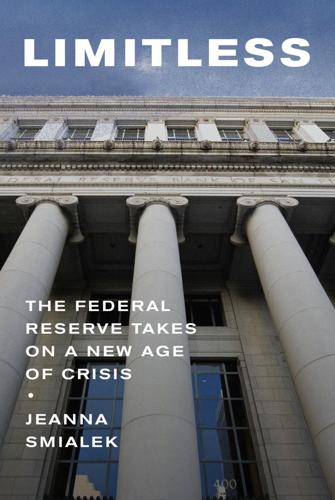
Limitless: The Federal Reserve Takes on a New Age of Crisis
by
Jeanna Smialek
Published 27 Feb 2023
The delicate dance Quarles, his colleagues at the Fed, and banks were performing midway through March, as the world around them melted down, showed how much the 2008 disaster and the bank failures it spawned remained burned into the psyche of regulators and institutions alike. The onset of the pandemic had eerie similarities, and nobody wanted another banking crisis. Nor did regulators want a situation in which banks went into hibernation mode, battening down the hatches and refusing to lend or make markets until the outlook cleared. The banks, for their part, wanted to redeem themselves and show just how much they had matured in the dozen years since they had helped to crash the global economy.
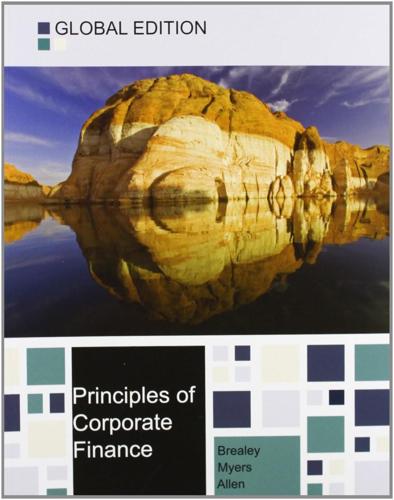
Principles of Corporate Finance
by
Richard A. Brealey
,
Stewart C. Myers
and
Franklin Allen
Published 15 Feb 2014
With hindsight, the investors should not have trusted Madoff or the financial advisers who steered money to Madoff. Madoff’s Ponzi scheme was (we hope) a once-in-a-lifetime event.10 It was astonishingly unethical, illegal, and bound to end in tears. More complex ethical issues were raised by the banking crisis of 2007–2009. Look, for example, at the box on the previous page that describes a deal involving the investment bank Goldman Sachs. Some observers believed that Goldman’s actions reflected all that is worst on Wall Street, but others argued that Goldman was simply following its client’s wishes.
…
The U.S. government also must take some of the blame for encouraging banks to expand credit for low-income housing. The rating agencies were at fault for providing triple-A ratings for many mortgage bonds that shortly afterward went into default. Last but not least, the bankers themselves were guilty of promoting and reselling the subprime mortgages. The banking crisis and subsequent recession left many governments with huge mountains of debt. By 2010 investors were becoming increasingly concerned about the position of Greece, where for many years government spending had been running well ahead of revenues. Greece’s position was complicated by its membership in the single-currency euro club.
…
They are not well paid, compared to CEOs in most other developed countries. (Look back to Figure 12.1 for average top-management compensation levels for Japan and other countries.) Cross-holdings reached a peak around 1990 when about 50% of corporations’ shares were held by other Japanese companies and financial institutions. Starting in the mid-1990s a banking crisis began to emerge in Japan. This led firms to sell off bank shares because they viewed them as bad investments. Banks and firms in financial distress, such as Nissan, sold off other companies’ shares to raise funds. By 2004 the level of cross-holdings had fallen to 20%. In the next few years, however, cross-holdings rose again as companies in the steel and other industries began to worry about hostile takeovers, which was the original motivation for acquisition of cross-holdings in the 1950s and 1960s.12 Ownership and Control in Germany Traditionally banks in Germany played a significant role in corporate governance.

Be Your Own Financial Adviser: The Comprehensive Guide to Wealth and Financial Planning
by
Jonquil Lowe
Published 14 Jul 2010
When you buy a guaranteed equity bond, you should bear these points in mind: M09_LOWE7798_01_SE_C09.indd 283 05/03/2010 09:51 284 Part 3 n Building and managing your wealth OO The guarantee to return your capital is only as good as the counterparty’s promise. Usually the counterparty is a sound financial institution that is highly unlikely to fail, but Lehman Brothers did (see Chapter 1) and, during the global banking crisis, other banks came close to collapse, so this risk cannot be entirely ignored. (NS&I guaranteed equity bonds are, in effect, underwritten by the UK government which should be sound.) OO Your stock-market returns are in reality only partial returns. For example, many bonds promise to pay a maximum of, say 60 per cent of the change in a stock-market index.
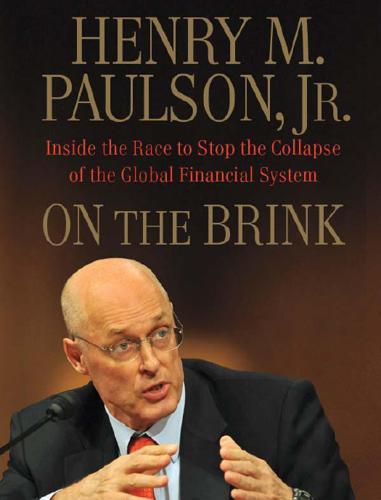
On the Brink: Inside the Race to Stop the Collapse of the Global Financial System
by
Henry M. Paulson
Published 15 Sep 2010
When the voting began, I was shut in my office with Michele Davis and on the phone with Russian finance minister Alexei Kudrin. It was an odd time for a call, but Russia was an important investor in U.S. and GSE debt, and I knew I needed to assuage Kudrin’s fears. He said he was starting to see signs that the banking crisis was spreading to Russia from Europe, and I could tell that his problems were much bigger than he was letting on. He was concerned about Friday’s run on Wachovia and our rescue of the bank, and wanted to know more about TARP. He wasn’t alone. Earlier I had spoken with Jean-Claude Trichet at the European Central Bank, and Saudi Arabian finance minister Ibrahim al-Assaf.

An Empire of Wealth: Rise of American Economy Power 1607-2000
by
John Steele Gordon
Published 12 Oct 2009
But Glass-Steagall weakened Morgan and similar banks much further. The separation of deposit and investment functions into noninter-locking companies was required because having the two businesses under the same management was thought to create an inevitable conflict of interest that had exacerbated the banking crisis of the early 1930s. In fact, the evidence for this was slight, and within a couple of years even Senator Carter Glass, the father of the bill (and, indeed, the father of the Federal Reserve System itself twenty years earlier), recognized that this separation had been a mistake. The iron law that it is far easier to pass a bill than to repeal one, however, held, and it would be more than sixty years before this part of Glass-Steagall would finally be reversed in an utterly different economic universe than that which had brought it into existence.

How to Change the World: Reflections on Marx and Marxism
by
Eric Hobsbawm
Published 5 Sep 2011
Moreover, nothing proved easier than to incorporate the rebel generation of 1968 – this time the Situationists –into a flourishing capitalist system that made more allowance than any of its predecessors for variations in personal taste and lifestyle, and which increasingly operated and presented itself as that economy and society of media-driven public spectacle. Increasingly academic success brought money. The 1990s and 2000s were the first era of the billionaires with research degrees. Indeed, at least one humorist observed that the world banking crisis of 2008 was due to the fact that for the first time the smart graduates rather than, as of old, the intellectually less gifted went into finance, thus inventing algorithms too complex for most capitalists to understand. 8 Careers rather than social change were on the horizon for the intellectually liveliest students.
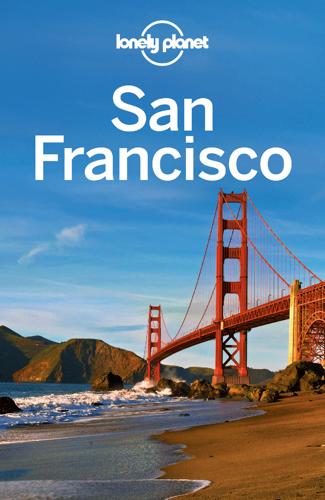
San Francisco
by
Lonely Planet
Tony Labatt’s disco balls dangling from his nether regions pretty much summed up the ’70s era of Travolta testosterone, and Mads Lynnerup’s vigilant camo-clad surveillance of San Francisco from a cardboard-armored SUV sunroof spoofed post-9/11 ‘orange alerts.’ But political satire is not a passing fad here: San Francisco provocateur Enrique Chagoya serves comic relief for banking-crisis hunger pangs with his Warhol-esque ‘Mergers, Acquisitions and Lentils’ soup-cans at Electric Works. Best for Murals San Francisco Art Institute’s Diego Rivera Gallery (Russian Hills) Coit Tower (North Beach) Rincon Center (SoMa) Balmy Alley (the Mission) Clarion Alley (the Mission) Abstract Thinking Art schools in San Francisco attracted major abstract expressionist talents during the vibrant postwar period, when Clyfford Still, David Park and Elmer Bischoff taught at the San Francisco Art Institute.

The Rational Optimist: How Prosperity Evolves
by
Matt Ridley
Published 17 May 2010
Google’s code of conduct echoes Morgan: ‘Trust is the foundation upon which our success and prosperity rest, and it must be re-earned every day, in every way, by every one of us.’ (And, yes, one day people will probably look back on Google’s founders as robber barons, too.) If people trust each other well, then mutual service can evolve with low transactional friction; if they do not, then prosperity will seep away. That is, of course, a large part of the story of the banking crisis of 2008. Banks found themselves holding bits of paper that told lies – that said they were worth far more than they were. Transactions collapsed. If trust makes markets work, can markets generate trust? A successful transaction between two people – a sale and purchase – should benefit both.
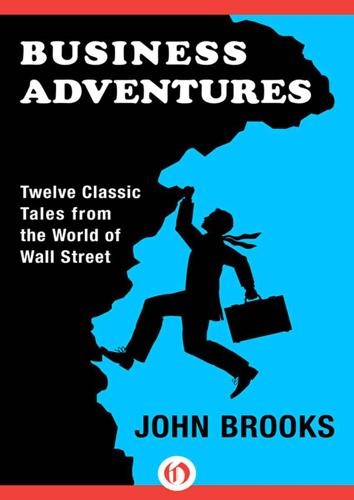
Business Adventures: Twelve Classic Tales From the World of Wall Street
by
John Brooks
Published 6 Jul 2014
The general collapse of currencies during the nineteen-thirties actually began not in London but on the Continent, when, in the summer of 1931, a sudden run on the leading bank of Austria, the Creditanstalt, resulted in its failure. The domino principle of bank failures—if such a thing can be said to exist—then came into play. German losses arising from this relatively minor disaster resulted in a banking crisis in Germany, and then, because huge quantities of British funds were now frozen in bankrupt institutions on the Continent, the panic crossed the English Channel and invaded the home of the imperial pound itself. Demands for gold in exchange for pounds quickly became too heavy for the Bank of England to meet, even with the help of loans from France and the United States.
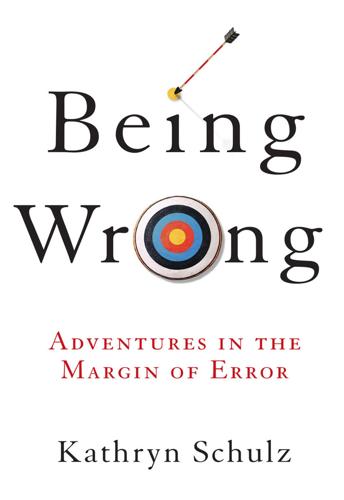
Being Wrong: Adventures in the Margin of Error
by
Kathryn Schulz
Published 7 Jun 2010
The economy had been in bad shape for over a year, and in the spring of 2008, with the collapse of the global investment giant Bear Stearns, it had entered a virtual freefall. What began as a subprime mortgage crisis (triggered by the now-infamous practice of offering mortgages to people with limited or troubled credit histories) had broadened into a liquidity crisis, a credit crisis, a banking crisis, a currency crisis, a trade crisis—just about every kind of economic crisis you could name. In the United States, the stock market had fallen 37 percent since the start of the year. The American economy had lost 1.5 million jobs (a figure that would rise to over 5 million by early 2009), and the unemployment rate was marching toward double digits in the worst-hit states and sectors.
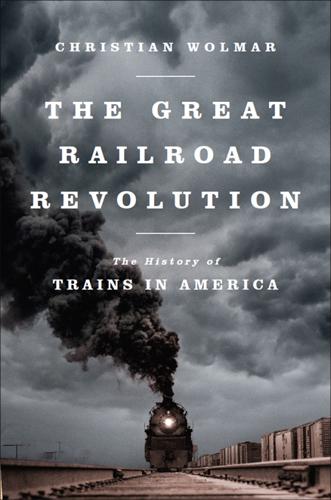
The Great Railroad Revolution
by
Christian Wolmar
Published 9 Jun 2014
Technically, the Reconstruction Finance Corporation was created by his predecessor, Herbert Hoover, but Roosevelt greatly extended its scope and the amount of money it had at its disposal. The scheme bears an uncanny resemblance to the “quantitative easing” that has become almost routine following the banking crisis of 2008. 12. Ibid. 13. For the most part, these were technically diesel-electrics. In other words, the diesel combustion engine was used to run an electric motor that then powered the locomotive. 14. Allen, Railways of the Twentieth Century, 76. 15. Ibid., 76, 77. 16. Sarah H. Gordon, Passage to Union: How the Railroads Transformed American Life, 1829–1929 (Elephant Paperbacks, 1997), 345. 17.
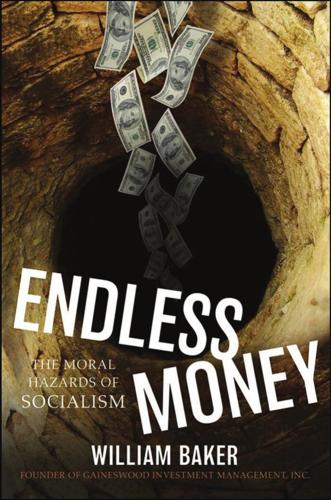
Endless Money: The Moral Hazards of Socialism
by
William Baker
and
Addison Wiggin
Published 2 Nov 2009
W 1 2 ENDLESS MONEY The irrationality of inflection points is discussed in this context, with examples of the fate of heretic signal-men as well as those who enjoyed success when acting on completely sham information. These two odd bedfellows are explained by an outside and ignored dimension, typified by the onset of the banking crisis, when CEOs of banks thought their institutions were sound because of low defaults and delinquencies, but loan balances were perilously close to inflated home values. In fact, those who apply scientific methods and construct sophisticated portfolios around them eventually see what they have assembled abandoned by the flows of capital, like the dispersion of the peoples who came together to build the Tower of Babel before the job was completed.
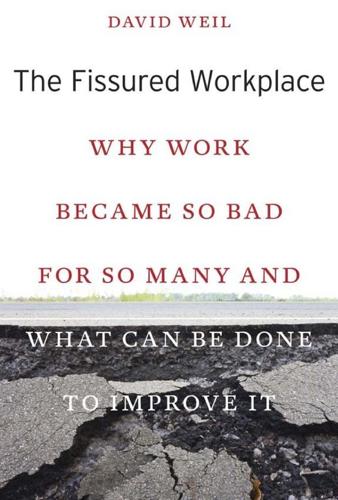
The Fissured Workplace
by
David Weil
Published 17 Feb 2014
Political Realities and Legislative Solutions In his 2012 book on inequality, the Nobel Prize–winning economist Joseph Stiglitz focuses on the increasingly large role that powerful private interests—particularly what has come to be known as “the 1%”—have on politics. He argues that the economic interests of the few have been increasingly protected and expanded through their greater control of the political process. Thus, tax policy, deregulation, responses to the banking crisis, and macroeconomic policy all have come to favor the very upper reaches of the income distribution while having detrimental impacts on the 99% (particularly those at the bottom and in the middle).62 Stiglitz points to the intensifying role played by the very top of economic elites in affecting political outcomes over the past three decades.

Connectography: Mapping the Future of Global Civilization
by
Parag Khanna
Published 18 Apr 2016
(Polity, 2013). 3. “Flow Dynamics,” The Economist, Sept. 19, 2015. 4. Financial flows (such as global banking, foreign investment, and portfolio capital) surged from $470 billion (4 percent of GDP) in 1980 to $12 trillion (21 percent of a much larger GDP) in 2007. After the financial crisis, the eurozone banking crisis and higher reserve requirements pushed capital flows back below 10 percent of GDP. 5. Turkey’s Ayka Tekstil and Sweden’s H&M are other major apparel manufacturers and brands that have expanded operations in Ethiopia. 6. See DHL’s Global Connectedness Index 2014, http://www.dhl.com/en/. 7.

More: The 10,000-Year Rise of the World Economy
by
Philip Coggan
Published 6 Feb 2020
Foreign creditors would be just as alarmed as domestic ones, and would withdraw their money and convert it into gold, diminishing the central bank’s gold reserves. The central bank’s usual response to falling reserves would be to push up interest rates to attract depositors. But in the midst of a banking crisis, higher interest rates would only make matters worse for borrowers, making it harder for them to repay their loans. The role of “lender of last resort” and “protector of the currency” would come into conflict. Those were two of the Bank of England’s roles. The third was to manage the nation’s debts and help the government raise money as cheaply as possible.

The Sinner and the Saint: Dostoevsky and the Gentleman Murderer Who Inspired a Masterpiece
by
Kevin Birmingham
Published 16 Nov 2021
Details about Russia’s 1860s reforms, serf emancipation, and emerging radicalism derive from Saunders, Russia in the Age of Reaction and Reform; Abbott Gleason, Young Russia: The Genesis of Russian Radicalism in the 1860s (New York: Viking, 1980); Gatrell, Tsarist Economy; Alexander Gerschenkron, “Economic Backwardness in Historical Perspective,” “Social Attitudes, Entrepreneurship, and Economic Development,” and “Russia: Patterns and Problems of Economic Development, 1861–1958,” in Economic Backwardness in Historical Perspective: A Book of Essays (Cambridge, Mass.: Harvard University Press, 1962); Kahan, Russian Economic History; Geroid Tanquary Robinson, Rural Russia Under the Old Regime (New York: Macmillan, 1967); Richard Pipes, Russia Under the Old Regime (New York: Scribner, 1974); Blum, Lord and Peasant in Russia; Steven Hoch, “The Banking Crisis, Peasant Reform, and Economic Development in Russia, 1857–1861,” American Historical Review 96, no. 3 (1991): 795–820; Antoine Horn, “A History of Banking in the Russian Empire,” in A History of Banking in All the Leading Nations (New York: Journal of Commerce and Commercial Bulletin, 1896), 2: 341–69; Artur Attman, “The Russian Market in World Trade, 1500–1860,” Scandinavian Economic History Review 29, no. 3 (1981): 177–202; David Goldstein, Dostoevsky and the Jews (Austin: University of Texas Press, 1981).
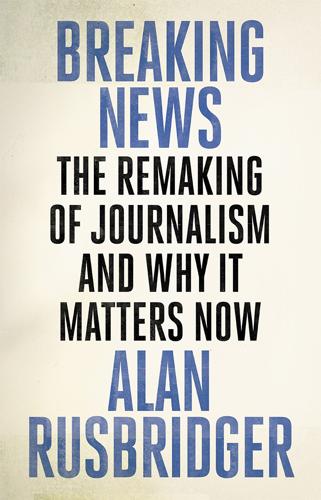
Breaking News: The Remaking of Journalism and Why It Matters Now
by
Alan Rusbridger
Published 14 Oct 2018
The so-called ‘tax gap’ – tax legally avoided by individuals and corporations – in Britain had been estimated at anywhere between $17 billion and $68 billion. This was clearly a matter of high public interest – but fraught with complexity and danger. Even the managing editor of the Financial Times, Dan Bogler, admitted at the height of the banking crisis: ‘Unfortunately, financial journalists – and the FT has better-trained financial journalists than others – don’t really understand this stuff, and they join a long list of people that starts with bank regulators, central bank regulators and money managers.’5 Tesco it turned out had, indeed, done their best to avoid one kind of tax – as the satirical magazine Private Eye was helpfully to disclose.

Kingdom of Olives and Ash: Writers Confront the Occupation
by
Michael Chabon
Published 29 May 2017
It is easy to analyze how Cellcom’s commercial reflects the desires, conscious or not, of Cellcom’s customers: all we want is to have a little fun, to play a little game, but we don’t want to see the faces of what might actually be happening on the other side of the proverbial pitch. We want it behind a wall of protection. You might wonder how a large company could be so tone deaf. I’ve certainly wondered, and I think the answer lies in soccer. Cellcom would not normally have dared to step into the political minefield of the West Bank crisis, but soccer defuses the mine, because everyone loves to play. The game is the pure representation of freedom, fun, and community, the most popular sport on earth, one which everyone loves, no matter one’s race or religion. However, the Palestinians in their video force us to confront a different side of the story: everyone loves to play, but not everyone can.
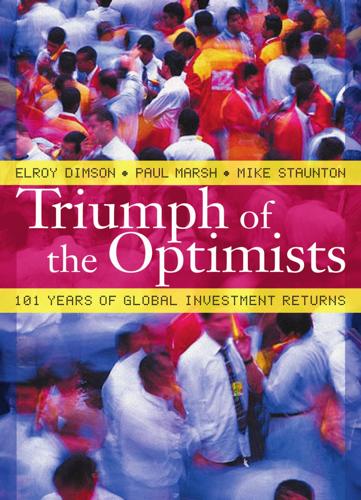
Triumph of the Optimists: 101 Years of Global Investment Returns
by
Elroy Dimson
,
Paul Marsh
and
Mike Staunton
Published 3 Feb 2002
This drove the world economy into deep recession. In the United Kingdom, the impact was aggravated by poor economic management and monetary policy, which led to inflation spiralling, eventually peaking at 25 percent in 1975. It also coincided with serious labor unrest, political uncertainty, and a secondary banking crisis. Investors who kept faith with equities were eventually vindicated, however, and UK equities rose by 97 percent in real terms in 1975. Since the bottom of this savage UK bear market at the end of 1974, the dollar gains on UK equities have been greater than for any other country in our study. 4.3 Stock market returns around the world In Figure 4-5 we show how US and UK equity market performance over the 101 years from 1900–2000 compares with the other fourteen countries in this study.

Radical Uncertainty: Decision-Making for an Unknowable Future
by
Mervyn King
and
John Kay
Published 5 Mar 2020
For example, in 2008 central banks found it difficult to persuade commercial banks to accept emergency loans because of the stigma associated with accepting such assistance – it indicated that the bank concerned might be in difficulty. Most central banks had forgotten that exactly the same problem had occurred after the 1906 US banking crisis; no bank took advantage of the new facilities created by the US Treasury until the outbreak of the First World War when all banks were in need and no stigma attached to any one of them. 31 As M. Trichet observed, the models that had come to be the embodiment of economic research failed the tests of utility and relevance in the 2007–08 crisis and its aftermath.

What We Cannot Know: Explorations at the Edge of Knowledge
by
Marcus Du Sautoy
Published 18 May 2016
Largely by accident I’ve been drawn into questions about banking.’ That was a surprise. The question of creating a stable banking system seemed very parochial, but May has recently been applying his models of the spread of infectious diseases and the dynamics of ecological food webs to understanding the banking crisis of 2008. Working with Andrew Haldane at the Bank of England, he has been considering the financial network as if it were an ecosystem. Their research has revealed how financial instruments intended to optimize returns to individual institutions with seemingly minimal risk can nonetheless cause instability in the system as a whole.
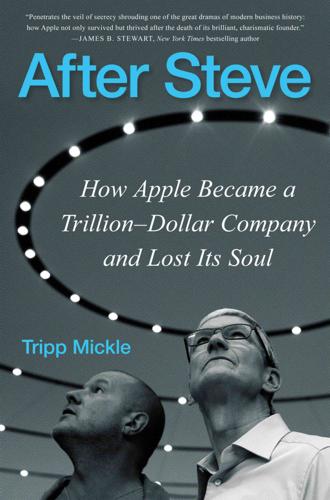
After Steve: How Apple Became a Trillion-Dollar Company and Lost Its Soul
by
Tripp Mickle
Published 2 May 2022
“I immediately fell in love with San Francisco and desperately hope that I can return there sometime in the future,” he wrote. With time and the help of Brunner, he would get his wish. IVE’S RETURN to Roberts Weaver in London was short-lived. The firm folded in 1990 after its finances collapsed amid a U.K. banking crisis. Free of the contractual commitment he had made in exchange for its financial support at Newcastle, Ive joined a firm started by his friend Grinyer and another designer, Martin Darbyshire. The partners named it Tangerine. They set up an office in a postindustrial loft with high ceilings and rough wooden floors just off Hoxton Square in East London’s Shoreditch neighborhood, at the time a seedy area spotted with strip clubs and gay pubs.
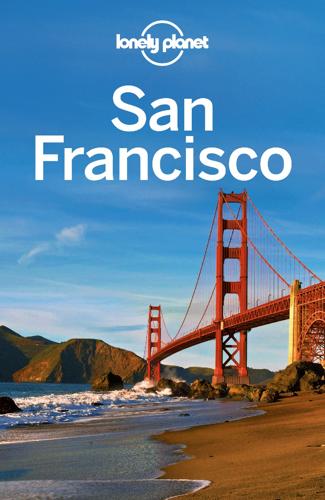
San Francisco
by
Lonely Planet
Tony Labatt’s disco balls dangling from his nether regions pretty much summed up the ’70s era of Travolta testosterone, and Mads Lynnerup’s vigilant camo-clad surveillance of San Francisco from a cardboard-armored SUV sunroof spoofed post-9/11 ‘orange alerts.’ But political satire is not a passing fad here: San Francisco provocateur Enrique Chagoya serves comic relief for banking-crisis hunger pangs with his Warhol-esque ‘Mergers, Acquisitions and Lentils’ soup-cans at Electric Works. Best for Murals San Francisco Art Institute’s Diego Rivera Gallery (Russian Hills) Coit Tower (North Beach) Rincon Center (SoMa) Balmy Alley (the Mission) Clarion Alley (the Mission) Abstract Thinking Art schools in San Francisco attracted major abstract expressionist talents during the vibrant postwar period, when Clyfford Still, David Park and Elmer Bischoff taught at the San Francisco Art Institute.

The Quiet Coup: Neoliberalism and the Looting of America
by
Mehrsa Baradaran
Published 7 May 2024
There were no banking crises between the New Deal reforms and their breach during the neoliberal era. These years coincided with a booming banking sector, unprecedented national and individual wealth, and a complete restoration of public confidence in the sector. But it was a little boring. And in a state of tranquility, the hard-won understanding of the causes and effects of a banking crisis were forgotten. So too were the fears about the unique ability of the financial sector to magnify its own power through the use of other people’s money and the destructive power of irrational exuberance and panic. In 1987, at the request of the Reagan administration, the Federal Deposit Insurance Corporation (FDIC) was asked to study “the need for major reform of the banking system.”
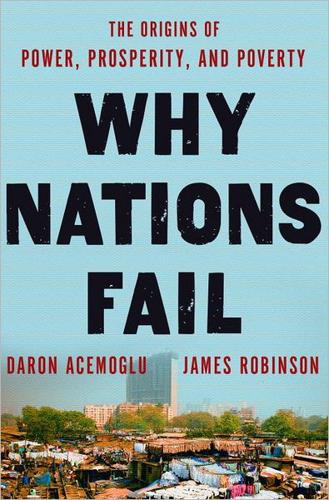
Why Nations Fail: The Origins of Power, Prosperity, and Poverty
by
Daron Acemoglu
and
James Robinson
Published 20 Mar 2012
He laid out his plans in one of his regular Fireside Chats, which was broadcast live on the radio on March 9, 1937. He started by pointing out that in his first term, much-needed policies had only cleared the Supreme Court by a whisker. He went on: I am reminded of that evening in March, four years ago, when I made my first radio report to you. We were then in the midst of the great banking crisis. Soon after, with the authority of the Congress, we asked the nation to turn over all of its privately held gold, dollar for dollar, to the government of the United States. Today’s recovery proves how right that policy was. But when, almost two years later, it came before the Supreme Court its constitutionality was upheld only by a five-to-four vote.
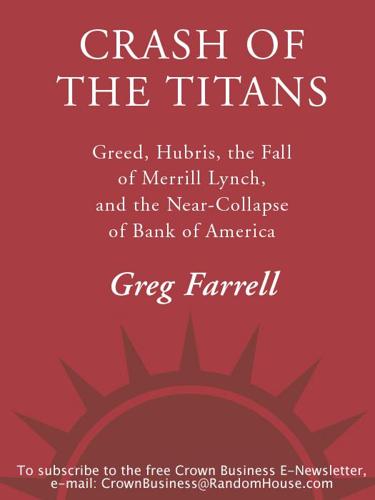
Crash of the Titans: Greed, Hubris, the Fall of Merrill Lynch, and the Near-Collapse of Bank of America
by
Greg Farrell
Published 2 Nov 2010
TERMINATED WITH PREJUDICE 1 At the time of that acquisition: “Bank of America Reaffirms Promises, CEO Lewis Meets State, City Officials, Offers Few Specifics,” by Sasha Talcott, Boston Globe, Sept. 1, 2004. 2 In January 2008, following the strategic review: “Bank of America Cuts 25% of Its Analysts, People Say,” by Jeff Kearns and Eric Martin, Bloomberg News, Jan. 24, 2008. 3 In spite of his position at the top of the nation’s largest bank: “Crisis Changes Rules of Game for Prime Brokers,” by Renee Schultes, Financial News, April 7, 2008. CHAPTER 10. FIRESALE 1 Michael Bloomberg started his career as a trader: Bloomberg by Bloomberg, by Michael Bloomberg, John Wiley & Sons, 1997, p. 32. CHAPTER 11. THE CHAIRMEN’S GALLERY 1 This most unusual character: unpublished manuscript by Bill Ecenbarger. 2 He helped bring Kroger, Kresge, and First National public: For the Record, From Wall Street to Washington, by Donald T.

Oil: Money, Politics, and Power in the 21st Century
by
Tom Bower
Published 1 Jan 2009
For months they had pleaded their helplessness to stop rising prices, but between November 2006 and January 2007 they had cut production by 1.5 million barrels a day to push prices higher. Now they resolved to stop prices falling. Meeting on September 9 in Vienna, the 11 OPEC ministers welcomed Sechin to their discussions, and agreed to cut production to keep prices at $100. On the same day, stock markets across the world plunged, and the banking crisis appeared uncontrollable. The specter of the oil ministers debating how to control prices at the beginning of a global recession suggested exceptional artlessness. On October 28, Mohamed bin Dhaen al Hamli, the UAE’s minister for energy, addressed about 1,000 oil experts at the annual Oil and Money conference in London.
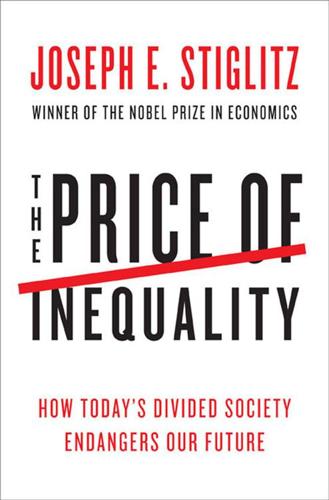
The Price of Inequality: How Today's Divided Society Endangers Our Future
by
Joseph E. Stiglitz
Published 10 Jun 2012
And in acknowledgment of the risk of undercapitalized banks—where small changes in the value of assets can be enough to cause bankruptcy—there should have been tight regulation on the size of bonuses and dividends until the banking system was fully recovered. Recognizing the role that lack of transparency and derivatives had played in the banking crisis, the Fed should have insisted that something be done about both. Little of the above was done, and what was done was often achieved over the opposition of the Federal Reserve. The new regulatory bill (Dodd-Frank) signed into law in July 2010 gave much of the responsibility for implementing regulations to the Fed, and at least in some areas it again showed where its loyalties were.

Ghosts of Empire: Britain's Legacies in the Modern World
by
Kwasi Kwarteng
Published 14 Aug 2011
When he died in 2006, his successor (and the last to hold the post of financial secretary), Donald Tsang, later the Special Administrative Region’s second chief executive after Hong Kong’s return to Chinese rule, paid a fulsome tribute to Cowperthwaite: ‘We shall always remember Sir John for the pioneering and dominant role he played in the birth of the legend of Hong Kong as the freest market economy.’28 The picture, however, was not one of unalloyed sunlight and harmony. Milton Friedman described Cowperthwaite as a ‘benevolent dictator’, yet, owing to the lack of infrastructure, new immigrants to Hong Kong were housed in shacks and squatter huts, built on hillsides and in cemeteries.29 Even more alarmingly, Cowperthwaite’s period of office saw a banking crisis in 1965 and the most destabilizing political riots in the colony’s history in 1967, both of which undermined international confidence in Hong Kong.30 The British possession of Hong Kong had always been an embarrassment to the Chinese. Indeed, many people had believed that the Chinese, first under Chiang Kai-shek, in the years immediately after the Second World War, and then under Mao Zedong, after 1949, were poised simply to overrun the colony and take it over by force.
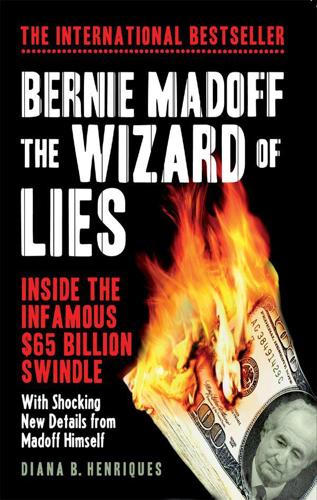
Bernie Madoff, the Wizard of Lies: Inside the Infamous $65 Billion Swindle
by
Diana B. Henriques
Published 1 Aug 2011
House of Representatives Committee on Financial Services, Wednesday, Feb. 4, 2009, 9:30 AM, pp. 3–4. 240 “each of us feared for our lives”: Ibid. 241 armed only with legal technicalities: Notes of the author, who covered the hearing. 241 “We thought the enemy was Mr. Madoff”: Diana B. Henriques, “Anger and Drama at a House Hearing on Madoff,” New York Times, Feb. 4, 2009. 243 As his son Willard Foxton later recounted in a moving BBC documentary: Allan Little, “Banking Crisis Killed My Father,” BBC News, Feb. 12, 2009; Roger Corke (producer), Lucy Hetherington (executive producer), and Fiona Stourton (executive producer), “The Madoff Hustle,” BBC 2, broadcast on “This World,” June 28, 2009. 243 “Dear Will, I will be brief”: Repex Ventures S.A. et al., v. Bernard L.
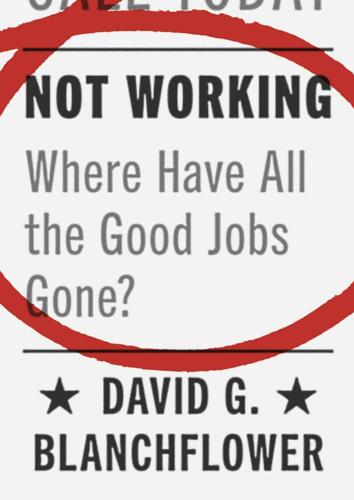
Not Working: Where Have All the Good Jobs Gone?
by
David G. Blanchflower
Published 12 Apr 2021
Growth is going to be low for many years, living standards are not going to rise, and the high levels of income inequality are all likely to contribute to increasing levels of social unrest. Much, indeed, will need to be changed.”3 The Guardian editorial board in September 2009 even got in on the act but nobody much was listening. It argued that “a year on from the collapse of US investment bank Lehman Brothers and the height of the banking crisis, it does look as if the economy has avoided a rerun of the Great Depression—but it does not follow that from here on the UK is in for either a constant or a strong recovery…. The probable outlook for the UK economy in 2009 is the same as described by Keynes in 1930: we are in for ‘the long, dragging conditions of semi-slump, or at least sub-normal prosperity.’”4 They were right.
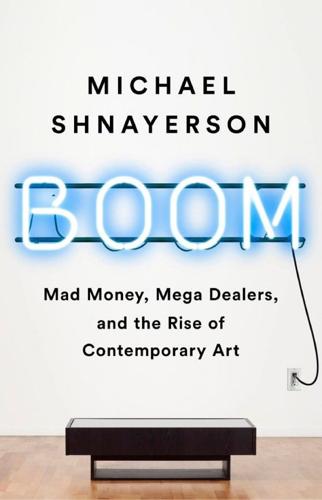
Boom: Mad Money, Mega Dealers, and the Rise of Contemporary Art
by
Michael Shnayerson
Published 20 May 2019
Over the years, they sold at such exponentially greater prices than what Goodman had originally sold them for that Richter became one of the most frequently resold living artists at auction. The way the auction houses had affected the art market maddened the artist. “It’s just as absurd as the banking crisis,” Richter hissed. “It’s impossible to understand and it’s daft.”26 He wasn’t angry because auction houses were making a mint on his art while he made, from those secondary sales, not a dime. He was angry because ultimately what might define him was not his art but the prices it brought. From the book-filled office on West 57th Street that she had occupied since 1981, Goodman did all she could to keep Richter’s market from growing any dafter than it already was.
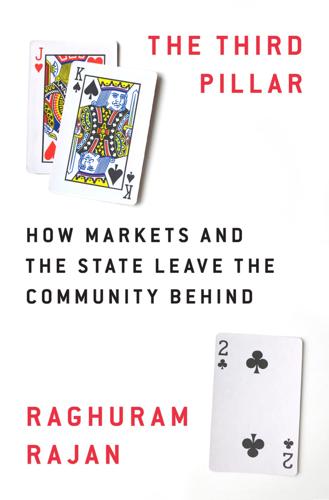
The Third Pillar: How Markets and the State Leave the Community Behind
by
Raghuram Rajan
Published 26 Feb 2019
Yet, if anything, employment in banking has gone up as more, cheaper, bank branches are opened, and tellers morph into relationship managers advising retail customers on their loan options and their investment portfolios.4 According to the Bureau of Labor Statistics in the United States, jobs in commercial banking and related areas have gone up from 2.4 million in 1990 to 2.7 million in 2017 despite widespread automation, and an intervening banking crisis. New jobs are being created even as old jobs are lost. Consider, for example, skilled tax accountants, whose specialty was to know every arcane element of the tax code. Such jobs have also been displaced, in this case by tax software available for a few dollars. Interestingly, this leaves the highly trained tax lawyer, whose work is to erect customized international tax shelters for her high-net-worth clients, unscathed.

Mr Five Per Cent: The Many Lives of Calouste Gulbenkian, the World's Richest Man
by
Jonathan Conlin
Published 3 Jan 2019
Almost all the loans were repaid, and in terms of the number of houses built and refugees resettled (23,000 by 1933) the Nansen scheme was far more successful than Nubarashen, AGBU’s ill-advised adventure in Yerevan. Unfortunately, Gulbenkian’s fundraising appeal for his Syrian resettlement scheme met with a feeble response, partly owing to the German banking crisis.24 Calouste turned to his cousins in New York. In 1928 the Gullabi Gulbenkian Foundation established a maternity hospital in Aleppo, named after Badrig Gulbenkian’s wife, Virginie.25 In 1931 the same foundation contributed $15,000 towards two new neighbourhoods on the outskirts of Beirut. Completed in 1932, ‘Gullabashen’ housed 750 refugees by 1935.26 Gulbenkian’s plans for AGBU eventually fell victim to infighting in Yerevan between Ter Gabrielian and Aghasi Khanjian, First Secretary of the Central Committee of the Communist Party of Armenia.

The WikiLeaks Files: The World According to US Empire
by
Wikileaks
Published 24 Aug 2015
The grinding, crashing halt of world markets in 2008, just as the Iraq “surge” was winding down and a lame-duck President Bush was on his way out, served as a sharp reminder of what the empire is all about. The crisis of the US banking system quickly caused havoc in the world system, illustrating how far American finance had penetrated the economies of allied states, and how far overseas banks were invested in the US economy. The subsequent response of governments to the banking crisis illustrated just how much American political leadership set the pace for the rest of the world. It is highly appropriate, therefore, that WikiLeaks, in the same moment as it exposes the doings of governments, discloses reams of documents about corporate corruption and the links between governments and business.
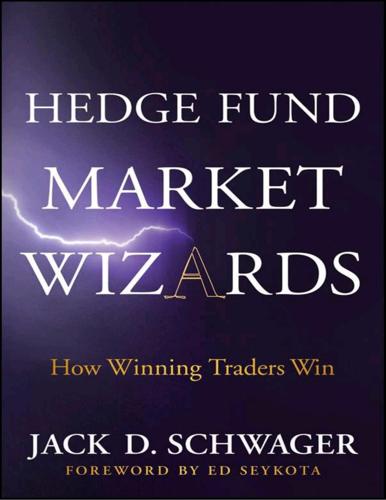
Hedge Fund Market Wizards
by
Jack D. Schwager
Published 24 Apr 2012
In October 2008, I did something I normally don’t do—I let a market assumption that I thought was right, but ultimately proved to be wrong, influence my trading. At the time, with the U.S. in a financial meltdown, I thought that Japan would dramatically outperform the U.S. because it had already had its banking crisis. My mistake was that every hedge fund manager in the world was long Japan, Hong Kong, and China, and those markets went down more than the U.S. because they had to liquidate their positions. That trade cost me a lot. Have the markets changed since your early days of trading? The growing influence of high-frequency trading has changed the behavior of the market and has made it more difficult for someone like me who is a pure tape reader looking for clues in the market action.

The Making of Modern Britain
by
Andrew Marr
Published 16 May 2007
Other political figures are either forgotten entirely or remembered as comic incompetents – Ramsay MacDonald entranced by duchesses, Oswald Mosley posturing in boots. Churchill’s moment was yet to come. So everything about this time seems unsatisfactorily vague. What’s the story? What does it mean for us now? Only a great banking crisis, mass unemployment and the Depression; only the political class loathed and ridiculed; only the world’s power balance changing as new nations rise in the East; only a people at home enjoying new consumer goods and dreaming dreams of a better way of living. These are the years when imperial Britannia is slipping into history and modern Britain, still an adolescent, is becoming visible.
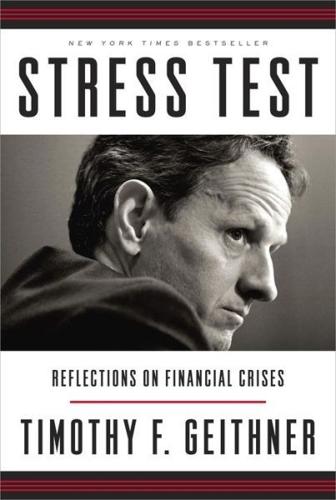
Stress Test: Reflections on Financial Crises
by
Timothy F. Geithner
Published 11 May 2014
I didn’t want to advertise our internal divisions and add to the sense of disarray. But Hawk One/Hawk Two was important. It wasn’t just about framing an arcane debate over resolving failed banks; it was about framing the larger debate about our plan. Larry and others were suggesting we were shying away from tough choices just as Japan had done after its banking crisis, setting up the United States for a Japan-style lost decade. We thought our strategy was plenty tough. After all, we intended to force big banks to raise the capital they needed whether they wanted it or not. A credible stress test would ensure that the shareholders of the banks that needed the most capital would face the most dilution.
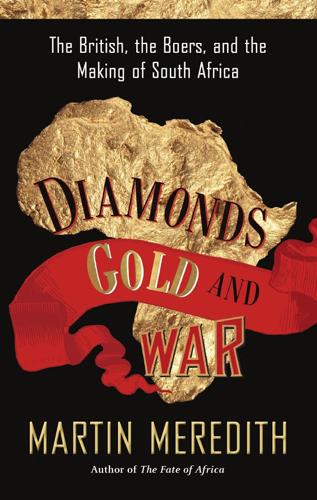
Diamonds, Gold, and War: The British, the Boers, and the Making of South Africa
by
Martin Meredith
Published 1 Jan 2007
Twelve years after the republic’s founding, the Bloemfontein journal De Tijd spelled out how vulnerable the Orange Free State’s population of 25,000 whites remained: ‘Simple people find themselves in a vast land, surrounded in all quarters by enemies, without judges, without soldiers, without money, divided through ignorance and derided by a Colony adjacent to it [the Cape].’ The Cape Colony itself was in dire straits. During the 1860s, it was afflicted by drought, locusts, a slump in wine exports, a fall in the price of wool and a banking crisis. Railway-building ground to a halt seventy miles from Cape Town for lack of money. In Natal, the small white population lived in constant fear of the possibility of an uprising of the local Nguni population or an invasion from Zululand on the other side of the Tugela River. In general, the two southern African colonies were regarded as among the most troublesome, expensive and unprofitable possessions of the British empire.

Aftershocks: Pandemic Politics and the End of the Old International Order
by
Colin Kahl
and
Thomas Wright
Published 23 Aug 2021
The assassination of Archduke Franz Ferdinand in 1914 set off a global war because Europe was a geopolitical tinderbox. The assassination of John F. Kennedy in 1963 did not, perhaps because the United States and the Soviet Union had already been to the brink and back over the Cuban missile crisis a year earlier. The great crash and banking crisis of 1929–33 occurred at a time when economists and political leaders fundamentally misunderstood financial crises and favored policy responses that made matters worse. In 2008–9, the policymakers at the helm had studied the Great Depression and drawn the right lessons from it. In other words, context is everything.
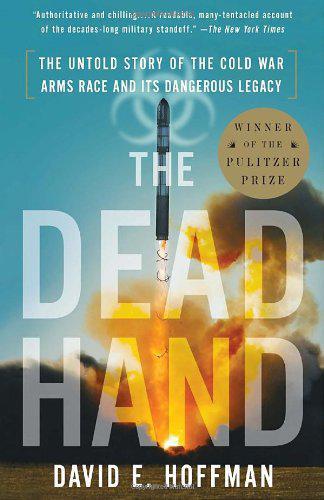
The Dead Hand: The Untold Story of the Cold War Arms Race and Its Dangerous Legacy
by
David Hoffman
Published 1 Jan 2009
Then the chicken feed business collapsed. "It ended very suddenly because these farms had no money to feed chickens at all," he said. "There was no sense adding anything to the chicken feed, because there was no money. It was a time of financial crisis, cash was in short supply, nobody paid anybody. There was a bank crisis and no honest business had a chance to survive. The cooperatives and those poultry farms went bankrupt simply because there was no means to pay, and no means to get a profit." Popov and his wife, Taissia, were desperate. "I realized that all my efforts were fruitless," he said, "and I saw no future for myself."

The Last Spike: The Great Railway, 1881-1885
by
Pierre Berton
Published 1 Jan 1971
“I am doing my best to keep the Bank [of Montreal] quiet,” he told him two days before Christmas, “… but our wants are great and constant and not very easily supplied. Smithers [the president] knows very well that I would not allow the bank to lose a cent by the CPR SO long as I could pay the money myself, and that feeling helps us not a little just now.” A bank crisis was not inconceivable. Stephen himself feared that if the heavy advances to the railroad, made without adequate security, became known to the public, there would be a run on the Bank of Montreal. The bank’s chief executive officers were in a state of terror. Tupper privately told them that they must advance the railway the money it needed; the government stood right behind the company and would guarantee payment.
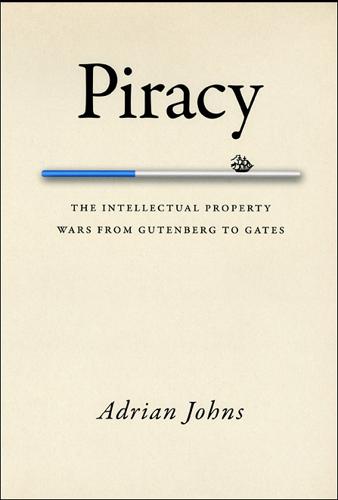
Piracy : The Intellectual Property Wars from Gutenberg to Gates
by
Adrian Johns
Published 5 Jan 2010
Issued on newsprint, and initially forming supplements to actual newspapers, these organs took the republic of piracy to its logical conclusion by abandoning the book altogether. Their raison d’être was to take advantage of preferential postage rates to reach enormous readerships. They first arrived on the scene in 1839, when another banking crisis had precipitated a depression in the publishing world. Commitments to courtesy threatened to dissolve under the strain, while Carey responded by withdrawing from the reprint business altogether to concentrate on science and medicine. The best known of the story papers that now appeared were Brother Jonathan and The New World, both edited by the partnership of Park Benjamin and Rufus Griswold.

Money Changes Everything: How Finance Made Civilization Possible
by
William N. Goetzmann
Published 11 Apr 2016
A key calculation the committee suggests is the measure of the amount of loss a bank can expect to incur in a given year. The fundamental tool used to give regulators confidence in the expected loss calculation is Jacob Bernoulli’s law of large numbers. As the world tried to harmonize its rules to prevent the next global banking crisis, its tools—indeed its very way of conceptualizing the problem—owe a huge debt to the probability calculus of Jacob Bernoulli and the many other probabilists of his era who saw how to turn games of chance into a framework for analyzing risk. ANNUITIES AND REVOLUTION Around the turn of the seventeenth century, the gaunt figure of Abraham de Moivre seated in the bowed glass window of Slaughter’s Coffeehouse in St.
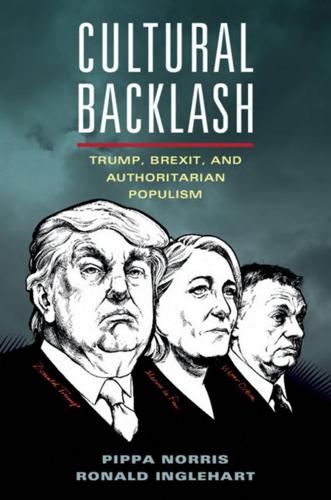
Cultural Backlash: Trump, Brexit, and Authoritarian Populism
by
Pippa Norris
and
Ronald Inglehart
Published 31 Dec 2018
But it became a top priority with the influx of refugees, asylum seekers, and economic migrants from war-torn Syria, Afghanistan, Iraq, Somalia, and South Sudan.25 Concern peaked after Angela Merkel decided to open Germany’s borders to one million refugees and asylum seekers between autumn 2015 and spring 2016.26 This decision sent shockwaves across the EU, with Greece and Italy receiving boatloads of refugees fleeing across the Mediterranean and Austria, Bulgaria, Croatia, and Hungary suddenly dealing with border chaos at their frontiers along the Balkan route for entry. These developments exacerbated social tensions; the Eurobarometer tracks public opinion about the two most important problems facing each country. As Figure 6.5 shows, the effects of the US housing and banking crisis in 2007 triggered economic recession across the Atlantic, with European concern about unemployment rising sharply from mid- 2008 until mid-2010, before eventually falling again in 2013. Within the EU, public concern about immigration had been lower than worries about unemployment, but the importance of the immigration issue rose steadily in Europe from mid-2013 until peaking in late 2015, matching levels of concern about unemployment, before declining slightly.

Lonely Planet Iceland
by
Lonely Planet
General Secretary Mikhail Gorbachev and President Ronald Reagan agree to meet at a summit in Höfði House, Reykjavík. 2006 The controversial US military base at Keflavík closes down after 45 years in service; the government also approves the resumption of commercial whaling. 2008 The worldwide financial downturn hits Iceland particularly hard, precipitating the worst national banking crisis ever when all three of the country’s major banks collapse. 2009 Iceland formally applies for EU membership – a contentious issue among the population. Formal accession talks begin in 2010, are suspended in 2013, and the application withdrawn by a new government in 2014. 2010 The volcano under Eyjafjallajökull glacier begins erupting in March.
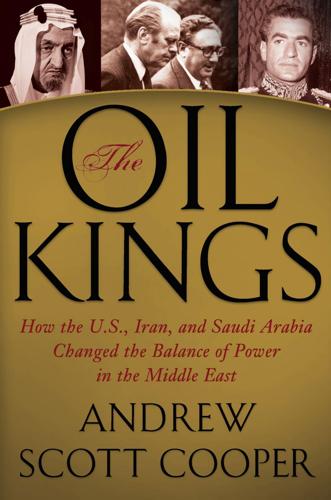
The Oil Kings: How the U.S., Iran, and Saudi Arabia Changed the Balance of Power in the Middle East
by
Andrew Scott Cooper
Published 8 Aug 2011
Ford’s national security team assumed that the majority of OPEC members, starting with Iran, favored a price increase at Doha of between 10 and 20 percent. The president’s men faced a delicate balancing act. The country was headed into the final stretch of a presidential election campaign. Speculation about a possible banking crisis had not yet spilled over into the mainstream press. Their efforts to apply pressure to the oil producers had to be kept quiet to avoid triggering public panic and a contagion of fear that might lead to the very crisis of confidence in the banks they wanted to avoid. The NSC decided to focus its efforts on three countries: Saudi Arabia, Iran, and Venezuela.
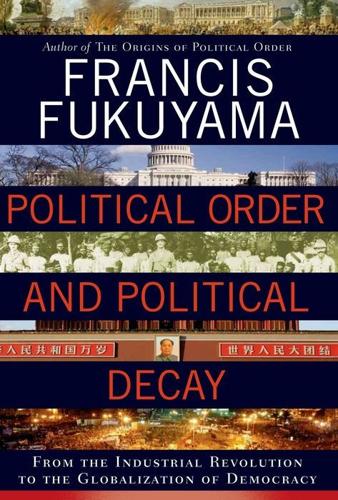
Political Order and Political Decay: From the Industrial Revolution to the Globalization of Democracy
by
Francis Fukuyama
Published 29 Sep 2014
Why this is so requires a more detailed account of their specific historical paths and other factors that explain why reform coalitions failed to materialize. 6 THE BIRTHPLACE OF DEMOCRACY How Greece and Italy came to be at the center of the European financial crisis; Greece and southern Italy as low-trust societies; the consequences of early democratization in Greece; how clientelism deepened in Greece despite modernization Beginning in late 2009 and steadily intensifying thereafter, the European Union was shaken by a financial crisis that has threatened the future of the euro as a currency and the EU as an institutional framework for promoting peace and economic growth. At the center of the crisis lay the inability of certain EU countries, in particular Greece and Italy, to repay the sizable sovereign debt they had accumulated in the previous decade. The sovereign debt crisis quickly evolved into a banking crisis for Europe as a whole, as the viability of the financial institutions holding this debt was called into question. I will return to an analysis of the problems of democratic government in Europe in Part IV of this book, and the failures of institutions at both a national and an EU-wide level to deal with economic management.

Gnomon
by
Nick Harkaway
Published 18 Oct 2017
I call each of my other clients, one by one, and I warn them of what’s about to happen so that they can move their other money around, find shelter from the storm. * The news breaks an hour later. I’m listening to the radio, which not many people do any more but I do. The whole thing happens slowly and calmly, as if we were all just waiting for this moment. Another banking crisis? Feh. Who cares? How much worse can it get? We knew that the British housing bubble was unsustainable, again. We knew that food bonds were a shitty idea, again. We knew that the Chinese were propping up the dollar and couldn’t do it for ever, that the renminbi was still unnaturally restrained, that Congress was screwing with the debt ceiling, again.

Fall Out: A Year of Political Mayhem
by
Tim Shipman
Published 30 Nov 2017
We want people to live richer lives • But we want a richer Britain for the many, not the few Labour’s election strapline Labour – for the many, not the few Tory attack on us Core attack – Corbyn would bankrupt Britain Secondary attacks: • Spectre of the SNP • Divided on leadership and Brexit • Weak and extremist Trust on the economy Real challenge among older voters: • Legacy of 2008 banking crisis – may have been global but it was on Labour’s watch • Legacy of 2010 – ‘there is no money’ • Confusion over debt for investment and the deficit Tories are the real extremists • Failed to clear the deficit to give tax handouts to richest • Driven more and more into poverty and low pay • Auctioned off industries and outsourced services • Let infrastructure crumble and failed to upgrade economy • Pushed our NHS into crisis – leaving people on trolleys in corridors Labour – key targets include • Low and middle income voters • Older voters and pensioners • Young people and students • Ethnic minorities • Self-employed and small business owners • People with disabilities and carers • WASPI women • Public service professionals Campaign issues • Push for head-to-head TV debates • Offensive and defensive seats • Manifesto launch and policy blitz • May 4 elections significance – change polling narrative • Fundraising – online £150,000 in six hours Illustrations Fiona Hill and Nick Timothy sitting on a sofa (Andrew Parsons/i-Images) Hill sticking her tongue out (Ben Cawthra/London News Pictures) Nick Timothy outside the Conservative Party HQ (Chris J.
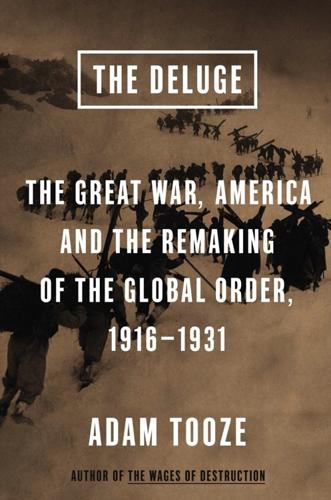
The Deluge: The Great War, America and the Remaking of the Global Order, 1916-1931
by
Adam Tooze
Published 13 Nov 2014
Reminiscent of pre-war terms, it was dubbed the ‘national humiliation loan’.15 No less clearly, the loan marked the definitive shift in Japan’s source of finance from London to New York.16 Three years later the general move toward gold-standard restoration took Japan once more back to the pre-war rate only for disaster to strike again, this time in the form of a major banking crisis that forced the closure of three dozen banks. In 1927, with the currency trading at a comfortable discount to its pre-war parity, the new expansively minded Seiyukai government decided to suspend any further attempt toward a gold-standard return so that it might concentrate on the growing Nationalist challenge in China.
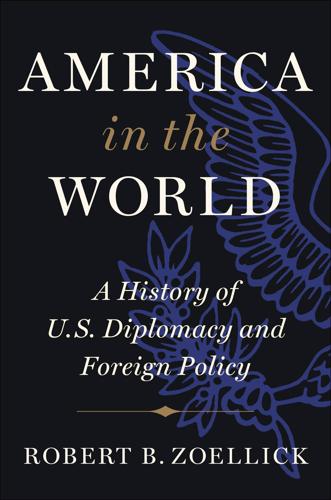
America in the World: A History of U.S. Diplomacy and Foreign Policy
by
Robert B. Zoellick
Published 3 Aug 2020
Smoot-Hawley: Protectionism and Breakdown Nevertheless, the domestic political pressure to protect farmers led to Congress’s greatest blow to the fragile international economy: the Smoot-Hawley bill, the Tariff Act of 1930. The Smoot-Hawley bill listed individual duties for almost 3,300 products. Everyone joined in a frenzy of the “old and worst type of logrolling.” As the crash of October 1929 spread into a banking crisis and Depression, Congress added even higher protections. Though 1,028 economists urged President Hoover to reject the bill, he signed it anyway on June 17, 1930.24 The vast majority of economists now believe that monetary and financial factors were the primary causes of the depth and length of the Great Depression.
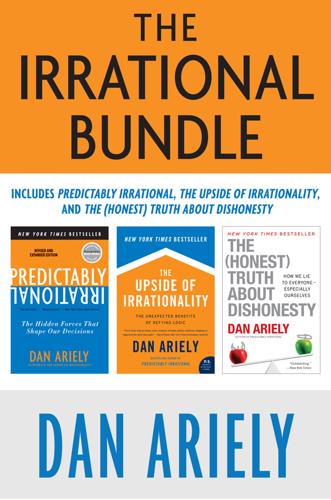
The Irrational Bundle
by
Dan Ariely
Published 3 Apr 2013
And that mistrust, like a pebble dropped into a still pond, ripples throughout the telecommunications industry; creating tiny waves that end up affecting business and society as a whole. But the second, more important moral—one that we are just beginning to understand—is that trust, once eroded, is very hard to restore. One only has to think about the banking crisis of 2008 that left the U.S. economy in tears. The multiple bailouts and new regulations that followed did little to heal the broken trust, and the behavior of Wall Street executives only ground salt into the wounds. I am unsure why trust as an important public resource was ignored, but it is clear to me that its loss will have long-term negative consequences for everyone involved, and that repairing the public trust will take a very long time.
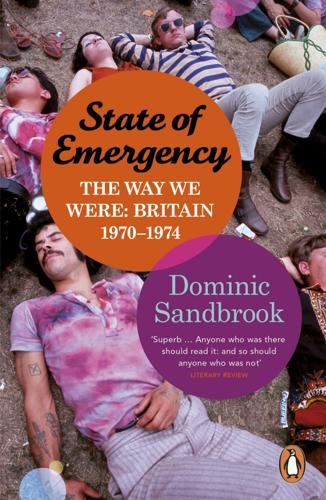
State of Emergency: The Way We Were
by
Dominic Sandbrook
Published 29 Sep 2010
As luck would have it, it was known as ‘Thorpe’s bank’, after the charismatic Liberal leader, a non-executive director. But even Thorpe’s famous suavity could not withstand the news that, on the last day of November, London & County was on the brink of collapse, stretched to the limit by plummeting shares and massive liabilities. The age of the City buccaneers was over. The secondary banking crisis had begun.39 Throughout the late summer of 1973, Edward Heath’s poll ratings remained becalmed. Recent by-election results had been dreadful, with the government losing Rochdale in October 1972, Sutton and Cheam in December 1972, and both Ripon and the Isle of Ely in July 1973, all to Thorpe’s resurgent Liberals, who had come from nowhere to become the political sensation of the moment.

The Quest: Energy, Security, and the Remaking of the Modern World
by
Daniel Yergin
Published 14 May 2011
For his part, Chávez would come to see himself as Castro’s legatee in the Hemisphere, but different in one crucial aspect—a Castro who would be bolstered with tens of billions of dollars of oil revenues. LA APERTURA Meanwhile, things had gotten worse for Venezuela’s economy, leading to a severe banking crisis. By the middle 1990s, it was clear that Venezuela urgently needed to increase its oil revenues to cope with the country’s problems. Since world petroleum prices were not going up, the only way to raise additional revenues was to increase the number of barrels that Venezuela produced. The new president of PDVSA, a petroleum engineer named Luis Giusti, embarked on a campaign to rapidly step up investment and output.
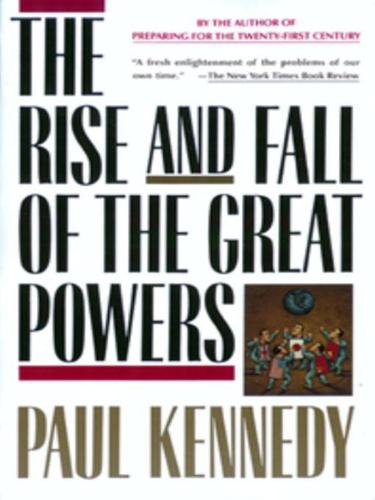
The Rise and Fall of the Great Powers: Economic Change and Military Conflict From 1500 to 2000
by
Paul Kennedy
Published 15 Jan 1989
With no central bank able to control the financial markets, with a stupendous seasonal outflow and inflow of funds between New York and the prairie states conditioned solely by the grain harvest and that by a volatile climate, and with speculators able to derange not merely the domestic monetary system but also the frequent calls upon gold in London, the United States in the years before 1914 was already becoming a vast but unpredictable bellows, fanning but also on occasions dramatically cooling the world’s trading system. The American banking crisis of 1907 (originally provoked by an attempt by speculators to corner the market in copper), with consequent impacts on London, Amsterdam, and Hamburg, was merely one example of the way the United States was impinging upon the economic life of the other Great Powers, even before the First World War.164 This growth of American industrial power and overseas trade was accompanied, perhaps inevitably, by a more assertive diplomacy and by an American-style rhetoric of Weltpolitik.165 Claims to a special moral endowment among the peoples of the earth which made American foreign policy superior to those of the Old World were intermingled with Social Darwinistic and racial arguments, and with the urging of industrial and agricultural pressure groups for secure overseas markets.

Debt of Honor
by
Tom Clancy
Published 2 Jan 1994
The neighbors get so scared that they hold on to their money—why spend it when they might need it to eat when they lose their jobs, right? And on, and on, and on. We have a real problem here, guys," Jack concluded. "Monday morning the bankers are going to find out that they don't know what they have, either. The banking crisis didn't really start until 1932, well after the stock market came unglued. Not this time." "How bad?" The President asked this question. "I don't know," Fiedler replied. "It's never happened before." " 'I don't know' doesn't cut it, Buzz," Durling said. "Would you prefer a lie?" the Secretary of the Treasury asked.

Post Wall: Rebuilding the World After 1989
by
Kristina Spohr
Published 23 Sep 2019
‘Let me put it plainly: I have served in Asia personally in time of war and in time of peace … Our role and our purpose as a Pacific power will remain constant … We will remain engaged.’ See Michel Wines ‘Bush Assures Australians of His Support’ NYT 2.1.1992. On Japan’s economic problems, see Mariko Fujii and Masahiro Kawa ‘Lessons from Japan’s Banking Crisis, 1991–2005’ ADBI (Asian Development Bank Institute) Working Paper Series no. 222 (June 2010) pp. 2–3; Mitsuhiro Fukao ‘Financial Crisis and Long-term Stagnation in Japan: Fiscal Consolidation under Deflationary Pressures’ Paper for New York University Workshop 7–8.10.2010 pp. 1–23. On the US perspective, see Steven R.
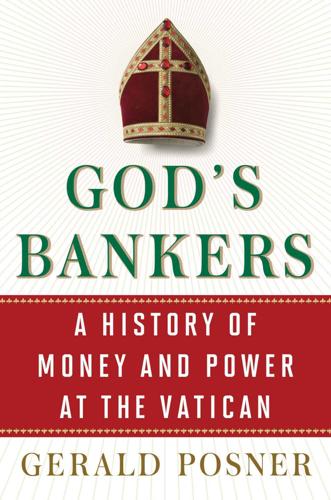
God's Bankers: A History of Money and Power at the Vatican
by
Gerald Posner
Published 3 Feb 2015
The first in a series of defaults began in mid-July on a Midland Bank $40 million loan to Luxembourg’s Banco Ambrosiano Holdings.26 That caused a chain reaction of cross-defaults with dozens of other banks.27 Later that same day the Bahamian government suspended the banking license of the Ambrosiano Overseas and began an official investigation.28 Eventually, the so-called Gang of 88, the creditor banks to Banco Ambrosiano Holdings, demanded payments of upward of $500 million in bad loans just from that single Calvi offshore subsidiary.29 The Bank of Italy resisted calls to bail out the Ambrosiano’s foreign subsidiaries, even though there were fears it might devolve into an international banking crisis. Instead, on August 6, the Treasury Minister shuttered the Ambrosiano, making the $1.4 billion dollar failure the largest in the country’s history.30 As Marcinkus and the IOR prepared for what they knew would be intense scrutiny, pressure built about P2 and Sindona. After executing another search warrant, prosecutors found evidence the Masons had been planning a coup.31 Was it possible that Marcinkus, so closely involved with top P2 members, knew nothing about it?

Andrew Carnegie
by
David Nasaw
Published 15 Nov 2007
Andra was, it was clear, the first in a long line of Carnegies who was not going to be raised to the loom.26 Margaret Carnegie thought again about leaving Scotland in 1842, but was dissuaded as she had been two years before by a letter from her sister. America was, Aunt Aitkin wrote from Allegheny City, still in the throes of the banking crisis that had led to a dearth of hard currency. “You can scarcely form any idea of the state of money matters in this country for some time past; indeed I may say ever since we came, things have been getting worse and worse in as much, that at present, you cannot get a dollar changed unless by taking more than the half in merchandise….

Lonely Planet Ireland
by
Lonely Planet
They resolve their primary issues. 2008 The Irish banking system is declared virtually bankrupt following the collapse of American global financial services firm Lehman Bros; Ireland is on the brink of economic disaster as the extent of the crisis is revealed. 2010 Ireland receives €85-billion bailout package from the International Monetary Fund (IMF) and the EU, which alleviates the banking crisis but leaves the country in strict financial shackles. 2011 Queen Elizabeth II is the first British monarch to visit the Republic of Ireland; the visit is heralded as a resounding affirmation of the close ties between the two nations. 2013 Ireland becomes the first stricken eurozone country to successfully exit the terms of the bailout. 2015 Ireland becomes the first country in the world to introduce marriage equality for same-sex couples by plebiscite. 2017 Leo Varadkar, the gay son of an Indian immigrant, becomes Taoiseach (Republic of Ireland prime minister); he is the fourth openly gay leader in European history.

Lonely Planet France
by
Lonely Planet Publications
Published 31 Mar 2013
Dynamic, ambitious and media-savvy, the former interior minister and chairman of centre-right party UMP wooed voters with policies about job creation, lower taxes, crime crackdown and help for France’s substantial immigrant population – issues that had particular pulling power coming from the son of a Hungarian immigrant father and Greek Jewish-French mother. However, his first few months in office were dominated by personal affairs as he divorced his wife Cecilia and wed Italian multimillionaire singer Carla Bruni a few months later, and his popularity plummeted. Unemployment leapfrogged from 8.7% in 2007, to 7.6% during the 2008 global banking crisis (when the government injected €10.5 billion into France’s six major banks), to 10% in 2010. Sarkozy’s party received a battering in the 2010 regional elections which saw the left scoop 54% of votes and control of 21 out of 22 regions on mainland France and Corsica. Government popularity hit an all-time low.

The Rough Guide to South America on a Budget (Travel Guide eBook)
by
Rough Guides
Published 1 Jan 2019
He emphasizes human rights and dies in a mysterious plane crash two years later. 1996 Self-styled loco (crazy) Abdalá Bucharam wins the presidency but quickly becomes engulfed in corruption scandals. Protests lead to his ouster by Congress, ushering in a decade of instability. 1998 After a brief war, President Jamil Mahuad and Peruvian President Fujimori sign a peace treaty, which ends the long-running border dispute. 2000 A bank crisis and hyperinflation leads Mahuad to move to replace the sucre with the dollar. He is ousted in a coup but his successor Vice President Gustavo Noboa presses ahead with dollarization. 2002 Former coup leader Lucio Gutiérrez wins the presidency but is toppled in 2005 after infuriating his left-wing base with neo-liberal policies and attempts to increase presidential powers. 2007 Rafael Correa becomes Ecuador’s seventh president in ten years.